Tax Briefs 
Five tax implications of divorce

Are you in the early stages of divorce? In addition to the tough personal issues that you’re dealing with, several tax concerns need to be addressed to ensure that taxes are kept to a minimum and that important tax-related decisions are properly made. Here are five issues to consider if you’re in the process of getting a divorce.
- Alimony or support payments. For alimony under divorce or separation agreements that are executed after 2018, there’s no deduction for alimony and separation support payments for the spouse making them. And the alimony payments aren’t included in the gross income of the spouse receiving them. (The rules are different for divorce or separation agreements executed before 2019.)
- Child support. No matter when the divorce or separation instrument is executed, child support payments aren’t deductible by the paying spouse (or taxable to the recipient).
- Personal residence. In general, if a married couple sells their home in connection with a divorce or legal separation, they should be able to avoid tax on up to $500,000 of gain (as long as they’ve owned and used the residence as their principal residence for two of the previous five years). If one spouse continues to live in the home and the other moves out (but they both remain owners of the home), they may still be able to avoid gain on the future sale of the home (up to $250,000 each), but special language may have to be included in the divorce decree or separation agreement to protect this tax exclusion for the spouse who moves out.
If the couple doesn’t meet the two-year ownership and use tests, any gain from the sale may qualify for a reduced exclusion due to unforeseen circumstances. - Pension benefits. A spouse’s pension benefits are often part of a divorce property settlement. In these cases, the commonly preferred method to handle the benefits is to get a “qualified domestic relations order” (QDRO). This gives one spouse the right to share in the pension benefits of the other and taxes the spouse who receives the benefits. Without a QDRO the spouse who earned the benefits will still be taxed on them even though they’re paid out to the other spouse.
- Business interests. If certain types of business interests are transferred in connection with divorce, care should be taken to make sure “tax attributes” aren’t forfeited. For example, interests in S corporations may result in “suspended” losses (losses that are carried into future years instead of being deducted in the year they’re incurred). When these interests change hands in a divorce, the suspended losses may be forfeited. If a partnership interest is transferred, a variety of more complex issues may arise involving partners’ shares of partnership debt, capital accounts, built-in gains on contributed property, and other complex issues.
A variety of other issues
These are just some of the issues you may have to deal with if you’re getting a divorce. In addition, you must decide how to file your tax return (single, married filing jointly, married filing separately or head of household). You may need to adjust your income tax withholding and you should notify the IRS of any new address or name change. There are also estate planning considerations. We can help you work through all of the financial issues involved in divorce.
Businesses will soon be able to deduct more under the standard mileage rate

Business owners are aware that the price of gas is historically high, which has made their vehicle costs soar. The average nationwide price of a gallon of unleaded regular gas on June 17 was $5, compared with $3.08 a year earlier, according to the AAA Gas Prices website. A gallon of diesel averaged $5.78 a gallon, compared with $3.21 a year earlier.
Fortunately, the IRS is providing some relief. The tax agency announced an increase in the optional standard mileage rate for the last six months of 2022. Taxpayers may use the optional cents-per-mile rate to calculate the deductible costs of operating a vehicle for business.
For the second half of 2022 (July 1–December 31), the standard mileage rate for business travel will be 62.5 cents per mile, up from 58.5 cents per mile for the first half of the year (January 1–June 30). There are different standard mileage rates for charitable and medical driving.
Special situation
Raising the standard mileage rate in the middle of the year is unusual. Normally, the IRS updates the mileage rates once a year at the end of the year for the next calendar year. However, the tax agency explained that “in recognition of recent gasoline price increases, the IRS made this special adjustment for the final months of 2022.” But while the move is uncommon, it’s not without precedent. The standard mileage rate was increased for the last six months of 2011 and 2008 after gas prices rose significantly.
While fuel costs are a significant factor in the mileage figure, the IRS notes that “other items enter into the calculation of mileage rates, such as depreciation and insurance and other fixed and variable costs.”
Two options
The optional standard mileage rate is one of two methods a business can use to compute the deductible costs of operating an automobile for business puroses. Taxpayers also have the option of calculating the actual costs of using their vehicles rather than using the standard mileage rate. This may include expenses such as gas, oil, tires, insurance, repairs, licenses, vehicle registration fees and a depreciation allowance for the vehicle.
From a tax standpoint, you may get a larger deduction by tracking the actual expense method than you would with the standard mileage rate. But many taxpayers don’t want to spend time tracking actual costs. Be aware that there are rules that may prevent you from using one method or the other. For example, if a business wants to use the standard mileage rate for a car it leases, the business must use this rate for the entire lease period. Consult with us about your particular circumstances to determine the best course of action.
Simple ways to make strategic planning a reality

Every business wants to engage in strategic planning that will better position the company to sell more to current customers — and perhaps expand into new markets. Yet the term “strategic planning” is so broad. It’s easy to get overwhelmed by all the possible directions you could go in and have a hard time choosing a path. Here are a few simple ways to make strategic planning a reality.
Focus on who you already know
One cost-effective strategy is to work more closely with current customers by strengthening and expanding those relationships. After all, they’re presumably satisfied with the products or services you’re currently offering, so they’re likely willing to try others. Ask about their needs, listen to their responses and look for ways to better serve them and boost revenue.
Another strategy is to partner with other compatible businesses, perhaps locally or in your industry. You might not be able to produce certain complementary products or services, but you could team up with another company that can and, together, both businesses could see their bottom lines grow.
Dig deeper into social media
By now, most companies have dipped their respective and figurative toes into social media. These online platforms can be a cost-effective way to highlight specific products or services, as well as to familiarize the buying public with your brand and culture. Of course, you’ve got to handle social media promotions carefully — customers tend to be turned off by a barrage of posts that basically shout, “Buy this!”
Nonetheless, digging deeper into the use and analytics of social media can play a viable role in a broader strategic plan. Many experts recommend alternating posts that focus on specific products or services with those providing helpful, informative content to followers. For example, a cybersecurity firm might offer tips on staying safe online.
Reevaluate your pricing strategy
Although increasing prices might boost revenue if sales remain steady, scattershot price jumps can prompt customers to go elsewhere. That’s why a critical component to any strategic plan must be designing a pricing strategy that boosts revenue without simply slapping on a higher price tag.
One option is bundling products or services and then offering the bundle at a lower price than what customers would pay in total for each item individually. Customers enjoy the savings while the company boosts sales, often with minimal additional effort.
Another way might be to offer a subscription service. Customers get uninterrupted access to the products or services they need, and the business establishes an ongoing revenue source.
Don’t hesitate
A good strategic plan first addresses broad objectives and then narrows down to specific steps. The next time you and your leadership team get stuck, don’t hesitate to back up and look at some big picture issues. Let us assist you in assessing the profitability impact of any of the strategic planning ideas you come up with.
Caring for an elderly relative? You may be eligible for tax breaks

Taking care of an elderly parent or grandparent may provide more than just personal satisfaction. You could also be eligible for tax breaks. Here’s a rundown of some of them.
1. Medical expenses. If the individual qualifies as your “medical dependent,” and you itemize deductions on your tax return, you can include any medical expenses you incur for the individual along with your own when determining your medical deduction. The test for determining whether an individual qualifies as your “medical dependent” is less stringent than that used to determine whether an individual is your “dependent,” which is discussed below. In general, an individual qualifies as a medical dependent if you provide over 50% of his or her support, including medical costs.
However, bear in mind that medical expenses are deductible only to the extent they exceed 7.5% of your adjusted gross income (AGI).
The costs of qualified long-term care services required by a chronically ill individual and eligible long-term care insurance premiums are included in the definition of deductible medical expenses. There’s an annual cap on the amount of premiums that can be deducted. The cap is based on age, going as high as $5,640 for 2022 for an individual over 70.
2. Filing status. If you aren’t married, you may qualify for “head of household” status by virtue of the individual you’re caring for. You can claim this status if:
- The person you’re caring for lives in your household,
- You cover more than half the household costs,
- The person qualifies as your “dependent,” and
- The person is a relative.
If the person you’re caring for is your parent, the person doesn’t need to live with you, so long as you provide more than half of the person’s household costs and the person qualifies as your dependent. A head of household has a higher standard deduction and lower tax rates than a single filer.
3. Tests for determining whether your loved one is a “dependent.” Dependency exemptions are suspended (or disallowed) for 2018–2025. Even though the dependency exemption is currently suspended, the dependency tests still apply when it comes to determining whether a taxpayer is entitled to various other tax benefits, such as head-of-household filing status.
For an individual to qualify as your “dependent,” the following must be true for the tax year at issue:
- You must provide more than 50% of the individual’s support costs,
- The individual must either live with you or be related,
- The individual must not have gross income in excess of an inflation-adjusted exemption amount,
- The individual can’t file a joint return for the year, and
- The individual must be a U.S. citizen or a resident of the U.S., Canada or Mexico.
4. Dependent care credit. If the cared-for individual qualifies as your dependent, lives with you, and physically or mentally can’t take care of him- or herself, you may qualify for the dependent care credit for costs you incur for the individual’s care to enable you and your spouse to go to work.
Contact us if you’d like to further discuss the tax aspects of financially supporting and caring for an elderly relative.
Valuable gifts to charity may require an appraisal

If you donate valuable items to charity, you may be required to get an appraisal. The IRS requires donors and charitable organizations to supply certain information to prove their right to deduct charitable contributions. If you donate an item of property (or a group of similar items) worth more than $5,000, certain appraisal requirements apply. You must:
- Get a “qualified appraisal,”
- Receive the qualified appraisal before your tax return is due,
- Attach an “appraisal summary” to the first tax return on which the deduction is claimed,
- Include other information with the return, and
- Maintain certain records.
Keep these definitions in mind. A qualified appraisal is a complex and detailed document. It must be prepared and signed by a qualified appraiser. An appraisal summary is a summary of a qualified appraisal made on Form 8283 and attached to the donor’s return.
While courts have allowed taxpayers some latitude in meeting the “qualified appraisal” rules, you should aim for exact compliance.
The qualified appraisal isn’t submitted separately to the IRS in most cases. Instead, the appraisal summary, which is a separate statement prepared on an IRS form, is attached to the donor’s tax return. However, a copy of the appraisal must be attached for gifts of art valued at $20,000 or more and for all gifts of property valued at more than $500,000, other than inventory, publicly traded stock and intellectual property. If an item has been appraised at $50,000 or more, you can ask the IRS to issue a “Statement of Value” that can be used to substantiate the value.
Failure to comply with the requirements
The penalty for failing to get a qualified appraisal and attach an appraisal summary to the return is denial of the charitable deduction. The deduction may be lost even if the property was valued correctly. There may be relief if the failure was due to reasonable cause.
Exceptions to the requirement
A qualified appraisal isn’t required for contributions of:
- A car, boat or airplane for which the deduction is limited to the charity’s gross sales proceeds,
- stock in trade, inventory or property held primarily for sale to customers in the ordinary course of business,
- publicly traded securities for which market quotations are “readily available,” and
- qualified intellectual property, such as a patent.
Also, only a partially completed appraisal summary must be attached to the tax return for contributions of:
- Nonpublicly traded stock for which the claimed deduction is greater than $5,000 and doesn’t exceed $10,000, and
- Publicly traded securities for which market quotations aren’t “readily available.”
More than one gift
If you make gifts of two or more items during a tax year, even to multiple charitable organizations, the claimed values of all property of the same category or type (such as stamps, paintings, books, stock that isn’t publicly traded, land, jewelry, furniture or toys) are added together in determining whether the $5,000 or $10,000 limits are exceeded.
The bottom line is you must be careful to comply with the appraisal requirements or risk disallowance of your charitable deduction. Contact us if you have any further questions or want to discuss your contribution planning.
The tax mechanics involved in the sale of trade or business property

What are the tax consequences of selling property used in your trade or business?
There are many rules that can potentially apply to the sale of business property. Thus, to simplify discussion, let’s assume that the property you want to sell is land or depreciable property used in your business, and has been held by you for more than a year. (There are different rules for property held primarily for sale to customers in the ordinary course of business; intellectual property; low-income housing; property that involves farming or livestock; and other types of property.)
General rules
Under the Internal Revenue Code, your gains and losses from sales of business property are netted against each other. The net gain or loss qualifies for tax treatment as follows:
1) If the netting of gains and losses results in a net gain, then long-term capital gain treatment results, subject to “recapture” rules discussed below. Long-term capital gain treatment is generally more favorable than ordinary income treatment.
2) If the netting of gains and losses results in a net loss, that loss is fully deductible against ordinary income (in other words, none of the rules that limit the deductibility of capital losses apply).
Recapture rules
The availability of long-term capital gain treatment for business property net gain is limited by “recapture” rules — that is, rules under which amounts are treated as ordinary income rather than capital gain because of previous ordinary loss or deduction treatment for these amounts.
There’s a special recapture rule that applies only to business property. Under this rule, to the extent you’ve had a business property net loss within the previous five years, any business property net gain is treated as ordinary income instead of as long-term capital gain.
Section 1245 Property
“Section 1245 Property” consists of all depreciable personal property, whether tangible or intangible, and certain depreciable real property (usually, real property that performs specific functions). If you sell Section 1245 Property, you must recapture your gain as ordinary income to the extent of your earlier depreciation deductions on the asset.
Section 1250 Property
“Section 1250 Property” consists, generally, of buildings and their structural components. If you sell Section 1250 Property that was placed in service after 1986, none of the long-term capital gain attributable to depreciation deductions will be subject to depreciation recapture. However, for most noncorporate taxpayers, the gain attributable to depreciation deductions, to the extent it doesn’t exceed business property net gain, will (as reduced by the business property recapture rule above) be taxed at a rate of no more than 28.8% (25% as adjusted for the 3.8% net investment income tax) rather than the maximum 23.8% rate (20% as adjusted for the 3.8% net investment income tax) that generally applies to long-term capital gains of noncorporate taxpayers.
Other rules may apply to Section 1250 Property, depending on when it was placed in service.
As you can see, even with the simplifying assumptions in this article, the tax treatment of the sale of business assets can be complex. Contact us if you’d like to determine the tax consequences of specific transactions or if you have any additional questions.
Want to turn a hobby into a business? Watch out for the tax rules

Like many people, you may have dreamed of turning a hobby into a regular business. You won’t have any tax headaches if your new business is profitable. But what if the new enterprise consistently generates losses (your deductions exceed income) and you claim them on your tax return? You can generally deduct losses for expenses incurred in a bona fide business. However, the IRS may step in and say the venture is a hobby — an activity not engaged in for profit — rather than a business. Then you’ll be unable to deduct losses.
By contrast, if the new enterprise isn’t affected by the hobby loss rules because it’s profitable, all otherwise allowable expenses are deductible on Schedule C, even if they exceed income from the enterprise.
Note: Before 2018, deductible hobby expenses had to be claimed as miscellaneous itemized deductions subject to a 2%-of-AGI “floor.” However, because miscellaneous deductions aren’t allowed from 2018 through 2025, deductible hobby expenses are effectively wiped out from 2018 through 2025.
Avoiding a hobby designation
There are two ways to avoid the hobby loss rules:
- Show a profit in at least three out of five consecutive years (two out of seven years for breeding, training, showing or racing horses).
- Run the venture in such a way as to show that you intend to turn it into a profit-maker, rather than operate it as a mere hobby. The IRS regs themselves say that the hobby loss rules won’t apply if the facts and circumstances show that you have a profit-making objective.
How can you prove you have a profit-making objective? You should run the venture in a businesslike manner. The IRS and the courts will look at the following factors:
- How you run the activity,
- Your expertise in the area (and your advisors’ expertise),
- The time and effort you expend in the enterprise,
- Whether there’s an expectation that the assets used in the activity will rise in value,
- Your success in carrying on other activities,
- Your history of income or loss in the activity,
- The amount of any occasional profits earned,
- Your financial status, and
- Whether the activity involves elements of personal pleasure or recreation.
Recent court case
In one U.S. Tax Court case, a married couple’s miniature donkey breeding activity was found to be conducted with a profit motive. The IRS had earlier determined it was a hobby and the couple was liable for taxes and penalties for the two tax years in which they claimed losses of more than $130,000. However, the court found the couple had a business plan, kept separate records and conducted the activity in a businesslike manner. The court stated they were “engaged in the breeding activity with an actual and honest objective of making a profit.” (TC Memo 2021-140)
Contact us for more details on whether a venture of yours may be affected by the hobby loss rules, and what you should do to avoid a tax challenge.
Businesses looking for outside investors need a sturdy pitch deck

Is your business ready to seek funding from outside investors? Perhaps you’re a start-up that needs money to launch as robustly as possible. Or maybe your company has been operating for a while and you want to pivot in a new direction or just take it to the next level.
Whatever the case may be, seeking outside investment isn’t as cut and dried as applying for a commercial loan. You need to wow investors with your vision, financials and business plan.
To do so, many businesses today put together a “pitch deck.” This is a digital presentation that provides a succinct, compelling description of the company, its solution to a market need, and the benefits of the investment opportunity. Here are some useful guidelines:
Keep it brief, between 10 to 12 short slides. You want to make a positive impression and whet investors’ interest without taking up too much of their time. You can follow up with additional details later.
Be concise but comprehensive. State your company’s mission (why it exists), vision (where it wants to go) and value proposition (what your product or service does for customers). Also declare upfront how much money you’d like to raise.
Identify the problem you’re solving. Explain the gap in the market that you’re addressing. Discuss it realistically and with minimal jargon, so investors can quickly grasp the challenge and intuitively agree with you.
Describe your target market. Include the market’s size, composition and forecasted growth. Resist the temptation to define the market as “everyone,” because this tends to come across as unrealistic.
Outline your business plan. That is, how will your business make money? What will you charge customers for your solution? Are you a premium provider or is this a budget-minded product or service?
Summarize your marketing and sales plans. Describe the marketing tactics you’ll employ to garner attention and interact with your customer base. Then identify your optimal sales channels and methods. If you already have a strong social media following, note that as well.
Sell your leadership team. Who are you and your fellow owners/executives? What are your educational and business backgrounds? Perhaps above everything else, investors will demand that a trustworthy crew is steering the ship.
Provide a snapshot of your financials, both past and future. But don’t just copy and paste your financial statements onto a few slides. Use aesthetically pleasing charts, graphs and other visuals to show historical results (if available), as well as forecasted sales and income for the next several years. Your profit projections should realistically flow from historical performance or at least appear feasible given expected economic and market conditions.
Identify your competitors. What other companies are addressing the problem that your product or service solves? Differentiate yourself from those businesses and explain why customers will choose your solution over theirs.
Describe how you’ll use the funds. Show investors how their investment will allow you to fulfill your stated business objectives. Be as specific as possible about where the money will go.
Ask for help. As you undertake the steps above — and before you meet with investors — contact our firm. We can help you develop a pitch deck with accurate, pertinent financial data that will capture investors’ interest and help you get the funding your business needs.
Thinking about converting your home into a rental property?

In some cases, homeowners decide to move to new residences, but keep their present homes and rent them out. If you’re thinking of doing this, you’re probably aware of the financial risks and rewards. However, you also should know that renting out your home carries potential tax benefits and pitfalls.
You’re generally treated as a regular real estate landlord once you begin renting your home. That means you must report rental income on your tax return, but also are entitled to offsetting landlord deductions for the money you spend on utilities, operating expenses, incidental repairs and maintenance (for example, fixing a leak in the roof). Additionally, you can claim depreciation deductions for the home. You can fully offset rental income with otherwise allowable landlord deductions.
Passive activity rules
However, under the passive activity loss (PAL) rules, you may not be able to currently claim the rent-related deductions that exceed your rental income unless an exception applies. Under the most widely applicable exception, the PAL rules won’t affect your converted property for a tax year in which your adjusted gross income doesn’t exceed $100,000, you actively participate in running the home-rental business, and your losses from all rental real estate activities in which you actively participate don’t exceed $25,000.
You should also be aware that potential tax pitfalls may arise from renting your residence. Unless your rentals are strictly temporary and are made necessary by adverse market conditions, you could forfeit an important tax break for home sellers if you finally sell the home at a profit. In general, you can escape tax on up to $250,000 ($500,000 for married couples filing jointly) of gain on the sale of your principal home. However, this tax-free treatment is conditioned on your having used the residence as your principal residence for at least two of the five years preceding the sale. So renting your home out for an extended time could jeopardize a big tax break.
Even if you don’t rent out your home so long as to jeopardize your principal residence exclusion, the tax break you would have gotten on the sale (the $250,000/$500,000 exclusion) won’t apply to the extent of any depreciation allowable with respect to the rental or business use of the home for periods after May 6, 1997, or to any gain allocable to a period of nonqualified use (any period during which the property isn’t used as the principal residence of the taxpayer or the taxpayer’s spouse or former spouse) after December 31, 2008. A maximum tax rate of 25% will apply to this gain (attributable to depreciation deductions).
Selling at a loss
Some homeowners who bought at the height of a market may ultimately sell at a loss someday. In such situations, the loss is available for tax purposes only if the owner can establish that the home was in fact converted permanently into income-producing property. Here, a longer lease period helps an owner. However, if you’re in this situation, be aware that you may not wind up with much of a loss for tax purposes. That’s because basis (the cost for tax purposes) is equal to the lesser of actual cost or the property’s fair market value when it’s converted to rental property. So if a home was bought for $300,000, converted to a rental when it’s worth $250,000, and ultimately sold for $225,000, the loss would be only $25,000.
The question of whether to turn a principal residence into rental property isn’t easy. Contact us to review your situation and help you make a decision.
Tax considerations when adding a new partner at your business

Adding a new partner in a partnership has several financial and legal implications. Let’s say you and your partners are planning to admit a new partner. The new partner will acquire a one-third interest in the partnership by making a cash contribution to it. Let’s further assume that your bases in your partnership interests are sufficient so that the decrease in your portions of the partnership’s liabilities because of the new partner’s entry won’t reduce your bases to zero.
Not as simple as it seems
Although the entry of a new partner appears to be a simple matter, it’s necessary to plan the new person’s entry properly in order to avoid various tax problems. Here are two issues to consider:
First, if there’s a change in the partners’ interests in unrealized receivables and substantially appreciated inventory items, the change is treated as a sale of those items, with the result that the current partners will recognize gain. For this purpose, unrealized receivables include not only accounts receivable, but also depreciation recapture and certain other ordinary income items. In order to avoid gain recognition on those items, it’s necessary that they be allocated to the current partners even after the entry of the new partner.
Second, the tax code requires that the “built-in gain or loss” on assets that were held by the partnership before the new partner was admitted be allocated to the current partners and not to the entering partner. Generally speaking, “built-in gain or loss” is the difference between the fair market value and basis of the partnership property at the time the new partner is admitted.
The most important effect of these rules is that the new partner must be allocated a portion of the depreciation equal to his share of the depreciable property based on current fair market value. This will reduce the amount of depreciation that can be taken by the current partners. The other effect is that the built-in gain or loss on the partnership assets must be allocated to the current partners when partnership assets are sold. The rules that apply here are complex and the partnership may have to adopt special accounting procedures to cope with the relevant requirements.
Keep track of your basis
When adding a partner or making other changes, a partner’s basis in his or her interest can undergo frequent adjustment. It’s imperative to keep proper track of your basis because it can have an impact in several areas: gain or loss on the sale of your interest, how partnership distributions to you are taxed and the maximum amount of partnership loss you can deduct.
Contact us if you’d like help in dealing with these issues or any other issues that may arise in connection with your partnership.
Offering summer job opportunities? Double-check child labor laws

Spring has sprung — and summer isn’t far off. If your business typically hires minors for summer jobs, now’s a good time to brush up on child labor laws.
In News Release No. 22-546-DEN, the U.S. Department of Labor’s Wage and Hour Division (WHD) recently announced that it’s stepping up efforts to identify child labor violations in the Salt Lake City area. However, the news serves as a good reminder to companies nationwide about the many details of employing children.
Finer points of the FLSA
The Department of Labor is the sole federal agency that monitors child labor and enforces child labor laws. The most sweeping federal law that restricts the employment and abuse of child workers is the Fair Labor Standards Act (FLSA). The WHD handles enforcement of the FLSA’s child labor provisions.
The FLSA restricts the hours that children under 16 years of age can work and lists hazardous occupations too dangerous for young workers to perform. Examples include jobs involving the operation of power-driven woodworking machines, and work that involves exposure to radioactive substances and ionizing radiators.
The FLSA allows children 14 to 15 years old to work outside of school hours in various manufacturing, non-mining, non-hazardous jobs under certain conditions. Permissible work hours for 14- and 15-year-olds are:
- Three hours on a school day,
- 18 hours in a school week,
- Eight hours on a non-school day,
- 40 hours in a non-school week, and
- Between 7 a.m. and 7 p.m.*
*From June 1 through Labor Day, nighttime work hours are extended to 9 p.m.
Just one example
News Release No. 22-546-DEN reveals the results of three specific investigations. In them, the WHD found that employers had allowed minors to operate dangerous machinery. Also, minors were allowed to work beyond the time permitted, during school hours, more than three hours on a school night and more than 18 hours a workweek.
In one case, a restaurant allowed minors to operate or assist in operating a trash compactor and a manual fryer, which are prohibited tasks for 14- and 15-year-old workers. The employer also allowed minors to work:
- More than three hours on a school day,
- More than 18 hours in a school week,
- Past 7 p.m. from Labor Day through May 31,
- Past 9 p.m. from June 1 through Labor Day, and
- More than eight hours on a non-school day.
The WHD assessed the business $17,159 in civil money penalties.
Letter of the law
In the news release, WHD Director Kevin Hunt states, “Early employment opportunities are meant to be valuable and safe learning experiences for young people and should never put them at risk of harm. Employers who fail to keep minor-aged workers safe and follow child labor regulations may struggle to find the young people they need to operate their businesses.”
What’s more, as the case above demonstrates, companies can incur substantial financial penalties for failing to follow the letter of the law. Consult an employment attorney for further details on the FLSA. We can help you measure and manage your hiring and payroll costs.
Once you file your tax return, consider these 3 issues

The tax filing deadline for 2021 tax returns is April 18 this year. After your 2021 tax return has been successfully filed with the IRS, there may still be some issues to bear in mind. Here are three considerations:
1. You can throw some tax records away now
You should hang onto tax records related to your return for as long as the IRS can audit your return or assess additional taxes. The statute of limitations is generally three years after you file your return. So you can generally get rid of most records related to tax returns for 2018 and earlier years. (If you filed an extension for your 2018 return, hold on to your records until at least three years from when you filed the extended return.)
However, the statute of limitations extends to six years for taxpayers who understate their gross income by more than 25%.
You should keep certain tax-related records longer. For example, keep the actual tax returns indefinitely, so you can prove to the IRS that you filed a legitimate return. (There’s no statute of limitations for an audit if you didn’t file a return or you filed a fraudulent one.)
What about your retirement account paperwork? Keep records associated with a retirement account until you’ve depleted the account and reported the last withdrawal on your tax return, plus three (or six) years. And retain records related to real estate or investments for as long as you own the asset, plus at least three years after you sell it and report the sale on your tax return. (You can keep these records for six years if you want to be extra safe.)
2. Waiting for your refund? You can check on it
The IRS has an online tool that can tell you the status of your refund. Go to irs.gov and click on “Get Your Refund Status” to find out about yours. You’ll need your Social Security number, filing status and the exact refund amount.
3. If you forgot to report something, you can file an amended return
In general, you can file an amended tax return and claim a refund within three years after the date you filed your original return or within two years of the date you paid the tax, whichever is later. So for a 2021 tax return that you file on April 15, 2022, you can generally file an amended return until April 15, 2025.
However, there are a few opportunities when you have longer to file an amended return. For example, the statute of limitations for bad debts is longer than the usual three-year time limit for most items on your tax return. In general, you can amend your tax return to claim a bad debt for seven years from the due date of the tax return for the year that the debt became worthless.
We’re here year round
If you have questions about tax record retention, your refund or filing an amended return, contact us. We’re not just available at tax filing time — we’re here all year!
Tax issues to assess when converting from a C corporation to an S corporation

Operating as an S corporation may help reduce federal employment taxes for small businesses in the right circumstances. Although S corporations may provide tax advantages over C corporations, there are some potentially costly tax issues that you should assess before making a decision to switch.
Here’s a quick rundown of the most important issues to consider when converting from a C corporation to an S corporation:
Built-in gains tax
Although S corporations generally aren’t subject to tax, those that were formerly C corporations are taxed on built-in gains (such as appreciated property) that the C corporation has when the S election becomes effective, if those gains are recognized within 5 years after the corporation becomes an S corporation. This is generally unfavorable, although there are situations where the S election still can produce a better tax result despite the built-in gains tax.
Passive income
S corporations that were formerly C corporations are subject to a special tax if their passive investment income (such as dividends, interest, rents, royalties and stock sale gains) exceeds 25% of their gross receipts, and the S corporation has accumulated earnings and profits carried over from its C corporation years. If that tax is owed for three consecutive years, the corporation’s election to be an S corporation terminates. You can avoid the tax by distributing the accumulated earnings and profits, which would be taxable to shareholders. Or you might want to avoid the tax by limiting the amount of passive income.
LIFO inventories
C corporations that use LIFO inventories have to pay tax on the benefits they derived by using LIFO if they convert to S corporations. The tax can be spread over four years. This cost must be weighed against the potential tax gains from converting to S status.
Unused losses
If your C corporation has unused net operating losses, the losses can't be used to offset its income as an S corporation and can’t be passed through to shareholders. If the losses can’t be carried back to an earlier C corporation year, it will be necessary to weigh the cost of giving up the losses against the tax savings expected to be generated by the switch to S status.
There are other factors to consider in switching from C to S status. Shareholder-employees of S corporations can’t get the full range of tax-free fringe benefits that are available with a C corporation. And there may be complications for shareholders who have outstanding loans from their qualified plans. All of these factors have to be considered to understand the full effect of converting from C to S status.
There are strategies for eliminating or minimizing some of these tax problems and for avoiding unnecessary pitfalls related to them. But a lot depends upon your company’s particular circumstances. Contact us to discuss the effect of these and other potential problems, along with possible strategies for dealing with them.
Selling mutual fund shares: What are the tax implications?

If you’re an investor in mutual funds or you’re interested in putting some money into them, you’re not alone. According to the Investment Company Institute, a survey found 58.7 million households owned mutual funds in mid-2020. But despite their popularity, the tax rules involved in selling mutual fund shares can be complex.
What are the basic tax rules?
Let’s say you sell appreciated mutual fund shares that you’ve owned for more than one year, the resulting profit will be a long-term capital gain. As such, the maximum federal income tax rate will be 20%, and you may also owe the 3.8% net investment income tax. However, most taxpayers will pay a tax rate of only 15%.
When a mutual fund investor sells shares, gain or loss is measured by the difference between the amount realized from the sale and the investor’s basis in the shares. One challenge is that certain mutual fund transactions are treated as sales even though they might not be thought of as such. Another problem may arise in determining your basis for shares sold.
When does a sale occur?
It’s obvious that a sale occurs when an investor redeems all shares in a mutual fund and receives the proceeds. Similarly, a sale occurs if an investor directs the fund to redeem the number of shares necessary for a specific dollar payout.
It’s less obvious that a sale occurs if you’re swapping funds within a fund family. For example, you surrender shares of an Income Fund for an equal value of shares of the same company’s Growth Fund. No money changes hands but this is considered a sale of the Income Fund shares.
Another example: Many mutual funds provide check-writing privileges to their investors. Although it may not seem like it, each time you write a check on your fund account, you’re making a sale of shares.
How do you determine the basis of shares?
If an investor sells all shares in a mutual fund in a single transaction, determining basis is relatively easy. Simply add the basis of all the shares (the amount of actual cash investments) including commissions or sales charges. Then, add distributions by the fund that were reinvested to acquire additional shares and subtract any distributions that represent a return of capital.
The calculation is more complex if you dispose of only part of your interest in the fund and the shares were acquired at different times for different prices. You can use one of several methods to identify the shares sold and determine your basis:
- First-in first-out. The basis of the earliest acquired shares is used as the basis for the shares sold. If the share price has been increasing over your ownership period, the older shares are likely to have a lower basis and result in more gain.
- Specific identification. At the time of sale, you specify the shares to sell. For example, “sell 100 of the 200 shares I purchased on April 1, 2018.” You must receive written confirmation of your request from the fund. This method may be used to lower the resulting tax bill by directing the sale of the shares with the highest basis.
- Average basis. The IRS permits you to use the average basis for shares that were acquired at various times and that were left on deposit with the fund or a custodian agent.
As you can see, mutual fund investing can result in complex tax situations. Contact us if you have questions. We can explain in greater detail how the rules apply to you.
AI for small to midsize businesses isn’t going away

Artificial intelligence (AI) has made great inroads into certain sectors of the U.S. economy. However, it hasn’t reached many small to midsize businesses (SMBs) in a major way … yet.
In 2021, AI analysis firm Unsupervised published a survey of 520 SMB owners that found 48% of them still found AI too cost prohibitive. Forty percent said their businesses lacked the staff expertise to use it. But the survey also found that one in five owners were implementing some form of AI, and 20% of respondents already using AI believed it had increased their profitability.
Defining the term
People sometimes confuse AI with data analytics or the application of intense mathematics. It’s so much more. AI generally refers to using computers to perform complex tasks typically thought to require human intelligence — for example, image perception, voice recognition, decision-making and problem solving.
Several types of technologies fall under the AI umbrella. One is machine learning, which applies statistical techniques to improve machines’ performance of a specific task over time with little or no programming or human intervention. Another is natural language processing, which uses algorithms to analyze unstructured human language in documents, emails, texts, conversation or otherwise. And a third is robotic process automation, which automates time-consuming repetitive manual tasks that don’t require decision-making.
Finding uses
Going back to the survey above, 28% of SMB owners said they were still determining precisely how to implement AI. The answer for your company depends on what you do and which technologies you rely on. Here are some examples of how businesses can use AI:
HR. AI software can significantly expedite the hiring process by soliciting and screening candidates. It can narrow the field and save interviewing time, freeing up HR staff to deal with other issues that require human attention. AI also might reduce the risk of discrimination claims because human subjectivity plays less of a role in the process.
Communications. Chatbots and other tools make it easier to maintain efficient and effective communications with customers and prospects. Specifically, these tools can respond to frequently asked customer service questions, allowing front-facing employees to focus on more targeted or complex issues.
Growing companies can also use AI tools to automate communications with vendors and employees. Doing so ensures the timely delivery of information and minimizes the chance of costly or embarrassing human errors.
Cybersecurity. Every company, no matter how big or small, faces the threat of hackers and ransomware schemes — and the risk has grown only more intense in recent months.
In fact, given the sheer number of cyberthreats out there, and the virtually infinite ways that cybercriminals can vary their attacks, AI is fast becoming an essential defensive tool. For example, through machine learning, AI can devise “classification algorithms” to detect spam and malware.
Proceeding with caution
AI for business — including SMBs — isn’t going away. Does this mean you should throw caution to the wind and spend exorbitantly on an AI solution today? Not at all. Like any technology initiative, an AI implementation project should involve careful research into your needs and a prudent budget. We can help you weigh the costs vs. benefits of any tech upgrades you’re considering.
Undertaking a pay equity audit at your business

Pay equity is both required by law and a sound business practice. However, providing equitable compensation to employees who perform the same or similar jobs, while accounting for differences in experience and tenure, isn’t easy. That’s why every company should at least consider undertaking a pay equity audit to assess its compensation philosophy and approach.
Legal background
The federal Equal Pay Act requires employers to provide men and women with equal pay for equal work in the same establishment. The jobs don’t need to be identical, but they should be “substantially equal.” Moreover, it’s not job titles, but job content — including skill, effort and responsibility — that determines whether jobs are substantially equal.
Many states have enacted their own equal pay laws, some of which are more stringent than the federal legislation. California, for example, requires employers to pay employees the same wage rates for “substantially similar work,” a larger umbrella than “same or similar jobs.”
Some other countries have also introduced laws around pay equity. The United Kingdom, for instance, requires some public companies to annually disclose the ratio of their chief executive officers’ pay to the lower, median and upper quartile of their employees’ pay.
In addition to helping to prevent legal woes, pay equity can offer bottom-line benefits. A company’s commitment to equitable pay can enhance its employer brand, boost employee morale and performance, and reduce the risk of negative publicity.
An involved process
The purpose of a pay equity audit is to:
- Uncover disparities in compensation,
- Identify the drivers behind them, and
- Develop ways to address the inequities.
Although the process can be quite involved, it’s typically worth the effort.
First, assemble participants from multiple departments — including HR, legal, and finance or accounting — to collect data on employee compensation, job classifications and demographics. This cross section of participants also will help ensure buy-in across the business.
The next step is determining how to group employees. That is, which ones will be considered to have substantially similar roles and, thus, should fall within the same pay range?
Some number crunching will come into play. For smaller employee groups, an analysis of, for example, differences in median pay between groups of employees might be enough to identify any unwarranted disparities. With larger groups, you may have to conduct more rigorous statistical analyses. For example, regression analysis can help control for variables, such as employees’ experience levels, when examining disparities.
Critical component
Over the past year, many workers have made it abundantly clear that they’ll leave a job if any of several employment components isn’t to their liking. Compensation is certainly one of these. Our firm can help support your efforts to conduct a pay equity audit.
It’s almost that time of year again! If you’re not ready, file for an extension

The clock is ticking down to the April 18 tax filing deadline. Sometimes, it’s not possible to gather your tax information and file by the due date. If you need more time, you should file for an extension on Form 4868.
An extension will give you until October 17 to file and allows you to avoid incurring “failure-to-file” penalties. However, it only provides extra time to file, not to pay. Whatever tax you estimate is owed must still be sent by April 18, or you’ll incur penalties — and as you’ll see below, they can be steep.
Failure to file vs. failure to pay
Separate penalties apply for failing to pay and failing to file. The failure-to-pay penalty runs at 0.5% for each month (or part of a month) the payment is late. For example, if payment is due April 18 and is made May 25, the penalty is 1% (0.5% times 2 months or partial months). The maximum penalty is 25%.
The failure-to-pay penalty is based on the amount shown as due on the return (less credits for amounts paid via withholding or estimated payments), even if the actual tax bill turns out to be higher. On the other hand, if the actual tax bill turns out to be lower, the penalty is based on the lower amount.
The failure-to-file penalty runs at the more severe rate of 5% per month (or partial month) of lateness to a maximum 25%. If you file for an extension on Form 4868, you’re not filing late unless you miss the extended due date. However, as mentioned earlier, a filing extension doesn’t apply to your responsibility for payment.
If the 0.5% failure-to-pay penalty and the failure-to-file penalty both apply, the failure-to-file penalty drops to 4.5% per month (or part) so the combined penalty is 5%. The maximum combined penalty for the first five months is 25%. Thereafter, the failure-to-pay penalty can continue at 0.5% per month for 45 more months (an additional 22.5%). Thus, the combined penalties can reach a total of 47.5% over time.
The failure-to-file penalty is also more severe because it’s based on the amount required to be shown on the return, and not just the amount shown as due. (Credit is given for amounts paid via withholding or estimated payments. If no amount is owed, there’s no penalty for late filing.) For example, if a return is filed three months late showing $5,000 owed (after payment credits), the combined penalties would be 15%, which equals $750. If the actual liability is later determined to be an additional $1,000, the failure-to-file penalty (4.5% × 3 = 13.5%) would also apply to this amount for an additional $135 in penalties.
A minimum failure-to-file penalty also applies if a return is filed more than 60 days late. This minimum penalty is the lesser of $435 (for returns due through 2022) or the amount of tax required to be shown on the return.
Reasonable cause
Both penalties may be excused by the IRS if lateness is due to “reasonable cause” such as death or serious illness in the immediate family.
Interest is assessed at a fluctuating rate announced by the government apart from and in addition to the above penalties. Furthermore, in particularly abusive situations involving a fraudulent failure to file, the late filing penalty can jump to 15% per month, with a 75% maximum.
Contact us if you have questions about IRS penalties or about filing Form 4868.
2022 Q2 tax calendar: Key deadlines for businesses and other employers

Here are some of the key tax-related deadlines that apply to businesses and other employers during the second quarter of 2022. Keep in mind that this list isn’t all-inclusive, so there may be additional deadlines that apply to you. Contact us to ensure you’re meeting all applicable deadlines and to learn more about the filing requirements.
April 18
- If you’re a calendar-year corporation, file a 2021 income tax return (Form 1120) or file for an automatic six-month extension (Form 7004) and pay any tax due.
- Corporations pay the first installment of 2022 estimated income taxes.
- For individuals, file a 2021 income tax return (Form 1040 or Form 1040-SR) or file for an automatic six-month extension (Form 4868) and paying any tax due. (See June 15 for an exception for certain taxpayers.)
- For individuals, pay the first installment of 2022 estimated taxes, if you don’t pay income tax through withholding (Form 1040-ES).
May 2
- Employers report income tax withholding and FICA taxes for the first quarter of 2022 (Form 941) and pay any tax due.
May 10
- Employers report income tax withholding and FICA taxes for the first quarter of 2022 (Form 941), if you deposited on time and fully paid all of the associated taxes due.
June 15
- Corporations pay the second installment of 2022 estimated income taxes.
ERISA and EAPs: What’s the deal?

In recent years, more and more businesses have increased efforts to support the well-being of their employees. This means not only providing health care benefits, but also offering other initiatives designed to help workers cope with challenges such as substance dependence, financial planning, legal woes and mental health issues.
Among the options usually considered is an employee assistance program (EAP). These programs typically offer a set of benefits intended to address circumstances and challenges that might adversely affect employees’ ability to work. Benefits may include short-term mental health or substance abuse counseling or referral services, as well as financial counseling and legal services.
When considering an EAP, many business owners eventually ask a common question: Will the program be subject to the Employee Retirement Income Security Act (ERISA)?
Medical care
The answer depends on how the EAP is structured and what benefits it provides. Generally, an arrangement is an ERISA welfare benefit plan if it’s a plan, fund or program established or maintained by an employer to provide ERISA-listed benefits, which include medical services.
Indeed, the category of ERISA-listed benefits most likely to be provided by an EAP is medical care or benefits. Mental health counseling — whether for substance abuse, stress or other issues — is considered medical care. Accordingly, an EAP providing mental health counseling will probably be subject to ERISA. On the other hand, an EAP that provides only referrals and general information, and isn’t staffed by trained counselors, likely isn’t an ERISA plan.
Even if an EAP primarily uses referrals, it could still be considered to provide medical benefits if the individuals handling initial phone consultations and making the referrals are trained in an applicable field, such as psychology or social work. If the EAP provides any benefit subject to ERISA, then the entire EAP must comply with the law — even if it also provides non-ERISA benefits.
Beyond ERISA
When considering an EAP, you should first determine whether it will be subject to ERISA. The law’s provisions address critical compliance matters such as:
- Creating a plan document and Summary Plan Description,
- Performing fiduciary duties,
- Following claims procedures, and
- Filing IRS Form 5500.
However, an EAP that’s considered a group health plan will also be subject to the Consolidated Omnibus Budget Reconciliation Act (commonly known as “COBRA”) and certain other group health plan mandates, including mental health parity.
Another point to keep in mind: EAPs that receive medical information from participants — even if they only make referrals and don’t provide medical care — must comply with privacy and security rules under the Health Insurance Portability and Accountability Act (HIPAA).
An EAP might not be subject to other group health plan requirements. One that meets specified criteria can be defined as an “excepted benefit” not subject to HIPAA portability and certain Affordable Care Act requirements.
A worthy idea
The idea of offering your employees an EAP is well worth considering. This is particularly true now that businesses are under increased pressure to retain their workers. We can help you assess the costs, advantages and risks of one of these programs.
The tax rules of renting out a vacation property

Summer is just around the corner. If you’re fortunate enough to own a vacation home, you may wonder about the tax consequences of renting it out for part of the year.
The tax treatment depends on how many days it’s rented and your level of personal use. Personal use includes vacation use by your relatives (even if you charge them market rate rent) and use by nonrelatives if a market rate rent isn’t charged.
If you rent the property out for less than 15 days during the year, it’s not treated as “rental property” at all. In the right circumstances, this can produce significant tax benefits. Any rent you receive isn’t included in your income for tax purposes (no matter how substantial). On the other hand, you can only deduct property taxes and mortgage interest — no other operating costs and no depreciation. (Mortgage interest is deductible on your principal residence and one other home, subject to certain limits.)
If you rent the property out for more than 14 days, you must include the rent you receive in income. However, you can deduct part of your operating expenses and depreciation, subject to several rules. First, you must allocate your expenses between the personal use days and the rental days. For example, if the house is rented for 90 days and used personally for 30 days, then 75% of the use is rental (90 days out of 120 total days). You would allocate 75% of your maintenance, utilities, insurance, etc., costs to rental. You would allocate 75% of your depreciation allowance, interest, and taxes for the property to rental as well. The personal use portion of taxes is separately deductible. The personal use portion of interest on a second home is also deductible if the personal use exceeds the greater of 14 days or 10% of the rental days. However, depreciation on the personal use portion isn’t allowed.
If the rental income exceeds these allocable deductions, you report the rent and deductions to determine the amount of rental income to add to your other income. If the expenses exceed the income, you may be able to claim a rental loss. This depends on how many days you use the house personally.
Here’s the test: if you use it personally for more than the greater of 1) 14 days, or 2) 10% of the rental days, you’re using it “too much,” and you can’t claim your loss. In this case, you can still use your deductions to wipe out rental income, but you can’t go beyond that to create a loss. Any unused deductions are carried forward and may be usable in future years. If you’re limited to using deductions only up to the amount of rental income, you must use the deductions allocated to the rental portion in the following order: 1) interest and taxes, 2) operating costs, 3) depreciation.
If you “pass” the personal use test (i.e., you don’t use the property personally more than the greater of the figures listed above), you must still allocate your expenses between the personal and rental portions. In this case, however, if your rental deductions exceed rental income, you can claim the loss. (The loss is “passive,” however, and may be limited under the passive loss rules.)
As you can see, the rules are complex. Contact us if you have questions or would like to plan ahead to maximize deductions in your situation.
Taking the opposite approach: Ways your business can accelerate taxable income and defer deductions

Typically, businesses want to delay recognition of taxable income into future years and accelerate deductions into the current year. But when is it prudent to do the opposite? And why would you want to?
One reason might be tax law changes that raise tax rates. There have been discussions in Washington about raising the corporate federal income tax rate from its current flat 21%. Another reason may be because you expect your noncorporate pass-through entity business to pay taxes at higher rates in the future, because the pass-through income will be taxed on your personal return. There have also been discussions in Washington about raising individual federal income tax rates.
If you believe your business income could be subject to tax rate increases, you might want to accelerate income recognition into the current tax year to benefit from the current lower tax rates. At the same time, you may want to postpone deductions into a later tax year, when rates are higher, and when the deductions will do more tax-saving good.
To accelerate income
Consider these options if you want to accelerate revenue recognition into the current tax year:
- Sell appreciated assets that have capital gains in the current year, rather than waiting until a later year.
- Review the company’s list of depreciable assets to determine if any fully depreciated assets are in need of replacement. If fully depreciated assets are sold, taxable gains will be triggered in the year of sale.
- For installment sales of appreciated assets, elect out of installment sale treatment to recognize gain in the year of sale.
- Instead of using a tax-deferred like-kind Section 1031 exchange, sell real property in a taxable transaction.
- Consider converting your S corporation into a partnership or LLC treated as a partnership for tax purposes. That will trigger gains from the company’s appreciated assets because the conversion is treated as a taxable liquidation of the S corp. The partnership will have an increased tax basis in the assets.
- For a construction company, do you have long-term construction contracts previously exempt from the percentage-of-completion method of accounting for long-term contracts? Consider using the percentage-of-completion method to recognize income sooner as compared to the completed contract method, which defers recognition of income until the long-term construction is completed.
To defer deductions
Consider the following actions to postpone deductions into a higher-rate tax year, which will maximize their value:
- Delay purchasing capital equipment and fixed assets, which would give rise to depreciation deductions.
- Forego claiming big first-year Section 179 deductions or bonus depreciation deductions on new depreciable assets and instead depreciate the assets over a number of years.
- Determine whether professional fees and employee salaries associated with a long-term project could be capitalized, which would spread out the costs over time and push the related deductions forward into a higher rate tax year.
- Purchase bonds at a discount this year to increase interest income in future years.
- If allowed, put off inventory shrinkage or other write-downs until a year with a higher tax rate.
- Delay charitable contributions into a year with a higher tax rate.
- If allowed, delay accounts receivable charge-offs to a year with a higher rate.
- Delay payment of liabilities where the related deduction is based on when the amount is paid.
Contact us to discuss the best tax planning actions in light of your business’s unique tax situation.
360-degree feedback helps business owners see the big picture

Business owners are regularly urged to “see the big picture.” In many cases, this imperative applies to a pricing adjustment or some other strategic planning idea. However, seeing the big picture also matters when it comes to managing the performance of your staff.
Perhaps the best way to get a fully rounded perspective on how all your employees are performing is through a 360-degree feedback program. Under such an initiative, feedback is gathered from not only supervisors rating employees, but also from employees rating supervisors and employees rating each other. Sometimes even customers or vendors are asked to contribute.
Designing a survey
As you might have guessed, a critical element of a 360-degree feedback program is the written survey that you distribute to participants when gathering feedback. You can inadvertently sabotage the entire effort early on if this survey is poorly written or difficult to complete.
For starters, keep it as brief as possible. Generally, a participant should be able to fill out the survey in about 15 to 20 minutes. Ask concise questions that have a clear point. Be sure the language is unbiased; avoid words such as “excellent” or “always.” Ensure the questions and performance criteria are job-related and not personal in nature.
If using a rating scale, offer seven to 10 points that ask to what extent the person being rated exhibits a given behavior, rather than how often. It’s a good idea to use a dual-rating scale that includes both quantitative and qualitative performance questions.
Another good question is: To what extent should the person exhibit the behavior described, given his or her job role? By comparing the answers, you basically perform a gap analysis that helps interpret the results and reduces a rater’s bias to score consistently high or low.
Encouraging buy-in
To optimize the statistical validity of 360-degree feedback results, you need the largest sample size possible. Tell feedback providers how you’ll analyze their input, assuring them that their time will be well spent.
Also, emphasize the importance of being objective and avoiding invalid observations that might arise from their own prejudices. Ask providers to comment only on aspects of the subject employee’s performance that they’ve been able to observe.
Even with anonymous feedback, you should require some accountability. Incorporate a mechanism that would enable someone other than the subject of the evaluation — for instance, a senior HR manager — to address any abuse of the program. And, of course, ensure that subjects of the feedback process can work with their supervisors to act on the input they receive.
Taking it slowly
If a 360-degree feedback program sounds like something that could genuinely help your business, don’t rush into it. Discuss the idea with your leadership team and take the time to design a program with strong odds of success. Finally, bear in mind that you’ll likely have to fine-tune the program in years ahead to get the most useful data.
When inheriting money, be aware of “income in respect of a decedent” issues

Once a relatively obscure concept, “income in respect of a decedent” (IRD) may create a surprising tax bill for those who inherit certain types of property, such as IRAs or other retirement plans. Fortunately, there may be ways to minimize or even eliminate the IRD tax bite.
Basic rules
For the most part, property you inherit isn’t included in your income for tax purposes. Items that are IRD, however, do have to be included in your income, although you may also be entitled to an IRD deduction on account of them.
What’s IRD? It is income that the decedent (the person from whom you inherit the property) would have taken into income on his or her final income tax return except that death interceded. One common IRD item is the decedent’s last paycheck, received after death. It would have normally been included in the decedent’s income on the final income tax return. However, since the decedent’s tax year closed as of the date of death, it wasn’t included. As an item of IRD, it’s taxed as income to whomever does receive it (the estate or another individual). Not just the final paycheck, but any compensation-related benefits paid after death, such as accrued vacation pay or voluntary employer benefit payments, will be IRD to the recipient.
Other common IRD items include pension benefits and amounts in a decedent’s individual retirement accounts (IRAs) at death as well as a decedent’s share of partnership income up to the date of death. If you receive these IRD items, they’re included in your income.
The IRD deduction
Although IRD must be included in the income of the recipient, a deduction may come along with it. The deduction is allowed (as an itemized deduction) to lessen the “double tax” impact that’s caused by having the IRD items subject to the decedent’s estate tax as well as the recipient’s income tax.
To calculate the IRD deduction, the decedent’s executor may have to be contacted for information. The deduction is determined as follows:
- First, you must take the “net value” of all IRD items included in the decedent’s estate. The net value is the total value of the IRD items in the estate, reduced by any deductions in respect of the decedent. These are items which are the converse of IRD: items the decedent would have deducted on the final income tax return, but for death’s intervening.
- Next you determine how much of the federal estate tax was due to this net IRD by calculating what the estate tax bill would have been without it. Your deduction is then the percentage of the tax that your portion of the IRD items represents.
In the following example, the top estate tax rate of 40% is used. Example: At Tom’s death, $50,000 of IRD items were included in his gross estate, $10,000 of which were paid to Alex. There were also $3,000 of deductions in respect of a decedent, for a net value of $47,000. Had the estate been $47,000 less, the estate tax bill would have been $18,800 less. Alex will include in income the $10,000 of IRD received. If Alex itemizes deductions, Alex may also deduct $3,760, which is 20% (10,000/50,000) of $18,800.
We can help
If you inherit property that could be considered IRD, consult with us for assistance in managing the tax consequences.
Establish a tax-favored retirement plan

If your business doesn’t already have a retirement plan, now might be a good time to take the plunge. Current retirement plan rules allow for significant tax-deductible contributions.
For example, if you’re self-employed and set up a SEP-IRA, you can contribute up to 20% of your self-employment earnings, with a maximum contribution of $61,000 for 2022. If you’re employed by your own corporation, up to 25% of your salary can be contributed to your account, with a maximum contribution of $61,000. If you’re in the 32% federal income tax bracket, making a maximum contribution could cut what you owe Uncle Sam for 2022 by a whopping $19,520 (32% times $61,000).
More options
Other small business retirement plan options include:
- 401(k) plans, which can even be set up for just one person (also called solo 401(k)s),
- Defined benefit pension plans, and
- SIMPLE-IRAs.
Depending on your circumstances, these other types of plans may allow bigger deductible contributions.
Deadlines to establish and contribute
Thanks to a change made by the 2019 SECURE Act, tax-favored qualified employee retirement plans, except for SIMPLE-IRA plans, can now be adopted by the due date (including any extension) of the employer’s federal income tax return for the adoption year. The plan can then receive deductible employer contributions that are made by the due date (including any extension), and the employer can deduct those contributions on the return for the adoption year.
Important: The SECURE Act provision didn’t change the deadline to establish a SIMPLE-IRA plan. It remains October 1 of the year for which the plan is to take effect. Also, the SECURE Act change doesn’t override rules that require certain plan provisions to be in effect during the plan year, such as the provisions that cover employee elective deferral contributions (salary-reduction contributions) under a 401(k) plan. The plan must be in existence before such employee elective deferral contributions can be made.
For example, the deadline for the 2021 tax year for setting up a SEP-IRA for a sole proprietorship business that uses the calendar year for tax purposes is October 17, 2022, if you extend your 2021 tax return. The deadline for making the contribution for the 2021 tax year is also October 17, 2022. However, to make a SIMPLE-IRA contribution for the 2021 tax year, you must have set up the plan by October 1, 2021. So, it’s too late to set up a plan for last year.
While you can delay until next year establishing a tax-favored retirement plan for this year (except for a SIMPLE-IRA plan), why wait? Get it done this year as part of your tax planning and start saving for retirement. We can provide more information on small business retirement plan alternatives. Be aware that, if your business has employees, you may have to make contributions for them, too.
Business owners, lean into sales staff retention

Although there have been some positive signs for the U.S. economy thus far in 2022, many businesses are still reeling from last year’s “Great Resignation.” This trend of a historic number of workers voluntarily leaving their jobs, combined with the difficulty of hiring new employees, didn’t spare sales teams. However, one could say that the Great Resignation only threw gasoline on an existing fire.
Historically, sales departments have always trended toward higher turnover rates. Maybe you’ve grown accustomed to salespeople coming and going, and you believe there’s not much you can do about it. Or can you? By leaning into sales staff retention a little harder, you could avoid the worst of today’s uncomfortably tight job market and hang on to your top sellers.
Improve hiring and onboarding
Retention efforts shouldn’t begin with those already on the payroll; it should start during hiring and ramp up when onboarding. A rushed, confusing or cold approach to hiring can get things off on a bad foot. In such cases, new hires tend to enter the workplace cautiously or skeptically, with their eyes on the exit sign rather than the “upper floors” of a company.
Onboarding is also immensely important. Many salespeople can tell horror stories of being shown to a cubicle with nothing but a telephone on the desk and told to “Get to it.” Today, with so many people working remotely, a new sales hire might not even get that much attention. Welcome new employees warmly, provide ample training, and perhaps give them a mentor to help them get comfortable with your business and its culture.
Reward loyalty
Even when hiring and onboarding go well, most employees will still consider a competitor’s offer if the price is right. So, to improve your chances of retaining top sales producers and their customers, consider financial incentives.
Offering retention bonuses and rewards for maintaining and increasing sales — in addition to existing compensation plans — can help. Make such incentives easy to understand and clearly achievable. Although interim bonus programs might be expensive in the near term, they can stabilize sales and prevent sharp declines. When successful, a bonus program will help you generate more long-term revenue to offset the immediate costs.
Encourage ideas
Because they work in the trenches, salespeople often have good ideas for capitalizing on your company’s strengths and shoring up its weaknesses. Look into forming a sales leadership team to evaluate the potential benefits and risks of strategic objectives. The team should include two to four top sellers who are taken off their regular responsibilities and tasked with retaining customers and maintaining sales momentum during strategic planning efforts.
The sales leadership team can also serve as a clearinghouse for customer concerns and competitor strategies. It could help with communications to clear up confusion over current or upcoming product or service offerings. And it might be able to contribute to the development of new products or services based on customer feedback and demand.
Buck the trend
Sales departments in many industries will likely continue to have relatively high turnover rates, but that doesn’t mean your business can’t buck the trend. Give your salespeople a little more attention and input, and you could retain the staff needed to maintain and improve your company’s competitive edge.
Lost your job? Here are the tax aspects of an employee termination

Despite the robust job market, there are still some people losing their jobs. If you’re laid off or terminated from employment, taxes are probably the last thing on your mind. However, there are tax implications due to your changed personal and professional circumstances. Depending on your situation, the tax aspects can be complex and require you to make decisions that may affect your tax picture this year and for years to come.
Unemployment and severance pay
Unemployment compensation is taxable, as are payments for any accumulated vacation or sick time. Although severance pay is also taxable and subject to federal income tax withholding, some elements of a severance package may be specially treated. For example:
- If you sell stock acquired by way of an incentive stock option (ISO), part or all of your gain may be taxed at lower long-term capital gain rates rather than at ordinary income tax rates, depending on whether you meet a special dual holding period.
- If you received — or will receive — what’s commonly referred to as a “golden parachute payment,” you may be subject to an excise tax equal to 20% of the portion of the payment that’s treated as an “excess parachute payment” under very complex rules, along with the excess parachute payment also being subject to ordinary income tax.
- The value of job placement assistance you receive from your former employer usually is tax-free. However, the assistance is taxable if you had a choice between receiving cash or outplacement help.
Health insurance
Also, be aware that under the COBRA rules, most employers that offer group health coverage must provide continuation coverage to most terminated employees and their families. While the cost of COBRA coverage may be expensive, the cost of any premium you pay for insurance that covers medical care is a medical expense, which is deductible if you itemize deductions and if your total medical expenses exceed 7.5% of your adjusted gross income.
If your ex-employer pays for some of your medical coverage for a period of time following termination, you won’t be taxed on the value of this benefit. And if you lost your job as a result of a foreign-trade-related circumstance, you may qualify for a refundable credit for 72.5% of your qualifying health insurance costs.
Retirement plans
Employees whose employment is terminated may also need tax planning help to determine the best option for amounts they’ve accumulated in retirement plans sponsored by former employers. For most, a tax-free rollover to an IRA is the best move, if the terms of the plan allow a pre-retirement payout.
If the distribution from the retirement plan includes employer securities in a lump sum, the distribution is taxed under the lump-sum rules except that “net unrealized appreciation” in the value of the stock isn’t taxed until the securities are sold or otherwise disposed of in a later transaction. If you’re under age 59½, and must make withdrawals from your company plan or IRA to supplement your income, there may be an additional 10% penalty tax to pay unless you qualify for an exception.
Further, any loans you’ve taken out from your employer’s retirement plan, such as a 401(k)-plan loan, may be required to be repaid immediately, or within a specified period. If they aren’t, they may be treated as if the loan is in default. If the balance of the loan isn’t repaid within the required period, it will typically be treated as a taxable deemed distribution.
Contact us so that we can chart the best tax course for you during this transition period.
Does your business barter? Here are some facts you should know

In today’s economy, many small businesses are strapped for cash. They may find it beneficial to barter or trade for goods and services instead of paying cash for them. Bartering is the oldest form of trade and the internet has made it easier to engage with other businesses. But if your business gets involved in bartering, be aware that the fair market value of goods that you receive in bartering is taxable income. And if you exchange services with another business, the transaction results in taxable income for both parties.
How it works
Here are some examples:
- A computer consultant agrees to exchange services with an advertising agency.
- A plumber does repair work for a dentist in exchange for dental services.
In these cases, both parties are taxed on the fair market value of the services received. This is the amount they would normally charge for the same services. If the parties agree to the value of the services in advance, that will be considered the fair market value unless there’s contrary evidence.
In addition, if services are exchanged for property, income is realized. For example,
- If a construction firm does work for a retail business in exchange for unsold inventory, it will have income equal to the fair market value of the inventory.
- If an architectural firm does work for a corporation in exchange for shares of the corporation’s stock, it will have income equal to the fair market value of the stock.
Barter clubs
Many businesses join barter clubs that facilitate barter exchanges. These clubs generally use a system of “credit units,” which are awarded to members who provide goods and services. The credits can be redeemed for goods and services from other members.
In general, bartering is taxable in the year it occurs. But if you participate in a barter club, you may be taxed on the value of credit units at the time they’re added to your account, even if you don’t redeem them for actual goods and services until a later year. For example, let’s say that you earn 2,500 credit units one year, and that each unit is redeemable for $2 in goods and services. In that year, you’ll have $5,000 of income. You won’t pay additional tax if you redeem the units the next year, since you’ve already been taxed once on that income.
If you join a barter club, you’ll be asked to provide your Social Security number or Employer Identification Number. You’ll also be asked to certify that you aren’t subject to backup withholding. Unless you make this certification, the club is required to withhold tax from your bartering income at a 24% rate.
Reporting to the IRS
By January 31 of each year, a barter club will send participants a Form 1099-B, “Proceeds from Broker and Barter Exchange Transactions,” which shows the value of cash, property, services and credits that you received from exchanges during the previous year. This information will also be reported to the IRS.
Conserve cash, reap benefits
By bartering, you can trade away excess inventory or provide services during slow times, all while hanging onto your cash. You may also find yourself bartering when a customer doesn’t have the money on hand to complete a transaction. As long as you’re aware of the federal and state tax consequences, these transactions can benefit all parties. If you need assistance or would like more information, contact us.
5 ways to control your business insurance costs

Common sense dictates that every company, no matter how small, should carry various forms of business insurance. But that doesn’t mean you should pay unnecessarily high premiums just to retain the coverage you need. Here are five ways to better control your insurance costs without sacrificing the quality of your policies:
1. Review coverage periodically. Make sure existing policies reflect your current circumstances. For example, if you’ve sold or sunset some equipment, remove it from your schedule of current assets. If you’ve reduced the number of workers on your payroll, adjust workers’ compensation estimates accordingly. (We’ll address this further below.) On the other hand, if you’ve added equipment, vehicles or staff, see that they’re appropriately covered.
2. Shop around. Spend some time and effort to compare coverage and costs of various insurers. Investigate whether you qualify for any discounts that you’re not getting. To facilitate the process, you might want to engage an insurance specialist in your industry. The right expert can help you weigh the total, true costs of various policies and advise you without a vested interest in selling you a particular product.
3. Actively manage workers’ compensation coverage. In some industries, such as construction and manufacturing, workers’ comp is a major focus. In others, business owners might pay little attention to it if accidents rarely occur. Be sure that you keep up with the costs of this coverage and make regular adjustments as the nature of work changes.
Workers’ compensation insurers assign risk classification codes to employees based on their duties, responsibilities, and level of exposure to the risk of injury or illness. Higher risk means higher premiums so, at least annually, check that you’re classifying employees accurately. For example, if an employee who now works from home is still classified as someone who travels regularly or works in a higher risk location, your premiums may be needlessly inflated.
4. Consider higher deductibles. If you’re comfortable assuming some additional risk, and your cash flow is strong enough, calculate whether you can save on premiums by raising the deductibles on certain policies. It could be worth paying a higher deductible so long as the premium savings is enough to cover a claim or two if they do occur.
5. Prioritize safety. Keeping employees safe is a worthy goal in and of itself, of course. But emphasizing the importance of safety to managers, supervisors, employees and any independent contractors you might have on-site can also positively affect your company’s insurance costs. After all, the premiums you pay are based in part on your claims history. There are various steps that every business should take to avoid injuries and illness:
- Provide safety training to new hires,
- Conduct drills and refresher training for current employees,
- Issue personal protective equipment, as appropriate, and
- Strictly enforce safe work practices with no exceptions.
By keeping your employees safe, and promoting wellness in every respect, you’ll not only decrease the likelihood of costly insurance claims, but you’ll also likely contribute to higher morale and more robust productivity. We can help you measure and assess your insurance costs so you can make the right adjustments without incurring unnecessary risk.
There still may be time to cut your tax bill with an IRA

If you’re getting ready to file your 2021 tax return, and your tax bill is more than you’d like, there might still be a way to lower it. If you’re eligible, you can make a deductible contribution to a traditional IRA right up until the April 18, 2022, filing date and benefit from the tax savings on your 2021 return.
Do you qualify?
You can make a deductible contribution to a traditional IRA if:
- You (and your spouse) aren’t an active participant in an employer-sponsored retirement plan, or
- You (or your spouse) are an active participant in an employer plan, but your modified adjusted gross income (AGI) doesn’t exceed certain levels that vary from year-to-year by filing status.
For 2021, if you’re a joint tax return filer and you are covered by an employer plan, your deductible IRA contribution phases out over $105,000 to $125,000 of modified AGI. If you’re single or a head of household, the phaseout range is $66,000 to $76,000 for 2021. For married filing separately, the phaseout range is $0 to $10,000. For 2021, if you’re not an active participant in an employer-sponsored retirement plan, but your spouse is, your deductible IRA contribution phases out with modified AGI of between $198,000 and $208,000.
Deductible IRA contributions reduce your current tax bill, and earnings within the IRA are tax deferred. However, every dollar you take out is taxed in full (and subject to a 10% penalty before age 59½, unless one of several exceptions apply).
IRAs often are referred to as “traditional IRAs” to differentiate them from Roth IRAs. You also have until April 18 to make a Roth IRA contribution. But while contributions to a traditional IRA are deductible, contributions to a Roth IRA aren’t. However, withdrawals from a Roth IRA are tax-free as long as the account has been open at least five years and you’re age 59½ or older. (There are also income limits to contribute to a Roth IRA.)
Another IRA strategy that may help you save tax is to make a deductible IRA contribution, even if you don’t work. In general, you can’t make a deductible traditional IRA contribution unless you have wages or other earned income. However, an exception applies if your spouse is the breadwinner and you’re a homemaker. In this case, you may be able to take advantage of a spousal IRA.
How much can you contribute?
For 2021, if you’re eligible, you can make a deductible traditional IRA contribution of up to $6,000 ($7,000 if you’re 50 or over).
In addition, small business owners can set up and contribute to a Simplified Employee Pension (SEP) plan up until the due date for their returns, including extensions. For 2021, the maximum contribution you can make to a SEP is $58,000.
Contact us if you want more information about IRAs or SEPs. Or ask about them when we’re preparing your return. We can help you save the maximum tax-advantaged amount for retirement.
The election to apply the research tax credit against payroll taxes

The credit for increasing research activities, often referred to as the research and development (R&D) credit, is a valuable tax break available to eligible businesses. Claiming the credit involves complex calculations, which we can take care of for you. But in addition to the credit itself, be aware that the credit also has two features that are especially favorable to small businesses:
- Eligible small businesses ($50 million or less in gross receipts) may claim the credit against alternative minimum tax (AMT) liability.
- The credit can be used by certain even smaller startup businesses against the employer’s Social Security payroll tax liability.
Let’s take a look at the second feature. Subject to limits, you can elect to apply all or some of any research tax credit that you earn against your payroll taxes instead of your income tax. This payroll tax election may influence you to undertake or increase your research activities. On the other hand, if you’re engaged in — or are planning to undertake — research activities without regard to tax consequences, be aware that you could receive some tax relief.
Why the election is important
Many new businesses, even if they have some cash flow, or even net positive cash flow and/or a book profit, pay no income taxes and won’t for some time. Thus, there’s no amount against which business credits, including the research credit, can be applied. On the other hand, any wage-paying business, even a new one, has payroll tax liabilities. Therefore, the payroll tax election is an opportunity to get immediate use out of the research credits that you earn. Because every dollar of credit-eligible expenditure can result in as much as a 10-cent tax credit, that’s a big help in the start-up phase of a business — the time when help is most needed.
Eligible businesses
To qualify for the election a taxpayer must:
- Have gross receipts for the election year of less than $5 million and
- Be no more than five years past the period for which it had no receipts (the start-up period).
In making these determinations, the only gross receipts that an individual taxpayer takes into account are from the individual’s businesses. An individual’s salary, investment income or other income aren’t taken into account. Also, note that an entity or individual can’t make the election for more than six years in a row.
Limits on the election
The research credit for which the taxpayer makes the payroll tax election can be applied only against the Social Security portion of FICA taxes. It can’t be used to lower the employer’s lability for the “Medicare” portion of FICA taxes or any FICA taxes that the employer withholds and remits to the government on behalf of employees.
The amount of research credit for which the election can be made can’t annually exceed $250,000. Note, too, that an individual or C corporation can make the election only for those research credits which, in the absence of an election, would have to be carried forward. In other words, a C corporation can’t make the election for the research credit that the taxpayer can use to reduce current or past income tax liabilities.
The above are just the basics of the payroll tax election. Keep in mind that identifying and substantiating expenses eligible for the research credit itself is a complex area. Contact us about whether you can benefit from the payroll tax election and the research tax credit.
Should your business address retirement plan leakage?

Under just about any circumstances, the word “leakage” has negative connotations. And so it follows that this indeed holds true for retirement planning as well.
In this context, leakage refers to early, pre-retirement withdrawals from an account. Now, as a business owner who sponsors a qualified retirement plan, you might say, “Well, that’s my participants’ business, not mine.”
However, there are valid reasons to care about the issue and perhaps address it with employees who participate in your plan.
Why it matters
For starters, leakage can lead to higher plan expenses. Fees are often determined on a per-account or per-participant basis. When a plan loses funds to leakage, total assets and individual account sizes shrink, which tends to hurt administrative efficiency and raise costs.
More broadly, if your employees are taking pre-retirement withdrawals, it could indicate they’re facing unusual financial challenges. These usually have a negative impact on productivity and work quality. What’s more, workers who raid their accounts may be unable to retire when they reach retirement age.
Of course, the COVID-19 pandemic has put many people in difficult financial positions that have led them to consider withdrawing some funds from their retirement accounts. More recently, “the Great Resignation” might have some account holders pondering whether they should quit their jobs and pull out some retirement funds to live on temporarily or use to start a gig or business of their own.
What you might do
Perhaps the most important thing business owners can do to limit leakage is educate and remind employees about how pre-retirement withdrawals can diminish their accounts and delay their anticipated retirement dates. While you’re at it, provide broader financial education to help workers better manage their money, amass savings, and minimize or avoid the need for an early withdrawal.
Some companies offer emergency loans that are repayable through payroll deductions, thus providing an avenue around the use of retirement funds. Others have revised their plan designs to reduce the number of situations under which plan participants can take out hardship withdrawals or loans.
Minimize the impact
“Roughly 22% of net contributions made by those 50 or younger leaks out of the retirement savings system in a given year,” according to a 2021 report released by the Joint Committee on Taxation.
Some percentage of retirement plan leakage will probably always occur to some extent. Nonetheless, being aware of the problem and taking steps to minimize it are worthy measures for any business that sponsors a qualified plan. We can answer any questions you might have about leakage or other aspects of plan administration and compliance.
Are you ready for the 2021 gift tax return deadline?

If you made large gifts to your children, grandchildren or other heirs last year, it’s important to determine whether you’re required to file a 2021 gift tax return. And in some cases, even if it’s not required to file one, it may be beneficial to do so anyway.
Who must file?
The annual gift tax exclusion has increased in 2022 to $16,000 but was $15,000 for 2021. Generally, you must file a gift tax return for 2021 if, during the tax year, you made gifts:
- That exceeded the $15,000-per-recipient gift tax annual exclusion for 2021 (other than to your U.S. citizen spouse),
- That you wish to split with your spouse to take advantage of your combined $30,000 annual exclusion for 2021,
- That exceeded the $159,000 annual exclusion in 2021 for gifts to a noncitizen spouse,
- To a Section 529 college savings plan and wish to accelerate up to five years’ worth of annual exclusions ($75,000) into 2021,
- Of future interests — such as remainder interests in a trust — regardless of the amount, or
- Of jointly held or community property.
Keep in mind that you’ll owe gift tax only to the extent that an exclusion doesn’t apply and you’ve used up your lifetime gift and estate tax exemption ($11.7 million for 2021). As you can see, some transfers require a return even if you don’t owe tax.
Why you might want to file
No gift tax return is required if your gifts for 2021 consisted solely of gifts that are tax-free because they qualify as:
- Annual exclusion gifts,
- Present interest gifts to a U.S. citizen spouse,
- Educational or medical expenses paid directly to a school or health care provider, or
- Political or charitable contributions.
But if you transferred hard-to-value property, such as artwork or interests in a family-owned business, you should consider filing a gift tax return even if you’re not required to. Adequate disclosure of the transfer in a return triggers the statute of limitations, generally preventing the IRS from challenging your valuation more than three years after you file.
The deadline is April 18
The gift tax return deadline is the same as the income tax filing deadline. For 2021 returns, it’s April 18, 2022 — or October 17, 2022, if you file for an extension. But keep in mind that, if you owe gift tax, the payment deadline is April 18, regardless of whether you file for an extension. If you’re not sure whether you must (or should) file a 2021 gift tax return, contact us.
Can you deduct the costs of a spouse on a business trip?

If you own your own company and travel for business, you may wonder whether you can deduct the costs of having your spouse accompany you on trips.
The rules for deducting a spouse’s travel costs are very restrictive. First of all, to qualify, your spouse must be your employee. This means you can’t deduct the travel costs of a spouse, even if his or her presence has a bona fide business purpose, unless the spouse is a bona fide employee of your business. This requirement prevents tax deductibility in most cases.
A spouse-employee
If your spouse is your employee, then you can deduct his or her travel costs if his or her presence on the trip serves a bona fide business purpose. Merely having your spouse perform some incidental business service, such as typing up notes from a meeting, isn’t enough to establish a business purpose. In general, it isn’t sufficient for his or her presence to be “helpful” to your business pursuits — it must be necessary.
In most cases, a spouse’s participation in social functions, for example as a host or hostess, isn’t enough to establish a business purpose. That is, if his or her purpose is to establish general goodwill for customers or associates, this is usually insufficient. Further, if there’s a vacation element to the trip (for example, if your spouse spends time sightseeing), it will be more difficult to establish a business purpose for his or her presence on the trip. On the other hand, a bona fide business purpose exists if your spouse’s presence is necessary to care for a serious medical condition that you have.
If your spouse’s travel satisfies these tests, the normal deductions for business travel away from home can be claimed. These include the costs of transportation, meals, lodging, and incidental costs such as dry cleaning, phone calls, etc.
A non-employee spouse
Even if your spouse’s travel doesn’t satisfy the requirements, however, you may still be able to deduct a substantial portion of the trip’s costs. This is because the rules don’t require you to allocate 50% of your travel costs to your spouse. You need only allocate any additional costs you incur for him or her. For example, in many hotels the cost of a single room isn’t that much lower than the cost of a double. If a single would cost you $150 a night and a double would cost you and your spouse $200, the disallowed portion of the cost allocable to your spouse would only be $50. In other words, you can write off the cost of what you would have paid traveling alone. To prove your deduction, ask the hotel for a room rate schedule showing single rates for the days you’re staying.
And if you drive your own car or rent one, the whole cost will be fully deductible even if your spouse is along. Of course, if public transportation is used, and for meals, any separate costs incurred by your spouse wouldn’t be deductible.
Contact us if you have questions about this or other tax-related topics.
Prudent technology upgrades call for some soul searching

By now, most business owners view technology upgrades as inevitable. Whether hardware or software, the tech your company relies on to operate will need to change slightly or even drastically for you to stay competitive.
Strange as it may sound, technology upgrades demand a bit of soul searching. That is, before spending the money, you need to dig deep for insights about what your business really needs and whether your employees or customers will appreciate your efforts.
Ask the right questions
Begin the decision process with a series of inquiries. That is, sit down with your leadership team and ask questions such as:
- What are the specific functionalities that we need?
- Do we need hardware, software or both?
- If software, are we looking at an entirely new platform or a smaller upgrade within our existing systems?
Assuming you already have a technology infrastructure in place, compatibility is an issue, too. If you’re using an older operating system, new software could be buggy or flat-out incompatible. In either case, you could incur substantial additional costs to update or replace your operating system, which might involve new hardware and impact other software.
When deciding whether to upgrade internal systems, get input from your staff. For example, your accounting personnel should be able to tell you what types of reports they would want from upgraded financial management software. From there, you can establish criteria for comparing different packages.
If you’re considering changes to a “front-facing” system, you might want to first survey customers to determine whether the upgrade would improve their experience. Ask them questions about what works and what doesn’t to assess whether major or minor changes are needed.
Create a “hot list”
As you’re no doubt aware, there’s no shortage of hardware and software vendors out there. So, just as you’d do your homework on a major asset purchase or the lease of a large office space, do it for a technology upgrade as well.
Generally, longevity is a plus. Look for companies that have been in business for at least five to 10 years, have a track record of successful implementations and can provide references from satisfied customers. Also find out what kind of technical support is included with your purchase.
For example, if you’re doing a software upgrade, is training part of the package? If not, you’ll likely need to send one or more IT staffers out for training or engage a third-party trainer, both of which will cost you additional dollars. And keep in mind that, if you buy a top-of-the-line system but the vendor’s customer service is nonexistent, you and your employees probably won’t be happy.
Your goal is to create a “hot list” of top vendors. With this list in hand, you can get down to the serious business of comparing the various bids. To aid you in this critical decision, ask for free trial periods or online demos to help you choose the best product for your company.
Ensure a happy ending
You’ve likely heard horror stories of businesses that haphazardly attempted to upgrade their technology only to lose time, money and morale fixing the resulting problems. Approach this task cautiously to ensure your upgrade story has a happy ending. For help estimating the costs and projecting the financial impact of a tech upgrade, please contact us.
Married couples filing separate tax returns: Why would they do it?

If you’re married, you may wonder whether you should file joint or separate tax returns. The answer depends on your individual tax situation.
In general, it depends on which filing status results in the lowest tax. But keep in mind that, if you and your spouse file a joint return, each of you is “jointly and severally” liable for the tax on your combined income. And you’re both equally liable for any additional tax the IRS assesses, plus interest and most penalties. That means that the IRS can come after either of you to collect the full amount.
Although there are “innocent spouse” provisions in the law that may offer relief, they have limitations. Therefore, even if a joint return results in less tax, you may want to file separately if you want to only be responsible for your own tax.
In most cases, filing jointly offers the most tax savings, especially when the spouses have different income levels. Combining two incomes can bring some of it out of a higher tax bracket. For example, if one spouse has $75,000 of taxable income and the other has just $15,000, filing jointly instead of separately can save $2,499 on their 2021 taxes, when they file this year.
Filing separately doesn’t mean you go back to using the “single” rates that applied before you were married. Instead, each spouse must use “married filing separately” rates. They’re less favorable than the single rates.
However, there are cases when people save tax by filing separately. For example:
One spouse has significant medical expenses. Medical expenses are deductible only to the extent they exceed 7.5% of adjusted gross income (AGI). If a medical expense deduction is claimed on a spouse’s separate return, that spouse’s lower separate AGI, as compared to the higher joint AGI, can result in larger total deductions.
Some tax breaks are only available on a joint return. The child and dependent care credit, adoption expense credit, American Opportunity tax credit and Lifetime Learning credit are only available to married couples on joint returns. And you can’t take the credit for the elderly or the disabled if you file separately unless you and your spouse lived apart for the entire year. You also may not be able to deduct IRA contributions if you or your spouse were covered by an employer retirement plan and you file separate returns. And you can’t exclude adoption assistance payments or interest income from series EE or Series I savings bonds used for higher education expenses.
Social Security benefits may be taxed more. Benefits are tax-free if your “provisional income” (AGI with certain modifications plus half of your Social Security benefits) doesn’t exceed a “base amount.” The base amount is $32,000 on a joint return, but zero on separate returns (or $25,000 if the spouses didn’t live together for the whole year).
Circumstances matter
The decision you make on filing your federal tax return may affect your state or local income tax bill, so the total tax impact should be compared. There’s often no simple answer to whether a couple should file separate returns. A number of factors must be examined. We can look at your tax bill jointly and separately. Contact us to prepare your return or if you have any questions.
Making withdrawals from your closely held corporation that aren’t taxed as dividends

Do you want to withdraw cash from your closely held corporation at a minimum tax cost? The simplest way is to distribute cash as a dividend. However, a dividend distribution isn’t tax-efficient since it’s taxable to you to the extent of your corporation’s “earnings and profits.” It’s also not deductible by the corporation.
Five alternatives
Fortunately, there are several alternative methods that may allow you to withdraw cash from a corporation while avoiding dividend treatment. Here are five areas where you may want to take action:
1. Capital repayments. To the extent that you’ve capitalized the corporation with debt, including amounts you’ve advanced to the business, the corporation can repay the debt without the repayment being treated as a dividend. Additionally, interest paid on the debt can be deducted by the corporation. This assumes that the debt has been properly documented with terms that characterize debt and that the corporation doesn’t have an excessively high debt-to-equity ratio. If not, the debt repayment may be taxed as a dividend. If you make future cash contributions to the corporation, consider structuring them as debt to facilitate later withdrawals on a tax-advantaged basis.
2. Salary. Reasonable compensation that you (or family members) receive for services rendered to the corporation is deductible by the business. However, it’s also taxable to the recipient. The same rule applies to any compensation in the form of rent that you receive from the corporation for the use of property. In both cases, the amount of compensation must be reasonable in relation to the services rendered or the value of the property provided. If it’s excessive, the excess will be nondeductible and treated as a corporate distribution.
3. Loans. You may withdraw cash from the corporation tax-free by borrowing from it. However, to avoid having the loan characterized as a corporate distribution, it should be properly documented in a loan agreement or a note and be made on terms that are comparable to those on which an unrelated third party would lend money to you. This should include a provision for interest and principal. All interest and principal payments should be made when required under the loan terms. Also, consider the effect of the corporation’s receipt of interest income.
4. Fringe benefits. Consider obtaining the equivalent of a cash withdrawal in fringe benefits that are deductible by the corporation and not taxable to you. Examples are life insurance, certain medical benefits, disability insurance and dependent care. Most of these benefits are tax-free only if provided on a nondiscriminatory basis to other employees of the corporation. You can also establish a salary reduction plan that allows you (and other employees) to take a portion of your compensation as nontaxable benefits, rather than as taxable compensation.
5. Property sales. Another way to withdraw cash from the corporation is to sell property to it. However, certain sales should be avoided. For example, you shouldn’t sell property to a more than 50% owned corporation at a loss, since the loss will be disallowed. And you shouldn’t sell depreciable property to a more than 50% owned corporation at a gain, since the gain will be treated as ordinary income, rather than capital gain. A sale should be on terms that are comparable to those on which an unrelated third party would purchase the property. You may need to obtain an independent appraisal to establish the property’s value.
Keep taxes low
If you’re interested in discussing any of these approaches, contact us. We’ll help you get the most out of your corporation at the minimum tax cost.
Approach turnaround acquisitions with due care

Economic changes wrought by the COVID-19 pandemic, along with other factors, drove historic global mergers and acquisitions (M&A) activity in 2021. Experts expect 2022 to be another busy year for dealmaking.
In many cases, M&A opportunities arise when a business adversely affected by economic circumstances decides that getting acquired by another company is the optimal — or only — way to remain viable. If you get the chance to acquire a distressed business, you might indeed be able to expand your company’s operational scope and grow its bottom line. But you’ll need to take due care before closing the deal.
Looking at the long term
Although so-called “turnaround acquisitions” can yield substantial long-term rewards, acquiring a troubled target can also pose greater risks than buying a financially sound business. The keys are choosing a company with fixable problems and having a detailed plan to address them.
Look for a business with hidden value, such as untapped market opportunities, poor leadership or excessive costs. Also consider cost-saving or revenue-building synergies with other companies that you already own. Assess whether the return on investment will likely exceed the acquisition’s immediate costs and ongoing risks.
Doing your homework
Successful turnaround acquisitions start by understanding the target company’s core business — specifically, its profit drivers and roadblocks.
If you rush into the acquisition, or let emotions cloud your judgment, you could misread the company’s financial statements, misjudge its financial condition and, ultimately, devise an ineffective course of rehabilitative action. This is why so many successful turnarounds are conducted by buyers in the same industry as the sellers or by investors, such as private equity funds, that specialize in a particular sector.
During the due diligence phase, pinpoint the source(s) of your target’s distress. Common examples include:
- Excessive fixed costs,
- Lack of skilled labor,
- Decreased demand for its products or services, and
- Overwhelming debt.
Then determine what, if any, corrective measures can be taken. Don’t be surprised to find hidden liabilities — such as pending legal actions or deferred tax liabilities — beyond those you already know about.
You also might find potential sources of value, such as tax breaks or proprietary technologies. Benchmarking the company’s performance against that of its industry peers can help reveal where the potential for profit lies.
Identifying cash flows
Another critical step in due diligence is identifying cash flows, both in and out. Determine what products or services drive revenue and which costs hinder profitability. Does it make sense to divest the business of unprofitable products, services, subsidiaries, divisions or real estate?
Implementing a long-term cash-management plan and developing a forecast based on receipts and disbursements is also critical. Revenue-generating and cost-cutting measures — such as eliminating excessive overtime pay, lowering utility bills, and collecting unbilled or overdue accounts receivable — can often be achieved following a thorough evaluation of accounting controls and procedures.
Reliable due diligence hinges on whether the target company’s accounting and financial reporting systems can produce the appropriate data. If these systems don’t accurately capture transactions, and fully list assets and liabilities, you’ll likely encounter some unpleasant surprises and struggle to turn around the business.
Structuring the deal
Parties to a business acquisition generally structure the deal as a sale of either assets or stock. Buyers generally prefer asset deals, which allow them to select the most desirable items from the target company’s balance sheet. In addition, the buyer receives a step-up in basis on the acquired assets, which lowers future tax obligations. And the buyer gets to negotiate new contracts, licenses, titles and permits.
On the other hand, sellers typically prefer to sell stock, not assets. Selling stock simplifies the deal, and tax obligations are usually lower for the seller. However, stock sales may be riskier for buyers because the business continues to operate uninterrupted, and the buyer takes on all debts and legal obligations. The buyer also inherits the seller’s existing depreciation schedules and tax basis in the company’s assets.
Developing a plan
Current market conditions will likely continue to generate turnaround acquisition opportunities in many industries. We can help you conduct data-driven due diligence and develop a strategic M&A plan that minimizes potential risks and maximizes long-term value.
Did you give to charity in 2021? Make sure you have substantiation

If you donated to charity last year, letters from the charities may have appeared in your mailbox recently acknowledging the donations. But what happens if you haven’t received such a letter — can you still claim a deduction for the gift on your 2021 income tax return? It depends.
The requirements
To prove a charitable donation for which you claim a tax deduction, you need to comply with IRS substantiation requirements. For a donation of $250 or more, this includes obtaining a contemporaneous written acknowledgment from the charity stating the amount of the donation, whether you received any goods or services in consideration for the donation and the value of any such goods or services.
“Contemporaneous” means the earlier of:
- The date you file your tax return, or
- The extended due date of your return.
Therefore, if you made a donation in 2021 but haven’t yet received substantiation from the charity, it’s not too late — as long as you haven’t filed your 2021 return. Contact the charity now and request a written acknowledgment.
Keep in mind that, if you made a cash gift of under $250 with a check or credit card, generally a canceled check, bank statement or credit card statement is sufficient. However, if you received something in return for the donation, you generally must reduce your deduction by its value — and the charity is required to provide you a written acknowledgment as described earlier.
Temporary deduction for nonitemizers is gone
In general, taxpayers who don’t itemize their deductions (and instead claim the standard deduction) can’t claim a charitable deduction. Under the COVID-19 relief laws, individuals who don’t itemize deductions can claim a federal income tax write-off for up to $300 of cash contributions to IRS-approved charities for the 2021 tax year. This deduction is $600 for married joint filers for cash contributions made in 2021. Unfortunately, the deduction for nonitemizers isn’t available for 2022 unless Congress acts to extend it.
Additional requirements
Additional substantiation requirements apply to some types of donations. For example, if you donate property valued at more than $500, a completed Form 8283 (Noncash Charitable Contributions) must be attached to your return or the deduction isn’t allowed.
And for donated property with a value of more than $5,000, you’re generally required to obtain a qualified appraisal and to attach an appraisal summary to your tax return.
We can help you determine whether you have sufficient substantiation for the donations you hope to deduct on your 2021 income tax return — and guide you on the substantiation you’ll need for gifts you’re planning this year to ensure you can enjoy the desired deductions on your 2022 return.
Important tax aspects of operating your business as a sole proprietor

If you’re in business for yourself as a sole proprietor, or you’re planning to start a business, you need to know about the tax aspects of your venture. Here are eight important issues to consider:
1. You report income and expenses on Schedule C of Form 1040. The net income is taxable to you regardless of whether you withdraw cash from the business. Your business expenses are deductible against gross income and not as itemized deductions. If you have any losses, they’re generally deductible against your other income, subject to special rules relating to hobby losses, passive activity losses and losses in activities in which you weren’t “at risk.”
2. You may be eligible for the pass-through deduction. To the extent your business generates qualified business income, you’re eligible to take the 20% pass-through deduction, subject to various limitations. The deduction is taken “below the line,” so it reduces taxable income, rather than being taken “above the line” against gross income. You can take the deduction even if you don’t itemize and instead take the standard deduction.
3. You might be able to deduct home office expenses. If you work from home, perform management or administrative tasks from a home office or store product samples or inventory at home, you may be entitled to deduct an allocable portion of certain costs. And if you have a home office, you may be able to deduct expenses of traveling from there to another work location.
4. You must pay self-employment taxes. For 2022, you pay self-employment tax (Social Security and Medicare) at a 15.3% rate on your self-employment net earnings of up to $147,000 and Medicare tax only at a 2.9% rate on the excess. An additional 0.9% Medicare tax is imposed on self-employment income in excess of $250,000 for joint returns, $125,000 for married taxpayers filing separately, and $200,000 in all other cases. Self-employment tax is imposed in addition to income tax, but you can deduct half of your self-employment tax as an adjustment to income.
5. You can deduct 100% of your health insurance costs as a business expense. This means your deduction for medical care insurance won’t be subject to the rule that limits your medical expense deduction to amounts in excess of 7.5% of your adjusted gross income.
6. You must make quarterly estimated tax payments. For 2022, these are due April 18, June 15, September 15 and January 17, 2023.
7. You should keep complete records of your income and expenses. Carefully record expenses in order to claim all of the deductions to which you are entitled. Certain expenses, such as automobile, travel, meals and home office expenses, require special attention because they’re subject to special recordkeeping requirements or limits on deductibility.
8. If you hire employees, you need a taxpayer identification number and you must withhold and pay over employment taxes.
We can help
Contact us if you’d like more information or assistance with the tax or recordkeeping aspects of your business.
2022 deadlines for reporting health care coverage information

Ever since the Affordable Care Act was signed into law, business owners have had to keep a close eye on how many employees they’ve had on the payroll. This is because a company with 50 or more full-time employees or full-time equivalents on average during the previous year is considered an applicable large employer (ALE) for the current calendar year. And being an ALE carries added responsibilities under the law.
What must be done
First and foremost, ALEs are subject to Internal Revenue Code Section 4980H — more commonly known as “employer shared responsibility.” That is, if an ALE doesn’t offer minimum essential health care coverage that’s affordable and provides at least “minimum value” to its full-time employees and their dependents, the employer may be subject to a penalty.
However, the penalty is triggered only when at least one of its full-time employees receives a premium tax credit for buying individual coverage through a Health Insurance Marketplace (commonly referred to as an “exchange”).
ALEs must do something else as well. They need to report:
- Whether they offered full-time employees and their dependents the opportunity to enroll in minimum essential coverage under an eligible employer-sponsored plan,
- Whether the offered coverage was affordable and provided at least minimum value, and
- Certain other information the IRS uses to administer employer shared responsibility.
The IRS has designated Forms 1094-C and 1095-C to satisfy these reporting requirements. Each full-time employee, and each enrolled part-time employee, must receive a Form 1095-C. These forms also need to be filed with the IRS. Form 1094-C is used as a transmittal for the purpose of filing Forms 1095-C with the IRS.
3 key deadlines
If your business was indeed an ALE for calendar year 2021, put the following three key deadlines on your calendar:
February 28, 2022. This is the deadline for filing the Form 1094-C transmittal, as well as copies of related Forms 1095-C, with the IRS if the filing is made on paper.
March 2, 2022. This is the deadline for furnishing the written statement, Form 1095-C, to full-time employees and to enrolled part-time employees. Although the statutory deadline is January 31, the IRS has issued proposed regulations with a blanket 30-day extension. ALEs can rely on the proposed regulations for the 2021 tax year (in other words, forms due in 2022).
In previous years, the IRS adopted a similar extension year-by-year. The extension in the proposed regulations will be permanent if the regulations are finalized. No other extensions are available for this deadline.
March 31, 2022. This is the deadline for filing the Form 1094-C transmittal and copies of related Forms 1095-C with the IRS if the filing is made electronically. Electronic filing is mandatory for ALEs filing 250 or more Forms 1095-C for the 2021 calendar year. Otherwise, electronic filing is encouraged but not required.
Whether you’re a paper or electronic filer, you can apply for an automatic 30-day extension of the deadlines to file with the IRS. However, the extension is available only if you file Form 8809, “Application for Extension of Time to File Information Returns,” before the applicable due date.
Alternative method
If your company offers a self-insured health care plan, you may be interested in an alternative method of furnishing Form 1095-C to enrolled employees who weren’t full-time for any month in 2021.
Rather than automatically furnishing the written statement to those employees, you can make the statement available to them by posting a conspicuous plain-English notice on your website that’s reasonably accessible to everyone. The notice must state that they may receive a copy of their statement upon request. It needs to also include:
- An email address for requests,
- A physical address to which a request for a statement may be sent, and
- A contact telephone number for questions.
In addition, the notice must be written in a font size large enough, including any visual clues or graphical figures, to highlight that the information pertains to tax statements reporting that individuals had health care coverage. You need to retain the notice in the same location on your website through October 17, 2022. If someone requests a statement, you must fulfill the request within 30 days of receiving it.
Identify your obligations
Although the term “applicable large employer” might seem to apply only to big companies, even a relatively small business with far fewer than 100 employees could be subject to the employer shared responsibility and information reporting rules. We can help you identify your obligations under the Affordable Care Act and assess the costs associated with the health care coverage that you offer.
The Ins and Outs of IRAs

Traditional IRAs and Roth IRAs have been around for decades and the rules surrounding them have changed many times. What hasn’t changed is that they can help you save for retirement on a tax-favored basis. Here’s an overview.
Traditional IRAs
You can make an annual deductible contribution to a traditional IRA if:
- You (and your spouse) aren’t active participants in employer-sponsored retirement plans, or
- You (or your spouse) are active participants in an employer plan, and your modified adjusted gross income (MAGI) doesn’t exceed certain levels that vary annually by filing status.
For example, in 2022, if you’re a joint return filer covered by an employer plan, your deductible IRA contribution phases out over $109,000 to $129,000 of MAGI ($68,000 to $78,000 for singles).
Deductible IRA contributions reduce your current tax bill, and earnings are tax-deferred. However, withdrawals are taxed in full (and subject to a 10% penalty if taken before age 59½, unless one of several exceptions apply). You must begin making minimum withdrawals by April 1 of the year following the year you turn age 72.
You can make an annual nondeductible IRA contribution without regard to employer plan coverage and your MAGI. The earnings in a nondeductible IRA are tax-deferred but taxed when distributed (and subject to a 10% penalty if taken early, unless an exception applies).
You must begin making minimum withdrawals by April 1 of the year after the year you reach age 72. Nondeductible contributions aren’t taxed when withdrawn. If you’ve made deductible and nondeductible IRA contributions, a portion of each distribution is treated as coming from nontaxable IRA contributions (and the rest is taxed).
Contribution amounts
The maximum annual IRA contribution (deductible or nondeductible, or a combination) is $6,000 for 2022 and 2021 ($7,000 if age 50 or over). Additionally, your contribution can’t exceed the amount of your compensation includible in income for that year. There’s no age limit for making contributions, as long as you have compensation income (before 2021, traditional IRA contributions weren’t allowed after age 70½).
Roth IRAs
You can make an annual contribution to a Roth IRA if your income doesn’t exceed certain levels based on filing status. For example, in 2022, if you’re a joint return filer, the maximum annual Roth IRA contribution phases out between $204,000 and $214,000 of MAGI ($129,000 to $144,000 for singles). Annual Roth contributions can be made up to the amount allowed as a contribution to a traditional IRA, reduced by the amount you contribute for the year to non-Roth IRAs, but not reduced by contributions to a SEP or SIMPLE plan.
Roth IRA contributions aren’t deductible. However, earnings are tax-deferred and (unlike a traditional IRA) withdrawals are tax-free if paid out:
- After a five-year period that begins with the first year for which you made a contribution to a Roth, and
- Once you reach age 59½, or upon death or disability, or for first-time home-buyer expenses of you, your spouse, child, grandchild, or ancestor (up to $10,000 lifetime).
You can make Roth IRA contributions even after reaching age 72 (if you have compensation income), and you don’t have to take required minimum distributions from a Roth. You can “roll over” (or convert) a traditional IRA to a Roth regardless of your income. The amount taken out of the traditional IRA and rolled into the Roth is treated for tax purposes as a regular withdrawal (but not subject to the 10% early withdrawal penalty).
Contact us for more information about how you may be able to benefit from IRAs.
Keeping meticulous records is the key to tax deductions and painless IRS audits

If you operate a business, or you’re starting a new one, you know you need to keep records of your income and expenses. Specifically, you should carefully record your expenses in order to claim all of the tax deductions to which you’re entitled. And you want to make sure you can defend the amounts reported on your tax returns in case you’re ever audited by the IRS.
Be aware that there’s no one way to keep business records. But there are strict rules when it comes to keeping records and proving expenses are legitimate for tax purposes. Certain types of expenses, such as automobile, travel, meals and home office costs, require special attention because they’re subject to special recordkeeping requirements or limitations.
Here are two recent court cases to illustrate some of the issues.
Case 1: To claim deductions, an activity must be engaged in for profit
A business expense can be deducted if a taxpayer can establish that the primary objective of the activity is making a profit. The expense must also be substantiated and be an ordinary and necessary business expense. In one case, a taxpayer claimed deductions that created a loss, which she used to shelter other income from tax.
She engaged in various activities including acting in the entertainment industry and selling jewelry. The IRS found her activities weren’t engaged in for profit and it disallowed her deductions.
The taxpayer took her case to the U.S. Tax Court, where she found some success. The court found that she was engaged in the business of acting during the years in issue. However, she didn’t prove that all claimed expenses were ordinary and necessary business expenses. The court did allow deductions for expenses including headshots, casting agency fees, lessons to enhance the taxpayer’s acting skills and part of the compensation for a personal assistant. But the court disallowed other deductions because it found insufficient evidence “to firmly establish a connection” between the expenses and the business.
In addition, the court found that the taxpayer didn’t prove that she engaged in her jewelry sales activity for profit. She didn’t operate it in a businesslike manner, spend sufficient time on it or seek out expertise in the jewelry industry. Therefore, all deductions related to that activity were disallowed. (TC Memo 2021-107)
Case 2: A business must substantiate claimed deductions with records
A taxpayer worked as a contract emergency room doctor at a medical center. He also started a business to provide emergency room physicians overseas. On Schedule C of his tax return, he deducted expenses related to his home office, travel, driving, continuing education, cost of goods sold and interest. The IRS disallowed most of the deductions.
As evidence in Tax Court, the doctor showed charts listing his expenses but didn’t provide receipts or other substantiation showing the expenses were actually paid. He also failed to account for the portion of expenses attributable to personal activity.
The court disallowed the deductions stating that his charts weren’t enough and didn’t substantiate that the expenses were ordinary and necessary in his business. It noted that “even an otherwise deductible expense may be denied without sufficient substantiation.” The doctor also didn’t qualify to take home office deductions because he didn’t prove it was his principal place of business. (TC Memo 2022-1)
We can help
Contact us if you need assistance retaining adequate business records. Taking a meticulous, proactive approach can protect your deductions and help make an audit much less difficult.
Let your financial statements guide you to optimal business decisions

Now that 2022 is up and running, business owners can expect to face a few challenges and tough choices as the year rolls along. No matter how busy things get, don’t forget about an easily accessible and highly informative resource that’s probably just a few clicks away: your financial statements.
Assuming you follow U.S. Generally Accepted Accounting Principles (GAAP) or similar reporting standards, your financial statements will comprise three major components: an income statement, a balance sheet and a statement of cash flows. Each one contains different, but equally important, information about your company’s financial performance. Together, they can help you and your leadership team make optimal business decisions.
Revenue and expenses
The first component of your financial statements is the income statement. It shows revenue and expenses over a given accounting period. A commonly used term when discussing income statements is “net income.” This is the income remaining after you’ve paid all expenses, including taxes.
It’s also important to check out “gross profit.” This is the income earned after subtracting the cost of goods sold from revenue. Cost of goods sold includes the cost of direct labor and materials, as well as any manufacturing overhead costs required to make a product.
The income statement also lists sales, general and administrative (SG&A) expenses. They reflect functions, such as marketing and payroll, that support a company’s production of products or services. Often, SG&A costs are relatively fixed, no matter how well your business is doing. Calculate the ratio of SG&A costs to revenue: If the percentage increases over time, business may be slowing down.
Assets, liabilities and net worth
The second component is the balance sheet. It tallies your assets, liabilities and net worth to create a snapshot of the company’s financial health on the financial statement date. Assets are customarily listed in order of liquidity. Current assets (such as accounts receivable) are expected to be converted into cash within a year. Long-term assets (such as plant and equipment) will be used to generate revenue beyond the next 12 months.
Similarly, liabilities are listed in order of maturity. Current liabilities (such as accounts payable) come due within a year. Long-term liabilities are payment obligations that extend beyond the current year.
True to its name, the balance sheet must balance — that is, assets must equal liabilities plus net worth. So, net worth is the extent to which assets exceed liabilities. It may signal financial distress if your net worth is negative.
Other red flags include current assets that grow faster than sales and a deteriorating ratio of current assets to current liabilities. These trends could indicate that management is managing working capital less efficiently than in previous periods.
Inflows and outflows of cash
The statement of cash flows shows all the cash flowing in and out of your business during the accounting period.
Cash inflows typically come from selling products or services, borrowing and selling stock. Outflows generally result from paying expenses, investing in capital equipment and repaying debt. The statement of cash flows is organized into three sections, cash flows from activities related to:
- Operating,
- Financing, and
- Investing.
Ideally, a company will generate enough cash from operations to cover its expenses. If not, it might need to borrow money or sell stock to survive.
The good and the bad
Sometimes business owners get into the habit of thinking of their financial statements as a regularly occurring formality performed to satisfy outside parties such as investors and lenders. On the contrary, your financial statements contain a wealth of data that can allow you to calculate ratios and identify trends — both good and bad — affecting the business. For help generating accurate financial statements, as well as analyzing the information therein, please contact us.
Smooth sailing: Tips to speed processing and avoid hassles this tax season

The IRS began accepting 2021 individual tax returns on January 24. If you haven’t prepared yet for tax season, here are three quick tips to help speed processing and avoid hassles.
Tip 1. Contact us soon for an appointment to prepare your tax return.
Tip 2. Gather all documents needed to prepare an accurate return. This includes W-2 and 1099 forms. In addition, you may have received statements or letters in connection with Economic Impact Payments (EIPs) or advance Child Tax Credit (CTC) payments.
Letter 6419, 2021 Total Advance Child Tax Credit Payments, tells taxpayers who received CTC payments how much they received. Since the advance payments represented about one-half of the total credit, taxpayers who received CTC payments need to file a return to collect the rest of the credit. Letter 6475, Your Third Economic Impact Payment, tells taxpayers who received an EIP in 2021 the amount of that payment. Taxpayers need to know the amount to determine if they can claim an additional amount on their tax returns.
Taxpayers who received an EIP or CTC payments must include that information on their returns. Failure to include this information, according to the IRS, means a return is incomplete and will require additional processing, which may delay any refund owed to the taxpayer.
Tip 3. Check certain information on your prepared return. Each Social Security number on your tax return should appear exactly as printed on the Social Security card(s). Likewise, make sure that names aren’t misspelled. If you’re receiving your refund by direct deposit, check the bank account number.
Failure to file or pay on time
What if you don’t file on time or can’t pay your tax bill? Separate penalties apply for failing to pay and failing to file. The penalties imposed are a percentage of the taxes you didn’t pay or didn’t pay on time. If you obtain an extension for the filing due date (until October 17), you aren’t filing late unless you miss the extended due date. However, a filing extension doesn’t apply to your responsibility for payment. If you obtain an extension, you’re required to pay an estimate of any owed taxes by the regular deadline to avoid possible penalties.
The penalties for failing to file and failing to pay can be quite severe. (They may be excused by the IRS if your lateness is due to “reasonable cause,” such as illness or a death in the family.) Contact us for questions or concerns about how to proceed in your situation.
Entrepreneurs and taxes: How expenses are claimed on tax returns

While some businesses have closed since the start of the COVID-19 crisis, many new ventures have launched. Entrepreneurs have cited a number of reasons why they decided to start a business in the midst of a pandemic. For example, they had more time, wanted to take advantage of new opportunities or they needed money due to being laid off. Whatever the reason, if you’ve recently started a new business, or you’re contemplating starting one, be aware of the tax implications.
As you know, before you even open the doors in a start-up business, you generally have to spend a lot of money. You may have to train workers and pay for rent, utilities, marketing and more.
Entrepreneurs are often unaware that many expenses incurred by start-ups can’t be deducted right away. Keep in mind that the way you handle some of your initial expenses can make a large difference in your tax bill.
Essential tax points
When starting or planning a new enterprise, keep these factors in mind:
- Start-up costs include those incurred or paid while creating an active trade or business — or investigating the creation or acquisition of one.
- Under the federal tax code, taxpayers can elect to deduct up to $5,000 of business start-up and $5,000 of organizational costs in the year the venture begins. Of course, $5,000 doesn’t go far these days! And the $5,000 deduction is reduced dollar-for-dollar by the amount by which your total start-up or organizational costs exceed $50,000. Any remaining costs must be amortized over 180 months on a straight-line basis.
- No deductions or amortization write-offs are allowed until the year when “active conduct” of your new business commences. That usually means the year when the enterprise has all the pieces in place to begin earning revenue. To determine if a taxpayer meets this test, the IRS and courts generally ask questions such as: Did the taxpayer undertake the activity intending to earn a profit? Was the taxpayer regularly and actively involved? Has the activity actually begun?
Types of expenses
Start-up expenses generally include all expenses that are incurred to:
- Investigate the creation or acquisition of a business,
- Create a business, or
- Engage in a for-profit activity in anticipation of that activity becoming an active business.
To be eligible for the election, an expense also must be one that would be deductible if it were incurred after a business began. One example would be the money you spend analyzing potential markets for a new product or service.
To qualify as an “organization expense,” the outlay must be related to the creation of a corporation or partnership. Some examples of organization expenses are legal and accounting fees for services related to organizing the new business and filing fees paid to the state of incorporation.
An important decision
Time may be of the essence if you have start-up expenses that you’d like to deduct for this year. You need to decide whether to take the election described above. Recordkeeping is important. Contact us about your business start-up plans. We can help with the tax and other aspects of your new venture.
Using B2B media to lengthen your marketing reach

Companies that sell products or services primarily to other businesses face a tough challenge when it comes to marketing. Your customers are likely well-versed and experienced in what they do, so you must not only persuade them to buy from you, but also communicate that you’re an expert in your industry or field.
If you can demonstrate that expertise, half the marketing battle is won because your name recognition and reputation alone will likely generate positive interest in your products or services. So, how do you elevate yourself to this vaunted position? One way is to use business-to-business (B2B) media to get your name and know-how out there.
3 common approaches
B2B media, what we used to call “trade publications,” now encompasses a wide variety of content. Print publications still exist, but much of the activity has moved online to websites, blogs, social media platforms and podcasts.
You might be able to name the top B2B media outlets in your industry off the top of your head, or maybe you need to do a little digging. After getting a good sense of your options, consider one or more of the following three approaches:
1. Send out press releases. Launching a new product? Hiring a new executive? Opening a new location? When your company has big news, getting the word out to the B2B media in a press release can raise your profile with customers and prospects.
There are various best practices for sending out a press release. Include the who, what, where, when and why of the topic. Add at least two sentences from you or a company executive that can be used as comments in an article. If appropriate and available, incorporate customer testimonials.
Traditionally, press releases are submitted with a news kit that includes a fact sheet on your business, profiles of key team members, complete contact information, and, in some cases, professional photos.
2. Write bylined articles. If you know of one or more industry publications that would be a good fit for your knowledge and experience, and you’re comfortable with the written word, submit an article idea. Getting published in the right places can position you (or a suitable staff member) as a technical expert in your field.
For example, write an article explaining why the types of products or services that you provide are more important than ever to businesses in today’s difficult environment of pandemic-related changes. But be careful: Publications generally won’t accept content that comes off as free advertising. Write your article as objectively as possible with only subtle mentions of your company’s offerings.
There are other options, too. You could pen an opinion piece on how a legislative proposal is likely to affect your industry. Or you might write a tips-oriented article that lends itself to a publication or website looking for short, easy-to-read content. Insist on attribution for your company if the article is used, of course.
3. Do it yourself. A third approach is to create your own B2B media presence. For years, business owners have been urged to start their own blogs, send out their own tweets and, in general, create a social media identity that will make friends and win over customers.
This has largely become the way of the business world. In fact, there are so many social-media avenues you could travel down to get your message out, you may find the concept overwhelming. There’s also a high risk of burnout. Many people start blogs or open a social media account, post a few things and then disappear into the ether. This is not a good look for business owners trying to establish themselves as industry experts.
To be successful at blogging and social media marketing, set an editorial calendar and stick to it. Get your marketing department involved. Devise a strategy that will push out quality, consistent content regularly on the appropriate channels, whether authored by you or someone else at your company.
Not a replacement, but a booster
Using B2B media won’t completely replace the need for advertising or other marketing initiatives. However, it can boost your profile and credibility as a business owner and, thereby, create opportunities to increase sales and attract strong job candidates.
What’s more, the cost in dollars and cents is typically low — though you’ll need to set aside a certain amount of time in your schedule and you might have to expand the job duties of one or more employees. We can help you assess B2B media initiatives from a cost-benefit perspective.
Numerous tax limits affecting businesses have increased for 2022

Many tax limits that affect businesses are annually indexed for inflation, and a number of them have increased for 2022. Here’s a rundown of those that may be important to you and your business.
Social Security tax
The amount of an employee’s earnings that is subject to Social Security tax is capped for 2022 at $147,000 (up from $142,800 in 2021).
Deductions
- Standard business mileage rate, per mile: 58.5 cents (up from 56 cents in 2021)
- Section 179 expensing:
- Limit: $1.08 million (up from $1.05 million in 2021)
- Phaseout: $2.7 million (up from $2.62 million)
- Income-based phase-out for certain limits on the Sec. 199A qualified business income deduction begins at:
- Married filing jointly: $340,100 (up from $329,800 in 2021)
- Single filers: $170,050 (up from $164,900)
Business meals
In 2022 and 2021, the deduction for eligible business-related food and beverage expenses provided by a restaurant is 100% (up from 50% in 2020).
Retirement plans
- Employee contributions to 401(k) plans: $20,500 (up from $19,500 in 2021)
- Catch-up contributions to 401(k) plans: $6,500 (unchanged)
- Employee contributions to SIMPLEs: $14,000 (up from $13,500)
- Catch-up contributions to SIMPLEs: $3,000 (unchanged)
- Combined employer/employee contributions to defined contribution plans: $61,000 (up from $58,000)
- Maximum compensation used to determine contributions: $305,000 (up from $290,000)
- Annual limit for defined benefit plans: $245,000 (up from $230,000)
- Compensation defining a highly compensated employee: $135,000 (up from $130,000)
- Compensation defining a “key” employee: $200,000 (up from $185,000)
Other employee benefits
- Qualified transportation fringe-benefits employee income exclusion: $280 per month (up from $270 per month)
- Health Savings Account contributions:
- Individual coverage: $3,650 (up from $3,600)
- Family coverage: $7,300 (up from $7,200)
- Catch-up contribution: $1,000 (unchanged)
- Health care Flexible Spending Account contributions: $2,850 (up from $2,750)
These are only some of the tax limits that may affect your business and additional rules may apply. Contact us if you have questions.
Help safeguard your personal information by filing your 2021 tax return early

The IRS announced it is opening the 2021 individual income tax return filing season on January 24. (Business returns are already being accepted.) Even if you typically don’t file until much closer to the April deadline (or you file for an extension until October), consider filing earlier this year. Why? You can potentially protect yourself from tax identity theft — and there may be other benefits, too.
How tax identity theft occurs
In a tax identity theft scheme, a thief uses another individual’s personal information to file a bogus tax return early in the filing season and claim a fraudulent refund.
The actual taxpayer discovers the fraud when he or she files a return and is told by the IRS that it is being rejected because one with the same Social Security number has already been filed for the tax year. While the taxpayer should ultimately be able to prove that his or her return is the legitimate one, tax identity theft can be a hassle to straighten out and significantly delay a refund.
Filing early may be your best defense: If you file first, it will be the tax return filed by a potential thief that will be rejected — not yours.
Note: You can still get your individual tax return prepared by us before January 24 if you have all the required documents. But processing of the return will begin after IRS systems open on that date.
Your W-2s and 1099s
To file your tax return, you need all of your W-2s and 1099s. January 31 is the deadline for employers to issue 2021 W-2 forms to employees and, generally, for businesses to issue Form 1099s to recipients for any 2021 interest, dividend or reportable miscellaneous income payments (including those made to independent contractors).
If you haven’t received a W-2 or 1099 by February 1, first contact the entity that should have issued it. If that doesn’t work, you can contact the IRS for help.
Other benefits of filing early
In addition to protecting yourself from tax identity theft, another advantage of early filing is that, if you’re getting a refund, you’ll get it sooner. The IRS expects most refunds to be issued within 21 days. However, the IRS has been experiencing delays during the pandemic in processing some returns. Keep in mind that the time to receive a refund is typically shorter if you file electronically and receive a refund by direct deposit into a bank account.
Direct deposit also avoids the possibility that a refund check could be lost, stolen, returned to the IRS as undeliverable or caught in mail delays.
If you were eligible for an Economic Impact Payment (EIP) or advance Child Tax Credit (CTC) payments, and you didn’t receive them or you didn’t receive the full amount due, filing early will help you to receive the money sooner. In 2021, the third round of EIPs were paid by the federal government to eligible individuals to help mitigate the financial effects of COVID-19. Advance CTC payments were made monthly in 2021 to eligible families from July through December. EIP and CTC payments due that weren’t made to eligible taxpayers can be claimed on your 2021 return.
We can help
Contact us If you have questions or would like an appointment to prepare your tax return. We can help you ensure you file an accurate return that takes advantage of all of the breaks available to you.
3 specialized IT leadership positions for growing businesses

For many businesses, technology has changed from something they use to something they do. When a company reaches a point where IT plays a central role in operations and productivity, ownership might want to create one or more leadership positions to specifically oversee tech-related matters and strategy.
Often, this means a Chief Information Officer will join the team to manage the business’s internal IT infrastructure and operations. Other common “tech execs” include Chief Technology Officers and Chief Digital Officers. However, just as technology itself seems to expand at a constant rate, so do IT leadership roles.
Although now isn’t exactly the easiest time to hire, here are three more specialized IT positions to consider if your company would substantially benefit from the return on investment. Even if your business isn’t large enough to warrant a C-level executive in these roles, adding managers who focus on these areas might be a good idea.
1. Chief Information Security Officer (CISO)
Today’s companies must determine not only how to best gather, store and analyze their data, but also how to best protect it. Falling prey to a hacker or ransomware scam could be costly to rectify, in terms of both dollars and your reputation.
A CISO is the gatekeeper of your business systems. This person typically runs a team of IT staffers whose job is at least partly dedicated to security operations and oversight. A CISO will also monitor developing cyberthreats, lead efforts to educate employees on cybersecurity and serve as the point person for a tactical response should a data breach occur.
2. Chief Technology Innovation Officer (CTIO)
“Innovate or die” is a way of life for some companies. For others, the situation isn’t quite that extreme but, nevertheless, methodically engineering new ways of doing things could provide a distinct competitive edge.
This is where a CTIO comes in. A leader in this position is responsible for identifying opportunities for technological innovation, developing initiatives with timelines and checkpoints for achieving these innovations, and ensuring that the initiatives align with the company’s overall strategic plan.
3. Chief Marketing Technologist (CMT)
Some very small businesses can rely on word-of-mouth referrals to keep an adequate or even profitable amount of revenue flowing in. Just about everyone else needs a marketing department.
In many industries, marketing has become so competitive — and so intertwined with technology, thanks to websites, email and social media — that companies need someone with specialized skills in this area. Enter the CMT, whose job duties usually include identifying and recommending applicable IT solutions to ownership, acting as the highest-level administrator for existing marketing technology, and training and supporting staff in their use of marketing tech.
Explore the feasibility
Adding any of these positions, whether at the C level or a more junior management level, will call for expenditures in hiring, payroll and benefits. We can help you thoroughly explore their feasibility for your business.
How will revised tax limits affect your 2022 taxes?

While Congress didn’t pass the Build Back Better Act in 2021, there are still tax changes that may affect your tax situation for this year. That’s because some tax figures are adjusted annually for inflation.
If you’re like most people, you’re probably more concerned about your 2021 tax bill right now than you are about your 2022 tax situation. That’s understandable because your 2021 individual tax return is generally due to be filed by April 18 (unless you file an extension).
However, it’s a good idea to acquaint yourself with tax amounts that may have changed for 2022. Below are some Q&As about tax amounts for this year.
I have a 401(k) plan through my job. How much can I contribute to it?
For 2022, you can contribute up to $20,500 (up from $19,500 in 2021) to a 401(k) or 403(b) plan. You can make an additional $6,500 catch-up contribution if you’re age 50 or older.
How much can I contribute to an IRA for 2022?
If you’re eligible, you can contribute $6,000 a year to a traditional or Roth IRA, or up to 100% of your earned income. If you’re 50 or older, you can make another $1,000 “catch-up” contribution. (These amounts were the same for 2021.)
I sometimes hire a babysitter and a cleaning person. Do I have to withhold and pay FICA tax on the amounts I pay them?
In 2022, the threshold when a domestic employer must withhold and pay FICA for babysitters, house cleaners, etc., is $2,400 (up from $2,300 in 2021).
How much do I have to earn in 2022 before I can stop paying Social Security on my salary?
The Social Security tax wage base is $147,000 for this year (up from $142,800 in 2021). That means that you don’t owe Social Security tax on amounts earned above that. (You must pay Medicare tax on all amounts that you earn.)
I didn’t qualify to itemize deductions on my last tax return. Will I qualify for 2022?
A 2017 tax law eliminated the tax benefit of itemizing deductions for many people by increasing the standard deduction and reducing or eliminating various deductions. For 2022, the standard deduction amount is $25,900 for married couples filing jointly (up from $25,100). For single filers, the amount is $12,950 (up from $12,550) and for heads of households, it’s $19,400 (up from $18,800). If your itemized deductions (such as mortgage interest) are less than the applicable standard deduction amount, you won’t itemize.
If I don’t itemize, can I claim charitable deductions on my 2022 return?
Generally, taxpayers who claim the standard deduction on their federal tax returns can’t deduct charitable donations. But thanks to two COVID-19-relief laws, non-itemizers could claim a limited charitable contribution deduction for the past two years (for 2021, this deduction is $300 for single taxpayers and $600 for married couples filing jointly). Unfortunately, unless Congress acts to extend this tax break, it has expired for 2022.
How much can I give to one person without triggering a gift tax return in 2022?
The annual gift exclusion for 2022 is $16,000 (up from $15,000 in 2021). This amount is only adjusted in $1,000 increments, so it typically only increases every few years.
More to your tax picture
These are only some of the tax amounts that may apply to you. Contact us for more information about your tax situation, or if you have questions.
Businesses with employees who receive tips may be eligible for a tax credit

If you’re an employer with a business where tipping is customary for providing food and beverages, you may qualify for a federal tax credit involving the Social Security and Medicare (FICA) taxes that you pay on your employees’ tip income.
Basics of the credit
The FICA credit applies with respect to tips that your employees receive from customers in connection with the provision of food or beverages, regardless of whether the food or beverages are for consumption on or off the premises. Although these tips are paid by customers, they’re treated for FICA tax purposes as if you paid them to your employees. Your employees are required to report their tips to you. You must withhold and remit the employee’s share of FICA taxes, and you must also pay the employer’s share of those taxes.
You claim the credit as part of the general business credit. It’s equal to the employer’s share of FICA taxes paid on tip income in excess of what’s needed to bring your employee’s wages up to $5.15 per hour. In other words, no credit is available to the extent the tip income just brings the employee up to the $5.15-per-hour level, calculated monthly. If you pay each employee at least $5.15 an hour (excluding tips), you don’t have to be concerned with this calculation.
Note: A 2007 tax law froze the per-hour amount at $5.15, which was the amount of the federal minimum wage at that time. The minimum wage is now $7.25 per hour but the amount for credit computation purposes remains $5.15.
An example to illustrate
Example: Let’s say a waiter works at your restaurant. He’s paid $2 an hour plus tips. During the month, he works 160 hours for $320 and receives $2,000 in cash tips which he reports to you.
The waiter’s $2-an-hour rate is below the $5.15 rate by $3.15 an hour. Thus, for the 160 hours worked, he is below the $5.15 rate by $504 (160 times $3.15). For the waiter, therefore, the first $504 of tip income just brings him up to the minimum rate. The rest of the tip income is $1,496 ($2,000 minus $504). The waiter’s employer pays FICA taxes at the rate of 7.65% for him. Therefore, the employer’s credit is $114.44 for the month: $1,496 times 7.65%.
While the employer’s share of FICA taxes is generally deductible, the FICA taxes paid with respect to tip income used to determine the credit can’t be deducted, because that would amount to a double benefit. However, you can elect not to take the credit, in which case you can claim the deduction.
Claim your credit
If your business pays FICA taxes on tip income paid to your employees, the tip tax credit may be valuable to you. Other rules may apply. If you have any questions, don’t hesitate to contact us.
Business owners, do you need to step up your internal communications game?

They say we live in an on-demand world. Right now, many business owners are demanding one thing: more workers. Unfortunately, the labor market is somewhat less than forthcoming.
In the so-called “Great Resignation” of 2021, droves of people voluntarily left their jobs, and many aren’t rushing back to work. Neither are many of those who lost their jobs because of the pandemic. This is putting pressure on companies to do everything in their power to retain current employees and look as appealing as possible to the relatively few job seekers out there.
One element of a business that can make or break its employer brand is communications. When workers feel disconnected from ownership, it’s easy for them to listen to rumors and misinformation — and that can motivate them to walk out the door. Here are some ways you can step up your communications game in 2022.
Just ask
When business owners get caught off guard by workforce issues, the problem often is that they’re doing all the talking and little of the listening. The easiest way to find out what your employees are thinking is to just ask.
Putting a suggestion box in the break room, though it may sound old-fashioned, can pay off. Also consider using an online tool that allows employees to provide feedback anonymously.
Let employees vent their concerns and ask questions. Ownership or executive management could reply to queries with the broadest implications, while managers could handle questions specific to a given department or position. Share answers through companywide emails or make them a feature of an internal newsletter or blog.
At least once a year, hold a town hall with staff members to answer questions and discuss issues face to face. Even if the meeting must be held virtually, let employees see and hear the straight truth from you.
Manage your internal profile
Owners of large companies often engage PR consultants to help them manage not only their public images, but also the personas they convey to employees. If you own a small to midsize business, this expense may be unnecessary, but you should think about your internal profile and manage it like the critical asset that it is.
Be sure photographs and personal information used in internal communications are up to date. A profile pic of you from a decade or two ago says, “I don’t care enough to share who I am today.”
Although you should avoid getting up in employees’ business too often and disrupting operations, don’t let too much time go by between communications. Regularly tour each company department or facility, giving both managers and employees a chance to speak with you candidly. Sit in on meetings periodically; ask and answer questions. Employees will likely get a morale boost from seeing you take an active interest in their corner of the business.
In fact, for a potentially fun and insightful change of pace, set aside a day to learn about a specific company position. Shadow selected employees and let them explain what really goes into their jobs. Pose questions but stay out of the way. Clarify upfront that you’re not playing “gotcha” but trying to better understand how things get done and what improvements, if any, could be made.
Challenges ahead
Business owners face formidable challenges in the year ahead. One could say the power balance has shifted a bit from owners offering jobs to workers offering services. Being a strong, authentic and transparent communicator can give you a competitive advantage.
Defer tax with a like-kind exchange
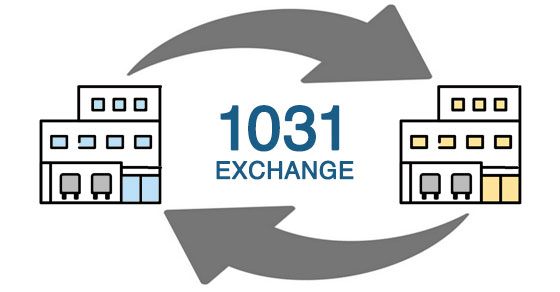
Do you want to sell commercial or investment real estate that has appreciated significantly? One way to defer a tax bill on the gain is with a Section 1031 “like-kind” exchange where you exchange the property rather than sell it. With real estate prices up in some markets (and higher resulting tax bills), the like-kind exchange strategy may be attractive.
A like-kind exchange is any exchange of real property held for investment or for productive use in your trade or business (relinquished property) for like-kind investment, trade or business real property (replacement property).
For these purposes, like-kind is broadly defined, and most real property is considered to be like-kind with other real property. However, neither the relinquished property nor the replacement property can be real property held primarily for sale.
Important change
Under the Tax Cuts and Jobs Act, tax-deferred Section 1031 treatment is no longer allowed for exchanges of personal property — such as equipment and certain personal property building components — that are completed after December 31, 2017.
If you’re unsure if the property involved in your exchange is eligible for like-kind treatment, please contact us to discuss the matter.
Assuming the exchange qualifies, here’s how the tax rules work. If it’s a straight asset-for-asset exchange, you won’t have to recognize any gain from the exchange. You’ll take the same “basis” (your cost for tax purposes) in the replacement property that you had in the relinquished property. Even if you don’t have to recognize any gain on the exchange, you still must report it on Form 8824, “Like-Kind Exchanges.”
Frequently, however, the properties aren’t equal in value, so some cash or other property is tossed into the deal. This cash or other property is known as “boot.” If boot is involved, you’ll have to recognize your gain, but only up to the amount of boot you receive in the exchange. In these situations, the basis you get in the like-kind replacement property you receive is equal to the basis you had in the relinquished property you gave up reduced by the amount of boot you received but increased by the amount of any gain recognized.
An example to illustrate
Let’s say you exchange land (business property) with a basis of $100,000 for a building (business property) valued at $120,000 plus $15,000 in cash. Your realized gain on the exchange is $35,000: You received $135,000 in value for an asset with a basis of $100,000. However, since it’s a like-kind exchange, you only have to recognize $15,000 of your gain. That’s the amount of cash (boot) you received. Your basis in your new building (the replacement property) will be $100,000: your original basis in the relinquished property you gave up ($100,000) plus the $15,000 gain recognized, minus the $15,000 boot received.
Note that no matter how much boot is received, you’ll never recognize more than your actual (“realized”) gain on the exchange.
If the property you’re exchanging is subject to debt from which you’re being relieved, the amount of the debt is treated as boot. The theory is that if someone takes over your debt, it’s equivalent to the person giving you cash. Of course, if the replacement property is also subject to debt, then you’re only treated as receiving boot to the extent of your “net debt relief” (the amount by which the debt you become free of exceeds the debt you pick up).
Great tax-deferral vehicle
Like-kind exchanges can be a great tax-deferred way to dispose of investment, trade or business real property. Contact us if you have questions or would like to discuss the strategy further.
Are you eligible for a medical expense tax deduction?

You may pay out a bundle in out-of-pocket medical costs each year. But can you deduct them on your tax return? It’s possible but not easy. Medical expenses can be claimed as a deduction only to the extent your unreimbursed costs exceed 7.5% of your adjusted gross income. Plus, medical expenses are deductible only if you itemize, which means that your itemized deductions must exceed your standard deduction.
Qualifying costs include many items other than hospital and doctor bills. Here are some items to take into account in determining a possible deduction:
Insurance premiums. The cost of health insurance is a medical expense that can total thousands of dollars a year. Even if your employer provides you with coverage, you can deduct the portion of the premiums you pay. Long-term care insurance premiums also qualify, subject to dollar limits based on age.
Transportation. The cost of getting to and from medical treatment is an eligible expense. This includes taxi fares, public transportation or using your own car. Car costs can be calculated at 18 cents a mile for miles driven in 2022 (up from 16 cents in 2021), plus tolls and parking. Alternatively, you can deduct your actual costs, including gas and oil, but not general costs such as insurance, depreciation or maintenance.
Therapists and nurses. Services provided by individuals other than physicians can qualify if they relate to a medical condition and aren’t for general health. For example, the cost of physical therapy after knee surgery would qualify, but the costs of a personal trainer to tone you up wouldn’t. Also qualifying are amounts paid to a psychologist for medical care and certain long-term care services required by chronically ill individuals.
Eyeglasses, hearing aids, dental work and prescriptions. Deductible expenses include the cost of glasses, contacts, hearing aids and most dental work. Purely cosmetic expenses (such as tooth whitening) don’t qualify, but certain medically necessary cosmetic surgery is deductible. Prescription drugs qualify, but nonprescription drugs such as aspirin don’t even if a physician recommends them. Neither do amounts paid for treatments that are illegal under federal law (such as marijuana), even if permitted under state law.
Smoking-cessation programs. Amounts paid to participate in a smoking-cessation program and for prescribed drugs designed to alleviate nicotine withdrawal are deductible expenses. However, nonprescription gum and certain nicotine patches aren’t.
Weight-loss programs. A weight-loss program is a deductible expense if undertaken as treatment for a disease diagnosed by a physician. This can be obesity or another disease, such as hypertension, for which a doctor directs you to lose weight. It’s a good idea to get a written diagnosis. Deductible expenses include fees paid to join a program and attend meetings. However, the cost of low-calorie food that you eat in place of a regular diet isn’t deductible.
Dependents and others. You can deduct the medical expenses you pay for dependents, such as your children. Additionally, you may be able to deduct medical costs you pay for an individual, such as a parent or grandparent, who would qualify as your dependent except that he or she has too much gross income or files jointly. In most cases, the medical costs of a child of divorced parents can be claimed by the parent who pays them.
In summation, medical costs are fairly broadly defined for deduction purposes. We can assess if you qualify for a deduction or answer any questions you have.
Commission fraud: When salespeople get paid more than they’ve earned

Many employees — from retail workers to sales staffers involved in complex business-to-business transactions — receive part of their compensation from sales-related commissions. To attract and retain top talent, some companies even allow employees to earn unlimited commissions.
Unfortunately, some commission-compensated employees may be tempted to abuse this system by falsifying sales or rates. Fraud methods vary depending on an unethical salesperson’s employer and role. But companies need to be aware of the possibility of commission fraud and take steps to prevent it.
3 forms
Generally, commission fraud takes one of three forms:
- >Invention of sales. A retail employee enters a fake purchase at the point of sale (POS) to generate a commission. Or an employee involved in selling business services creates a fraudulent sales contract.
- >Overstatement of sales. Here, a worker alters internal sales reports or invoices or inflates sales captured via the company’s POS.
- >Inflation of commission rates. An employee changes a company’s commission records to reflect a higher pay rate. Employees who don’t have access to such records might collude with someone who does (such as an accounting staffer) to alter compensation rates.
More sophisticated schemes can involve collusion with customers and other outside parties.
Data-driven approach to detection
Regardless of the method used to commit commission fraud, these schemes create data and a document trail your business can use to detect abuse. For example, to uncover commission fraud in progress, you should regularly analyze commission expenses relative to your company’s sales. After accounting for timing differences, the volume of commission payments should correlate to sales revenue.
Also pay close attention to the total commission paid to each employee. Focus on outliers whose commission levels are significantly higher and analyze sales activity and the associated commission rates to ensure consistency. By creating benchmarks — based on commission sales by employee type, location and seniority — you can more easily detect fraud in subsequent periods. Randomly sampling sales associated with commissions and ensuring relevant documentation exists for each payment can be effective, too. You can contact individual customers to verify sales transactions by disguising your calls as customer satisfaction checks.
Commission schemes sometimes require cooperation with other employees and customers, which usually leaves an email trail. Consistent with your company’s policies and procedures, monitor employee email communications for evidence of wrongdoing.
Prevention processes
There are other processes your business can follow to prevent fraud from occurring in the first place. For example:
Formalize policies prohibiting it. State the consequences (for instance, termination and criminal charges) of committing commission fraud in your employee handbook. Also routinely stress your company’s commitment to detecting commission fraud and explain that management will regularly scrutinize individual payments for signs of malfeasance.
Minimize the potential for record tampering. To help prevent salespeople from accessing accounting records, rotate accounting staff assigned to recording commission payments. Segregation of all accounting duties is important to help prevent other fraud schemes from flourishing in your organization.
Set realistic sales goals. Although some employees commit fraud for personal enrichment, others cheat to meet their employer’s overly aggressive sales targets. Periodically solicit feedback from sales staff about their ability to meet objectives and pay close attention when salespeople complain or leave your company. If you encounter excessive frustration in meeting targets, make them more achievable.
Making manipulation difficult
When structured and managed correctly, a commission program can boost employee compensation and morale — and add to your company’s bottom line. But schemes to manipulate a company’s compensation structure often are all too simple for shady salespeople to commit. To make fraud much harder to perpetrate, you may need to step up data analysis and revamp your internal controls.
Many companies don’t have the internal resources to conduct this type of analysis and don’t know how to fix controls that aren’t working. That’s where a CPA or forensic accounting specialist can help. Contact us.
Review your strategic plan … and look ahead

Business owners, year end is officially here. It may even be over by the time you read this. (If so, Happy New Year!) In any case, the end of one year and the beginning of another is always an optimal time to look back on the preceding 12 calendar months and ask a deceptively simple question: How’d we do?
Large companies tend to have thoroughly documented strategic plans in place, some stretching years into the future, that include various metrics for measuring whether they’ve achieved the growth intended. For them, reviewing a calendar year’s success in terms of strategic planning is relatively easy. They mostly just crunch the numbers.
For small to midsize businesses, the strategic planning process may be a little more informal and less precise. Yet even if your strategic plan isn’t a detailed document replete with spreadsheets and pie charts, you can still review actual performance against it and use this assessment to look ahead to 2022.
Areas that inform
Generally, there are three areas of most businesses that inform the success of a strategic plan. They are:
HR. Your people are your most valuable asset. So, how does your employee turnover rate for 2021 compare with previous years? High employee turnover could be a sign of underlying problems, such as poor training, lax management or low employee morale.
Much has been written this year about “the Great Resignation,” the trend of employees leaving their jobs for various reasons. How has it affected your company? Has it stymied your efforts to meet strategic goals? You may need to make hiring and retention efforts a focal point of your 2022 strategic plan.
Sales and marketing. Did you meet your monthly goals for new sales, in terms of both revenue and number of new customers? Did you generate an adequate return on investment (ROI) for your marketing dollars?
If you can’t clearly answer the latter question, enhance your tracking of existing marketing efforts so you can better gauge ROI going forward. And set reasonable but growth-oriented sales goals for 2022 that will make or keep your business a competitive force to be reckoned with.
Production. If you manufacture products, what was your unit reject rate over the past year? Or, if yours is a service business, how satisfied were your customers with the level of service provided?
Again, if you’re not sure, you may need to establish or enhance your methods of tracking product quality or measuring customer satisfaction to meet this year’s strategic goals. Many companies now use customer satisfaction scores or a customer satisfaction index to establish objectives and benchmark their success.
Flexibility and the right adjustments
By now, you should probably have at least the framework of a 2022 strategic plan in place. However, if you’re not that far along, don’t worry. Strategic plans are best when they’re flexible and open to adjustment as economic conditions and buying trends change.
This is particularly true when the year ahead looks as uncertain as this one, given the continuing impact of the pandemic. We can help you review your 2021 financials and use the right metrics to develop a cohesive, realistic strategic plan for the next 12 months.
Gig workers should understand their tax obligations

The number of people engaged in the “gig” or sharing economy has grown in recent years. In an August 2021 survey, the Pew Research Center found that 16% of Americans have earned money at some time through online gig platforms. This includes providing car rides, shopping for groceries, walking dogs, performing household tasks, running errands and making deliveries from a restaurant or store.
There are tax consequences for the people who perform these jobs. Basically, if you receive income from an online platform offering goods and services, it’s generally taxable. That’s true even if the income comes from a side job and even if you don’t receive an income statement reporting the amount of money you made.
Traits of gig workers
Gig workers are those who are independent contractors and conduct their jobs through online platforms. Examples include Uber, Lyft, Airbnb, Angi, Instacart and DoorDash.
Unlike traditional employees, independent contractors don’t receive benefits associated with employment or employer-sponsored health insurance. They also aren’t covered by the minimum wage or other protections of federal laws, aren’t part of states’ unemployment insurance systems, and are on their own when it comes to training, retirement savings and taxes.
Tax obligations
If you’re part of the gig or sharing economy, here are some considerations.
- You may need to make quarterly estimated tax payments because your income isn’t subject to withholding. These payments are generally due on April 15, June 15, September 15 and January 15 of the following year. (If a deadline falls on a Saturday or Sunday, the deadline is extended to the next business day.)
- You should receive a Form 1099-NEC, Nonemployee Compensation, a Form 1099-K or other income statement from the online platform.
- Some or all of your business expenses may be deductible on your tax return, subject to the normal tax limitations and rules. For example, if you provide rides with your own car, you may be able to deduct depreciation for wear and tear and deterioration of the vehicle. Be aware that if you rent a room in your main home or vacation home, the rules for deducting expenses can be complex.
Diligent recordkeeping
It’s critical to keep good records tracking income and expenses in case you are audited by the IRS or a state/local tax authority. Contact us if you have questions about your tax obligations as a gig worker or the deductions you can claim. You don’t want to get an expensive surprise when you file your tax return next year.
Will the standard business mileage rate go up in 2022? Yes!

After two years of no increases, the optional standard mileage rate used to calculate the deductible cost of operating an automobile for business will be going up in 2022 by 2.5 cents per mile. The IRS recently announced that the cents-per-mile rate for the business use of a car, van, pickup or panel truck will be 58.5 cents (up from 56 cents for 2021).
The increased tax deduction partly reflects the price of gasoline. On December 21, 2021, the national average price of a gallon of regular gas was $3.29, compared with $2.22 a year earlier, according to AAA Gas Prices.
Don’t want to keep track of actual expenses?
Businesses can generally deduct the actual expenses attributable to business use of vehicles. This includes gas, oil, tires, insurance, repairs, licenses and vehicle registration fees. In addition, you can claim a depreciation allowance for the vehicle. However, in many cases, certain limits apply to depreciation write-offs on vehicles that don’t apply to other types of business assets.
The cents-per-mile rate is beneficial if you don’t want to keep track of actual vehicle-related expenses. With this method, you don’t have to account for all your actual expenses. However, you still must record certain information, such as the mileage for each business trip, the date and the destination.
Using the cents-per-mile rate is also popular with businesses that reimburse employees for business use of their personal vehicles. These reimbursements can help attract and retain employees who drive their personal vehicles a great deal for business purposes. Why? Under current law, employees can’t deduct unreimbursed employee business expenses, such as business mileage, on their own income tax returns.
If you do use the cents-per-mile rate, keep in mind that you must comply with various rules. If you don’t comply, the reimbursements could be considered taxable wages to the employees.
How is the rate calculated?
The business cents-per-mile rate is adjusted annually. It’s based on an annual study commissioned by the IRS about the fixed and variable costs of operating a vehicle, such as gas, maintenance, repair and depreciation. Occasionally, if there’s a substantial change in average gas prices, the IRS will change the cents-per-mile rate midyear.
When can the cents-per-mile method not be used?
There are some cases when you can’t use the cents-per-mile rate. It partly depends on how you’ve claimed deductions for the same vehicle in the past. In other situations, it depends on if the vehicle is new to your business this year or whether you want to take advantage of certain first-year depreciation tax breaks on it.
As you can see, there are many factors to consider in deciding whether to use the standard mileage rate to deduct vehicle expenses. We can help if you have questions about tracking and claiming such expenses in 2022 — or claiming 2021 expenses on your 2021 income tax return.
The fundamentals of a solid salesperson

As the year winds down, business owners have many calendar months to look back on to determine how successfully their products or services have sold. While reviewing the numbers, think about your people, too.
To achieve success in 2022, you’ll need a strong sales team in place. However, it’s a difficult time to hire skilled salespeople. So, you don’t want to be too quick with the walking papers for anyone who’s currently struggling. Rather, take a moment to consider whether each member of your staff has the fundamentals of a solid salesperson and, if not, how you can help them build those skills.
The right personality and skill set
One point to think about is whether someone is a natural to the role or needs additional or specialized training to become better at it. People who struggle to form relationships, have no tolerance for rejection or failure, and desire a routine workday may not belong in sales. Or maybe they can grow into it.
Using a sales aptitude test both during the hiring process and as a performance management tool can help you identify those most likely to struggle. Training and coaching of employees who lack a natural aptitude for sales could help them develop into adequate or even strong performers. However, in some cases, you might need to choose between moving a salesperson into another area of the business or letting the person go.
A successful approach
There are a multitude of sales tactics — such as the hard sell, the soft sell, upselling, storytelling and problem solving. At the end of the day, customers buy from people whom they like and trust and who can deliver what they promise.
Doing the little things separates those at the top of the sales profession from everyone else. It helps them build lasting and fruitful relationships with customers. Identify the most valuable tactics of your top sellers and share those approaches with the rest of the staff through ongoing training and upskilling.
Meaningful metrics
Some may say you shouldn’t judge salespeople only on their numbers, but sales metrics are nonetheless a significant factor. After all, it’s a results-oriented profession. If someone isn’t putting up the numbers, you need to decide whether that salesperson shows enough promise to bring those results up, or, once again, if you should consider changing their role or even terminating their employment.
The question and challenge for you as a business owner, and your sales managers if you have them, is how to measure results accurately and fairly — and ultimately define success. There are many sales metrics to consider. Which ones you should track and use to evaluate the performance of your salespeople depends on your strategic priorities.
For example, if you’re looking to speed up the sales cycle, you could look at average days to close. Or, if you’re concerned that your sales department just isn’t bringing in enough revenue, you could calculate average deal size.
Barrel ahead
As your business barrels ahead into 2022, make sure your sales staff is up to the challenge of fulfilling the strategic objectives you have set for yourself. We can help you establish reasonable goals, choose the right metrics for measuring progress, and regularly track and assess the numbers.
There’s a deduction for student loan interest … but do you qualify for it?

If you’re paying back college loans for yourself or your children, you may wonder if you can deduct the interest you pay on the loans. The answer is yes, subject to certain limits. The maximum amount of student loan interest you can deduct each year is $2,500. Unfortunately, the deduction is phased out if your adjusted gross income (AGI) exceeds certain levels, and as explained below, the levels aren’t very high.
The interest must be for a “qualified education loan,” which means a debt incurred to pay tuition, room and board, and related expenses to attend a post-high school educational institution, including certain vocational schools. Certain postgraduate programs also qualify. Therefore, an internship or residency program leading to a degree or certificate awarded by an institution of higher education, hospital or health care facility offering postgraduate training can qualify.
It doesn’t matter when the loan was taken out or whether interest payments made in earlier years on the loan were deductible or not.
Phase-out amounts
For 2021, the deduction is phased out for taxpayers who are married filing jointly with AGI between $140,000 and $170,000 ($70,000 and $85,000 for single filers). Thus, the deduction is unavailable for taxpayers with AGI of $170,000 ($85,000 for single filers) or more.
For 2022, the deduction will be phased out for taxpayers who are married filing jointly with AGI between $145,000 and $175,000 ($70,000 and $85,000 for single filers). That means the deduction is unavailable for taxpayers with AGI of $175,000 ($85,000 for single filers) or more.
Married taxpayers must file jointly to claim this deduction.
No deduction is allowed to a taxpayer who can be claimed as a dependent on another’s return. For example, let’s say parents are paying for the college education of a child whom the parents are claiming as a dependent on their tax return. The interest deduction is only available for interest the parent pays on a qualifying loan, not for any interest the child-student may pay on a loan he or she may have taken out. The child will be able to deduct interest that is paid in a later year when he or she is no longer a dependent.
The deduction is taken “above the line.” In other words, it’s subtracted from gross income to determine AGI. Thus, it’s available even to taxpayers who don’t itemize deductions.
Other requirements
The interest must be on funds borrowed to cover qualified education costs of the taxpayer or his or her spouse or dependent. The student must be a degree candidate carrying at least half the normal full-time workload. Also, the education expenses must be paid or incurred within a reasonable time before or after the loan is taken out.
Taxpayers should keep records to verify qualifying expenditures. Documenting a tuition expense isn’t likely to pose a problem. However, care should be taken to document other qualifying education-related expenditures such as for books, equipment, fees and transportation.
Documenting room and board expenses should be straightforward for students living and dining on campus. Students who live off campus should maintain records of room and board expenses, especially when there are complicating factors such as roommates.
We can help determine whether you qualify for this deduction or answer any questions you may have about it.
2022 Q1 tax calendar: Key deadlines for businesses and other employers

Here are some of the key tax-related deadlines affecting businesses and other employers during the first quarter of 2022. Keep in mind that this list isn’t all-inclusive, so there may be additional deadlines that apply to you. Contact us to ensure you’re meeting all applicable deadlines and to learn more about the filing requirements.
January 17 (The usual deadline of January 15 is a Saturday)
- Pay the final installment of 2021 estimated tax.
- Farmers and fishermen: Pay estimated tax for 2021.
January 31
- File 2021 Forms W-2, “Wage and Tax Statement,” with the Social Security Administration and provide copies to your employees.
- Provide copies of 2021 Forms 1099-MISC, “Miscellaneous Income,” to recipients of income from your business where required.
- File 2021 Forms 1099-MISC, reporting nonemployee compensation payments in Box 7, with the IRS.
- File Form 940, “Employer’s Annual Federal Unemployment (FUTA) Tax Return,” for 2021. If your undeposited tax is $500 or less, you can either pay it with your return or deposit it. If it’s more than $500, you must deposit it. However, if you deposited the tax for the year in full and on time, you have until February 10 to file the return.
- File Form 941, “Employer’s Quarterly Federal Tax Return,” to report Medicare, Social Security and income taxes withheld in the fourth quarter of 2021. If your tax liability is less than $2,500, you can pay it in full with a timely filed return. If you deposited the tax for the quarter in full and on time, you have until February 10 to file the return. (Employers that have an estimated annual employment tax liability of $1,000 or less may be eligible to file Form 944, “Employer’s Annual Federal Tax Return.”)
- File Form 945, “Annual Return of Withheld Federal Income Tax,” for 2021 to report income tax withheld on all nonpayroll items, including backup withholding and withholding on accounts such as pensions, annuities and IRAs. If your tax liability is less than $2,500, you can pay it in full with a timely filed return. If you deposited the tax for the year in full and on time, you have until February 10 to file the return.
February 28
- File 2021 Forms 1099-MISC with the IRS if: 1) they’re not required to be filed earlier and 2) you’re filing paper copies. (Otherwise, the filing deadline is March 31.)
March 15
- If a calendar-year partnership or S corporation, file or extend your 2021 tax return and pay any tax due. If the return isn’t extended, this is also the last day to make 2021 contributions to pension and profit-sharing plans.
Helping your employees make the most of email

Once a revolutionary breakthrough in communications technology, email is now an afterthought for many people. But that can cause problems for businesses: Servers get filled up, messages get lost, and employees’ productivity isn’t quite what it could be.
Although doing so may seem superfluous or antiquated, providing employees with some retraining or upskilling on proper email usage can improve efficiency and morale. Obviously, you don’t want to spend a lot of time or money on this, but a “lunch-and-learn” seminar or a series of quick meetings could prove effective and affordable.
Here are some email management tips that you might want to consider:
Set up project-specific folders. Too many users still store emails in one of three places: the in-box, the “Sent” folder or the “Deleted Items” folder. Creating job-specific folders allows employees to more easily find what they need and to periodically purge unneeded emails once a project or period ends.
Regularly check junk mail folders and adjust filters as necessary. Like many companies, yours has probably set up junk mail folders to cut down on the number of useless and potentially dangerous emails launched at your staff.
Bear in mind that you may need to periodically adjust the filter settings to ensure employees aren’t inadvertently blocking legitimate messages. Ask staffers to check their junk folders and see whether anything important is in them. Once an acceptable sensitivity level is set, establish an automatic archiving process to systematically purge junk emails.
Encourage employees to hit the unsubscribe button. They’re technically not spam but eventually end up that way. The e-newsletters, bulletins and other regular messages that employees signed up for years ago, but no longer use, can clutter up in-boxes and distract workers from their current job duties. Ask every employee to review their subscriptions and get rid of any they’re no longer using.
Refine distribution lists. Most businesses long ago established companywide and departmental email distribution lists. But, again, project-specific lists can greatly benefit the work groups that spring up in the normal course of operations. Remind users how to create their own distribution lists and, equally important, establish a policy for deleting these lists and the emails associated with them at the appropriate time.
Set daily times to check email. In the old days, employees might have hovered over their in-boxes, anxiously awaiting new messages and replying to nearly everything that came in. Now the problem may be the opposite.
With the popularity of texting and instant messaging, not to mention video calls and meetings, staff members may ignore their email for long periods. Recommend that they check their in-boxes at several specified times during the workday. This way, email won’t be a distraction, but it also won’t be a source of missed communications.
Discuss timely email responsiveness. How quickly one should respond to an email depends on various factors. However, if employees are too lax in their response times, it can have a negative impact on the company.
Customers, of course, won’t appreciate a business that takes too long to answer questions or address issues. Employees may also grow frustrated with each other when internal emails are left unread or not replied to.
If necessary, set company policies regarding responsiveness. Generally, business-related emails should be replied to within 24 to 48 hours, but you may want to tighten up that time frame for customer-facing staff.
Stock market investors: Year-end tax strategies to consider

Year-end is a good time to plan to save taxes by carefully structuring your capital gains and losses.
Consider some possibilities if you have losses on certain investments to date. For example, suppose you lost money this year on some stock and have other stock that has appreciated. Consider selling appreciated assets before December 31 (if you think their value has peaked) and offsetting gains with losses.
Long-term capital losses offset long-term capital gains before they offset short-term capital gains. Similarly, short-term capital losses offset short-term capital gains before they offset long-term capital gains. You may use up to $3,000 ($1,500 for married filing separately) of total capital losses in excess of total capital gains as a deduction against ordinary income in computing your adjusted gross income (AGI).
Individuals are subject to federal tax at a rate as high as 37% on short-term capital gains and ordinary income. But long-term capital gains on most investments receive favorable treatment. They’re taxed at rates ranging from zero to 20% depending on your taxable income (inclusive of the gains). High-income taxpayers pay an additional 3.8% net investment income tax on their net gain and certain other investment income.
This means you should try to avoid having long-term capital losses offset long-term capital gains since those losses will be more valuable if they’re used to offset short-term capital gains or up to $3,000 per year of ordinary income. This requires making sure that the long-term capital losses aren’t taken in the same year as the long-term capital gains.
However, this isn’t just a tax issue. Investment factors must also be considered. You don’t want to defer recognizing gain until next year if there’s too much risk that the investment’s value will decline before it can be sold. Similarly, you wouldn’t want to risk increasing a loss on investments you expect to decline in value by deferring a sale until the following year.
To the extent that taking long-term capital losses in a different year than long-term capital gains is consistent with good investment planning, take steps to prevent those losses from offsetting those gains.
If you’ve yet to realize net capital losses for 2021 but expect to realize net capital losses next year well in excess of the $3,000 ceiling, consider accelerating some excess losses into this year. The losses can offset current gains and up to $3,000 of any excess loss will become deductible against ordinary income this year.
For the reasons outlined above, paper losses or gains on stocks may be worth recognizing this year. But suppose the stock is also an investment worth holding for the long term. You can’t sell stock to establish a tax loss and buy it back the next day. The “wash sale” rule precludes recognition of a loss where substantially identical securities are bought and sold within a 61-day period (30 days before or 30 days after the date of sale).
However, you may be able to realize a tax loss by:
- Selling the original holding and then buying the same securities at least 31 days later. The risk is interim upward price movement.
- Buying more of the same stock, then selling the original holding at least 31 days later. The risk is interim downward price movement.
- Selling the original holding and buying similar securities in different companies in the same line of business. This trades on the prospects of the industry, rather than the particular stock.
- Selling an original holding of mutual fund shares and buying shares in another fund with a similar investment strategy.
Careful handling of capital gains and losses can save tax. Contact us if you have questions about these strategies.
Providing a company car? Here’s how taxes are handled

The use of a company vehicle is a valuable fringe benefit for owners and employees of small businesses. This perk results in tax deductions for the employer as well as tax breaks for the owners and employees using the cars. (And of course, they get the nontax benefit of getting a company car.) Plus, current tax law and IRS rules make the benefit even better than it was in the past.
The rules in action
Let’s say you’re the owner-employee of a corporation that’s going to provide you with a company car. You need the car to visit customers, meet with vendors and check on suppliers. You expect to drive the car 8,500 miles a year for business. You also expect to use the car for about 7,000 miles of personal driving, including commuting, running errands and weekend trips. Therefore, your usage of the vehicle will be approximately 55% for business and 45% for personal purposes. You want a nice car to reflect positively on your business, so the corporation buys a new $55,000 luxury sedan.
Your cost for personal use of the vehicle is equal to the tax you pay on the fringe benefit value of your 45% personal mileage. By contrast, if you bought the car yourself to be able to drive the personal miles, you’d be out-of-pocket for the entire purchase cost of the car.
Your personal use will be treated as fringe benefit income. For tax purposes, your corporation will treat the car much the same way it would any other business asset, subject to depreciation deduction restrictions if the auto is purchased. Out-of-pocket expenses related to the car (including insurance, gas, oil and maintenance) are deductible, including the portion that relates to your personal use. If the corporation finances the car, the interest it pays on the loan would be deductible as a business expense (unless the business is subject to the business interest expense deduction limitation under the tax code).
In contrast, if you bought the auto yourself, you wouldn’t be entitled to any deductions. Your outlays for the business-related portion of your driving would be unreimbursed employee business expenses that are nondeductible from 2018 to 2025 due to the suspension of miscellaneous itemized deductions under the Tax Cuts and Jobs Act. And if you financed the car yourself, the interest payments would be nondeductible.
And finally, the purchase of the car by your corporation will have no effect on your credit rating.
Necessary paperwork
Providing an auto for an owner’s or key employee’s business and personal use comes with complications and paperwork. Personal use will have to be tracked and valued under the fringe benefit tax rules and treated as income. This article only explains the basics.
Despite the necessary valuation and paperwork, a company-provided car is still a valuable fringe benefit for business owners and key employees. It can provide them with the use of a vehicle at a low tax cost while generating tax deductions for their businesses. We can help you stay in compliance with the rules and explain more about this prized perk.
Could an FLP fit into your succession plan?

Among the biggest long-term concerns of many business owners is succession planning — how to smoothly and safely transfer ownership and control of the company to the next generation.
From a tax perspective, the optimal time to start this process is long before the owner is ready to give up control. A family limited partnership (FLP) can help you enjoy the tax benefits of gradually transferring ownership while you continue to run the business.
How it works
To establish an FLP, you transfer your ownership interests to a partnership in exchange for both general and limited partnership interests. You then transfer limited partnership interests to your children or other beneficiaries.
You retain the general partnership interest, which may be as little as 1% of the assets. However, as general partner, you still run day-to-day operations and make business decisions.
Tax benefits
As you transfer the FLP interests, their value is removed from your taxable estate. What’s more, the future business income and asset appreciation associated with those interests move to the next generation.
Because your children hold limited partnership interests, they have no control over the FLP, and thus no control over the business. They also can’t sell their interests without your consent or force the FLP’s liquidation.
The lack of control and lack of an outside market for the FLP interests generally mean the interests can be valued at a discount — so greater portions of the business can be transferred before triggering gift tax. For example, let’s say the discount is 25%. That means, in 2022, you could gift an FLP interest equal to as much as $21,333 (on a controlling basis) tax-free because the discounted value wouldn’t exceed the $16,000 annual gift tax exclusion.
There also may be income tax benefits. The FLP’s income will flow through to the partners for income tax purposes. Your children may be in a lower tax bracket, potentially reducing the amount of income tax paid overall by the family.
Some risks
Perhaps the biggest downside is that the IRS tends to scrutinize how FLPs are structured. If it determines that discounts are excessive or that your FLP has no valid business purpose beyond minimizing taxes, it could assess additional taxes, interest and penalties.
The IRS also pays close attention to how FLPs are administered. Lack of attention to partnership formalities, for instance, can indicate that an FLP was set up solely as a tax-avoidance strategy.
Not for everyone
An FLP can be an effective succession and estate planning tool but, as noted, it’s far from risk free. We can help you determine whether one is right for you and advise you on other ways to develop a sound succession plan.
How are court awards and out-of-court settlements taxed?

Awards and settlements are routinely provided for a variety of reasons. For example, a person could receive compensatory and punitive damage payments for personal injury, discrimination or harassment. Some of this money is taxed by the federal government, and perhaps state governments. Hopefully, you’ll never need to know how payments for personal injuries are taxed. But here are the basic rules — just in case you or a loved one does need to understand them.
Under tax law, individuals are permitted to exclude from gross income damages that are received on account of a personal physical injury or a physical sickness. It doesn’t matter if the compensation is from a court-ordered award or an out-of-court settlement, and it makes no difference if it’s paid in a lump sum or installments.
Emotional distress
For purposes of this exclusion, emotional distress is not considered a physical injury or physical sickness. So, for example, an award under state law that’s meant to compensate for emotional distress caused by age discrimination or harassment would have to be included in gross income. However, if you require medical care for treatment of the consequences of emotional distress, then the amount of damages not exceeding those expenses would be excludable from gross income.
Punitive damages for any personal injury claim, whether or not physical, aren’t excludable from gross income unless awarded under certain state wrongful death statutes that provide for only punitive damages.
The law doesn’t consider back pay and liquidated damages received under the Age Discrimination in Employment Act (ADEA) to be paid in compensation for personal injuries. Thus, an award for back pay and liquidated damages under the ADEA must be included in gross income.
Attorney’s fees
You can’t deduct attorney’s fees incurred to collect a tax-free award or settlement for physical injury or sickness. However, to a limited extent, attorney’s fees (whether contingent or non-contingent) or court costs paid by, or on behalf of, a taxpayer in connection with an action involving a claim under the ADEA, are deductible from gross income to determine adjusted gross income. Specifically, the amount of this above-the-line deduction is limited to the amount includible in your gross income for the tax year on account of a judgment or settlement resulting from the ADEA claim, whether by suit or agreement, and whether as lump sum or periodic payments.
Best possible tax result
Keep in mind that while you want the best tax result possible from any settlement, lawsuit or discrimination action you’re considering, non-tax legal factors together with the tax factors will determine the amount of your after-tax recovery. Consult with your attorney as to the best way to proceed, and we can provide any tax guidance that you may need.
The tax implications of owning a corporate aircraft

If your business is successful and you do a lot of business travel, you may have considered buying a corporate aircraft. Of course, there are tax and non-tax implications for aircraft ownership. Let’s look at the basic tax rules.
Business travel only
In most cases, if your company buys a plane used only for business, the company can deduct its entire cost in the year that it’s placed into service. The cases in which the aircraft is ineligible for this immediate write-off are:
- The few instances in which neither the 100% bonus depreciation rules nor the Section 179 small business expensing rules apply or
- When the taxpayer has elected out of 100% bonus depreciation and hasn’t made the election to apply Sec. 179 expensing.
In those cases, the depreciation schedule is 20% of the cost for year 1, 32% for year 2, 19.2% for year 3, 11.52% for year 4, 11.52% for year 5 and 5.76% for year 6. Note that the bonus depreciation rate is scheduled to be phased down for property placed in service after 2022.
Interestingly, these “cost recovery” rules are more favorable than the rules for business autos. The business auto rules place annual caps on depreciation and, in the year an auto is placed in service, both depreciation and Sec. 179 expensing.
In the case of a business-travel-only aircraft, post-acquisition expenses aren’t treated differently than post-acquisition expenditures for other machinery and equipment. For example, routine maintenance and repair expenses are immediately deductible while amounts that improve or restore the aircraft must be capitalized and depreciated.
The only “catch” that distinguishes the tax treatment of an aircraft used 100% for business travel from the treatment of most other machinery and equipment is that company aircraft are one of the categories of business property that require more rigorous recordkeeping to prove the connection of uses and expenses to business purposes.
Business and personal travel
Personal travel won’t affect the depreciation results discussed above if the value of the travel is compensation income (and is reported and withheld upon as such) to a person that isn’t at least a 5% owner or a person “related” to the corporation. This means, for example, that personal travel by a non-share-holding employee won’t affect depreciation if the value of the travel is compensation to him or her and is reported and withheld upon. The depreciation results can be affected if the person for whom the value of the travel is compensation income is at least a 5% shareholder or a related person. But even in that case, the depreciation results won’t be affected if you comply with a generous “fail-safe” rule.
With one limitation, personal travel won’t affect the treatment of otherwise-deductible post-acquisition expenditures if the value of the travel is compensation income (and is reported and withheld upon). The limitation is that if the person for whom the value of the travel is to be treated as compensation income is at least a 10% owner, director, officer or a person related to the corporation, the amount of the deduction for otherwise-deductible costs allocable to the personal travel can’t exceed the travel value.
Moving forward
Other rules and limitations may apply. As you can see, even in the case of an aircraft used for business and personal travel, these rules aren’t onerous. But they do require careful recordkeeping and, when an aircraft is used for personal travel, compliance with reporting and withholding requirements. Contact us to learn more in your situation.
Use change management to brighten your company’s future

Businesses have had to grapple with unprecedented changes over the last couple years. Think of all the steps you’ve had to take to safeguard your employees from COVID-19, comply with government mandates and adjust to the economic impact of the pandemic. Now look ahead to the future — what further changes lie in store in 2022 and beyond?
One hopes the transformations your company undergoes in the months ahead are positive and proactive, rather than reactive. Regardless, the process probably won’t be easy. This is where change management comes in. It involves creating a customized plan for ensuring that you communicate effectively and provide employees with the leadership, training and coaching needed to change successfully.
Prepare for resistance
Employees resist change in the workplace for many reasons. Some may see it as a disruption that will lead to loss of job security or status (whether real or perceived). Other staff members, particularly long-tenured ones, can have a hard time breaking out of the mindset that “the old way is better.”
Still others, in perhaps the most dangerous of perspectives, distrust their employer’s motives for change. They may be listening to — or spreading — gossip or misinformation about the state or strategic direction of the company.
It doesn’t help the situation when certain initial changes appear to make employees’ jobs more difficult. For example, moving to a new location might enhance the image of the business or provide more productive facilities. But a move also may increase some employees’ commuting times or put them in a drastically different working environment. When their daily lives are affected in such ways, employees tend to question the decision and experience high levels of anxiety.
Make your case
Often, when employees resist change, a company’s leadership can’t understand how ideas they’ve spent weeks, months or years carefully deliberating could be so quickly rejected. They overlook the fact that employees haven’t had this time to contemplate and get used to the new concepts and processes. Instead of helping to ease employee fears, leadership may double down on the change, more strictly enforcing new rules and showing little patience for disagreements or concerns.
It’s here that the implementation effort can break down and start costing the business real dollars and cents. Employees resist change in many counterproductive ways, from intentionally lengthening learning curves to calling in sick when they aren’t to filing formal complaints or lawsuits. Some might even quit — an increasingly common occurrence as of late.
By engaging in change management, you may be able to lessen the negative impact on productivity, morale and employee retention.
Craft your future
The content of a change-management plan will, of course, depend on the nature of the change in question as well as the size and mission of your company. For major changes, you may want to invest in a business consultant who can help you craft and execute the plan. Getting the details right matters — the future of your business may depend on it.
With year-end approaching, 3 ideas that may help cut your tax bill

If you’re starting to worry about your 2021 tax bill, there’s good news — you may still have time to reduce your liability. Here are three quick strategies that may help you trim your taxes before year-end.
1. Accelerate deductions/defer income. Certain tax deductions are claimed for the year of payment, such as the mortgage interest deduction. So, if you make your January 2022 payment in December, you can deduct the interest portion on your 2021 tax return (assuming you itemize).
Pushing income into the new year also will reduce your taxable income. If you’re expecting a bonus at work, for example, and you don’t want the income this year, ask if your employer can hold off on paying it until January. If you’re self-employed, you can delay your invoices until late in December to divert the revenue to 2022.
You shouldn’t pursue this approach if you expect to be in a higher tax bracket next year. Also, if you’re eligible for the qualified business income deduction for pass-through entities, you might reduce the amount of that deduction if you reduce your income.
2. Maximize your retirement contributions. What could be better than paying yourself? Federal tax law encourages individual taxpayers to make the maximum allowable contributions for the year to their retirement accounts, including traditional IRAs and SEP plans, 401(k)s and deferred annuities.
For 2021, you generally can contribute as much as $19,500 to 401(k)s and $6,000 for traditional IRAs. Self-employed individuals can contribute up to 25% of your net income (but no more than $58,000) to a SEP IRA.
3. Harvest your investment losses. Losing money on your investments has a bit of an upside — it gives you the opportunity to offset taxable gains. If you sell underperforming investments before the end of the year, you can offset gains realized this year on a dollar-for-dollar basis.
If you have more losses than gains, you generally can apply up to $3,000 of the excess to reduce your ordinary income. Any remaining losses are carried forward to future tax years.
There’s still time
The ideas described above are only a few of the strategies that still may be available. Contact us if you have questions about these or other methods for minimizing your tax liability for 2021.
Small businesses: There still may be time to cut your 2021 taxes

Don’t let the holiday rush keep you from considering some important steps to reduce your 2021 tax liability. You still have time to execute a few strategies.
Purchase assets
Thinking about buying new or used equipment, machinery or office equipment in the new year? Buy them and place them in service by December 31, and you can deduct 100% of the cost as bonus depreciation. Contact us for details on the 100% bonus depreciation break and exactly what types of assets qualify.
Bonus depreciation is also available for certain building improvements. Before the 2017 Tax Cuts and Jobs Act (TCJA), bonus depreciation was available for two types of real property: land improvements other than buildings (for example fencing and parking lots), and “qualified improvement property,” a broad category of internal improvements made to nonresidential buildings after the buildings are placed in service. The TCJA inadvertently eliminated bonus depreciation for qualified improvement property. However, the 2020 CARES Act made a retroactive technical correction to the TCJA. The correction makes qualified improvement property placed in service after December 31, 2017, eligible for bonus depreciation.
Keep in mind that 100% bonus depreciation has reduced the importance of Section 179 expensing. If you’re a small business, you’ve probably benefited from Sec. 179. It’s an elective benefit that, subject to dollar limits, allows an immediate deduction of the cost of equipment, machinery, “off-the-shelf” computer software and some building improvements. Sec. 179 expensing was enhanced by the TCJA, but the availability of 100% bonus depreciation is economically equivalent and thus has greatly reduced the cases in which Sec. 179 expensing is useful.
Write off a heavy vehicle
The 100% bonus depreciation deal can have a major tax-saving impact on first-year depreciation deductions for new or used heavy vehicles used over 50% for business. That’s because heavy SUVs, pickups and vans are treated for federal income tax purposes as transportation equipment. In turn, that means they qualify for 100% bonus depreciation.
Specifically, 100% bonus depreciation is available when the SUV, pickup or van has a manufacturer’s gross vehicle weight rating above 6,000 pounds. You can verify a vehicle’s weight by looking at the manufacturer’s label, which is usually found on the inside edge of the driver’s side door. If you’re considering buying an eligible vehicle, placing one in service before year end could deliver a significant write-off on this year’s return.
Time deductions and income
If your business operates on a cash basis, you can significantly affect your amount of taxable income by accelerating your deductions into 2021 and deferring income into 2022 (assuming you expect to be taxed at the same or a lower rate next year).
For example, you could put recurring expenses normally paid early in the year on your credit card before January 1 — that way, you can claim the deduction for 2021 even though you don’t pay the credit card bill until 2022. In certain circumstances, you also can prepay some expenses, such as rent or insurance and claim them in 2021.
As for income, wait until close to year-end to send out invoices to customers with reliable payment histories. Accrual-basis businesses can take a similar approach, holding off on the delivery of goods and services until next year.
Consider all angles
Bear in mind that some of these tactics could adversely impact other factors affecting your tax liability, such as the qualified business income deduction. Contact us to make the most of your tax planning opportunities.
IRS announces adjustments to key retirement plan limits

In Notice 2021-61, the IRS recently announced 2022 cost-of-living adjustments to dollar limits and thresholds for qualified retirement plans. Here are some highlights:
Elective deferrals. The annual limit on elective deferrals (employee contributions) will increase from $19,500 to $20,500 for 401(k), 403(b) and 457 plans, as well as for Salary Reduction Simplified Employee Pensions (SARSEPs). The annual limit will rise to $14,000, up from $13,500, for Savings Incentive Match Plans for Employees (SIMPLEs) and SIMPLE IRAs.
Catch-up contributions. The annual limit on catch-up contributions for individuals age 50 and over remains at $6,500 for 401(k), 403(b) and 457 plans, as well as for SARSEPs. It also stays at $3,000 for SIMPLEs and SIMPLE IRAs.
Annual additions. The limit on annual additions — that is, employer contributions plus employee contributions — to 401(k)s and other defined contribution plans will increase from $58,000 to $61,000.
Compensation. The annual limit on compensation that can be taken into account for contributions and deductions will increase from $290,000 to $305,000 for 401(k)s and other qualified plans. This includes Simplified Employee Pensions (SEPs) and SARSEPs.
Highly compensated employees (HCEs). The threshold for determining who is an HCE will increase from $130,000 to $135,000.
Key employees. The threshold for determining whether an officer is a “key employee” under the top-heavy rules, as well as the cafeteria plan nondiscrimination rules, will increase from $185,000 to $200,000.
Participation in a SEP or SARSEP. The threshold for determining participation in either type of plan will remain $650.
Business owners, along with their HR and benefits staff or providers, should carefully note when the new limits and thresholds apply. Sometimes the answer isn’t obvious. For example, the 2022 compensation threshold used to identify HCEs will be generally used by 401(k) plans for 2023 nondiscrimination testing, not 2022.
Review your employee communications, plan procedures and administrative forms, updating them as necessary to reflect these changes. Whether your company offers a 401(k) or another type of defined contribution plan, we can provide further information on the applicable tax rules.
New digital asset reporting requirements will be imposed in coming years

The Infrastructure Investment and Jobs Act (IIJA) was signed into law on November 15, 2021. It includes new information reporting requirements that will generally apply to digital asset transactions starting in 2023. Cryptocurrency exchanges will be required to perform intermediary Form 1099 reporting for cryptocurrency transactions.
Existing reporting rules
If you have a stock brokerage account, whenever you sell stock or other securities, you receive a Form 1099-B after the end of the year. Your broker uses the form to report transaction details such as sale proceeds, relevant dates, your tax basis and the character of gains or losses. In addition, if you transfer stock from one broker to another broker, the old broker must furnish a statement with relevant information, such as tax basis, to the new broker.
Digital asset broker reporting
The IIJA expands the definition of brokers who must furnish Forms 1099-B to include businesses that are responsible for regularly providing any service accomplishing transfers of digital assets on behalf of another person (“crypto exchanges”). Thus, any platform on which you can buy and sell cryptocurrency will be required to report digital asset transactions to you and the IRS after the end of each year.
Transfer reporting
Sometimes you may have a transfer transaction that isn’t a sale or exchange. For example, if you transfer cryptocurrency from your wallet at one crypto exchange to your wallet at another crypto exchange, the transaction isn’t a sale or exchange. For that transfer, as with stock, the old crypto exchange will be required to furnish relevant digital asset information to the new crypto exchange. Additionally, if the transfer is to an account maintained by a party that isn’t a crypto exchange (or broker), the IIJA requires the old crypto exchange to file a return with the IRS. It’s anticipated that such a return will include generally the same information that’s furnished in a broker-to-broker transfer.
Digital asset definition
For the reporting requirements, a “digital asset” is any digital representation of value that’s recorded on a cryptographically secured distributed ledger or similar technology. (The IRS can modify this definition.) As it stands, the definition will capture most cryptocurrencies as well as potentially include some non-fungible tokens (NFTs) that are using blockchain technology for one-of-a-kind assets like digital artwork.
Cash transaction reporting
You may know that when a business receives $10,000 or more in cash in a transaction, it is required to report the transaction, including the identity of the person from whom the cash was received, to the IRS on Form 8300. The IIJA will require businesses to treat digital assets like cash for purposes of this requirement.
When reporting begins
These reporting rules will apply to information reporting that’s due after December 31, 2023. For Form 1099-B reporting, this means that applicable transactions occurring after January 1, 2023, will be reported. Whether the IRS will refine the form for digital assets, or come up with a new form, is not known yet. Form 8300 reporting of cash transactions will presumably follow the same effective dates.
More details
If you use a crypto exchange, and it hasn’t already collected a Form W-9 from you seeking your taxpayer identification number, expect it to do so. The transactions subject to the reporting will include not only selling cryptocurrencies for fiat currencies (like U.S. dollars), but also exchanging cryptocurrencies for other cryptocurrencies. And keep in mind that a reporting intermediary doesn’t always have accurate information, especially with a new type of reporting. Contact us with any questions.
Infrastructure law sunsets Employee Retention Credit early

The Employee Retention Credit (ERC) was a valuable tax credit that helped employers survive the COVID-19 pandemic. A new law has retroactively terminated it before it was scheduled to end. It now only applies through September 30, 2021 (rather than through December 31, 2021) — unless the employer is a “recovery startup business.”
The Infrastructure Investment and Jobs Act, which was signed by President Biden on November 15, doesn’t have many tax provisions but this one is important for some businesses.
If you anticipated receiving the ERC based on payroll taxes after September 30 and retained payroll taxes, consult with us to determine how and when to repay those taxes and address any other compliance issues.
The American Institute of Certified Public Accountants (AICPA) is asking Congress to direct the IRS to waive payroll tax penalties imposed as a result of the ERC sunsetting. Some employers may face penalties because they retained payroll taxes believing they would receive the credit. Affected businesses will need to pay back the payroll taxes they retained for wages paid after September 30, the AICPA explained. Those employers may also be subject to a 10% penalty for failure to deposit payroll taxes withheld from employees unless the IRS waives the penalties.
The IRS is expected to issue guidance to assist employers in handling any compliance issues.
Credit basics
The ERC was originally enacted in March of 2020 as part of the CARES Act. The goal was to encourage employers to retain employees during the pandemic. Later, Congress passed other laws to extend and modify the credit and make it apply to wages paid before January 1, 2022.
An eligible employer could claim the refundable credit against its share of Medicare taxes (1.45% rate) equal to 70% of the qualified wages paid to each employee (up to a limit of $10,000 of qualified wages per employee per calendar quarter) in the third and fourth calendar quarters of 2021.
For the third and fourth quarters of 2021, a recovery startup business is an employer eligible to claim the ERC. Under previous law, a recovery startup business was defined as a business that:
- Began operating after February 15, 2020,
- Had average annual gross receipts of less than $1 million, and
- Didn’t meet the eligibility requirement, applicable to other employers, of having experienced a significant decline in gross receipts or having been subject to a full or partial suspension under a government order.
However, recovery startup businesses are subject to a maximum total credit of $50,000 per quarter for a maximum credit of $100,000 for 2021.
Retroactive termination
The ERC was retroactively terminated by the new law to apply only to wages paid before October 1, 2021, unless the employer is a recovery startup business. Therefore, for wages paid in the fourth quarter of 2021, other employers can’t claim the credit.
In terms of the availability of the ERC for recovery startup businesses in the fourth quarter, the new law also modifies the recovery startup business definition. Now, a recovery startup business is one that began operating after February 15, 2020, and has average annual gross receipts of less than $1 million. Other changes to recovery startup businesses may also apply.
What to do now?
If you have questions about how to proceed now to minimize penalties, contact us. We can explain the options.
4 red flags of an unreliable budget

Every business should prepare an annual budget. Creating a comprehensive, realistic spending plan allows you to identify potential shortages of cash, possible constraints on your capacity to fulfill strategic objectives, and other threats.
Whether you’ve already put together a 2022 budget or still need to get on that before year end, here are four red flags to watch out for:
1. It’s based on last year’s results. Too often, companies create a budget by applying an across-the-board percentage increase to the previous year’s actual results. Clearly the pandemic showed us how an unexpected event can wreak havoc on a budget. However, even without such an event, this approach may be too simplistic in today’s complex business environment.
Historical results are a good starting point, but not all costs are fixed. Some are quite variable based on various factors, such as the supply-chain disruptions we’ve seen in 2020 and 2021. And certain assets — such as equipment and people — have capacity limitations to consider. Prepare accurate forecasts of revenue and expenses on a department-by-department basis using up-to-date technology to capture timely data.
2. It lacks companywide consensus. Your finance or accounting department shouldn’t complete the budget alone. Seek input from key employees in every department and at various levels of management.
For example, your sales department may be in the best position to estimate future revenue. A production or service manager may offer insight into unanticipated expenses or necessary investments in equipment upgrades. And the product development team can help forecast revenue and expenses related to new products and enhancements to existing products.
In addition, soliciting broad participation gives employees a sense of ownership in the budgeting process. This can help enhance employee engagement and improve your odds of achieving budgeted results.
3. It’s unrealistic. Good budgets encourage hard work to grow revenue and cut costs. But the targets must be attainable, based on your company’s history as well as economic and industry trends.
Employees will likely become discouraged if they view the budget as unachievable or out of touch with what’s actually happening on the ground. If budgets repeatedly fail, employees may start ignoring them altogether. Tying annual bonuses to the achievement of specific targets can help encourage budget buy-in.
4. It ignores or underestimates cash flow. Even if expected revenue is forecast to cover expenses for the year, production and cost fluctuations, as well as slow-paying customers and uncollectible accounts, can lead to temporary cash shortages. Of course, more significant events can have an even bigger impact.
An unexpected shortfall can seriously derail your budget. So, look beyond the income statement and balance sheet. Forecast cash flow on a weekly or monthly basis. Then create a plan for managing any anticipated shortfalls.
For example, you might need to contribute extra capital from cash reserves. Or you might need to apply for a line of credit at the bank. Alternatively, you might consider buying materials on consignment, revising payment terms with customers or delaying payments to suppliers (if a penalty won’t apply).
As you’ve no doubt experienced in 2020 and 2021, the environment in which your business operates is constantly evolving, so budgeting needs to be an ongoing process. We can help you develop a reasonable annual budget and monitor actual results throughout the year.
Remember to use up your flexible spending account money

Do you have a tax-saving flexible spending account (FSA) with your employer to help pay for health or dependent care expenses? As the end of 2021 nears, there are some rules and reminders to keep in mind.
An account for health expenses
A pre-tax contribution of $2,750 to a health FSA is permitted in 2021. This amount is increasing to $2,850 for 2022. You save taxes in these accounts because you use pre-tax dollars to pay for medical expenses that might not be deductible. For example, they wouldn’t be deductible if you don’t itemize deductions on your tax return. Even if you do itemize, medical expenses must exceed a certain percentage of your adjusted gross income in order to be deductible. Additionally, the amounts that you contribute to a health FSA aren’t subject to FICA taxes.
Your employer’s plan should have a listing of qualifying items and any documentation from a medical provider that may be needed to get reimbursed for these items.
FSAs generally have a “use-it-or-lose-it” rule, which means you must incur qualifying medical expenditures by the last day of the plan year (December 31 for a calendar year plan) — unless the plan allows an optional grace period. A grace period can’t extend beyond the 15th day of the third month following the close of the plan year (March 15 for a calendar year plan). What if you don’t spend the money before the last day allowed? You forfeit it.
An additional exception to the use-it-or-lose-it rule permits health FSAs to allow a carryover of a participant’s unused health FSA funds of up to $550. Amounts carried forward under this rule are added to the up-to-$2,750 amount that you elect to contribute to the health FSA for 2021. An employer may allow a carryover or a grace period for an FSA, but not both features.
Take a look at your year-to-date expenditures now. It will show you what you still need to spend and will also help you to determine how much to set aside for next year if there’s still time. Don’t forget to reflect any changed circumstances in making your calculation.
What are some ways to use up the money? Before year end (or the extended date, if permitted), schedule certain elective medical procedures, visit the dentist or buy new eyeglasses.
An account for dependent care expenses
Some employers also allow employees to set aside funds on a pre-tax basis in dependent care FSAs. A $5,000 maximum annual contribution is permitted ($2,500 for a married couple filing separately).
These FSAs are for a dependent-qualifying child who is under age 13, or a dependent or spouse who is physically or mentally incapable of self-care and who has the same principal place of abode as you for more than half of the tax year.
Like health FSAs, dependent care FSAs are subject to a use-it-or-lose-it rule, but only the grace period relief applies, not the up-to-$550 forfeiture exception. Therefore, it’s a good time to review your expenses to date and project amounts to be set aside for 2022.
Other rules and exceptions may apply. Your HR department can answer any questions about your specific plan. We can answer any questions you have about the tax implications.
Businesses can show appreciation — and gain tax breaks — with holiday gifts and parties

With Thanksgiving just around the corner, the holiday season will soon be here. At this time of year, your business may want to show its gratitude to employees and customers by giving them gifts or hosting holiday parties again after a year of forgoing them due to the pandemic. It’s a good time to brush up on the tax rules associated with these expenses. Are they tax deductible by your business and is the value taxable to the recipients?
Gifts to customers
If you give gifts to customers and clients, they’re deductible up to $25 per recipient per year. For purposes of the $25 limit, you don’t need to include “incidental” costs that don’t substantially add to the gift’s value. These costs include engraving, gift wrapping, packaging and shipping. Also excluded from the $25 limit is branded marketing items — such as those imprinted with your company’s name and logo — provided they’re widely distributed and cost less than $4.
The $25 limit is for gifts to individuals. There’s no set limit on gifts to a company (for example, a gift basket for all team members of a customer to share) as long as the costs are “reasonable.”
Gifts to employees
In general, anything of value that you transfer to an employee is included in his or her taxable income (and, therefore, subject to income and payroll taxes) and deductible by your business. But there’s an exception for noncash gifts that constitute a “de minimis” fringe benefit.
These are items that are small in value and given infrequently that are administratively impracticable to account for. Common examples include holiday turkeys, hams, gift baskets, occasional sports or theater tickets (but not season tickets) and other low-cost merchandise.
De minimis fringe benefits aren’t included in an employee’s taxable income yet they’re still deductible by your business. Unlike gifts to customers, there’s no specific dollar threshold for de minimis gifts. However, many businesses use an informal cutoff of $75.
Cash gifts — as well as cash equivalents, such as gift cards — are included in an employee’s income and subject to payroll tax withholding regardless of how small and infrequent.
Throw a holiday party
In general, holiday parties are fully deductible (and excludible from recipients’ income). And for calendar years 2021 and 2022, a COVID-19 relief law provides a temporary 100% deduction for expenses of food or beverages “provided by” a restaurant to your workplace. Previously, these expenses were only 50% deductible. Entertainment expenses are still not deductible.
The use of the words “provided by” a restaurant clarifies that the tax break for 2021 and 2022 isn’t limited to meals eaten on a restaurant’s premises. Takeout and delivery meals from a restaurant are also generally 100% deductible. So you can treat your on-premises staff to some holiday meals this year and get a full deduction.
Show your holiday spirit
Contact us if you have questions about the tax implications of giving holiday gifts or throwing a holiday party.
Feeling generous at year end? Strategies for donating to charity or gifting to loved ones

As we approach the holidays, many people plan to donate to their favorite charities or give money or assets to their loved ones. Here are the basic tax rules involved in these transactions.
Donating to charity
Normally, if you take the standard deduction and don’t itemize, you can’t claim a deduction for charitable contributions. But for 2021 under a COVID-19 relief law, you’re allowed to claim a limited deduction on your tax return for cash contributions made to qualifying charitable organizations. You can claim a deduction of up to $300 for cash contributions made during this year. This deduction increases to $600 for a married couple filing jointly in 2021.
What if you want to give gifts of investments to your favorite charities? There are a couple of points to keep in mind.
First, don’t give away investments in taxable brokerage accounts that are currently worth less than what you paid for them. Instead, sell the shares and claim the resulting capital loss on your tax return. Then, give the cash proceeds from the sale to charity. In addition, if you itemize, you can claim a full tax-saving charitable deduction.
The second point applies to securities that have appreciated in value. These should be donated directly to charity. The reason: If you itemize, donations of publicly traded shares that you’ve owned for over a year result in charitable deductions equal to the full current market value of the shares at the time the gift is made. In addition, if you donate appreciated stock, you escape any capital gains tax on those shares. Meanwhile, the tax-exempt charity can sell the donated shares without owing any federal income tax.
Donating from your IRA
IRA owners and beneficiaries who’ve reached age 70½ are allowed to make cash donations of up to $100,000 a year to qualified charities directly out of their IRAs. You don’t owe income tax on these qualified charitable distributions (QCDs), but you also don’t receive an itemized charitable contribution deduction. Contact your tax advisor if you’re interested in this type of gift.
Gifting assets to family and other loved ones
The principles for tax-smart gifts to charities also apply to gifts to relatives. That is, you should sell investments that are currently worth less than what you paid for them and claim the resulting tax-saving capital losses. Then, give the cash proceeds from the sale to your children, grandchildren or other loved ones.
Likewise, you should give appreciated stock directly to those to whom you want to give gifts. When they sell the shares, they’ll pay a lower tax rate than you would if they’re in a lower tax bracket.
In 2021, the amount you can give to one person without gift tax implications is $15,000 per recipient. The annual gift exclusion is available to each taxpayer. So if you’re married and make a joint gift with your spouse, the exclusion amount is doubled to $30,000 per recipient for 2021.
Many factors are involved when choosing a business entity

Are you planning to launch a business or thinking about changing your business entity? If so, you need to determine which entity will work best for you — a C corporation or a pass-through entity such as a sole-proprietorship, partnership, limited liability company (LLC) or S corporation. There are many factors to consider and proposed federal tax law changes being considered by Congress may affect your decision.
The corporate federal income tax is currently imposed at a flat 21% rate, while the current individual federal income tax rates begin at 10% and go up to 37%. The difference in rates can be mitigated by the qualified business income (QBI) deduction that’s available to eligible pass-through entity owners that are individuals, estates and trusts.
Note that noncorporate taxpayers with modified adjusted gross income above certain levels are subject to an additional 3.8% tax on net investment income.
Organizing a business as a C corporation instead of as a pass-through entity can reduce the current federal income tax on the business’s income. The corporation can still pay reasonable compensation to the shareholders and pay interest on loans from the shareholders. That income will be taxed at higher individual rates, but the overall rate on the corporation’s income can be lower than if the business was operated as a pass-through entity.
Other considerations
Other tax-related factors should also be considered. For example:
- If substantially all the business profits will be distributed to the owners, it may be preferable that the business be operated as a pass-through entity rather than as a C corporation, since the shareholders will be taxed on dividend distributions from the corporation (double taxation). In contrast, owners of a pass-through entity will only be taxed once, at the personal level, on business income. However, the impact of double taxation must be evaluated based on projected income levels for both the business and its owners.
- If the value of the business’s assets is likely to appreciate, it’s generally preferable to conduct it as a pass-through entity to avoid a corporate tax if the assets are sold or the business is liquidated. Although corporate level tax will be avoided if the corporation’s shares, rather than its assets, are sold, the buyer may insist on a lower price because the tax basis of appreciated business assets cannot be stepped up to reflect the purchase price. That can result in much lower post-purchase depreciation and amortization deductions for the buyer.
- If the entity is a pass-through entity, the owners’ bases in their interests in the entity are stepped-up by the entity income that’s allocated to them. That can result in less taxable gain for the owners when their interests in the entity are sold.
- If the business is expected to incur tax losses for a while, consideration should be given to structuring it as a pass-through entity so the owners can deduct the losses against their other income. Conversely, if the owners of the business have insufficient other income or the losses aren’t usable (for example, because they’re limited by the passive loss rules), it may be preferable for the business to be a C corporation, since it’ll be able to offset future income with the losses.
- If the owners of the business are subject to the alternative minimum tax (AMT), it may be preferable to organize as a C corporation, since corporations aren’t subject to the AMT. Affected individuals are subject to the AMT at 26% or 28% rates.
These are only some of the many factors involved in operating a business as a certain type of legal entity. For details about how to proceed in your situation, consult with us.
Protect your business with a cybersecurity assessment

Years ago, it may have seemed like only government agencies with top-secret intel or wealthy international banks had to worry about hackers. Nowadays, even the smallest small business could see its reputation ruined by a data breach, while larger companies could have their sensitive data taken hostage in a ransomware attack that costs millions to resolve.
A cybersecurity assessment can help ensure that your business is taking the proper steps to protect itself. It can also give you a competitive edge by demonstrating to customers and prospects that you take data privacy seriously.
More tech, more risk
Many, if not most, of today’s companies are taking advantage of technologies that allow them to gather, track and analyze customer and financial data. This includes software for mission-critical activities such as payroll, accounts receivable and payable, supply chain management, HR and benefits, and on-site security.
These systems are often cloud-based, meaning the information is stored online so users can access it remotely at any time of day or night. The convenience and analytical power are breathtaking, but they also create a tempting target for cybercriminals and raise the stakes of exposure exponentially.
In truth, the risk of a breach goes far beyond disclosure of confidential personal or financial information. It also raises serious concerns about potential personal injuries, property damage and work stoppage. Imagine the harm a hacker could cause by tampering with a building’s security or fire systems, or remotely manipulating vehicles or equipment.
Benefits of an assessment
Conducting a formal cybersecurity assessment helps you:
- Take inventory of your hardware and software,
- Identify potential vulnerabilities (including access by vendors, partners, and current and former employees), and
- Implement internal controls and other protections to reduce risk.
An assessment can also enable you to develop an incident response plan to mitigate the damage in the event of a breach.
There are several recognized cybersecurity standards and frameworks available to guide these efforts, including those developed by the National Institute of Standards and Technology and the International Organization for Standardization. The U.S. Small Business Administration also offers cybersecurity assessment tips and best practices on its website.
If you’re particularly concerned, you might want to shop around for a qualified IT consultant to conduct a customized risk assessment. This may make sense if you’re in an industry subject to specific risks.
Become a hard target
Cybersecurity is important for every size and type of company. It may be comforting to think that the bad guys only go after the big guys, but hackers don’t always go after businesses with deep pockets. Sometimes they attack the softest target. Make sure you’re well-protected.
Factor in taxes if you’re relocating to another state in retirement

Are you considering a move to another state when you retire? Perhaps you want to relocate to an area where your loved ones live or where the weather is more pleasant. But while you’re thinking about how many square feet you’ll need in a retirement home, don’t forget to factor in state and local taxes. Establishing residency for state tax purposes may be more complicated than it initially appears to be.
What are all applicable taxes?
It may seem like a good option to simply move to a state with no personal income tax. But, to make a good decision, you must consider all taxes that can potentially apply to a state resident. In addition to income taxes, these may include property taxes, sales taxes and estate taxes.
If the state you’re considering has an income tax, look at what types of income it taxes. Some states, for example, don’t tax wages but do tax interest and dividends. And some states offer tax breaks for pension payments, retirement plan distributions and Social Security payments.
Is there a state estate tax?
The federal estate tax currently doesn’t apply to many people. For 2021, the federal estate tax exemption is $11.7 million ($23.4 million for a married couple). But some states levy estate tax with a much lower exemption and some states may also have an inheritance tax in addition to (or in lieu of) an estate tax.
How do you establish domicile?
If you make a permanent move to a new state and want to make sure you’re not taxed in the state you came from, it’s important to establish legal domicile in the new location. The definition of legal domicile varies from state to state. In general, domicile is your fixed and permanent home location and the place where you plan to return, even after periods of residing elsewhere.
When it comes to domicile, each state has its own rules. You don’t want to wind up in a worst-case scenario: Two states could claim you owe state income taxes if you establish domicile in the new state but don’t successfully terminate domicile in the old one. Additionally, if you die without clearly establishing domicile in just one state, both the old and new states may claim that your estate owes income taxes and any state estate tax.
The more time that elapses after you change states and the more steps you take to establish domicile in the new state, the harder it will be for your old state to claim that you’re still domiciled there for tax purposes. Some ways to help lock in domicile in a new state are to:
- Change your mailing address at the post office,
- Change your address on passports, insurance policies, will or living trust documents, and other important documents,
- Buy or lease a home in the new state and sell your home in the old state (or rent it out at market rates to an unrelated party),
- Register to vote, get a driver’s license and register your vehicle in the new state, and
- Open and use bank accounts in the new state and close accounts in the old one.
If an income tax return is required in the new state, file a resident return. File a nonresident return or no return (whichever is appropriate) in the old state. We can help file these returns.
Before deciding where you want to live in retirement, do some research and contact us. We can help you avoid unpleasant tax surprises.
Would you like to establish a Health Savings Account for your small business?

With the increasing cost of employee health care benefits, your business may be interested in providing some of these benefits through an employer-sponsored Health Savings Account (HSA). For eligible individuals, an HSA offers a tax-advantaged way to set aside funds (or have their employers do so) to meet future medical needs. Here are the important tax benefits:
- Contributions that participants make to an HSA are deductible, within limits.
- Contributions that employers make aren’t taxed to participants.
- Earnings on the funds in an HSA aren’t taxed, so the money can accumulate tax free year after year.
- Distributions from HSAs to cover qualified medical expenses aren’t taxed.
- Employers don’t have to pay payroll taxes on HSA contributions made by employees through payroll deductions.
Eligibility rules
To be eligible for an HSA, an individual must be covered by a “high deductible health plan.” For 2021, a “high deductible health plan” is one with an annual deductible of at least $1,400 for self-only coverage, or at least $2,800 for family coverage. (These amounts will remain the same for 2022.) For self-only coverage, the 2021 limit on deductible contributions is $3,600 (increasing to $3,650 for 2022). For family coverage, the 2021 limit on deductible contributions is $7,200 (increasing to $7,300 for 2022). Additionally, annual out-of-pocket expenses required to be paid (other than for premiums) for covered benefits for 2021 cannot exceed $7,000 for self-only coverage or $14,000 for family coverage (increasing to $7,050 and $14,100, respectively, for 2022).
An individual (and the individual’s covered spouse, as well) who has reached age 55 before the close of the tax year (and is an eligible HSA contributor) may make additional “catch-up” contributions for 2021 and 2022 of up to $1,000.
Contributions from an employer
If an employer contributes to the HSA of an eligible individual, the employer’s contribution is treated as employer-provided coverage for medical expenses under an accident or health plan. It’s also excludable from an employee’s gross income up to the deduction limitation. Funds can be built up for years because there’s no “use-it-or-lose-it” provision. An employer that decides to make contributions on its employees’ behalf must generally make comparable contributions to the HSAs of all comparable participating employees for that calendar year. If the employer doesn’t make comparable contributions, the employer is subject to a 35% tax on the aggregate amount contributed by the employer to HSAs for that period.
Taking distributions
HSA distributions can be made to pay for qualified medical expenses, which generally means expenses that would qualify for the medical expense itemized deduction. Among these expenses are doctors’ visits, prescriptions, chiropractic care and premiums for long-term care insurance.
If funds are withdrawn from the HSA for other reasons, the withdrawal is taxable. Additionally, an extra 20% tax will apply to the withdrawal, unless it’s made after reaching age 65, or in the event of death or disability.
HSAs offer a flexible option for providing health care coverage and they may be an attractive benefit for your business. But the rules are somewhat complex. Contact us if you’d like to discuss offering HSAs to your employees.
What business owners should know about stop-loss insurance

When choosing health care benefits, many businesses opt for a self-insured (self-funded) plan rather than a fully insured one. Why? Among various reasons, self-insured plans tend to offer greater flexibility and potentially lower fixed costs.
When implementing a self-insured plan, stop-loss insurance is typically recommended. Although buying such a policy isn’t required, many small to midsize companies find it a beneficial risk-management tool.
Purpose of coverage
Specifically, stop-loss insurance protects the business against the risk that health care plan claims greatly exceed the amount budgeted to cover costs. Plan administration costs generally are fixed in advance, and an actuary can estimate claims costs. This information allows a company to budget for the estimated overall plan cost. However, exceptionally large — that is, catastrophic — claims can bust the budget.
To be clear, stop-loss insurance doesn’t pay participants’ health care benefits. Rather, it reimburses the business for certain claims properly paid by the plan above a stated amount. A less common approach for single-employer plans is to buy a stop-loss policy as a plan asset, in which case the coverage reimburses the plan, rather than the employer.
The threshold for stop-loss insurance is referred to as the “stop-loss attachment point.” A policy may have a specific attachment point (which applies to claims for individual participants or beneficiaries), an aggregate attachment point (which applies to total covered claims for participants and beneficiaries) or both.
Aligning plan and coverage terms
If you choose to buy stop-loss insurance, it’s critical to line up the terms of the coverage with the terms of your health care plan. Otherwise, some claims paid by the plan that you might expect to be reimbursed by the insurance might not be — and would instead remain your responsibility.
Properly lining up coverage terms isn’t always straightforward, so consider having legal counsel familiar with the terms of your health care plan review any proposed or existing stop-loss policy. In particular, watch out for discrepancies between the eligibility provisions, definitions, limits and exclusions of your plan and those same elements of the stop-loss policy.
Because stop-loss insurance isn’t health care coverage, insurers may impose limits and exclusions that are impermissible for group health plans. For example, a stop-loss policy can exclude coverage of specified individuals or services. Or it can impose an annual or lifetime dollar limit per individual.
You’ll also need to look carefully at the stop-loss policy’s coverage period. This is the period during which claims must be incurred by individuals or paid by the health care plan to be covered by the insurance. Specifically, determine whether it lines up with your plan year.
Cost-effective coverage
After buying stop-loss insurance, be extra sure to administer your health care plan in accordance with its written plan document. Any departures from the plan document could render the stop-loss coverage inapplicable. We can help you determine whether stop-loss insurance is right for your business or whether your current coverage is cost-effective.
Thinking about participating in your employer’s 401(k) plan? Here’s how it works

Employers offer 401(k) plans for many reasons, including to attract and retain talent. These plans help an employee accumulate a retirement nest egg on a tax-advantaged basis. If you’re thinking about participating in a plan at work, here are some of the features.
Under a 401(k) plan, you have the option of setting aside a certain amount of your wages in a qualified retirement plan. By electing to set cash aside in a 401(k) plan, you’ll reduce your gross income, and defer tax on the amount until the cash (adjusted by earnings) is distributed to you. It will either be distributed from the plan or from an IRA or other plan that you roll your proceeds into after leaving your job.
Tax advantages
Your wages or other compensation will be reduced by the amount of pre-tax contributions that you make — saving you current income taxes. But the amounts will still be subject to Social Security and Medicare taxes. If your employer’s plan allows, you may instead make all, or some, contributions on an after-tax basis (these are Roth 401(k) contributions). With Roth 401(k) contributions, the amounts will be subject to current income taxation, but if you leave these funds in the plan for a required time, distributions (including earnings) will be tax-free.
Your elective contributions — either pre-tax or after-tax — are subject to annual IRS limits. For 2021, the maximum amount permitted is $19,500. When you reach age 50, if your employer’s plan allows, you can make additional “catch-up” contributions. For 2021, that additional amount is $6,500. So if you’re 50 or older, the total that you can contribute to all 401(k) plans in 2021 is $26,000. Total employer contributions, including your elective deferrals (but not catch-up contributions), can’t exceed 100% of compensation or, for 2021, $58,000, whichever is less.
Typically, you’ll be permitted to invest the amount of your contributions (and any employer matching or other contributions) among available investment options that your employer has selected. Periodically review your plan investment performance to determine that each investment remains appropriate for your retirement planning goals and your risk specifications.
Getting money out
Another important aspect of these plans is the limitation on distributions while you’re working. First, amounts in the plan attributable to elective contributions aren’t available to you before one of the following events: retirement (or other separation from service), disability, reaching age 59½, hardship, or plan termination. And eligibility rules for a hardship withdrawal are very stringent. A hardship distribution must be necessary to satisfy an immediate and heavy financial need.
As an alternative to taking a hardship or other plan withdrawal while employed, your employer’s 401(k) plan may allow you to receive a plan loan, which you pay back to your account, with interest. Any distribution that you do take can be rolled into another employer’s plan (if that plan permits) or to an IRA. This allows you to continue deferral of tax on the amount rolled over. Taxable distributions are generally subject to 20% federal tax withholding, if not rolled over.
Employers may opt to match contributions up to a certain amount. If your employer matches contributions, you should make sure to contribute enough to receive the full match. Otherwise, you’ll miss out on free money!
These are just the basics of 401(k) plans for employees. For more information, contact your employer. Of course, we can answer any tax questions you may have.
Employers: The Social Security wage base is increasing in 2022

The Social Security Administration recently announced that the wage base for computing Social Security tax will increase to $147,000 for 2022 (up from $142,800 for 2021). Wages and self-employment income above this threshold aren’t subject to Social Security tax.
Background information
The Federal Insurance Contributions Act (FICA) imposes two taxes on employers, employees and self-employed workers — one for Old Age, Survivors and Disability Insurance, which is commonly known as the Social Security tax, and the other for Hospital Insurance, which is commonly known as the Medicare tax.
There’s a maximum amount of compensation subject to the Social Security tax, but no maximum for Medicare tax. For 2022, the FICA tax rate for employers is 7.65% — 6.2% for Social Security and 1.45% for Medicare (the same as in 2021).
2022 updates
For 2022, an employee will pay:
- 6.2% Social Security tax on the first $147,000 of wages (6.2% of $147,000 makes the maximum tax $9,114), plus
- 1.45% Medicare tax on the first $200,000 of wages ($250,000 for joint returns; $125,000 for married taxpayers filing a separate return), plus
- 2.35% Medicare tax (regular 1.45% Medicare tax plus 0.9% additional Medicare tax) on all wages in excess of $200,000 ($250,000 for joint returns; $125,000 for married taxpayers filing a separate return).
For 2022, the self-employment tax imposed on self-employed people is:
- 12.4% OASDI on the first $147,000 of self-employment income, for a maximum tax of $18,228 (12.4% of $147,000); plus
- 2.90% Medicare tax on the first $200,000 of self-employment income ($250,000 of combined self-employment income on a joint return, $125,000 on a return of a married individual filing separately), plus
- 3.8% (2.90% regular Medicare tax plus 0.9% additional Medicare tax) on all self-employment income in excess of $200,000 ($250,000 of combined self-employment income on a joint return, $125,000 for married taxpayers filing a separate return).
More than one employer
What happens if an employee works for your business and has a second job? That employee would have taxes withheld from two different employers. Can the employee ask you to stop withholding Social Security tax once he or she reaches the wage base threshold? Unfortunately, no. Each employer must withhold Social Security taxes from the individual’s wages, even if the combined withholding exceeds the maximum amount that can be imposed for the year. Fortunately, the employee will get a credit on his or her tax return for any excess withheld.
We can help
Contact us if you have questions about payroll tax filing or payments. We can help ensure you stay in compliance.
Engaging in customer-focused strategic planning

When creating or updating your strategic plan, you might be tempted to focus on innovative products or services, new geographic locations, or technological upgrades. But, what about your customers? Particularly if you’re a small to midsize business, focusing your strategic planning efforts on them may be the most direct route to a better bottom line.
Do your ABCs
To get started, pick a period — perhaps one, three or five years — and calculate the profitability contribution level of each major customer or customer unit based on sales numbers and both direct and indirect costs. (We can help you choose the ideal metrics and run the numbers.)
Once you’ve determined the profitability contribution level of each customer or customer unit, divide them into three groups: 1) an A group consisting of highly profitable customers whose business you’d like to expand, 2) a B group comprising customers who aren’t extremely profitable, but still positively contribute to your bottom line, and 3) a C group that includes customers who are dragging down your profitability, perhaps because of constant late payments or unreasonably high-maintenance relationships. These are the ones you can’t afford to keep.
Devise strategies
Your objective with A customers should be to strengthen your rapport with them. Identify what motivates them to buy, so you can continue to meet their needs. Is it something specific about your products or services? Is it your customer service? Developing a good understanding of this group will help you not only build your relationships with these critical customers, but also target sales and marketing efforts to attract other, similar ones.
As mentioned, Category B customers have some profit value. However, just by virtue of sitting in the middle, they can slide either way. There’s a good chance that, with the right mix of sales, marketing and customer service efforts, some of them can be turned into A customers. Determine which ones have the most in common with your best customers, then focus your efforts on them and track the results.
Finally, take a hard look at the C group. You could spend a nominal amount of time determining whether any of them might move up the ladder. It’s likely, though, that most of your C customers simply aren’t a good fit for your company. Fortunately, firing your least desirable customers won’t require much effort. Simply curtail your sales and marketing efforts, or stop them entirely, and most will wander off on their own.
Brighten your future
As the calendar year winds down, examine how your customer base has changed over the past months. Ask questions such as: Have the evolving economic changes triggered (at least in part) by the pandemic affected who buys from us and how much? Then tailor your strategic plan for 2022 accordingly.
Please contact our firm for help reviewing the pertinent data and developing a customer-focused strategic plan that brightens your company’s future.
You may owe “nanny tax” even if you don’t have a nanny

Have you heard of the “nanny tax?” Even if you don’t employ a nanny, it may apply to you. Hiring a house cleaner, gardener or other household employee (who isn’t an independent contractor) may make you liable for federal income and other taxes. You may also have state tax obligations.
If you employ a household worker, you aren’t required to withhold federal income taxes from pay. But you can choose to withhold if the worker requests it. In that case, ask the worker to fill out a Form W-4. However, you may be required to withhold Social Security and Medicare (FICA) taxes and to pay federal unemployment (FUTA) tax.
2021 and 2022 thresholds
In 2021, you must withhold and pay FICA taxes if your household worker earns cash wages of $2,300 or more (excluding the value of food and lodging). The Social Security Administration recently announced that this amount would increase to $2,400 in 2022. If you reach the threshold, all the wages (not just the excess) are subject to FICA.
However, if a nanny is under age 18 and childcare isn’t his or her principal occupation, you don’t have to withhold FICA taxes. So, if you have a part-time student babysitter, there’s no FICA tax liability.
Both an employer and a household worker may have FICA tax obligations. As an employer, you’re responsible for withholding your worker’s FICA share. In addition, you must pay a matching amount. FICA tax is divided between Social Security and Medicare. The Social Security tax rate is 6.2% for the employer and 6.2% for the worker (12.4% total). Medicare tax is 1.45% each for the employer and the worker (2.9% total).
If you want, you can pay your worker’s share of Social Security and Medicare taxes. If you do, your payments aren’t counted as additional cash wages for Social Security and Medicare purposes. However, your payments are treated as additional income to the worker for federal tax purposes, so you must include them as wages on the W-2 form that you must provide.
You also must pay FUTA tax if you pay $1,000 or more in cash wages (excluding food and lodging) to your worker in any calendar quarter. FUTA tax applies to the first $7,000 of wages paid and is only paid by the employer.
Paperwork and payments
You pay household worker obligations by increasing your quarterly estimated tax payments or increasing withholding from wages, rather than making an annual lump-sum payment.
As an employer of a household worker, you don’t have to file employment tax returns, even if you’re required to withhold or pay tax (unless you own your own business). Instead, employment taxes are reported on your tax return on Schedule H.
When you report the taxes on your return, include your employer identification number (not the same as your Social Security number). You must file Form SS-4 to get one.
However, if you own a business as a sole proprietor, you include the taxes for a household worker on the FUTA and FICA forms (940 and 941) that you file for the business. And you use your sole proprietorship EIN to report the taxes.
Recordkeeping is important
Keep related tax records for at least four years from the later of the due date of the return or the date the tax was paid. Records should include the worker’s name, address, Social Security number, employment dates, dates and amount of wages paid and taxes withheld, and copies of forms filed.
Contact us for assistance or questions about how to comply with these requirements.
Get your piece of the depreciation pie now with a cost segregation study

If your business is depreciating over a 30-year period the entire cost of constructing the building that houses your operation, you should consider a cost segregation study. It might allow you to accelerate depreciation deductions on certain items, thereby reducing taxes and boosting cash flow. And under current law, the potential benefits of a cost segregation study are now even greater than they were a few years ago due to enhancements to certain depreciation-related tax breaks.
Fundamentals of depreciation
Generally, business buildings have a 39-year depreciation period (27.5 years for residential rental properties). Usually, you depreciate a building’s structural components, including walls, windows, HVAC systems, elevators, plumbing and wiring, along with the building. Personal property — such as equipment, machinery, furniture and fixtures — is eligible for accelerated depreciation, usually over five or seven years. And land improvements, such as fences, outdoor lighting and parking lots, are depreciable over 15 years.
Often, businesses allocate all or most of their buildings’ acquisition or construction costs to real property, overlooking opportunities to allocate costs to shorter-lived personal property or land improvements. In some cases — computers or furniture, for example — the distinction between real and personal property is obvious. But the line between the two is frequently less clear. Items that appear to be “part of a building” may in fact be personal property, like removable wall and floor coverings, removable partitions, awnings and canopies, window treatments, signs and decorative lighting.
In addition, certain items that otherwise would be treated as real property may qualify as personal property if they serve more of a business function than a structural purpose. This includes reinforced flooring to support heavy manufacturing equipment, electrical or plumbing installations required to operate specialized equipment, or dedicated cooling systems for data processing rooms.
Classify property into the appropriate asset classes
A cost segregation study combines accounting and engineering techniques to identify building costs that are properly allocable to tangible personal property rather than real property. Although the relative costs and benefits of a cost segregation study depend on your particular facts and circumstances, it can be a valuable investment.
The Tax Cuts and Jobs Act (TCJA) enhances certain depreciation-related tax breaks, which may also enhance the benefits of a cost segregation study. Among other things, the act permanently increased limits on Section 179 expensing, which allows you to immediately deduct the entire cost of qualifying equipment or other fixed assets up to specified thresholds.
The TCJA also expanded 15-year-property treatment to apply to qualified improvement property. Previously this break was limited to qualified leasehold improvement, retail improvement and restaurant property. And it temporarily increased first-year bonus depreciation to 100% (from 50%).
The savings can be substantial
Fortunately, it isn’t too late to get the benefit of speedier depreciation for items that were incorrectly assumed to be part of your building for depreciation purposes. You don’t have to amend your past returns (or meet a deadline for claiming tax refunds) to claim the depreciation that you could have already claimed. Instead, you can claim that depreciation by following procedures, in connection with the next tax return that you file, that will result in “automatic” IRS consent to a change in your accounting for depreciation.
Cost segregation studies can yield substantial benefits, but they’re not right for every business. We can judge whether a study will result in overall tax savings greater than the costs of the study itself. Contact us to find out whether this would be worthwhile for you.
4 ways to refine your cash flow forecasting

Run a business for any length of time and the importance of cash flow becomes abundantly clear. When payroll is due, bills are piling up and funds aren’t available, blood pressure tends to rise. For this reason, being able to accurately forecast cash flow is critical. Here are four ways to refine your approach:
1. Know when you peak. Many businesses are cyclical, and their cash flow needs vary by month or season. Trouble can arise when an annual budget doesn’t reflect, for example, three months of peak production in the summer to fill holiday orders followed by a return to normal production in the fall.
For seasonal operations — such as homebuilders, farms, landscaping companies and recreational facilities — using a one-size-fits-all approach can throw budgets off, sometimes dramatically. To forecast your company’s cash flow needs and plan accordingly, track your peak sales and production times over as long a period as possible.
2. Engage in careful accounting. Effective cash flow management requires anticipating and capturing every expense and incoming payment, as well as — to the extent possible — the exact timing of each payable and receivable. But pinpointing exact costs and expenditures for every day of the week can be challenging.
Businesses can face an array of additional costs, overruns and payment delays. Although inventorying every possible expense can be tedious and time-consuming, doing so can help avoid problems down the road.
3. Keep an eye on additional funding sources. As your business expands or contracts, a dedicated line of credit with a bank can help you meet cash flow needs, including any periodic shortages. Interest rates on these credit lines, however, can be high compared to other types of loans. So, lines of credit typically are used to cover only short-term operational costs, such as payroll and supplies. They also may require significant collateral and personal guarantees from the company’s owners.
Of course, a line of credit isn’t your only outside funding option. Federally funded small business loans have been widely offered during the COVID-19 pandemic and may still be available to you. Look into these and other options suitable to the size and needs of your company.
4. Invoice diligently, run leaner. For many businesses, the biggest cash flow obstacle is slow collections. Be sure you’re invoicing in a timely manner and offering easy, convenient ways for customers to pay (such as online). For new customers, perform a thorough credit check to avoid delayed payments and bad debts.
Another common obstacle is poor resource management. Redundant machinery, misguided investments and oversized offices are just a few examples of poorly managed expenses and overhead that can negatively affect cash flow. For help reducing expenses and more effectively forecasting cash flow, please contact us.
Vacation home: How is your tax bill affected if you rent it out?

If you’re fortunate enough to own a vacation home, you may want to rent it out for part of the year. What are the tax consequences?
The tax treatment can be complex. It depends on how many days it’s rented and your level of personal use. Personal use includes vacation use by you, your relatives (even if you charge them market rent) and use by nonrelatives if a market rent isn’t charged.
Less than 15 days
If you rent the property out for less than 15 days during the year, it’s not treated as “rental property” at all. In the right circumstances, this can produce revenue and significant tax benefits. Any rent you receive isn’t included in your income for tax purposes. On the other hand, you can only deduct property taxes and mortgage interest — no other operating costs or depreciation. (Mortgage interest is deductible on your principal residence and one other home, subject to certain limits.)
If you rent the property out for more than 14 days, you must include the rent received in income. However, you can deduct part of your operating expenses and depreciation, subject to certain rules. First, you must allocate your expenses between the personal use days and the rental days. For example, if the house is rented for 90 days and used personally for 30 days, 75% of the use is rental (90 out of 120 total use days). You’d allocate 75% of your costs such as maintenance, utilities and insurance to rental. You’d also allocate 75% of your depreciation allowance, interest and taxes for the property to rental. The personal use portion of taxes is separately deductible. The personal use part of interest on a second home is also deductible (if eligible) where the personal use exceeds the greater of 14 days or 10% of the rental days. However, depreciation on the personal use portion isn’t allowed.
Claiming a loss
If the rental income exceeds these allocable deductions, you report the rent and deductions to determine the amount of rental income to add to your other income. If the expenses exceed the income, you may be able to claim a rental loss. This depends on how many days you use the house for personal purposes.
Here’s the test: if you use it personally for more than the greater of a) 14 days, or b) 10% of the rental days, you’re using it “too much” and can’t claim your loss. In this case, you can still use your deductions to wipe out rental income, but you can’t create a loss. Deductions you can’t use are carried forward and may be usable in future years. If you’re limited to using deductions only up to the rental income amount, you must use the deductions allocated to the rental portion in this order: 1) interest and taxes, 2) operating costs and 3) depreciation.
If you “pass” the personal use test, you must still allocate your expenses between the personal and rental portions. In this case, however, if your rental deductions exceed rental income, you can claim the loss. (The loss is “passive,” however, and may be limited under passive loss rules.)
Planning ahead
These are only the basic rules. There may be other rules if you’re considered a small landlord or real estate professional. Contact us if you have questions. We can help plan your vacation home use to achieve optimal tax results.
New per diem business travel rates became effective on October 1

Are employees at your business traveling again after months of virtual meetings? In Notice 2021-52, the IRS announced the fiscal 2022 “per diem” rates that became effective October 1, 2021. Taxpayers can use these rates to substantiate the amount of expenses for lodging, meals and incidental expenses when traveling away from home. (Taxpayers in the transportation industry can use a special transportation industry rate.)
Background information
A simplified alternative to tracking actual business travel expenses is to use the high-low per diem method. This method provides fixed travel per diems. The amounts are based on rates set by the IRS that vary from locality to locality.
Under the high-low method, the IRS establishes an annual flat rate for certain areas with higher costs of living. All locations within the continental United States that aren’t listed as “high-cost” are automatically considered “low-cost.” The high-low method may be used in lieu of the specific per diem rates for business destinations. Examples of high-cost areas include Boston, San Francisco and Seattle.
Under some circumstances — for example, if an employer provides lodging or pays the hotel directly — employees may receive a per diem reimbursement only for their meals and incidental expenses. There’s also a $5 incidental-expenses-only rate for employees who don’t pay or incur meal expenses for a calendar day (or partial day) of travel.
Less recordkeeping
If your company uses per diem rates, employees don’t have to meet the usual recordkeeping rules required by the IRS. Receipts of expenses generally aren’t required under the per diem method. But employees still must substantiate the time, place and business purpose of the travel. Per diem reimbursements generally aren’t subject to income or payroll tax withholding or reported on an employee’s Form W-2.
The FY2022 rates
For travel after September 30, 2021, the per diem rate for all high-cost areas within the continental United States is $296. This consists of $222 for lodging and $74 for meals and incidental expenses. For all other areas within the continental United States, the per diem rate is $202 for travel after September 30, 2021 ($138 for lodging and $64 for meals and incidental expenses). Compared to the FY2021 per diems, both the high and low-cost area per diems increased $4.
Important: This method is subject to various rules and restrictions. For example, companies that use the high-low method for an employee must continue using it for all reimbursement of business travel expenses within the continental United States during the calendar year. However, the company may use any permissible method to reimburse that employee for any travel outside the continental United States.
For travel during the last three months of a calendar year, employers must continue to use the same method (per diem or high-low method) for an employee as they used during the first nine months of the calendar year. Also, note that per diem rates can’t be paid to individuals who own 10% or more of the business.
If your employees are traveling, it may be a good time to review the rates and consider switching to the high-low method. It can reduce the time and frustration associated with traditional travel reimbursement. Contact us for more information.
Remind your sales team about the power of storytelling

Everyone loves a story. It’s why movies are still big business and many of us spend hours on the couch binge-watching our favorite television shows. What’s important to keep in mind — and to remind your sales team — is that effective storytelling can also drive sales.
This doesn’t mean devising fanciful, fictional tales to entice customers and prospects into buying. Rather, it involves learning the customer or prospect’s story, putting it into words, and then demonstrating how your company’s products or services can add a happy chapter to the tale. Think of it as a three-act play:
Act I: Set the scene. Building rapport is key in sales. Find out from your sales manager(s) how much time sales staffers are spending with customers and prospects. Ensure they’re not rushing through initial contact. Salespeople should take the time to provide a concise overview of your business, telling its story and emphasizing its capabilities.
Act II: Build the plot. Salespeople should generally ask a series of prepared questions that prompt responses outlining the customer or prospect’s needs and goals. The potential buyer should do most of the talking. The more that salespeople listen, the better chance they’ll have in identifying and filling out the plot of the customer’s story and, one hopes, making the sale.
At this point, the sales staffer also wants to uncover any objections the customer or prospect might have about doing business with your company. These “subplots” can often go overlooked and ultimately ruin the ending of the story for you.
Act III: Resolve the problem. The final scene should be a climactic one. The salesperson needs to summarize the customer or prospect’s story — identifying the key needs revealed by the questions asked. Then, the sales staffer must present a viable solution to meeting those needs and emphasize your company’s ability to efficiently fulfill the products ordered or provide the necessary service(s).
When executed properly, the three acts above should increase the odds for an encore (or a sequel, as the case may be). Buyers who know that your business understands their story will be more likely to become return customers.
Although using storytelling as a sales tool may seem simplistic, it’s a tool that needs sharpening from time to time. We can help you evaluate your sales process from a financial perspective so you can implement changes as necessary.
Navigating the tax landscape when donating works of art to charity

If you own a valuable piece of art, or other property, you may wonder how much of a tax deduction you could get by donating it to charity.
The answer to that question can be complex because several different tax rules may come into play with such contributions. A charitable contribution of a work of art is subject to reduction if the charity’s use of the work of art is unrelated to the purpose or function that’s the basis for its qualification as a tax-exempt organization. The reduction equals the amount of capital gain you’d have realized had you sold the property instead of giving it to charity.
For example, let’s say you bought a painting years ago for $10,000 that’s now worth $20,000. You contribute it to a hospital. Your deduction is limited to $10,000 because the hospital’s use of the painting is unrelated to its charitable function, and you’d have a $10,000 long-term capital gain if you sold it. What if you donate the painting to an art museum? In that case, your deduction is $20,000.
Substantiation requirements
One or more substantiation rules may apply when donating art. First, if you claim a deduction of less than $250, you must get and keep a receipt from the organization and keep written records for each item contributed.
If you claim a deduction of $250 to $500, you must get and keep an acknowledgment of your contribution from the charity. It must state whether the organization gave you any goods or services in return for your contribution and include a description and good faith estimate of the value of any goods or services given.
If you claim a deduction in excess of $500, but not over $5,000, in addition to getting an acknowledgment, you must maintain written records that include information about how and when you obtained the property and its cost basis. You must also complete an IRS form and attach it to your tax return.
If the claimed value of the property exceeds $5,000, in addition to an acknowledgment, you must also have a qualified appraisal of the property. This is an appraisal that was done by a qualified appraiser no more than 60 days before the contribution date and meets numerous other requirements. You include information about these donations on an IRS form filed with your tax return.
If your total deduction for art is $20,000 or more, you must attach a copy of the signed appraisal. If an item is valued at $20,000 or more, the IRS may request a photo. If an art item has been appraised at $50,000 or more, you can ask the IRS to issue a “Statement of Value” that can be used to substantiate the value.
Percentage limitations
In addition, your deduction may be limited to 20%, 30%, 50%, or 60% of your contribution base, which usually is your adjusted gross income. The percentage varies depending on the year the contribution is made, the type of organization, and whether the deduction of the artwork had to be reduced because of the unrelated use rule explained above. The amount not deductible on account of a ceiling may be deductible in a later year under carryover rules.
Other rules may apply
Donors sometimes make gifts of partial interests in a work of art. Special requirements apply to these donations. If you’d like to discuss any of these rules, please contact us.
2021 Q4 tax calendar: Key deadlines for businesses and other employers

Here are some of the key tax-related deadlines affecting businesses and other employers during the fourth quarter of 2021. Keep in mind that this list isn’t all-inclusive, so there may be additional deadlines that apply to you. Contact us to ensure you’re meeting all applicable deadlines and to learn more about the filing requirements.
Note: Certain tax-filing and tax-payment deadlines may be postponed for taxpayers who reside in or have a business in federally declared disaster areas.
Friday, October 15
- If a calendar-year C corporation that filed an automatic six-month extension:
- File a 2020 income tax return (Form 1120) and pay any tax, interest and penalties due.
- Make contributions for 2020 to certain employer-sponsored retirement plans.
Monday, November 1
- Report income tax withholding and FICA taxes for third quarter 2021 (Form 941) and pay any tax due. (See exception below under “November 10.”)
Wednesday, November 10
- Report income tax withholding and FICA taxes for third quarter 2021 (Form 941), if you deposited on time (and in full) all of the associated taxes due.
Wednesday, December 15
- If a calendar-year C corporation, pay the fourth installment of 2021 estimated income taxes.
Contact us if you’d like more information about the filing requirements and to ensure you’re meeting all applicable deadlines.
Is your business tracking website metrics?

In today’s data-driven world, business owners are constantly urged to track everything. And for good reason — having accurate, timely information displayed in an easy-to-understand format can allow you to spot trends, avoid risk and take advantage of opportunities.
This includes your company’s website. Although social media drives so much of the conversation now when it comes to communicating with customers and prospects, many people still visit websites to gather knowledge, build trust and place orders.
So, how do you know whether your site is doing its job — that is, drawing visitors, holding their attention, and satisfying their curiosities and needs? A variety of metrics hold the answers. Here are a few of the most widely tracked:
Page views. This metric is a good place to start, partly because it’s among the oldest ways to track whether a website is widely viewed or largely ignored. A page view occurs when a visitor loads the HTML file that represents a given page on your website. You want to track:
- How many pages each visitor views,
- How long each “unique visitor” (see below) remains on the page and your website, and
- Whether the visitor does anything other than peruse, such as submit a form or buy something.
Unique visitors. You may have encountered this term before. It’s indeed an important one. The unique visitor metric identifies everyone who comes to your website, counting each visitor only once regardless of how many times someone visits.
Think of it like friendly neighbors stopping by your home. If Artie from next door stops by twice and Betty from down the street drops in three times, that’s two unique visitors and five total visits. Tracking your unique visitors over time is important because it lets you know whether your website’s viewing audience is growing, shrinking or staying the same.
Bounce rate. At one time or another, you may have heard someone say, “All right, I’m going to bounce.” It means the person is going to depart from their current surroundings and go elsewhere. When a visitor quickly decides to bounce from (that is, leave) your website, typically in a matter of seconds and without performing any meaningful action, your bounce rate rises.
This is not a good thing. A high bounce rate could mean your website is too similar in name or URL to another company’s or organization’s. Although this may drive up page views, it will more than likely aggravate the buying public and reflect poorly on your company. An elevated bounce rate could also mean your site’s design is confusing or aesthetically displeasing.
To quantify bounce rate, unique visitors and page views — as well as many other useful metrics — look to your website’s analytics software. Your website provider should be able to help you set up a dashboard of which ones you want to track. Contact our firm for help using these metrics to determine whether your website is contributing to revenue gains and providing a reasonable return on investment.
The tax score of winning

Studies have found that more people are engaging in online gambling and sports betting since the pandemic began. And there are still more traditional ways to gamble and play the lottery. If you’re lucky enough to win, be aware that tax consequences go along with your good fortune.
Review the tax rules
Whether you win online, at a casino, a bingo hall, a fantasy sports event or elsewhere, you must report 100% of your winnings as taxable income. They’re reported on the “Other income” line of your 1040 tax return. To measure your winnings on a particular wager, use the net gain. For example, if a $30 bet at the racetrack turns into a $110 win, you’ve won $80, not $110.
You must separately keep track of losses. They’re deductible, but only as itemized deductions. Therefore, if you don’t itemize and take the standard deduction, you can’t deduct gambling losses. In addition, gambling losses are only deductible up to the amount of gambling winnings. Therefore, you can use losses to “wipe out” gambling income but you can’t show a gambling tax loss.
Maintain good records of your losses during the year. Keep a diary in which you indicate the date, place, amount and type of loss, as well as the names of anyone who was with you. Save all documentation, such as checks or credit slips.
Hitting a lottery jackpot
The odds of winning the lottery are slim. But if you don’t follow the tax rules after winning, the chances of hearing from the IRS are much higher.
Lottery winnings are taxable. This is the case for cash prizes and for the fair market value of any noncash prizes, such as a car or vacation. Depending on your other income and the amount of your winnings, your federal tax rate may be as high as 37%. You may also be subject to state income tax.
You report lottery winnings as income in the year, or years, you actually receive them. In the case of noncash prizes, this would be the year the prize is received. With cash, if you take the winnings in annual installments, you only report each year’s installment as income for that year.
If you win more than $5,000 in the lottery or certain types of gambling, 24% must be withheld for federal tax purposes. You’ll receive a Form W-2G from the payer showing the amount paid to you and the federal tax withheld. (The payer also sends this information to the IRS.) If state tax withholding is withheld, that amount may also be shown on Form W-2G.
Since the federal tax rate can currently be up to 37%, which is well above the 24% withheld, the withholding may not be enough to cover your federal tax bill. Therefore, you may have to make estimated tax payments — and you may be assessed a penalty if you fail to do so. In addition, you may be required to make state and local estimated tax payments.
Talk with us
If you’re fortunate enough to win a sizable amount of money, there are other issues to consider, including estate planning. This article only covers the basic tax rules. Different rules apply to people who qualify as professional gamblers. Contact us with questions. We can help you minimize taxes and stay in compliance with all requirements.
M&A transactions: Be careful when reporting to the IRS

Low interest rates and other factors have caused global merger and acquisition (M&A) activity to reach new highs in 2021, according to Refinitiv, a provider of financial data. It reports that 2021 is set to be the biggest in M&A history, with the United States accounting for $2.14 trillion worth of transactions already this year. If you’re considering buying or selling a business — or you’re in the process of an M&A transaction — it’s important that both parties report it to the IRS and state agencies in the same way. Otherwise, you may increase your chances of being audited.
If a sale involves business assets (as opposed to stock or ownership interests), the buyer and the seller must generally report to the IRS the purchase price allocations that both use. This is done by attaching IRS Form 8594, “Asset Acquisition Statement,” to each of their respective federal income tax returns for the tax year that includes the transaction.
Here’s what must be reported
If you buy business assets in an M&A transaction, you must allocate the total purchase price to the specific assets that are acquired. The amount allocated to each asset then becomes its initial tax basis. For depreciable and amortizable assets, the initial tax basis of each asset determines the depreciation and amortization deductions for that asset after the acquisition. Depreciable and amortizable assets include:
- Equipment,
- Buildings and improvements,
- Software,
- Furniture, fixtures and
- Intangibles (including customer lists, licenses, patents, copyrights and goodwill).
In addition to reporting the items above, you must also disclose on Form 8594 whether the parties entered into a noncompete agreement, management contract or similar agreement, as well as the monetary consideration paid under it.
What the IRS might examine
The IRS may inspect the forms that are filed to see if the buyer and the seller use different allocations. If the tax agency finds that different allocations are used, auditors may dig deeper and the examination could expand beyond the transaction. So, it’s best to ensure that both parties use the same allocations. Consider including this requirement in your asset purchase agreement at the time of the sale.
The tax implications of buying or selling a business are complex. Price allocations are important because they affect future tax benefits. Both the buyer and the seller need to report them to the IRS in an identical way to avoid unwanted attention. To lock in the best results after an acquisition, consult with us before finalizing any transaction.
EIDL program retooled for still-struggling small businesses

For many small businesses, the grand reopening is still on hold. The rapid spread of the Delta variant of COVID-19 has mired a variety of companies in diminished revenue and serious staffing shortages. In response, the Small Business Administration (SBA) has retooled its Economic Injury Disaster Loan (EIDL) program to offer targeted relief to eligible employers.
A brief history
The EIDL program was in place well before 2020. However, the federal government has ramped up the initiative’s visibility while trying to help small businesses during the pandemic.
With the entire country essentially declared a disaster area, the CARES Act established an enhanced EIDL program for small businesses affected by COVID-19. It offered lower interest rates, longer repayment terms and a streamlined application process.
The American Rescue Plan Act upped the ante, offering eligible companies targeted EIDL advances that are excluded from the gross income of the person who receives the funds. The law stipulates that no deduction or basis increase will be denied, and no tax attribute will be reduced, because of this gross income exclusion.
Latest enhancements
The SBA’s most recent enhancements to the EIDL program offer “a lifeline to millions of small businesses who are still being impacted by the pandemic,” according to SBA Administrator Isabella Casillas Guzman. (Eligible employers include not only small businesses, but also qualifying nonprofits and agricultural companies in all U.S. states and territories.)
First and foremost, the loan cap has increased from $500,000 to $2 million. Eligible small businesses can use these funds for almost any operating expense, including payroll and equipment purchases. Funds can also be applied for certain debt payments. Specifically, the SBA has expanded the allowable use of EIDL funds to prepay commercial debt and pay down federal business debt.
In addition, the agency has implemented a new deferred payment period under which borrowers can wait until two years after loan origination to begin repaying their COVID-related EIDLs.
Application details
If you believe your small business could qualify and benefit from these newly enhanced EIDLs, first identify how much money you need and how soon you need it. The SBA is offering a 30-day “exclusivity window” to approve and disburse loans of $500,000 or less. Approval and disbursement of loans of more than $500,000 will begin after this 30-day period.
The agency has also rolled out a streamlined application process that establishes “more simplified affiliation requirements” modeled after those of the Restaurant Revitalization Fund. The deadline for applications remains December 31, 2021. As is the case with any government loan, it’s better to apply earlier rather than later in case funds run out.
Help with the process
For further details about the new and improved COVID-related EIDL program, go to sba.gov/eidl. And don’t hesitate to contact us. We can help you determine whether your small business qualifies for one of these loans and, if so, assist with completing the application process.
Is a Health Savings Account right for you?

Given the escalating cost of health care, there may be a more cost-effective way to pay for it. For eligible individuals, a Health Savings Account (HSA) offers a tax-favorable way to set aside funds (or have an employer do so) to meet future medical needs. Here are the main tax benefits:
- Contributions made to an HSA are deductible, within limits,
- Earnings on the funds in the HSA aren’t taxed,
- Contributions your employer makes aren’t taxed to you, and
- Distributions from the HSA to cover qualified medical expenses aren’t taxed.
Who’s eligible?
To be eligible for an HSA, you must be covered by a “high deductible health plan.” For 2021, a high deductible health plan is one with an annual deductible of at least $1,400 for self-only coverage, or at least $2,800 for family coverage. For self-only coverage, the 2021 limit on deductible contributions is $3,600. For family coverage, the 2021 limit on deductible contributions is $7,200. Additionally, annual out-of-pocket expenses required to be paid (other than for premiums) for covered benefits can’t exceed $7,000 for self-only coverage or $14,000 for family coverage.
An individual (and the individual’s covered spouse) who has reached age 55 before the close of the year (and is an eligible HSA contributor) may make additional “catch-up” contributions for 2021 of up to $1,000.
HSAs may be established by, or on behalf of, any eligible individual.
Deduction limits
You can deduct contributions to an HSA for the year up to the total of your monthly limitations for the months you were eligible. For 2021, the monthly limitation on deductible contributions for a person with self-only coverage is 1/12 of $3,600. For an individual with family coverage, the monthly limitation on deductible contributions is 1/12 of $7,200. Thus, deductible contributions aren’t limited by the amount of the annual deductible under the high deductible health plan.
Also, taxpayers who are eligible individuals during the last month of the tax year are treated as having been eligible individuals for the entire year for purposes of computing the annual HSA contribution.
However, if an individual is enrolled in Medicare, he or she is no longer eligible under the HSA rules and contributions to an HSA can no longer be made.
On a once-only basis, taxpayers can withdraw funds from an IRA, and transfer them tax-free to an HSA. The amount transferred can be up to the maximum deductible HSA contribution for the type of coverage (individual or family) in effect at the transfer time. The amount transferred is excluded from gross income and isn’t subject to the 10% early withdrawal penalty.
Distributions
HSA Distributions to cover an eligible individual’s qualified medical expenses, or those of his spouse or dependents, aren’t taxed. Qualified medical expenses for these purposes generally mean those that would qualify for the medical expense itemized deduction. If funds are withdrawn from the HSA for other reasons, the withdrawal is taxable. Additionally, an extra 20% tax will apply to the withdrawal, unless it’s made after reaching age 65 or in the event of death or disability.
As you can see, HSAs offer a very flexible option for providing health care coverage, but the rules are somewhat complex. Contact us if you have questions.
Tax depreciation rules for business automobiles

If you use an automobile in your trade or business, you may wonder how depreciation tax deductions are determined. The rules are complicated, and special limitations that apply to vehicles classified as passenger autos (which include many pickups and SUVs) can result in it taking longer than expected to fully depreciate a vehicle.
Cents-per-mile vs. actual expenses
First, note that separate depreciation calculations for a passenger auto only come into play if you choose to use the actual expense method to calculate deductions. If, instead, you use the standard mileage rate (56 cents per business mile driven for 2021), a depreciation allowance is built into the rate.
If you use the actual expense method to determine your allowable deductions for a passenger auto, you must make a separate depreciation calculation for each year until the vehicle is fully depreciated. According to the general rule, you calculate depreciation over a six-year span as follows: Year 1, 20% of the cost; Year 2, 32%; Year 3, 19.2%; Years 4 and 5, 11.52%; and Year 6, 5.76%. If a vehicle is used 50% or less for business purposes, you must use the straight-line method to calculate depreciation deductions instead of the percentages listed above.
For a passenger auto that costs more than the applicable amount for the year the vehicle is placed in service, you’re limited to specified annual depreciation ceilings. These are indexed for inflation and may change annually.
- For a passenger auto placed in service in 2021 that cost more than $59,000, the Year 1 depreciation ceiling is $18,200 if you choose to deduct $8,000 of first-year bonus depreciation. The annual ceilings for later years are: Year 2, $16,400; Year 3, $9,800; and for all later years, $5,860 until the vehicle is fully depreciated.
- For a passenger auto placed in service in 2021 that cost more than $51,000, the Year 1 depreciation ceiling is $10,200 if you don’t choose to deduct $8,000 of first-year bonus depreciation. The annual ceilings for later years are: Year 2, $16,400; Year 3, $9,800; and for all later years, $5,860 until the vehicle is fully depreciated.
- These ceilings are proportionately reduced for any nonbusiness use. And if a vehicle is used 50% or less for business purposes, you must use the straight-line method to calculate depreciation deductions.
Heavy SUVs, pickups, and vans
Much more favorable depreciation rules apply to heavy SUVs, pickups, and vans used over 50% for business, because they’re treated as transportation equipment for depreciation purposes. This means a vehicle with a gross vehicle weight rating (GVWR) above 6,000 pounds. Quite a few SUVs and pickups pass this test. You can usually find the GVWR on a label on the inside edge of the driver-side door.
After-tax cost is what counts
What’s the impact of these depreciation limits on your business vehicle decisions? They change the after-tax cost of passenger autos used for business. That is, the true cost of a business asset is reduced by the tax savings from related depreciation deductions. To the extent depreciation deductions are reduced, and thereby deferred to future years, the value of the related tax savings is also reduced due to time-value-of-money considerations, and the true cost of the asset is therefore that much higher.
The rules are different if you lease an expensive passenger auto used for business. Contact us if you have questions or want more information.
Opening a new location calls for careful planning

The U.S. economy has been nothing short of a roller-coaster ride for the past year and a half. Some industries have had to overcome seemingly insurmountable challenges, while others have seen remarkable growth opportunities arise.
If your business is doing well enough for you to consider adding a location, both congratulations and caution are in order. “Fortune favors the bold,” goes the old saying. However, strained cash flow and staffing issues can severely disfavor the underprepared.
Ask the right questions
Among the most fundamental questions to ask is: Will we be able to duplicate the success of our current location? If your first location is doing well, it’s likely because you’ve put in place the people and processes that keep the business running smoothly. It’s also because you’ve developed a culture that resonates with your customers. You need to feel confident you can do the same at subsequent locations.
Another important question is: How might expansion affect business at both locations? Opening a second location prompts a consideration that didn’t exist with your first: how the two establishments will interact. Placing the two operations near each other can make it easier to manage both, but it also can lead to one operation cannibalizing the other. Ideally, the two locations will have strong, independent markets.
Run the numbers
You’ll need to consider the financial aspects carefully. Look at how you’re going to fund the expansion. Ideally, the first location will generate enough revenue so that it can both sustain itself and help fund the second. But you may still need to take on debt, and it’s not uncommon for construction costs and timelines to exceed initial projections.
You might want to include some extra dollars in your budget for delays or surprises. If you must starve your first location of capital to fund the second, you’ll risk the success of both.
Account for the tax ramifications as well. If you own the real estate, property taxes on two locations will affect your cash flow and bottom line. You may be able to cut your tax bill with various tax incentives, such as by locating the second location in an Enterprise Zone. But the location will first and foremost need to make sense from a business perspective. There may be other tax issues as well — particularly if you’re crossing state lines.
Assess the risk
For some businesses, expanding to a new location may be the single most impactful way to drive growth and build the bottom line. However, it’s also among the riskiest endeavors any company can take on. We’d be happy to help you assess the feasibility of opening a new location, including creating financial projections that will provide insights into whether the move is a reasonable risk.
Selling a home: Will you owe tax on the profit?

Many homeowners across the country have seen their home values increase recently. According to the National Association of Realtors, the median price of homes sold in July of 2021 rose 17.8% over July of 2020. The median home price was $411,200 in the Northeast, $275,300 in the Midwest, $305,200 in the South and $508,300 in the West.
Be aware of the tax implications if you’re selling your home or you sold one in 2021. You may owe capital gains tax and net investment income tax (NIIT).
Gain exclusion
If you’re selling your principal residence, and meet certain requirements, you can exclude from tax up to $250,000 ($500,000 for joint filers) of gain.
To qualify for the exclusion, you must meet these tests:
- You must have owned the property for at least two years during the five-year period ending on the sale date.
- You must have used the property as a principal residence for at least two years during the five-year period. (Periods of ownership and use don’t need to overlap.)
In addition, you can’t use the exclusion more than once every two years.
Gain above the exclusion amount
What if you have more than $250,000/$500,000 of profit? Any gain that doesn’t qualify for the exclusion generally will be taxed at your long-term capital gains rate, provided you owned the home for at least a year. If you didn’t, the gain will be considered short term and subject to your ordinary-income rate, which could be more than double your long-term rate.
If you’re selling a second home (such as a vacation home), it isn’t eligible for the gain exclusion. But if it qualifies as a rental property, it can be considered a business asset, and you may be able to defer tax on any gains through an installment sale or a Section 1031 like-kind exchange. In addition, you may be able to deduct a loss.
The NIIT
How does the 3.8% NIIT apply to home sales? If you sell your main home, and you qualify to exclude up to $250,000/$500,000 of gain, the excluded gain isn’t subject to the NIIT.
However, gain that exceeds the exclusion limit is subject to the tax if your adjusted gross income is over a certain amount. Gain from the sale of a vacation home or other second residence, which doesn’t qualify for the exclusion, is also subject to the NIIT.
The NIIT applies only if your modified adjusted gross income (MAGI) exceeds: $250,000 for married taxpayers filing jointly and surviving spouses; $125,000 for married taxpayers filing separately; and $200,000 for unmarried taxpayers and heads of household.
Two other tax considerations
- Keep track of your basis. To support an accurate tax basis, be sure to maintain complete records, including information about your original cost and subsequent improvements, reduced by any casualty losses and depreciation claimed for business use.
- You can’t deduct a loss. If you sell your principal residence at a loss, it generally isn’t deductible. But if a portion of your home is rented out or used exclusively for business, the loss attributable to that part may be deductible.
As you can see, depending on your home sale profit and your income, some or all of the gain may be tax free. But for higher-income people with pricey homes, there may be a tax bill. We can help you plan ahead to minimize taxes and answer any questions you have about home sales.
Tax breaks to consider during National Small Business Week

The week of September 13-17 has been declared National Small Business Week by the Small Business Administration. To commemorate the week, here are three tax breaks to consider.
1. Claim bonus depreciation or a Section 179 deduction for asset additions
Under current law, 100% first-year bonus depreciation is available for qualified new and used property that’s acquired and placed in service in calendar year 2021. That means your business might be able to write off the entire cost of some or all asset additions on this year’s return. Consider making acquisitions between now and December 31.
Note: It doesn’t always make sense to claim a 100% bonus depreciation deduction in the first year that qualifying property is placed in service. For example, if you think that tax rates will increase in the future — either due to tax law changes or a change in your income — it might be better to forgo bonus depreciation and instead depreciate your 2021 asset acquisitions over time.
There’s also a Section 179 deduction for eligible asset purchases. The maximum Section 179 deduction is $1.05 million for qualifying property placed in service in 2021. Recent tax laws have enhanced Section 179 and bonus depreciation but most businesses benefit more by claiming bonus depreciation. We can explain the details of these tax breaks and which is right for your business. You don’t have to decide until you file your tax return.
2. Claim bonus depreciation for a heavy vehicle
The 100% first-year bonus depreciation provision can have a sizable, beneficial impact on first-year depreciation deductions for new and used heavy SUVs, pickups and vans used over 50% for business. For federal tax purposes, heavy vehicles are treated as transportation equipment so they qualify for 100% bonus depreciation.
This option is available only when the manufacturer’s gross vehicle weight rating (GVWR) is above 6,000 pounds. You can verify a vehicle’s GVWR by looking at the manufacturer’s label, usually found on the inside edge of the driver’s side door.
Buying an eligible vehicle and placing it in service before the end of the year can deliver a big write-off on this year’s return. Before signing a sales contract, we can help evaluate what’s right for your business.
3. Maximize the QBI deduction for pass-through businesses
A valuable deduction is the one based on qualified business income (QBI) from pass-through entities. For tax years through 2025, the deduction can be up to 20% of a pass-through entity owner’s QBI. This deduction is subject to restrictions that can apply at higher income levels and based on the owner’s taxable income.
For QBI deduction purposes, pass-through entities are defined as sole proprietorships, single-member LLCs that are treated as sole proprietorships for tax purposes, partnerships, LLCs that are treated as partnerships for tax purposes and S corporations. For these taxpayers, the deduction can also be claimed for up to 20% of income from qualified real estate investment trust dividends and 20% of qualified income from publicly traded partnerships.
Because of various limitations on the QBI deduction, tax planning moves can unexpectedly increase or decrease it. For example, strategies that reduce this year’s taxable income can have the negative side-effect of reducing your QBI deduction.
Plan ahead
These are only a few of the tax breaks your small business may be able to claim. Contact us to help evaluate your planning options and optimize your tax results.
Think like a lender before applying for a business loan

Commercial loans, particularly small business loans, have been in the news over the past year or so. The federal government’s Paycheck Protection Program has been helpful to many companies, though fraught with administrative challenges.
As your business pushes forward, you may find yourself in need of cash in the months ahead. If so, more traditional commercial loan options are still out there. Before you apply, however, think like a lender to be as prepared as possible and know for sure that the loan is a good idea.
4 basic questions
At the most basic level, a lender has four questions in mind:
- How much money do you want?
- How do you plan to use it?
- When do you need it?
- How soon can you repay the loan?
Pose these questions to yourself and your leadership team. Be sure you’re crystal clear on the answers. You’ll need to explain your business objectives in detail and provide a history of previous lender financing as well as other capital contributions.
Lenders will also look at your company’s track record with creditors. This includes business credit reports and your company’s credit score.
Consider the three C’s
Lenders want to minimize risk. So, while you’re role-playing as one, consider the three C’s of your company:
1. Character. The strength of the management team — its skills, reputation, training and experience — is a key indicator of whether a business loan will be repaid. Strive to work through natural biases that can arise when reviewing your own performance. What areas of your business could be viewed as weaknesses, and how can you assure a lender that you’re improving them?
2. Capacity. Lenders want to know how you’ll use the loan proceeds to increase cash flow enough to make payments by the maturity date. Work up reasonable cash flow and profitability projections that demonstrate the feasibility of your strategic objectives. Convince yourself before you try to convince the bank!
3. Collateral. These are the assets pledged if you don’t generate enough incremental cash flow to repay the loan. Collateral is a lender’s backup plan in case your financial projections fall short. Examples include real estate, savings, stock, inventory and equipment.
As part of your effort to think like a lender, use your financial statements to create a thorough inventory of assets that could end up as collateral. Doing so will help you clearly see what’s at stake with the loan. You may need to put personal assets on the line as well.
Gain some insight
Applying for a business loan can be a stressful and even frustrating experience. By taking on the lender’s mindset, you’ll be better prepared for the process. What’s more, you could gain insights into how to better develop strategic initiatives. Contact our firm for help.
Planning for year-end gifts with the gift tax annual exclusion

As we approach the holidays and the end of the year, many people may want to make gifts of cash or stock to their loved ones. By properly using the annual exclusion, gifts to family members and loved ones can reduce the size of your taxable estate, within generous limits, without triggering any estate or gift tax. The exclusion amount for 2021 is $15,000.
The exclusion covers gifts you make to each recipient each year. Therefore, a taxpayer with three children can transfer $45,000 to the children every year free of federal gift taxes. If the only gifts made during a year are excluded in this fashion, there’s no need to file a federal gift tax return. If annual gifts exceed $15,000, the exclusion covers the first $15,000 per recipient, and only the excess is taxable. In addition, even taxable gifts may result in no gift tax liability thanks to the unified credit (discussed below).
Note: This discussion isn’t relevant to gifts made to a spouse because these gifts are free of gift tax under separate marital deduction rules.
Gift-splitting by married taxpayers
If you’re married, a gift made during a year can be treated as split between you and your spouse, even if the cash or gift property is actually given by only one of you. Thus, by gift-splitting, up to $30,000 a year can be transferred to each recipient by a married couple because of their two annual exclusions. For example, a married couple with three married children can transfer a total of $180,000 each year to their children and to the children’s spouses ($30,000 for each of six recipients).
If gift-splitting is involved, both spouses must consent to it. Consent should be indicated on the gift tax return (or returns) that the spouses file. The IRS prefers that both spouses indicate their consent on each return filed. Because more than $15,000 is being transferred by a spouse, a gift tax return (or returns) will have to be filed, even if the $30,000 exclusion covers total gifts. We can prepare a gift tax return (or returns) for you, if more than $15,000 is being given to a single individual in any year.)
“Unified” credit for taxable gifts
Even gifts that aren’t covered by the exclusion, and that are thus taxable, may not result in a tax liability. This is because a tax credit wipes out the federal gift tax liability on the first taxable gifts that you make in your lifetime, up to $11.7 million for 2021. However, to the extent you use this credit against a gift tax liability, it reduces (or eliminates) the credit available for use against the federal estate tax at your death.
Be aware that gifts made directly to a financial institution to pay for tuition or to a health care provider to pay for medical expenses on behalf of someone else do not count towards the exclusion. For example, you can pay $20,000 to your grandson’s college for his tuition this year, plus still give him up to $15,000 as a gift.
Annual gifts help reduce the taxable value of your estate. There have been proposals in Washington to reduce the estate and gift tax exemption amount, as well as make other changes to the estate tax laws. Making large tax-free gifts may be one way to recognize and address this potential threat. It could help insulate you against any later reduction in the unified federal estate and gift tax exemption.
Claiming a theft loss deduction if your business is the victim of embezzlement

A business may be able to claim a federal income tax deduction for a theft loss. But does embezzlement count as theft? In most cases it does but you’ll have to substantiate the loss. A recent U.S. Tax Court decision illustrates how that’s sometimes difficult to do.
Basic rules for theft losses
The tax code allows a deduction for losses sustained during the taxable year and not compensated by insurance or other means. The term “theft” is broadly defined to include larceny, embezzlement and robbery. In general, a loss is regarded as arising from theft only if there’s a criminal element to the appropriation of a taxpayer’s property.
In order to claim a theft loss deduction, a taxpayer must prove:
- The amount of the loss,
- The date the loss was discovered, and
- That a theft occurred under the law of the jurisdiction where the alleged loss occurred.
Facts of the recent court case
Years ago, the taxpayer cofounded an S corporation with another shareholder. At the time of the alleged embezzlement, the other original shareholder was no longer a shareholder, and she wasn’t supposed to be compensated by the business. However, according to court records, she continued to manage the S corporation’s books and records.
The taxpayer suffered an illness that prevented him from working for most of the year in question. During this time, the former shareholder paid herself $166,494. Later, the taxpayer filed a civil suit in a California court alleging that the woman had misappropriated funds from the business.
On an amended tax return, the corporation reported a $166,494 theft loss due to the embezzlement. The IRS denied the deduction. After looking at the embezzlement definition under California state law, the Tax Court agreed with the IRS.
The Tax Court stated that the taxpayer didn’t offer evidence that the former shareholder “acted with the intent to defraud,” and the taxpayer didn’t show that the corporation “experienced a theft meeting the elements of embezzlement under California law.”
The IRS and the court also denied the taxpayer’s alternate argument that the corporation should be allowed to claim a compensation deduction for the amount of money the former shareholder paid herself. The court stated that the taxpayer didn’t provide evidence that the woman was entitled to be paid compensation from the corporation and therefore, the corporation wasn’t entitled to a compensation deduction. (TC Memo 2021-66)
How to proceed if you’re victimized
If your business is victimized by theft, embezzlement or internal fraud, you may be able to claim a tax deduction for the loss. Keep in mind that a deductible loss can only be claimed for the year in which the loss is discovered, and that you must meet other tax-law requirements. Keep records to substantiate the claimed theft loss, including when you discovered the loss. If you receive an insurance payment or other reimbursement for the loss, that amount must be subtracted when computing the deductible loss for tax purposes. Contact us with any questions you may have about theft and casualty loss deductions.
5 questions to ask about your marketing efforts

For many small to midsize businesses, spending money on marketing calls for a leap of faith that the benefits will outweigh the costs. Much of the planning process tends to focus on the initial expenses incurred rather than how to measure return on investment.
Here are five questions to ask yourself and your leadership team to put a finer point on whether your marketing efforts are likely to pay off:
1. What do we hope to accomplish? Determine as specifically as possible what marketing success looks like. If the goal is to increase sales, what metric(s) are you using to calculate whether you’ve achieved adequate sales growth? Put differently, how will you know that your money was well spent?
2. Where and how often do we plan to spend money? Decide how much of your marketing will be based on recurring activity versus “one off” or ad-hoc initiatives.
For example, do you plan to buy six months of advertising on certain websites, social media platforms, or in a magazine or newspaper? Have you decided to set up a booth at an annual trade show?
Fine tune your efforts going forward by comparing inflows to outflows from various types of marketing spends. Will you be able to create a revenue inflow from sales that at least matches, if not exceeds, the outflow of marketing dollars?
3. Can we track sources of new business, as well as leads and customers? It’s critical to ask new customers how they heard about your company. This one simple question can provide invaluable information about which aspects of your marketing plan are generating the most leads.
Further, once you have discovered a lead or new customer, ensure that you maintain contact with the person or business. Letting leads and customers fall through the cracks will undermine your marketing efforts. If you haven’t already, explore customer relationship management software to help you track and analyze key data points.
4. Are we able to gauge brand awareness? In addition to generating leads, marketing can help improve brand awareness. Although an increase in brand awareness may not immediately translate to increased sales, it tends to do so over time. Identify ways to measure the impact of marketing efforts on brand awareness. Possibilities include customer surveys, website traffic data and social media interaction metrics.
5. Are we prepared for an increase in demand? It may sound like a nice problem to have, but sometimes a company’s marketing efforts are so successful that a sudden upswing in orders occurs. If the business is ill-prepared, cash flow can be strained and customers left disappointed and frustrated.
Make sure you have the staff, technology and inventory in place to meet an increase in demand that effective marketing often produces. We can help you assess the efficacy of your marketing efforts, including calculating informative metrics, and suggest ideas for improvement.
You can only claim a casualty loss tax deduction in certain situations

In recent weeks, some Americans have been victimized by hurricanes, severe storms, flooding, wildfires and other disasters. No matter where you live, unexpected disasters may cause damage to your home or personal property. Before the Tax Cuts and Jobs Act (TCJA), eligible casualty loss victims could claim a deduction on their tax returns. But there are now restrictions that make these deductions harder to take.
What’s considered a casualty for tax purposes? It’s a sudden, unexpected or unusual event, such as a hurricane, tornado, flood, earthquake, fire, act of vandalism or a terrorist attack.
More difficult to qualify
For losses incurred through 2025, the TCJA generally eliminates deductions for personal casualty losses, except for losses due to federally declared disasters. For example, during the summer of 2021, there have been presidential declarations of major disasters in parts of Tennessee, New York state, Florida and California after severe storms, flooding and wildfires. So victims in affected areas would be eligible for casualty loss deductions.
Note: There’s an exception to the general rule of allowing casualty loss deductions only in federally declared disaster areas. If you have personal casualty gains because your insurance proceeds exceed the tax basis of the damaged or destroyed property, you can deduct personal casualty losses that aren’t due to a federally declared disaster up to the amount of your personal casualty gains.
Special election to claim a refund
If your casualty loss is due to a federally declared disaster, a special election allows you to deduct the loss on your tax return for the preceding year and claim a refund. If you’ve already filed your return for the preceding year, you can file an amended return to make the election and claim the deduction in the earlier year. This can potentially help you get extra cash when you need it.
This election must be made by no later than six months after the due date (without considering extensions) for filing your tax return for the year in which the disaster occurs. However, the election itself must be made on an original or amended return for the preceding year.
How to calculate the deduction
You must take the following three steps to calculate the casualty loss deduction for personal-use property in an area declared a federal disaster:
- Subtract any insurance proceeds.
- Subtract $100 per casualty event.
- Combine the results from the first two steps and then subtract 10% of your adjusted gross income (AGI) for the year you claim the loss deduction.
Important: Another factor that now makes it harder to claim a casualty loss than it used to be years ago is that you must itemize deductions to claim one. Through 2025, fewer people will itemize, because the TCJA significantly increased the standard deduction amounts. For 2021, they’re $12,550 for single filers, $18,800 for heads of households, and $25,100 for married joint-filing couples.
So even if you qualify for a casualty deduction, you might not get any tax benefit, because you don’t have enough itemized deductions.
Contact us
These are the rules for personal property. Keep in mind that the rules for business or income-producing property are different. (It’s easier to get a deduction for business property casualty losses.) If you are a victim of a disaster, we can help you understand the complex rules.
Want to find out what IRS auditors know about your business industry?

In order to prepare for a business audit, an IRS examiner generally does research about the specific industry and issues on the taxpayer’s return. Examiners may use IRS “Audit Techniques Guides (ATGs).” A little-known secret is that these guides are available to the public on the IRS website. In other words, your business can use the same guides to gain insight into what the IRS is looking for in terms of compliance with tax laws and regulations.
Many ATGs target specific industries or businesses, such as construction, aerospace, art galleries, architecture and veterinary medicine. Others address issues that frequently arise in audits, such as executive compensation, passive activity losses and capitalization of tangible property.
Unique issues
IRS auditors need to examine different types of businesses, as well as individual taxpayers and tax-exempt organizations. Each type of return might have unique industry issues, business practices and terminology. Before meeting with taxpayers and their advisors, auditors do their homework to understand various industries or issues, the accounting methods commonly used, how income is received, and areas where taxpayers might not be in compliance.
By using a specific ATG, an auditor may be able to reconcile discrepancies when reported income or expenses aren’t consistent with what’s normal for the industry or to identify anomalies within the geographic area in which the business is located.
Updates and revisions
Some guides were written several years ago and others are relatively new. There is not a guide for every industry. Here are some of the guide titles that have been revised or added this year:
- Retail Industry (March 2021),
- Construction Industry (April 2021),
- Nonqualified Deferred Compensation (June 2021), and
- Real Estate Property Foreclosure and Cancellation of Debt (August 2021).
Although ATGs were created to help IRS examiners uncover common methods of hiding income and inflating deductions, they also can help businesses ensure they aren’t engaging in practices that could raise audit red flags. For a complete list of ATGs, visit the IRS website here: https://www.checkpointmarketing.net/newsletter/linkShimRadar.cfm?key=89521458G3971J9392335&l=72457
ABLE accounts may help disabled or blind family members

There may be a tax-advantaged way for people to save for the needs of family members with disabilities — without having them lose eligibility for government benefits to which they’re entitled. It can be done though an Achieving a Better Life Experience (ABLE) account, which is a tax-free account that can be used for disability-related expenses.
Who is eligible?
ABLE accounts can be created by eligible individuals to support themselves, by family members to support their dependents, or by guardians for the benefit of the individuals for whom they’re responsible. Anyone can contribute to an ABLE account. While contributions aren’t tax-deductible, the funds in the account are invested and grow free of tax.
Eligible individuals must be blind or disabled — and must have become so before turning age 26. They also must be entitled to benefits under the Supplemental Security Income (SSI) or Social Security Disability Insurance (SSDI) programs. Alternatively, an individual can become eligible if a disability certificate is filed with the IRS for him or her.
Distributions from an ABLE account are tax-free if used to pay for expenses that maintain or improve the beneficiary’s health, independence or quality of life. These expenses include education, housing, transportation, employment support, health and wellness costs, assistive technology, personal support services, and other IRS-approved expenses.
If distributions are used for nonqualified expenses, the portion of the distribution that represents earnings on the account is subject to income tax — plus a 10% penalty.
More details
- An eligible individual can have only one ABLE account. Contributions up to the annual gift-tax exclusion amount, currently $15,000, may be made to an ABLE account each year for the benefit of an eligible person. If the beneficiary works, the beneficiary can also contribute part, or all, of their income to their account. (This additional contribution is limited to the poverty-line amount for a one-person household.)
- There’s also a limit on the total account balance. This limit, which varies from state to state, is equal to the limit imposed by that state on qualified tuition (Section 529) plans.
- ABLE accounts have no impact on an individual’s Medicaid eligibility. However, ABLE account balances in excess of $100,000 are counted toward the SSI program’s $2,000 individual resource limit. Therefore, an individual’s SSI benefits are suspended, but not terminated, when his or her ABLE account balance exceeds $102,000 (assuming the individual has no other assets). In addition, distributions from an ABLE account to pay housing expenses count toward the SSI income limit.
- For contributions made before 2026, the designated beneficiary can claim the saver’s credit for contributions made to his or her ABLE account.
States establish programs
There are many choices. ABLE accounts are established under state programs. An account may be opened under any state’s program (if the state allows out-of-state participants). The funds in an account can be invested in a variety of options and the account’s investment directions can be changed up to twice a year. Contact us if you’d like more details about setting up or maintaining an ABLE account.
Possible tax consequences of guaranteeing a loan to your corporation

What if you decide to, or are asked to, guarantee a loan to your corporation? Before agreeing to act as a guarantor, endorser or indemnitor of a debt obligation of your closely held corporation, be aware of the possible tax consequences. If your corporation defaults on the loan and you’re required to pay principal or interest under the guarantee agreement, you don’t want to be blindsided.
Business vs. nonbusiness
If you’re compelled to make good on the obligation, the payment of principal or interest in discharge of the obligation generally results in a bad debt deduction. This may be either a business or a nonbusiness bad debt deduction. If it’s a business bad debt, it’s deductible against ordinary income. A business bad debt can be either totally or partly worthless. If it’s a nonbusiness bad debt, it’s deductible as a short-term capital loss, which is subject to certain limitations on deductions of capital losses. A nonbusiness bad debt is deductible only if it’s totally worthless.
In order to be treated as a business bad debt, the guarantee must be closely related to your trade or business. If the reason for guaranteeing the corporation loan is to protect your job, the guarantee is considered closely related to your trade or business as an employee. But employment must be the dominant motive. If your annual salary exceeds your investment in the corporation, this tends to show that the dominant motive for the guarantee was to protect your job. On the other hand, if your investment in the corporation substantially exceeds your annual salary, that’s evidence that the guarantee was primarily to protect your investment rather than your job.
Except in the case of job guarantees, it may be difficult to show the guarantee was closely related to your trade or business. You’d have to show that the guarantee was related to your business as a promoter, or that the guarantee was related to some other trade or business separately carried on by you.
If the reason for guaranteeing your corporation’s loan isn’t closely related to your trade or business and you’re required to pay off the loan, you can take a nonbusiness bad debt deduction if you show that your reason for the guarantee was to protect your investment, or you entered the guarantee transaction with a profit motive.
In addition to satisfying the above requirements, a business or nonbusiness bad debt is deductible only if:
- You have a legal duty to make the guaranty payment, although there’s no requirement that a legal action be brought against you;
- The guaranty agreement was entered into before the debt becomes worthless; and
- You received reasonable consideration (not necessarily cash or property) for entering into the guaranty agreement.
Any payment you make on a loan you guaranteed is deductible as a bad debt in the year you make it, unless the agreement (or local law) provides for a right of subrogation against the corporation. If you have this right, or some other right to demand payment from the corporation, you can’t take a bad debt deduction until the rights become partly or totally worthless.
These are only a few of the possible tax consequences of guaranteeing a loan to your closely held corporation. Contact us to learn all the implications in your situation.
Is your business underusing its accounting software?

Someone might have once told you that human beings use only 10% of our brains. The implication is that we have vast, untapped stores of cerebral power waiting to be discovered. In truth, this is a myth widely debunked by neurologists.
What you may be underusing, as a business owner, is your accounting software. Much like the operating systems on our smartphones and computers, today’s accounting solutions contain a multitude of functions that are easy to overlook once someone gets used to doing things a certain way.
By taking a closer look at your accounting software, or perhaps upgrading to a new solution, you may be able to improve the efficiency of your accounting function and discover ways to better manage your company’s finances.
Revisit training
The seeds of accounting software underuse are often planted during the training process, assuming there’s any training at all. Sometimes, particularly in a small business, the owner buys accounting software, hands it over to the bookkeeper or office manager, and assumes the problem will take care of itself.
Consider engaging a consultant to review your accounting software’s basic functions with staff and teach them time-saving tricks and advanced features. This is even more important to do if you’re making major upgrades or implementing a new solution.
When accounting personnel are up to speed on the software, they can more easily and readily generate useful reports and provide accurate financial information to you and your management team at any time — not just monthly or quarterly.
Commit to continuous improvement
Accounting solutions that aren’t monitored can gradually become vulnerable to inefficiency and even manipulation. Encourage employees to be on the lookout for labor-intensive steps that could be automated and steps that don’t add value or are redundant. Ask your users to also note any unusual transactions or procedures; you never know how or when you might uncover fraud.
At the same time, ensure managers responsible for your company’s financial oversight are reviewing critical documents for inefficiencies, anomalies and errors. These include monthly bank statements, financial statements and accounting schedules.
The ultimate goal should be continuous improvement to not only your accounting software use, but also your financial reporting.
Don’t wait until it’s too late
Many business owners don’t realize they have accounting issues until they lose a big customer over errant billing or suddenly run into a cash flow crisis. Pay your software the attention it deserves, and it will likely repay you many times over in useful, actionable data. We can help you assess the efficacy of your accounting software use and suggest ideas for improvement.
Scholarships are usually tax free but they may result in taxable income

If your child is fortunate enough to be awarded a scholarship, you may wonder about the tax implications. Fortunately, scholarships (and fellowships) are generally tax free for students at elementary, middle and high schools, as well as those attending college, graduate school or accredited vocational schools. It doesn’t matter if the scholarship makes a direct payment to the individual or reduces tuition.
Requirements for tax-free treatment
However, scholarships are not always tax free. Certain conditions must be satisfied. A scholarship is tax free only to the extent it’s used to pay for:
- Tuition and fees required to attend the school and
- Fees, books, supplies and equipment required of all students in a particular course.
For example, expenses that don’t qualify include the cost of room and board, travel, research and clerical help.
To the extent a scholarship award isn’t used for qualifying items, it’s taxable. The recipient is responsible for establishing how much of an award is used to pay for tuition and eligible expenses. Maintain records (such as copies of bills, receipts and cancelled checks) that reflect the use of the scholarship money.
Payment for services doesn’t qualify
Subject to limited exceptions, a scholarship isn’t tax free if the payments are linked to services that your child performs as a condition for receiving the award, even if the services are required of all degree candidates. Therefore, a stipend your child receives for required teaching, research or other services is taxable, even if the child uses the money for tuition or related expenses.
What if you, or a family member, are an employee of an education institution that provides reduced or free tuition? A reduction in tuition provided to you, your spouse or your dependents by the school at which you work isn’t included in your income and isn’t subject to tax.
What is reported on a tax return?
If a scholarship is tax free and your child has no other income, the award doesn’t have to be reported on a tax return. However, any portion of an award that’s taxable as payment for services is treated as wages. Estimated tax payments may have to be made if the payor doesn’t withhold enough tax. Your child should receive a Form W-2 showing the amount of these “wages” and the amount of tax withheld, and any portion of the award that’s taxable must be reported, even if no Form W-2 is received.
These are just the basic rules. Other rules and limitations may apply. For example, if your child’s scholarship is taxable, it may limit other higher education tax benefits to which you or your child are entitled. As we approach the new academic year, best wishes for your child’s success in school. Contact us if you’d like to discuss these or other tax matters further.
Large cash transactions with your business must be reported to the IRS

If your business receives large amounts of cash or cash equivalents, you may be required to report these transactions to the IRS.
What are the requirements?
Each person who, in the course of operating a trade or business, receives more than $10,000 in cash in one transaction (or two or more related transactions), must file Form 8300. What is considered a “related transaction?” Any transactions conducted in a 24-hour period. Transactions can also be considered related even if they occur over a period of more than 24 hours if the recipient knows, or has reason to know, that each transaction is one of a series of connected transactions.
To complete a Form 8300, you’ll need personal information about the person making the cash payment, including a Social Security or taxpayer identification number.
Why does the government require reporting?
Although many cash transactions are legitimate, the IRS explains that “information reported on (Form 8300) can help stop those who evade taxes, profit from the drug trade, engage in terrorist financing and conduct other criminal activities. The government can often trace money from these illegal activities through the payments reported on Form 8300 and other cash reporting forms.”
You should keep a copy of each Form 8300 for five years from the date you file it, according to the IRS.
What’s considered “cash” and “cash equivalents?”
For Form 8300 reporting purposes, cash includes U.S. currency and coins, as well as foreign money. It also includes cash equivalents such as cashier’s checks (sometimes called bank checks), bank drafts, traveler’s checks and money orders.
Money orders and cashier’s checks under $10,000, when used in combination with other forms of cash for a single transaction that exceeds $10,000, are defined as cash for Form 8300 reporting purposes.
Note: Under a separate reporting requirement, banks and other financial institutions report cash purchases of cashier’s checks, treasurer’s checks and/or bank checks, bank drafts, traveler’s checks and money orders with a face value of more than $10,000 by filing currency transaction reports.
Can the forms be filed electronically?
Businesses required to file reports of large cash transactions on Form 8300 should know that in addition to filing on paper, e-filing is an option. The form is due 15 days after a transaction and there’s no charge for the e-file option. Businesses that file electronically get an automatic acknowledgment of receipt when they file.
The IRS also reminds businesses that they can “batch file” their reports, which is especially helpful to those required to file many forms.
How can we set up an electronic account?
To file Form 8300 electronically, a business must set up an account with FinCEN’s Bank Secrecy Act E-Filing System. For more information, visit: https://bsaefiling.fincen.treas.gov/AboutBsa.html. Interested businesses can also call the BSA E-Filing Help Desk at 866-346-9478 (Monday through Friday from 8 am to 6 pm EST). Contact us with any questions or for assistance.
DEI programs are good for business

Many businesses are spending more time and resources on supporting the well-being of their employees. This includes recognizing and addressing issues related to diversity, equity and inclusion (DEI).
A thoughtfully designed DEI program can do more than just head off potential conflicts and disruptions among coworkers; it can help you attract good job candidates, retain your best employees and create a more engaged, productive workforce.
Strategic objectives
Essentially, DEI programs are formal efforts to help employees better understand, accept and appreciate differences among everyone on staff. Differences addressed typically include race, ethnicity, gender identification, age, religion, disabilities and sexual orientation. They may also include education, personality types, skill sets and life experiences. A program can comprise training courses, seminars, guest speakers, group discussions and social events.
Strategic objectives may vary depending on the business. Some companies wish to improve collaboration and productivity within or among teams, departments or business units. Others are looking to attract more diverse job candidates. And still others want to connect with growing multicultural markets that don’t necessarily respond to “traditional” messaging.
Think of implementing a DEI program as an investment. It should include specific goals and achievable, measurable returns.
Key components
Many DEI programs fail because of lack of consensus regarding their value or faulty design. Begin with executive buy-in. Successful programs start with the support of ownership and senior leadership. If they’re not committed to the program, it probably won’t last long (if it gets off the ground at all). Typically, a champion will need to build the case of why a DEI program is needed and explain how it will positively impact the organization.
You’ll also need to assemble the right team. Form a DEI committee to identify objectives and give the program its initial size and shape. If you happen to employ someone who has been involved in launching a DEI program in the past, learn all you can from that employee’s experience. Otherwise, encourage your team to research successful and unsuccessful programs. You might even engage a consultant who specializes in the field.
For clarity and consistency, put your DEI program in writing. The committee needs to develop clear language spelling out each goal. The objectives can then be reviewed, discussed and revised. Ensure the objectives support your strategic plan and that you can accurately measure progress toward each. Don’t launch the program until you’re confident it will improve your organization, not distract it.
How work is done
Events of the last year or so have led most businesses to reconsider the size, composition and operational approach of their workforces. In many industries, DEI awareness and training is playing an important role in this reckoning. We’d be happy to help you assess the costs and feasibility of a program for your business.
Is an LLC the right choice for your small business?

Perhaps you operate your small business as a sole proprietorship and want to form a limited liability company (LLC) to protect your assets. Or maybe you are launching a new business and want to know your options for setting it up. Here are the basics of operating as an LLC and why it might be appropriate for your business.
An LLC is somewhat of a hybrid entity because it can be structured to resemble a corporation for owner liability purposes and a partnership for federal tax purposes. This duality may provide the owners with the best of both worlds.
Personal asset protection
Like the shareholders of a corporation, the owners of an LLC (called “members” rather than shareholders or partners) generally aren’t liable for the debts of the business except to the extent of their investment. Thus, the owners can operate the business with the security of knowing that their personal assets are protected from the entity’s creditors. This protection is far greater than that afforded by partnerships. In a partnership, the general partners are personally liable for the debts of the business. Even limited partners, if they actively participate in managing the business, can have personal liability.
Tax implications
The owners of an LLC can elect under the “check-the-box” rules to have the entity treated as a partnership for federal tax purposes. This can provide a number of important benefits to the owners. For example, partnership earnings aren’t subject to an entity-level tax. Instead, they “flow through” to the owners, in proportion to the owners’ respective interests in profits, and are reported on the owners’ individual returns and are taxed only once.
To the extent the income passed through to you is qualified business income, you’ll be eligible to take the Code Section 199A pass-through deduction, subject to various limitations. In addition, since you’re actively managing the business, you can deduct on your individual tax return your ratable shares of any losses the business generates. This, in effect, allows you to shelter other income that you and your spouse may have.
An LLC that’s taxable as a partnership can provide special allocations of tax benefits to specific partners. This can be an important reason for using an LLC over an S corporation (a form of business that provides tax treatment that’s similar to a partnership). Another reason for using an LLC over an S corporation is that LLCs aren’t subject to the restrictions the federal tax code imposes on S corporations regarding the number of owners and the types of ownership interests that may be issued.
Review your situation
In summary, an LLC can give you corporate-like protection from creditors while providing the benefits of taxation as a partnership. For these reasons, you should consider operating your business as an LLC. Contact us to discuss in more detail how an LLC might benefit you and the other owners.
Get serious about your strategic planning meetings

Most business owners would likely agree that strategic planning is important. Yet many companies rarely engage in active measures to gather and discuss strategy. Sometimes strategic planning is tacked on to a meeting about something else; other times it occurs only at the annual company retreat when employees may feel out of their element and perhaps not be fully focused.
Businesses should take strategic planning seriously. One way to do so is to hold meetings exclusively focused on discussing your company’s direction, establishing goals and identifying the resources you’ll need to achieve them. To get the most from strategy sessions, follow some of the best practices you’d use for any formal business meeting.
Set an agenda
Every strategy session should have an agenda that’s relevant to strategic planning — and only strategic planning. Allocate an appropriate amount of time for each agenda item so that the meeting is neither too long nor too short.
Before the meeting, distribute a document showing who’ll be presenting on each agenda topic. The idea is to create a “no surprises” atmosphere in which attendees know what to expect and can thereby think about the topics in advance and bring their best ideas and feedback.
Lay down rules (if necessary)
Depending on your workplace culture, you may want to state some upfront rules. Address the importance of timely attendance and professional decorum — either in writing or by announcement as the meeting begins.
Every business may not need to do this, but meetings that become hostile or chaotic with personal conflicts or “side chatter” can undermine the purpose of strategic planning. Consider whether to identify conflict resolution methods that participants must agree to follow.
Choose a facilitator
A facilitator should oversee the meeting. He or she is responsible for:
- Starting and ending on time,
- Transitioning from one agenda item to the next,
- Enforcing the rules as necessary,
- Motivating participation from everyone, and
- Encouraging a positive, productive atmosphere.
If no one at your company feels up to the task, you could engage an outside consultant. Although you’ll need to vet the person carefully and weigh the financial cost, a skilled professional facilitator can make a big difference.
Keep minutes
Recording the minutes of a strategic planning meeting is essential. An official record will document what took place and which decisions (if any) were made. It will also serve as a log of potentially valuable ideas or future agenda items.
In addition, accurate meeting minutes will curtail miscommunications and limit memory lapses of what was said and by whom. If no record is kept, people’s memories may differ about the conclusions reached and disagreements could later arise about where the business is striving to head.
Gather ’round
By gathering your best and brightest to discuss strategic planning, you’ll put your company in a stronger competitive position. Contact our firm for help laying out some of the tax, accounting and financial considerations you’ll need to talk about.
The deductibility of corporate expenses covered by officers or shareholders

Do you play a major role in a closely held corporation and sometimes spend money on corporate expenses personally? These costs may wind up being nondeductible both by an officer and the corporation unless proper steps are taken. This issue is more likely to arise in connection with a financially troubled corporation.
Deductible vs. nondeductible expenses
In general, you can’t deduct an expense you incur on behalf of your corporation, even if it’s a legitimate “trade or business” expense and even if the corporation is financially troubled. This is because a taxpayer can only deduct expenses that are his own. And since your corporation’s legal existence as a separate entity must be respected, the corporation’s costs aren’t yours and thus can’t be deducted even if you pay them.
What’s more, the corporation won’t generally be able to deduct them either because it didn’t pay them itself. Accordingly, be advised that it shouldn’t be a practice of your corporation’s officers or major shareholders to cover corporate costs.
When expenses may be deductible
On the other hand, if a corporate executive incurs costs that relate to an essential part of his or her duties as an executive, they may be deductible as ordinary and necessary expenses related to his or her “trade or business” of being an executive. If you wish to set up an arrangement providing for payments to you and safeguarding their deductibility, a provision should be included in your employment contract with the corporation stating the types of expenses which are part of your duties and authorizing you to incur them. For example, you may be authorized to attend out-of-town business conferences on the corporation’s behalf at your personal expense.
Alternatively, to avoid the complete loss of any deductions by both yourself and the corporation, an arrangement should be in place under which the corporation reimburses you for the expenses you incur. Turn the receipts over to the corporation and use an expense reimbursement claim form or system. This will at least allow the corporation to deduct the amount of the reimbursement.
Contact us if you’d like assistance or would like to discuss these issues further.
You may have loads of student debt, but it may be hard to deduct the interest

More than 43 million student borrowers are in debt with an average of $39,351 each, according to the research group EducationData.org. If you have student loan debt, you may wonder if you can deduct the interest you pay. The answer is yes, subject to certain limits. However, the deduction is phased out if your adjusted gross income exceeds certain levels — and they aren’t as high as the income levels for many other deductions.
Basics of the deduction
The maximum amount of student loan interest you can deduct each year is $2,500. The interest must be for a “qualified education loan,” which means a debt incurred to pay tuition, room and board, and related expenses to attend a post-high school educational institution, including certain vocational schools. Post-graduate programs may also qualify. For example, an internship or residency program leading to a degree or certificate awarded by an institution of higher education, hospital, or health care facility offering post-graduate training can qualify.
It doesn’t matter when the loan was taken out or whether interest payments made in earlier years on the loan were deductible or not.
For 2021, the deduction is phased out for single taxpayers with AGI between $70,000 and $85,000 ($140,000 and $170,000 for married couples filing jointly). The deduction is unavailable for single taxpayers with AGI of more than $85,000 ($170,000 or married couples filing jointly).
Married taxpayers must file jointly to claim this deduction.
The deduction is taken “above the line.” In other words, it’s subtracted from gross income to determine AGI. Thus, it’s available even to taxpayers who don’t itemize deductions.
Not eligible
No deduction is allowed to a taxpayer who can be claimed as a dependent on another tax return. For example, let’s say a parent is paying for the college education of a child whom the parent is claiming as a dependent. In this case, the interest deduction is only available for interest the parent pays on a qualifying loan, not for any of the interest the child may pay on a loan the student may have taken out. The child will be able to deduct interest that is paid in later years when he or she is no longer a dependent.
Other requirements
The interest must be on funds borrowed to cover qualified education costs of the taxpayer or his spouse or dependent. The student must be a degree candidate carrying at least half the normal full-time workload. Also, the education expenses must be paid or incurred within a reasonable time before or after the loan is taken out.
Taxpayers must keep records to verify qualifying expenditures. Documenting a tuition expense isn’t likely to pose a problem. However, care should be taken to document other qualifying education-related expenses including books, equipment, fees, and transportation.
Documenting room and board expenses should be straightforward for students living and dining on campus. Student who live off campus should maintain records of room and board expenses, especially when there are complicating factors such as roommates.
Contact us if you’d like help in determining whether you qualify for this deduction or if you have questions about it.
The deductibility of corporate expenses covered by officers or shareholders

Do you play a major role in a closely held corporation and sometimes spend money on corporate expenses personally? These costs may wind up being nondeductible both by an officer and the corporation unless proper steps are taken. This issue is more likely to arise in connection with a financially troubled corporation.
Deductible vs. nondeductible expenses
In general, you can’t deduct an expense you incur on behalf of your corporation, even if it’s a legitimate “trade or business” expense and even if the corporation is financially troubled. This is because a taxpayer can only deduct expenses that are his own. And since your corporation’s legal existence as a separate entity must be respected, the corporation’s costs aren’t yours and thus can’t be deducted even if you pay them.
What’s more, the corporation won’t generally be able to deduct them either because it didn’t pay them itself. Accordingly, be advised that it shouldn’t be a practice of your corporation’s officers or major shareholders to cover corporate costs.
When expenses may be deductible
On the other hand, if a corporate executive incurs costs that relate to an essential part of his or her duties as an executive, they may be deductible as ordinary and necessary expenses related to his or her “trade or business” of being an executive. If you wish to set up an arrangement providing for payments to you and safeguarding their deductibility, a provision should be included in your employment contract with the corporation stating the types of expenses which are part of your duties and authorizing you to incur them. For example, you may be authorized to attend out-of-town business conferences on the corporation’s behalf at your personal expense.
Alternatively, to avoid the complete loss of any deductions by both yourself and the corporation, an arrangement should be in place under which the corporation reimburses you for the expenses you incur. Turn the receipts over to the corporation and use an expense reimbursement claim form or system. This will at least allow the corporation to deduct the amount of the reimbursement.
Contact us if you’d like assistance or would like to discuss these issues further.
Keeping remote sales sharp in the new normal

The COVID-19 pandemic has dramatically affected the way people interact and do business. Even before the crisis, there was a trend toward more digital interactions in sales. Many experts predicted that companies’ experiences during the pandemic would accelerate this trend, and that seems to be coming to pass.
As this transformation continues, your business should review its remote selling processes and regularly consider adjustments to adapt to the “new normal” and stay ahead of the competition.
3 tips to consider
How can you maximize the tough lessons of 2020 and beyond? Here are three tips for keeping your remote sales operations sharp:
1. Stay focused on targeted sales. Remote sales can seemingly make it possible to sell to anyone, anywhere, anytime. Yet trying to do so can be overwhelming and lead you astray. Choose your sales targets carefully. For example, it’s typically far easier to sell to existing customers with whom you have an established relationship or to prospects that you’ve thoroughly researched.
Indeed, in the current environment, it’s even more critical to really know your customers and prospects. Determine whether and how their buying capacity and needs have changed because of the pandemic and resulting economic changes — and adjust your sales strategies accordingly.
2. Leverage technology. For remote selling to be effective, it needs to work seamlessly and intuitively for you and your customers or prospects. You also must recognize technology’s limitations.
Even with the latest solutions, salespeople may be unable to pick up on body language and other visual cues that are more readily apparent in a face-to-face meeting. That’s why you shouldn’t forego in-person sales calls if safe and feasible — particularly when it comes to closing a big deal.
In addition to video, other types of technology can enhance or support the sales process. For instance, software platforms that enable you to create customized, interactive, visually appealing presentations can help your sales staff meet some of the challenges of remote interactions. In addition, salespeople can use brandable “microsites” to:
- Share documents and other information with customers and prospects,
- Monitor interactions and respond quickly to questions, and
- Appropriately tailor their follow-ups.
Also, because different customers have different preferences, it’s a good idea to offer a variety of communication platforms — such as email, messaging apps, videoconferencing and live chat.
3. Create an outstanding digital experience. Customers increasingly prefer the convenience and comfort of self-service and digital interactions. So, businesses need to ensure that customers’ experiences during these interactions are positive. This requires maintaining an attractive, easily navigable website and perhaps even offering a convenient, intuitive mobile app.
An important role
The lasting impact of the pandemic isn’t yet clear, but remote sales will likely continue to play an important role in the revenue-building efforts of many companies. We can help you assess the costs of your technology and determine whether you’re getting a solid return on investment.
There’s currently a “stepped-up basis” if you inherit property — but will it last?

If you’re planning your estate, or you’ve recently inherited assets, you may be unsure of the “cost” (or “basis”) for tax purposes.
The current rules
Under the current fair market value basis rules (also known as the “step-up and step-down” rules), an heir receives a basis in inherited property equal to its date-of-death value. So, for example, if your grandmother bought stock in 1935 for $500 and it’s worth $1 million at her death, the basis is stepped up to $1 million in the hands of your grandmother’s heirs — and all of that gain escapes federal income tax.
The fair market value basis rules apply to inherited property that’s includible in the deceased’s gross estate, and those rules also apply to property inherited from foreign persons who aren’t subject to U.S. estate tax. It doesn’t matter if a federal estate tax return is filed. The rules apply to the inherited portion of property owned by the inheriting taxpayer jointly with the deceased, but not the portion of jointly held property that the inheriting taxpayer owned before his or her inheritance. The fair market value basis rules also don’t apply to reinvestments of estate assets by fiduciaries.
Gifting before death
It’s crucial to understand the current fair market value basis rules so that you don’t pay more tax than you’re legally required to.
For example, in the above example, if your grandmother decides to make a gift of the stock during her lifetime (rather than passing it on when she dies), the “step-up” in basis (from $500 to $1 million) would be lost. Property that has gone up in value acquired by gift is subject to the “carryover” basis rules. That means the person receiving the gift takes the same basis the donor had in it ($500 in this example), plus a portion of any gift tax the donor pays on the gift.
A “step-down” occurs if someone dies owning property that has declined in value. In that case, the basis is lowered to the date-of-death value. Proper planning calls for seeking to avoid this loss of basis. Giving the property away before death won’t preserve the basis. That’s because when property that has gone down in value is the subject of a gift, the person receiving the gift must take the date of gift value as his basis (for purposes of determining his or her loss on a later sale). Therefore, a good strategy for property that has declined in value is for the owner to sell it before death so he or she can enjoy the tax benefits of the loss.
Change on the horizon?
Be aware that President Biden has proposed ending the ability to step-up the basis for gains in excess of $1 million. There would be exemptions for family-owned businesses and farms. Of course, any proposal must be approved by Congress in order to be enacted.
These are the basic rules. Other rules and limits may apply. For example, in some cases, a deceased person’s executor may be able to make an alternate valuation election. Contact us for tax assistance when estate planning or after receiving an inheritance. We’ll keep you up to date on any tax law changes.
Getting a new business off the ground: How start-up expenses are handled on your tax return

Despite the COVID-19 pandemic, government officials are seeing a large increase in the number of new businesses being launched. From June 2020 through June 2021, the U.S. Census Bureau reports that business applications are up 18.6%. The Bureau measures this by the number of businesses applying for an Employer Identification Number.
Entrepreneurs often don’t know that many of the expenses incurred by start-ups can’t be currently deducted. You should be aware that the way you handle some of your initial expenses can make a large difference in your federal tax bill.
How to treat expenses for tax purposes
If you’re starting or planning to launch a new business, keep these three rules in mind:
- Start-up costs include those incurred or paid while creating an active trade or business — or investigating the creation or acquisition of one.
- Under the tax code, taxpayers can elect to deduct up to $5,000 of business start-up and $5,000 of organizational costs in the year the business begins. As you know, $5,000 doesn’t go very far these days! And the $5,000 deduction is reduced dollar-for-dollar by the amount by which your total start-up or organizational costs exceed $50,000. Any remaining costs must be amortized over 180 months on a straight-line basis.
- No deductions or amortization deductions are allowed until the year when “active conduct” of your new business begins. Generally, that means the year when the business has all the pieces in place to start earning revenue. To determine if a taxpayer meets this test, the IRS and courts generally ask questions such as: Did the taxpayer undertake the activity intending to earn a profit? Was the taxpayer regularly and actively involved? Did the activity actually begin?
Eligible expenses
In general, start-up expenses are those you make to:
- Investigate the creation or acquisition of a business,
- Create a business, or
- Engage in a for-profit activity in anticipation of that activity becoming an active business.
To qualify for the election, an expense also must be one that would be deductible if it were incurred after a business began. One example is money you spend analyzing potential markets for a new product or service.
To be eligible as an “organization expense,” an expense must be related to establishing a corporation or partnership. Some examples of organization expenses are legal and accounting fees for services related to organizing a new business and filing fees paid to the state of incorporation.
Plan now
If you have start-up expenses that you’d like to deduct this year, you need to decide whether to take the election described above. Recordkeeping is critical. Contact us about your start-up plans. We can help with the tax and other aspects of your new business.
5 ways to take action on accounts receivable

No matter the size or shape of a business, one really can’t overstate the importance of sound accounts receivable policies and procedures. Without a strong and steady inflow of cash, even the most wildly successful company will likely stumble and could even collapse.
If your collections aren’t as efficient as you’d like, consider these five ways to improve them:
1. Redesign your invoices. It may seem superficial, but the design of invoices really does matter. Customers prefer bills that are aesthetically pleasing and easy to understand. Sloppy or confusing invoices will likely slow down the payment process as customers contact you for clarification rather than simply remit payment. Of course, accuracy is also critical to reducing questions and speeding up payment.
2. Appoint a collections champion. At some companies, there may be several people handling accounts receivable but no one primarily focusing on collections. Giving one employee the ultimate responsibility for resolving past due invoices ensures the “collection buck” stops with someone. If budget allows, you could even hire an accounts receivable specialist to fill this role.
3. Expand your payment options. The more ways customers can pay, the easier it is for them to pay promptly. Although some customers still like traditional payment options such as mailing a check or submitting a credit card number, more and more people now prefer the convenience of mobile payments via a dedicated app or using third-party services such as PayPal, Venmo or Square.
4. Get acquainted (or reacquainted) with your customers. If your business largely engages in B2B transactions, many of your customers may have specific procedures that you must follow to properly format and submit invoices. Review these procedures and be sure your staff is following them carefully to avoid payment delays. Also, consider contacting customers a couple of days before payment is due — especially for large payments — to verify that everything is on track.
5. Generate accounts receivable aging reports. Often, the culprit behind slow collections is a lack of timely, accurate data. Accounts receivable aging reports provide an at-a-glance view of each customer’s current payment status, including their respective outstanding balances. Aging reports typically track the payment status of customers by time periods, such as 0–30 days, 31–60 days, 61–90 days and 91+ days past due.
With easy access to this data, you’ll have a better idea of where to focus your efforts. For example, you can concentrate on collecting the largest receivables that are the furthest past due. Or you can zero in on collecting receivables that are between 31 and 60 days outstanding before they get any further behind.
Need help setting up aging reports or improving the ones you’re currently running? Please let us know — we’d be happy to help with this or any aspect of improving your accounts receivable processes.
Can taxpayers who manage their own investment portfolios deduct related expenses? It depends

Do you have significant investment-related expenses, including the cost of subscriptions to financial services, home office expenses and clerical costs? Under current tax law, these expenses aren’t deductible through 2025 if they’re considered investment expenses for the production of income. But they’re deductible if they’re considered trade or business expenses.
For years before 2018, production-of-income expenses were deductible, but they were included in miscellaneous itemized deductions, which were subject to a 2%-of-adjusted-gross-income floor. (These rules are scheduled to return after 2025.) If you do a significant amount of trading, you should know which category your investment expenses fall into, because qualifying for trade or business expense treatment is more advantageous now.
In order to deduct your investment-related expenses as business expenses, you must be engaged in a trade or business. The U.S. Supreme Court held many years ago that an individual taxpayer isn’t engaged in a trade or business merely because the individual manages his or her own securities investments — regardless of the amount or the extent of the work required.
A trader vs. an investor
However, if you can show that your investment activities rise to the level of carrying on a trade or business, you may be considered a trader, who is engaged in a trade or business, rather than an investor, who isn’t. As a trader, you’re entitled to deduct your investment-related expenses as business expenses. A trader is also entitled to deduct home office expenses if the home office is used exclusively on a regular basis as the trader’s principal place of business. An investor, on the other hand, isn’t entitled to home office deductions since the investment activities aren’t a trade or business.
Since the Supreme Court decision, there has been extensive litigation on the issue of whether a taxpayer is a trader or investor. The U.S. Tax Court has developed a two-part test that must be satisfied in order for a taxpayer to be a trader. Under this test, a taxpayer’s investment activities are considered a trade or business only where both of the following are true:
- The taxpayer’s trading is substantial (in other words, sporadic trading isn’t considered a trade or business), and
- The taxpayer seeks to profit from short-term market swings, rather than from long-term holding of investments.
Profit in the short term
So, the fact that a taxpayer’s investment activities are regular, extensive and continuous isn’t in itself sufficient for determining that a taxpayer is a trader. In order to be considered a trader, you must show that you buy and sell securities with reasonable frequency in an effort to profit on a short-term basis. In one case, a taxpayer who made more than 1,000 trades a year with trading activities averaging about $16 million annually was held to be an investor rather than a trader because the holding periods for stocks sold averaged about one year.
Contact us if you have questions or would like to figure out whether you’re an investor or a trader for tax purposes.
Who in a small business can be hit with the “Trust Fund Recovery Penalty?”

There’s a harsh tax penalty that you could be at risk for paying personally if you own or manage a business with employees. It’s called the “Trust Fund Recovery Penalty” and it applies to the Social Security and income taxes required to be withheld by a business from its employees’ wages.
Because taxes are considered property of the government, the employer holds them in “trust” on the government’s behalf until they’re paid over. The penalty is also sometimes called the “100% penalty” because the person liable and responsible for the taxes will be penalized 100% of the taxes due. Accordingly, the amounts IRS seeks when the penalty is applied are usually substantial, and IRS is aggressive in enforcing the penalty.
Wide-ranging penalty
The Trust Fund Recovery Penalty is among the more dangerous tax penalties because it applies to a broad range of actions and to a wide range of people involved in a business.
Here are some answers to questions about the penalty so you can safely avoid it.
What actions are penalized? The Trust Fund Recovery Penalty applies to any willful failure to collect, or truthfully account for, and pay over Social Security and income taxes required to be withheld from employees’ wages.
Who is at risk? The penalty can be imposed on anyone “responsible” for collection and payment of the tax. This has been broadly defined to include a corporation’s officers, directors and shareholders under a duty to collect and pay the tax as well as a partnership’s partners, or any employee of the business with such a duty. Even voluntary board members of tax-exempt organizations, who are generally exempt from responsibility, can be subject to this penalty under some circumstances. In some cases, responsibility has even been extended to family members close to the business, and to attorneys and accountants.
According to the IRS, responsibility is a matter of status, duty and authority. Anyone with the power to see that the taxes are (or aren’t) paid may be responsible. There’s often more than one responsible person in a business, but each is at risk for the entire penalty. You may not be directly involved with the payroll tax withholding process in your business. But if you learn of a failure to pay over withheld taxes and have the power to pay them but instead make payments to creditors and others, you become a responsible person.
Although a taxpayer held liable can sue other responsible people for contribution, this action must be taken entirely on his or her own after the penalty is paid. It isn’t part of the IRS collection process.
What’s considered “willful?” For actions to be willful, they don’t have to include an overt intent to evade taxes. Simply bending to business pressures and paying bills or obtaining supplies instead of paying over withheld taxes that are due the government is willful behavior. And just because you delegate responsibilities to someone else doesn’t necessarily mean you’re off the hook. Your failure to take care of the job yourself can be treated as the willful element.
Never borrow from taxes
Under no circumstances should you fail to withhold taxes or “borrow” from withheld amounts. All funds withheld should be paid over to the government on time. Contact us with any questions about making tax payments.
IRS extends administrative relief for 401(k) plans

As mitigation measures related to COVID-19 ease, it will be interesting to see which practices and regulatory changes taken in response to the pandemic remain in place long-term. One of them might be relief from a sometimes-inconvenient requirement related to the administration of 401(k) plans.
A virtual solution
In IRS Notice 2021-40, the IRS recently announced a 12-month extension of its temporary relief from the requirement that certain signatures be witnessed “in the physical presence” of a 401(k) plan representative or notary public.
The original relief, which appeared in IRS Notice 2020-42, was provided primarily to facilitate plan loans and distributions under the CARES Act. However, the relief could be used during 2020 for any signature that, under regulations, had to be witnessed in the physical presence of a plan representative or notary public. This included required spousal consents. The relief was subsequently extended through June 30, 2021, under IRS Notice 2021-03.
Under the notices, signatures witnessed remotely by a plan representative satisfy the physical presence requirement if the electronic system uses live audio-video technology and meets four requirements established under the original relief:
- Live presentation of a photo ID,
- Direct interaction,
- Same-day transmission, and
- Return with the representative’s acknowledgment.
Signatures witnessed by a notary public satisfy the physical presence requirement if the electronic system for remote notarization uses live audio-video technology and is consistent with state-law requirements for a notary public.
Comments requested
As mentioned, IRS Notice 2021-40 further extends the relief — subject to the same conditions — through June 30, 2022. The notice also requests comments regarding whether permanent modifications should be made to the physical presence requirement. Comments are specifically requested regarding:
- The costs and other effects of the physical presence requirement and its temporary waiver,
- Whether the relief has resulted in fraud, coercion or other abuses,
- How the witnessing requirements are expected to be fulfilled as the pandemic abates,
- What procedural safeguards should be instituted if the physical presence requirement is permanently modified, and
- Whether permanent relief should use different procedures for witnessing by plan representatives or notary publics.
Comments should be submitted by September 30, 2021.
More information
Going forward, the need for a signature may often relate to spousal consents. If your business recently established a 401(k), the plan may be designed to limit or even eliminate the need for spousal consents.
However, plans that offer annuity forms of distribution are still subject to the spousal consent rules. And other 401(k) plans must require spousal consent if a married participant wants to name a nonspouse as primary beneficiary. Feel free to contact our firm for more information on the latest IRS guidance addressing employee benefits.
IRS audits may be increasing, so be prepared

The IRS just released its audit statistics for the 2020 fiscal year and fewer taxpayers had their returns examined as compared with prior years. But even though a small percentage of returns are being chosen for audit these days, that will be little consolation if yours is one of them.
Latest statistics
Overall, just 0.5% of individual tax returns were audited in 2020. However, as in the past, those with higher incomes were audited at higher rates. For example, in 2020, 2.2% of taxpayers with adjusted gross incomes (AGIs) of between $1 million and $5 million were audited. Among the richest taxpayers, those with AGIs of $10 million and more, 7% of returns were audited in 2020.
These are among the lowest percentages of audits conducted in recent years. However, the Biden administration has announced it would like to raise revenue by increasing tax compliance and enforcement. In other words, audits may be on the rise in coming years.
Prepare in advance
Even though fewer audits were performed in 2020, the IRS will still examine thousands of returns this year. With proper planning, you may fare well even if you’re one of the unlucky ones.
The easiest way to survive an IRS examination is to prepare in advance. On a regular basis, you should systematically maintain documentation — invoices, bills, canceled checks, receipts, or other proof — for all items reported on your tax returns.
It’s possible you didn’t do anything wrong. Just because a return is selected for audit doesn’t mean that an error was made. Some returns are randomly selected based on statistical formulas. For example, IRS computers compare income and deductions on returns with what other taxpayers report. If an individual deducts a charitable contribution that’s significantly higher than what others with similar incomes report, the IRS may want to know why.
Returns can also be selected if they involve issues or transactions with other taxpayers who were previously selected for audit, such as business partners or investors.
The government generally has three years within which to conduct an audit, and often the exam won’t begin until a year or more after you file your return.
Complex vs. simple returns
The scope of an audit depends on the tax return’s complexity. A return reflecting business or real estate income and expenses will obviously take longer to examine than a return with only salary income.
An audit may be conducted by mail or through an in-person interview and review of records. The interview may be conducted at an IRS office or may be a “field audit” at the taxpayer’s home, business, or accountant’s office.
Important: Even if your chosen for audit, an IRS examination may be nothing to lose sleep over. In many cases, the IRS asks for proof of certain items and routinely “closes” the audit after the documentation is presented.
Don’t go it alone
It’s advisable to have a tax professional represent you at an audit. A tax pro knows the issues that the IRS is likely to scrutinize and can prepare accordingly. In addition, a professional knows that in many instances IRS auditors will take a position (for example, to disallow certain deductions) even though courts and other guidance have expressed contrary opinions on the issues. Because pros can point to the proper authority, the IRS may be forced to concede on certain issues.
If you receive an IRS audit letter or simply want to improve your recordkeeping, we’re here to help. Contact us to discuss this or any other aspect of your taxes.
10 facts about the pass-through deduction for qualified business income

Are you eligible to take the deduction for qualified business income (QBI)? Here are 10 facts about this valuable tax break, referred to as the pass-through deduction, QBI deduction or Section 199A deduction.
- It’s available to owners of sole proprietorships, single member limited liability companies (LLCs), partnerships and S corporations. It may also be claimed by trusts and estates.
- The deduction is intended to reduce the tax rate on QBI to a rate that’s closer to the corporate tax rate.
- It’s taken “below the line.” That means it reduces your taxable income but not your adjusted gross income. But it’s available regardless of whether you itemize deductions or take the standard deduction.
- The deduction has two components: 20% of QBI from a domestic business operated as a sole proprietorship or through a partnership, S corporation, trust or estate; and 20% of the taxpayer’s combined qualified real estate investment trust (REIT) dividends and qualified publicly traded partnership income.
- QBI is the net amount of a taxpayer’s qualified items of income, gain, deduction and loss relating to any qualified trade or business. Items of income, gain, deduction and loss are qualified to the extent they’re effectively connected with the conduct of a trade or business in the U.S. and included in computing taxable income.
- QBI doesn’t necessarily equal the net profit or loss from a business, even if it’s a qualified trade or business. In addition to the profit or loss from Schedule C, QBI must be adjusted by certain other gain or deduction items related to the business.
- A qualified trade or business is any trade or business other than a specified service trade or business (SSTB). But an SSTB is treated as a qualified trade or business for taxpayers whose taxable income is under a threshold amount.
- SSTBs include health, law, accounting, actuarial science, certain performing arts, consulting, athletics, financial services, brokerage services, investment, trading, dealing securities and any trade or business where the principal asset is the reputation or skill of its employees or owners.
- There are limits based on W-2 wages. Inflation-adjusted threshold amounts also apply for purposes of applying the SSTB rules. For tax years beginning in 2021, the threshold amounts are $164,900 for singles and heads of household; $164,925 for married filing separately; and $329,800 for married filing jointly. The limits phase in over a $50,000 range ($100,000 for a joint return). This means that the deduction reduces ratably, so that by the time you reach the top of the range ($214,900 for singles and heads of household; $214,925 for married filing separately; and $429,800 for married filing jointly) the deduction is zero for income from an SSTB.
- For businesses conducted as a partnership or S corporation, the pass-through deduction is calculated at the partner or shareholder level.
As you can see, this substantial deduction is complex, especially if your taxable income exceeds the thresholds discussed above. Other rules apply. Contact us if you have questions about your situation.
Critical path method can propel IT projects

Among the only certainties of business technology is that it will continue changing. One consequence of this is a regular need for companies to undertake IT projects such as developing custom software or upgrading network infrastructure.
Much like a physical construction job, IT projects often look eminently feasible on “paper” but may get bogged down in a gradual expansion of parameters (“scope creep”), missed deadlines and disagreements. As a result, more and more resources are consumed, and the budget is eventually blown.
One potential solution to keeping IT projects on schedule and within budget is to follow an approach called the critical path method (CPM).
The basic concept
CPM is a scheduling technique used to calculate a project’s duration and illustrate how schedules are affected when certain variables change. It identifies the “critical path,” which is the most efficient sequence of scheduled activities that determines when a project can be completed. Any delay in the critical path slows down the job.
In many cases, some tasks won’t affect other activities and can be pushed back without pushing out the planned completion date. Other tasks can be performed in parallel with the primary steps. However, each task that lies on the critical path must be completed before any later tasks can begin.
Visualizing success
CPM breaks an IT project into several manageable activities and displays them in a flow or Gantt chart showing the “activity sequence” (the order in which tasks must be performed). It then calculates the project timeline based on the estimated duration of each task.
For smaller projects, this can be done on a virtual or physical whiteboard. The project manager draws a diagram with circles that represent activities/time durations and — where one activity cannot begin until another is completed — connecting those circles with arrows to show the necessary order of primary job tasks. The completed diagram will reveal arrow paths indicating activity sequences and how long it will take to complete them.
Helpful software
For larger, more complex IT projects that may have multiple critical paths and overlapping, interconnected activities, creating charts by hand can be time consuming and difficult. CPM software makes the process faster, easier and less prone to human error. When things are constantly changing — particularly at the beginning or end of a project — these applications allow far easier updating of the analysis and production of new charts.
Many of today’s CPM software products are moderately priced and worth considering. They can quickly identify the critical path, instantly process updates and even calculate float times for noncritical activities. Some solutions can model the effects of schedule-compression techniques, such as fast-tracking (tackling multiple tasks simultaneously) and crashing (adding extra resources).
Plan and execute
CPM isn’t a silver bullet for every slow-moving, budget-busting IT project. But it’s helped many companies plan and execute technology initiatives. We can help you identify the costs of — and establish reasonable budgets for — any IT projects you’re considering.
Are you a nonworking spouse? You may still be able to contribute to an IRA

Married couples may not be able to save as much as they need for retirement when one spouse doesn’t work outside the home — perhaps so that spouse can take care of children or elderly parents. In general, an IRA contribution is allowed only if a taxpayer earns compensation. However, there’s an exception involving a “spousal” IRA. It allows contributions to be made for nonworking spouses.
For 2021, the amount that an eligible married couple can contribute to an IRA for a nonworking spouse is $6,000, which is the same limit that applies for the working spouse.
IRA advantages
As you may know, IRAs offer two types of advantages for taxpayers who make contributions to them.
- Contributions of up to $6,000 a year to an IRA may be tax deductible.
- The earnings on funds within the IRA are not taxed until withdrawn. (Alternatively, you may make contributions to a Roth IRA. There’s no deduction for Roth IRA contributions, but, if certain requirements are met, distributions are tax-free.)
As long as the couple together has at least $12,000 of earned income, $6,000 can be contributed to an IRA for each, for a total of $12,000. (The contributions for both spouses can be made to either a regular IRA or a Roth IRA, or split between them, as long as the combined contributions don’t exceed the $12,000 limit.)
Boost contributions if 50 or older
In addition, individuals who are age 50 or older can make “catch-up” contributions to an IRA or Roth IRA in the amount of $1,000. Therefore, for 2021, for a taxpayer and his or her spouse, both of whom will have reached age 50 by the end of the year, the combined limit of the deductible contributions to an IRA for each spouse is $7,000, for a combined deductible limit of $14,000.
There’s one catch, however. If, in 2021, the working spouse is an active participant in either of several types of retirement plans, a deductible contribution of up to $6,000 (or $7,000 for a spouse who will be 50 by the end of the year) can be made to the IRA of the nonparticipant spouse only if the couple’s AGI doesn’t exceed $125,000. This limit is phased out for AGI between $198,000 and $208,000.
Contact us if you’d like more information about IRAs or you’d like to discuss retirement planning.
Eligible Businesses: Claim the Employee Retention Tax Credit

The Employee Retention Tax Credit (ERTC) is a valuable tax break that was extended and modified by the American Rescue Plan Act (ARPA), enacted in March of 2021. Here’s a rundown of the rules.
Background
Back in March of 2020, Congress originally enacted the ERTC in the CARES Act to encourage employers to hire and retain employees during the pandemic. At that time, the ERTC applied to wages paid after March 12, 2020, and before January 1, 2021. However, Congress later modified and extended the ERTC to apply to wages paid before July 1, 2021.
The ARPA again extended and modified the ERTC to apply to wages paid after June 30, 2021, and before January 1, 2022. Thus, an eligible employer can claim the refundable ERTC against “applicable employment taxes” equal to 70% of the qualified wages it pays to employees in the third and fourth quarters of 2021. Except as discussed below, qualified wages are generally limited to $10,000 per employee per 2021 calendar quarter. Thus, the maximum ERTC amount available is generally $7,000 per employee per calendar quarter or $28,000 per employee in 2021.
For purposes of the ERTC, a qualified employer is eligible if it experiences a significant decline in gross receipts or a full or partial suspension of business due to a government order. Employers with up to 500 full-time employees can claim the credit without regard to whether the employees for whom the credit is claimed actually perform services. But, except as explained below, employers with more than 500 full-time employees can only claim the ERTC with respect to employees that don’t perform services.
Employers who got a Payroll Protection Program loan in 2020 can still claim the ERTC. But the same wages can’t be used both for seeking loan forgiveness or satisfying conditions of other COVID relief programs (such as the Restaurant Revitalization Fund program) in calculating the ERTC.
Modifications
Beginning in the third quarter of 2021, the following modifications apply to the ERTC:
- Applicable employment taxes are the Medicare hospital taxes (1.45% of the wages) and the Railroad Retirement payroll tax that’s attributable to the Medicare hospital tax rate. For the first and second quarters of 2021, “applicable employment taxes” were defined as the employer’s share of Social Security or FICA tax (6.2% of the wages) and the Railroad Retirement Tax Act payroll tax that was attributable to the Social Security tax rate.
- Recovery startup businesses are qualified employers. These are generally defined as businesses that began operating after February 15, 2020, and that meet certain gross receipts requirements. These recovery startup businesses will be eligible for an increased maximum credit of $50,000 per quarter, even if they haven’t experienced a significant decline in gross receipts or been subject to a full or partial suspension under a government order.
- A “severely financially distressed” employer that has suffered a decline in quarterly gross receipts of 90% or more compared to the same quarter in 2019 can treat wages (up to $10,000) paid during those quarters as qualified wages. This allows an employer with over 500 employees under severe financial distress to treat those wages as qualified wages whether or not employees actually provide services.
- The statute of limitations for assessments relating to the ERTC won’t expire until five years after the date the original return claiming the credit is filed (or treated as filed).
Contact us if you have any questions related to your business claiming the ERTC.
Are your company’s job descriptions pulling their weight?

At many businesses, job descriptions have it easy. They were “hired” (that is, written) many years ago. They haven’t had to change or do anything, really, besides get copied and pasted into a want ad occasionally. They’re not really good at what they do, but they’re used again and again because everyone assumes they’re just fine.
The problem is, they’re not. Outdated, vague or inaccurate job descriptions can lead to longer hiring times, bad hires, workplace conflicts and even legal exposure in employment law actions. So, now the million-dollar question: Are your company’s job descriptions pulling their weight?
Review and revise
There’s only one way to find out: Conduct a thorough review of your job descriptions to determine whether they’re current and comprehensive.
Check to see whether they list outdated procedures or other outmoded elements, such as software you’ve long since phased out. As necessary, carefully revise the wording to describe the duties and responsibilities for a particular position as it exists today.
If you don’t already have formal, written job descriptions for every position, don’t panic. Ask employees in those positions to document their everyday duties and responsibilities. Each worker’s supervisor should then verify and, if necessary, help refine the description.
Put them to work
After you’ve updated or created your job descriptions, you can use them to increase organizational efficiency. Weed out the marginal duties from essential ones. Eliminate superfluous and redundant tasks, focusing each position on activities that generate revenue or eliminate expenses. You may be able to make improvements in other areas, too, such as:
Recruiting. Are you hiring people with the right skills? Up-to-date job descriptions provide a better road map for finding ideal candidates to fill your open positions.
Compensation. A complete and accurate description of the hiring requirements, job duties and responsibilities of a position provide context and rationalization for how that person is compensated.
Workload distribution. Are workloads efficiently distributed among employees? If not, rearrange them. You may find this necessary and beneficial when duties change because of revisions to job descriptions.
Cross-training. Can your employees handle their coworkers’ duties and responsibilities? In both emergencies and non-emergencies (vacations, for instance) — and as a fraud-prevention measure — having workers who are able to cover for each other temporarily is critical.
Performance management. Are employees doing their best? Detailed job descriptions allow supervisors to better determine whether workers are completing their assigned duties, meeting or exceeding expectations and growing with the company.
Stop the slackers
No business should put up with slacker job descriptions that do nothing but hang around the break room exchanging gossip and eating all the donuts. Ensure yours are actively contributing to your company’s success by managing their performance just as you do for real-live humans.
Seniors may be able to write off Medicare premiums on their tax returns

Are you age 65 and older and have basic Medicare insurance? You may need to pay additional premiums to get the level of coverage you want. The premiums can be expensive, especially if you’re married and both you and your spouse are paying them. But there may be a bright side: You may qualify for a tax break for paying the premiums.
Medicare premiums are medical expenses
You can combine premiums for Medicare health insurance with other qualifying medical expenses for purposes of claiming an itemized deduction for medical expenses on your tax return. This includes amounts for “Medigap” insurance and Medicare Advantage plans. Some people buy Medigap policies because Medicare Parts A and B don’t cover all their health care expenses. Coverage gaps include co-payments, coinsurance, deductibles and other costs. Medigap is private supplemental insurance that’s intended to cover some or all gaps.
Itemizing versus the standard deduction
Qualifying for a medical expense deduction is hard for many people for a couple of reasons. For 2021, you can deduct medical expenses only if you itemize deductions and only to the extent that total qualifying expenses exceeded 7.5% of AGI.
The Tax Cuts and Jobs Act nearly doubled the standard deduction amounts for 2018 through 2025. As a result, fewer individuals are claiming itemized deductions. For 2021, the standard deduction amounts are $12,550 for single filers, $25,100 for married couples filing jointly and $18,800 for heads of household. (For 2020, these amounts were $12,400, $24,800 and $18,650, respectively.)
However, if you have significant medical expenses, including Medicare health insurance premiums, you may itemize and collect some tax savings.
Note: Self-employed people and shareholder-employees of S corporations can generally claim an above-the-line deduction for their health insurance premiums, including Medicare premiums. So, they don’t need to itemize to get the tax savings from their premiums.
Medical expense deduction basics
In addition to Medicare premiums, you can deduct various medical expenses, including those for dental treatment, ambulance services, dentures, eyeglasses and contacts, hospital services, lab tests, qualified long-term care services, prescription medicines and others.
There are also many items that Medicare doesn’t cover that can be deducted for tax purposes, if you qualify. In addition, you can deduct transportation expenses to get to medical appointments. If you go by car, you can deduct a flat 16-cents-per-mile rate for 2021 (down from 17 cents for 2020), or you can keep track of your actual out-of-pocket expenses for gas, oil and repairs.
Claim all eligible deductions
Contact us if you have additional questions about claiming medical expense deductions on your tax return.
Traveling for business again? What can you deduct?

As we continue to come out of the COVID-19 pandemic, you may be traveling again for business. Under tax law, there are a number of rules for deducting the cost of your out-of-town business travel within the United States. These rules apply if the business conducted out of town reasonably requires an overnight stay.
Note that under the Tax Cuts and Jobs Act, employees can’t deduct their unreimbursed travel expenses through 2025 on their own tax returns. That’s because unreimbursed employee business expenses are “miscellaneous itemized deductions” that aren’t deductible through 2025.
However, self-employed individuals can continue to deduct business expenses, including away-from-home travel expenses.
Here are some of the rules that come into play.
Transportation and meals
The actual costs of travel (for example, plane fare and cabs to the airport) are deductible for out-of-town business trips. You’re also allowed to deduct the cost of meals and lodging. Your meals are deductible even if they’re not connected to a business conversation or other business function. The Consolidated Appropriations Act includes a provision that removes the 50% limit on deducting eligible business meals for 2021 and 2022. The law allows a 100% deduction for food and beverages provided by a restaurant. Takeout and delivery meals provided by a restaurant are also fully deductible.
Keep in mind that no deduction is allowed for meal or lodging expenses that are “lavish or extravagant,” a term that’s been interpreted to mean “unreasonable.”
Personal entertainment costs on the trip aren’t deductible, but business-related costs such as those for dry cleaning, phone calls and computer rentals can be written off.
Combining business and pleasure
Some allocations may be required if the trip is a combined business/pleasure trip, for example, if you fly to a location for five days of business meetings and stay on for an additional period of vacation. Only the cost of meals, lodging, etc., incurred for the business days are deductible — not those incurred for the personal vacation days.
On the other hand, with respect to the cost of the travel itself (plane fare, etc.), if the trip is “primarily” business, the travel cost can be deducted in its entirety and no allocation is required. Conversely, if the trip is primarily personal, none of the travel costs are deductible. An important factor in determining if the trip is primarily business or personal is the amount of time spent on each (although this isn'’t the sole factor).
If the trip doesn’t involve the actual conduct of business but is for the purpose of attending a convention, seminar, etc., the IRS may check the nature of the meetings carefully to make sure they aren’t vacations in disguise. Retain all material helpful in establishing the business or professional nature of this travel.
Other expenses
The rules for deducting the costs of a spouse who accompanies you on a business trip are very restrictive. No deduction is allowed unless the spouse is an employee of you or your company, and the spouse’s travel is also for a business purpose.
Finally, note that personal expenses you incur at home as a result of taking the trip aren’t deductible. For example, the cost of boarding a pet while you’re away isn’t deductible. Contact us if you have questions about your small business deductions.
Don’t assume your profitable company has strong cash flow

Most of us are taught from a young age never to assume anything. Why? Well, because when you assume, you make an … you probably know how the rest of the expression goes.
A dangerous assumption that many business owners make is that, if their companies are profitable, their cash flow must also be strong. But this isn’t always the case. Taking a closer look at the accounting involved can provide an explanation.
Investing in the business
What are profits, really? In accounting terms, they’re closely related to taxable income. Reported at the bottom of your company’s income statement, profits are essentially the result of revenue less the cost of goods sold and other operating expenses incurred in the accounting period.
Generally Accepted Accounting Principles (GAAP) require companies to “match” costs and expenses to the period in which revenue is recognized. Under accrual-basis accounting, it doesn’t necessarily matter when you receive payments from customers or when you pay expenses.
For example, inventory sitting in a warehouse or retail store can’t be deducted — even though it may have been long paid for (or financed). The expense hits your income statement only when an item is sold or used. Your inventory account contains many cash outflows that are waiting to be expensed.
Other working capital accounts — such as accounts receivable, accrued expenses and trade payables — also represent a difference between the timing of cash flows. As your business grows and strives to increase future sales, you invest more in working capital, which temporarily depletes cash.
However, the reverse also may be true. That is, a mature business may be a “cash cow” that generates ample dollars, despite reporting lackluster profits.
Accounting for expenses
The difference between profits and cash flow doesn’t begin and end with working capital. Your income statement also includes depreciation and amortization, which are noncash expenses. And it excludes changes in fixed assets, bank financing and owners’ capital accounts, which affect cash on hand.
Suppose your company uses tax depreciation schedules for book purposes. Let say, in 2020, you bought new equipment to take advantage of the expanded Section 179 and bonus depreciation allowances. Then you deducted the purchase price of these items from profits in 2020. However, because these purchases were financed with debt, the actual cash outflows from the investments in 2020 were minimal.
In 2021, your business will make loan payments that will reduce the amount of cash in your checking account. But your profits will be hit with only the interest expense (not the amount of principal that’s being repaid). Plus, there will be no “basis” left in the 2020 purchases to depreciate in 2021. These circumstances will artificially boost profits in 2021, without a proportionate increase in cash.
Keeping your eye on the ball
It’s dangerous to assume that, just because you’re turning a profit, your cash position is strong. Cash flow warrants careful monitoring. Our firm can help you generate accurate financial statements and glean the most important insights from them.
Tax-favored ways to build up a college fund

If you’re a parent with a college-bound child, you may be concerned about being able to fund future tuition and other higher education costs. You want to take maximum advantage of tax benefits to minimize your expenses. Here are some possible options.
Savings bonds
Series EE U.S. savings bonds offer two tax-saving opportunities for eligible families when used to finance college:
- You don’t have to report the interest on the bonds for federal tax purposes until the bonds are cashed in, and
- Interest on “qualified” Series EE (and Series I) bonds may be exempt from federal tax if the bond proceeds are used for qualified education expenses.
To qualify for the tax exemption for college use, you must purchase the bonds in your name (not the child’s) or jointly with your spouse. The proceeds must be used for tuition, fees and certain other expenses — not room and board. If only part of the proceeds is used for qualified expenses, only that part of the interest is exempt.
The exemption is phased out if your adjusted gross income (AGI) exceeds certain amounts.
529 plans
A qualified tuition program (also known as a 529 plan) allows you to buy tuition credits for a child or make contributions to an account set up to meet a child’s future higher education expenses. Qualified tuition programs are established by state governments or private education institutions.
Contributions aren’t deductible. The contributions are treated as taxable gifts to the child, but they’re eligible for the annual gift tax exclusion ($15,000 for 2021). A donor who contributes more than the annual exclusion limit for the year can elect to treat the gift as if it were spread out over a five-year period.
The earnings on the contributions accumulate tax-free until college costs are paid from the funds. Distributions from 529 plans are tax-free to the extent the funds are used to pay “qualified higher education expenses.” Distributions of earnings that aren’t used for qualified expenses will be subject to income tax plus a 10% penalty tax.
Coverdell education savings accounts (ESAs)
You can establish a Coverdell ESA and make contributions of up to $2,000 annually for each child under age 18.
The right to make contributions begins to phase out once your AGI is over a certain amount. If the income limitation is a problem, a child can contribute to his or her own account.
Although the contributions aren’t deductible, income in the account isn’t taxed, and distributions are tax-free if used on qualified education expenses. If the child doesn’t attend college, the money must be withdrawn when he or she turns 30, and any earnings will be subject to tax and penalty. But unused funds can be transferred tax-free to a Coverdell ESA of another member of the child’s family who hasn’t reached age 30. (Some ESA requirements don’t apply to individuals with special needs.)
Plan ahead
These are just some of the tax-favored ways to build up a college fund for your children. Once your child is in college, you may qualify for tax breaks such as the American Opportunity Tax Credit or the Lifetime Learning Credit. Contact us if you’d like to discuss any of the options.
2021 Q3 tax calendar: Key deadlines for businesses and other employers

Here are some of the key tax-related deadlines affecting businesses and other employers during the third quarter of 2021. Keep in mind that this list isn’t all-inclusive, so there may be additional deadlines that apply to you. Contact us to ensure you’re meeting all applicable deadlines and to learn more about the filing requirements.
Monday, August 2
- Employers report income tax withholding and FICA taxes for second quarter 2021 (Form 941) and pay any tax due.
- Employers file a 2020 calendar-year retirement plan report (Form 5500 or Form 5500-EZ) or request an extension.
Tuesday, August 10
- Employers report income tax withholding and FICA taxes for second quarter 2021 (Form 941), if you deposited all associated taxes that were due in full and on time.
Wednesday, September 15
- Individuals pay the third installment of 2021 estimated taxes, if not paying income tax through withholding (Form 1040-ES).
- If a calendar-year corporation, pay the third installment of 2021 estimated income taxes.
- If a calendar-year S corporation or partnership that filed an automatic extension:
- File a 2020 income tax return (Form 1120S, Form 1065 or Form 1065-B) and pay any tax, interest and penalties due.
- Make contributions for 2020 to certain employer-sponsored retirement plans.
Pondering the possibility of a company retreat

As vaccination levels rise and major U.S. population centers fully reopen, business owners may find themselves pondering an intriguing thought: Should we have a company retreat this year?
Although there are still health risks to consider, your employees may love the idea of attending an in-person event after so many months of video calls, emails and instant messages. The challenge to you is to plan a retreat that’s safe, productive and enjoyable — and that doesn’t unreasonably disrupt company operations.
Mixing business with fun
First, nail down your primary objectives well in advance. Determine and prioritize a list of the important issues you want to address but include only the top two or three on the final agenda. Otherwise, you risk rushing through some items without adequate time for discussion and formalized action plans.
If one of the objectives is to include time for socializing or recreational activities, great. Mixing business with fun keeps people energized. However, if staff see the retreat as merely time away from the office to party and golf, don’t expect to complete many work-related agenda items. One way to find the right mix is to consider scheduling work sessions for the morning and more fun, team-building exercises later in the day.
Craft a flexible budget
Next, work on the budget. Determining available resources early in the planning process will help you set limits for variable costs such as location, accommodations, food, transportation, speakers and entertainment.
Instead of insisting on certain days for the retreat, select a range of possible dates. Doing so widens site selection and makes it easier to negotiate favorable hotel and travel rates. Keep your budget as flexible as possible, building in a 5% to 10% safety cushion. Always expect unforeseen, last-minute expenses.
The good news is that the hospitality industry is generally trying to rebound from the very difficult downturn it suffered because of the pandemic. So, you may be able to find some special deals offered to “draw out” companies that haven’t held a retreat in a while.
Also, if you wish to truly minimize the health risks, you might want to focus on venues with outdoor facilities, such as farms or golf resorts. You could hold sessions mostly outdoors (weather permitting, of course) where it’s very safe.
Reunite and reenergize
Holding a company retreat this year may be a great way to reunite and reenergize your workforce. As convenient and practical as video meeting technology may be, there’s nothing quite like seeing each other in person. We can help you assess the costs and establish a reasonable budget that supports an enjoyable, productive and cost-effective retreat.
Retiring soon? 4 tax issues you may face

If you’re getting ready to retire, you’ll soon experience changes in your lifestyle and income sources that may have numerous tax implications.
Here’s a brief rundown of four tax and financial issues you may deal with when you retire:
Taking required minimum distributions. This is the minimum amount you must withdraw from your retirement accounts. You generally must start taking withdrawals from your IRA, SEP, SIMPLE and other retirement plan accounts when you reach age 72 (70½ before January 1, 2020). Roth IRAs don’t require withdrawals until after the death of the owner.
You can withdraw more than the minimum required amount. Your withdrawals will be included in your taxable income except for any part that was taxed before or that can be received tax-free (such as qualified distributions from Roth accounts).
Selling your principal residence. Many retirees want to downsize to smaller homes. If you’re one of them and you have a gain from the sale of your principal residence, you may be able to exclude up to $250,000 of that gain from your income. If you file a joint return, you may be able to exclude up to $500,000.
To claim the exclusion, you must meet certain requirements. During a five-year period ending on the date of the sale, you must have owned the home and lived in it as your main home for at least two years.
If you’re thinking of selling your home, make sure you’ve identified all items that should be included in its basis, which can save you tax.
Engaging in new work activities. After retirement, many people continue to work as consultants or start new businesses. Here are some tax-related questions to ask:
- Should the business be a sole proprietorship, S corporation, C corporation, partnership or limited liability company?
- Are you familiar with how to elect to amortize start-up expenditures and make payroll tax deposits?
- What expenses can you deduct and can you claim home office deductions?
- How should you finance the business?
Taking Social Security benefits. If you continue to work, it may have an impact on your Social Security benefits. If you retire before reaching full Social Security retirement age (65 years of age for people born before 1938, rising to 67 years of age for people born after 1959) and the sum of your wages plus self-employment income is over the Social Security annual exempt amount ($18,960 for 2021), you must give back $1 of Social Security benefits for each $2 of excess earnings.
If you reach full retirement age this year, your benefits will be reduced $1 for every $3 you earn over a different annual limit ($50,520 in 2021) until the month you reach full retirement age. Then, your earnings will no longer affect the amount of your monthly benefits, no matter how much you earn.
Speaking of Social Security, you may have to pay federal (and possibly state) tax on your benefits. Depending on how much income you have from other sources, you may have to report up to 85% of your benefits as income on your tax return and pay the resulting federal income tax.
Many decisions
As you can see, tax planning is still important after you retire. We can help maximize the tax breaks you’re entitled to so you can keep more of your hard-earned money.
Recordkeeping DOs and DON’Ts for business meal and vehicle expenses

If you’re claiming deductions for business meals or auto expenses, expect the IRS to closely review them. In some cases, taxpayers have incomplete documentation or try to create records months (or years) later. In doing so, they fail to meet the strict substantiation requirements set forth under tax law. Tax auditors are adept at rooting out inconsistencies, omissions and errors in taxpayers’ records, as illustrated by one recent U.S. Tax Court case.
Facts of the case
In the case, the taxpayer ran a notary and paralegal business. She deducted business meals and vehicle expenses that she allegedly incurred in connection with her business.
The deductions were denied by the IRS and the court. Tax law “establishes higher substantiation requirements” for these and certain other expenses, the court noted. No deduction is generally allowed “unless the taxpayer substantiates the amount, time and place, business purpose, and business relationship to the taxpayer of the person receiving the benefit” for each expense with adequate records or sufficient evidence.
The taxpayer in this case didn’t provide adequate records or other sufficient evidence to prove the business purpose of her meal expenses. She gave vague testimony that she deducted expenses for meals where she “talked strategies” with people who “wanted her to do some work.” The court found this was insufficient to show the connection between the meals and her business.
When it came to the taxpayer’s vehicle expense deductions, she failed to offer credible evidence showing where she drove her vehicle, the purpose of each trip and her business relationship to the places visited. She also conceded that she used her car for both business and personal activities. (TC Memo 2021-50)
Best practices for business expenses
This case is an example of why it’s critical to maintain meticulous records to support business expenses for meals and vehicle deductions. Here’s a list of “DOs and DON'Ts” to help meet the strict IRS and tax law substantiation requirements for these items:
DO keep detailed, accurate records. For each expense, record the amount, the time and place, the business purpose, and the business relationship of any person to whom you provided a meal. If you have employees who you reimburse for meals and auto expenses, make sure they’re complying with all the rules.
DON’T reconstruct expense logs at year end or wait until you receive a notice from the IRS. Take a moment to record the details in a log or diary or on a receipt at the time of the event or soon after. Require employees to submit monthly expense reports.
DO respect the fine line between personal and business expenses. Be careful about combining business and pleasure. Your business checking account shouldn’t be used for personal expenses.
DON’T be surprised if the IRS asks you to prove your deductions. Meal and auto expenses are a magnet for attention. Be prepared for a challenge.
With organization and guidance from us, your tax records can stand up to scrutiny from the IRS. There may be ways to substantiate your deductions that you haven’t thought of, and there may be a way to estimate certain deductions (“the Cohan rule”), if your records are lost due to a fire, theft, flood or other disaster.
The long and short of succession planning

For many business owners, putting together a succession plan may seem like an overwhelming task. It might even seem unnecessary for those who are relatively young and have no intention of giving up ownership anytime soon.
But if the past year or so have taught us anything, it’s that anything can happen. Owners who’ve built up considerable “sweat equity” in their companies shouldn’t risk liquidation or seeing the business end up in someone else’s hands only because there’s no succession plan in place.
Variations on a theme
To help you get your arms around the concept of succession planning, you can look at it from three different perspectives:
1. The long view. If you have many years to work with, use this gift of time to identify one or more talented individuals who share your values and have the aptitude to successfully run the company. This is especially important for keeping a family-owned business in the family.
As soon as you’ve identified a successor, and he or she is ready, you can begin mentoring the incoming leader to competently run the company and preserve your legacy. Meanwhile, you can carefully identify how to best fund your retirement and structure your estate plan.
2. An imminent horizon. Many business owners wake up one day and realize that they’re almost ready to retire, or move on to another professional endeavor, but they’ve spent little or no time putting together a succession plan. In such a case, you may still be able to choose and train a successor. However, you’ll likely also want to explore alternatives such as selling the company to a competitor or other buyer. Sometimes even liquidation is the optimal move financially.
In any case, the objective here is less about maintaining the strategic direction of the company and more about ensuring you receive an equitable payout for your ownership share. If you’re a co-owner, a buy-sell agreement is highly advisable. It’s also critical to set a firm departure date and work with a qualified team of advisors.
3. A sudden emergency. The COVID-19 pandemic has brought renewed attention to emergency succession planning. True to its name, this approach emphasizes enabling the business to maintain operations immediately after an unforeseen event causes the owner’s death or disability.
If your company doesn’t yet have an emergency succession plan, you should probably create one before you move on to a longer-term plan. Name someone who can take on a credible leadership role if you become seriously ill or injured. Formulate a plan for communicating and delegating duties during a crisis. Make sure everyone knows about the emergency succession plan and how it will affect day-to-day operations, if executed.
Create the future
As with any important task, the more time you give yourself to create a succession plan, the fewer mistakes or oversights you’re likely to make. Our firm can help you create or refine a plan that suits your financial needs, personal wishes and vision for the future of your company.
Plan ahead for the 3.8% Net Investment Income Tax
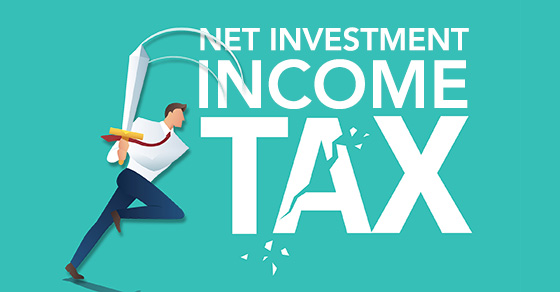
High-income taxpayers face a 3.8% net investment income tax (NIIT) that’s imposed in addition to regular income tax. Fortunately, there are some steps you may be able to take to reduce its impact.
The NIIT applies to you only if modified adjusted gross income (MAGI) exceeds:
- $250,000 for married taxpayers filing jointly and surviving spouses,
- $125,000 for married taxpayers filing separately,
- $200,000 for unmarried taxpayers and heads of household.
The amount subject to the tax is the lesser of your net investment income or the amount by which your MAGI exceeds the threshold ($250,000, $200,000, or $125,000) that applies to you.
Net investment income includes interest, dividend, annuity, royalty, and rental income, unless those items were derived in the ordinary course of an active trade or business. In addition, other gross income from a trade or business that’s a passive activity is subject to the NIIT, as is income from a business trading in financial instruments or commodities.
There are many types of income that are exempt from the NIIT. For example, tax-exempt interest and the excluded gain from the sale of your main home aren’t subject to the tax. Distributions from qualified retirement plans aren’t subject to the NIIT. Wages and self-employment income also aren’t subject to the NIIT, though they may be subject to a different Medicare surtax.
It’s important to remember the NIIT applies only if you have net investment income and your MAGI exceeds the applicable thresholds above. But by following strategies, you may be able to minimize net investment income.
Investment choices
If your income is high enough to trigger the NIIT, shifting some income investments to tax-exempt bonds could result in less exposure to the tax. Tax-exempt bonds lower your MAGI and avoid the NIIT.
Dividend-paying stocks are taxed more heavily as a result of the NIIT. The maximum income tax rate on qualified dividends is 20%, but the rate becomes 23.8% with the NIIT.
As a result, you may want to consider rebalancing your investment portfolio to emphasize growth stocks over dividend-paying stocks. While the capital gain from these investments will be included in net investment income, there are two potential benefits: 1) the tax will be deferred because the capital gain won’t be subject to the NIIT until the stock is sold and 2) capital gains can be offset by capital losses, which isn’t the case with dividends.
Qualified plans
Because distributions from qualified retirement plans are exempt from the NIIT, upper-income taxpayers with some control over their situations (such as small business owners) might want to make greater use of qualified plans.
These are only a couple of strategies you may be able to employ. You also may be able to make moves related to charitable donations, passive activities and rental income that may allow you to minimize the NIIT. If you’re subject to the tax, you should include it in your tax planning. Consult with us for tax-planning strategies.
Hiring your minor children this summer? Reap tax and nontax benefits

If you’re a business owner and you hire your children this summer, you can obtain tax breaks and other nontax benefits. The kids can gain on-the-job experience, spend time with you, save for college and learn how to manage money. And you may be able to:
- Shift your high-taxed income into tax-free or low-taxed income,
- Realize payroll tax savings (depending on the child’s age and how your business is organized), and
- Enable retirement plan contributions for the children.
A legitimate job
If you hire your child, you get a business tax deduction for employee wage expenses. In turn, the deduction reduces your federal income tax bill, your self-employment tax bill (if applicable), and your state income tax bill (if applicable). However, in order for your business to deduct the wages as a business expense, the work performed by the child must be legitimate and the child’s salary must be reasonable.
For example, let’s say you operate as a sole proprietor and you’re in the 37% tax bracket. You hire your 16-year-old daughter to help with office work on a full-time basis during the summer and part-time into the fall. Your daughter earns $10,000 during 2021 and doesn’t have any other earnings.
You save $3,700 (37% of $10,000) in income taxes at no tax cost to your daughter, who can use her 2021 $12,550 standard deduction to completely shelter her earnings.
Your family’s taxes are cut even if your daughter’s earnings exceed her standard deduction. Why? The unsheltered earnings will be taxed to the daughter beginning at a rate of 10%, instead of being taxed at your higher rate.
How payroll taxes might be saved
If your business isn’t incorporated, your child’s wages are exempt from Social Security, Medicare and FUTA taxes if certain conditions are met. Your child must be under age 18 for this to apply (or under age 21 in the case of the FUTA tax exemption). Contact us for how this works.
Be aware that there’s no FICA or FUTA exemption for employing a child if your business is incorporated or a partnership that includes nonparent partners. And payments for the services of your child are subject to income tax withholding, regardless of age, no matter what type of entity you operate.
Begin saving for retirement
Your business also may be able to provide your child with retirement benefits, depending on the type of plan you have and how it defines qualifying employees. And because your child has earnings from his or her job, he can contribute to a traditional IRA or Roth IRA and begin to build a nest egg. For the 2021 tax year, a working child can contribute the lesser of his or her earned income, or $6,000, to an IRA or a Roth.
Keep accurate records
As you can see, hiring your child can be a tax-smart idea. Be sure to keep the same records as you would for other employees to substantiate the hours worked and duties performed (such as timesheets and job descriptions). Issue your child a Form W-2. Contact us if you have questions about how these rules apply to your situation.
Are you ready for the return of trade shows and other events?

It’s happening. With vaccination rates rising and the more severe effects of the pandemic trending downward, several industries have announced in-person trade shows for later this year. Meanwhile, over the summer, businesses will likely see marketing opportunities in other events such as “sidewalk days” and local festivals.
Are you and your team ready to get back out there? Here are some ways to improve the odds that you’ll get a satisfying return on investment:
Do your research. Well before the trade show or event, contact the host city’s convention and visitor’s bureau or chamber of commerce. These offices often offer concierge services such as tours and free press releases. Determine whether any such perks could help you establish a strong presence early.
Reach out to top customers and prospects. Make sure those most likely to buy from you know about the trade show or event. It costs little to nothing to add to business correspondence: “P.S. We’ll be attending the XYZ Association Conference, September 16 through 19. Please stop by Booth #1234 and see us!” Have your customer service staff mention the trade show or event in phone calls. Add a banner to your email signatures.
Arrive ready to do business. Don’t assume a trade show or other event will be all talk and no action. Bring purchase order agreements, contractual paperwork, point-of-sale devices — whatever you need to close a sale should the opportunity arise.
Go easy on the freebies. All too often, trade shows or other events devolve into trick-or-treating for adults. Handing out goodies with little or no conversation isn’t cost-effective. Even if you ask visitors to fill out a questionnaire, they may write down bogus contact info to avoid follow-up calls. Generally, it’s best to start with a conversation. If that discussion goes somewhere, then your staff member can ask for contact info and give the person one of your cards as well as an incentive gift.
Strategize sales pitches. The most productive trade show or event interactions tend to be conversations in which the visitor leaves the booth feeling like your business could solve a problem. Work with your staff to devise strong opening lines and a concise “elevator pitch” for the products or services you’ll be focusing on.
During discussions, ask open-ended questions. Which features of our product could help you the most? What challenges do you face that our services could enable you to overcome? Inspire prospects with the real-world advantages of what you do rather than force them to sit through a canned speech.
Devise a winning game plan. Trade shows and other events are usually like competitive sports. You’re going to win some and you’re going to lose some. The most important thing is to come up with a cohesive game plan — including a sensible budget — and stick to it.
Many parents will receive advance tax credit payments beginning July 15

Eligible parents will soon begin receiving payments from the federal government. The IRS announced that the 2021 advance child tax credit (CTC) payments, which were created in the American Rescue Plan Act (ARPA), will begin being made on July 15, 2021.
How have child tax credits changed?
The ARPA temporarily expanded and made CTCs refundable for 2021. The law increased the maximum CTC — for 2021 only — to $3,600 for each qualifying child under age 6 and to $3,000 per child for children ages 6 to 17, provided their parents’ income is below a certain threshold.
Advance payments will receive up to $300 monthly for each child under 6, and up to $250 monthly for each child 6 and older. The increased credit amount will be reduced or phased out, for households with modified adjusted gross income above the following thresholds:
- $150,000 for married taxpayers filing jointly and qualifying widows and widowers;
- $112,500 for heads of household; and
- $75,000 for other taxpayers.
Under prior law, the maximum annual CTC for 2018 through 2025 was $2,000 per qualifying child but the income thresholds were higher and some of the qualification rules were different.
Important: If your income is too high to receive the increased advance CTC payments, you may still qualify to claim the $2,000 CTC on your tax return for 2021.
What is a qualifying child?
For 2021, a “qualifying child” with respect to a taxpayer is defined as one who is under age 18 and who the taxpayer can claim as a dependent. That means a child related to the taxpayer who, generally, lived with the taxpayer for at least six months during the year. The child also must be a U.S. citizen or national or a U.S. resident.
How and when will advance payments be sent out?
Under the ARPA, the IRS is required to establish a program to make periodic advance payments which in total equal 50% of IRS’s estimate of the eligible taxpayer’s 2021 CTCs, during the period July 2021 through December 2021. The payments will begin on July 15, 2021. After that, they’ll be made on the 15th of each month unless the 15th falls on a weekend or holiday. Parents will receive the monthly payments through direct deposit, paper check or debit card.
Who will benefit from these payments and do they have to do anything to receive them?
According to the IRS, about 39 million households covering 88% of children in the U.S. “are slated to begin receiving monthly payments without any further action required.” Contact us if you have questions about the child tax credit.
The IRS has announced 2022 amounts for Health Savings Accounts

The IRS recently released guidance providing the 2022 inflation-adjusted amounts for Health Savings Accounts (HSAs).
Fundamentals of HSAs
An HSA is a trust created or organized exclusively for the purpose of paying the “qualified medical expenses” of an “account beneficiary.” An HSA can only be established for the benefit of an “eligible individual” who is covered under a “high deductible health plan.” In addition, a participant can’t be enrolled in Medicare or have other health coverage (exceptions include dental, vision, long-term care, accident and specific disease insurance).
A high deductible health plan (HDHP) is generally a plan with an annual deductible that isn’t less than $1,000 for self-only coverage and $2,000 for family coverage. In addition, the sum of the annual deductible and other annual out-of-pocket expenses required to be paid under the plan for covered benefits (but not for premiums) can’t exceed $5,000 for self-only coverage, and $10,000 for family coverage.
Within specified dollar limits, an above-the-line tax deduction is allowed for an individual’s contribution to an HSA. This annual contribution limitation and the annual deductible and out-of-pocket expenses under the tax code are adjusted annually for inflation.
Inflation adjustments for next year
In Revenue Procedure 2021-25, the IRS released the 2022 inflation-adjusted figures for contributions to HSAs, which are as follows:
Annual contribution limitation. For calendar year 2022, the annual contribution limitation for an individual with self-only coverage under a HDHP will be $3,650. For an individual with family coverage, the amount will be $7,300. This is up from $3,600 and $7,200, respectively, for 2021.
High deductible health plan defined. For calendar year 2022, an HDHP will be a health plan with an annual deductible that isn’t less than $1,400 for self-only coverage or $2,800 for family coverage (these amounts are unchanged from 2021). In addition, annual out-of-pocket expenses (deductibles, co-payments, and other amounts, but not premiums) won’t be able to exceed $7,050 for self-only coverage or $14,100 for family coverage (up from $7,000 and $14,000, respectively, for 2021).
Many advantages
There are a variety of benefits to HSAs. Contributions to the accounts are made on a pre-tax basis. The money can accumulate tax free year after year and be can be withdrawn tax free to pay for a variety of medical expenses such as doctor visits, prescriptions, chiropractic care and premiums for long-term care insurance. In addition, an HSA is “portable.” It stays with an account holder if he or she changes employers or leaves the workforce. If you have questions about HSAs at your business, contact your employee benefits and tax advisors.
Getting max value out of your CRM software

The days of the Rolodex are long gone. To connect with customers and prospects, many businesses now rely on customer relationship management (CRM) software. These solutions give users easy access to comprehensive information — including detailed notes on existing connections with targeted individuals and companies — that can enhance marketing efforts and boost sales.
CRM software also typically includes categorized lists of customers, prospects and other valuable contacts. It goes beyond the standard contact info to collect biographical data, track interactions over time and map connections. You and your employees can use it to prompt, craft and automate communications.
Whether you’re just now shopping for CRM software, or already have a system in place, you can and should take various steps to ensure you get max value out of this technological investment.
Keys to success
For starters, make a point of aligning CRM usage with your company’s overall strategic objectives. For example, if one of your goals is to grow revenue in a certain market by 20%, you could make developing customer/prospect profile reports on the CRM system a stated and measured objective.
As is often the case with technology solutions, some employees may be skeptical about the value of the software while others will be enthusiastic supporters. Encourage “CRM champions” to share their success stories from using the solution with others. This will be more convincing than having someone from IT describe the software’s features and how they might help. As the saying goes, show — don’t tell.
Training is another important factor in successfully implementing CRM software. Introduce (or reintroduce) your employees to the solution’s benefits by embedding CRM lessons in meetings or training sessions about other topics, such as billing or revenue building.
You may be able to rely on webinars produced by (or in association with) the software provider to train many employees. You could also offer “lunch and learn” sessions on topics such as how to best conduct customer interviews and input that information into the CRM system to enhance the relationship. If necessary, certain employees — particularly those in sales and marketing — should receive personalized one-on-one sessions with a trainer to ensure they’ve truly mastered the software.
It takes time
For many businesses, the introduction of CRM software means not only a transformation of how work is accomplished, but also a change in culture. Busting out of “information silos” and getting everyone to share customer insights and data doesn’t happen overnight.
So, if you have a CRM solution in place, don’t give up on its potential. And if you’re just implementing one now, exercise patience and diligence when training employees to use it. We can help you set a reasonable budget for technology purchases such as CRM software and measure your return on investment.
Still have questions after you file your tax return?

Even after your 2020 tax return has been successfully filed with the IRS, you may still have some questions about the return. Here are brief answers to three questions that we’re frequently asked at this time of year.
Are you wondering when you will receive your refund?
The IRS has an online tool that can tell you the status of your refund. Go to irs.gov and click on “Get Your Refund Status.” You’ll need your Social Security number, filing status and the exact refund amount.
Which tax records can you throw away now?
At a minimum, keep tax records related to your return for as long as the IRS can audit your return or assess additional taxes. In general, the statute of limitations is three years after you file your return. So you can generally get rid of most records related to tax returns for 2017 and earlier years. (If you filed an extension for your 2017 return, hold on to your records until at least three years from when you filed the extended return.)
However, the statute of limitations extends to six years for taxpayers who understate their gross income by more than 25%.
You should hang on to certain tax-related records longer. For example, keep the actual tax returns indefinitely, so you can prove to the IRS that you filed legitimate returns. (There’s no statute of limitations for an audit if you didn’t file a return or you filed a fraudulent one.)
When it comes to retirement accounts, keep records associated with them until you’ve depleted the account and reported the last withdrawal on your tax return, plus three (or six) years. And retain records related to real estate or investments for as long as you own the asset, plus at least three years after you sell it and report the sale on your tax return. (You can keep these records for six years if you want to be extra safe.)
If you overlooked claiming a tax break, can you still collect a refund for it?
In general, you can file an amended tax return and claim a refund within three years after the date you filed your original return or within two years of the date you paid the tax, whichever is later.
However, there are a few opportunities when you have longer to file an amended return. For example, the statute of limitations for bad debts is longer than the usual three-year time limit for most items on your tax return. In general, you can amend your tax return to claim a bad debt for seven years from the due date of the tax return for the year that the debt became worthless.
Year-round tax help
Contact us if you have questions about retaining tax records, receiving your refund or filing an amended return. We’re not just here at tax filing time. We’re available all year long.
An S corporation could cut your self-employment tax

If your business is organized as a sole proprietorship or as a wholly owned limited liability company (LLC), you’re subject to both income tax and self-employment tax. There may be a way to cut your tax bill by conducting business as an S corporation.
Fundamentals of self-employment tax
The self-employment tax is imposed on 92.35% of self-employment income at a 12.4% rate for Social Security up to a certain maximum ($142,800 for 2021) and at a 2.9% rate for Medicare. No maximum tax limit applies to the Medicare tax. An additional 0.9% Medicare tax is imposed on income exceeding $250,000 for married couples ($125,000 for married persons filing separately) and $200,000 in all other cases.
What if you conduct your business as a partnership in which you’re a general partner? In that case, in addition to income tax, you’re subject to the self-employment tax on your distributive share of the partnership’s income. On the other hand, if you conduct your business as an S corporation, you’ll be subject to income tax, but not self-employment tax, on your share of the S corporation’s income.
An S corporation isn’t subject to tax at the corporate level. Instead, the corporation’s items of income, gain, loss and deduction are passed through to the shareholders. However, the income passed through to the shareholder isn’t treated as self-employment income. Thus, by using an S corporation, you may be able to avoid self-employment income tax.
Keep your salary “reasonable”
Be aware that the IRS requires that the S corporation pay you reasonable compensation for your services to the business. The compensation is treated as wages subject to employment tax (split evenly between the corporation and the employee), which is equivalent to the self-employment tax. If the S corporation doesn’t pay you reasonable compensation for your services, the IRS may treat a portion of the S corporation’s distributions to you as wages and impose Social Security taxes on the amount it considers wages.
There’s no simple formula regarding what’s considered reasonable compensation. Presumably, reasonable compensation is the amount that unrelated employers would pay for comparable services under similar circumstances. There are many factors that should be taken into account in making this determination.
Converting from a C corporation
There may be complications if you convert a C corporation to an S corporation. A “built-in gains tax” may apply when you dispose of appreciated assets held by the C corporation at the time of the conversion. However, there may be ways to minimize its impact.
Many factors to consider
Contact us if you’d like to discuss the factors involved in conducting your business as an S corporation, and how much the business should pay you as compensation.
Look at your employee handbook with fresh eyes

For businesses, so much has changed over the past year or so. The COVID-19 pandemic hit suddenly and companies were forced to react quickly — sending many employees home to work remotely and making myriad other tweaks and revisions to their processes.
Understandably, you may not have fully documented all the changes you’ve made. But you should; and among the ideal places to do so is in your employee handbook. Now that optimism is rising for a return to relative normalcy, why not look at your handbook with fresh eyes and ensure it accurately represents your company’s policies and procedures.
Legal considerations
Among the primary reasons companies create employee handbooks is protection from legal challenges. Clearly written HR policies and procedures will strengthen your defense if an employee sues. Don’t wait to test this theory in court: Ask your attorney to review the legal soundness of your handbook and make all recommended changes.
Why is this so important? A supervisor without a legally sound and updated employee handbook is like a coach with an old rulebook. You can’t expect supervisors or team members to play by the rules if they don’t know whether and how those rules have changed.
Make sure employees sign a statement acknowledging that they’ve read and understood the latest version of your handbook. Obviously, this applies to new hires, but also ask current employees to sign a new statement when you make major revisions.
Motivational language
Employee handbooks can also communicate the total value of working for your company. Workers don’t always appreciate the benefits their employers provide. This is often because they, and maybe even some managers, aren’t fully aware of those offerings.
Your handbook should express that you care about employees’ welfare — a key point to reinforce given the events of the past year. It also should show precisely how you provide support.
To do so, identify and explain all employee benefits. Don’t stop with the obvious descriptions of health care and retirement plans. Describe your current paid sick time and paid leave policies, which have no doubt been transformed by federal COVID relief measures, as well as any work schedule flexibility and fringe benefits that you offer.
Originality and specificity
One word of caution: When updating their handbooks, some businesses acquire a “best in class” example from another employer and try to adopt it as their own. Doing so generally isn’t a good idea. That other handbook’s tone may be inappropriate or at least inconsistent with your industry or organizational culture.
Similarly, be careful about downloading handbook templates from the Internet. Chances are you’ll have no idea who wrote the original, let alone if it complies with current laws and regulations.
Document and guide
Your employee handbook should serve as a clearly written document for legal purposes and a helpful guide for your company’s workforce. Our firm can help you track your employment costs and develop solutions to any challenges you face.
Working in the gig economy results in tax obligations

Before the COVID-19 pandemic hit, the number of people engaged in the “gig” or sharing economy had been growing, according to several reports. And reductions in working hours during the pandemic have caused even more people to turn to gig work to make up lost income. There are tax consequences for the people who perform these jobs, which include providing car rides, delivering food, walking dogs and providing other services.
Bottom line: If you receive income from freelancing or from one of the online platforms offering goods and services, it’s generally taxable. That’s true even if the income comes from a side job and even if you don’t receive an income statement reporting the amount of money you made.
Basics for gig workers
The IRS considers gig workers as those who are independent contractors and conduct their jobs through online platforms. Examples include Uber, Lyft, Airbnb and DoorDash.
Unlike traditional employees, independent contractors don’t receive benefits associated with employment or employer-sponsored health insurance. They also aren’t covered by the minimum wage or other protections of federal laws and they aren’t part of states’ unemployment insurance systems. In addition, they’re on their own when it comes to retirement savings and taxes.
Pay taxes throughout the year
If you’re part of the gig or sharing economy, here are some tax considerations.
- You may need to make quarterly estimated tax payments because your income isn’t subject to withholding. These payments are generally due on April 15, June 15, September 15 and January 15 of the following year. (If a due date falls on a Saturday or Sunday, the due date becomes the next business day.)
- You should receive a Form 1099-NEC, Nonemployee Compensation, a Form 1099-K or other income statement from the online platform.
- Some or all of your business expenses may be deductible on your tax return, subject to the normal tax limitations and rules. For example, if you provide rides with your own car, you may be able to deduct depreciation for wear and tear and deterioration of the vehicle. Be aware that if you rent a room in your main home or vacation home, the rules for deducting expenses can be complex.
Keeping records
It’s important to keep good records tracking income and expenses in case you are audited by the IRS or state tax authorities. Contact us if you have questions about your tax obligations as a gig worker or the deductions you can claim. You don’t want to get an unwanted surprise when you file your tax return.
Help ensure the IRS doesn’t reclassify independent contractors as employees

Many businesses use independent contractors to help keep their costs down. If you’re among them, make sure that these workers are properly classified for federal tax purposes. If the IRS reclassifies them as employees, it can be a costly error.
It can be complex to determine whether a worker is an independent contractor or an employee for federal income and employment tax purposes. If a worker is an employee, your company must withhold federal income and payroll taxes, pay the employer’s share of FICA taxes on the wages, plus FUTA tax. A business may also provide the worker with fringe benefits if it makes them available to other employees. In addition, there may be state tax obligations.
On the other hand, if a worker is an independent contractor, these obligations don’t apply. In that case, the business simply sends the contractor a Form 1099-NEC for the year showing the amount paid (if it’s $600 or more).
What are the factors the IRS considers?
Who is an “employee?” Unfortunately, there’s no uniform definition of the term.
The IRS and courts have generally ruled that individuals are employees if the organization they work for has the right to control and direct them in the jobs they’re performing. Otherwise, the individuals are generally independent contractors. But other factors are also taken into account including who provides tools and who pays expenses.
Some employers that have misclassified workers as independent contractors may get some relief from employment tax liabilities under Section 530. This protection generally applies only if an employer meets certain requirements. For example, the employer must file all federal returns consistent with its treatment of a worker as a contractor and it must treat all similarly situated workers as contractors.
Note: Section 530 doesn’t apply to certain types of workers.
Should you ask the IRS to decide?
Be aware that you can ask the IRS (on Form SS-8) to rule on whether a worker is an independent contractor or employee. However, be aware that the IRS has a history of classifying workers as employees rather than independent contractors.
Businesses should consult with us before filing Form SS-8 because it may alert the IRS that your business has worker classification issues — and it may unintentionally trigger an employment tax audit.
It may be better to properly treat a worker as an independent contractor so that the relationship complies with the tax rules.
Workers who want an official determination of their status can also file Form SS-8. Disgruntled independent contractors may do so because they feel entitled to employee benefits and want to eliminate self-employment tax liabilities.
If a worker files Form SS-8, the IRS will notify the business with a letter. It identifies the worker and includes a blank Form SS-8. The business is asked to complete and return the form to the IRS, which will render a classification decision.
These are the basic tax rules. In addition, the U.S. Labor Department has recently withdrawn a non-tax rule introduced under the Trump administration that would make it easier for businesses to classify workers as independent contractors. Contact us if you’d like to discuss how to classify workers at your business. We can help make sure that your workers are properly classified.
The Restaurant Revitalization Fund is now live

The COVID-19 pandemic has affected various industries in very different ways. Widespread lockdowns and discouraged movement have led to increased profitability for some manufacturers and many big-box retailers. The restaurant industry, however, has had a much harder go of it — especially smaller, privately owned businesses in economically challenged areas.
In response, the Small Business Administration (SBA) has launched the Restaurant Revitalization Fund (RRF). It was established under the American Rescue Plan Act (ARPA) signed into law in March. The RRF went live for applications on May 3, and the SBA is strongly urging interested, eligible businesses to apply as soon as possible.
Who’s eligible?
Funds are available for restaurants, of course, but also many other similar types of businesses. Food stands, trucks and carts can apply, as well as bars, saloons, lounges and taverns. Catering companies may also file an RRF application.
In addition, the program is available to snack and nonalcoholic beverage bars, as well as “licensed facilities or premises of a beverage alcohol producer where the public may taste, sample, or purchase products,” according to the SBA.
For some restaurant-like businesses, on-site sales to the public must comprise at least 33% of gross receipts. These include bakeries; inns; wineries and distilleries; breweries and/or microbreweries; and brewpubs, tasting rooms and taprooms.
How much funding is available?
Under the ARPA, the RRF received a total of $28.6 billion in direct relief funds for restaurants and other similar establishments that have suffered economic hardship and substantial operational losses because of the COVID-19 pandemic.
The dollar amount an eligible business can receive under the RRF will equal its decrease in gross revenues during 2020 compared to gross revenues in 2019 — less the amount of any Paycheck Protection Program (PPP) loans received. Other amounts must be excluded from 2020 gross receipts as well, including:
- SBA Section 1112 debt relief,
- SBA Economic Injury Disaster Loans,
- SBA advances (targeted and otherwise), and
- Local small business grants.
Overall, the RFF may provide a qualifying establishment with funding equal to its pandemic-related revenue loss up to $10 million per business and not more than $5 million per physical location. Recipients must use funds for allowable expenses by March 11, 2023.
What will we need to apply?
A timely, properly completed application is critical to acquiring this funding. An applicant business must submit documentation of its 2020 and 2019 gross receipts, as well as at least one of the following:
- A federal tax return,
- A point of sale report, or
- Externally or internally prepared financial statements.
Warning: Internally prepared financials could significantly delay SBA review of your application.
You’ll also need to disclose the amount of any PPP loans you’ve received. However, the SBA’s online application system should provide this information automatically.
Get started now
To get started, register for an account at restaurants.sba.gov. The SBA advises applicants to first download a sample version of the application here. Our firm can help you identify necessary documentation and navigate the process.
Tax filing deadline is coming up: What to do if you need more time

“Tax day” is just around the corner. This year, the deadline for filing 2020 individual tax returns is Monday, May 17, 2021. The IRS postponed the usual April 15 due date due to the COVID-19 pandemic. If you still aren’t ready to file your return, you should request a tax-filing extension. Anyone can request one and in some special situations, people can receive more time without even asking.
Taxpayers can receive more time to file by submitting a request for an automatic extension on IRS Form 4868. This will extend the filing deadline until October 15, 2021. But be aware that an extension of time to file your return doesn’t grant you an extension of time to pay your taxes. You need to estimate and pay any taxes owed by your regular deadline to help avoid possible penalties. In other words, your 2020 tax payments are still due by May 17.
Victims of certain disasters
If you were a victim of the February winter storms in Texas, Oklahoma and Louisiana, you have until June 15, 2021, to file your 2020 return and pay any tax due without submitting Form 4868. Victims of severe storms, flooding, landslides and mudslides in parts of Alabama and Kentucky have also recently been granted extensions. For eligible Kentucky victims, the new deadline is June 30, 2021, and eligible Alabama victims have until August 2, 2021.
That’s because the IRS automatically provides filing and penalty relief to taxpayers with addresses in federally declared disaster areas. Disaster relief also includes more time for making 2020 contributions to IRAs and certain other retirement plans and making 2021 estimated tax payments. Relief is also generally available if you live outside a federally declared disaster area, but you have a business or tax records located in the disaster area. Similarly, relief may be available if you’re a relief worker assisting in a covered disaster area.
Located in a combat zone
Military service members and eligible support personnel who are serving in a combat zone have at least 180 days after they leave the combat zone to file their tax returns and pay any tax due. This includes taxpayers serving in Iraq, Afghanistan and other combat zones.
These extensions also give affected taxpayers in a combat zone more time for a variety of other tax-related actions, including contributing to an IRA. Various circumstances affect the exact length of time available to taxpayers.
Outside the United States
If you’re a U.S. citizen or resident alien who lives or works outside the U.S. (or Puerto Rico), you have until June 15, 2021, to file your 2020 tax return and pay any tax due.
The special June 15 deadline also applies to members of the military on duty outside the U.S. and Puerto Rico who don’t qualify for the longer combat zone extension described above.
While taxpayers who are abroad get more time to pay, interest applies to any payment received after this year’s May 17 deadline. It’s currently charged at the rate of 3% per year, compounded daily.
We can help
If you need an appointment to get your tax return prepared, contact us. We can also answer any questions you may have about filing an extension.
Ensure competitive intelligence efforts are helpful, not harmful

With so many employees working remotely these days, engaging in competitive intelligence has never been easier. The Internet as a whole, and social media specifically, create a data-rich environment in which you can uncover a wide variety of information on what your competitors are up to. All you or an employee need do is open a browser tab and start looking.
But should you? Well, competitive intelligence — formally defined as the gathering and analysis of publicly available information about one or more competitors for strategic planning purposes — has been around for decades. One could say that a business owner would be imprudent not to keep tabs on his or her fiercest competition.
The key is to engage in competitive intelligence legally and ethically. Here are some best practices to keep in mind:
Know the rules and legal risks. Naturally, the very first rule of competitive intelligence is to avoid inadvertently breaking the law or otherwise exposing yourself or your company to a legal challenge. The technicalities of intellectual property law are complex; it can be easy to run afoul of the rules unintentionally.
When accessing or studying another company’s products or services, proceed carefully and consult your attorney if you fear you’re on unsteady ground and particularly before putting any lessons learned into practice.
Vet your sources carefully. While gathering information, you or your employees may establish sources within the industry or even with a specific competitor. Be sure you don’t encourage these sources, even accidentally, to violate any standing confidentiality or noncompete agreements.
Don’t hide behind secret identities. As easy as it might be to create a “puppet account” on social media to follow and even comment on a competitor’s posts, the negative fallout of such an account being exposed can be devastating. Also, if you sign up to receive marketing e-mails from a competitor, use an official company address and, if asked, state “product or service evaluation” as the reason you’re subscribing.
Train employees and keep an eye on consultants. Some business owners might assume their employees would never engage in unethical or even illegal activities when gathering information about a competitor. Yet it happens. One glaring example occurred in 2015, when the Federal Bureau of Investigations and U.S. Department of Justice investigated a Major League Baseball team because one of its employees allegedly hacked into a competing team’s computer systems. The investigation concluded in 2017 with a lengthy prison term for the perpetrator and industry fines and other penalties for his employer.
Discourage employees from doing competitive intelligence on their own. Establish a formal policy, reviewed by an attorney, that includes ethics training and strict management oversight. If you engage consultants or independent contractors, be sure they know and abide by the policy as well. Our firm can help you identify the costs and measure the financial benefits of competitive intelligence.
Unemployed last year? Buying health insurance this year? You may benefit from favorable new changes

In recent months, there have been a number of tax changes that may affect your individual tax bill. Many of these changes were enacted to help mitigate the financial damage caused by COVID-19.
Here are two changes that may result in tax savings for you on your 2020 or 2021 tax returns. The 2020 return is due on May 17, 2021 (because the IRS extended many due dates from the usual April 15 this year). If you can’t file by that date, you can request an extra five months to file your 2020 tax return by October 15, 2021. Your 2021 return will be due in April of 2022.
1.Some unemployment compensation from last year is tax free.
Many people lost their jobs last year due to pandemic shutdowns. Generally, unemployment compensation is included in gross income for federal tax purposes. But thanks to the American Rescue Plan Act (ARPA), enacted on March 11, 2021, up to $10,200 of unemployment compensation can be excluded from federal gross income on 2020 federal returns for taxpayers with an adjusted gross income (AGI) under $150,000. In the case of a joint return, the first $10,200 per spouse isn’t included in gross income. That means if both spouses lost their jobs and collected unemployment last year, they’re eligible for up to a $20,400 exclusion.
However, keep in mind that some states tax unemployment compensation that is exempt from federal income tax under the ARPA.
The IRS has announced that taxpayers who already filed their 2020 individual tax returns without taking advantage of the 2020 unemployment benefit exclusion, don’t need to file an amended return to take advantage of it. Any resulting overpayment of tax will be either refunded or applied to other outstanding taxes owed.
The IRS will take steps in the spring and summer to make the appropriate change to the returns, which may result in a refund. The first refunds are expected to be made in May and will continue into the summer.
2.More taxpayers may qualify for a tax credit for buying health insurance.
The premium tax credit (PTC) is a refundable credit that assists individuals and families in paying for health insurance obtained through a Marketplace established under the Affordable Care Act. The ARPA made several significant enhancements to this credit.
For example, under pre-ARPA law, individuals with household income above 400% of the federal poverty line (FPL) weren’t eligible for the PTC. But under the new law, for 2021 and 2022, the premium tax credit is available to taxpayers with household incomes that exceed 400% of the FPL. This change increases the number of people who are eligible for the credit.
Let’s say a 45-year-old unmarried man has income of $58,000 (450% of FPL) in 2021. He wouldn’t have been eligible for the PTC before ARPA was enacted. But under the ARPA, he’s eligible for a premium tax credit of about $1,250.
Other favorable changes were also made to the premium tax credit.
Many more changes
The 2020 unemployment benefit exclusion and the enhanced premium tax credit are just two of the many recent tax changes that may be beneficial to you. Contact us if you have questions about your situation.
Know the ins and outs of “reasonable compensation” for a corporate business owner

Owners of incorporated businesses know that there’s a tax advantage to taking money out of a C corporation as compensation rather than as dividends. The reason: A corporation can deduct the salaries and bonuses that it pays executives, but not dividend payments. Thus, if funds are paid as dividends, they’re taxed twice, once to the corporation and once to the recipient. Money paid out as compensation is only taxed once — to the employee who receives it.
However, there are limits to how much money you can take out of the corporation this way. Under tax law, compensation can be deducted only to the extent that it’s reasonable. Any unreasonable portion isn’t deductible and, if paid to a shareholder, may be taxed as if it were a dividend. Keep in mind that the IRS is generally more interested in unreasonable compensation payments made to someone “related” to a corporation, such as a shareholder-employee or a member of a shareholder’s family.
Determining reasonable compensation
There’s no easy way to determine what’s reasonable. In an audit, the IRS examines the amount that similar companies would pay for comparable services under similar circumstances. Factors that are taken into account include the employee’s duties and the amount of time spent on those duties, as well as the employee’s skills, expertise and compensation history. Other factors that may be reviewed are the complexities of the business and its gross and net income.
There are some steps you can take to make it more likely that the compensation you earn will be considered “reasonable,” and therefore deductible by your corporation. For example, you can:
- Keep compensation in line with what similar businesses are paying their executives (and keep whatever evidence you can get of what others are paying to support what you pay).
- In the minutes of your corporation’s board of directors, contemporaneously document the reasons for compensation paid. For example, if compensation is being increased in the current year to make up for earlier years in which it was low, be sure that the minutes reflect this. (Ideally, the minutes for the earlier years should reflect that the compensation paid then was at a reduced rate.) Cite any executive compensation or industry studies that back up your compensation amounts.
- Avoid paying compensation in direct proportion to the stock owned by the corporation’s shareholders. This looks too much like a disguised dividend and will probably be treated as such by IRS.
- If the business is profitable, pay at least some dividends. This avoids giving the impression that the corporation is trying to pay out all of its profits as compensation.
You can avoid problems and challenges by planning ahead. If you have questions or concerns about your situation, contact us.
Changes to premium tax credit could increase penalty risk for some businesses

The premium tax credit (PTC) is a refundable credit that helps individuals and families pay for insurance obtained from a Health Insurance Marketplace (commonly known as an “Exchange”). A provision of the Affordable Care Act (ACA) created the credit.
The American Rescue Plan Act (ARPA), signed into law in March 2021, made several significant enhancements to the PTC. Although these changes expand access to the credit for individuals and families, they could increase the risk of some businesses incurring an ACA penalty.
More eligible people
Under pre-ARPA law, individuals with household income above 400% of the federal poverty line (FPL) were ineligible for the PTC. Under ARPA, for 2021 and 2022, the PTC is available to taxpayers with household incomes that exceed 400% of the FPL. This change will increase the number of PTC-eligible people.
For example, a 45-year-old single person earning $58,000 in 2021 (450% of FPL) would have been ineligible for the PTC under pre-ARPA law. Under ARPA, that individual is eligible for a PTC of about $1,250.
Lower income cap
The PTC is calculated on a sliding scale based on household income, expressed as a percentage of the FPL. The amount of the credit is limited to the excess of the premiums for the applicable benchmark plan over the taxpayer’s required share of those premiums. The required share comes from a table divided into income tiers.
Because the required share is less under the new tables for 2021 and 2022 than it otherwise would have been, the PTC will be greater. Under pre-ARPA law, a taxpayer might have had to spend as much as 9.83% of household income in 2021 on health insurance premiums. Under ARPA, that amount is capped at 8.5% for 2021 and 2022.
More penalty exposure
As mentioned, the expanded PTC will help individuals and families obtain coverage through a Health Insurance Marketplace. However, because applicable large employers (ALEs) potentially face shared responsibility penalties if full-time employees receive PTCs, expanded eligibility could increase penalty exposure for ALEs that don’t offer affordable, minimum-value coverage to all full-time employees as mandated under the ACA.
An employer’s size, for ACA purposes, is determined in any given year by its number of employees in the previous year. Generally, if your company had 50 or more full-time or full-time equivalent employees on average during the previous year, you’ll be considered an ALE for the current calendar year. A full-time employee is someone employed on average at least 30 hours of service per week.
Assess your risk
If your business is an ALE, be sure you’re aware of this development when designing or revising your employer-provided health care benefits. Should you decide to add staff this year, keep an eye on the tipping point of when you could become an ALE. Our firm can further explain the ARPA’s premium tax credit provisions and help you determine whether you qualify as an ALE — or may soon will.
Home sales: How to determine your “basis”

The housing market in many parts of the country is strong this spring. If you’re buying or selling a home, you should know how to determine your “basis.”
How it works
You can claim an itemized deduction on your tax return for real estate taxes and home mortgage interest. Most other home ownership costs can’t be deducted currently. However, these costs may increase your home’s “basis” (your cost for tax purposes). And a higher basis can save taxes when you sell.
The law allows an exclusion from income for all or part of the gain realized on the sale of your home. The general exclusion limit is $250,000 ($500,000 for married taxpayers). You may feel the exclusion amount makes keeping track of the basis relatively unimportant. Many homes today sell for less than $500,000. However, that reasoning doesn’t take into account what may happen in the future. If history is any indication, a home that’s owned for 20 or 30 years appreciates greatly. Thus, you want your basis to be as high as possible in order to avoid or reduce the tax that may result when you eventually sell.
Good recordkeeping
To prove the amount of your basis, keep accurate records of your purchase price, closing costs, and other expenses that increase your basis. Save receipts and other records for improvements and additions you make to the home. When you eventually sell, your basis will establish the amount of your gain. Keep the supporting documentation for at least three years after you file your return for the sale year.
Start with the purchase price
The main element in your home’s basis is the purchase price. This includes your down payment and any debt, such as a mortgage. It also includes certain settlement or closing costs. If you had your house built on land you own, your basis is the cost of the land plus certain costs to complete the house.
You add to the cost of your home expenses that you paid in connection with the purchase, including attorney’s fees, abstract fees, owner’s title insurance, recording fees and transfer taxes. The basis of your home is affected by expenses after a casualty to restore damaged property and depreciation if you used your home for business or rental purposes,
Over time, you may make additions and improvements to your home. Add the cost of these improvements to your basis. Improvements that add to your home’s basis include:
- A room addition,
- Finishing the basement,
- A fence,
- Storm windows or doors,
- A new heating or central air conditioning system,
- Flooring,
- A new roof, and
- Driveway paving.
Home expenses that don’t add much to the value or the property’s life are considered repairs, not improvements. Therefore, you can’t add them to the property’s basis. Repairs include painting, fixing gutters, repairing leaks and replacing broken windows. However, an entire job is considered an improvement if items that would otherwise be considered repairs are done as part of extensive remodeling.
The cost of appliances purchased for your home generally don’t add to your basis unless they are considered attached to the house. Thus, the cost of a built-in oven or range would increase basis. But an appliance that can be easily removed wouldn’t.
Plan for best results
Other rules and requirements may apply. We can help you plan for the best tax results involving your home’s basis.
Simple retirement savings options for your small business

Are you thinking about setting up a retirement plan for yourself and your employees, but you’re worried about the financial commitment and administrative burdens involved in providing a traditional pension plan? Two options to consider are a “simplified employee pension” (SEP) or a “savings incentive match plan for employees” (SIMPLE).
SEPs are intended as an alternative to “qualified” retirement plans, particularly for small businesses. The relative ease of administration and the discretion that you, as the employer, are permitted in deciding whether or not to make annual contributions, are features that are appealing.
Uncomplicated paperwork
If you don’t already have a qualified retirement plan, you can set up a SEP simply by using the IRS model SEP, Form 5305-SEP. By adopting and implementing this model SEP, which doesn’t have to be filed with the IRS, you’ll have satisfied the SEP requirements. This means that as the employer, you’ll get a current income tax deduction for contributions you make on behalf of your employees. Your employees won’t be taxed when the contributions are made but will be taxed later when distributions are made, usually at retirement. Depending on your needs, an individually-designed SEP — instead of the model SEP — may be appropriate for you.
When you set up a SEP for yourself and your employees, you’ll make deductible contributions to each employee’s IRA, called a SEP-IRA, which must be IRS-approved. The maximum amount of deductible contributions that you can make to an employee’s SEP-IRA, and that he or she can exclude from income, is the lesser of: 25% of compensation and $58,000 for 2021. The deduction for your contributions to employees’ SEP-IRAs isn’t limited by the deduction ceiling applicable to an individual’s own contribution to a regular IRA. Your employees control their individual IRAs and IRA investments, the earnings on which are tax-free.
There are other requirements you’ll have to meet to be eligible to set up a SEP. Essentially, all regular employees must elect to participate in the program, and contributions can’t discriminate in favor of the highly compensated employees. But these requirements are minor compared to the bookkeeping and other administrative burdens connected with traditional qualified pension and profit-sharing plans.
The detailed records that traditional plans must maintain to comply with the complex nondiscrimination regulations aren’t required for SEPs. And employers aren’t required to file annual reports with IRS, which, for a pension plan, could require the services of an actuary. The required recordkeeping can be done by a trustee of the SEP-IRAs — usually a bank or mutual fund.
SIMPLE Plans
Another option for a business with 100 or fewer employees is a “savings incentive match plan for employees” (SIMPLE). Under these plans, a “SIMPLE IRA” is established for each eligible employee, with the employer making matching contributions based on contributions elected by participating employees under a qualified salary reduction arrangement. The SIMPLE plan is also subject to much less stringent requirements than traditional qualified retirement plans. Or, an employer can adopt a “simple” 401(k) plan, with similar features to a SIMPLE plan, and automatic passage of the otherwise complex nondiscrimination test for 401(k) plans.
For 2021, SIMPLE deferrals are up to $13,500 plus an additional $3,000 catch-up contributions for employees age 50 and older.
Contact us for more information or to discuss any other aspect of your retirement planning.
Providing optimal IT support for remote employees

If you were to ask your IT staff about how tech support for remote employees is going, they might say something along the lines of, “Fantastic! Never better!” However, if you asked remote workers the same question, their response could be far less enthusiastic.
This was among the findings of a report by IT solutions provider 1E entitled “2021: Assessing IT’s readiness for the year of flexible working,” which surveyed 150 IT workers and 150 IT managers in large U.S. organizations. The report strikingly found that, while 100% of IT managers said they believed their internal clients were satisfied with tech support, only 44% of remote employees agreed.
Bottom line impact
By now, over a year into the COVID-19 pandemic, remote work has become common practice. Some businesses may begin reopening their offices and facilities as employees get vaccinated and, one hopes, virus metrics fall to manageable levels. However, that doesn’t mean everyone will be heading back to a communal working environment.
Flexible work arrangements, which include the option to telecommute, are expected to remain a valued employment feature. Remote work is also generally less expensive for employers, so many will likely continue offering or mandating it after the pandemic fades.
For business owners, this means that providing optimal IT support to remote employees will remain a mission-critical task. Failing to do so will likely hinder productivity, lower morale, and may lead to reduced employee retention and longer times to hire — all costly detriments to the bottom line.
Commonsense tips
So, how can you ensure your remote employees are well-supported? Here are some commonsense tips:
Ask them about their experiences. In many cases, business owners are simply unaware of the troubles and frustrations of remote workers when it comes to technology. Develop a relatively short, concisely worded survey and gather their input.
Invest in ongoing training for support staff. If you have IT staffers who, for years, provided mostly in-person desktop support to on-site employees, they might not serve remote workers as effectively. Having them take one or more training courses may trigger some “ah ha!” moments that improve their interactions and response times.
Review and, if necessary, upgrade systems and software. Your IT support may be falling short because it’s not fully equipped to deal with so many remote employees — a common problem during the pandemic. Assess whether:
- Your VPN system and licensing suit your needs,
- Additional or better cloud solutions could help, and
- Your remote access software is helping or hampering support.
Ensure employees know how to work safely. Naturally, the remote workers themselves play a role in the stability and security of their devices and network connections. Require employees to undergo basic IT training and demonstrate understanding and compliance with your security and usage policies.
Your technological future
The pandemic has been not only a tragic crisis, but also a marked accelerator of the business trend toward remote work. We can help you evaluate your technology costs, measure productivity and determine whether upgrades are likely to be cost-effective.
Who qualifies for “head of household” tax filing status?

When you file your tax return, you must check one of the following filing statuses: Single, married filing jointly, married filing separately, head of household or qualifying widow(er). Who qualifies to file a return as a head of household, which is more favorable than single?
To qualify, you must maintain a household, which for more than half the year, is the principal home of a “qualifying child” or other relative of yours whom you can claim as a dependent (unless you only qualify due to the multiple support rules).
A qualifying child?
A child is considered qualifying if he or she:
- Lives in your home for more than half the year,
- Is your child, stepchild, adopted child, foster child, sibling stepsibling (or a descendant of any of these),
- Is under age 19 (or a student under 24), and
- Doesn’t provide over half of his or her own support for the year.
If a child’s parents are divorced, the child will qualify if he meets these tests for the custodial parent — even if that parent released his or her right to a dependency exemption for the child to the noncustodial parent.
A person isn’t a “qualifying child” if he or she is married and can’t be claimed by you as a dependent because he or she filed jointly or isn’t a U.S. citizen or resident. Special “tie-breaking” rules apply if the individual can be a qualifying child of (and is claimed as such by) more than one taxpayer.
Maintaining a household
You’re considered to “maintain a household” if you live in the home for the tax year and pay over half the cost of running it. In measuring the cost, include house-related expenses incurred for the mutual benefit of household members, including property taxes, mortgage interest, rent, utilities, insurance on the property, repairs and upkeep, and food consumed in the home. Don’t include items such as medical care, clothing, education, life insurance or transportation.
Special rule for parents
Under a special rule, you can qualify as head of household if you maintain a home for a parent of yours even if you don’t live with the parent. To qualify under this rule, you must be able to claim the parent as your dependent.
Marital status
You must be unmarried to claim head of household status. If you’re unmarried because you’re widowed, you can use the married filing jointly rates as a “surviving spouse” for two years after the year of your spouse’s death if your dependent child, stepchild, adopted child, or foster child lives with you and you “maintain” the household. The joint rates are more favorable than the head of household rates.
If you’re married, you must file either as married filing jointly or separately, not as head of household. However, if you’ve lived apart from your spouse for the last six months of the year and your dependent child, stepchild, adopted child, or foster child lives with you and you “maintain” the household, you’re treated as unmarried. If this is the case, you can qualify as head of household.
We can answer questions if you’d like to discuss a particular situation or would like additional information about whether someone qualifies as your dependent.
Tax advantages of hiring your child at your small business

As a business owner, you should be aware that you can save family income and payroll taxes by putting your child on the payroll.
Here are some considerations.
Shifting business earnings
You can turn some of your high-taxed income into tax-free or low-taxed income by shifting some business earnings to a child as wages for services performed. In order for your business to deduct the wages as a business expense, the work done by the child must be legitimate and the child’s salary must be reasonable.
For example, suppose you’re a sole proprietor in the 37% tax bracket. You hire your 16-year-old son to help with office work full-time in the summer and part-time in the fall. He earns $10,000 during the year (and doesn’t have other earnings). You can save $3,700 (37% of $10,000) in income taxes at no tax cost to your son, who can use his $12,550 standard deduction for 2021 to shelter his earnings.
Family taxes are cut even if your son’s earnings exceed his standard deduction. That’s because the unsheltered earnings will be taxed to him beginning at a 10% rate, instead of being taxed at your higher rate.
Income tax withholding
Your business likely will have to withhold federal income taxes on your child’s wages. Usually, an employee can claim exempt status if he or she had no federal income tax liability for last year and expects to have none this year.
However, exemption from withholding can’t be claimed if: 1) the employee’s income exceeds $1,100 for 2021 (and includes more than $350 of unearned income), and 2) the employee can be claimed as a dependent on someone else’s return.
Keep in mind that your child probably will get a refund for part or all of the withheld tax when filing a return for the year.
Social Security tax savings
If your business isn’t incorporated, you can also save some Social Security tax by shifting some of your earnings to your child. That’s because services performed by a child under age 18 while employed by a parent isn’t considered employment for FICA tax purposes.
A similar but more liberal exemption applies for FUTA (unemployment) tax, which exempts earnings paid to a child under age 21 employed by a parent. The FICA and FUTA exemptions also apply if a child is employed by a partnership consisting only of his or her parents.
Note: There’s no FICA or FUTA exemption for employing a child if your business is incorporated or is a partnership that includes non-parent partners. However, there’s no extra cost to your business if you’re paying a child for work you’d pay someone else to do.
Retirement benefits
Your business also may be able to provide your child with retirement savings, depending on your plan and how it defines qualifying employees. For example, if you have a SEP plan, a contribution can be made for the child up to 25% of his or her earnings (not to exceed $58,000 for 2021).
Contact us if you have any questions about these rules in your situation. Keep in mind that some of the rules about employing children may change from year to year and may require your income-shifting strategies to change too.
EIDL loans, restaurant grants offer relief to struggling small businesses

The American Rescue Plan Act (ARPA), signed into law in early March, aims at offering widespread financial relief to individuals and employers adversely affected by the COVID-19 pandemic. The law specifically targets small businesses in many of its provisions.
If you own a small company, you may want to explore funding via the Small Business Administration’s (SBA’s) Economic Injury Disaster Loan (EIDL) program. And if you happen to own a restaurant or similar enterprise, the ARPA offers a special type of grant just for you.
EIDL advances
Under the ARPA, eligible small businesses may receive targeted EIDL advances from the SBA. Amounts received as targeted EIDL advances are excluded from the gross income of the person who receives the funds. The law stipulates that no deduction or basis increase will be denied, and no tax attribute will be reduced, because of the ARPA’s gross income exclusion.
In the case of a partnership or S corporation that receives a targeted EIDL advance, any amount of the advance excluded from income under the ARPA will be treated as tax-exempt income for federal tax purposes. Because targeted EIDL advances are treated as such, they’ll be allocated to the partners or shareholders — increasing their bases in their partnership interests.
The IRS is expected to prescribe rules for determining a partner’s distributive share of EIDL advances for federal tax purposes. S corporation shareholders will receive allocations of tax-exempt income from targeted EIDL advances in proportion to their ownership interests in the company under the single-class-of-stock rule.
Restaurant revitalization grants
Under the ARPA, eligible restaurants, food trucks and similar businesses may receive restaurant revitalization grants from the SBA. As is the case for EIDL loans:
- Amounts received as restaurant revitalization grants are excluded from the gross income of the person who receives the funds, and
- No deduction or basis increase will be denied, and no tax attribute will be reduced, because of the ARPA’s gross income exclusion.
In the case of a partnership or S corporation that receives a restaurant revitalization grant, any amount of the grant excluded from income under the ARPA will be treated as tax-exempt income for federal tax purposes. Because restaurant revitalization grants are treated as tax-exempt income, they’ll be allocated to partners or shareholders and increase their bases in their partnership interests.
Just like EIDL advances, the IRS is expected to prescribe rules for determining a partner’s distributive share of the grant for federal tax purposes. And S corporation shareholders will receive allocations of tax-exempt income from restaurant revitalization grants in proportion to their ownership interests in the company under the single-class-of-stock rule.
Help with the process
The provisions related to EIDL advances and restaurant revitalization grants are effective as of the ARPA’s date of enactment: March 11, 2021. Contact us for help determining whether your small business or restaurant may qualify for financial relief under the ARPA and, if so, for assistance with the application process.
How to ensure life insurance isn’t part of your taxable estate

If you have a life insurance policy, you may want to ensure that the benefits your family will receive after your death won’t be included in your estate. That way, the benefits won’t be subject to federal estate tax.
Current exemption amounts
For 2021, the federal estate and gift tax exemption is $11.7 million ($23.4 million for married couples). That’s generous by historical standards but in 2026, the exemption is set to fall to about $6 million ($12 million for married couples) after inflation adjustments — unless Congress changes the law.
In or out of your estate
Under the estate tax rules, insurance on your life will be included in your taxable estate if:
- Your estate is the beneficiary of the insurance proceeds, or
- You possessed certain economic ownership rights (called “incidents of ownership”) in the policy at your death (or within three years of your death).
It’s easy to avoid the first situation by making sure your estate isn’t designated as the policy beneficiary.
The second rule is more complicated. Just having someone else possess legal title to the policy won’t prevent the proceeds from being included in your estate if you keep “incidents of ownership.” Rights that, if held by you, will cause the proceeds to be taxed in your estate include:
- The right to change beneficiaries,
- The right to assign the policy (or revoke an assignment),
- The right to pledge the policy as security for a loan,
- The right to borrow against the policy’s cash surrender value, and
- The right to surrender or cancel the policy.
Be aware that merely having any of the above powers will cause the proceeds to be taxed in your estate even if you never exercise them.
Buy-sell agreements and trusts
Life insurance obtained to fund a buy-sell agreement for a business interest under a “cross-purchase” arrangement won’t be taxed in your estate (unless the estate is the beneficiary).
An irrevocable life insurance trust (ILIT) is another effective vehicle that can be set up to keep life insurance proceeds from being taxed in the insured’s estate. Typically, the policy is transferred to the trust along with assets that can be used to pay future premiums. Alternatively, the trust buys the insurance with funds contributed by the insured. As long as the trust agreement doesn’t give the insured the ownership rights described above, the proceeds won’t be included in the insured’s estate.
The three-year rule
If you’re considering setting up a life insurance trust with a policy you own currently or simply assigning away your ownership rights in such a policy, consult with us to ensure you achieve your goals. Unless you live for at least three years after these steps are taken, the proceeds will be taxed in your estate. (For policies in which you never held incidents of ownership, the three-year rule doesn’t apply.)
Contact us if you have questions or would like assistance with estate planning and taxation.
COBRA provisions play critical role in COVID-19 relief law

During the COVID-19 pandemic, many employees and their families have lost group health plan coverage because of layoffs or reduced hours. If your business has had to take such steps, and it’s required to offer continuing health care coverage under the Consolidated Omnibus Budget Reconciliation Act (COBRA), the recently passed American Rescue Plan Act (ARPA) includes some critical provisions that you should be aware of.
100% subsidy
Under the ARPA, assistance-eligible individuals (AEIs) may receive a 100% subsidy for COBRA premiums during the period beginning April 1, 2021, and ending on September 30, 2021.
An AEI is a COBRA qualified beneficiary — in other words, an employee, former employee, covered spouse or covered dependent — who’s eligible for and elects COBRA coverage because of a qualifying event of involuntary termination of employment or reduction of hours. For purposes of the law, the subsidy is available for AEIs for the period beginning April 1, 2021, and ending September 30, 2021.
Extended election period
Individuals without a COBRA election in effect on April 1, 2021, but who would be an AEI if they did, are eligible for the subsidy. Those who elected but discontinued COBRA coverage before April 1, 2021, are also eligible if they’d otherwise be an AEI and are still within their maximum period of coverage.
Individuals meeting these criteria may make a COBRA election during the period beginning on April 1, 2021, and ending 60 days after they’re provided required notification of the extended election period. Coverage elected during the extended period will commence with the first period of coverage beginning on or after April 1, 2021, and may not extend beyond the AEI’s original maximum period of coverage.
Duration of coverage
As explained, the subsidy is available for any period of coverage in effect between April 1, 2021, and September 30, 2021. However, eligibility may end earlier if the qualified beneficiary’s maximum period of coverage ends before September 30, 2021. Eligibility may also end if the qualified beneficiary becomes eligible for coverage under Medicare or another group health plan other than coverage consisting of only excepted benefits or coverage under a Health Flexible Spending Arrangement or Qualified Small Employer Health Reimbursement Arrangement.
Other provisions
The ARPA’s COBRA provisions go beyond the subsidy. For example, they stipulate that group health plan sponsors may voluntarily allow AEIs to elect to enroll in different coverage under certain circumstances. In addition, group health plans must issue notices to AEIs regarding the:
- Availability of the subsidy and option to enroll in different coverage (if offered),
- Extended election period, and
- Expiration of the subsidy.
The U.S. Department of Labor is expected to issue model notices addressing all three points.
Further explanation
The COVID-19 crisis has emphasized the importance of health care coverage. Our firm can further explain the ARPA’s COBRA provisions and help you manage the financial risks of offering health care benefits to your employees.
New law tax break may make child care less expensive

The new American Rescue Plan Act (ARPA) provides eligible families with an enhanced child and dependent care credit for 2021. This is the credit available for expenses a taxpayer pays for the care of qualifying children under the age of 13 so that the taxpayer can be gainfully employed.
Note that a credit reduces your tax bill dollar for dollar.
Who qualifies?
For care to qualify for the credit, the expenses must be “employment-related.” In other words, they must enable you and your spouse to work. In addition, they must be for the care of your child, stepchild, foster child, brother, sister or step-sibling (or a descendant of any of these), who’s under 13, lives in your home for over half the year, and doesn’t provide over half of his or her own support for the year. The expenses can also be for the care of your spouse or dependent who’s handicapped and lives with you for over half the year.
The typical expenses that qualify for the credit are payments to a day care center, nanny or nursery school. Sleep-away camp doesn’t qualify. The cost of kindergarten or higher grades doesn’t qualify because it’s an education expense. However, the cost of before and after school programs may qualify.
To claim the credit, married couples must file a joint return. You must also provide the caregiver’s name, address and Social Security number (or tax ID number for a day care center or nursery school). You also must include on the return the Social Security number(s) of the children receiving the care.
The 2021 credit is refundable as long as either you or your spouse has a principal residence in the U.S. for more than half of the tax year.
What are the limits?
When calculating the credit, several limits apply. First, qualifying expenses are limited to the income you or your spouse earn from work, self-employment, or certain disability and retirement benefits — using the figure for whichever of you earns less. Under this limitation, if one of you has no earned income, you aren’t entitled to any credit. However, in some cases, if one spouse has no actual earned income and that spouse is a full-time student or disabled, the spouse is considered to have monthly income of $250 (for one qualifying individual) or $500 (for two or more qualifying individuals).
For 2021, the first $8,000 of care expenses generally qualifies for the credit if you have one qualifying individual, or $16,000 if you have two or more. (These amounts have increased significantly from $3,000 and $6,000, respectively.) However, if your employer has a dependent care assistance program under which you receive benefits excluded from gross income, the qualifying expense limits ($8,000 or $16,000) are reduced by the excludable amounts you receive.
How much is the credit worth?
If your AGI is $125,000 or less, the maximum credit amount is $4,000 for taxpayers with one qualifying individual and $8,000 for taxpayers with two or more qualifying individuals. The credit phases out under a complicated formula. For taxpayers with an AGI greater than $440,000, it’s phased out completely.
These are the essential elements of the enhanced child and dependent care credit in 2021 under the new law. Contact us if you have questions.
Is an S corporation the best choice of entity for your business?
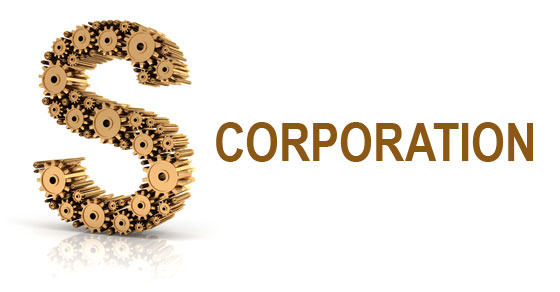
Are you thinking about launching a business with some partners and wondering what type of entity to form? An S corporation may be the most suitable form of business for your new venture. Here’s an explanation of the reasons why.
The biggest advantage of an S corporation over a partnership is that as S corporation shareholders, you won’t be personally liable for corporate debts. In order to receive this protection, it’s important that the corporation be adequately financed, that the existence of the corporation as a separate entity be maintained and that various formalities required by your state be observed (for example, filing articles of incorporation, adopting by-laws, electing a board of directors and holding organizational meetings).
Anticipating losses
If you expect that the business will incur losses in its early years, an S corporation is preferable to a C corporation from a tax standpoint. Shareholders in a C corporation generally get no tax benefit from such losses. In contrast, as S corporation shareholders, each of you can deduct your percentage share of these losses on your personal tax returns to the extent of your basis in the stock and in any loans you make to the entity. Losses that can’t be deducted because they exceed your basis are carried forward and can be deducted by you when there’s sufficient basis.
Once the S corporation begins to earn profits, the income will be taxed directly to you whether or not it’s distributed. It will be reported on your individual tax return and be aggregated with income from other sources. To the extent the income is passed through to you as qualified business income, you’ll be eligible to take the 20% pass-through deduction, subject to various limitations. Your share of the S corporation’s income won’t be subject to self-employment tax, but your wages will be subject to Social Security taxes.
Are you planning to provide fringe benefits such as health and life insurance? If so, you should be aware that the costs of providing such benefits to a more than 2% shareholder are deductible by the entity but are taxable to the recipient.
Be careful with S status
Also be aware that the S corporation could inadvertently lose its S status if you or your partners transfers stock to an ineligible shareholder such as another corporation, a partnership or a nonresident alien. If the S election were terminated, the corporation would become a taxable entity. You would not be able to deduct any losses and earnings could be subject to double taxation — once at the corporate level and again when distributed to you. In order to protect you against this risk, it’s a good idea for each of you to sign an agreement promising not to make any transfers that would jeopardize the S election.
Consult with us before finalizing your choice of entity. We can answer any questions you have and assist in launching your new venture.
New COVID-19 relief law extends employee retention credit

Many businesses have retained employees during the COVID-19 pandemic and enjoyed tax relief with the help of the employee retention credit (ERC). The recent signing of the American Rescue Plan Act (ARPA) brings good news: the ERC has been extended yet again.
The original credit
As originally introduced under last year’s CARES Act, the ERC was a refundable tax credit against certain employment taxes equal to 50% of qualified wages, up to $10,000, that an eligible employer paid to employees after March 12, 2020, and before January 1, 2021. An employer could qualify for the ERC if, in 2020, there was a:
- Full or partial suspension of operations during any calendar quarter because of governmental orders limiting commerce, travel or group meetings because of COVID-19, or
- Significant decline in gross receipts (less than 50% for the same calendar quarter in 2019).
The definition of “qualified wages” depends on staff size. If an employer averaged more than 100 full-time employees during 2019, qualified wages are generally those paid to employees who aren’t providing services because operations were suspended or due to the decline in gross receipts. Qualified wages may include certain health care costs and are capped at $10,000 per employee. These employers could count wages only up to the amount that the employee would’ve been paid for working an equivalent duration during the 30 days immediately preceding the period of economic hardship.
If an employer averaged 100 or fewer full-time employees during 2019, qualified wages are those wages, also including health care costs and capped at $10,000 per employee, paid to any employee during the period operations were suspended or the period of the decline in gross receipts — regardless of whether employees are providing services.
Expansion and extensions
Under the Consolidated Appropriations Act (CAA), signed into law at the end of 2020, the ERC was extended through June 30, 2021. The CAA also expanded the ERC rate of credit from 50% to 70% of qualified wages. The law further expanded eligibility by:
- Reducing the required year-over-year gross receipts decline from 50% to 20%,
- Providing a safe harbor that allows employers to use previous quarter gross receipts to determine eligibility,
- Increasing the limit on creditable wages from $10,000 in total to $10,000 per calendar quarter (that is, $10,000 for first quarter 2021 and $10,000 for second quarter 2021), and
- Raising the 100-employee delineation for determining the relevant qualified wage base to employers with 500 or fewer employees (meaning wages qualify for the credit even if the employee is working).
Most recently, the ARPA further extended the ERC from June 30, 2021, until December 31, 2021. The 70% of qualified wages is also extended for this period, as is the allowance for up to $10,000 in qualified wages for any calendar quarter. This means an employer could potentially have up to $40,000 in qualified wages per employee through 2021.
Valuable break
We can help you determine whether your business qualifies for the ERC and, if so, how much the credit may reduce your tax bill.
New law: Parents and other eligible Americans to receive direct payments

The American Rescue Plan Act, signed into law on March 11, provides a variety of tax and financial relief to help mitigate the effects of the COVID-19 pandemic. Among the many initiatives are direct payments that will be made to eligible individuals. And parents under certain income thresholds will also receive additional payments in the coming months through a greatly revised Child Tax Credit.
Here are some answers to questions about these payments.
What are the two types of payments?
Under the new law, eligible individuals will receive advance direct payments of a tax credit. The law calls these payments “recovery rebates.” The law also includes advance Child Tax Credit payments to eligible parents later this year.
How much are the recovery rebates?
An eligible individual is allowed a 2021 income tax credit, which will generally be paid in advance through direct bank deposit or a paper check. The full amount is $1,400 ($2,800 for eligible married joint filers) plus $1,400 for each dependent.
Who is eligible?
There are several requirements but the most important is income on your most recently filed tax return. Full payments are available to those with adjusted gross incomes (AGIs) of less than $75,000 ($150,000 for married joint filers and $112,500 for heads of households). Your AGI can be found on page 1 of Form 1040.
The credit phases out and is no longer available to taxpayers with AGIs of more than $80,000 ($160,000 for married joint filers and $120,000 for heads of households).
Who isn’t eligible?
Among those who aren’t eligible are nonresident aliens, individuals who are the dependents of other taxpayers, estates and trusts.
How has the Child Tax Credit changed?
Before the new law, the Child Tax Credit was $2,000 per “qualifying child.” Under the new law, the credit is increased to $3,000 per child ($3,600 for children under age 6 as of the end of the year). But the increased 2021 credit amounts are phased out at modified AGIs of over $75,000 for singles ($150,000 for joint filers and $112,500 for heads of households).
A qualifying child before the new law was defined as an under-age-17 child, whom the taxpayer could claim as a dependent. The $2,000 Child Tax Credit was phased out for taxpayers with modified AGIs of over $400,000 for joint filers, and $200,000 for other filers.
Under the new law, for 2021, the definition of a qualifying child for purposes of the Child Tax Credit includes one who hasn’t turned 18 by the end of this year. So 17-year-olds qualify for the credit for 2021 only.
How are parents going to receive direct payments of the Child Tax Credit this year?
Unlike in the past, you don’t have to wait to file your tax return to fully benefit from the credit. The new law directs the IRS to establish a program to make monthly advance payments equal to 50% of eligible taxpayers’ 2021 Child Tax Credits. These payments will be made from July through December 2021.
What if my income is above the amounts listed above?
Taxpayers who aren’t eligible to claim an increased Child Tax Credit, because their incomes are too high, may be able to claim a regular credit of up to $2,000 on their 2021 tax returns, subject to the existing phaseout rules.
Much more
There are other rules and requirements involving these payments. This article only describes the basics. Stay tuned for additional details about other tax breaks in the new law.
The latest on COVID-related deadline extensions for health care benefits

The U.S. Department of Labor (DOL) recently issued EBSA Disaster Relief Notice 2021-01, which is of interest to employers. It clarifies the duration of certain COVID-19-related deadline extensions that apply to health care benefits plans.
Extensions to continue
The DOL and IRS issued guidance last year specifying that the COVID-19 outbreak period — defined as beginning March 1, 2020, and ending 60 days after the announced end of the COVID-19 national emergency — should be disregarded when calculating various deadlines under COBRA, ERISA and HIPAA’s special enrollment provisions.
The original emergency declaration would have expired on March 1, 2021, but it was recently extended. Although the agencies defined the outbreak period solely by reference to the COVID-19 national emergency, they relied on statutes allowing them to specify disregarded periods for a maximum of one year. Therefore, questions arose as to whether the outbreak period was required to end on February 28, 2021, one year after it began.
Notice 2021-01answers those questions by providing that the extensions have continued past February 28 and will be measured on a case-by-case basis. Specifically, applicable deadlines for individuals and plans that fall within the outbreak period will be extended (that is, the disregarded period will last) until the earlier of:
- One year from the date the plan or individual was first eligible for outbreak period relief, or
- The end of the outbreak period.
Once the disregarded period has ended, the timeframes that were previously disregarded will resume. Thus, the outbreak period will continue until 60 days after the end of the COVID-19 national emergency, but the maximum disregarded period for calculating relevant deadlines for any individual or plan cannot exceed one year.
Communication is necessary
The DOL advises plan sponsors to consider sending notices to participants regarding the end of the relief period, which may include reissuing or amending previous disclosures that are no longer accurate. Sponsors are also advised to notify participants who are losing coverage of other coverage options, such as through the recently announced COVID-19 special enrollment period in Health Insurance Marketplaces (commonly known as “Exchanges”).
Notice 2021-01 acknowledges that the COVID-19 pandemic and other circumstances may disrupt normal plan operations. The DOL reassures fiduciaries acting in good faith and with reasonable diligence that enforcement will emphasize compliance assistance and other relief. The notice further states that the IRS and U.S. Department of Health and Human Services concur with the guidance and its application to laws under their jurisdiction.
Challenges ahead
Plan sponsors and administrators will likely welcome this clarification but may be disappointed in its timing and in how it interprets the one-year limitation. Determinations of the disregarded period that depend on individual circumstances could create significant administrative challenges.
In addition to making case-by-case determinations, plan sponsors and administrators must quickly develop a strategy for communicating these complex rules to participants. Contact us for further information and updates.
Business highlights in the new American Rescue Plan Act

President Biden signed the $1.9 trillion American Rescue Plan Act (ARPA) on March 11. While the new law is best known for the provisions providing relief to individuals, there are also several tax breaks and financial benefits for businesses.
Here are some of the tax highlights of the ARPA.
The Employee Retention Credit (ERC). This valuable tax credit is extended from June 30 until December 31, 2021. The ARPA continues the ERC rate of credit at 70% for this extended period of time. It also continues to allow for up to $10,000 in qualified wages for any calendar quarter. Taking into account the Consolidated Appropriations Act extension and the ARPA extension, this means an employer can potentially have up to $40,000 in qualified wages per employee through 2021.
Employer-Provided Dependent Care Assistance. In general, an eligible employee’s gross income doesn’t include amounts paid or incurred by an employer for dependent care assistance provided to the employee under a qualified dependent care assistance program (DCAP).
Previously, the amount that could be excluded from an employee’s gross income under a DCAP during a tax year wasn’t more than $5,000 ($2,500 for married individuals filing separately), subject to certain limitations. However, any contribution made by an employer to a DCAP can’t exceed the employee’s earned income or, if married, the lesser of employee’s or spouse’s earned income.
Under the ARPA, for 2021 only, the exclusion for employer-provided dependent care assistance is increased from $5,000 to $10,500 (from $2,500 to $5,250 for married individuals filing separately).
This provision is effective for tax years beginning after December 31, 2020.
Paid Sick and Family Leave Credits. Changes under the ARPA apply to amounts paid with respect to calendar quarters beginning after March 31, 2021. Among other changes, the law extends the paid sick time and paid family leave credits under the Families First Coronavirus Response Act from March 31, 2021, through September 30, 2021. It also provides that paid sick and paid family leave credits may each be increased by the employer’s share of Social Security tax (6.2%) and employer’s share of Medicare tax (1.45%) on qualified leave wages.
Grants to restaurants. Under the ARPA, eligible restaurants, food trucks, and similar businesses that provide food and drinks may receive restaurant revitalization grants from the Small Business Administration. For tax purposes, amounts received as restaurant revitalization grants aren’t included in the gross income of the person who receives the money.
Much more
These are only some of the provisions in the ARPA. There are many others that may be beneficial to your business. Contact us for more information about your situation.
5 ways to streamline and energize your sales process

The U.S. economy is still a far cry from where it was before the COVID-19 pandemic hit about a year ago. Nonetheless, as vaccination efforts continue to ramp up, many experts expect stronger jobs growth and more robust economic activity in the months ahead.
No matter what your business does, you don’t want your sales staff hamstrung by overly complicated procedures as they strive to seize opportunities in the presumably brighter near-future. Here are five ways to streamline and energize your sales process:
1. Reassess territories. Business travel isn’t what it used to be, so you may not need to revise the geographic routes that your sale staff used to physically traverse. Nonetheless, you may see real efficiency gains by creating a strategic sales territory plan that aligns salespeople with regions or markets containing the prospects they’re most likely to win.
2. Focus on top-tier customers. If purchases from your most valued customers have slowed recently, find out why and reverse the trend. For your sales staff, this may mean shifting focus from winning new business to tending to these important accounts. See whether you can craft a customized plan aimed at meeting a legacy customer’s long-term needs. It might include discounts, premiums and extended warranties.
3. Cut down on “paperwork.” More than likely, “paperwork” is a figurative term these days, as most businesses have implemented electronic means to track leads, document sales efforts and record closings. Nevertheless, outdated or overly complicated software can slow a salesperson’s momentum.
You might conduct a survey to gather feedback on whether your current customer relationship management or sales management software is helping or hindering their efforts. Based on the data, you can then make sensible choices about whether to upgrade or change your system.
4. Issue a carefully chosen challenge. What allows a business to grow is not only retaining top customers, but also creating organic sales growth from new products or services. Consider creating a sales challenge that will motivate staff to push your company’s latest offerings. One facet of such a challenge may be to replace across-the-board commission rates with higher commissions on new products or “tough sells.”
5. Align commissions with financial objectives. Along with considering commissions tied to new products or difficult-to-sell products, investigate other ways you might revise commissions to incentivize your team. Examples include commissions based on:
- Actual customer payments rather than billable orders,
- More sales to current customers,
- Increased order sizes,
- Delivery of items when customers prepay, or
- Number of new customers.
Again, these are just ideas to consider. Ultimately, you want to set up a sales compensation plan based on measurable financial goals that allow your sales staff to clearly understand how their efforts contribute to the profitability of your business. Contact us for help evaluating your sales process and targeting helpful changes.
Estimated tax payments: The deadline for the first 2021 installment is coming ups

April 15 is not only the deadline for filing your 2020 tax return, it’s also the deadline for the first quarterly estimated tax payment for 2021, if you’re required to make one.
You may have to make estimated tax payments if you receive interest, dividends, alimony, self-employment income, capital gains, prize money or other income. If you don’t pay enough tax during the year through withholding and estimated payments, you may be liable for a tax penalty on top of the tax that’s ultimately due.
Four due dates
Individuals must pay 25% of their “required annual payment” by April 15, June 15, September 15, and January 15 of the following year, to avoid an underpayment penalty. If one of those dates falls on a weekend or holiday, the payment is due on the next business day.
The required annual payment for most individuals is the lower of 90% of the tax shown on the current year’s return or 100% of the tax shown on the return for the previous year. However, if the adjusted gross income on your previous year’s return was more than $150,000 (more than $75,000 if you’re married filing separately), you must pay the lower of 90% of the tax shown on the current year’s return or 110% of the tax shown on the return for the previous year.
Most people who receive the bulk of their income in the form of wages satisfy these payment requirements through the tax withheld by their employers from their paychecks. Those who make estimated tax payments generally do so in four installments. After determining the required annual payment, they divide that number by four and make four equal payments by the due dates.
The annualized method
But you may be able to use the annualized income method to make smaller payments. This method is useful to people whose income flow isn’t uniform over the year, perhaps because they’re involved in a seasonal business.
If you fail to make the required payments, you may be subject to a penalty. However, the underpayment penalty doesn’t apply to you:
- If the total tax shown on your return is less than $1,000 after subtracting withholding tax paid;
- If you had no tax liability for the preceding year, you were a U.S. citizen or resident for that entire year, and that year was 12 months;
- For the fourth (Jan. 15) installment, if you file your return by that January 31 and pay your tax in full; or
- If you’re a farmer or fisherman and pay your entire estimated tax by January 15, or pay your entire estimated tax and file your tax return by March 1
In addition, the IRS may waive the penalty if the failure was due to casualty, disaster, or other unusual circumstances and it would be inequitable to impose it. The penalty may also be waived for reasonable cause during the first two years after you retire (after reaching age 62) or become disabled.
Stay on track
Contact us if you have questions about how to calculate estimated tax payments. We can help you stay on track so you aren’t liable for underpayment penalties.
Launching a small business? Here are some tax considerations

While many businesses have been forced to close due to the COVID-19 pandemic, some entrepreneurs have started new small businesses. Many of these people start out operating as sole proprietors. Here are some tax rules and considerations involved in operating with that entity.
The pass-through deduction
To the extent your business generates qualified business income (QBI), you’re eligible to claim the pass-through or QBI deduction, subject to limitations. For tax years through 2025, the deduction can be up to 20% of a pass-through entity owner’s QBI. You can take the deduction even if you don’t itemize deductions on your tax return and instead claim the standard deduction.
Reporting responsibilities
As a sole proprietor, you’ll file Schedule C with your Form 1040. Your business expenses are deductible against gross income. If you have losses, they’ll generally be deductible against your other income, subject to special rules related to hobby losses, passive activity losses and losses in activities in which you weren’t “at risk.”
If you hire employees, you need to get a taxpayer identification number and withhold and pay employment taxes.
Self-employment taxes
For 2021, you pay Social Security on your net self-employment earnings up to $142,800, and Medicare tax on all earnings. An additional 0.9% Medicare tax is imposed on self-employment income in excess of $250,000 on joint returns; $125,000 for married taxpayers filing separate returns; and $200,000 in all other cases. Self-employment tax is imposed in addition to income tax, but you can deduct half of your self-employment tax as an adjustment to income.
Quarterly estimated payments
As a sole proprietor, you generally have to make estimated tax payments. For 2021, these are due on April 15, June 15, September 15 and January 17, 2022.
Home office deductions
If you work from a home office, perform management or administrative tasks there, or store product samples or inventory at home, you may be entitled to deduct an allocable portion of some costs of maintaining your home.
Health insurance expenses
You can deduct 100% of your health insurance costs as a business expense. This means your deduction for medical care insurance won’t be subject to the rule that limits medical expense deductions.
Keeping records
Retain complete records of your income and expenses so you can claim all the tax breaks to which you’re entitled. Certain expenses, such as automobile, travel, meals, and office-at-home expenses, require special attention because they’re subject to special recordkeeping rules or deductibility limits.
Saving for retirement
Consider establishing a qualified retirement plan. The advantage is that amounts contributed to the plan are deductible at the time of the contribution and aren’t taken into income until they’re withdrawn. A SEP plan requires less paperwork than many qualified plans. A SIMPLE plan is also available to sole proprietors and offers tax advantages with fewer restrictions and administrative requirements. If you don’t establish a retirement plan, you may still be able to contribute to an IRA.
We can help
Contact us if you want additional information about the tax aspects of your new business, or if you have questions about reporting or recordkeeping requirements
PPP adjusted to prioritize very small businesses

When the Small Business Administration (SBA) launched the Paycheck Protection Program (PPP) last year, the program’s stated objective was “to provide a direct incentive for small businesses to keep their workers on the payroll.” However, according to federal officials, the recently issued second round of funding has distributed only a small percentage of the $15 billion set aside for small businesses and low- to moderate-income “first-draw” borrowers.
In late February, the SBA, in cooperation with the Biden Administration, announced adjustments to the PPP aimed at “increasing access and much-needed aid to Main Street businesses that anchor our neighborhoods and help families build wealth,” according to SBA Senior Advisor Michael Roth.
5 primary objectives
The adjustments address five primary objectives:
1. Move the smallest businesses to the front of the line. The SBA has established a two-week exclusive application period for businesses and nonprofits with fewer than 20 employees. It began on February 24. The agency has reassured larger eligible companies that they’ll still have time to apply for and receive support before the program is set to expire on March 31.
2. Change the math. The loan calculation formula has been revised to focus on gross profits rather than net profits. The previous formula inadvertently excluded many sole proprietors, independent contractors and self-employed individuals.
3. Eliminate the non-fraud felony exclusion. Under the original PPP rules, a business was disqualified from funding if it was at least 20% owned by someone with either 1) an arrest or conviction for a felony related to financial assistance fraud in the previous five years, or 2) any other felony in the previous year. The new rules eliminate the one-year lookback for any kind of felony unless the applicant or owner is incarcerated at the time of application.
4. Eventually remove the student loan exclusion. Current rules prohibit PPP loans to any business that’s at least 20% owned by an individual who’s delinquent or has defaulted on a federal debt, which includes federal student loans, within the previous seven years. The SBA intends to collaborate with the U.S. Departments of Treasury and Education to remove the student loan delinquency restriction to broaden PPP access.
5. Clarify loan eligibility for noncitizen small business. The CARES Act stipulates that any lawful U.S. resident can apply for a PPP loan. However, holders of Individual Taxpayer Identification Numbers (ITINs), such as Green Card holders and those in the United States on a visa, have been unable to consistently access the program. The SBA has committed to issuing new guidance to address this issue, which, in part, will state that otherwise eligible applicants can’t be denied PPP loans solely because they use ITINs when paying their taxes.
What’s ahead
The PPP could evolve further as the year goes along, potentially as an indirect result of the COVID-19 relief bill currently making its way through Congress. Our firm can keep you updated on all aspects of the program, including the tax impact of loan proceeds.
Retiring soon? Recent law changes may have an impact on your retirement savings

If you’re approaching retirement, you probably want to ensure the money you’ve saved in retirement plans lasts as long as possible. If so, be aware that a law was recently enacted that makes significant changes to retirement accounts. The SECURE Act, which was signed into law in late 2019, made a number of changes of interest to those nearing retirement.
You can keep making traditional IRA contributions if you’re still working
Before 2020, traditional IRA contributions weren’t allowed once you reached age 70½. But now, an individual of any age can make contributions to a traditional IRA, as long as he or she has compensation, which generally means earned income from wages or self-employment. So if you work part time after retiring, or do some work as an independent contractor, you may be able to continue saving in your IRA if you’re otherwise eligible.
The required minimum distribution (RMD) age was raised from 70½ to 72.
Before 2020, retirement plan participants and IRA owners were generally required to begin taking RMDs from their plans by April 1 of the year following the year they reached age 70½. The age 70½ requirement was first applied in the early 1960s and, until recently, hadn’t been adjusted to account for increased life expectancies.
For distributions required to be made after December 31, 2019, for individuals who attain age 70½ after that date, the age at which individuals must begin taking distributions from their retirement plans or IRAs is increased from 70½ to 72.
“Stretch IRAs” have been partially eliminated
If a plan participant or IRA owner died before 2020, their beneficiaries (spouses and non-spouses) were generally allowed to stretch out the tax-deferral advantages of the plan or IRA by taking distributions over the life or life expectancy of the beneficiaries. This was sometimes called a “stretch IRA.”
However, for deaths of plan participants or IRA owners beginning in 2020 (later for some participants in collectively bargained plans and governmental plans), distributions to most non-spouse beneficiaries are generally required to be distributed within 10 years following a plan participant’s or IRA owner’s death. Therefore, the “stretch” strategy is no longer allowed for those beneficiaries.
There are some exceptions to the 10-year rule. For example, it’s still allowed for: the surviving spouse of a plan participant or IRA owner; a child of a plan participant or IRA owner who hasn’t reached the age of majority; a chronically ill individual; and any other individual who isn’t more than 10 years younger than a plan participant or IRA owner. Those beneficiaries who qualify under this exception may generally still take their distributions over their life expectancies.
More changes may be ahead
These are only some of the changes included in the SECURE Act. In addition, there’s bipartisan support in Congress to make even more changes to promote retirement saving. Last year, a law dubbed the SECURE Act 2.0 was introduced in the U.S. House of Representatives. At this time, it’s unclear if or when it could be enacted. We’ll let you know about any new opportunities. In the meantime, if you have questions about your situation, don’t hesitate to contact us.
Work Opportunity Tax Credit extended through 2025

Are you a business owner thinking about hiring? Be aware that a recent law extended a credit for hiring individuals from one or more targeted groups. Employers can qualify for a tax credit known as the Work Opportunity Tax Credit (WOTC) that’s worth as much as $2,400 for each eligible employee ($4,800, $5,600 and $9,600 for certain veterans and $9,000 for “long-term family assistance recipients”). The credit is generally limited to eligible employees who began work for the employer before January 1, 2026.
Generally, an employer is eligible for the credit only for qualified wages paid to members of a targeted group. These groups are:
- Qualified members of families receiving assistance under the Temporary Assistance for Needy Families (TANF) program,
- Qualified veterans,
- Qualified ex-felons,
- Designated community residents,
- Vocational rehabilitation referrals,
- Qualified summer youth employees,
- Qualified members of families in the Supplemental Nutritional Assistance Program (SNAP),
- Qualified Supplemental Security Income recipients,
- Long-term family assistance recipients, and
- Long-term unemployed individuals.
You must meet certain requirements
There are a number of requirements to qualify for the credit. For example, for each employee, there’s also a minimum requirement that the employee must have completed at least 120 hours of service for the employer. Also, the credit isn’t available for certain employees who are related to or who previously worked for the employer.
There are different rules and credit amounts for certain employees. The maximum credit available for the first-year wages is $2,400 for each employee, $4,000 for long-term family assistance recipients, and $4,800, $5,600 or $9,600 for certain veterans. Additionally, for long-term family assistance recipients, there’s a 50% credit for up to $10,000 of second-year wages, resulting in a total maximum credit, over two years, of $9,000.
For summer youth employees, the wages must be paid for services performed during any 90-day period between May 1 and September 15. The maximum WOTC credit available for summer youth employees is $1,200 per employee.
A valuable credit
There are additional rules and requirements. In some cases, employers may elect not to claim the WOTC. And in limited circumstances, the rules may prohibit the credit or require an allocation of it. However, for most employers hiring from targeted groups, the credit can be valuable. Contact us with questions or for more information about your situation.
Should your business add Roth contributions to its 401(k)?

If your business sponsors a 401(k) plan, you might someday consider adding designated Roth contributions. Here are some factors to explore when deciding whether such a feature would make sense for your company and its employees.
Key differences
Roth contributions differ from other elective deferrals in two key tax respects. First, they’re irrevocably designated to be made on an after-tax basis, rather than pretax. Second, if all applicable requirements are met and the distribution constitutes a “qualified distribution,” the earnings won’t be subject to federal income tax when distributed.
To be qualified, a distribution generally must occur after a five-year waiting period, as well as after the participant reaches age 59½, becomes disabled or dies. Because of the different tax treatment, plans must maintain separate accounts for designated Roth contributions.
Pluses and minuses
The Roth option gives participants an opportunity to hedge against the possibility that their income tax rates will be higher in retirement. However, if tax rates fall or participants are in lower tax brackets during retirement, Roth contributions may provide less after-tax retirement income than comparable pretax contributions. The result could also be worse than that of ordinary elective deferrals if Roth amounts aren’t held long enough to make distributions tax-free.
Nonetheless, if your business employs a substantial number of relatively highly paid employees, a Roth 401(k) component may be well-appreciated. This is because participants can make much larger designated Roth 401(k) contributions than they can for a Roth IRA — in 2020 and 2021, $19,500 for designated Roth 401(k) versus $6,000 for Roth IRA.
Catch-up contributions for individuals 50 or older are also considerably higher for designated Roth 401(k) contributions — in 2020 and 2021, $6,500 for designated Roth 401(k)s versus $1,000 for Roth IRAs. And higher-paid participants who are ineligible to make Roth IRA contributions because of the income cap on eligibility could make designated Roth contributions to your plan.
Yet participants will need to know what they’re getting into. They’ll have to consider:
- Current and future tax rates,
- Various investment alternatives,
- The risk of needing a distribution before they qualify for tax-free treatment of earnings (which would trigger taxation of those earnings), and
- Loss of some rollover options.
For plan sponsors, the separate accounting required for Roth contributions may raise plan costs and increase the risk of error. (One common mistake: treating elected contributions as pretax when the participant elected Roth contributions, or vice versa.)
And because Roth contributions are treated as elective deferrals for other purposes — including nondiscrimination requirements, vesting rules and distribution restrictions — plan administration and communication will be more complex.
Not for everyone
Before adding Roth contributions to your 401(k), be sure participants are adequately engaged and savvy, and will derive enough benefit, to make it worth the risks and burdens. We can assist you in deciding whether this would be an appropriate move for your business.
Didn’t contribute to an IRA last year? There still may be time

If you’re getting ready to file your 2020 tax return, and your tax bill is higher than you’d like, there might still be an opportunity to lower it. If you qualify, you can make a deductible contribution to a traditional IRA right up until the April 15, 2021 filing date and benefit from the tax savings on your 2020 return.
Who is eligible?
You can make a deductible contribution to a traditional IRA if:
- You (and your spouse) aren’t an active participant in an employer-sponsored retirement plan, or
- You (or your spouse) are an active participant in an employer plan, but your modified adjusted gross income (AGI) doesn’t exceed certain levels that vary from year-to-year by filing status.
For 2020, if you’re a joint tax return filer and you are covered by an employer plan, your deductible IRA contribution phases out over $104,000 to $124,000 of modified AGI. If you’re single or a head of household, the phaseout range is $65,000 to $75,000 for 2020. For married filing separately, the phaseout range is $0 to $10,000. For 2020, if you’re not an active participant in an employer-sponsored retirement plan, but your spouse is, your deductible IRA contribution phases out with modified AGI of between $196,000 and $206,000.
Deductible IRA contributions reduce your current tax bill, and earnings within the IRA are tax deferred. However, every dollar you take out is taxed in full (and subject to a 10% penalty before age 59 1/2, unless one of several exceptions apply).
IRAs often are referred to as “traditional IRAs” to differentiate them from Roth IRAs. You also have until April 15 to make a Roth IRA contribution. But while contributions to a traditional IRA are deductible, contributions to a Roth IRA aren’t. However, withdrawals from a Roth IRA are tax-free as long as the account has been open at least five years and you’re age 59 1/2 or older. (There are also income limits to contribute to a Roth IRA.)
Here are two other IRA strategies that may help you save tax.
1. Turn a nondeductible Roth IRA contribution into a deductible IRA contribution. Did you make a Roth IRA contribution in 2020? That may help you in the future when you take tax-free payouts from the account. However, the contribution isn’t deductible. If you realize you need the deduction that a traditional IRA contribution provides, you can change your mind and turn a Roth IRA contribution into a traditional IRA contribution via the “recharacterization” mechanism. The traditional IRA deduction is then yours if you meet the requirements described above.
2. Make a deductible IRA contribution, even if you don’t work. In general, you can’t make a deductible traditional IRA contribution unless you have wages or other earned income. However, an exception applies if your spouse is the breadwinner and you are a homemaker. In this case, you may be able to take advantage of a spousal IRA.
What’s the contribution limit?
For 2020 if you’re eligible, you can make a deductible traditional IRA contribution of up to $6,000 ($7,000 if you’re 50 or over).
In addition, small business owners can set up and contribute to a Simplified Employee Pension (SEP) plan up until the due date for their returns, including extensions. For 2020, the maximum contribution you can make to a SEP is $57,000.
If you want more information about IRAs or SEPs, contact us or ask about it when we’re preparing your return. We can help you save the maximum tax-advantaged amount for retirement.
If you run a business from home, you could qualify for home office deductions

During the COVID-19 pandemic, many people are working from home. If you’re self-employed and run your business from your home or perform certain functions there, you might be able to claim deductions for home office expenses against your business income. There are two methods for claiming this tax break: the actual expenses method and the simplified method.
Who qualifies?
In general, you qualify for home office deductions if part of your home is used “regularly and exclusively” as your principal place of business.
If your home isn’t your principal place of business, you may still be able to deduct home office expenses if 1) you physically meet with patients, clients or customers on your premises, or 2) you use a storage area in your home (or a separate free-standing structure, such as a garage) exclusively and regularly for business.
What can you deduct?
Many eligible taxpayers deduct actual expenses when they claim home office deductions. Deductible home office expenses may include:
- Direct expenses, such as the cost of painting and carpeting a room used exclusively for business,
- A proportionate share of indirect expenses, including mortgage interest, rent, property taxes, utilities, repairs and insurance, and
- Depreciation.
But keeping track of actual expenses can take time and require organization.
How does the simpler method work?
Fortunately, there’s a simplified method: You can deduct $5 for each square foot of home office space, up to a maximum total of $1,500.
The cap can make the simplified method less valuable for larger home office spaces. But even for small spaces, taxpayers may qualify for bigger deductions using the actual expense method. So, tracking your actual expenses can be worth it.
Can I switch?
When claiming home office deductions, you’re not stuck with a particular method. For instance, you might choose the actual expense method on your 2020 return, use the simplified method when you file your 2021 return next year and then switch back to the actual expense method for 2022. The choice is yours.
What if I sell the home?
If you sell — at a profit — a home that contains (or contained) a home office, there may be tax implications. We can explain them to you.
Also be aware that the amount of your home office deductions is subject to limitations based on the income attributable to your use of the office. Other rules and limitations may apply. But any home office expenses that can’t be deducted because of these limitations can be carried over and deducted in later years.
Do employees qualify?
Unfortunately, the Tax Cuts and Jobs Act suspended the business use of home office deductions from 2018 through 2025 for employees. Those who receive a paycheck or a W-2 exclusively from their employers aren’t eligible for deductions, even if they’re currently working from home.
We can help you determine if you’re eligible for home office deductions and how to proceed in your situation.
Building customers’ trust in your website

The events of the past year have taught business owners many important lessons. One of them is that, when a crisis hits, customers turn on their computers and look to their phones. According to one analysis of U.S. Department of Commerce data, consumers spent $347.26 billion online with U.S. retailers in the first half of 2020 — that’s a 30.1% increase from the same period in 2019.
Although online spending moderated a bit as the year went on, the fact remains that people’s expectations of most companies’ websites have soared. In fact, a June 2020 report by software giant Adobe indicated that the pandemic has markedly accelerated the growth of e-commerce — quite possibly by years, not just months.
Whether you sell directly to the buying public or engage primarily in B2B transactions, building customers’ trust in your website is more important than ever.
Identify yourself
Among the simplest ways to establish trust with customers and prospects is to convey to them that you’re a bona fide business staffed by actual human beings.
Include an “About Us” page with the names, photos and short bios of the owner(s), executives and key staff members. Doing so will help make the site friendlier and more relatable. You don’t want to look anonymous — it makes customers suspicious and less likely to buy.
Beyond that, be sure to clearly provide contact info. This includes a phone number and email address, hours of operation (including time zone), and your mailing address. If you’re a small business, use a street address if possible. Some companies won’t deliver to a P.O. box, and some customers won’t buy if you use one.
Keep contact links easy to find. No one wants to search all over a site looking for a way to get in touch with someone at the business. Include at least one contact link on every page.
Add trust elements
Another increasingly critical feature of business websites is “trust elements.” Examples include:
- Icons of widely used payment security providers such as PayPal, Verisign and Visa,
- A variety of payment alternatives, as well as free shipping or lower shipping costs for certain orders, and
- Professionally coded, aesthetically pleasing and up-to-date layout and graphics.
Check and double-check the spelling and grammar used on your site. Remember, one of the hallmarks of many Internet scams is sloppy or nonsensical use of language.
Also, regularly check all links. Nothing sends a customer off to a competitor more quickly than the frustration of encountering nonfunctioning links. Such problems may also lead visitors to think they’ve been hacked.
Abide by the fundamentals
Of course, the cybersecurity of any business website begins (and some would say ends) with fundamental elements such as a responsible provider, firewalls, encryption software and proper password use. Nonetheless, how you design, maintain and update your site will likely have a substantial effect on your company’s profitability. Contact us for help measuring and assessing the impact of e-commerce on your business.
Did you make donations in 2020? There’s still time to get substantiation

If you’re like many Americans, letters from your favorite charities may be appearing in your mailbox acknowledging your 2020 donations. But what happens if you haven’t received such a letter — can you still claim a deduction for the gift on your 2020 income tax return? It depends.
What is required
To support a charitable deduction, you need to comply with IRS substantiation requirements. This generally includes obtaining a contemporaneous written acknowledgment from the charity stating the amount of the donation, whether you received any goods or services in consideration for the donation and the value of any such goods or services.
“Contemporaneous” means the earlier of:
- The date you file your tax return, or
- The extended due date of your return.
So if you made a donation in 2020 but haven’t yet received substantiation from the charity, it’s not too late — as long as you haven’t filed your 2020 return. Contact the charity and request a written acknowledgment.
Keep in mind that, if you made a cash gift of under $250 with a check or credit card, generally a canceled check, bank statement or credit card statement is sufficient. However, if you received something in return for the donation, you generally must reduce your deduction by its value — and the charity is required to provide you a written acknowledgment as described earlier.
New deduction for non-itemizers
In general, taxpayers who don’t itemize their deductions (and instead claim the standard deduction) can’t claim a charitable deduction. Under the CARES Act, individuals who don’t itemize deductions can claim a federal income tax write-off for up to $300 of cash contributions to IRS-approved charities for the 2020 tax year. The same $300 limit applies to both unmarried taxpayers and married joint-filing couples.
Even better, this tax break was extended to cover $300 of cash contributions made in 2021 under the Consolidated Appropriations Act. The new law doubles the deduction limit to $600 for married joint-filing couples for cash contributions made in 2021.
2020 and 2021 deductions
Additional substantiation requirements apply to some types of donations. We can help you determine whether you have sufficient substantiation for the donations you hope to deduct on your 2020 income tax return — and guide you on the substantiation you’ll need for gifts you’re planning this year to ensure you can enjoy the desired deductions on your 2021 return.
What are the tax implications of buying or selling a business?

Merger and acquisition activity in many industries slowed during 2020 due to COVID-19. But analysts expect it to improve in 2021 as the country comes out of the pandemic. If you are considering buying or selling another business, it’s important to understand the tax implications.
Two ways to arrange a deal
Under current tax law, a transaction can basically be structured in two ways:
1. Stock (or ownership interest). A buyer can directly purchase a seller’s ownership interest if the target business is operated as a C or S corporation, a partnership, or a limited liability company (LLC) that’s treated as a partnership for tax purposes.
The current 21% corporate federal income tax rate makes buying the stock of a C corporation somewhat more attractive. Reasons: The corporation will pay less tax and generate more after-tax income. Plus, any built-in gains from appreciated corporate assets will be taxed at a lower rate when they’re eventually sold.
The current law’s reduced individual federal tax rates have also made ownership interests in S corporations, partnerships and LLCs more attractive. Reason: The passed-through income from these entities also is taxed at lower rates on a buyer’s personal tax return. However, current individual rate cuts are scheduled to expire at the end of 2025, and, depending on actions taken in Washington, they could be eliminated earlier.
Keep in mind that President Biden has proposed increasing the tax rate on corporations to 28%. He has also proposed increasing the top individual income tax rate from 37% to 39.6%. With Democrats in control of the White House and Congress, business and individual tax changes are likely in the next year or two.
2. Assets. A buyer can also purchase the assets of a business. This may happen if a buyer only wants specific assets or product lines. And it’s the only option if the target business is a sole proprietorship or a single-member LLC that’s treated as a sole proprietorship for tax purposes.
Preferences of buyers
For several reasons, buyers usually prefer to buy assets rather than ownership interests. In general, a buyer’s primary goal is to generate enough cash flow from an acquired business to pay any acquisition debt and provide an acceptable return on the investment. Therefore, buyers are concerned about limiting exposure to undisclosed and unknown liabilities and minimizing taxes after a transaction closes.
A buyer can step up (increase) the tax basis of purchased assets to reflect the purchase price. Stepped-up basis lowers taxable gains when certain assets, such as receivables and inventory, are sold or converted into cash. It also increases depreciation and amortization deductions for qualifying assets.
Preferences of sellers
In general, sellers prefer stock sales for tax and nontax reasons. One of their objectives is to minimize the tax bill from a sale. That can usually be achieved by selling their ownership interests in a business (corporate stock or partnership or LLC interests) as opposed to selling assets
With a sale of stock or other ownership interest, liabilities generally transfer to the buyer and any gain on sale is generally treated as lower-taxed long-term capital gain (assuming the ownership interest has been held for more than one year).
Obtain professional advice
Be aware that other issues, such as employee benefits, can also cause tax issues in M&A transactions. Buying or selling a business may be the largest transaction you’ll ever make, so it’s important to seek professional assistance. After a transaction is complete, it may be too late to get the best tax results. Contact us about how to proceed.
The many uses of a SWOT analysis
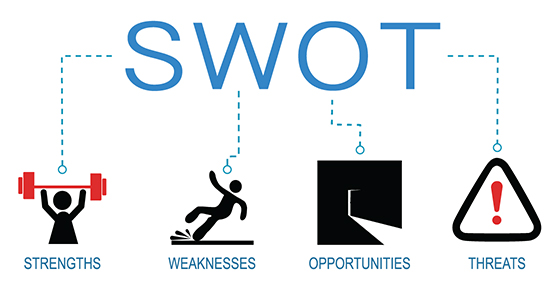
Using a strengths, weaknesses, opportunities and threats (SWOT) analysis to frame an important business decision is a long-standing recommended practice. But don’t overlook other, broader uses that could serve your company well.
Performance factors
A SWOT analysis starts by spotlighting internal strengths and weaknesses that affect business performance. Strengths are competitive advantages or core competencies that generate value (and revenue), such as a strong sales force or exceptional quality.
Conversely, weaknesses are factors that limit a company’s performance. These are often revealed in a comparison with competitors. Examples might include a negative brand image because of a recent controversy or an inferior reputation for customer service.
Generally, the strengths and weaknesses of a business relate directly to customers’ needs and expectations. Each identified characteristic affects cash flow — and, therefore, business success — if customers perceive it as either a strength or weakness. A characteristic doesn’t really affect the company if customers don’t care about it.
External conditions
The next SWOT step is identifying opportunities and threats. Opportunities are favorable external conditions that could generate a worthwhile return if the business acts on them. Threats are external factors that could inhibit business performance.
When differentiating strengths from opportunities, or weaknesses from threats, the question is whether the issue would exist without the business. If the answer is yes, the issue is external to the company and, therefore, an opportunity or a threat. Examples include changes in demographics or government regulations.
Various applications
As mentioned, business owners can use SWOT to do more than just make an important decision. Other applications include:
Valuation. A SWOT analysis is a logical way to frame a discussion of business operations in a written valuation report. The analysis can serve as a powerful appendix to the report or a courtroom exhibit, providing tangible support for seemingly ambiguous, subjective assessments regarding risk and return.
In a valuation context, strengths and opportunities generate returns, which translate into increased cash flow projections. Strengths and opportunities can lower risk via higher pricing multiples or reduced cost of capital. Threats and weaknesses have the opposite effect.
Strategic planning. Businesses can repurpose the SWOT analysis section of a valuation report to spearhead strategic planning. They can build value by identifying ways to capitalize on opportunities with strengths or brainstorming ways to convert weaknesses into strengths or threats into opportunities. You can also conduct a SWOT analysis outside of a valuation context to accomplish these objectives.
Legal defense. Should you find yourself embroiled in a legal dispute, an attorney may want to frame trial or deposition questions in terms of a SWOT analysis. Attorneys sometimes use this approach to demonstrate that an expert witness truly understands the business — or, conversely, that the opposing expert doesn’t understand the subject company.
Tried and true
A SWOT analysis remains a useful way to break down and organize the many complexities surrounding a business. Our firm can help you with the tax, accounting and financial aspects of this approach.
2021 individual taxes: Answers to your questions about limits

Many people are more concerned about their 2020 tax bills right now than they are about their 2021 tax situations. That’s understandable because your 2020 individual tax return is due to be filed in less than three months (unless you file an extension).
However, it’s a good idea to acquaint yourself with tax amounts that may have changed for 2021. Below are some Q&As about tax amounts for this year.
Be aware that not all tax figures are adjusted annually for inflation and even if they are, they may be unchanged or change only slightly due to low inflation. In addition, some amounts only change with new legislation.
How much can I contribute to an IRA for 2021?
If you’re eligible, you can contribute $6,000 a year to a traditional or Roth IRA, up to 100% of your earned income. If you’re 50 or older, you can make another $1,000 “catch up” contribution. (These amounts were the same for 2020.)
I have a 401(k) plan through my job. How much can I contribute to it?
For 2021, you can contribute up to $19,500 (unchanged from 2020) to a 401(k) or 403(b) plan. You can make an additional $6,500 catch-up contribution if you’re age 50 or older.
I sometimes hire a babysitter and a cleaning person. Do I have to withhold and pay FICA tax on the amounts I pay them?
In 2021, the threshold when a domestic employer must withhold and pay FICA for babysitters, house cleaners, etc., is $2,300 (up from $2,200 in 2020).
How much do I have to earn in 2021 before I can stop paying Social Security on my salary?
The Social Security tax wage base is $142,800 for this year (up from $137,700 last year). That means that you don’t owe Social Security tax on amounts earned above that. (You must pay Medicare tax on all amounts that you earn.)
I didn’t qualify to itemize deductions on my last tax return. Will I qualify for 2021?
A 2017 tax law eliminated the tax benefit of itemizing deductions for many people by increasing the standard deduction and reducing or eliminating various deductions. For 2021, the standard deduction amount is $25,100 for married couples filing jointly (up from $24,800). For single filers, the amount is $12,550 (up from $12,400) and for heads of households, it’s $18,800 (up from $18,650). If the amount of your itemized deductions (such as mortgage interest) are less than the applicable standard deduction amount, you won’t itemize for 2021.
If I don’t itemize, can I claim charitable deductions on my 2021 return?
Generally, taxpayers who claim the standard deduction on their federal tax returns can’t deduct charitable donations. But thanks to the CARES Act that was enacted last year, single and married joint filing taxpayers can deduct up to $300 in donations to qualified charities on their 2020 federal returns, even if they claim the standard deduction. The Consolidated Appropriations Act extended this tax break into 2021 and increased the amount that married couples filing jointly can claim to $600.
How much can I give to one person without triggering a gift tax return in 2021?
The annual gift exclusion for 2021 is $15,000 (unchanged from 2020). This amount is only adjusted in $1,000 increments, so it typically only increases every few years.
Your tax situation
These are only some of the tax amounts that may apply to you. Contact us for more information about your tax situation, or if you have questions.
Many tax amounts affecting businesses have increased for 2021

A number of tax-related limits that affect businesses are annually indexed for inflation, and many have increased for 2021. Some stayed the same due to low inflation. And the deduction for business meals has doubled for this year after a new law was enacted at the end of 2020. Here’s a rundown of those that may be important to you and your business.
Social Security tax
The amount of employees’ earnings that are subject to Social Security tax is capped for 2021 at $142,800 (up from $137,700 for 2020).
Deductions
- Section 179 expensing:
- Limit: $1.05 million (up from $1.04 million for 2020)
- Phaseout: $2.62 million (up from $2.59 million)
- Income-based phase-out for certain limits on the Sec. 199A qualified business income deduction begins at:
- Married filing jointly: $329,800 (up from $326,600)
- Married filing separately: $164,925 (up from $163,300)
- Other filers: $164,900 (up from $163,300)
Business meals
Deduction for eligible business-related food and beverage expenses provided by a restaurant: 100% (up from 50%)
Retirement plans
- Employee contributions to 401(k) plans: $19,500 (unchanged from 2020)
- Catch-up contributions to 401(k) plans: $6,500 (unchanged)
- Employee contributions to SIMPLEs: $13,500 (unchanged)
- Catch-up contributions to SIMPLEs: $3,000 (unchanged)
- Combined employer/employee contributions to defined contribution plans: $58,000 (up from $57,000)
- Maximum compensation used to determine contributions: $290,000 (up from $285,000)
- Annual benefit for defined benefit plans: $230,000 (up from $225,000)
- Compensation defining a highly compensated employee: $130,000 (unchanged)
- Compensation defining a “key” employee: $185,000 (unchanged)
Other employee benefits
- Qualified transportation fringe-benefits employee income exclusion: $270 per month (unchanged)
- Health Savings Account contributions:
- Individual coverage: $3,600 (up from $3,550)
- Family coverage: $7,200 (up from $7,100)
- Catch-up contribution: $1,000 (unchanged)
- Flexible Spending Account contributions:
- Health care: $2,750 (unchanged)
- Dependent care: $5,000 (unchanged)
These are only some of the tax limits that may affect your business and additional rules may apply. If you have questions, please contact us.
Are your supervisors adept at multigenerational management?

Over the past year, the importance of leadership at every level of a business has been emphasized. When a crisis such as a pandemic hits, it creates a sort of stress test for not only business owners and executives, but also supervisors of departments and work groups.
Among the most important skill sets of any leader is communication. Can your company’s supervisors communicate both the big and little picture messages that will keep employees reassured, focused and motivated during good times and bad? One factor in their ability to do so is the age of the employees with whom they’re interacting.
Encourage a flexible management style
Right now, there may be four different generations in your workplace: 1) Baby Boomers, born following World War II through the mid-1960s, 2) Generation X, born from the mid-1960s through the late 1970s, 3) Millennials, born from the late 1970s through the mid-1990s, and 4) Generation Z, born in the mid-1990s and beyond. (Birth dates for each generation may vary depending on the source.)
Supervisors need to develop a flexible style when dealing with multiple generations. Millennial and Generation Z employees tend to have different needs and expectations than Baby Boomers and those in Generation X.
For example, Millennials and Gen Z employees generally like to receive more regular feedback about their performances, as well as more frequent public recognition when they’ve done well. Baby Boomers and Gen Xers also enjoy positive performance feedback, but they may expect praise less often and derive personal satisfaction from a job well done without needing to share it with co-workers quite as often.
Employees from different generations also tend to have differing views on company loyalty. Many younger employees harbor greater allegiance to their principles and co-workers than their employers, while many older employees feel a greater sense of fidelity to the business itself. Train your supervisors to keep these and other differences in mind when managing employees across generations.
Recognize the impact of benefits
While financial security is highly valued by every generation, younger employees (Millennials and Gen Z) may prioritize salary less than older workers. What’s often more important to recent generations is a robust, well-rounded benefits package.
Of particular importance is mental health care. Whereas older generations may have historically approached mental health issues with hesitancy, and some still do, younger generations generally prioritize psychological well-being quite openly. Business owners should keep this in mind when designing and adjusting their benefits plans, and supervisors (and HR departments) need to encourage and guide employees to optimally use their benefits.
Promote workplace harmony
To be clear, a person’s generation doesn’t necessarily define him or her, nor is it a perfect predictor of how someone thinks or behaves. Nevertheless, supervisors who are aware of generational differences can develop more flexible, dynamic management styles. Doing so can lead to a more harmonious, productive workplace — and a more profitable business. We can assist you in developing cost-effective strategies for upskilling supervisors and maximizing productivity.
The power of the tax credit for buying an electric vehicle

Although electric vehicles (or EVs) are a small percentage of the cars on the road today, they’re increasing in popularity all the time. And if you buy one, you may be eligible for a federal tax break.
The tax code provides a credit to purchasers of qualifying plug-in electric drive motor vehicles including passenger vehicles and light trucks. The credit is equal to $2,500 plus an additional amount, based on battery capacity, that can’t exceed $5,000. Therefore, the maximum credit allowed for a qualifying EV is $7,500.
The EV definition
For purposes of the tax credit, a qualifying vehicle is defined as one with four wheels that’s propelled to a significant extent by an electric motor, which draws electricity from a battery. The battery must have a capacity of not less than four kilowatt hours and be capable of being recharged from an external source of electricity.
The credit may not be available because of a per-manufacturer cumulative sales limitation. Specifically, it phases out over six quarters beginning when a manufacturer has sold at least 200,000 qualifying vehicles for use in the United States (determined on a cumulative basis for sales after December 31, 2009). For example, Tesla and General Motors vehicles are no longer eligible for the tax credit.
The IRS provides a list of qualifying vehicles on its website and it recently added a number of models that are eligible. You can access the list here: https://bit.ly/2Yrhg5Z.
Here are some additional points about the plug-in electric vehicle tax credit:
- It’s allowed in the year you place the vehicle in service.
- The vehicle must be new.
- An eligible vehicle must be used predominantly in the U.S. and have a gross weight of less than 14,000 pounds.
Electric motorcycles
There’s a separate 10% federal income tax credit for the purchase of qualifying electric two-wheeled vehicles manufactured primarily for use on public thoroughfares and capable of at least 45 miles per hour (in other words, electric-powered motorcycles). It can be worth up to $2,500. This electric motorcycle credit was recently extended to cover qualifying 2021 purchases.
These are only the basic rules. There may be additional incentives provided by your state. Contact us if you’d like to receive more information about the federal plug-in electric vehicle tax break.
The cents-per-mile rate for business miles decreases again for 2021

This year, the optional standard mileage rate used to calculate the deductible costs of operating an automobile for business decreased by one-and-one-half cents, to 56 cents per mile. As a result, you might claim a lower deduction for vehicle-related expenses for 2021 than you could for 2020 or 2019. This is the second year in a row that the cents-per-mile rate has decreased.
Deducting actual expenses vs. cents-per-mile
In general, businesses can deduct the actual expenses attributable to business use of vehicles. This includes gas, oil, tires, insurance, repairs, licenses and vehicle registration fees. In addition, you can claim a depreciation allowance for the vehicle. However, in many cases, certain limits apply to depreciation write-offs on vehicles that don’t apply to other types of business assets.
The cents-per-mile rate is useful if you don’t want to keep track of actual vehicle-related expenses. With this method, you don’t have to account for all your actual expenses. However, you still must record certain information, such as the mileage for each business trip, the date and the destination.
Using the cents-per-mile rate is also popular with businesses that reimburse employees for business use of their personal vehicles. These reimbursements can help attract and retain employees who drive their personal vehicles extensively for business purposes. Why? Under current law, employees can no longer deduct unreimbursed employee business expenses, such as business mileage, on their own income tax returns.
If you do use the cents-per-mile rate, be aware that you must comply with various rules. If you don’t comply, the reimbursements could be considered taxable wages to the employees.
The 2021 rate
Beginning on January 1, 2021, the standard mileage rate for the business use of a car (van, pickup or panel truck) is 56 cents per mile. It was 57.5 cents for 2020 and 58 cents for 2019.
The business cents-per-mile rate is adjusted annually. It’s based on an annual study commissioned by the IRS about the fixed and variable costs of operating a vehicle, such as gas, maintenance, repair and depreciation. The rate partly reflects the current price of gas, which is down from a year ago. According to AAA Gas Prices, the average nationwide price of a gallon of unleaded regular gas was $2.42 recently, compared with $2.49 a year ago. Occasionally, if there’s a substantial change in average gas prices, the IRS will change the cents-per-mile rate midyear.
When this method can’t be used
There are some situations when you can’t use the cents-per-mile rate. In some cases, it partly depends on how you’ve claimed deductions for the same vehicle in the past. In other cases, it depends on if the vehicle is new to your business this year or whether you want to take advantage of certain first-year depreciation tax breaks on it.
As you can see, there are many factors to consider in deciding whether to use the mileage rate to deduct vehicle expenses. We can help if you have questions about tracking and claiming such expenses in 2021 — or claiming them on your 2020 income tax return.
Getting more for your marketing dollars in 2021

A new year has arrived and, with it, a fresh 12 months of opportunities to communicate with customers and prospects. Like every year, 2021 brings distinctive marketing trends to the table. The COVID-19 pandemic and resulting economic challenges continue to drive the conversation in most industries. To get more for your marketing dollars, you’ll need to tailor your message to this environment.
Continue to invest in digital
There’s good reason to remind yourself of digital marketing’s continuing value in our brave new world of daily videoconferencing and booming online shopping. It’s affordable and allows you to communicate with customers directly. In addition, it provides faster results and better tracking capabilities.
Consider or re-evaluate strategies such as regularly updating your search engine optimization so your website ranks highly in online searches and more people can find you. Adjust your use of email, text messages and social media to communicate with customers and prospects.
For instance, craft more dynamic messages to introduce new products or special events. Offer “flash sales” and Internet-only deals to test and tweak offers before making them via more expansive (and expensive) media.
Seek out better deals
During boom times, you may feel at the mercy of high advertising rates. In the current uncertain and gradually recovering economy, look for better deals. The good news is that there are many more marketing/advertising channels than there used to be and, therefore, much more competition among them. Paying less is often a matter of knowing where to look.
Track your marketing efforts carefully and dedicate time to exploring new options. For example, podcasts remain enormously popular. Could a marketing initiative that exploits their reach pay dividends? Another possibility is shifting to smaller, less expensive ads posted in a wider variety of outlets rather than engaging in one massive campaign.
Excel at public relations
When the pandemic hit last year, every business had to address current events in their marketing messaging. This stood in stark contrast to decades previous, when companies generally tended to steer clear of the news. Nowadays, public relations is a key component of marketing success. Your customers and prospects need to know that your business is aware of the current environment and adjusting to it.
Ask your marketing department to craft clear, concise but exciting press releases regarding your newest products or services. Then distribute these press releases via both traditional and online channels to complement your marketing efforts. In this manner, you can disseminate trustworthy information and maintain a strong reputation — all at a relatively low cost.
Strengthen ROI
Your company’s marketing dollars need to provide a return on investment just as robust as its budget for production, employment and other key areas. Our firm can help you evaluate your marketing efforts from a financial perspective and identify ways to make those dollars go further.
One reason to file your 2020 tax return early

The IRS announced it is opening the 2020 individual income tax return filing season on February 12. (This is later than in past years because of a new law that was enacted late in December.) Even if you typically don’t file until much closer to the April 15 deadline (or you file for an extension), consider filing earlier this year. Why? You can potentially protect yourself from tax identity theft — and there may be other benefits, too.
How is a person’s tax identity stolen?
In a tax identity theft scheme, a thief uses another individual’s personal information to file a fraudulent tax return early in the filing season and claim a bogus refund.
The real taxpayer discovers the fraud when he or she files a return and is told by the IRS that the return is being rejected because one with the same Social Security number has already been filed for the tax year. While the taxpayer should ultimately be able to prove that his or her return is the legitimate one, tax identity theft can be a hassle to straighten out and significantly delay a refund.
Filing early may be your best defense: If you file first, it will be the tax return filed by a potential thief that will be rejected — not yours.
Note: You can get your individual tax return prepared by us before February 12 if you have all the required documents. It’s just that processing of the return will begin after IRS systems open on that date.
When will you receive your W-2s and 1099s?
To file your tax return, you need all of your W-2s and 1099s. January 31 is the deadline for employers to issue 2020 Form W-2 to employees and, generally, for businesses to issue Form 1099s to recipients of any 2020 interest, dividend or reportable miscellaneous income payments (including those made to independent contractors).
If you haven’t received a W-2 or 1099 by February 1, first contact the entity that should have issued it. If that doesn’t work, you can contact the IRS for help.
How else can you benefit by filing early?
In addition to protecting yourself from tax identity theft, another benefit of early filing is that, if you’re getting a refund, you’ll get it faster. The IRS expects most refunds to be issued within 21 days. The time is typically shorter if you file electronically and receive a refund by direct deposit into a bank account.
Direct deposit also avoids the possibility that a refund check could be lost, stolen, returned to the IRS as undeliverable or caught in mail delays.
If you haven’t received an Economic Impact Payment (EIP), or you didn’t receive the full amount due, filing early will help you to receive the amount sooner. EIPs have been paid by the federal government to eligible individuals to help mitigate the financial effects of COVID-19. Amounts due that weren’t sent to eligible taxpayers can be claimed on your 2020 return.
Do you need help?
If you have questions or would like an appointment to prepare your return, please contact us. We can help you ensure you file an accurate return that takes advantage of all of the breaks available to you.
PPP loans have reopened: Let’s review the tax consequences

The Small Business Administration (SBA) announced that the Paycheck Protection Program (PPP) reopened the week of January 11. If you’re fortunate to get a PPP loan to help during the COVID-19 crisis (or you received one last year), you may wonder about the tax consequences.
Background on the loans
In March of 2020, the CARES Act became law. It authorized the SBA to make loans to qualified businesses under certain circumstances. The law established the PPP, which provided up to 24 weeks of cash-flow assistance through 100% federally guaranteed loans to eligible recipients. Taxpayers could apply to have the loans forgiven to the extent their proceeds were used to maintain payroll during the COVID-19 pandemic and to cover certain other expenses.
At the end of 2020, the Consolidated Appropriations Act (CAA) was enacted to provide additional relief related to COVID-19. This law includes funding for more PPP loans, including a “second draw” for businesses that received a loan last year. It also allows businesses to claim a tax deduction for the ordinary and necessary expenses paid from the proceeds of PPP loans.
Second draw loans
The CAA permits certain smaller businesses who received a PPP loan and experienced a 25% reduction in gross receipts to take a PPP second draw loan of up to $2 million.
To qualify for a second draw loan, a taxpayer must have taken out an original PPP Loan. In addition, prior PPP borrowers must now meet the following conditions to be eligible:
- Employ no more than 300 employees per location,
- Have used or will use the full amount of their first PPP loan, and
- Demonstrate at least a 25% reduction in gross receipts in the first, second or third quarter of 2020 relative to the same 2019 quarter. Applications submitted on or after Jan. 1, 2021, are eligible to utilize the gross receipts from the fourth quarter of 2020.
To be eligible for full PPP loan forgiveness, a business must generally spend at least 60% of the loan proceeds on qualifying payroll costs (including certain health care plan costs) and the remaining 40% on other qualifying expenses. These include mortgage interest, rent, utilities, eligible operations expenditures, supplier costs, worker personal protective equipment and other eligible expenses to help comply with COVID-19 health and safety guidelines or equivalent state and local guidelines.
Eligible entities include for-profit businesses, certain non-profit organizations, housing cooperatives, veterans’ organizations, tribal businesses, self-employed individuals, sole proprietors, independent contractors and small agricultural co-operatives.
Deductibility of expenses paid by PPP loans
The CARES Act didn’t address whether expenses paid with the proceeds of PPP loans could be deducted on tax returns. Last year, the IRS took the position that these expenses weren’t deductible. However, the CAA provides that expenses paid from the proceeds of PPP loans are deductible.
Cancellation of debt income
Generally, when a lender reduces or cancels debt, it results in cancellation of debt (COD) income to the debtor. However, the forgiveness of PPP debt is excluded from gross income. Your tax attributes (net operating losses, credits, capital and passive activity loss carryovers, and basis) wouldn’t generally be reduced on account of this exclusion.
Assistance provided
This only covers the basics of applying for PPP loans, as well as the tax implications. Contact us if you have questions or if you need assistance in the PPP loan application or forgiveness process.
Blockchain beckons businesses … still

The term and concept known as “blockchain” is hardly new. This technology surfaced more than a decade ago. Bitcoin, the relatively well-known form of cryptocurrency, has gotten much more attention than blockchain itself, which is the platform on which Bitcoin is exchanged.
One might be tempted to think that, having spent so many years in the shadows, blockchain has missed its opportunity to become widely accepted by businesses. Yet its promise persists, and you’d be well-advised to keep an eye on when blockchain might begin to make further inroads into your industry — if it hasn’t already.
A shared ledger
In simple terms, blockchain is a distributed, shared ledger that’s continuously copied and synchronized to thousands of computers. These so-called “nodes” are part of a public or private network.
The ledger isn’t housed on a central server or controlled by any one party. Rather, transactions are added to the ledger only when they’re verified through established consensus protocols. Third-party verification makes blockchain highly resistant to errors, tampering or fraud. The technology uses encryption and digital signatures to ensure participants’ identities aren’t disclosed without permission.
Smart contracts
Blockchain’s ability to produce indelible, validated records establishes trust without the need for intermediaries to settle or authenticate transactions. So, the technology lends itself to a wide variety of uses.
Perhaps the most talked-about functionality of blockchain is smart contracts. These allow parties to create and execute contracts directly using blockchain, with less involvement by lawyers or other intermediaries.
For example, under a simple lease agreement, a business might lease office space through blockchain, paying the deposit and rent in Bitcoin or another cryptocurrency. The system automatically generates a receipt, which is held in a virtual contract between the parties. It’s impossible for either party to tamper with the lease document without the other party being alerted.
The landlord provides the lessee with a digital entry key, and the funds are released to the landlord. If the landlord fails to provide the key by the specified date, the system automatically processes a refund.
Legal protection
Business owners may also encounter blockchain when looking to exercise, secure or defend their legal rights. In litigation, demonstrating that “service of process” has been completed or attempted can be a challenge. Some companies are using blockchain to address this issue.
Process servers in the field use an app to post metadata — such as GPS coordinates, timestamps and device data — to a blockchain, which generates a unique identification code. Lawyers, courts and other interested parties can use the blockchain ID to access service of process data and confirm that information in physical affidavits or other records hasn’t been altered.
Stay tuned
Blockchain continues to beckon forward-thinking business owners with its ability to provide highly efficient and secure transactions — particularly for companies that do business internationally. We can assist you in identifying whether this or other technologies may enable you to better manage your company’s finances.
Educate yourself about the revised tax benefits for higher education

Attending college is one of the biggest investments that parents and students ever make. If you or your child (or grandchild) attends (or plans to attend) an institution of higher learning, you may be eligible for tax breaks to help foot the bill.
The Consolidated Appropriations Act, which was enacted recently, made some changes to the tax breaks. Here’s a rundown of what has changed.
Deductions vs. credits
Before the new law, there were tax breaks available for qualified education expenses including the Tuition and Fees Deduction, the Lifetime Learning Credit and the American Opportunity Tax Credit.
Tax credits are generally better than tax deductions. The difference? A tax deduction reduces your taxable income while a tax credit reduces the amount of taxes you owe on a dollar-for-dollar basis.
First, let’s look at the deduction
For 2020, the Tuition and Fees Deduction could be up to $4,000 at lower income levels or up to $2,000 at middle income levels. If your 2020 modified adjusted gross income (MAGI) allows you to be eligible, you can claim the deduction whether you itemize or not. Here are the income thresholds:
- For 2020, a taxpayer with a MAGI of up to $65,000 ($130,000 for married filing jointly) could deduct qualified expenses up to $4,000.
- For 2020, a taxpayer with a MAGI between $65,001 and $80,000 ($130,001 and $160,000 for married filing jointly) could deduct up to $2,000.
- For 2020, the allowable 2020 deduction was phased out and was zero if your MAGI was more than $80,000 ($160,000 for married filing jointly).
As you’ll see below, the Tuition and Fees Deduction is not available after the 2020 tax year.
Two credits aligned
Before the new law, an unfavorable income phase-out rule applied to the Lifetime Learning Credit, which can be worth up to $2,000 per tax return annually. For 2021 and beyond, the new law aligns the phase-out rule for the Lifetime Learning Credit with the more favorable phase-out rule for the American Opportunity Tax Credit, which can be worth up to $2,500 per student each year. The CAA also repeals the Tuition and Fees Deduction for 2021 and later years. Basically, the law trades the old-law write-off for the more favorable new-law Lifetime Learning Credit phase-out rule.
Under the CAA, both the Lifetime Learning Credit and the American Opportunity Tax Credit are phased out for 2021 and beyond between a MAGI of $80,001 and $90,000 for unmarried individuals ($160,001 and $180,000 for married couples filing jointly). Before the new law, the Lifetime Learning Credit was phased out for 2020 between a MAGI of $59,001 and $69,000 for unmarried individuals ($118,001 and $138,000 married couples filing jointly).
Best for you
Talk with us about which of the two remaining education tax credits is the most beneficial in your situation. Each of them has its own requirements. There are also other education tax opportunities you may be able to take advantage of, including a Section 529 tuition plan and a Coverdell Education Savings Account.
Can your business benefit from the enhanced Employee Retention Tax Credit?

COVID-19 has shut down many businesses, causing widespread furloughs and layoffs. Fortunately, employers that keep workers on their payrolls are eligible for a refundable Employee Retention Tax Credit (ERTC), which was extended and enhanced in the latest law.
Background on the credit
The CARES Act, enacted in March of 2020, created the ERTC. The credit:
- Equaled 50% of qualified employee wages paid by an eligible employer in an applicable 2020 calendar quarter,
- Was subject to an overall wage cap of $10,000 per eligible employee, and
- Was available to eligible large and small employers.
The Consolidated Appropriations Act, enacted December 27, 2020, extends and greatly enhances the ERTC. Under the CARES Act rules, the credit only covered wages paid between March 13, 2020, and December 31, 2020. The new law now extends the covered wage period to include the first two calendar quarters of 2021, ending on June 30, 2021.
In addition, for the first two quarters of 2021 ending on June 30, the new law increases the overall covered wage ceiling to 70% of qualified wages paid during the applicable quarter (versus 50% under the CARES Act). And it increases the per-employee covered wage ceiling to $10,000 of qualified wages paid during the applicable quarter (versus a $10,000 annual ceiling under the original rules).
Interaction with the PPP
In a change retroactive to March 12, 2020, the new law also stipulates that the employee retention credit can be claimed for qualified wages paid with proceeds from Paycheck Protection Program (PPP) loans that aren’t forgiven.
What’s more, the new law liberalizes an eligibility rule. Specifically, it expands eligibility for the credit by reducing the required year-over-year gross receipts decline from 50% to 20% and provides a safe harbor allowing employers to use prior quarter gross receipts to determine eligibility.
We can help
These are just some of the changes made to the ERTC, which rewards employers that can afford to keep workers on the payroll during the COVID-19 crisis. Contact us for more information about this tax saving opportunity.
Need another PPP loan for your small business? Here are the new rules

Congress recently passed, and President Trump signed, a new law providing additional relief for businesses and individuals during the COVID-19 pandemic. One item of interest for small business owners in the Consolidated Appropriations Act (CAA) is the opportunity to take out a second loan under the Paycheck Protection Program (PPP).
The basics
The CAA permits certain smaller businesses who received a PPP loan to take out a “PPP Second Draw Loan” of up to $2 million. To qualify, you must:
- Employ no more than 300 employees per physical location,
- Have used or will use the full amount of your first PPP loan, and
- Demonstrate at least a 25% reduction in gross receipts in the first, second or third quarter of 2020 relative to the same 2019 quarter. Applications submitted on or after Jan. 1, 2021, are eligible to use gross receipts from the fourth quarter of 2020.
Eligible entities include for-profit businesses (including those owned by sole proprietors), certain nonprofit organizations, housing cooperatives, veterans’ organizations, tribal businesses, self-employed individuals, independent contractors and small agricultural co-operatives.
Additional points
Here are some additional points to consider:
Loan terms. Borrowers may receive a PPP Second Draw Loan of up to 2.5 times the average monthly payroll costs in the year preceding the loan or the calendar year. However, borrowers in the hospitality or food services industries may receive PPP Second Draw Loans of up to 3.5 times average monthly payroll costs. Only a single PPP Second Draw Loan is permitted to an eligible entity.
Gross receipts and simplified certification of revenue test. PPP Second Draw Loans of no more than $150,000 may submit a certification, on or before the date the loan forgiveness application is submitted, attesting that the eligible entity meets the applicable revenue loss requirement. Nonprofits and veterans’ organizations may use gross receipts to calculate their revenue loss standard.
Loan forgiveness. Like the first PPP loan, a PPP Second Draw Loan may be forgiven for payroll costs of up to 60% (with some exceptions) and nonpayroll costs such as rent, mortgage interest and utilities of 40%. Forgiveness of the loans isn’t included in income as cancellation of indebtedness income.
Application of exemption based on employee availability. The CAA extends current safe harbors on restoring full-time employees and salaries and wages. Specifically, it applies the rule of reducing loan forgiveness for a borrower reducing the number of employees retained and reducing employees’ salaries in excess of 25%.
Deductibility of expenses paid by PPP loans. The CARES Act didn’t address whether expenses paid with the proceeds of PPP loans could be deducted. The IRS eventually took the position that these expenses were nondeductible. The CAA, however, provides that expenses paid both from the proceeds of loans under the original PPP and PPP Second Draw Loans are deductible.
Further questions
Contact us with any questions you might have about PPP loans, including applying for a Second Draw Loan or availing yourself of forgiveness.
The COVID-19 relief law: What’s in it for you?

The new COVID-19 relief law that was signed on December 27, 2020, contains a multitude of provisions that may affect you. Here are some of the highlights of the Consolidated Appropriations Act, which also contains two other laws: the COVID-related Tax Relief Act (COVIDTRA) and the Taxpayer Certainty and Disaster Tax Relief Act (TCDTR).
Direct payments
The law provides for direct payments (which it calls recovery rebates) of $600 per eligible individual ($1,200 for a married couple filing a joint tax return), plus $600 per qualifying child. The U.S. Treasury Department has already started making these payments via direct bank deposits or checks in the mail and will continue to do so in the coming weeks.
The credit payment amount is phased out at a rate of $5 per $100 of additional income starting at $150,000 of modified adjusted gross income for marrieds filing jointly and surviving spouses, $112,500 for heads of household, and $75,000 for single taxpayers.
Medical expense tax deduction
The law makes permanent the 7.5%-of-adjusted-gross-income threshold on medical expense deductions, which was scheduled to increase to 10% of adjusted gross income in 2021. The lower threshold will make it easier to qualify for the medical expense deduction.
Charitable deduction for non-itemizers
For 2020, individuals who don’t itemize their deductions can take up to a $300 deduction per tax return for cash contributions to qualified charitable organizations. The new law extends this $300 deduction through 2021 for individuals and increases it to $600 for married couples filing jointly. Taxpayers who overstate their contributions when claiming this deduction are subject to a 50% penalty (previously it was 20%).
Allowance of charitable contributions
In response to the pandemic, the limit on cash charitable contributions by an individual in 2020 was increased to 100% of the individual’s adjusted gross income (AGI). (The usual limit is 60% of adjusted gross income.) The new law extends this rule through 2021.
Energy tax credit
A credit of up to $500 is available for purchases of qualifying energy improvements made to a taxpayer’s main home. However, the $500 maximum allowance must be reduced by any credits claimed in earlier years. The law extends this credit, which was due to expire at the end of 2020, through 2021.
Other energy-efficient provisions
There are a few other energy-related provisions in the new law. For example, the tax credit for a qualified fuel cell motor vehicle and the two-wheeled plug-in electric vehicle were scheduled to expire in 2020 but have been extended through the end of 2021.
There’s also a valuable tax credit for qualifying solar energy equipment expenditures for your home. For equipment placed in service in 2020, the credit rate is 26%. The rate was scheduled to drop to 22% for equipment placed in service in 2021 before being eliminated for 2022 and beyond.
Under the new law, the 26% credit rate is extended to cover equipment placed in service in 2021 and 2022 and the law also extends the 22% rate to cover equipment placed in service in 2023. For 2024 and beyond, the credit is scheduled to vanish.
Maximize tax breaks
These are only a few tax breaks contained in the massive new law. We’ll make sure that you claim all the tax breaks you’re entitled to when we prepare your tax return.
New law doubles business meal deductions and makes favorable PPP loan changes

The COVID-19 relief bill, signed into law on December 27, 2020, provides a further response from the federal government to the pandemic. It also contains numerous tax breaks for businesses. Here are some highlights of the Consolidated Appropriations Act of 2021 (CAA), which also includes other laws within it.
Business meal deduction increased
The new law includes a provision that removes the 50% limit on deducting business meals provided by restaurants and makes those meals fully deductible.
As background, ordinary and necessary food and beverage expenses that are incurred while operating your business are generally deductible. However, for 2020 and earlier years, the deduction is limited to 50% of the allowable expenses.
The new legislation adds an exception to the 50% limit for expenses of food or beverages provided by a restaurant. This rule applies to expenses paid or incurred in calendar years 2021 and 2022.
The use of the word “by” (rather than “in”) a restaurant clarifies that the new tax break isn’t limited to meals eaten on a restaurant’s premises. Takeout and delivery meals from a restaurant are also 100% deductible.
Note: Other than lifting the 50% limit for restaurant meals, the legislation doesn’t change the rules for business meal deductions. All the other existing requirements continue to apply when you dine with current or prospective customers, clients, suppliers, employees, partners and professional advisors with whom you deal with (or could engage with) in your business.
Therefore, to be deductible:
- The food and beverages can’t be lavish or extravagant under the circumstances, and
- You or one of your employees must be present when the food or beverages are served.
If food or beverages are provided at an entertainment activity (such as a sporting event or theater performance), either they must be purchased separately from the entertainment or their cost must be stated on a separate bill, invoice or receipt. This is required because the entertainment, unlike the food and beverages, is nondeductible.
PPP loans
The new law authorizes more money towards the Paycheck Protection Program (PPP) and extends it to March 31, 2021. There are a couple of tax implications for employers that received PPP loans:
- Clarifications of tax consequences of PPP loan forgiveness. The law clarifies that the non-taxable treatment of PPP loan forgiveness that was provided by the 2020 CARES Act also applies to certain other forgiven obligations. Also, the law makes clear that taxpayers, whose PPP loans or other obligations are forgiven, are allowed deductions for otherwise deductible expenses paid with the proceeds. In addition, the tax basis and other attributes of the borrower’s assets won’t be reduced as a result of the forgiveness.
- Waiver of information reporting for PPP loan forgiveness. Under the CAA, the IRS is allowed to waive information reporting requirements for any amount excluded from income under the exclusion-from-income rule for forgiveness of PPP loans or other specified obligations. (The IRS had already waived information returns and payee statements for loans that were guaranteed by the Small Business Administration).
Much more
These are just a couple of the provisions in the new law that are favorable to businesses. The CAA also provides extensions and modifications to earlier payroll tax relief, allows changes to employee benefit plans, includes disaster relief and much more. Contact us if you have questions about your situation.
Ring in the new year with a renewed focus on profitability

Some might say the end of one calendar year and the beginning of another is a formality. The linear nature of time doesn’t change, merely the numbers we use to mark it.
Others, however, would say that a fresh 12 months — particularly after the arduous, anxiety-inducing nature of 2020 — creates the perfect opportunity for business owners to gather their strength and push ahead with greater vigor. One way to do so is to ring in the new year with a systematic approach to renewing everyone’s focus on profitability.
Create an idea-generating system
Without a system to discover ideas that originate from the day-in, day-out activities of your business, you’ll likely miss opportunities to truly maximize the bottom line. What you want to do is act in ways that inspire and allow you to gather profit-generating concepts. Then you can pick out the most actionable ones and turn them into bottom-line-boosting results. Here are some ways to create such a system:
Share responsibility for profitability with your management team. All too often, managers become trapped in their own information silos and areas of focus. Consider asking everyone in a leadership position to submit ideas for growing the bottom line.
Instruct supervisors to challenge their employees to come up with profit-building ideas. Leaving your employees out of the conversation is a mistake. Ask workers on the front lines how they think your business could make more money.
Target the proposed ideas that will most likely increase sales, cut costs or expand profit margins. As suggestions come in, use robust discussions and careful calculations to determine which ones are truly worth pursuing.
Tie each chosen idea to measurable financial goals. When you’ve picked one or more concepts to pursue in real life, identify which metrics will accurately inform you that you’re on the right track. Track these metrics regularly from start to finish.
Name those accountable for executing each idea. Every business needs its champions! Be sure each profit-building initiative has a defined leader and team members.
Follow a clear, patient and well-monitored implementation process. Ideas that ultimately do build the bottom line in a meaningful way generally take time to identify, implement and execute. Don’t look for quick-fix measures; seek out business transformations that will lead to long-term success.
Many benefits
A carefully constructed and strong-performing profitability idea system can not only grow the bottom line, but also upskill employees and improve morale as strategies come to fruition. Our firm can help you identify profit-building opportunities, choose the right metrics to evaluate and measure them, and track the pertinent data over time.
Your taxpayer filing status: You may be eligible to use more than one
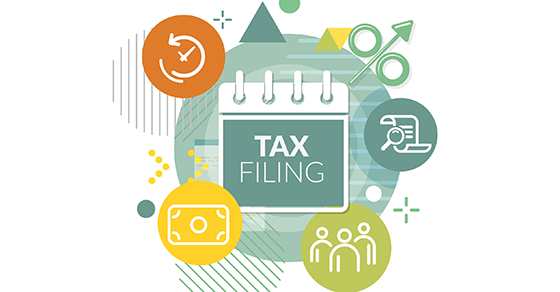
When it comes to taxes, December 31 is more than just New Year’s Eve. That date will affect the filing status box that will be checked on your 2020 tax return. When filing a return, you do so with one of five tax filing statuses. In part, they depend on whether you’re married or unmarried on December 31.
More than one filing status may apply, and you can use the one that saves the most tax. It’s also possible that your status could change during the year.
Here are the filing statuses and who can claim them:
- Single. This is generally used if you’re unmarried, divorced or legally separated under a divorce or separate maintenance decree governed by state law.
- Married filing jointly. If you’re married, you can file a joint tax return with your spouse. If your spouse passes away, you can generally file a joint return for that year.
- Married filing separately. As an alternative to filing jointly, married couples can choose to file separate tax returns. In some cases, this may result in less tax owed.
- Head of household. Certain unmarried taxpayers may qualify to use this status and potentially pay less tax. Special requirements are described below.
- Qualifying widow(er) with a dependent child. This may be used if your spouse died during one of the previous two years and you have a dependent child. Other conditions also apply.
How to qualify as “head of household”
In general, head of household status is more favorable than filing as a single taxpayer. To qualify, you must “maintain a household” that, for more than half the year, is the principal home of a “qualifying child” or other relative that you can claim as your dependent.
A “qualifying child” is defined as one who:
- Lives in your home for more than half the year,
- Is your child, stepchild, foster child, sibling, stepsibling or a descendant of any of these,
- Is under 19 years old or under age 24 if enrolled as a student, and
- Doesn’t provide over half of his or her own support for the year.
If a child’s parents are divorced, different rules may apply. Also, a child isn’t eligible to be a “qualifying child” if he or she is married and files a joint tax return or isn’t a U.S. citizen or resident.
There are other head of household requirements. You’re considered to maintain a household if you live in it for the tax year and pay more than half the cost. This includes property taxes, mortgage interest, rent, utilities, property insurance, repairs, upkeep, and food consumed in the home. Don’t include medical care, clothing, education, life insurance or transportation.
Under a special rule, you can qualify as head of household if you maintain a home for a parent even if you don’t live with him or her. To qualify, you must claim the parent as your dependent.
Determining marital status
You must generally be unmarried to claim head of household status. If you’re married, you must generally file as either married filing jointly or married filing separately — not as head of household. However, if you’ve lived apart from your spouse for the last six months of the year, a qualifying child lives with you and you “maintain” the household, you’re treated as unmarried. In this case, you may qualify as head of household.
Contact us if you have questions about your filing status. Or ask us when we prepare your return.
The right entity choice: Should you convert from a C to an S corporation?

The best choice of entity can affect your business in several ways, including the amount of your tax bill. In some cases, businesses decide to switch from one entity type to another. Although S corporations can provide substantial tax benefits over C corporations in some circumstances, there are potentially costly tax issues that you should assess before making the decision to convert from a C corporation to an S corporation.
Here are four issues to consider:
1. LIFO inventories. C corporations that use last-in, first-out (LIFO) inventories must pay tax on the benefits they derived by using LIFO if they convert to S corporations. The tax can be spread over four years. This cost must be weighed against the potential tax gains from converting to S status.
2. Built-in gains tax. Although S corporations generally aren’t subject to tax, those that were formerly C corporations are taxed on built-in gains (such as appreciated property) that the C corporation has when the S election becomes effective, if those gains are recognized within five years after the conversion. This is generally unfavorable, although there are situations where the S election still can produce a better tax result despite the built-in gains tax.
3. Passive income. S corporations that were formerly C corporations are subject to a special tax. It kicks in if their passive investment income (including dividends, interest, rents, royalties, and stock sale gains) exceeds 25% of their gross receipts, and the S corporation has accumulated earnings and profits carried over from its C corporation years. If that tax is owed for three consecutive years, the corporation’s election to be an S corporation terminates. You can avoid the tax by distributing the accumulated earnings and profits, which would be taxable to shareholders. Or you might want to avoid the tax by limiting the amount of passive income.
4. Unused losses. If your C corporation has unused net operating losses, they can’t be used to offset its income as an S corporation and can’t be passed through to shareholders. If the losses can’t be carried back to an earlier C corporation year, it will be necessary to weigh the cost of giving up the losses against the tax savings expected to be generated by the switch to S status.
Other considerations
When a business switches from C to S status, these are only some of the factors to consider. For example, shareholder-employees of S corporations can’t get all of the tax-free fringe benefits that are available with a C corporation. And there may be issues for shareholders who have outstanding loans from their qualified plans. These factors have to be taken into account in order to understand the implications of converting from C to S status.
If you’re interested in an entity conversion, contact us. We can explain what your options are, how they’ll affect your tax bill and some possible strategies you can use to minimize taxes.
Prevent and detect insider cyberattacks

In one recent cybercrime scheme, a mortgage company employee accessed his employer’s records without authorization, then used stolen customer lists to start his own mortgage business. The perpetrator hacked the protected records by sending an email containing malware to a coworker.
This particular dishonest worker was caught. But your company may not be so lucky. One of your employees’ cybercrime schemes could end in financial losses or competitive disadvantages due to corporate espionage.
Best practices
Why would trusted employees steal from the hand that feeds them? They could be working for a competitor or seeking revenge for perceived wrongs. Sometimes coercion by a third party or the need to pay gambling or addiction-related debts comes into play.
Although there are no guarantees that you’ll be able to foil every hacking scheme, your business can minimize the risk of insider theft by implementing several best practices:
Restrict IT use. Your IT personnel should take proactive measures to restrict or monitor employee use of email accounts, websites, peer-to-peer networking, Instant Messaging protocols and File Transfer Protocol.
Remove access. When employees leave the company, immediately remove them from all access lists and ask them to return their means of access to secure accounts. Provide them with copies of any signed confidentiality agreements as a reminder of their legal responsibilities for maintaining data confidentiality.
Don’t neglect physical assets. Some data thefts occur the old-fashioned way — with employees absconding with materials after hours or while no one is looking. Typically, a crooked employee will print or photocopy documents and remove them from the workplace hidden in a briefcase or bag. Some dishonest employees remove files from cabinets, desks or other storage locations. Controls such as locks, surveillance cameras and restrictions to access can help prevent and deter theft.
Treat workers well. Create a positive work environment and treat employees fairly and with respect. This can encourage loyalty and trust, thereby minimizing potential motives for employee theft.
Wireless risk
In addition to the previously named threats, your office’s wireless communication networks — including Wi-Fi, Bluetooth and cellular — can increase fraud risk. Fraud perpetrators can, for example, use mobile devices to gain access to sensitive information. One way to deter such activities is to restrict Wi-Fi to employees with special passwords or biometric access.
For more tips on preventing employee-originated cybercrime, or if you suspect a fraud scheme is underway, contact us for help.
The Balanced Scorecard approach to strategic planning

In the early 1990s, the Balanced Scorecard approach to strategic planning was developed to enable business owners to better organize and visualize their objectives. With 2021 shaping up to be a year of both daunting challenges and potentially remarkable recovery, your company should have a strategic plan that’s both comprehensive and flexible. Giving this methodology a try may prove beneficial.
Areas of focus
The Balanced Scorecard approach segments strategic planning into four critical areas:
1. Customers. Every business owner knows the importance of customer satisfaction but, to truly know and fulfill customers’ needs, you must identify the right metrics that measure it. Also identify the types of customers you want and, more important, can best serve.
Key question to ask: To fulfill our strategic objectives, how can we attract and retain the customers that build our bottom line?
2. Finance. Companies generally know how to measure their financial performance. However, they too often rely on finances as the only barometer of overall operational stability and success. Financial details are often lagging indicators because they reveal past events — not future performance. So, along with continuing to properly generate financial statements, also track data such as employee productivity and sales growth.
Key question to ask: To achieve our vision, how will our leadership and employees drive our company’s financial success?
3. Internal processes. To operate more productively and efficiently, identify problems and change the related processes. Simply paying closer attention to a shortcoming isn’t an adequate solution. For example, measuring productivity won’t automatically increase it. Your business must analyze the internal components of production — from design to delivery to billing and receipt of revenue — and implement process improvements.
Key question to ask: To meet our goals, in which business processes do we need to excel?
4. Learning and professional growth. Continuing education often calls for more time and effort than businesses are willing or able to devote. Learning must go beyond simply training new hires to include, for instance, mentoring and knowledge sharing through performance management programs. Many companies’ success depends largely on the development and preservation of intellectual capital.
Key question to ask: To accomplish our strategic plan, how can we better preserve and pass along knowledge, as well as encourage learning?
A multipronged effort
Compiling data under the Balanced Scorecard approach requires a multipronged effort. You might use a survey to gather customer info. Your financial statements and industry benchmarks should provide insights into finances. Employee surveys and open forums can illuminate internal operations. And a performance management consultant could help you target learning opportunities and methods.
We can assist you in identifying pertinent financial metrics and incorporating accurate analysis into your strategic plan to help you achieve your profitability goals in the coming year.
The next estimated tax deadline is January 15 if you have to make a payment

If you’re self-employed and don’t have withholding from paychecks, you probably have to make estimated tax payments. These payments must be sent to the IRS on a quarterly basis. The fourth 2020 estimated tax payment deadline for individuals is Friday, January 15, 2021. Even if you do have some withholding from paychecks or payments you receive, you may still have to make estimated payments if you receive other types of income such as Social Security, prizes, rent, interest, and dividends.
Pay-as-you-go system
You must make sufficient federal income tax payments long before the April filing deadline through withholding, estimated tax payments, or a combination of the two. If you fail to make the required payments, you may be subject to an underpayment penalty, as well as interest.
In general, you must make estimated tax payments for 2020 if both of these statements apply:
- You expect to owe at least $1,000 in tax after subtracting tax withholding and credits, and
- You expect withholding and credits to be less than the smaller of 90% of your tax for 2020 or 100% of the tax on your 2019 return — 110% if your 2019 adjusted gross income was more than $150,000 ($75,000 for married couples filing separately).
If you’re a sole proprietor, partner or S corporation shareholder, you generally have to make estimated tax payments if you expect to owe $1,000 or more in tax when you file your return.
Quarterly due dates
Estimated tax payments are spread out through the year. The due dates are April 15, June 15, September 15 and January 15 of the following year. However, if the date falls on a weekend or holiday, the deadline is the next business day.
Estimated tax is calculated by factoring in expected gross income, taxable income, deductions and credits for the year. The easiest way to pay estimated tax is electronically through the Electronic Federal Tax Payment System. You can also pay estimated tax by check or money order using the Estimated Tax Payment Voucher or by credit or debit card.
Seasonal businesses
Most individuals make estimated tax payments in four installments. In other words, you can determine the required annual payment, divide the number by four and make four equal payments by the due dates. But you may be able to make smaller payments under an “annualized income method.” This can be useful to people whose income isn’t uniform over the year, perhaps because of a seasonal business. You may also want to use the annualized income method if a large portion of your income comes from capital gains on the sale of securities that you sell at various times during the year.
Determining the correct amount
Contact us if you think you may be eligible to determine your estimated tax payments under the annualized income method, or you have any other questions about how the estimated tax rules apply to you.
2021 Q1 tax calendar: Key deadlines for businesses and other employers

Here are some of the key tax-related deadlines affecting businesses and other employers during the first quarter of 2021. Keep in mind that this list isn’t all-inclusive, so there may be additional deadlines that apply to you. Contact us to ensure you’re meeting all applicable deadlines and to learn more about the filing requirements.
January 15
- Pay the final installment of 2020 estimated tax.
- Farmers and fishermen: Pay estimated tax for 2020.
February 1 (The usual deadline of January 31 is a Sunday)
- File 2020 Forms W-2, “Wage and Tax Statement,” with the Social Security Administration and provide copies to your employees.
- Provide copies of 2020 Forms 1099-MISC, “Miscellaneous Income,” to recipients of income from your business where required.
- File 2020 Forms 1099-MISC reporting nonemployee compensation payments in Box 7 with the IRS.
- File Form 940, “Employer’s Annual Federal Unemployment (FUTA) Tax Return,” for 2020. If your undeposited tax is $500 or less, you can either pay it with your return or deposit it. If it’s more than $500, you must deposit it. However, if you deposited the tax for the year in full and on time, you have until February 10 to file the return.
- File Form 941, “Employer’s Quarterly Federal Tax Return,” to report Medicare, Social Security and income taxes withheld in the fourth quarter of 2020. If your tax liability is less than $2,500, you can pay it in full with a timely filed return. If you deposited the tax for the quarter in full and on time, you have until February 10 to file the return. (Employers that have an estimated annual employment tax liability of $1,000 or less may be eligible to file Form 944, “Employer’s Annual Federal Tax Return.”)
- File Form 945, “Annual Return of Withheld Federal Income Tax,” for 2020 to report income tax withheld on all nonpayroll items, including backup withholding and withholding on accounts such as pensions, annuities and IRAs. If your tax liability is less than $2,500, you can pay it in full with a timely filed return. If you deposited the tax for the year in full and on time, you have until February 10 to file the return.
March 1 (The usual deadline of February 28 is a Sunday)
- File 2020 Forms 1099-MISC with the IRS if: 1) they’re not required to be filed earlier and 2) you’re filing paper copies. (Otherwise, the filing deadline is March 31.)
March 16
- If a calendar-year partnership or S corporation, file or extend your 2020 tax return and pay any tax due. If the return isn’t extended, this is also the last day to make 2020 contributions to pension and profit-sharing plans.
Rightsizing your sales force

With a difficult year almost over, and another one on the horizon, now may be a good time to assess the size of your sales force. Maybe the economic changes triggered by the COVID-19 pandemic led you to downsize earlier in the year. Or perhaps you’ve added to your sales team to seize opportunities. In either case, every business owner should know whether his or her sales team is the right size.
Various KPIs
To determine your optimal sales staffing level, there are several steps you can take. A good place to start is with various key performance indicators (KPIs) that enable you to quantify performance in dollars and cents.
The KPIs you choose to calculate and evaluate need to be specific to your industry and appropriate to the size of your company and the state of the market in which you operate. If you’re comparing your sales numbers to those of other businesses, make sure it’s an apples-to-apples comparison.
In addition, you’ll need to pick KPIs that are appropriate to whether you’re assessing the performance of a sales manager or that of a sales representative. For a sales manager, you could look at average annual sales volume to determine whether his or her team is contributing adequately to your target revenue goals. Ideal KPIs for sales reps are generally more granular; examples include sales by rep and lead-to-sale percentage.
More than math
Rightsizing your sales staff, however, isn’t only a mathematical equation. To customize your approach, think about the specific needs of your company.
Consider, for example, how you handle staffing when sales employees take vacations or call in sick. If you frequently find yourself coming up short on revenue projections because of a lack of boots on the ground, you may want to expand your sales staff to cover territories and serve customers more consistently.
Then again, financial problems that arise from carrying too many sales employees can creep up on you. Be careful not to hire at a rate faster than your sales and gross profits are increasing. If you’re looking to make aggressive moves in your market, be sure you’ve done the due diligence to ensure that the hiring and training costs will likely pay off.
Last, but not least, think about your customers. Are they largely satisfied? If so, the size of your sales force might be just fine. However, salespeople saying that they’re overworked or customers complaining about a lack of responsiveness could mean your staff is too small. Conversely, if you have market segments that just aren’t yielding revenue or salespeople who are continually underperforming, it might be time to downsize.
Reasonable objectives
By regularly monitoring the headcount of your sales staff with an eye on fulfilling reasonable revenue goals, you’ll stand a better chance of maximizing profitability during good times and maintaining it during more challenging periods. Contact us for help choosing the right KPIs and cost-effectively managing your business.
Can you qualify for a medical expense tax deduction?

You may be able to deduct some of your medical expenses, including prescription drugs, on your federal tax return. However, the rules make it hard for many people to qualify. But with proper planning, you may be able to time discretionary medical expenses to your advantage for tax purposes.
Itemizers must meet a threshold
For 2020, the medical expense deduction can only be claimed to the extent your unreimbursed costs exceed 7.5% of your adjusted gross income (AGI). This threshold amount is scheduled to increase to 10% of AGI for 2021. You also must itemize deductions on your return in order to claim a deduction.
If your total itemized deductions for 2020 will exceed your standard deduction, moving or “bunching” nonurgent medical procedures and other controllable expenses into 2020 may allow you to exceed the 7.5% floor and benefit from the medical expense deduction. Controllable expenses include refilling prescription drugs, buying eyeglasses and contact lenses, going to the dentist and getting elective surgery.
In addition to hospital and doctor expenses, here are some items to take into account when determining your allowable costs:
- Health insurance premiums. This item can total thousands of dollars a year. Even if your employer provides health coverage, you can deduct the portion of the premiums that you pay. Long-term care insurance premiums are also included as medical expenses, subject to limits based on age.
- Transportation. The cost of getting to and from medical treatments counts as a medical expense. This includes taxi fares, public transportation, or using your own car. Car costs can be calculated at 17¢ a mile for miles driven in 2020, plus tolls and parking. Alternatively, you can deduct certain actual costs, such as for gas and oil.
- Eyeglasses, hearing aids, dental work, prescription drugs and more. Deductible expenses include the cost of glasses, hearing aids, dental work, psychiatric counseling and other ongoing expenses in connection with medical needs. Purely cosmetic expenses don’t qualify. Prescription drugs (including insulin) qualify, but over-the-counter aspirin and vitamins don’t. Neither do amounts paid for treatments that are illegal under federal law (such as medical marijuana), even if state law permits them. The services of therapists and nurses can qualify as long as they relate to a medical condition and aren’t for general health. Amounts paid for certain long-term care services required by a chronically ill individual also qualify.
- Smoking-cessation and weight-loss programs. Amounts paid for participating in smoking-cessation programs and for prescribed drugs designed to alleviate nicotine withdrawal are deductible. However, nonprescription nicotine gum and patches aren’t. A weight-loss program is deductible if undertaken as treatment for a disease diagnosed by a physician. Deductible expenses include fees paid to join a program and attend periodic meetings. However, the cost of food isn’t deductible.
Costs for dependents
You can deduct the medical costs that you pay for dependents, such as your children. Additionally, you may be able to deduct medical costs you pay for other individuals, such as an elderly parent. Contact us if you have questions about medical expense deductions.
Drive more savings to your business with the heavy SUV tax break

Are you considering replacing a car that you’re using in your business? There are several tax implications to keep in mind.
A cap on deductions
Cars are subject to more restrictive tax depreciation rules than those that apply to other depreciable assets. Under so-called “luxury auto” rules, depreciation deductions are artificially “capped.” So is the alternative Section 179 deduction that you can claim if you elect to expense (write-off in the year placed in service) all or part of the cost of a business car under the tax provision that for some assets allows expensing instead of depreciation. For example, for most cars that are subject to the caps and that are first placed in service in calendar year 2020 (including smaller trucks or vans built on a truck chassis that are treated as cars), the maximum depreciation and/or expensing deductions are:
- $18,100 for the first tax year in its recovery period (2020 for calendar year taxpayers);
- $16,100 for the second tax year;
- $9,700 for the third tax year; and
- $5,760 for each succeeding tax year.
The effect is generally to extend the number of years it takes to fully depreciate the vehicle.
The heavy SUV strategy
Because of the restrictions for cars, you might be better off from a tax standpoint if you replace your business car with a heavy sport utility vehicle (SUV), pickup or van. That’s because the caps on annual depreciation and expensing deductions for passenger automobiles don’t apply to trucks or vans (and that includes SUVs). What type of SUVs qualify? Those that are rated at more than 6,000 pounds gross (loaded) vehicle weight.
This means that in most cases you’ll be able to write off the entire cost of a new heavy SUV used entirely for business purposes as 100% bonus depreciation in the year you place it into service. And even if you elect out of bonus depreciation for the heavy SUV (which generally would apply to the entire depreciation class the SUV belongs in), you can elect to expense under Section 179 (subject to an aggregate dollar limit for all expensed assets), the cost of an SUV up to an inflation-adjusted limit ($25,900 for an SUV placed in service in tax years beginning in 2020). You’d then depreciate the remainder of the cost under the usual rules without regard to the annual caps.
Potential caveats
The tax benefits described above are all subject to adjustment for non-business use. Also, if business use of an SUV doesn’t exceed 50% of total use, the SUV won’t be eligible for the expensing election, and would have to be depreciated on a straight-line method over a six-tax-year period.
Contact us if you’d like more information about tax breaks when you buy a heavy SUV for business.
Should you add a technology executive to your staff?

The COVID-19 pandemic and resulting economic impact have hurt many companies, especially small businesses. However, for others, the jarring challenges this year have created opportunities and accelerated changes that were probably going to occur all along.
One particular area of speedy transformation is technology. It’s never been more important for businesses to wield their internal IT effectively, enable customers and vendors to easily interact with those systems, and make the most of artificial intelligence and “big data” to spot trends.
Accomplishing all this is a tall order for even the most energetic business owner or CEO. That’s why many companies end up creating one or more tech-specific executive positions. Assuming you don’t already employ such an individual, should you consider adding an IT exec? Perhaps so.
3 common positions
There are three widely used position titles for technology executives:
1. Chief Information Officer (CIO). This person is typically responsible for managing a company’s internal IT infrastructure and operations. In fact, an easy way to remember the purpose of this position is to replace the word “Information” with “Internal.” A CIO’s job is to oversee the purchase, implementation and proper use of technological systems and products that will maximize the efficiency and productivity of the business.
2. Chief Technology Officer (CTO). In contrast to a CIO, a CTO focuses on external processes — specifically, with customers and vendors. This person usually oversees the development and eventual production of technological products or services that will meet customer needs and increase revenue. The position demands the ability to live on the cutting edge by doing constant research into tech trends while also being highly collaborative with employees and vendors.
3. Chief Digital Officer (CDO). For some companies, the CIO and/or CTO are so busy with their respective job duties that they’re unable to look very far ahead. This is where a CDO typically comes into play. His or her primary objective is to spot new markets, channels or even business models that the company can target, explore and perhaps eventually profit from. So, while a CIO looks internally and a CTO looks externally, a CDO’s gaze is set on a more distant horizon.
Costs vs. benefits
As mentioned, these are three of the most common IT executive positions. Their specific objectives and job duties may vary depending on the business in question. And they are by no means the only examples of such positions. There are many variations, including Chief Marketing Technologist and Chief Information Security Officer.
So, getting back to our original question: is this a good time to add one or more of these execs to your staff? The answer very much depends on the financial strength and projected direction of your company. These positions will call for major expenditures in hiring, payroll and benefits. Our firm can help you weigh the costs vs. benefits.
Maximize your 401(k) plan to save for retirement

Contributing to a tax-advantaged retirement plan can help you reduce taxes and save for retirement. If your employer offers a 401(k) or Roth 401(k) plan, contributing to it is a smart way to build a substantial sum of money.
If you’re not already contributing the maximum allowed, consider increasing your contribution rate. Because of tax-deferred compounding (tax-free in the case of Roth accounts), boosting contributions can have a major impact on the size of your nest egg at retirement.
With a 401(k), an employee makes an election to have a certain amount of pay deferred and contributed by an employer on his or her behalf to the plan. The contribution limit for 2020 is $19,500. Employees age 50 or older by year end are also permitted to make additional “catch-up” contributions of $6,500, for a total limit of $26,000 in 2020.
The IRS recently announced that the 401(k) contribution limits for 2021 will remain the same as for 2020.
If you contribute to a traditional 401(k)
A traditional 401(k) offers many benefits, including:
- Contributions are pretax, reducing your modified adjusted gross income (MAGI), which can also help you reduce or avoid exposure to the 3.8% net investment income tax.
- Plan assets can grow tax-deferred — meaning you pay no income tax until you take distributions.
- Your employer may match some or all of your contributions pretax.
If you already have a 401(k) plan, take a look at your contributions. Try to increase your contribution rate to get as close to the $19,500 limit (with an extra $6,500 if you’re age 50 or older) as you can afford. Keep in mind that your paycheck will be reduced by less than the dollar amount of the contribution, because the contributions are pretax — so, income tax isn’t withheld.
If you contribute to a Roth 401(k)
Employers may also include a Roth option in their 401(k) plans. If your employer offers this, you can designate some or all of your contributions as Roth contributions. While such contributions don’t reduce your current MAGI, qualified distributions will be tax-free.
Roth 401(k) contributions may be especially beneficial for higher-income earners, because they don’t have the option to contribute to a Roth IRA. Your ability to make a Roth IRA contribution for 2021 will be reduced if your adjusted gross income (AGI) in 2021 exceeds:
- $198,000 (up from $196,000 for 2020) for married joint-filing couples, or
- $125,000 (up from $124,000 for 2020) for single taxpayers.
Your ability to contribute to a Roth IRA in 2021 will be eliminated entirely if you’re a married joint filer and your 2021 AGI equals or exceeds $208,000 (up from $206,000 for 2020). The 2021 cutoff for single filers is $140,000 or more (up from $139,000 for 2020).
The best mix
Contact us if you have questions about how much to contribute or the best mix between traditional and Roth 401(k) contributions. We can discuss the tax and retirement-saving strategies in your situation.
The QBI deduction basics and a year-end tax tip that might help you qualify

If you own a business, you may wonder if you’re eligible to take the qualified business income (QBI) deduction. Sometimes this is referred to as the pass-through deduction or the Section 199A deduction.
The QBI deduction:
- Is available to owners of sole proprietorships, single member limited liability companies (LLCs), partnerships, and S corporations, as well as trusts and estates.
- Is intended to reduce the tax rate on QBI to a rate that’s closer to the corporate tax rate.
- Is taken “below the line.” In other words, it reduces your taxable income but not your adjusted gross income.
- Is available regardless of whether you itemize deductions or take the standard deduction.
Taxpayers other than corporations may be entitled to a deduction of up to 20% of their QBI. For 2020, if taxable income exceeds $163,300 for single taxpayers, or $326,600 for a married couple filing jointly, the QBI deduction may be limited based on different scenarios. These include whether the taxpayer is engaged in a service-type of trade or business (such as law, accounting, health, or consulting), the amount of W-2 wages paid by the trade or business, and/or the unadjusted basis of qualified property (such as machinery and equipment) held by the trade or business.
The limitations are phased in. For example, the phase-in for 2020 applies to single filers with taxable income between $163,300 and $213,300 and joint filers with taxable income between $326,600 and $426,600.
For tax years beginning in 2021, the inflation-adjusted threshold amounts will be $164,900 for single taxpayers, and $329,800 for married couples filing jointly.
Year-end planning tip
Some taxpayers may be able to achieve significant savings with respect to this deduction, by deferring income or accelerating deductions at year end so that they come under the dollar thresholds (or be subject to a smaller phaseout of the deduction) for 2020. Depending on your business model, you also may be able to increase the deduction by increasing W-2 wages before year end. The rules are quite complex, so contact us with questions and consult with us before taking steps.
Family business owners must weave together succession and estate planning

It’s been estimated that there are roughly 5 million family-owned businesses in the United States. Annually, these companies make substantial contributions to both employment figures and the gross domestic product. If you own a family business, one important issue to address is how to best weave together your succession plan with your estate plan.
Rise to the challenge
Transferring ownership of a family business is often difficult because of the distinction between ownership and management succession. From an estate planning perspective, transferring assets to the younger generation as early as possible allows you to remove future appreciation from your estate, minimizing any estate taxes. However, you may not be ready to hand over control of your business or you may feel that your children aren’t yet ready to run the company.
There are various ways to address this quandary. You could set up a family limited partnership, transfer nonvoting stock to heirs or establish an employee stock ownership plan.
Another reason to separate ownership and management succession is to deal with family members who aren’t involved in the business. Providing such heirs with nonvoting stock or other equity interests that don’t confer control can be an effective way to share the wealth with them while allowing those who work in the business to take over management.
Consider an installment sale
An additional challenge to family businesses is that older and younger generations may have conflicting financial needs. Fortunately, strategies are available to generate cash flow for the owner while minimizing the burden on the next generation.
For example, consider an installment sale. These transactions provide liquidity for the owner while improving the chances that the younger generation’s purchase can be funded by cash flows from the business. Plus, so long as the price and terms are comparable to arm’s-length transactions between unrelated parties, the sale shouldn’t trigger gift or estate taxes.
Explore trust types
Or, you might want to create a trust. By transferring business interests to a grantor retained annuity trust (GRAT), for instance, the owner obtains a variety of gift and estate tax benefits (provided he or she survives the trust term) while enjoying a fixed income stream for a period of years. At the end of the term, the business is transferred to the owner’s children or other beneficiaries. GRATs are typically designed to be gift-tax-free.
There are other options as well, such as an installment sale to an intentionally defective grantor trust (IDGT). Essentially a properly structured IDGT allows an owner to sell the business on a tax-advantaged basis while enjoying an income stream and retaining control during the trust term. Once the installment payments are complete, the business passes to the owner’s beneficiaries free of gift taxes.
Protect your legacy
Family-owned businesses play an important role in the U.S. economy. We can help you integrate your succession plan with your estate plan to protect both the company itself and your financial legacy.
Steer clear of the wash sale rule if you’re selling stock by year end

Are you thinking about selling stock shares at a loss to offset gains that you’ve realized during 2020? If so, it’s important not to run afoul of the “wash sale” rule.
IRS may disallow the loss
Under this rule, if you sell stock or securities for a loss and buy substantially identical stock or securities back within the 30-day period before or after the sale date, the loss can’t be claimed for tax purposes. The rule is designed to prevent taxpayers from using the tax benefit of a loss without parting with ownership in any significant way. Note that the rule applies to a 30-day period before or after the sale date to prevent “buying the stock back” before it’s even sold. (If you participate in any dividend reinvestment plans, it’s possible the wash sale rule may be inadvertently triggered when dividends are reinvested under the plan, if you’ve separately sold some of the same stock at a loss within the 30-day period.)
The rule even applies if you repurchase the security in a tax-advantaged retirement account, such as a traditional or Roth IRA.
Although the loss can’t be claimed on a wash sale, the disallowed amount is added to the cost of the new stock. So, the disallowed amount can be claimed when the new stock is finally disposed of in the future (other than in a wash sale).
An example to illustrate
Let’s say you bought 500 shares of ABC Inc. for $10,000 and sold them on November 5 for $3,000. On November 30, you buy 500 shares of ABC again for $3,200. Since the shares were “bought back” within 30 days of the sale, the wash sale rule applies. Therefore, you can’t claim a $7,000 loss. Your basis in the new 500 shares is $10,200: the actual cost plus the $7,000 disallowed loss.
If only a portion of the stock sold is bought back, only that portion of the loss is disallowed. So, in the above example, if you’d only bought back 300 of the 500 shares (60%), you’d be able to claim 40% of the loss on the sale ($2,800). The remaining $4,200 loss that’s disallowed under the wash sale rule would be added to your cost of the 300 shares.
If you’ve cashed in some big gains in 2020, you may be looking for unrealized losses in your portfolio so you can sell those investments before year end. By doing so, you can offset your gains with your losses and reduce your 2020 tax liability. But be careful of the wash sale rule. We can answer any questions you may have.
Small businesses: Cash in on depreciation tax savers

As we approach the end of the year, it’s a good time to think about whether your business needs to buy business equipment and other depreciable property. If so, you may benefit from the Section 179 depreciation tax deduction for business property. The election provides a tax windfall to businesses, enabling them to claim immediate deductions for qualified assets, instead of taking depreciation deductions over time.
Even better, the Sec. 179 deduction isn’t the only avenue for immediate tax write-offs for qualified assets. Under the 100% bonus depreciation tax break, the entire cost of eligible assets placed in service in 2020 can be written off this year.
But to benefit for this tax year, you need to buy and place qualifying assets in service by December 31.
What qualifies?
The Sec. 179 deduction applies to tangible personal property such as machinery and equipment purchased for use in a trade or business, and, if the taxpayer elects, qualified real property. It’s generally available on a tax year basis and is subject to a dollar limit.
The annual deduction limit is $1.04 million for tax years beginning in 2020, subject to a phaseout rule. Under the rule, the deduction is phased out (reduced) if more than a specified amount of qualifying property is placed in service during the tax year. The amount is $2.59 million for tax years beginning in 2020. (Note: Different rules apply to heavy SUVs.)
There’s also a taxable income limit. If your taxable business income is less than the dollar limit for that year, the amount for which you can make the election is limited to that taxable income. However, any amount you can’t immediately deduct is carried forward and can be deducted in later years (to the extent permitted by the applicable dollar limit, the phaseout rule, and the taxable income limit).
In addition to significantly increasing the Sec. 179 deduction, the TCJA also expanded the definition of qualifying assets to include depreciable tangible personal property used mainly in the furnishing of lodging, such as furniture and appliances.
The TCJA also expanded the definition of qualified real property to include qualified improvement property and some improvements to nonresidential real property, such as roofs; heating, ventilation and air-conditioning equipment; fire protection and alarm systems; and security systems.
What about bonus depreciation?
With bonus depreciation, businesses are allowed to deduct 100% of the cost of certain assets in the first year, rather than capitalize them on their balance sheets and gradually depreciate them. (Before the Tax Cuts and Jobs Act, you could deduct only 50% of the cost of qualified new property.)
This tax break applies to qualifying assets placed in service between September 28, 2017, and December 31, 2022 (by December 31, 2023, for certain assets with longer production periods and for aircraft). After that, the bonus depreciation percentage is reduced by 20% per year, until it’s fully phased out after 2026 (or after 2027 for certain assets described above).
Bonus depreciation is allowed for both new and used qualifying assets, which include most categories of tangible depreciable assets other than real estate.
Important: When both 100% first-year bonus depreciation and the Sec. 179 deduction are available for the same asset, it’s generally more advantageous to claim 100% bonus depreciation, because there are no limitations on it.
Need assistance?
These favorable depreciation deductions may deliver tax-saving benefits to your business on your 2020 return. Contact us if you have questions, or you want more information about how your business can maximize the deductions.
Lessons of 2020: Change management

The year 2020 has taught businesses many lessons. The sudden onset of the COVID-19 pandemic followed by drastic changes to the economy have forced companies to alter the size of their workforces, restructure work environments and revise sales models — just to name a few challenges. And what this has all meant for employees is change.
Even before this year’s public health crisis, many businesses were looking into and setting forth policies regarding change management. In short, this is a formalized approach to providing employees the information, training and ongoing coaching needed to successfully adapt to any modification to their day-to-day jobs.
There’s little doubt that one of the enduring lessons of 2020 is that businesses must be able to shepherd employees through difficult transitions, even (or especially) when the company itself didn’t bring about the change in question.
Why change is hard
Most employees resist change for many reasons. There’s often a perceived loss of, or threat to, job security or status. Inconvenience and unfamiliarity provoke apprehension. In some cases, perhaps because of misinformation, employees may distrust their employers’ motives for a change. And some workers will always simply believe the “old way is better.”
What’s worse, some changes might make employees’ jobs more difficult. For example, moving to a new location might enhance an organization’s image or provide safer or more productive facilities. But doing so also may increase some employees’ commuting times or put employees in a drastically different working environment. When their daily lives are affected in such ways, employees tend to question the decision and experience high levels of anxiety.
What you shouldn’t do
Often, when employees resist change, a company’s decision-makers can’t understand how ideas they’ve spent weeks, months or years deliberating could be so quickly rejected. (Of course, in the case of the COVID-19 pandemic, tough choices had to be made in a matter of days.) Some leadership teams forget that employees haven’t had time to adjust to a new idea. Instead of working to ease employee fears, executives or supervisors may double down on the change, more strictly enforcing new rules and showing little patience for disagreements or concerns.
And it’s here the implementation effort can break down and start costing the business real dollars and cents. Employees may resist change in many destructive ways, from taking very slow learning curves to calling in sick to filing formal complaints or lawsuits. Some might even quit.
The bottom line: by not engaging in some form of change management, you’re more likely to experience reduced productivity, bad morale and increased turnover.
How to cope
“Life comes at ya fast,” goes the popular saying. Given the events of this year, it’s safe to say that most business owners would agree. Identify ways you’ve been able to help employees deal with this year’s changes and document them so they can be of use to your company in the future. Contact us for help cost-effectively managing your business.
Employees: Don’t forget about your FSA funds

Many employees take advantage of the opportunity to save taxes by placing funds in their employer’s health or dependent care flexible spending arrangements (FSAs). As the end of 2020 nears, here are some rules and reminders to keep in mind.
Health FSAs
A pre-tax contribution of $2,750 to a health FSA is permitted in both 2020 and 2021. You save taxes because you use pre-tax dollars to pay for medical expenses that might not be deductible. For example, they wouldn’t be deductible if you don’t itemize deductions on your tax return. Even if you do itemize, medical expenses must exceed a certain percentage of your adjusted gross income in order to be deductible. Additionally, the amounts that you contribute to a health FSA aren’t subject to FICA taxes.
Your plan should have a listing of qualifying items and any documentation from a medical provider that may be needed to get a reimbursement for these items.
To avoid any forfeiture of your health FSA funds because of the “use-it-or-lose-it” rule, you must incur qualifying medical expenditures by the last day of the plan year (Dec. 31 for a calendar year plan), unless the plan allows an optional grace period. A grace period can’t extend beyond the 15th day of the third month following the close of the plan year (March 15 for a calendar year plan).
An additional exception to the use-it-or lose-it rule permits health FSAs to allow a carryover of a participant’s unused health FSA funds of up to $550. Amounts carried forward under this rule are added to the up-to-$2,750 amount that you elect to contribute to the health FSA for 2021. An employer may allow a carryover or a grace period for an FSA, but not both features.
Examining your year-to-date expenditures now will also help you to determine how much to set aside for next year. Don’t forget to reflect any changed circumstances in making your calculation.
Dependent care FSAs
Some employers also allow employees to set aside funds on a pre-tax basis in dependent care FSAs. A $5,000 maximum annual contribution is permitted ($2,500 for a married couple filing separately).
These FSAs are for a dependent-qualifying child under age 13, or a dependent or spouse who is physically or mentally incapable of self-care and who has the same principal place of abode as the taxpayer for more than half of the tax year.
Like health FSAs, dependent care FSAs are subject to a use-it-or-lose-it rule, but only the grace period relief applies, not the up-to-$550 forfeiture exception. Thus, now is a good time to review expenditures to date and to project amounts to be set aside for next year.
Note: Because of COVID-19, the IRS has temporarily allowed employees to take certain actions in 2020 related to their health care and dependent care FSAs. For example, employees may be permitted to make prospective mid-year elections and changes. Ask your HR department if your plan allows these actions if you believe they would be beneficial in your situation. Other rules and exceptions may apply.
Contact us if you’d like to discuss FSAs in greater detail.
The importance of S corporation basis and distribution elections

S corporations can provide tax advantages over C corporations in the right circumstances. This is true if you expect that the business will incur losses in its early years because shareholders in a C corporation generally get no tax benefit from such losses. Conversely, as an S corporation shareholder, you can deduct your percentage share of these losses on your personal tax return to the extent of your basis in the stock and any loans you personally make to the entity.
Losses that can’t be deducted because they exceed your basis are carried forward and can be deducted by you when there’s sufficient basis.
Therefore, your ability to use losses that pass through from an S corporation depends on your basis in the corporation’s stock and debt. And, basis is important for other purposes such as determining the amount of gain or loss you recognize if you sell the stock. Your basis in the corporation is adjusted to reflect various events such as distributions from the corporation, contributions you make to the corporation and the corporation’s income or loss.
Adjustments to basis
However, you may not be aware that several elections are available to an S corporation or its shareholders that can affect the basis adjustments caused by distributions and other events. Here is some information about four elections:
- An S corporation shareholder may elect to reverse the normal order of basis reductions and have the corporation’s deductible losses reduce basis before basis is reduced by nondeductible, noncapital expenses. Making this election may permit the shareholder to deduct more pass-through losses.
- An election that can help eliminate the corporation’s accumulated earnings and profits from C corporation years is the “deemed dividend election.” This election can be useful if the corporation isn’t able to, or doesn’t want to, make an actual dividend distribution.
- If a shareholder’s interest in the corporation terminates during the year, the corporation and all affected shareholders can agree to elect to treat the corporation’s tax year as having closed on the date the shareholder’s interest terminated. This election affords flexibility in the allocation of the corporation’s income or loss to the shareholders and it may affect the category of accumulated income out of which a distribution is made.
- An election to terminate the S corporation’s tax year may also be available if there has been a disposition by a shareholder of 20% or more of the corporation’s stock within a 30-day period.
Contact us if you would like to go over how these elections, as well as other S corporation planning strategies, can help maximize the tax benefits of operating as an S corporation.
Putting the finishing touches on next year’s budget

By now, some businesses have completed their 2021 budgets while others are still crunching numbers and scrutinizing line items. As you put the finishing touches on your company’s spending plan for next year, be sure to cover the finer points of the process.
This means not just creating a budget for the sake of doing so but ensuring that it’s a useful and well-understood plan for everyone.
Obtain buy-in
Management teams are often frustrated by the budgeting process. There are so many details and so much uncertainty. All too often, the stated objective is to create a budget with or without everyone’s buy-in for how to get there.
To put a budget in the best position for success, every member of the leadership team needs to agree on common forecasting goals. Ideally, before sitting down to review a budget in process, much less view a presentation on a completed budget, you and your managers should’ve established some basic ground rules and reasonable expectations.
If you’re already down the road in creating a budget, it may not be too late. Call a meeting and get everyone on the same page before you issue the final product.
Account for variances
Many budgets fail because they rely on purely accounting-driven, historically minded budgeting techniques. To increase the likelihood of success, you need to actively anticipate “variances.” These are major risks that could leave your business vulnerable to high-impact financial hits if the threats materialize.
One type of risk to consider is the competition. The COVID-19 pandemic and resulting economic impact has reengineered the competitive landscape in some markets. Unfortunately, many smaller businesses have closed, while larger, more financially stable companies have asserted their dominance. Be sure the budget accounts for your place in this hierarchy.
Another risk is compliance. Although regulatory oversight has diminished in many industries under the current presidential administration, this may change next year. Be it health care benefits, hiring and independent contractor policies, or waste disposal, factor compliance risk into your budget.
A third type of variance to consider is internal. If your business laid off employees this year, will you likely need to rehire some of them in 2021 as, one hopes, the economy rebounds from the pandemic? Also, investigate whether fraud affected this year’s budget and how next year’s edition may need more investment in internal controls to prevent losses.
Eyes on the prize
Above all, stay focused on the objective of creating a feasible, flexible budget. Many companies get caught up in trying to tie business improvement and strategic planning initiatives into the budgeting process. Doing so can lead to confusion and unexpectedly high demands of time and energy.
You’re looking to set a budget — not fix every minute aspect of the company. Our firm can help review your process and recommend improvements that will enable you to avoid common problems and get optimal use out of a well-constructed budget for next year.
Taking distributions from a traditional IRA

Although planning is needed to help build the biggest possible nest egg in your traditional IRA (including a SEP-IRA and SIMPLE-IRA), it’s even more critical that you plan for withdrawals from these tax-deferred retirement vehicles. There are three areas where knowing the fine points of the IRA distribution rules can make a big difference in how much you and your family will keep after taxes:
Early distributions. What if you need to take money out of a traditional IRA before age 59½? For example, you may need money to pay your child’s education expenses, make a down payment on a new home or meet necessary living expenses if you retire early. In these cases, any distribution to you will be fully taxable (unless nondeductible contributions were made, in which case part of each payout will be tax-free). In addition, distributions before age 59½ may also be subject to a 10% penalty tax. However, there are several ways that the penalty tax (but not the regular income tax) can be avoided, including a method that’s tailor-made for individuals who retire early and need to draw cash from their traditional IRAs to supplement other income.
Naming beneficiaries. The decision concerning who you want to designate as the beneficiary of your traditional IRA is critically important. This decision affects the minimum amounts you must generally withdraw from the IRA when you reach age 72, who will get what remains in the account at your death, and how that IRA balance can be paid out. What’s more, a periodic review of the individual(s) you’ve named as IRA beneficiaries is vital. This helps assure that your overall estate planning objectives will be achieved in light of changes in the performance of your IRAs, as well as in your personal, financial and family situation.
Required minimum distributions (RMDs). Once you attain age 72, distributions from your traditional IRAs must begin. If you don’t withdraw the minimum amount each year, you may have to pay a 50% penalty tax on what should have been paid out — but wasn’t. However, for 2020, the CARES Act suspended the RMD rules — including those for inherited accounts — so you don’t have to take distributions this year if you don’t want to. Beginning in 2021, the RMD rules will kick back in unless Congress takes further action. In planning for required distributions, your income needs must be weighed against the desirable goal of keeping the tax shelter of the IRA going for as long as possible for both yourself and your beneficiaries.
Traditional versus Roth
It may seem easier to put money into a traditional IRA than to take it out. This is one area where guidance is essential, and we can assist you and your family. Contact us to conduct a review of your traditional IRAs and to analyze other aspects of your retirement planning. We can also discuss whether you can benefit from a Roth IRA, which operate under a different set of rules than traditional IRAs.
Health Savings Accounts for your small business

Small business owners are well aware of the increasing cost of employee health care benefits. As a result, your business may be interested in providing some of these benefits through an employer-sponsored Health Savings Account (HSA). Or perhaps you already have an HSA. It’s a good time to review how these accounts work since the IRS recently announced the relevant inflation-adjusted amounts for 2021.
The basics of HSAs
For eligible individuals, HSAs offer a tax-advantaged way to set aside funds (or have their employers do so) to meet future medical needs. Here are the key tax benefits:
- Contributions that participants make to an HSA are deductible, within limits.
- Contributions that employers make aren’t taxed to participants.
- Earnings on the funds within an HSA aren’t taxed, so the money can accumulate year after year tax free.
- HSA distributions to cover qualified medical expenses aren’t taxed.
- Employers don’t have to pay payroll taxes on HSA contributions made by employees through payroll deductions.
Key 2020 and 2021 amounts
To be eligible for an HSA, an individual must be covered by a “high deductible health plan.” For 2020, a “high deductible health plan” is one with an annual deductible of at least $1,400 for self-only coverage, or at least $2,800 for family coverage. For 2021, these amounts are staying the same.
For self-only coverage, the 2020 limit on deductible contributions is $3,550. For family coverage, the 2020 limit on deductible contributions is $7,100. For 2021, these amounts are increasing to $3,600 and $7,200, respectively. Additionally, for 2020, annual out-of-pocket expenses required to be paid (other than for premiums) for covered benefits cannot exceed $6,900 for self-only coverage or $13,800 for family coverage. For 2021, these amounts are increasing to $7,000 and $14,000.
An individual (and the individual’s covered spouse, as well) who has reached age 55 before the close of the tax year (and is an eligible HSA contributor) may make additional “catch-up” contributions for 2020 and 2021 of up to $1,000.
Contributing on an employee’s behalf
If an employer contributes to the HSA of an eligible individual, the employer’s contribution is treated as employer-provided coverage for medical expenses under an accident or health plan and is excludable from an employee’s gross income up to the deduction limitation. There’s no “use-it-or-lose-it” provision, so funds can be built up for years. An employer that decides to make contributions on its employees’ behalf must generally make comparable contributions to the HSAs of all comparable participating employees for that calendar year. If the employer doesn’t make comparable contributions, the employer is subject to a 35% tax on the aggregate amount contributed by the employer to HSAs for that period.
Paying for eligible expenses
HSA distributions can be made to pay for qualified medical expenses. This generally means those expenses that would qualify for the medical expense itemized deduction. They include expenses such as doctors’ visits, prescriptions, chiropractic care and premiums for long-term care insurance.
If funds are withdrawn from the HSA for any other reason, the withdrawal is taxable. Additionally, an extra 20% tax will apply to the withdrawal, unless it’s made after reaching age 65, or in the event of death or disability.
As you can see, HSAs offer a flexible option for providing health care coverage, but the rules are somewhat complex. Contact us with questions or if you’d like to discuss offering this benefit to your employees.
Hit the target with your email marketing

Online retail sales have been booming during the COVID-19 pandemic. This trend has been driven not only by the buying public’s increased inclination to minimize visits to brick-and-mortar stores, but also by the effectiveness of many retailers’ virtual marketing efforts.
One such effort that can benefit most any type of business is email marketing. Although social media marketing tends to get the lion’s share of attention these days, email remains a viable medium for getting out your message — particularly to existing customers.
As your company endeavors to continue marketing its products or services in an uncertain economy, be sure your emails hit the target by relying on some tried-and-true fundamentals.
Draw their attention
Every email starts with a subject line; be sure yours are catchy. They should be no longer than eight words and shouldn’t be in all caps. Put yourself in the customer’s place by paying close attention to demographics. Ask yourself whether you would open the email if you fit the profile. Also, clearly indicate the message’s content.
If your subject line is compelling enough, your recipients will open the email. And the first thing readers should see upon doing so is an equally memorable headline. Make sure it’s different from the subject line, short (four or five words) and in a larger font size than the body of the message.
Make your case
When it comes to the body of the email, make it a quick and easy read. Most people won’t read a lot of text. Think of each marketing email as an “elevator speech,” a quick and concise pitch for specific products or services.
Above all, be persuasive. Customers want to fulfill their needs at a reasonable price, but they may not always have a clear idea of what those needs are. Don’t expect them to search for answers about whether you can meet these expectations. Show them what you’ve got to offer and tell them why they should buy.
Add finishing touches
Consider including visual and interactive content in your marketing emails — such as images, GIFs and videos. Bear in mind, however, that not all email providers support every type of interactivity. Use it judiciously and gather feedback from customers on whether the content is a nice touch or an annoyance.
Last, but not least, close with a “call to action.” Instill a sense of urgency in readers by setting a deadline and telling them precisely what to do. Otherwise, they may interpret the email as merely informational and file it away for reference or simply delete it. Be sure to include clear, “clickable” contact info.
Measure and improve
These are just a few of the basics to keep in mind. We can help your business measure the results of its marketing activity, email and otherwise, and come up with cost-effective ideas for improving the profit-potential of how you interact with your customers and prospects.
How Series EE savings bonds are taxed

Many people have Series EE savings bonds that were purchased many years ago. Perhaps they were given to your children as gifts or maybe you bought them yourself and put them away in a file cabinet or safe deposit box. You may wonder: How is the interest you earn on EE bonds taxed? And if they reach final maturity, what action do you need to take to ensure there’s no loss of interest or unanticipated tax consequences?
Fixed or variable interest
Series EE Bonds dated May 2005, and after, earn a fixed rate of interest. Bonds purchased between May 1997 and April 30, 2005, earn a variable market-based rate of return.
Paper Series EE bonds were sold at half their face value. For example, if you own a $50 bond, you paid $25 for it. The bond isn’t worth its face value until it matures. (The U.S. Treasury Department no longer issues EE bonds in paper form.) Electronic Series EE Bonds are sold at face value and are worth their full value when available for redemption.
The minimum term of ownership is one year, but a penalty is imposed if the bond is redeemed in the first five years. The bonds earn interest for 30 years.
Interest generally accrues until redemption
Series EE bonds don’t pay interest currently. Instead, the accrued interest is reflected in the redemption value of the bond. The U.S. Treasury issues tables showing the redemption values.
The interest on EE bonds isn’t taxed as it accrues unless the owner elects to have it taxed annually. If an election is made, all previously accrued but untaxed interest is also reported in the election year. In most cases, this election isn’t made so bond holders receive the benefits of tax deferral.
If the election to report the interest annually is made, it will apply to all bonds and for all future years. That is, the election cannot be made on a bond-by-bond or year-by-year basis. However, there’s a procedure under which the election can be canceled.
If the election isn’t made, all of the accrued interest is finally taxed when the bond is redeemed or otherwise disposed of (unless it was exchanged for a Series HH bond). The bond continues to accrue interest even after reaching its face value, but at “final maturity” (after 30 years) interest stops accruing and must be reported.
Note: Interest on EE bonds isn’t subject to state income tax. And using the money for higher education may keep you from paying federal income tax on your interest.
Reaching final maturity
One of the main reasons for buying EE bonds is the fact that interest can build up without having to currently report or pay tax on it. Unfortunately, the law doesn’t allow for this tax-free buildup to continue indefinitely. When the bonds reach final maturity, they stop earning interest.
Series EE bonds issued in January 1990 reached final maturity after 30 years, in January 2020. That means that not only have they stopped earning interest, but all of the accrued and as yet untaxed interest is taxable in 2020.
If you own EE bonds (paper or electronic), check the issue dates on your bonds. If they’re no longer earning interest, you probably want to redeem them and put the money into something more profitable. Contact us if you have any questions about savings bond taxation, including Series HH and Series I bonds.
Do you want to withdraw cash from your closely held corporation at a low tax cost?

Owners of closely held corporations are often interested in easily withdrawing money from their businesses at the lowest possible tax cost. The simplest way is to distribute cash as a dividend. However, a dividend distribution isn’t tax-efficient, since it’s taxable to you to the extent of your corporation’s “earnings and profits.” And it’s not deductible by the corporation.
Other strategies
Fortunately, there are several alternative methods that may allow you to withdraw cash from a corporation while avoiding dividend treatment. Here are five strategies to consider:
- Capital repayments. To the extent that you’ve capitalized the corporation with debt, including amounts that you’ve advanced to the business, the corporation can repay the debt without the repayment being treated as a dividend. Additionally, interest paid on the debt can be deducted by the corporation. This assumes that the debt has been properly documented with terms that characterize debt and that the corporation doesn’t have an excessively high debt-to-equity ratio. If not, the “debt” repayment may be taxed as a dividend. If you make future cash contributions to the corporation, consider structuring them as debt to facilitate later withdrawals on a tax-advantaged basis.
- Compensation. Reasonable compensation that you, or family members, receive for services rendered to the corporation is deductible by the business. However, it’s also taxable to the recipient(s). This same rule applies to any compensation (in the form of rent) that you receive from the corporation for the use of property. In both cases, the compensation amount must be reasonable in terms of the services rendered or the value of the property provided. If it’s considered excessive, the excess will be a nondeductible corporate distribution.
- Loans. You can withdraw cash tax free from the corporation by borrowing money from it. However, to prevent having the loan characterized as a corporate distribution, it should be properly documented in a loan agreement or note. It should also be made on terms that are comparable to those in which an unrelated third party would lend money to you, including a provision for interest and principal. Also, consider what the corporation’s receipt of interest income will mean.
- Fringe benefits. You may want to obtain the equivalent of a cash withdrawal in fringe benefits, which aren’t taxable to you and are deductible by the corporation. Examples include life insurance, certain medical benefits, disability insurance and dependent care. Most of these benefits are tax-free only if provided on a nondiscriminatory basis to other corporation employees. You can also establish a salary reduction plan that allows you (and other employees) to take a portion of your compensation as nontaxable benefits, rather than as taxable compensation.
- Property sales. You can withdraw cash from the corporation by selling property to it. However, certain sales should be avoided. For example, you shouldn’t sell property to a more than 50%-owned corporation at a loss, since the loss will be disallowed. And you shouldn’t sell depreciable property to a more than 50%-owned corporation at a gain, since the gain will be treated as ordinary income, rather than capital gain. A sale should be on terms that are comparable to those in which an unrelated third party would purchase the property. You may need to obtain an independent appraisal to establish the property’s value.
Minimize taxes
If you’re interested in discussing any of these ideas, contact us. We can help you get the most out of your corporation at the lowest tax cost.
4 steps to improving your company’s sales

Most salespeople would tell you that there are few better feelings in life than closing a deal. This is because guiding a customer through the sales process and coming out the other side with dollars committed isn’t a matter of blind luck. It’s a craft — based on equal parts data mining, psychology, intuition and other skills.
Many sales staffs have been under unprecedented pressure this year. The COVID-19 pandemic triggered changes to the economy that made many buyers cut back on spending. Now that the economy is slowly recovering, sales opportunities may be improving. Here are four steps your salespeople can follow to improve the odds that those chances will come to fruition:
1. Qualify prospects. Time is an asset. Successful salespeople focus most or all their time on prospects who are most likely to buy. Viable prospects typically have certain things in common:
- A clear need for the products or services in question,
- Sufficient knowledge of the products or services,
- An identifiable decision-maker who can approve the sale,
- Adequate financial standing, and
- A need to buy right away or soon.
If any of these factors is missing, and certainly if several are, the salesperson will likely end up wasting his or her time trying to make a sale.
2. Ask the right questions. A salesperson must deeply understand a prospect’s motivation for needing your company’s products or services. To do so, inquiries are key. Salespeople who make great presentations but don’t ask effective questions tend to come up short.
An old rule of thumb says: The most effective salespeople spend 80% of their time listening and 20% talking. Actual percentages may vary, but the point is that a substantial portion of a salesperson’s “talk time” should be spent asking intelligent, insightful questions that arise from pre-call research and specific points mentioned by the buyer.
3. Identify and overcome objections. A nightmare scenario for any salesperson is spending a huge amount of time on an opportunity, only to have an unknown issue come out of left field at closing and kill the entire deal. To guard against this, successful salespeople identify and address objections during their calls with prospects, thereby minimizing or eliminating unpleasant surprises at closing. They view objections as requests for information that, if handled correctly, will educate the prospect and strengthen the relationship.
4. Present a solution. The most eloquent sales presentation may be entertaining, but it will probably be unsuccessful if it doesn’t satisfy a buyer’s needs. Your product or service must fix a problem or help accomplish a goal. Without that, what motivation does a prospect have to spend money? Your salespeople must be not only careful researchers and charming conversationalists, but also problem-solvers.
When you alleviate customers’ concerns and allow them to meet strategic objectives, you’ll increase the likelihood of making today’s sales and setting yourself up for tomorrow’s. Our firm can help you identify optimal sales strategies and measure the results.
Tax implications of working from home and collecting unemployment

COVID-19 has changed our lives in many ways, and some of the canges have tax implications. Here is basic information about two common situations.
1. Working from home.
Many employees have been told not to come into their workplaces due to the pandemic. If you’re an employee who “telecommutes” — that is, you work at home, and communicate with your employer mainly by telephone, videoconferencing, email, etc. — you should know about the strict rules that govern whether you can deduct your home office expenses.
Unfortunately, employee home office expenses aren’t currently deductible, even if your employer requires you to work from home. Employee business expense deductions (including the expenses an employee incurs to maintain a home office) are miscellaneous itemized deductions and are disallowed from 2018 through 2025 under the Tax Cuts and Jobs Act.
However, if you’re self-employed and work out of an office in your home, you can be eligile to claim home office deductions for your related expenses if you satisfy the strict rules.
2. Collecting unemployment
Millions of Americans have lost their jobs due to COVID-19 and are collecting unemployment benefits. Some of these people don’t know that these benefits are taxable and must be reported on their federal income tax returns for the tax year they were received. Taxable benefits include the special unemployment compensation authorized under the Coronavirus Aid, Relief and Economic Security (CARES) Act.
In order to avoid a surprise tax bill when filing a 2020 income tax return next year, unemployment recipients can have taxes withheld from their benefits now. Under federal law, recipients can opt to have 10% withheld from their benefits to cover part or all their tax liability. To do this, complete Form W4-V, Voluntary Withholding Request, and give it to the agency paying benefits. (Don’t send it to the IRS.)
We can help
We can assist you with advice about whether you qualify for home office deductions, and how much of these expenses you can deduct. We can also answer any questions you have about the taxation of unemployment benefits as well as any other tax issues that you encounter as a result of COVID-19.
2020 Q4 tax calendar: Key deadlines for businesses and other employers

Here are some of the key tax-related deadlines affecting businesses and other employers during the fourth quarter of 2020. Keep in mind that this list isn’t all-inclusive, so there may be additional deadlines that apply to you. Contact us to ensure you’re meeting all applicable deadlines and to learn more about the filing requirements.
Thursday, October 15
- If a calendar-year C corporation that filed an automatic six-month extension:
- File a 2019 income tax return (Form 1120) and pay any tax, interest and penalties due.
- Make contributions for 2019 to certain employer-sponsored retirement plans.
Monday, November 2
- Report income tax withholding and FICA taxes for third quarter 2020 (Form 941) and pay any tax due. (See exception below under “November 10.”)
Tuesday, November 10
- Report income tax withholding and FICA taxes for third quarter 2020 (Form 941), if you deposited on time (and in full) all of the associated taxes due.
Tuesday, December 15
- If a calendar-year C corporation, pay the fourth installment of 2020 estimated income taxes.
Thursday, December 31
- Establish a retirement plan for 2020 (generally other than a SIMPLE, a Safe-Harbor 401(k) or a SEP).
Prioritize customer service now more than ever

You’d be hard-pressed to find a business that doesn’t value its customers, but tough times put many things into perspective. As companies have adjusted to operating during the COVID-19 pandemic and the resulting economic fallout, prioritizing customer service has become more important than ever.
Without a strong base of loyal buyers, and a concerted effort to win over more market share, your business could very well see diminished profit margins and an escalated risk of being surpassed by competitors. Here are some foundational ways to strengthen customer service during these difficult and uncertain times.
Get management involved
As is the case for many things in business, success starts at the top. Encourage your management team and fellow owners (if any) to regularly interact with customers. Doing so cements customer relationships and communicates to employees that cultivating these contacts is part of your company culture and a foundation of its profitability.
Moving down the organizational chart, cultivate customer-service heroes. Post articles about the latest customer service achievements on your internal website or distribute companywide emails celebrating successes. Champion these heroes in meetings. Public praise turns ordinary employees into stars and encourages future service excellence.
Just be sure to empower employees to make timely decisions. Don’t just talk about catering to customers unless your staff can really take the initiative to act accordingly.
Systemize your responsiveness
Like everyone in today’s data-driven world, customers want immediate information. So, strive to provide instant or at least timely feedback to customers with a highly visible, technologically advanced response system. This will let customers know that their input matters and you’ll reward them for speaking up.
The specifics of this system will depend on the size, shape and specialty of the business itself. It should encompass the right combination of instant, electronic responses to customer inquiries along with phone calls and, where appropriate, face-to-face (or direct virtual) interactions that reinforce how much you value their business.
Continue to adjust
By now, you’ve likely implemented a few adjustments to serving your customers during the COVID-19 pandemic. Many businesses have done so, with common measures including:
- Explaining what you’re doing to cope with the crisis,
- Being more flexible with payment plans and deadlines, and
- Exercising greater patience and empathy.
As the months go on, don’t rest on your laurels. Continually reassess your approach to customer service and make adjustments that suit the changing circumstances of not only the pandemic, but also your industry and local economy. Seize opportunities to help customers and watch out for mistakes that could hurt your company’s reputation and revenue.
Don’t give up
This year has put everyone under unforeseen amounts of stress and, in turn, providing world-class customer services has become even more difficult. Keep at it — your extra efforts now could lay the groundwork for a much stronger customer base in the future. Our firm can help you assess your customer service and calculate its impact on revenue and profitability.
Employers have questions and concerns about deferring employees’ Social Security taxes

The IRS has provided guidance to employers regarding the recent presidential action to allow employers to defer the withholding, deposit and payment of certain payroll tax obligations.
The three-page guidance in Notice 2020-65 was issued to implement President Trump’s executive memorandum signed on August 8.
Private employers still have questions and concerns about whether, and how, to implement the optional deferral. The President’s action only defers the employee’s share of Social Security taxes; it doesn’t forgive them, meaning employees will still have to pay the taxes later unless Congress acts to eliminate the liability. (The payroll services provider for federal employers announced that federal employees will have their taxes deferred.)
Deferral basics
President Trump issued the memorandum in light of the COVID-19 crisis. He directed the U.S. Secretary of the Treasury to use his authority under the tax code to defer the withholding, deposit and payment of certain payroll tax obligations.
For purposes of the Notice, “applicable wages” means wages or compensation paid to an employee on a pay date beginning September 1, 2020, and ending December 31, 2020, but only if the amount paid for a biweekly pay period is less than $4,000, or the equivalent amount with respect to other pay periods.
The guidance postpones the withholding and remittance of the employee share of Social Security tax until the period beginning on January 1, 2021, and ending on April 30, 2021. Penalties, interest and additions to tax will begin to accrue on May 1, 2021, for any unpaid taxes.
“If necessary,” the guidance states, an employer “may make arrangements to collect the total applicable taxes” from an employee. But it doesn’t specify how.
Be aware that under the CARES Act, employers can already defer paying their portion of Social Security taxes through December 31, 2020. All 2020 deferred amounts are due in two equal installments — one at the end of 2021 and the other at the end of 2022.
Many employers opting out
Several business groups have stated that their members won’t participate in the deferral. For example, the U.S. Chamber of Commerce and more than 30 trade associations sent a letter to members of Congress and the U.S. Department of the Treasury calling the deferral “unworkable.”
The Chamber is concerned that employees will get a temporary increase in their paychecks this year, followed by a decrease in take-home pay in early 2021. “Many of our members consider it unfair to employees to make a decision that would force a big tax bill on them next year… Therefore, many of our members will likely decline to implement deferral, choosing instead to continue to withhold and remit to the government the payroll taxes required by law,” the group explained.
Businesses are also worried about having to collect the taxes from employees who may quit or be terminated before April 30, 2021. And since some employees are asking questions about the deferral, many employers are also putting together communications to inform their staff members about whether they’re going to participate. If so, they’re informing employees what it will mean for next year’s paychecks.
How to proceed
Contact us if you have questions about the deferral and how to proceed at your business.
Homebuyers: Can you deduct seller-paid points?

Despite the COVID-19 pandemic, the National Association of Realtors (NAR) reports that existing home sales and prices are up nationwide, compared with last year. One of the reasons is the pandemic: “With the sizable shift in remote work, current homeowners are looking for larger homes…” according to NAR’s Chief Economist Lawrence Yun.
If you’re buying a home, or you just bought one, you may wonder if you can deduct mortgage points paid on your behalf by the seller. Yes, you can, subject to some important limitations described below.
Points are upfront fees charged by a mortgage lender, expressed as a percentage of the loan principal. Points, which may be deductible if you itemize deductions, are normally the buyer’s obligation. But a seller will sometimes sweeten a deal by agreeing to pay the points on the buyer’s mortgage loan.
In most cases, points a buyer pays are a deductible interest expense. And IRS says that seller-paid points may also be deductible.
Suppose, for example, that you bought a home for $600,000. In connection with a $500,000 mortgage loan, your bank charged two points, or $10,000. The seller agreed to pay the points in order to close the sale.
You can deduct the $10,000 in the year of sale. The only disadvantage is that your tax basis is reduced to $590,000, which will mean more gain if — and when — you sell the home for more than that amount. But that may not happen until many years later, and the gain may not be taxable anyway. You may qualify for an exclusion for up to $250,000 ($500,000 for a married couple filing jointly) of gain on the sale of a principal residence.
Some limitations
There are some important limitations on the rule allowing a deduction for seller-paid points. The rule doesn’t apply:
- To points that are allocated to the part of a mortgage above $750,000 ($375,000 for marrieds filing separately) for tax years 2018 through 2025 (above $1 million for tax years before 2018 and after 2025);
- To points on a loan used to improve (rather than buy) a home;
- To points on a loan used to buy a vacation or second home, investment property or business property; and
- To points paid on a refinancing, home equity loan or line of credit.
Your situation
We can review with you in more detail whether the points in your home purchase are deductible, as well as discuss other tax aspects of your transaction.
ESOPs offer businesses a variety of potential benefits

Wouldn’t it be great if your employees worked as if they owned the company? An employee stock ownership plan (ESOP) could make this a reality.
Under an ESOP, employee participants take part ownership of the business through a retirement savings arrangement. Meanwhile, the business and its existing owner(s) can benefit from some tax breaks, an extra-motivated workforce and a clearer path to a smooth succession.
How they work
To implement an ESOP, you establish a trust fund and either:
- Contribute shares of stock or money to buy the stock (an “unleveraged” ESOP), or
- Borrow funds to initially buy the stock, and then contribute cash to the plan to enable it to repay the loan (a “leveraged” ESOP).
The shares in the trust are allocated to individual employees’ accounts, often using a formula based on their respective compensation. The business must formally adopt the plan and submit plan documents to the IRS, along with certain forms.
Tax impact
Among the biggest benefits of an ESOP is that contributions to qualified retirement plans (including ESOPs) are typically tax-deductible for employers. However, employer contributions to all defined contribution plans, including ESOPs, are generally limited to 25% of covered payroll. But C corporations with leveraged ESOPs can deduct contributions used to pay interest on the loans. That is, the interest isn’t counted toward the 25% limit.
Dividends paid on ESOP stock passed through to employees or used to repay an ESOP loan may be tax-deductible for C corporations, so long as they’re reasonable. Dividends voluntarily reinvested by employees in company stock in the ESOP also are usually deductible by the business. (Employees, however, should review the tax implications of dividends.)
In another potential benefit, shareholders in some closely held C corporations can sell stock to the ESOP and defer federal income taxes on any gains from the sales, with several stipulations. One is that the ESOP must own at least 30% of the company’s stock immediately after the sale. In addition, the sellers must reinvest the proceeds (or an equivalent amount) in qualified replacement property securities of domestic operation corporations within a set period.
Finally, when a business owner is ready to retire or otherwise depart the company, the business can make tax-deductible contributions to the ESOP to buy out the departing owner’s shares or have the ESOP borrow money to buy the shares.
Risks to consider
An ESOP’s tax impact for entity types other than C corporations varies somewhat from what we’ve discussed here. And while these plans do offer many potential benefits, they also present risks such as complexity of setup and administration and a strain on cash flow in some situations. Please contact us to discuss further. We can help you determine whether an ESOP would make sense for your business.
Back-to-school tax breaks on the books

Despite the COVID-19 pandemic, students are going back to school this fall, either remotely, in-person or under a hybrid schedule. In any event, parents may be eligible for certain tax breaks to help defray the cost of education.
Here is a summary of some of the tax breaks available for education.
1. Higher education tax credits. Generally, you may be able to claim either one of two tax credits for higher education expenses — but not both.
- With the American Opportunity Tax Credit (AOTC), you can save a maximum of $2,500 from your tax bill for each full-time college or grad school student. This applies to qualified expenses including tuition, room and board, books and computer equipment and other supplies. But the credit is phased out for moderate-to-upper income taxpayers. No credit is allowed if your modified adjusted gross income (MAGI) is over $90,000 ($180,000 for joint filers).
- The Lifetime Learning Credit (LLC) is similar to the AOTC, but there are a few important distinctions. In this case, the maximum credit is $2,000 instead of $2,500. Furthermore, this is the overall credit allowed to a taxpayer regardless of the number of students in the family. However, the LLC is also phased out under income ranges even lower than the AOTC. You can’t claim the credit if your MAGI is $68,000 or more ($136,000 or more if you file a joint return).
For these reasons, the AOTC is generally preferable to the LLC. But parents have still another option.
2. Tuition-and-fees deduction. As an alternative to either of the credits above, parents may claim an above-the-line deduction for tuition and related fees. This deduction is either $4,000 or $2,000, depending on the taxpayer’s MAGI, before it is phased out. No deduction is allowed for MAGI above $80,000 for single filers and $160,000 for joint filers.
The tuition-and-fees deduction, which has been extended numerous times, is currently scheduled to expire after 2020. However, it’s likely to be revived again by Congress.
In addition to these tax breaks, there are other ways to save and pay for college on a tax advantaged basis. These include using Section 529 plans and Coverdell Education Savings Accounts. There are limits on contributions to these saving vehicles.
Note: Thanks to a provision in the Tax Cuts and Jobs Act, a 529 plan can now be used to pay for up to $10,000 annually for a child’s tuition at a private or religious elementary or secondary school.
Final lesson
Typically, parents are able to take advantage of one or more of these tax breaks, even though some benefits are phased out above certain income levels. Contact us to maximize the tax breaks for your children’s education.
5 key points about bonus depreciation

You’re probably aware of the 100% bonus depreciation tax break that’s available for a wide range of qualifying property. Here are five important points to be aware of when it comes to this powerful tax-saving tool.
1. Bonus depreciation is scheduled to phase out
Under current law, 100% bonus depreciation will be phased out in steps for property placed in service in calendar years 2023 through 2027. Thus, an 80% rate will apply to property placed in service in 2023, 60% in 2024, 40% in 2025, and 20% in 2026, and a 0% rate will apply in 2027 and later years.
For certain aircraft (generally, company planes) and for the pre-January 1, 2027 costs of certain property with a long production period, the phaseout is scheduled to take place a year later, from 2024 to 2028.
Of course, Congress could pass legislation to extend or revise the above rules.
2. Bonus depreciation is available for new and most used property
In the past, used property didn’t qualify. It currently qualifies unless:
- The taxpayer previously used the property and
- The property was acquired in certain forbidden transactions (generally acquisitions that are tax free or from a related person or entity).
3. Taxpayers should sometimes make the election to turn down bonus depreciation
Taxpayers can elect to reject bonus depreciation for one or more classes of property. The election out may be useful for sole proprietorships, and business entities taxed under the rules for partnerships and S corporations, that want to prevent “wasting” depreciation deductions by applying them against lower-bracket income in the year property was placed in service — instead of against anticipated higher bracket income in later years.
Note that business entities taxed as “regular” corporations (in other words, non-S corporations) are taxed at a flat rate.
4. Bonus depreciation is available for certain building improvements
Before the 2017 Tax Cuts and Jobs Act (TCJA), bonus depreciation was available for two types of real property:
- Land improvements other than buildings, for example fencing and parking lots, and
- “Qualified improvement property,” a broad category of internal improvements made to non-residential buildings after the buildings are placed in service.
The TCJA inadvertently eliminated bonus depreciation for qualified improvement property.
However, the 2020 Coronavirus Aid, Relief and Economic Security Act (CARES Act) made a retroactive technical correction to the TCJA. The correction makes qualified improvement property placed in service after December 31, 2017, eligible for bonus depreciation.
5. 100% bonus depreciation has reduced the importance of “Section 179 expensing”
If you own a smaller business, you&rsqu;ve likely benefited from Sec. 179 expensing. This is an elective benefit that — subject to dollar limits — allows an immediate deduction of the cost of equipment, machinery, off-the-shelf computer software and some building improvements. Sec. 179 has been enhanced by the TCJA, but the availability of 100% bonus depreciation is economically equivalent and has greatly reduced the cases in which Sec. 179 expensing is useful.
We can help
The above discussion touches only on some major aspects of bonus depreciation. This is a complex area with tax implications for transactions other than simple asset acquisitions. Contact us if you have any questions about how to proceed in your situation.
The possible tax consequences of PPP loans

If your business was fortunate enough to get a Paycheck Protection Program (PPP) loan taken out in connection with the COVID-19 crisis, you should be aware of the potential tax implications.
PPP basics
The Coronavirus Aid, Relief and Economic Security (CARES) Act, which was enacted on March 27, 2020, is designed to provide financial assistance to Americans suffering during the COVID-19 pandemic. The CARES Act authorized up to $349 billion in forgivable loans to small businesses for job retention and certain other expenses through the PPP. In April, Congress authorized additional PPP funding and it’s possible more relief could be part of another stimulus law.
The PPP allows qualifying small businesses and other organizations to receive loans with an interest rate of 1%. PPP loan proceeds must be used by the business on certain eligible expenses. The PPP allows the interest and principal on the PPP loan to be entirely forgiven if the business spends the loan proceeds on these expense items within a designated period of time and uses a certain percentage of the PPP loan proceeds on payroll expenses.
An eligible recipient may have a PPP loan forgiven in an amount equal to the sum of the following costs incurred and payments made during the covered period:
- Payroll costs;
- Interest (not principal) payments on covered mortgage obligations (for mortgages in place before February 15, 2020);
- Payments for covered rent obligations (for leases that began before February 15, 2020); and
- Certain utility payments.
An eligible recipient seeking forgiveness of indebtedness on a covered loan must verify that the amount for which forgiveness is requested was used to retain employees, make interest payments on a covered mortgage, make payments on a covered lease or make eligible utility payments.
Cancellation of debt income
In general, the reduction or cancellation of non-PPP indebtedness results in cancellation of debt (COD) income to the debtor, which may affect a debtor’s tax bill. However, the forgiveness of PPP debt is excluded from gross income. Your tax attributes (net operating losses, credits, capital and passive activity loss carryovers, and basis) wouldn’t generally be reduced on account of this exclusion.
Expenses paid with loan proceeds
The IRS has stated that expenses paid with proceeds of PPP loans can’t be deducted, because the loans are forgiven without you having taxable COD income. Therefore, the proceeds are, in effect, tax-exempt income. Expenses allocable to tax-exempt income are nondeductible, because deducting the expenses would result in a double tax benefit.
However, the IRS’s position on this issue has been criticized and some members of Congress have argued that the denial of the deduction for these expenses is inconsistent with legislative intent. Congress may pass new legislation directing IRS to allow deductions for expenses paid with PPP loan proceeds.
PPP Audits
Be aware that leaders at the U.S. Treasury and the Small Business Administration recently announced that recipients of Paycheck Protection Program (PPP) loans of $2 million or more should expect an audit if they apply for loan forgiveness. This safe harbor will protect smaller borrowers from PPP audits based on good faith certifications. However, government leaders have stated that there may be audits of smaller PPP loans if they see possible misuse of funds.
Contact us with any further questions you might have on PPP loan forgiveness.
Thoughtful onboarding is more important than ever

Although many businesses have had to reduce their workforces because of the COVID-19 pandemic, others are hiring or may start adding employees in the weeks or months ahead. A thoughtful onboarding program has become more important than ever in today’s anxious environment of safety concerns and compliance challenges.
Crucial opportunity
Onboarding refers to “[a formal] process of helping new hires adjust to social and performance aspects of their new jobs quickly and smoothly,” according to the Society for Human Resource Management.
Traditionally, a comprehensive onboarding program’s objective is to deliver multiple benefits to the company. These include stronger employee performance and productivity, higher job satisfaction and a deeper commitment to the business. New hires who are properly onboarded should also experience reduced stress and an enhanced sense of career direction.
What’s more, an onboarding program allows you to be crystal clear about compliance procedures, HR policies, compensation and benefits offerings. In other words, this is a crucial opportunity for you to explain to a new hire many issues, including all the measures you’re using to cope with the COVID-19 crisis.
3 parts to a program
What does a comprehensive onboarding program look like? Specifics will depend on the size, industry and nature of your company. Generally, however, an onboarding program can be segmented into three parts:
1. Preparing for the job. The onboarding process should begin before a new hire starts work. This involves steps such as discussing his or her specific acclimation needs, choosing and preparing a workspace (or introducing the platform and procedures for working remotely), and designating a coach or mentor.
2. Optimizing day one. As the saying goes, “You never get a second chance to make a good first impression.” An onboarding program might involve an itemized start-date schedule that lays out everything from who will greet the new employee at the door — or who will conduct a first-day video call — to what paperwork must be completed to a detailed itinerary of meetings (virtual or otherwise) throughout the day.
3. Following up regularly. Even a great first day can mean nothing if a new hire feels ignored thereafter. An onboarding program could establish continuing check-in meetings with the employee’s direct supervisor and coach/mentor for the first 30 or 60 days of employment. From then on, interactions with the coach/mentor could be arranged at longer intervals until the employee feels comfortable.
When the time is right
Onboarding in the year 2020 and beyond involves so much more than giving new employees their marching orders. It entails helping a new hire feel safe, supported and fully informed. We can help you calculate when the time is right to expand your workforce and accurately measure the productivity of workers added to your payroll.
File cash transaction reports for your business — on paper or electronically

Does your business receive large amounts of cash or cash equivalents? You may be required to submit forms to the IRS to report these transactions.
Filing requirements
Each person engaged in a trade or business who, in the course of operating, receives more than $10,000 in cash in one transaction, or in two or more related transactions, must file Form 8300. Any transactions conducted in a 24-hour period are considered related transactions. Transactions are also considered related even if they occur over a period of more than 24 hours if the recipient knows, or has reason to know, that each transaction is one of a series of connected transactions.
To complete a Form 8300, you will need personal information about the person making the cash payment, including a Social Security or taxpayer identification number.
You should keep a copy of each Form 8300 for five years from the date you file it, according to the IRS.
Reasons for the reporting
Although many cash transactions are legitimate, the IRS explains that “information reported on (Form 8300) can help stop those who evade taxes, profit from the drug trade, engage in terrorist financing and conduct other criminal activities. The government can often trace money from these illegal activities through the payments reported on Form 8300 and other cash reporting forms.”
What’s considered “cash”
For Form 8300 reporting, cash includes U.S. currency and coins, as well as foreign money. It also includes cash equivalents such as cashier’s checks (sometimes called bank checks), bank drafts, traveler’s checks and money orders.
Money orders and cashier’s checks under $10,000, when used in combination with other forms of cash for a single transaction that exceeds $10,000, are defined as cash for Form 8300 reporting purposes.
Note: Under a separate reporting requirement, banks and other financial institutions report cash purchases of cashier’s checks, treasurer’s checks and/or bank checks, bank drafts, traveler’s checks and money orders with a face value of more than $10,000 by filing currency transaction reports.
E-filing and batch filing
Businesses required to file reports of large cash transactions on Form 8300 should know that in addition to filing on paper, e-filing is an option. The form is due 15 days after a transaction and there’s no charge for the e-file option. Businesses that file electronically get an automatic acknowledgment of receipt when they file.
The IRS also reminds businesses that they can “batch file” their reports, which is especially helpful to those required to file many forms.
Setting up an account
To file Form 8300 electronically, a business must set up an account with FinCEN’s BSA E-Filing System. For more information, interested businesses can also call the BSA E-Filing Help Desk at 866-346-9478 (Monday through Friday from 8 am to 6 pm EST) or email them at BSAEFilingHelp@fincen.gov. Contact us with any questions or for assistance.
Strengthen your supply chain with constant risk awareness

When the COVID-19 crisis exploded in March, among the many concerns was the state of the nation’s supply chains. Business owners are no strangers to such worry. It’s long been known that, if too much of a company’s supply chain is concentrated (that is, dependent) on one thing, that business is in danger. The pandemic has only complicated matters.
To guard against this risk, you’ve got to maintain a constant awareness of the state of your supply chain and be prepared to adjust as necessary and feasible.
Products or services
The term “concentration” can be applied to both customers and suppliers. Generally, concentration risks become significant when a business relies on a customer or supplier for 10% or more of its revenue or materials, or on several customers or suppliers located in the same geographic region.
Concentration related to your specific products or services is something to keep a close eye on. If your company’s most profitable product or service line depends on a few key customers, you’re essentially at their mercy. If just one or two decide to make budget cuts or switch to a competitor, it could significantly lower your revenues.
Similarly, if a major supplier suddenly increases prices or becomes lax in quality control, your profit margin could narrow considerably. This is especially problematic if your number of alternative suppliers is limited.
To cope, do your research. Regularly look into what suppliers might best serve your business and whether new ones have emerged that might allow you to offset your dependence on one or two providers. Technology can be of great help in this effort — for example, monitor trusted news sources online, follow social media accounts of experts and use artificial intelligence to target the best deals.
Geography
A second type of concentration risk is geographic. When gauging it, assess whether many of your customers or suppliers are in one geographic region. Operating near supply chain partners offers advantages such as lower transportation costs and faster delivery. Conversely, overseas locales may enable you to cut labor and raw materials expenses.
But there are also risks associated with geographic centricity. Local weather conditions, tax rate hikes and regulatory changes can have a substantial impact. As we’ve unfortunately encountered this year, the severity of COVID-19 in different regions of the country is affecting the operational ability and capacity of suppliers in those areas.
These same threats apply when dealing with global partners, with the added complexity of greater physical distances and longer shipping times. Geopolitical uncertainty and exchange rate volatility may also negatively affect overseas suppliers.
Challenges and opportunities
Business owners — particularly those who run smaller companies — have always faced daunting challenges in maintaining strong supply chains. The pandemic has added a new and difficult dimension. Our firm can help you assess your supply chain and identify opportunities for cost-effective improvements.
Are scholarships tax-free or taxable?

COVID-19 is changing the landscape for many schools this fall. But many children and young adults are going back, even if it’s just for online learning, and some parents will be facing tuition bills. If your child has been awarded a scholarship, that’s cause for celebration! But be aware that there may be tax implications.
Scholarships (and fellowships) are generally tax-free for students at elementary, middle and high schools, as well as those attending college, graduate school or accredited vocational schools. It doesn’t matter if the scholarship makes a direct payment to the individual or reduces tuition.
Tuition and related expenses
However, for a scholarship to be tax-free, certain conditions must be satisfied. A scholarship is tax-free only to the extent it’s used to pay for:
- Tuition and fees required to attend the school and
- Fees, books, supplies and equipment required of all students in a particular course.
For example, if a computer is recommended but not required, buying one wouldn’t qualify. Other expenses that don’t qualify include the cost of room and board, travel, research and clerical help.
To the extent a scholarship award isn’t used for qualifying items, it’s taxable. The recipient is responsible for establishing how much of an award is used for tuition and eligible expenses. Maintain records (such as copies of bills, receipts and cancelled checks) that reflect the use of the scholarship money.
Award can’t be payment for services
Subject to limited exceptions, a scholarship isn’t tax-free if the payments are linked to services that your child performs as a condition for receiving the award, even if the services are required of all degree candidates. Therefore, a stipend your child receives for required teaching, research or other services is taxable, even if the child uses the money for tuition or related expenses.
What if you, or a family member, is an employee of an education institution that provides reduced or free tuition? A reduction in tuition provided to you, your spouse or your dependents by the school at which you work isn’t included in your income and isn’t subject to tax.
Returns and recordkeeping
If a scholarship is tax-free and your child has no other income, the award doesn’t have to be reported on a tax return. However, any portion of an award that’s taxable as payment for services is treated as wages. Estimated tax payments may have to be made if the payor doesn’t withhold enough tax. Your child should receive a Form W-2 showing the amount of these “wages” and the amount of tax withheld, and any portion of the award that’s taxable must be reported, even if no Form W-2 is received.
These are just the basic rules. Other rules and limitations may apply. For example, if your child’s scholarship is taxable, it may limit other higher education tax benefits to which you or your child are entitled. As we approach the new school year, best wishes for your child’s success in school. And please contact us if you wish to discuss these or other tax matters further.
Why do partners sometimes report more income on tax returns than they receive in cash?

If you’re a partner in a business, you may have come across a situation that gave you pause. In a given year, you may be taxed on more partnership income than was distributed to you from the partnership in which you’re a partner.
Why is this? The answer lies in the way partnerships and partners are taxed. Unlike regular corporations, partnerships aren’t subject to income tax. Instead, each partner is taxed on the partnership’s earnings — whether or not they’re distributed. Similarly, if a partnership has a loss, the loss is passed through to the partners. (However, various rules may prevent a partner from currently using his share of a partnership’s loss to offset other income.)
Separate entity
While a partnership isn’t subject to income tax, it’s treated as a separate entity for purposes of determining its income, gains, losses, deductions and credits. This makes it possible to pass through to partners their share of these items.
A partnership must file an information return, which is IRS Form 1065. On Schedule K of Form 1065, the partnership separately identifies income, deductions, credits and other items. This is so that each partner can properly treat items that are subject to limits or other rules that could affect their correct treatment at the partner’s level. Examples of such items include capital gains and losses, interest expense on investment debts and charitable contributions. Each partner gets a Schedule K-1 showing his or her share of partnership items.
Basis and distribution rules ensure that partners aren’t taxed twice. A partner’s initial basis in his partnership interest (the determination of which varies depending on how the interest was acquired) is increased by his share of partnership taxable income. When that income is paid out to partners in cash, they aren’t taxed on the cash if they have sufficient basis. Instead, partners just reduce their basis by the amount of the distribution. If a cash distribution exceeds a partner’s basis, then the excess is taxed to the partner as a gain, which often is a capital gain.
Here’s an example
Two individuals each contribute $10,000 to form a partnership. The partnership has $80,000 of taxable income in the first year, during which it makes no cash distributions to the two partners. Each of them reports $40,000 of taxable income from the partnership as shown on their K-1s. Each has a starting basis of $10,000, which is increased by $40,000 to $50,000. In the second year, the partnership breaks even (has zero taxable income) and distributes $40,000 to each of the two partners. The cash distributed to them is received tax-free. Each of them, however, must reduce the basis in his partnership interest from $50,000 to $10,000.
Other rules and limitations
The example and details above are an overview and, therefore, don’t cover all the rules. For example, many other events require basis adjustments and there are a host of special rules covering noncash distributions, distributions of securities, liquidating distributions and other matters.
Reopening concepts: What business owners should consider

A widely circulated article about the COVID-19 pandemic, written by author Tomas Pueyo in March, described efforts to cope with the crisis as “the hammer and the dance.” The hammer was the abrupt shutdown of most businesses and institutions; the dance is the slow reopening of them — figuratively tiptoeing out to see whether day-to-day life can return to some semblance of normality without a dangerous uptick in infections.
Many business owners are now engaged in the dance. “Reopening” a company, even if it was never completely closed, involves grappling with a variety of concepts. This is a new kind of strategic planning that will test your patience and savvy but may also lead to a safer, leaner and better-informed business.
When to move forward
The first question, of course, is when. That is, what are the circumstances and criteria that will determine when you can safely reopen or further reopen your business. Most experts agree that you should base this decision on scientific data and official guidance from agencies such as the U.S. Department of Health and Human Services and Centers for Disease Control and Prevention (CDC).
But don’t stop there. Although the pandemic is, by definition, a worldwide issue, the specific situation on the ground in your locality should drive your decision-making. Keep tabs on state, county and municipal news, rules and guidance. Plug into your industry’s experts as well. Establish strategies for expanding operations or, if necessary, contracting them, based on the latest information.
Testing and working safely
Running a company in today’s environment entails refocusing on people. If employees are unsafe, your business will likely suffer at some point soon. Every company that must or chooses to have workers on-site (as opposed to working remotely) needs to consider the concept of COVID-19 testing.
Employers are generally allowed to test employees, but there are dangers in violating privacy laws or inadvertently exposing the company to discrimination claims. The CDC has said that routine testing will likely pass muster “if these goals are consistent with employer-based occupational medical surveillance programs” and “have a reasonable likelihood of benefitting workers.” Consult your attorney, however, before implementing any testing initiative.
There’s also the matter of working safely. If you haven’t already, look closely at the layout of your offices or facilities to determine the feasibility of social distancing. Re-evaluate sanitation procedures and ventilation infrastructure, too. You may need to invest, or continue investing, in additional personal protective equipment and items such as plastic screens to separate workers from customers or each other. It might also be necessary or advisable to procure or upgrade the technology that enables employees to work remotely.
Move forward cautiously
No one wanted to do this dance, but business owners must continue moving forward as cautiously and prudently as possible. While you do so, don’t overlook the opportunity to identify long-term strategies to run your company more efficiently and profitably. We can help you make well-informed decisions based on sound financial analyses and realistic projections.
Take advantage of a “stepped-up basis” when you inherit property

If you’re planning your estate, or you’ve recently inherited assets, you may be unsure of the “cost” (or “basis”) for tax purposes.
Fair market value rules
Under the fair market value basis rules (also known as the “step-up and step-down” rules), an heir receives a basis in inherited property equal to its date-of-death value. So, for example, if your grandfather bought ABC Corp. stock in 1935 for $500 and it’s worth $5 million at his death, the basis is stepped up to $5 million in the hands of your grandfather’s heirs — and all of that gain escapes federal income tax forever.
The fair market value basis rules apply to inherited property that’s includible in the deceased’s gross estate, and those rules also apply to property inherited from foreign persons who aren’t subject to U.S. estate tax. It doesn’t matter if a federal estate tax return is filed. The rules apply to the inherited portion of property owned by the inheriting taxpayer jointly with the deceased, but not the portion of jointly held property that the inheriting taxpayer owned before his or her inheritance. The fair market value basis rules also don’t apply to reinvestments of estate assets by fiduciaries.
Step up, step down or carryover
It’s crucial for you to understand the fair market value basis rules so that you don’t pay more tax than you’re legally required to.
For example, in the above example, if your grandfather decides to make a gift of the stock during his lifetime (rather than passing it on when he dies), the “step-up” in basis (from $500 to $5 million) would be lost. Property that has gone up in value acquired by gift is subject to the “carryover” basis rules. That means the person receiving the gift takes the same basis the donor had in it (just $500), plus a portion of any gift tax the donor pays on the gift.
A “step-down” occurs if someone dies owning property that has declined in value. In that case, the basis is lowered to the date-of-death value. Proper planning calls for seeking to avoid this loss of basis. Giving the property away before death won’t preserve the basis. That’s because when property that has gone down in value is the subject of a gift, the person receiving the gift must take the date of gift value as his basis (for purposes of determining his or her loss on a later sale). Therefore, a good strategy for property that has declined in value is for the owner to sell it before death so he or she can enjoy the tax benefits of the loss.
These are the basic rules. Other rules and limits may apply. For example, in some cases, a deceased person’s executor may be able to make an alternate valuation election. Contact us for tax assistance when estate planning or after receiving an inheritance.
Even if no money changes hands, bartering is a taxable transaction

During the COVID-19 pandemic, many small businesses are strapped for cash. They may find it beneficial to barter for goods and services instead of paying cash for them. If your business gets involved in bartering, remember that the fair market value of goods that you receive in bartering is taxable income. And if you exchange services with another business, the transaction results in taxable income for both parties.
For example, if a computer consultant agrees to exchange services with an advertising agency, both parties are taxed on the fair market value of the services received. This is the amount they would normally charge for the same services. If the parties agree to the value of the services in advance, that will be considered the fair market value unless there is contrary evidence.
In addition, if services are exchanged for property, income is realized. For example, if a construction firm does work for a retail business in exchange for unsold inventory, it will have income equal to the fair market value of the inventory. Another example: If an architectural firm does work for a corporation in exchange for shares of the corporation’s stock, it will have income equal to the fair market value of the stock.
Joining a club
Many businesses join barter clubs that facilitate barter exchanges. In general, these clubs use a system of “credit units” that are awarded to members who provide goods and services. The credits can be redeemed for goods and services from other members.
Bartering is generally taxable in the year it occurs. But if you participate in a barter club, you may be taxed on the value of credit units at the time they’re added to your account, even if you don’t redeem them for actual goods and services until a later year. For example, let’s say that you earn 2,000 credit units one year, and that each unit is redeemable for $1 in goods and services. In that year, you’ll have $2,000 of income. You won’t pay additional tax if you redeem the units the next year, since you’ve already been taxed once on that income.
If you join a barter club, you’ll be asked to provide your Social Security number or employer identification number. You’ll also be asked to certify that you aren’t subject to backup withholding. Unless you make this certification, the club will withhold tax from your bartering income at a 24% rate.
Forms to file
By January 31 of each year, a barter club will send participants a Form 1099-B, “Proceeds from Broker and Barter Exchange Transactions,” which shows the value of cash, property, services and credits that you received from exchanges during the previous year. This information will also be reported to the IRS.
Many benefits
By bartering, you can trade away excess inventory or provide services during slow times, all while hanging onto your cash. You may also find yourself bartering when a customer doesn’t have the money on hand to complete a transaction. As long as you’re aware of the federal and state tax consequences, these transactions can benefit all parties. Contact us if you need assistance or would like more information.
Businesses: Get ready for the new Form 1099-NEC

There’s a new IRS form for business taxpayers that pay or receive nonemployee compensation.
Beginning with tax year 2020, payers must complete Form 1099-NEC, Nonemployee Compensation, to report any payment of $600 or more to a payee.
Why the new form?
Prior to 2020, Form 1099-MISC was filed to report payments totaling at least $600 in a calendar year for services performed in a trade or business by someone who isn’t treated as an employee. These payments are referred to as nonemployee compensation (NEC) and the payment amount was reported in box 7.
Form 1099-NEC was reintroduced to alleviate the confusion caused by separate deadlines for Form 1099-MISC that report NEC in box 7 and all other Form 1099-MISC for paper filers and electronic filers. The IRS announced in July 2019 that, for 2020 and thereafter, it will reintroduce the previously retired Form 1099-NEC, which was last used in the 1980s.
What businesses will file?
Payers of nonemployee compensation will now use Form 1099-NEC to report those payments.
Generally, payers must file Form 1099-NEC by January 31. For 2020 tax returns, the due date will be February 1, 2021, because January 31, 2021, is on a Sunday. There’s no automatic 30-day extension to file Form 1099-NEC. However, an extension to file may be available under certain hardship conditions.
Can a business get an extension?
Form 8809 is used to file for an extension for all types of Forms 1099, as well as for other forms. The IRS recently released a draft of Form 8809. The instructions note that there are no automatic extension requests for Form 1099-NEC. Instead, the IRS will grant only one 30-day extension, and only for certain reasons.
Requests must be submitted on paper. Line 7 lists reasons for requesting an extension. The reasons that an extension to file a Form 1099-NEC (and also a Form W-2, Wage and Tax Statement) will be granted are:
- The filer suffered a catastrophic event in a federally declared disaster area that made the filer unable to resume operations or made necessary records unavailable.
- A filer’s operation was affected by the death, serious illness or unavoidable absence of the individual responsible for filing information returns.
- The operation of the filer was affected by fire, casualty or natural disaster.
- The filer was “in the first year of establishment.”
- The filer didn’t receive data on a payee statement such as Schedule K-1, Form 1042-S, or the statement of sick pay required under IRS regulations in time to prepare an accurate information return.
Need help?
If you have questions about filing Form 1099-NEC or any tax forms, contact us. We can assist you in staying in compliance with all rules.
6 key IT questions to ask in the new normal

The sudden shutdown of the economy in March because of the COVID-19 pandemic forced many businesses to rely more heavily on technology. Some companies fared better than others.
Many businesses that had been taking an informal approach to IT strategy discovered their systems weren’t as robust and scalable as they’d hoped. Some may have lost ground competitively as fires were put out and employees got back up to speed in an altered working environment.
To keep your approach to technology relevant, you’ve got to regularly reassess processes and assets. Doing so is even more important in the new normal. Here are six key questions to ask:
1. What are our users saying? Every successful IT strategy is built on a foundation of plentiful user feedback. Talk with (or survey) your employees about what’s happened over the last few months from a technology perspective. Find out what’s working, what isn’t and why.
2. Do we have information silos? Most companies today use multiple applications. If these solutions can’t “talk” to each other, you may suffer from information silos — when different people and teams keep data to themselves. Shifting to a more remote workforce may have worsened this problem or made it more obvious. If it’s happening, determine how to integrate critical systems.
3. Do we have a digital file-sharing policy? Businesses used to generate tremendous amounts of paperwork. Sharing documents electronically is much more common now but, without a formal approach to file sharing, things can still get lost or various versions of files can cause confusion. Implement (or improve) a digital file-sharing policy to better manage system access, network procedures and version control.
4. Has our technology become outdated? Along with being an incredible tragedy and ongoing problem, the pandemic is accelerating change. Technology that may have been at least passable before the crisis may now be falling far short of optimal functionality. Look closely at whether your business may need to upgrade hardware, software or platforms sooner than you previously anticipated.
5. Do employees need more training? You may have implemented IT changes over the past few months that employees haven’t fully understood or have adjusted to in problematic ways. Consider mandatory training and ongoing refresher sessions to ensure users are taking full advantage of available technology and following proper procedures.
6. Are your security protocols being followed? Changes made to facilitate working during the pandemic may have exposed your systems and data to threats from disgruntled employees, outside hackers and ever-present viruses. Make sure you have a closely followed policy for critical actions such as regularly changing passwords, removing inactive users and installing security updates.
Technology has played a critical role in enabling businesses to stay connected internally, communicate with customers and remain operational during the COVID-19 crisis. Our firm can help you assess your IT strategy in today’s economy and identify cost-effective process changes and budget-conscious asset upgrades.
Assessing productivity as you cope with the pandemic

The COVID-19 crisis is affecting not only the way many businesses operate, but also how they assess productivity. How can you tell whether you’re getting enough done when so much has changed? There’s no easy, one-size-fits-all answer, but business owners should ask the question so you can adjust expectations and objectives accordingly.
Impact of remote work
Heading into the crisis, concerns about productivity were certainly on the minds of many in leadership positions. In March, research firm Gartner conducted a snap poll that found 76% of HR leaders reported their organizations’ managers were concerned about “productivity or engagement of their teams when remote.”
Many of these fears may well have been alleviated after a month or two. News provider USA Today collaborated with researchers YouGov and social media platform LinkedIn to conduct a poll in April that found 54% of respondents (professionals ages 18-74) said that working remotely has positively affected their productivity. They cited factors such as time saved by not having to commute and fewer distractions from co-workers.
The bottom line is that allowing — or, in recent months, requiring — employees to work remotely shouldn’t drastically alter your expectations of their productivity. Every employee must continue to fulfill his or her job duties and meet annual performance management objectives (as perhaps adjusted in light of the pandemic and altered economy).
However, it’s unrealistic to expect anyone to accomplish markedly more just because he or she is no longer subject to a long commute and regular office hours. In fact, when assessing productivity, business owners should bear in mind the dual challenge of work-life balance while working remotely (childcare obligations, etc.) and the mental health component of living through a pandemic.
Solid metrics
If remote work isn’t a major concern for your company — either because your employees were already doing it, adapted to it readily or simply cannot work from home — there remain some tried-and-true ways to evaluate productivity. Metrics can be useful.
For example, one broad measurement of productivity is revenue per employee. To calculate it, you’ll need to check your financial statements to see how much revenue your business brought in during a defined period. Then, you divide that dollar figure by your total number of employees. The idea is that every worker should generally bring in enough revenue to rationalize his or her paycheck.
It’s not a “be all, end all” metric by any means, but revenue per employee can help accurately shape your understanding of productivity and cash flow. And, as mentioned, you’ll need to think about how this year’s economic conditions have altered your productivity needs and what employees can reasonably accomplish.
Careful calibration
When the subject of productivity arises, many business owners’ instinctive answer is “more, more, more!” Carefully calibrating your expectations and goals, however, can lead to more sustainable results. We can help you choose and calculate the right metrics and set realistic productivity objectives.
Some people are required to return Economic Impact Payments that were sent erroneously

The IRS and the U.S. Treasury had disbursed 160.4 million Economic Impact Payments (EIPs) as of May 31, 2020, according to a new report. These are the payments being sent to eligible individuals in response to the economic threats caused by COVID-19. The U.S. Government Accountability Office (GAO) reports that $269.3 billion of EIPs have already been sent through a combination of electronic transfers to bank accounts, paper checks and prepaid debit cards.
Eligible individuals receive $1,200 or $2,400 for a married couple filing a joint return. Individuals may also receive up to an additional $500 for each qualifying child. Those with adjusted gross income over a threshold receive a reduced amount.
Deceased individuals
However, the IRS says some payments were sent erroneously and should be returned. For example, the tax agency says an EIP made to someone who died before receipt of the payment should be returned. Instructions for returning the payment can be found here: https://bit.ly/31ioZ8W
The entire EIP should be returned unless it was made to joint filers and one spouse hadn’t died before receipt. In that case, you only need to return the EIP portion made to the decedent. This amount is $1,200 unless your adjusted gross income exceeded $150,000. If you cannot deposit the payment because it was issued to both spouses and one spouse is deceased, return the check as described in the link above. Once the IRS receives and processes your returned payment, an EIP will be reissued.
The GAO report states that almost 1.1 million payments totaling nearly $1.4 billion had been sent to deceased individuals, as of April 30, 2020. However, these figures don’t “reflect returned checks or rejected direct deposits, the amount of which IRS and the Treasury are still determining.”
In addition, the IRS states that EIPs sent to incarcerated individuals should be returned.
Payments that don’t have to be returned
The IRS notes on its website that some people receiving an erroneous payment don’t have to return it. For example, if a child’s parents who aren’t married to each other both get an additional $500 for the same qualifying child, one of them isn’t required to pay it back.
But each parent should keep Notice 1444, which the IRS will mail to them within 15 days after the EIP is made, with their 2020 tax records.
Some individuals still waiting
Be aware that the government is still sending out EIPs. If you believe you’re eligible for one but haven’t received it, you will be able to claim your payment when you file your 2020 tax return.
If you need the payment sooner, you can call the IRS EIP line at 800-919-9835 but the Treasury Department notes that “call volumes are high, so call times may be longer than anticipated.”
Haven’t filed your 2019 business tax return yet? There may be ways to chip away at your bill

The extended federal income tax deadline is coming up fast. As you know, the IRS postponed until July 15 the payment and filing deadlines that otherwise would have fallen on or after April 1, 2020, and before July 15.
Retroactive COVID-19 business relief
The Coronavirus Aid, Relief and Economic Security (CARES) Act, which passed earlier in 2020, includes some retroactive tax relief for business taxpayers. The following four provisions may affect a still-unfiled tax return — or you may be able to take advantage of them on an amended return if you already filed.
Liberalized net operating losses (NOLs). The CARES Act allows a five-year carryback for a business NOL that arises in a tax year beginning in 2018 through 2020. Claiming 100% first-year bonus depreciation on an affected year’s return can potentially create or increase an NOL for that year. If so, the NOL can be carried back, and you can recover some or all of the income tax paid for the carryback year. This factor could cause you to favor claiming 100% first-year bonus depreciation on an unfiled return.
Since NOLs that arise in tax years beginning in 2018 through 2020 can be carried back five years, an NOL that’s reported on a still-unfiled return can be carried back to an earlier tax year and allow you to recover income tax paid in the carry-back year. Because federal income tax rates were generally higher in years before the Tax Cuts and Jobs Act (TCJA) took effect, NOLs carried back to those years can be especially beneficial.
Qualified improvement property (QIP) technical corrections. QIP is generally defined as an improvement to an interior portion of a nonresidential building that’s placed in service after the date the building was first placed in service. The CARES Act includes a retroactive correction to the TCJA. The correction allows much faster depreciation for real estate QIP that’s placed in service after the TCJA became law.
Specifically, the correction allows 100% first-year bonus depreciation for QIP that’s placed in service in 2018 through 2022. Alternatively, you can depreciate QIP placed in service in 2018 and beyond over 15 years using the straight-line method.
Suspension of excess business loss disallowance. An “excess business loss” is a loss that exceeds $250,000 or $500,000 for a married couple filing a joint tax return. An unfavorable TCJA provision disallowed current deductions for excess business losses incurred by individuals in tax years beginning in 2018 through 2025. The CARES Act suspends the excess business loss disallowance rule for losses that arise in tax years beginning in 2018 through 2020.
Liberalized business interest deductions. Another unfavorable TCJA provision generally limited a taxpayer’s deduction for business interest expense to 30% of adjusted taxable income (ATI) for tax years beginning in 2018 and later. Business interest expense that’s disallowed under this limitation is carried over to the following tax year.
In general, the CARES Act temporarily and retroactively increases the limitation from 30% to 50% of ATI for tax years beginning in 2019 and 2020. (Special rules apply to partnerships and LLCs that are treated as partnerships for tax purposes.)
Assessing the opportunities
These are just some of the possible tax opportunities that may be available if you haven’t yet filed your 2019 tax return. Other rules and limitations may apply. Contact us for help determining how to proceed in your situation.
SBA reopens EIDL program to small businesses and nonprofits

Just last week, the Small Business Administration (SBA) announced that it has reopened the Economic Injury Disaster Loan (EIDL) and EIDL Advance program to eligible applicants still struggling with the economic impact of the COVID-19 pandemic.
The EIDL program offers long-term, low-interest loans to small businesses and nonprofits. If your company hasn’t been able to procure financing through the Paycheck Protection Program (PPP) — or even if it has — an EIDL may provide another avenue to relief.
Program overview
Applicants must be businesses with 500 or fewer employees, sole proprietors, independent contractors or certain other small entities. EIDL funds come directly from the SBA and provide working capital up to certain limits.
The loans have terms of up to 30 years and interest rates of 3.75% for businesses and 2.75% for nonprofits. The first payment is deferred for one year. Plus, the Coronavirus Aid, Relief and Economic Security (CARES) Act has temporarily waived requirements that applicants must have been in business for one year before the crisis and be unable to obtain credit elsewhere. A borrower of $200,000 or less doesn’t need to provide a personal guarantee.
Recipients must use EIDL proceeds for working capital necessary to carry a business until resumption of normal operations and for expenditures needed to alleviate specific economic hardships related to the pandemic. These may include fixed debts (such as rent or mortgage), payroll, accounts payable and other bills that could’ve been paid had the disaster not occurred and aren’t already covered by a PPP loan.
EIDL proceeds may not be used to refinance indebtedness incurred before the COVID-19 crisis or to pay down loans owned by the SBA or other federal agencies. Loan funds also cannot be used to pay federal, state or local tax penalties, or any criminal or civil fine or penalty. (Other limitations apply.)
Emergency grants
Under the CARES Act, EIDL applicants may request an Emergency Economic Injury Grant, also referred to as an “EIDL advance,” of up to $10,000. The grant is to be paid within three days and must be used to:
- Provide paid sick leave to employees unable to work because of COVID-19,
- Retain employees during business disruptions or substantial shutdowns,
- Meet increased costs to obtain materials unavailable because of supply chain disruptions,
- Make rent or mortgage payments, or
- Repay other obligations that cannot be met because of revenue losses.
Recipients of an emergency grant don’t have to repay it — even if the business is eventually denied an EIDL. However, in April, the SBA announced that it has implemented a $1,000 cap per employee on EIDL advances up to the $10,000 maximum. Thus, an applicant with three employees would receive an advance of only $3,000.
Equally valuable
The EIDL program may not have received as much attention as the PPP, but it’s equally valuable to small businesses and nonprofits striving to remain operational during the ongoing public health and economic crisis. We can help you determine whether you’re eligible and, if so, complete the application process.
What qualifies as a “coronavirus-related distribution” from a retirement plan?

As you may have heard, the Coronavirus Aid, Relief and Economic Security (CARES) Act allows “qualified” people to take certain “coronavirus-related distributions” from their retirement plans without paying tax.
So how do you qualify? In other words, what’s a coronavirus-related distribution?
Early distribution basics
In general, if you withdraw money from an IRA or eligible retirement plan before you reach age 59½, you must pay a 10% early withdrawal tax. This is in addition to any tax you may owe on the income from the withdrawal. There are several exceptions to the general rule. For example, you don’t owe the additional 10% tax if you become totally and permanently disabled or if you use the money to pay qualified higher education costs or medical expenses.
New exception
Under the CARES Act, you can take up to $100,000 in coronavirus-related distributions made from an eligible retirement plan between January 1 and December 30, 2020. These coronavirus-related distributions aren’t subject to the 10% additional tax that otherwise generally applies to distributions made before you reach age 59½.
What’s more, a coronavirus-related distribution can be included in income in installments over a three-year period, and you have three years to repay it to an IRA or plan. If you recontribute the distribution back into your IRA or plan within three years of the withdrawal date, you can treat the withdrawal and later recontribution as a totally tax-free rollover.
In new guidance (Notice 2020-50) the IRS explains who qualifies to take a coronavirus-related distribution. A qualified individual is someone who:
- Is diagnosed (or whose spouse or dependent is diagnosed) with COVID-19 after taking a test approved by the Centers for Disease Control and Prevention (including a test authorized under the Federal Food, Drug, and Cosmetic Act); or
- Experiences adverse financial consequences as a result of certain events. To qualify under this test, the individual (or his or her spouse or member of his or her household sharing his or her principal residence) must:
- Be quarantined, be furloughed or laid off, or have work hours reduced due to COVID-19;
- Be unable to work due to a lack of childcare because of COVID-19;
- Experience a business that he or she owns or operates due to COVID-19 close or have reduced hours;
- Have pay or self-employment income reduced because of COVID-19; or
- Have a job offer rescinded or start date for a job delayed due to COVID-19.
Favorable rules
As you can see, the rules allow many people — but not everyone — to take retirement plan distributions under the new exception. If you decide to take advantage of it, be sure to keep good records to show that you qualify. Be careful: You’ll be taxed on the coronavirus-related distribution amount that you don’t recontribute within the three-year window. But you won’t have to worry about owing the 10% early withdrawal penalty if you’re under 59½. Other rules and restrictions apply. Contact us if you have questions or need assistance.
Launching a business? How to treat start-up expenses on your tax return

While the COVID-19 crisis has devastated many existing businesses, the pandemic has also created opportunities for entrepreneurs to launch new businesses. For example, some businesses are being launched online to provide products and services to people staying at home.
Entrepreneurs often don’t know that many expenses incurred by start-ups can’t be currently deducted. You should be aware that the way you handle some of your initial expenses can make a large difference in your tax bill.
How expenses must be handled
If you’re starting or planning a new enterprise, keep these key points in mind:
- Start-up costs include those incurred or paid while creating an active trade or business — or investigating the creation or acquisition of one.
- Under the Internal Revenue Code, taxpayers can elect to deduct up to $5,000 of business start-up and $5,000 of organizational costs in the year the business begins. As you know, $5,000 doesn’t get you very far today! And the $5,000 deduction is reduced dollar-for-dollar by the amount by which your total start-up or organizational costs exceed $50,000. Any remaining costs must be amortized over 180 months on a straight-line basis.
- No deductions or amortization deductions are allowed until the year when “active conduct” of your new business begins. Generally, that means the year when the business has all the pieces in place to begin earning revenue. To determine if a taxpayer meets this test, the IRS and courts generally ask questions such as: Did the taxpayer undertake the activity intending to earn a profit? Was the taxpayer regularly and actively involved? Did the activity actually begin?
Expenses that qualify
In general, start-up expenses include all amounts you spend to:
- Investigate the creation or acquisition of a business,
- Create a business, or
- Engage in a for-profit activity in anticipation of that activity becoming an active business.
To be eligible for the election, an expense also must be one that would be deductible if it were incurred after a business began. One example is money you spend analyzing potential markets for a new product or service.
To qualify as an “organization expense,” the expenditure must be related to creating a corporation or partnership. Some examples of organization expenses are legal and accounting fees for services related to organizing a new business and filing fees paid to the state of incorporation.
Thinking ahead
If you have start-up expenses that you’d like to deduct this year, you need to decide whether to take the elections described above. Recordkeeping is critical. Contact us about your start-up plans. We can help with the tax and other aspects of your new business.
If you’re selling your home, don’t forget about taxes

Traditionally, spring and summer are popular times for selling a home. Unfortunately, the COVID-19 crisis has resulted in a slowdown in sales. The National Association of Realtors (NAR) reports that existing home sales in April decreased year-over-year, 17.2% from a year ago. One bit of good news is that home prices are up. The median existing-home price in April was $286,800, up 7.4% from April 2019, according to the NAR.
If you’re planning to sell your home this year, it’s a good time to review the tax considerations.
Some gain is excluded
If you’re selling your principal residence, and you meet certain requirements, you can exclude up to $250,000 ($500,000 for joint filers) of gain. Gain that qualifies for the exclusion is also excluded from the 3.8% net investment income tax.
To be eligible for the exclusion, you must meet these tests:
- The ownership test. You must have owned the property for at least two years during the five-year period ending on the sale date.
- The use test. You must have used the property as a principal residence for at least two years during the same five-year period. (Periods of ownership and use don’t need to overlap.)
In addition, you can’t use the exclusion more than once every two years.
Larger gains
What if you have more than $250,000/$500,000 of profit when selling your home? Any gain that doesn’t qualify for the exclusion generally will be taxed at your long-term capital gains rate, provided you owned the home for at least a year. If you didn’t, the gain will be considered short term and subject to your ordinary-income rate, which could be more than double your long-term rate.
Here are two other tax considerations when selling a home:
- Keep track of your basis. To support an accurate tax basis, be sure to maintain complete records, including information on your original cost and subsequent improvements, reduced by any casualty losses and depreciation claimed based on business use.
- Be aware that you can’t deduct a loss. If you sell your principal residence at a loss, it generally isn’t deductible. But if a portion of your home is rented out or used exclusively for your business, the loss attributable to that part may be deductible.
If you’re selling a second home (for example, a beach house), it won’t be eligible for the gain exclusion. But if it qualifies as a rental property, it can be considered a business asset, and you may be able to defer tax on any gains through an installment sale or a Section 1031 like-kind exchange. In addition, you may be able to deduct a loss.
For many people, their homes are their most valuable asset. So before selling yours, make sure you understand the tax implications. We can help you plan ahead to minimize taxes and answer any questions you have about your home sale.
Good records are the key to tax deductions and trouble-free IRS audits

If you operate a small business, or you’re starting a new one, you probably know you need to keep records of your income and expenses. In particular, you should carefully record your expenses in order to claim the full amount of the tax deductions to which you’re entitled. And you want to make sure you can defend the amounts reported on your tax returns if you’re ever audited by the IRS or state tax agencies.
Certain types of expenses, such as automobile, travel, meals and office-at-home expenses, require special attention because they’re subject to special recordkeeping requirements or limitations on deductibility.
It’s interesting to note that there’s not one way to keep business records. In its publication “Starting a Business and Keeping Records,” the IRS states: “Except in a few cases, the law does not require any specific kind of records. You can choose any recordkeeping system suited to your business that clearly shows your income and expenses.”
That being said, many taxpayers don’t make the grade when it comes to recordkeeping. Here are three court cases to illustrate some of the issues.
Case 1: Without records, the IRS can reconstruct your income
If a taxpayer is audited and doesn’t have good records, the IRS can perform a “bank-deposits analysis” to reconstruct income. It assumes that all money deposited in accounts during a given period is taxable income. That’s what happened in the case of the business owner of a coin shop and precious metals business. The owner didn’t agree with the amount of income the IRS attributed to him after it conducted a bank-deposits analysis.
But the U.S. Tax Court noted that if the taxpayer kept adequate records, “he could have avoided the bank-deposits analysis altogether.” Because he didn’t, the court found the bank analysis was appropriate and the owner underreported his business income for the year. (TC Memo 2020-4)
Case 2: Expenses must be business related
In another case, an independent insurance agent’s claims for a variety of business deductions were largely denied. The Tax Court found that he had documentation in the form of cancelled checks and credit card statements that showed expenses were paid. But there was no proof of a business purpose.
For example, he made utility payments for natural gas, electricity, water and sewer, but the records didn’t show whether the services were for his business or his home. (TC Memo 2020-25)
Case number 3: No records could mean no deductions
In this case, married taxpayers were partners in a travel agency and owners of a marketing company. The IRS denied their deductions involving auto expenses, gifts, meals and travel because of insufficient documentation. The couple produced no evidence about the business purpose of gifts they had given. In addition, their credit card statements and other information didn’t detail the time, place, and business relationship for meal expenses or indicate that travel was conducted for business purposes.
“The disallowed deductions in this case are directly attributable to (the taxpayer’s) failure to maintain adequate records,“ the court stated. (TC Memo 2020-7)
We can help
Contact us if you need assistance retaining adequate business records. Taking a meticulous, proactive approach to how you keep records can protect your deductions and help make an audit much less painful.
PPP Flexibility Act eases rules for borrowers coping with COVID-19

As you may recall, the Small Business Administration (SBA) launched the Paycheck Protection Program (PPP) back in April to help companies reeling from the economic impact of the COVID-19 pandemic. Created under a provision of the Coronavirus Aid, Relief and Economic Security (CARES) Act, the PPP is available to U.S. businesses with fewer than 500 employees.
In its initial incarnation, the PPP offered eligible participants loans determined by eight weeks of previously established average payroll. If the recipient maintained its workforce, up to 100% of the loan was forgivable if the loan proceeds were used to cover payroll expenses, certain employee health care benefits, mortgage interest, rent, utilities and interest on any other existing debt during the “covered period” — that is, for eight weeks after loan origination.
On June 5, the president signed into law the PPP Flexibility Act. The new law makes a variety of important adjustments that ease the rules for borrowers. Highlights include:
Extension of covered period. As mentioned, under the CARES Act and subsequent guidance, the covered period originally ran for eight weeks after loan origination. The PPP Flexibility Act extends this period to the earlier of 24 weeks after the origination date or December 31, 2020.
Adjustment of nonpayroll cost threshold. Previous regulations issued by the U.S. Treasury Department indicated that eligible nonpayroll costs couldn’t exceed 25% of the total forgiveness amount for a borrower to qualify for 100% forgiveness. The PPP Flexibility Act raises this threshold to 40%. (At least 60% of the loan must still be spent on payroll costs.)
Lengthening of period to reestablish workforce. Under the original PPP, borrowers faced a June 30, 2020 deadline to restore full-time employment and salary levels from reductions made between February 15, 2020, and April 26, 2020. Failure to do so would mean a reduction in the forgivable amount. The PPP Flexibility Act extends this deadline to December 31, 2020.
Reassurance of access to payroll tax deferment. The new law reassures borrowers that delayed payment of employer payroll taxes, which is offered under a provision of the CARES Act, is still available to businesses that receive PPP loans. It won’t be considered impermissible double dipping.
Important note: The SBA has announced that, to ensure PPP loans are issued only to eligible borrowers, all loans exceeding $2 million will be subject to an audit. The government may still audit smaller PPP loans, if there is suspicion that funds were misused.
This is just a “quick look” at some of the important aspects of the PPP Flexibility Act. There are many other details involved that could affect your company’s ability to qualify for a PPP loan or to achieve 100% forgiveness. Also, new guidance is being issued regularly and further legislation is possible. We can help you assess your eligibility and navigate the loan application and forgiveness processes.
Seniors: Can you deduct Medicare premiums?

If you’re age 65 and older, and you have basic Medicare insurance, you may need to pay additional premiums to get the level of coverage you want. The premiums can be costly, especially if you’re married and both you and your spouse are paying them. But there may be a silver lining: You may qualify for a tax break for paying the premiums.
Tax deductions for Medicare premiums
You can combine premiums for Medicare health insurance with other qualifying health care expenses for purposes of claiming an itemized deduction for medical expenses on your tax return. This includes amounts for “Medigap” insurance and Medicare Advantage plans. Some people buy Medigap policies because Medicare Parts A and B don’t cover all their health care expenses. Coverage gaps include co-payments, co-insurance, deductibles and other costs. Medigap is private supplemental insurance that’s intended to cover some or all gaps.
Many people no longer itemize
Qualifying for a medical expense deduction may be difficult for a couple of reasons. For 2020 (and 2019), you can deduct medical expenses only if you itemize deductions and only to the extent that total qualifying expenses exceeded 7.5% of AGI.
The Tax Cuts and Jobs Act nearly doubled the standard deduction amounts for 2018 through 2025. As a result, fewer individuals are claiming itemized deductions. For 2020, the standard deduction amounts are $12,400 for single filers, $24,800 for married couples filing jointly and $18,650 for heads of household. (For 2019, these amounts were $12,200, $24,400 and $18,350, respectively.)
However, if you have significant medical expenses, including Medicare health insurance premiums, you may itemize and collect some tax savings.
Note: Self-employed people and shareholder-employees of S corporations can generally claim an above-the-line deduction for their health insurance premiums, including Medicare premiums. So, they don’t need to itemize to get the tax savings from their premiums.
Medical expense deduction basics
In addition to Medicare premiums, you can deduct various medical expenses, including those for dental treatment, ambulance services, dentures, eyeglasses and contacts, hospital services, lab tests, qualified long-term care services, prescription medicines and others.
There are also many items that Medicare doesn’t cover that can be written off for tax purposes, if you qualify. In addition, you can deduct transportation expenses to get to medical appointments. If you go by car, you can deduct a flat 17-cents-per-mile rate for 2020 (down from 20 cents for 2019), or you can keep track of your actual out-of-pocket expenses for gas, oil and repairs.
We can help
Contact us if you have additional questions about Medicare coverage options or claiming medical expense deductions on your personal tax return. We can help determine the optimal overall tax-planning strategy based on your situation.
Rioting damage at your business? You may be able to claim casualty loss deductions

The recent riots around the country have resulted in many storefronts, office buildings and business properties being destroyed. In the case of stores or other businesses with inventory, some of these businesses lost products after looters ransacked their property. Windows were smashed, property was vandalized, and some buildings were burned to the ground. This damage was especially devastating because businesses were reopening after the COVID-19 pandemic eased.
A commercial insurance property policy should generally cover some, or all, of the losses. (You may also have a business interruption policy that covers losses for the time you need to close or limit hours due to rioting and vandalism.) But a business may also be able to claim casualty property loss or theft deductions on its tax return. Here’s how a loss is figured for tax purposes:
Your adjusted basis in the property
MINUS
Any salvage value
MINUS
Any insurance or other reimbursement you receive (or expect to receive).
Losses that qualify
A casualty is the damage, destruction or loss of property resulting from an identifiable event that is sudden, unexpected or unusual. It includes natural disasters, such as hurricanes and earthquakes, and man-made events, such as vandalism and terrorist attacks. It does not include events that are gradual or progressive, such as a drought.
For insurance and tax purposes, it’s important to have proof of losses. You’ll need to provide information including a description, the cost or adjusted basis as well as the fair market value before and after the casualty. It’s a good time to gather documentation of any losses including receipts, photos, videos, sales records and police reports.
Finally, be aware that the tax code imposes limits on casualty loss deductions for personal property that are not imposed on business property. Contact us for more information about your situation.
Does your company have an emergency succession plan?

For business owners, succession planning is ideally a long-term project. You want to begin laying out a smooth ownership transition, and perhaps grooming a successor, years in advance. And you shouldn’t officially hand over the reins until many minute details have been checked and rechecked.
But it doesn’t always work out this way. As the coronavirus (COVID-19) pandemic has made clear, a business owner may suddenly vanish from the picture — leaving the company adrift in a time of crisis. In such an instance, a traditional succession plan may be too cumbersome or indistinct to execute. That’s why every company should create an emergency succession plan.
Contingency people
When preparing for potential disasters in the past, you’ve probably been urged to devise contingency plans to stay operational. In the case of an emergency succession plan, you need to identify contingency people.
Larger organizations may have an advantage here as a CFO or COO may be able to temporarily or even permanently replace a CEO with relative ease. For small to midsize companies, the challenge can be greater — particularly if the owner is heavily involved in retaining key customers or bringing in new business.
Nevertheless, an emergency succession plan needs to name someone who can take on a credible leadership role if you become seriously ill or otherwise incapacitated. He or she should be a trusted individual who you expect to retain long-term and who has the skills and personality to stabilize the company during a difficult time.
After you identify this person, consider the “domino effect.” That is, who will take on your emergency successor’s role when he or she is busy running the company?
Communication strategies
A traditional succession plan is usually kept close to the vest until it’s fully formulated and nearing execution. An emergency succession plan, however, needs to be transparent and well-communicated from the beginning.
After choosing an “emergency successor,” meet with the person to discuss the role in depth. Listen to any concerns raised and take steps to alleviate them. For instance, you may need to train your emergency successor in various duties or allow him or her to participate in executive-level decisions to get a feel for running the business.
Beyond that, your company as a whole should know about the emergency succession plan and how it will affect everyone’s day-to-day duties if executed. Now may be an optimal time to do this because COVID-19 has put everyone in a “disaster recovery” frame of mind. It’s also a good idea to develop a communications strategy for letting customers and suppliers know that you have an emergency succession plan in place.
Total preparedness
Along with all the hardships wrought by the pandemic, some powerful lessons are emerging. One of them is the importance of preparedness at every level. We offer assistance in developing both traditional business succession plans and emergency ones.
A nonworking spouse can still have an IRA

It’s often difficult for married couples to save as much as they need for retirement when one spouse doesn’t work outside the home — perhaps so that spouse can take care of children or elderly parents. In general, an IRA contribution is allowed only if a taxpayer has compensation. However, an exception involves a “spousal” IRA. It allows a contribution to be made for a nonworking spouse.
Under the spousal IRA rules, the amount that a married couple can contribute to an IRA for a nonworking spouse in 2020 is $6,000, which is the same limit that applies for the working spouse.
Two main benefits
As you may be aware, IRAs offer two types of benefits for taxpayers who make contributions to them.
- Contributions of up to $6,000 a year to an IRA may be tax deductible.
- The earnings on funds within the IRA are not taxed until withdrawn. (Alternatively, you may make contributions to a Roth IRA. There’s no deduction for Roth IRA contributions, but, if certain requirements are met, distributions are tax-free.)
As long as the couple together has at least $12,000 of earned income, $6,000 can be contributed to an IRA for each, for a total of $12,000. (The contributions for both spouses can be made to either a regular IRA or a Roth IRA, or split between them, as long as the combined contributions don’t exceed the $12,000 limit.)
Catching up
In addition, individuals who are age 50 or older can make “catch-up” contributions to an IRA or Roth IRA in the amount of $1,000. Therefore, in 2020, for a taxpayer and his or her spouse, both of whom will have reached age 50 by the end of the year, the combined limit of the deductible contributions to an IRA for each spouse is $7,000, for a combined deductible limit of $14,000.
There’s one catch, however. If, in 2020, the working spouse is an active participant in either of several types of retirement plans, a deductible contribution of up to $6,000 (or $7,000 for a spouse who will be 50 by the end of the year) can be made to the IRA of the non-participant spouse only if the couple’s AGI doesn’t exceed $104,000. This limit is phased out for AGI between $196,000 and $206,000.
Contact us if you’d like more information about IRAs or you’d like to discuss retirement planning.
Business meal deductions: The current rules amid proposed changes
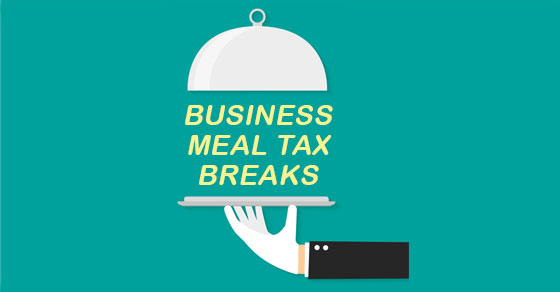
Restaurants and entertainment venues have been hard hit by the novel coronavirus (COVID-19) pandemic. One of the tax breaks that President Trump has proposed to help them is an increase in the amount that can be deducted for business meals and entertainment.
It’s unclear whether Congress would go along with enhanced business meal and entertainment deductions. But in the meantime, let’s review the current rules.
Before the pandemic hit, many businesses spent money “wining and dining” current or potential customers, vendors and employees. The rules for deducting these expenses changed under the Tax Cuts and Jobs Act (TCJA), but you can still claim some valuable write-offs. And keep in mind that deductions are available for business meal takeout and delivery.
One of the biggest changes is that you can no longer deduct most business-related entertainment expenses. Beginning in 2018, the TCJA disallows deductions for entertainment expenses, including those for sports events, theater productions, golf outings and fishing trips.
50% meal deductions
Currently, you can deduct 50% of the cost of food and beverages for meals conducted with business associates. However, you need to follow three basic rules in order to prove that your expenses are business related:
- he expenses must be “ordinary and necessary” in carrying on your business. This means your food and beverage costs are customary and appropriate. They shouldn’t be lavish or extravagant.
- The expenses must be directly related or associated with your business. This means that you expect to receive a concrete business benefit from them. The principal purpose for the meal must be business. You can’t go out with a group of friends for the evening, discuss business with one of them for a few minutes, and then write off the check.
- You must be able to substantiate the expenses. There are requirements for proving that meal and beverage expenses qualify for a deduction. You must be able to establish the amount spent, the date and place where the meals took place, the business purpose and the business relationship of the people involved.
It’s a good idea to set up detailed recordkeeping procedures to keep track of business meal costs. That way, you can prove them and the business connection in the event of an IRS audit.
Other considerations
What if you spend money on food and beverages at an entertainment event? The IRS has clarified that taxpayers can still deduct 50% of food and drink expenses incurred at entertainment events, but only if business was conducted during the event or shortly before or after. The food-and-drink expenses should also be “stated separately from the cost of the entertainment on one or more bills, invoices or receipts,” according to the guidance.
Another related tax law change involves meals provided to employees on the business premises. Before the TCJA, these meals provided to an employee for the convenience of the employer were 100% deductible by the employer. Beginning in 2018, meals provided for the convenience of an employer in an on-premises cafeteria or elsewhere on the business property are only 50% deductible. After 2025, these meals won’t be deductible at all.
Plan ahead
As you can see, the treatment of meal and entertainment expenses became more complicated after the TCJA. It’s possible the deductions could increase substantially under a new stimulus law, if Congress passes one. We’ll keep you updated. In the meantime, we can answer any questions you may have concerning business meal and entertainment deductions.
Businesses revise sales compensation models during pandemic

Economists will look back on 2020 as a year with a distinct before and after. In early March, most companies’ sales projections looked a certain way. Just a few weeks later, those projections had changed significantly — and not for the better.
Because of the novel coronavirus (COVID-19) pandemic, businesses across a variety of industries are revising their sales compensation models. Nonprofit workforce researchers WorldatWork released a report in late April indicating that 36% of organizations had begun addressing sales compensation in light of the crisis, and another 49% were developing plans to do so.
If your company is considering changes to how it compensates sales staff in a drastically changed economy, here are three of the most common actions being implemented according to the survey:
1. Adjusting sales quotas. Of the organizations surveyed, 46% were adjusting their quotas to account for the pandemic’s impact. For many businesses, this means providing “quota relief” to salespeople who find themselves in a reluctant buying environment. Of course, any adjustment should be based on a realistic and detailed forecast of what your sales will likely look like for the current period and upcoming ones.
2. Modifying performance measures. The report indicates that 44% of organizations will modify how they measure the performance of their sales staffs. Whereas a sales quota is a time-bound target assigned to an individual, performance measures encompass much wider metrics.
For example, you might want to amend your average deal size to account for more conservative buying during the pandemic. This metric is typically calculated by dividing your total number of deals by the total dollar amount of those deals. Also look at conversion rate (or win rate), which measures what percentage of leads ultimately become customers. Scarcer leads will likely lead to a lower rate.
3. Lowering plan thresholds. Survey results showed 36% of organizations intend to lower the plan thresholds for their sales teams. From a compensation plan perspective, a threshold describes what performance level qualifies the employee for a specified payout. This includes a max threshold to identify outstanding sales performances during a given period.
The pandemic-triggered economic downturn serves as a prime, even extreme, example of the kinds of external, macroeconomic factors that can alter the effectiveness of a plan threshold. When looking into corrective action, it’s critical to go beyond the usual adjustments and conduct analyses specific to your company’s size, market and industry outlook.
Setting sales compensation has never been a particularly straightforward endeavor. Businesses often tweak their approaches over time or even implement completely new ways when competitively necessary — and this is during normal times. Our firm can help you assess your sales figures since the pandemic hit, forecast upcoming ones and design a compensation model that’s right for you.
Student loan interest: Can you deduct it on your tax return?

The economic impact of the novel coronavirus (COVID-19) is unprecedented and many taxpayers with student loans have been hard hit.
The Coronavirus Aid, Relief and Economic Security (CARES) Act contains some assistance to borrowers with federal student loans. Notably, federal loans were automatically placed in an administrative forbearance, which allows borrowers to temporarily stop making monthly payments. This payment suspension is scheduled to last until September 30, 2020.
Tax deduction rules
Despite the suspension, borrowers can still make payments if they choose. And borrowers in good standing made payments earlier in the year and will likely make them later in 2020. So can you deduct the student loan interest on your tax return?
The answer is yes, depending on your income and subject to certain limits. The maximum amount of student loan interest you can deduct each year is $2,500. The deduction is phased out if your adjusted gross income (AGI) exceeds certain levels.
For 2020, the deduction is phased out for taxpayers who are married filing jointly with AGI between $140,000 and $170,000 ($70,000 and $85,000 for single filers). The deduction is unavailable for taxpayers with AGI of $170,000 ($85,000 for single filers) or more. Married taxpayers must file jointly to claim the deduction.
Other requirements
The interest must be for a “qualified education loan,” which means debt incurred to pay tuition, room and board, and related expenses to attend a post-high school educational institution. Certain vocational schools and post-graduate programs also may qualify.
The interest must be on funds borrowed to cover qualified education costs of the taxpayer, his or her spouse or a dependent. The student must be a degree candidate carrying at least half the normal full-time workload. Also, the education expenses must be paid or incurred within a reasonable time before or after the loan is taken out.
It doesn’t matter when the loan was taken out or whether interest payments made in earlier years on the loan were deductible or not. And no deduction is allowed to a taxpayer who can be claimed as a dependent on another taxpayer’s return.
The deduction is taken “above the line.” In other words, it’s subtracted from gross income to determine AGI. Thus, it’s available even to taxpayers who don’t itemize deductions.
Document expenses
Taxpayers should keep records to verify eligible expenses. Documenting tuition isn’t likely to pose a problem. However, take care to document other qualifying expenditures for items such as books, equipment, fees, and transportation. Documenting room and board expenses should be simple if a student lives in a dormitory. Student who live off campus should maintain records of room and board expenses, especially when there are complicating factors such as roommates.
Contact us if you have questions about deducting student loan interest or for information on other tax breaks related to paying for college.
IRS releases 2021 amounts for Health Savings Accounts

The IRS recently released the 2021 inflation-adjusted amounts for Health Savings Accounts (HSAs).
HSA basics
An HSA is a trust created or organized exclusively for the purpose of paying the “qualified medical expenses” of an “account beneficiary.” An HSA can only be established for the benefit of an “eligible individual” who is covered under a “high deductible health plan.” In addition, a participant can’t be enrolled in Medicare or have other health coverage (exceptions include dental, vision, long-term care, accident and specific disease insurance).
In general, a high deductible health plan (HDHP) is a plan that has an annual deductible that isn’t less than $1,000 for self-only coverage and $2,000 for family coverage. In addition, the sum of the annual deductible and other annual out-of-pocket expenses required to be paid under the plan for covered benefits (but not for premiums) cannot exceed $5,000 for self-only coverage, and $10,000 for family coverage.
Within specified dollar limits, an above-the-line tax deduction is allowed for an individual’s contribution to an HSA. This annual contribution limitation and the annual deductible and out-of-pocket expenses under the tax code are adjusted annually for inflation.
Inflation adjustments for 2021 contributions
In Revenue Procedure 2020-32, the IRS released the 2021 inflation-adjusted figures for contributions to HSAs, which are as follows:
Annual contribution limitation. For calendar year 2021, the annual contribution limitation for an individual with self-only coverage under a HDHP is $3,600. For an individual with family coverage, the amount is $7,200. This is up from $3,550 and $7,100, respectively, for 2020.
High deductible health plan defined. For calendar year 2021, an HDHP is a health plan with an annual deductible that isn’t less than $1,400 for self-only coverage or $2,800 for family coverage (these amounts are unchanged from 2020). In addition, annual out-of-pocket expenses (deductibles, co-payments, and other amounts, but not premiums) can’t exceed $7,000 for self-only coverage or $14,000 for family coverage (up from $6,900 and $13,800, respectively, for 2020).
A variety of benefits
There are many advantages to HSAs. Contributions to the accounts are made on a pre-tax basis. The money can accumulate year after year tax free and be withdrawn tax free to pay for a variety of medical expenses such as doctor visits, prescriptions, chiropractic care and premiums for long-term-care insurance. In addition, an HSA is “portable.” It stays with an account holder if he or she changes employers or leaves the work force. For more information about HSAs, contact your employee benefits and tax advisor.
Attuning your social media strategy to the pandemic

Social media for business: Your time has come. That’s not to say it wasn’t important before but, during the novel coronavirus (COVID-19) pandemic, connecting with customers and prospects via a popular platform is essential to maintaining visibility, building goodwill and perhaps even generating a bit of revenue.
What’s challenging is that the social media strategy you deployed before the crisis may no longer be effective or appropriate. Now that businesses have had a couple of months to adjust, some best practices are emerging:
Review your approach. Assuming your company already has an active social media presence, take a measured, objective look at what you do and how you do it. Gather feedback from managers and key employees. If feasible, ask trusted customers if they feel your posts have been in tune with the times. While you recalibrate, don’t hesitate to slow down or even pause your social media efforts.
Look to help, not sell. The drastic economic slowdown has ratcheted up the pressure on everyone. When revenue starts falling off, it’s only natural to want to market aggressively and push sales as hard as possible.
But, on social media, this tactic generally doesn’t play well. Many people are dealing with job losses and financial hardship. They may view hard-sell tactics as insensitive or, worse yet, exploitive of the crisis. Create posts that offer positive messages of empathy and encouragement while also letting friends and followers know that you’re open for business.
Deliver consistency. Although you may need to tweak the content of your posts to avoid appearing out of touch, a national crisis probably isn’t the time to drastically change the look and style of your posts. Customers value brand consistency and may even draw comfort from seeing your business soldier on in a familiar fashion.
Engage with customers. Unlike traditional marketing, social media is designed to be interactive. So, seek out viable opportunities to increase engagement with those who follow your accounts. Many people are feeling isolated and would welcome conversation starters, coping tips, authentic replies to questions and gratitude for compliments.
As always, however, interaction with the public on social media can be fraught with danger. Choose discussion topics carefully, exercise restraint in dealing with criticism, and be on guard for “trolling” or conversations that could get into politics, religion or other sensitive topics.
Social media was once a brave new world for businesses to navigate. For the time being, it may be the only world in which many companies can interact directly with a large number of customers and prospects. Manage your message carefully. We can help you assess the costs and results of your marketing efforts, including on social media, and devise sensible strategies.
Did you get an Economic Impact Payment that was less than you expected?

Nearly everyone has heard about the Economic Impact Payments (EIPs) that the federal government is sending to help mitigate the effects of the coronavirus (COVID-19) pandemic. The IRS reports that in the first four weeks of the program, 130 million individuals received payments worth more than $200 billion.
However, some people are still waiting for a payment. And others received an EIP but it was less than what they were expecting. Here are some answers why this might have happened.
Basic amounts
If you’re under a certain adjusted gross income (AGI) threshold, you’re generally eligible for the full $1,200 ($2,400 for married couples filing jointly). In addition, if you have a “qualifying child,” you’re eligible for an additional $500.
Here are some of the reasons why you may receive less:
Your child isn’t eligible. Only children eligible for the Child Tax Credit qualify for the additional $500 per child. That means you must generally be related to the child, live with them more than half the year and provide at least half of their support. A qualifying child must be a U.S. citizen, permanent resident or other qualifying resident alien; be under the age of 17 at the end of the year for the tax return on which the IRS bases the payment; and have a Social Security number or Adoption Taxpayer Identification Number.
Note: A dependent college student doesn’t qualify for an EIP, and even if their parents may claim him or her as a dependent, the student normally won’t qualify for the additional $500.
You make too much money. You’re eligible for a full EIP if your AGI is up to: $75,000 for individuals, $112,500 for head of household filers and $150,000 for married couples filing jointly. For filers with income above those amounts, the payment amount is reduced by $5 for each $100 above the $75,000/$112,500/$150,000 thresholds.
You’re eligible for a reduced payment if your AGI is between: $75,000 and $99,000 for an individual; $112,500 and $136,500 for a head of household; and $150,000 and $198,000 for married couples filing jointly. Filers with income exceeding those amounts with no children aren’t eligible and won’t receive payments.
You have some debts. The EIP is offset by past-due child support. And it may be reduced by garnishments from creditors. Federal tax refunds, including EIPs, aren’t protected from garnishment by creditors under federal law once the proceeds are deposited into a bank account.
If you receive an incorrect amount
These are only a few of the reasons why an EIP might be less than you expected. If you receive an incorrect amount and you meet the criteria to receive more, you may qualify to receive an additional amount early next year when you file your 2020 federal tax return. We can evaluate your situation when we prepare your return. And if you’re still waiting for a payment, be aware that the IRS is still mailing out paper EIPs and announced that they’ll continue to go out over the next few months.
Fortunate enough to get a PPP loan? Forgiven expenses aren’t deductible

The IRS has issued guidance clarifying that certain deductions aren’t allowed if a business has received a Paycheck Protection Program (PPP) loan. Specifically, an expense isn’t deductible if both:
- The payment of the expense results in forgiveness of a loan made under the PPP, and
- The income associated with the forgiveness is excluded from gross income under the Coronavirus Aid, Relief, and Economic Security (CARES) Act.
PPP basics
The CARES Act allows a recipient of a PPP loan to use the proceeds to pay payroll costs, certain employee healthcare benefits, mortgage interest, rent, utilities and interest on other existing debt obligations.
A recipient of a covered loan can receive forgiveness of the loan in an amount equal to the sum of payments made for the following expenses during the 8-week “covered period” beginning on the loan’s origination date: 1) payroll costs, 2) interest on any covered mortgage obligation, 3) payment on any covered rent, and 4) covered utility payments.
The law provides that any forgiven loan amount “shall be excluded from gross income.”
Deductible expenses
So the question arises: If you pay for the above expenses with PPP funds, can you then deduct the expenses on your tax return?
The tax code generally provides for a deduction for all ordinary and necessary expenses paid or incurred during the taxable year in carrying on a trade or business. Covered rent obligations, covered utility payments, and payroll costs consisting of wages and benefits paid to employees comprise typical trade or business expenses for which a deduction generally is appropriate. The tax code also provides a deduction for certain interest paid or accrued during the taxable year on indebtedness, including interest paid or incurred on a mortgage obligation of a trade or business.
No double tax benefit
In IRS Notice 2020-32, the IRS clarifies that no deduction is allowed for an expense that is otherwise deductible if payment of the expense results in forgiveness of a covered loan pursuant to the CARES Act and the income associated with the forgiveness is excluded from gross income under the law. The Notice states that “this treatment prevents a double tax benefit.”
More possibly to come
Two members of Congress say they’re opposed to the IRS stand on this issue. Senate Finance Committee Chair Chuck Grassley (R-IA) and his counterpart in the House, Ways and Means Committee Chair Richard E. Neal (D-MA), oppose the tax treatment. Neal said it doesn’t follow congressional intent and that he’ll seek legislation to make certain expenses deductible. Stay tuned.
There’s still time to make a deductible IRA contribution for 2019

Do you want to save more for retirement on a tax-favored basis? If so, and if you qualify, you can make a deductible traditional IRA contribution for the 2019 tax year between now and the extended tax filing deadline and claim the write-off on your 2019 return. Or you can contribute to a Roth IRA and avoid paying taxes on future withdrawals.
You can potentially make a contribution of up to $6,000 (or $7,000 if you were age 50 or older as of December 31, 2019). If you’re married, your spouse can potentially do the same, thereby doubling your tax benefits.
The deadline for 2019 traditional and Roth contributions for most taxpayers would have been April 15, 2020. However, because of the novel coronavirus (COVID-19) pandemic, the IRS extended the deadline to file 2019 tax returns and make 2019 IRA contributions until July 15, 2020.
Of course, there are some ground rules. You must have enough 2019 earned income (from jobs, self-employment, etc.) to equal or exceed your IRA contributions for the tax year. If you’re married, either spouse can provide the necessary earned income.
Also, deductible IRA contributions are reduced or eliminated if last year’s modified adjusted gross income (MAGI) is too high.
Two contribution types
If you haven’t already maxed out your 2019 IRA contribution limit, consider making one of these three types of contributions by the deadline:
1. Deductible traditional. With traditional IRAs, account growth is tax-deferred and distributions are subject to income tax. If you and your spouse don’t participate in an employer-sponsored plan such as a 401(k), the contribution is fully deductible on your 2019 tax return. If you or your spouse do participate in an employer-sponsored plan, your deduction is subject to the following MAGI phaseout:
- For married taxpayers filing jointly, the phaseout range is specific to each spouse based on whether he or she is a participant in an employer-sponsored plan:
- For a spouse who participated in 2019: $103,000–$123,000.
- For a spouse who didn’t participate in 2019: $193,000-$203,000.
- For single and head-of-household taxpayers participating in an employer-sponsored plan: $64,000–$74,000.
Taxpayers with MAGIs within the applicable range can deduct a partial contribution. But those with MAGIs exceeding the applicable range can’t deduct any IRA contribution.
2. Roth. Roth IRA contributions aren’t deductible, but qualified distributions — including growth — are tax-free, if you satisfy certain requirements.
Your ability to contribute, however, is subject to a MAGI-based phaseout:
- For married taxpayers filing jointly: $193,000–$203,000.
- For single and head-of-household taxpayers: $122,000–$137,000.
You can make a partial contribution if your 2019 MAGI is within the applicable range, but no contribution if it exceeds the top of the range.
3. Nondeductible traditional. If your income is too high for you to fully benefit from a deductible traditional or a Roth contribution, you may benefit from a nondeductible contribution to a traditional IRA. The account can still grow tax-deferred, and when you take qualified distributions, you’ll only be taxed on the growth.
Act soon
Because of the extended deadline, you still have time to make traditional and Roth IRA contributions for 2019 (and you can also contribute for 2020). This is a powerful way to save for retirement on a tax-advantaged basis. Contact us to learn more.
Business charitable contribution rules have changed under the CARES Act

In light of the novel coronavirus (COVID-19) pandemic, many businesses are interested in donating to charity. In order to incentivize charitable giving, the Coronavirus Aid, Relief and Economic Security (CARES) Act made some liberalizations to the rules governing charitable deductions. Here are two changes that affect businesses:
The limit on charitable deductions for corporations has increased. Before the CARES Act, the total charitable deduction that a corporation could generally claim for the year couldn’t exceed 10% of corporate taxable income (as determined with several modifications for these purposes). Contributions in excess of the 10% limit are carried forward and may be used during the next five years (subject to the 10%-of-taxable-income limitation each year).
What changed? Under the CARES Act, the limitation on charitable deductions for corporations (generally 10% of modified taxable income) doesn’t apply to qualifying contributions made in 2020. Instead, a corporation’s qualifying contributions, reduced by other contributions, can be as much as 25% of taxable income (modified). No connection between the contributions and COVID-19 activities is required.
The deduction limit on food inventory has increased. At a time when many people are unemployed, your business may want to contribute food inventory to qualified charities. In general, a business is entitled to a charitable tax deduction for making a qualified contribution of “apparently wholesome food” to an organization that uses it for the care of the ill, the needy or infants.
“Apparently wholesome food” is defined as food intended for human consumption that meets all quality and labeling standards imposed by federal, state, and local laws and regulations, even though it may not be readily marketable due to appearance, age, freshness, grade, size, surplus, or other conditions.
Before the CARES Act, the aggregate amount of such food contributions that could be taken into account for the tax year generally couldn’t exceed 15% of the taxpayer’s aggregate net income for that tax year from all trades or businesses from which the contributions were made. This was computed without regard to the charitable deduction for food inventory contributions.
What changed? Under the CARES Act, for contributions of food inventory made in 2020, the deduction limitation increases from 15% to 25% of taxable income for C corporations. For other business taxpayers, it increases from 15% to 25% of the net aggregate income from all businesses from which the contributions were made.
CARES Act questions
Be aware that in addition to these changes affecting businesses, the CARES Act also made changes to the charitable deduction rules for individuals. Contact us if you have questions about making charitable donations and securing a tax break for them. We can explain the rules and compute the maximum deduction for your generosity.
Subchapter V: A silver lining for small businesses mulling bankruptcy

Many small businesses continue to struggle in the wake of the coronavirus (COVID-19) pandemic. Some have already closed their doors and are liquidating assets. Others, however, may have a relatively less onerous option: bankruptcy.
Although bankruptcy obviously isn’t an optimal outcome for any small company, there may be a silver lining: A new bankruptcy law — coupled with an under-the-radar provision of the Coronavirus Aid, Relief, and Economic Security (CARES) Act — has made the process quicker and easier. It may even allow you to retain your business.
New law made better
The law in question is the Small Business Reorganization Act of 2019. That’s right, it was passed just last year and took effect on February 19, 2020, about a month before the pandemic hit the country full force.
The Small Business Reorganization Act added a new subchapter to the U.S. bankruptcy code: Subchapter V. Its purpose is to streamline the reorganization process for smaller companies and, in some cases, improve their odds of recovery.
When signed into law, Subchapter V applied only to companies or proprietors with less than about $2.7 million in debt. However, under the CARES Act, this amount has been temporarily increased to $7.5 million in debt. (Additional details apply; contact a bankruptcy attorney for a full explanation.)
Potential improvements
For small-business owners, Subchapter V could improve the bankruptcy process in several ways:
You may be able to keep your company. Under a Chapter 11 reorganization, business owners typically don’t receive an equity stake in the reorganized company until all debts are repaid. Subchapter V creates a pathway for owners to retain their equity if their disposable income is distributed to creditors over a certain period (generally three to five years) in a “fair and equitable” manner.
You may not need creditors’ approval to proceed. Small-business bankruptcies have long been stymied when one group of creditors object to the reorganization plan. Under Subchapter V, once a bankruptcy court approves the plan, the reorganization may proceed without creditors’ approval.
You may incur fewer costs and get it done more quickly. Subchapter V offers the opportunity to reduce the documentation and level of detail required under a traditional Chapter 11 proceeding. In turn, this can make the process less costly and more expeditious.
Prudent path
Given the extreme and sudden nature of this year’s economic downturn, bankruptcy has unfortunately become an option that many embattled small businesses will need to consider. Our firm can help you assess your company’s financial position and choose the most prudent path forward.
The CARES Act liberalizes net operating losses
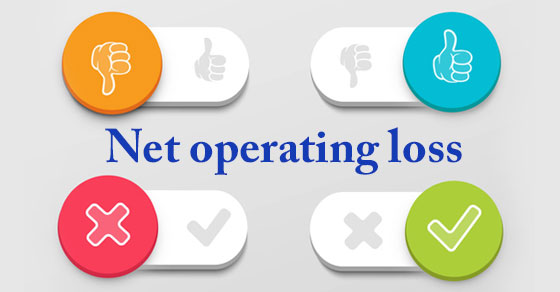
The Coronavirus Aid, Relief, and Economic Security (CARES) Act eliminates some of the tax-revenue-generating provisions included in a previous tax law. Here’s a look at how the rules for claiming certain tax losses have been modified to provide businesses with relief from the novel coronavirus (COVID-19) crisis.
NOL deductions
Basically, you may be able to benefit by carrying a net operating loss (NOL) into a different year — a year in which you have taxable income — and taking a deduction for it against that year’s income. The CARES Act includes favorable changes to the rules for deducting NOLs. First, it permanently eases the taxable income limitation on deductions.
Under an unfavorable provision included in the Tax Cuts and Jobs Act (TCJA), an NOL arising in a tax year beginning in 2018 and later and carried over to a later tax year couldn’t offset more than 80% of the taxable income for the carryover year (the later tax year), calculated before the NOL deduction. As explained below, under the TCJA, most NOLs arising in tax years ending after 2017 also couldn’t be carried back to earlier years and used to offset taxable income in those earlier years. These unfavorable changes to the NOL deduction rules were permanent — until now.
For tax years beginning before 2021, the CARES Act removes the TCJA taxable income limitation on deductions for prior-year NOLs carried over into those years. So NOL carryovers into tax years beginning before 2021 can be used to fully offset taxable income for those years.
- 100% of NOL carryovers from pre-2018 tax years, plus
- The lesser of 100% of NOL carryovers from post-2017 tax years, or 80% of remaining taxable income (if any) after deducting NOL carryovers from pre-2018 tax years.
As you can see, this is a complex rule. But it’s more favorable than what the TCJA allowed and the change is permanent.
Carrybacks allowed for certain losses
Under another unfavorable TCJA provision, NOLs arising in tax years ending after 2017 generally couldn’t be carried back to earlier years and used to offset taxable income in those years. Instead, NOLs arising in tax years ending after 2017 could only be carried forward to later years. But they could be carried forward for an unlimited number of years. (There were exceptions to the general no-carryback rule for losses by farmers and property/casualty insurance companies).
Under the CARES Act, NOLs that arise in tax years beginning in 2018 through 2020 can be carried back for five years.
Important: If it’s beneficial, you can elect to waive the carryback privilege for an NOL and, instead, carry the NOL forward to future tax years. In addition, barring a further tax-law change, the no-carryback rule will come back for NOLs that arise in tax years beginning after 2020.
Past year opportunities
These favorable CARES Act changes may affect prior tax years for which you’ve already filed tax returns. To benefit from the changes, you may need to file an amended tax return. Contact us to learn more.
Hiring independent contractors? Make sure they’re properly classified

As a result of the coronavirus (COVID-19) crisis, your business may be using independent contractors to keep costs low. But you should be careful that these workers are properly classified for federal tax purposes. If the IRS reclassifies them as employees, it can be an expensive mistake.
The question of whether a worker is an independent contractor or an employee for federal income and employment tax purposes is a complex one. If a worker is an employee, your company must withhold federal income and payroll taxes, pay the employer’s share of FICA taxes on the wages, plus FUTA tax. Often, a business must also provide the worker with the fringe benefits that it makes available to other employees. And there may be state tax obligations as well.
These obligations don’t apply if a worker is an independent contractor. In that case, the business simply sends the contractor a Form 1099-MISC for the year showing the amount paid (if the amount is $600 or more).
No uniform definition
Who is an “employee?” Unfortunately, there’s no uniform definition of the term.
The IRS and courts have generally ruled that individuals are employees if the organization they work for has the right to control and direct them in the jobs they’re performing. Otherwise, the individuals are generally independent contractors. But other factors are also taken into account.
Some employers that have misclassified workers as independent contractors may get some relief from employment tax liabilities under Section 530. In general, this protection applies only if an employer:
- Filed all federal returns consistent with its treatment of a worker as a contractor,
- Treated all similarly situated workers as contractors, and
- Had a “reasonable basis” for not treating the worker as an employee. For example, a “reasonable basis” exists if a significant segment of the employer’s industry traditionally treats similar workers as contractors.
Note: Section 530 doesn’t apply to certain types of technical services workers. And some categories of individuals are subject to special rules because of their occupations or identities.
Asking for a determination
Under certain circumstances, you may want to ask the IRS (on Form SS-8) to rule on whether a worker is an independent contractor or employee. However, be aware that the IRS has a history of classifying workers as employees rather than independent contractors.
Businesses should consult with us before filing Form SS-8 because it may alert the IRS that your business has worker classification issues — and inadvertently trigger an employment tax audit.
It may be better to properly treat a worker as an independent contractor so that the relationship complies with the tax rules.
Be aware that workers who want an official determination of their status can also file Form SS-8. Disgruntled independent contractors may do so because they feel entitled to employee benefits and want to eliminate self-employment tax liabilities.
If a worker files Form SS-8, the IRS will send a letter to the business. It identifies the worker and includes a blank Form SS-8. The business is asked to complete and return the form to the IRS, which will render a classification decision.
Contact us if you receive such a letter or if you’d like to discuss how these complex rules apply to your business. We can help ensure that none of your workers are misclassified.
Answers to questions you may have about Economic Impact Payments

Millions of eligible Americans have already received their Economic Impact Payments (EIPs) via direct deposit or paper checks, according to the IRS. Others are still waiting. The payments are part of the Coronavirus Aid, Relief, and Economic Security (CARES) Act. Here are some answers to questions you may have about EIPs.
Who’s eligible to get an EIP?
Eligible taxpayers who filed their 2018 or 2019 returns and chose direct deposit of their refunds automatically receive an Economic Impact Payment. You must be a U.S. citizen or U.S. resident alien and you can’t be claimed as a dependent on someone else’s tax return. In general, you must also have a valid Social Security number and have adjusted gross income (AGI) under a certain threshold.
The IRS also says that automatic payments will go to people receiving Social Security retirement or disability benefits and Railroad Retirement benefits.
How much are the payments?
EIPs can be up to $1,200 for individuals, or $2,400 for married couples, plus $500 for each qualifying child.
How much income must I have to receive a payment?
You don’t need to have any income to receive a payment. But for higher income people, the payments phase out. The EIP is reduced by 5% of the amount that your AGI exceeds $75,000 ($112,500 for heads of household or $150,000 for married joint filers), until it’s $0.
The payment for eligible individuals with no qualifying children is reduced to $0 once AGI reaches:
- $198,000 for married joint filers,
- $136,500 for heads of household, and
- $99,000 for all others
Each of these threshold amounts increases by $10,000 for each additional qualifying child. For example, because families with one qualifying child receive an additional $500 Payment, their $1,700 Payment ($2,900 for married joint filers) is reduced to $0 once adjusted gross income reaches:
- $208,000 for married joint filers,
- $146,500 for heads of household,
- $109,000 for all others
How will I know if money has been deposited into my bank account?
The IRS stated that it will send letters to EIP recipients about the payment within 15 days after they’re made. A letter will be sent to a recipient’s last known address and will provide information on how the payment was made and how to report any failure to receive it.
Is there a way to check on the status of a payment?
The IRS has introduced a new “Get My Payment” web-based tool that will: show taxpayers either their EIP amount and the scheduled delivery date by direct deposit or paper check, or that a payment hasn’t been scheduled. It also allows taxpayers who didn’t use direct deposit on their last-filed return to provide bank account information. In order to use the tool, you must enter information such as your Social Security number and birthdate. You can access it here: https://bit.ly/2ykLSwa
I tried the tool and I got the message “payment status not available.” Why?
Many people report that they’re getting this message. The IRS states there are many reasons why you may see this. For example, you’re not eligible for a payment or you’re required to file a tax return and haven’t filed yet. In some cases, people are eligible but are still getting this message. Hopefully, the IRS will have it running seamlessly soon.
New COVID-19 law makes favorable changes to “qualified improvement property”

The law providing relief due to the coronavirus (COVID-19) pandemic contains a beneficial change in the tax rules for many improvements to interior parts of nonresidential buildings. This is referred to as qualified improvement property (QIP). You may recall that under the Tax Cuts and Jobs Act (TCJA), any QIP placed in service after December 31, 2017 wasn’t considered to be eligible for 100% bonus depreciation. Therefore, the cost of QIP had to be deducted over a 39-year period rather than entirely in the year the QIP was placed in service. This was due to an inadvertent drafting mistake made by Congress.
But the error is now fixed. The Coronavirus Aid, Relief, and Economic Security (CARES) Act was signed into law on March 27, 2020. It now allows most businesses to claim 100% bonus depreciation for QIP, as long as certain other requirements are met. What’s also helpful is that the correction is retroactive and it goes back to apply to any QIP placed in service after December 31, 2017. Unfortunately, improvements related to the enlargement of a building, any elevator or escalator, or the internal structural framework continue to not qualify under the definition of QIP.
In the current business climate, you may not be in a position to undertake new capital expenditures — even if they’re needed as a practical matter and even if the substitution of 100% bonus depreciation for a 39-year depreciation period significantly lowers the true cost of QIP. But it’s good to know that when you’re ready to undertake qualifying improvements that 100% bonus depreciation will be available.
And, the retroactive nature of the CARES Act provision presents favorable opportunities for qualifying expenditures you’ve already made. We can revisit and add to documentation that you’ve already provided to identify QIP expenditures.
For not-yet-filed tax returns, we can simply reflect the favorable treatment for QIP on the return.
If you’ve already filed returns that didn’t claim 100% bonus depreciation for what might be QIP, we can investigate based on available documentation as discussed above. We will evaluate what your options are under Revenue Procedure 2020-25, which was just released by the IRS.
If you have any questions about how you can take advantage of the QIP provision, don’t hesitate to contact us.
What are the key distinctions between layoffs and furloughs?

As businesses across the country grapple with the economic fallout from the novel coronavirus (COVID-19) pandemic, many must decide whether to downsize their workforces to lower payroll costs and stabilize cash flow. If your company is contemplating such a move, you’ll likely want to consider the choice within the choice: that is, should you lay off workers or furlough them?
Basic difference
The basic difference between the two is simple. Layoffs are the ostensibly permanent termination of employees from their positions, though you can rehire some of these individuals when business improves. Meanwhile, a furlough is a mandatory or voluntary suspension from work without pay for a specified period.
In most states, furloughed workers are still considered employees and, therefore, don’t receive a “final” paycheck. Check with an employment or labor attorney, however, to make sure your state’s furlough laws don’t trigger final pay requirements.
Employee benefits are another issue to explore. Reach out to your health insurance provider to see whether a furlough is a triggering event for COBRA health care coverage purposes. In addition, employees can sometimes be dropped from a group health plan if they don’t work enough hours. Ask about potential problems this might cause under the Affordable Care Act.
Applicable laws
If you’re a midsize business, and layoffs or furloughs begin to look unavoidable, it’s particularly important to coordinate the move with legal counsel. Under the Worker Adjustment and Retraining Notification (WARN) Act, employers with 100 or more employees must provide written notice at least 60 days before a plant closing or mass layoff.
To have a mass layoff, at least 50 workers at a single site must be laid off for more than six months (or have their hours reduced by at least 50% in any six-month period). Because furloughs generally last for less than six months, a WARN notice wouldn’t likely be required. But you should still check with your employment attorney regarding applicable state laws and any other potential legal ramifications.
Unemployment benefits
To soften the blow, you can inform furloughed employees that they’re generally eligible for unemployment benefits — assuming their previous year’s wages are enough to qualify. Although a waiting period often applies before an employee can start receiving unemployment benefits, many states have waived these waiting periods because of the COVID-19 outbreak. Again, double-check with your attorney to fully understand the unemployment insurance rules before communicating with employees.
Formulate a strategy
Unprecedented unemployment numbers show that many businesses have had to downsize. It’s worth noting that, if you can hang on to your employees, recently passed tax relief created a refundable credit against payroll tax. (Rules and limits apply.) Our firm can help you assess your employment costs and formulate a strategy for optimally sizing your workforce.
COVID-19: IRS announces more relief and details

In the midst of the coronavirus (COVID-19) pandemic, Americans are focusing on their health and financial well-being. To help with the impact facing many people, the government has provided a range of relief. Here are some new announcements made by the IRS.
More deadlines extended
As you probably know, the IRS postponed the due dates for certain federal income tax payments — but not all of them. New guidance now expands on the filing and payment relief for individuals, estates, corporations and others.
Under IRS Notice 2020-23, nearly all tax payments and filings that would otherwise be due between April 1 and July 15, 2020, are now postponed to July 15, 2020. Most importantly, this would include any fiscal year tax returns due between those dates and any estimated tax payments due between those dates, such as the June 15 estimated tax payment deadline for individual taxpayers.
Economic Impact Payments for nonfilers
You have also likely heard about the cash payments the federal government is making to individuals under certain income thresholds. The Coronavirus Aid, Relief, and Economic Security (CARES) Act will provide an eligible individual with a cash payment equal to the sum of: $1,200 ($2,400 for eligible married couples filing jointly) plus $500 for each qualifying child. Eligibility is based on adjusted gross income (AGI).
On its Twitter account, the IRS announced that it deposited the first Economic Impact Payments into taxpayers’ bank accounts on April 11. “We know many people are anxious to get their payments; we’ll continue issuing them as fast as we can,” the tax agency added.
The IRS has announced additional details about these payments:
- “Eligible taxpayers who filed tax returns for 2019 or 2018 will receive the payments automatically,” the IRS stated. Automatic payments will also go out to those people receiving Social Security retirement, survivors or disability benefits and Railroad Retirement benefits.
- There’s a new online tool on the IRS website for people who didn’t file a 2018 or 2019 federal tax return because they didn’t have enough income or otherwise weren’t required to file. These people can provide the IRS with basic information (Social Security number, name, address and dependents) so they can receive their payments. You can access the tool here: https://bit.ly/2JXBOvM
This only describes new details in a couple of the COVID-19 assistance provisions. Members of Congress are discussing another relief package so additional help may be on the way. We’ll keep you updated. Contact us if you have tax or financial questions during this challenging time.
Relief from not making employment tax deposits due to COVID-19 tax credits

The IRS has issued guidance providing relief from failure to make employment tax deposits for employers that are entitled to the refundable tax credits provided under two laws passed in response to the coronavirus (COVID-19) pandemic. The two laws are the Families First Coronavirus Response Act, which was signed on March 18, 2020, and the Coronavirus Aid, Relief, and Economic Security Act (CARES) Act, which was signed on March 27, 2020.
Employment tax penalty basics
The tax code imposes a penalty for any failure to deposit amounts as required on the date prescribed, unless such failure is due to reasonable cause rather than willful neglect.
An employer’s failure to deposit certain federal employment taxes, including deposits of withheld income taxes and taxes under the Federal Insurance Contributions Act (FICA) is generally subject to a penalty.
COVID-19 relief credits
Employers paying qualified sick leave wages and qualified family leave wages required by the Families First Act, as well as qualified health plan expenses allocable to qualified leave wages, are eligible for refundable tax credits under the Families First Act.
Specifically, provisions of the Families First Act provide a refundable tax credit against an employer’s share of the Social Security portion of FICA tax for each calendar quarter, in an amount equal to 100% of qualified leave wages paid by the employer (plus qualified health plan expenses with respect to that calendar quarter).
Additionally, under the CARES Act, certain employers are also allowed a refundable tax credit under the CARES Act of up to 50% of the qualified wages, including allocable qualified health expenses if they are experiencing:
- A full or partial business suspension due to orders from governmental authorities due to COVID-19, or
- A specified decline in business.
This credit is limited to $10,000 per employee over all calendar quarters combined.
An employer paying qualified leave wages or qualified retention wages can seek an advance payment of the related tax credits by filing Form 7200, Advance Payment of Employer Credits Due to COVID-19.
Available relief
The Families First Act and the CARES Act waive the penalty for failure to deposit the employer share of Social Security tax in anticipation of the allowance of the refundable tax credits allowed under the two laws.
IRS Notice 2020-22 provides that an employer won’t be subject to a penalty for failing to deposit employment taxes related to qualified leave wages or qualified retention wages in a calendar quarter if certain requirements are met. Contact us for more information about whether you can take advantage of this relief.
More breaking news
Be aware the IRS also just extended more federal tax deadlines. The extension, detailed in Notice 2020-23, involves a variety of tax form filings and payment obligations due between April 1 and July 15. It includes estimated tax payments due June 15 and the deadline to claim refunds from 2016. The extended deadlines cover individuals, estates, corporations and others. In addition, the guidance suspends associated interest, additions to tax, and penalties for late filing or late payments until July 15, 2020. Previously, the IRS postponed the due dates for certain federal income tax payments. The new guidance expands on the filing and payment relief. Contact us if you have questions.
Just launched: The SBA’s Paycheck Protection Program

To stem the tide of joblessness caused by the coronavirus (COVID-19) outbreak, the Small Business Administration (SBA) has officially launched the Paycheck Protection Program (PPP). The program’s stated objective is “to provide a direct incentive for small businesses to keep their workers on the payroll.”
What does the program offer?
The PPP was authorized under a provision of the Coronavirus Aid, Relief, and Economic Security (CARES) Act. It provides up to eight weeks of cash-flow assistance through 100% federally guaranteed loans to eligible recipients to maintain payroll during the COVID-19 crisis and cover certain other expenses.
Under the program, eligible recipients may qualify for loans of up to $10 million determined by eight weeks of previously established average payroll. The first loan payment is deferred for six months. All loans will have an interest rate of 1%, a maturity of two years, and no borrower or lender fees.
If the recipient maintains its workforce, up to 100% of the loan is forgivable if the loan proceeds are used to cover the first eight weeks of payroll, rent, mortgage interest or utilities. (The U.S. Treasury Department anticipates that no more than 25% of the forgiven amount can be for non-payroll costs.)
How is payroll defined?
Under the PPP, payroll includes:
- Employee salaries (up to an annual salary of $100,000),
- Hourly wages,
- Cash tips,
- Paid sick or medical leave,
- Group health insurance premiums,
- Retirement benefit payments,
- State or local tax on employee wages, and
- Compensation to a sole proprietor or independent contractor of up to $100,000 per year.
If the PPP recipient doesn’t retain its entire workforce, the level of forgiveness is reduced by the percentage of decrease. However, if the laid-off workers are rehired by June 30, the full amount of the loan may still be forgiven.
Who’s eligible?
Eligible recipients are small businesses with fewer than 500 employees (including sole proprietorships, independent contractors and self-employed persons). Private nonprofits and 501(c)(19) veterans organizations affected by COVID-19 may also qualify. In addition, businesses in certain industries with more than 500 employees may be eligible if they meet the SBA’s size standards for those industries.
The PPP begins retroactively on Feb. 15, 2020, and ends June 20, 2020. (The retroactive start allows eligible recipients to bring back workers who were laid off because of the crisis.) Qualifying companies may apply for a loan at lending institutions approved to participate in the program through the SBA’s 7(a) lending program. Applications may also be available through participating federally insured depository institutions, federally insured credit unions and Farm Credit System institutions.
When should you apply?
The Treasury Department released the PPP Application Form on March 31, and lenders could begin processing applications on April 3. If you believe your small business may be eligible to participate, it’s a good idea to apply as soon as possible because funds are limited under the program. We can help you confirm your eligibility, complete the application and optimally manage any loan funds you receive.
The difference between a mission statement and a vision statement

Many business owners put off writing a mission statement. Who has time to write down why you’re in business when you’re busy trying to run one! And perhaps even fewer owners have created a vision statement — possibly because they’re not sure what the term even means.
There are good reasons for creating both. Lenders, investors and job candidates appreciate strong, clear mission statements. And vision statements can give interested parties a clear idea of where a business is heading. In addition, you and your staff may benefit from the focus and direction that comes from articulating your mission and vision.
Describe your purpose
Let’s start with a mission statement. Its purpose is to express to the world why you’re in business, what you’re offering and whom you’re looking to serve. For example, the U.S. Department of Labor has this as its mission statement:
To foster, promote, and develop the welfare of the wage earners, job seekers, and retirees of the United States; improve working conditions; advance opportunities for profitable employment; and assure work-related benefits and rights.
Forget flowery language and industry jargon. Write in clear, simple, honest terms. Keep the statement brief, a paragraph at most. Answer questions that any interested party would want to know, such as:
- Why did your company go into business?
- What makes your products or services worth buying?
- Who is your target market?
Presumably, you know the answers to these questions. But putting them down on paper may help renew your commitment to your original or actual mission, or it may reveal some areas where you’ve gotten off track. For example, if your target demographic is Millennials, have you maintained that focus or wandered off course a bit?
Proclaim your ambition
So, a mission statement essentially explains why you’re here, what you do and who you’re looking to serve. What does a vision statement do? It tells interested parties where you’re headed and what you ultimately want to accomplish.
A vision statement should be even briefer than your mission statement. Think of a tag line for a movie or even an advertising slogan. You want to deliver a memorable quote that will get the attention of readers and reinforce that you’re not looking to make a quick buck. Rather, you’re moving forward into the future while providing the highest quality products or services in the here and now. For instance, the trademarked vision statement of the Alzheimer’s Association is simple and aims high: “A world without Alzheimer’s and all other dementia.”
Get inspired
Should you bring your operations to a screeching halt so everyone can work on a mission and vision statement? Certainly not. But if you haven’t created either, or haven’t updated them in a while, it’s a worthwhile strategic planning task to put together the language and see what insights come of it. We’d be happy to review your statements and help you tie them to sound budgeting and financial planning.
Why you should keep life insurance out of your estate

If you have a life insurance policy, you probably want to make sure that the life insurance benefits your family will receive after your death won’t be included in your estate. That way, the benefits won’t be subject to the federal estate tax.
Under the estate tax rules, life insurance will be included in your taxable estate if either:
- Your estate is the beneficiary of the insurance proceeds, or
- You possessed certain economic ownership rights (called “incidents of ownership”) in the policy at your death (or within three years of your death).
The first situation is easy to avoid. You can just make sure your estate isn’t designated as beneficiary of the policy.
The second situation is more complicated. It’s clear that if you’re the owner of the policy, the proceeds will be included in your estate regardless of the beneficiary. However, simply having someone else possess legal title to the policy won’t prevent this result if you keep so-called “incidents of ownership” in the policy. If held by you, the rights that will cause the proceeds to be taxed in your estate include:
- The right to change beneficiaries,
- The right to assign the policy (or revoke an assignment),
- The right to borrow against the policy’s cash surrender value,
- The right to pledge the policy as security for a loan, and
- The right to surrender or cancel the policy.
Keep in mind that merely having any of the above powers will cause the proceeds to be taxed in your estate even if you never exercise the power.
Buy-sell agreements
If life insurance is obtained to fund a buy-sell agreement for a business interest under a “cross-purchase” arrangement, it won’t be taxed in your estate (unless the estate is named as beneficiary). For example, say Andrew and Bob are partners who agree that the partnership interest of the first of them to die will be bought by the surviving partner. To fund these obligations, Andrew buys a life insurance policy on Bob’s life. Andrew pays all the premiums, retains all incidents of ownership, and names himself as beneficiary. Bob does the same regarding Andrew. When the first partner dies, the insurance proceeds aren’t taxed in the first partner’s estate.
Life insurance trusts
An irrevocable life insurance trust (ILIT) is an effective vehicle that can be set up to keep life insurance proceeds from being taxed in the insured’s estate. Typically, the policy is transferred to the trust along with assets that can be used to pay future premiums. Alternatively, the trust buys the insurance with funds contributed by the insured person. So long as the trust agreement gives the insured person none of the ownership rights described above, the proceeds won’t be included in his or her estate.
The three-year rule
If you’re considering setting up a life insurance trust with a policy you own now or you just want to assign away your ownership rights in a policy, contact us to help you make these moves. Unless you live for at least three years after these steps are taken, the proceeds will be taxed in your estate. For policies in which you never held incidents of ownership, the three-year rule doesn’t apply. Don’t hesitate to contact us with any questions about your situation.
Small business owners still have time to set up a SEP plan for last year

Do you own a business but haven’t gotten around to setting up a tax-advantaged retirement plan? Fortunately, it’s not too late to establish one and reduce your 2019 tax bill. A Simplified Employee Pension (SEP) can still be set up for 2019, and you can make contributions to it that you can deduct on your 2019 income tax return. Even better, SEPs keep administrative costs low.
Deadlines for contributions
A SEP can be set up as late as the due date (including extensions) of your income tax return for the tax year for which the SEP first applies. That means you can establish a SEP for 2019 in 2020 as long as you do it before your 2019 return filing deadline. You have until the same deadline to make 2019 contributions and still claim a potentially substantial deduction on your 2019 return.
Generally, most other types of retirement plans would have to have been established by December 31, 2019, in order for 2019 contributions to be made (though many of these plans do allow 2019 contributions to be made in 2020).
Contributions are optional
With a SEP, you can decide how much to contribute each year. You aren’t required to make any certain minimum contributions annually.
However, if your business has employees other than you:
- Contributions must be made for all eligible employees using the same percentage of compensation as for yourself, and
- Employee accounts must be immediately 100% vested.
The contributions go into SEP-IRAs established for each eligible employee. As the employer, you’ll get a current income tax deduction for contributions you make on behalf of your employees. Your employees won’t be taxed when the contributions are made, but at a later date when distributions are made — usually in retirement.
For 2019, the maximum contribution that can be made to a SEP-IRA is 25% of compensation (or 20% of self-employed income net of the self-employment tax deduction), subject to a contribution cap of $56,000. (The 2020 cap is $57,000.)
How to proceed
To set up a SEP, you complete and sign the simple Form 5305-SEP (“Simplified Employee Pension — Individual Retirement Accounts Contribution Agreement”). You don’t need to file Form 5305-SEP with the IRS, but you should keep it as part of your permanent tax records. A copy of Form 5305-SEP must be given to each employee covered by the SEP, along with a disclosure statement.
Although there are rules and limits that apply to SEPs beyond what we’ve discussed here, SEPs generally are much simpler to administer than other retirement plans. Contact us with any questions you have about SEPs and to discuss whether it makes sense for you to set one up for 2019 (or 2020).
Marketing is a game of adjustments

In business, a failure to evolve may lead to failure. One way to keep your company rolling is to regularly adjust how you market products or services to customers and prospects.
A marketing strategy shouldn’t be a knee-jerk reaction to some enticing rumor or hot trend. Rather, it needs to be a carefully calculated effort that assesses profitability (not just revenue) and identifies a feasible price point for the products or services in question.
Evaluating targets
Consider each prospect, existing customer or targeted group as an investment. Estimate your net profit after subtracting production, sales and customer service costs.
More desirable customers will purchase a sizable volume with enough frequency to provide a steady income stream over time rather than serve as just a one-time or infrequent buyer. They also will be potential targets for cross-selling other products or services to generate incremental revenue.
Bear in mind that you must have the operational capacity to fulfill a given prospect’s demand. If not, you’ll have to expand your operations to take on that customer, costing you more in resources and capital.
Also, be wary of becoming too dependent on a few large customers. They can use this status as leverage to lowball you. Or, if they decide to pull the plug, it could be financially devastating.
Naming your price
Another key factor to consider in adjusting your marketing strategy is how much you’ll charge. It’s a tricky balance: Setting your price low may help to attract customers, but it can also minimize or even eliminate your profit margin.
In addition, think about what kind of payment terms you’re prepared to offer. Sitting on large accounts receivable can strain your cash flow. Establishing a timely payment schedule with customers is critical to sustaining your operations and supporting the bottom line.
If you must make a major cash outlay for setting up a new customer, such as for new equipment, consider offering initial pricing that includes a surcharge for a specified period. For example, if the normal product price is $1.00 each, you might want to arrange for the customer to pay $1.10 each until you have recovered the cost of the equipment, plus carrying charges.
Taking the risk
If your company has been around for a while, you know that marketing is risky business. An unsuccessful campaign can not only waste dollars in the short term, but also hurt morale and even trigger bad PR if it’s particularly misguided. The costs of doing nothing, however, may be even greater. We can assist you in evaluating the potential profitability of your marketing initiatives, as well as calculating viable price points for your products or services.
Determine a reasonable salary for a corporate business owner

If you’re the owner of an incorporated business, you probably know that there’s a tax advantage to taking money out of a C corporation as compensation rather than as dividends. The reason is simple. A corporation can deduct the salaries and bonuses that it pays executives, but not its dividend payments. Therefore, if funds are withdrawn as dividends, they’re taxed twice, once to the corporation and once to the recipient. Money paid out as compensation is taxed only once, to the employee who receives it.
However, there’s a limit on how much money you can take out of the corporation this way. Under tax law, compensation can be deducted only to the extent that it’s reasonable. Any unreasonable portion isn’t deductible and, if paid to a shareholder, may be taxed as if it were a dividend. The IRS is generally more interested in unreasonable compensation payments made to someone “related” to a corporation, such as a shareholder or a member of a shareholder’s family.
How much compensation is reasonable?
There’s no simple formula. The IRS tries to determine the amount that similar companies would pay for comparable services under similar circumstances. Factors that are taken into account include:
- The duties of the employee and the amount of time it takes to perform those duties;
- The employee’s skills and achievements;
- The complexities of the business;
- The gross and net income of the business;
- The employee’s compensation history; and
- The corporation’s salary policy for all its employees.
There are some concrete steps you can take to make it more likely that the compensation you earn will be considered “reasonable,” and therefore deductible by your corporation. For example, you can:
- Use the minutes of the corporation’s board of directors to contemporaneously document the reasons for compensation paid. For example, if compensation is being increased in the current year to make up for earlier years in which it was low, be sure that the minutes reflect this. (Ideally, the minutes for the earlier years should reflect that the compensation paid then was at a reduced rate.)
- Avoid paying compensation in direct proportion to the stock owned by the corporation’s shareholders. This looks too much like a disguised dividend and will probably be treated as such by IRS.
- Keep compensation in line with what similar businesses are paying their executives (and keep whatever evidence you can get of what others are paying to support what you pay).
- If the business is profitable, be sure to pay at least some dividends. This avoids giving the impression that the corporation is trying to pay out all of its profits as compensation.
Planning ahead can help avoid problems. Contact us if you’d like to discuss this further.
How’s your buy-sell agreement doing these days?

Most companies wouldn’t go into business without some basic types of insurance in place, such as property coverage and a liability policy. For a company with more than one owner, there’s an additional type of risk-management arrangement that needs to be established: a buy-sell agreement.
If your business has yet to create one, you should start the process as soon as possible. A conflict over ownership change can distract a company at the very least — and devastate it at worst. But, even if you have a buy-sell in place, there are a couple key elements to regularly review: funding and valuation.
Evaluate your funding
For many businesses, payouts for a buy-sell agreement are funded with a cash-value life insurance policy or a disability buyout insurance policy. There are two main types of life insurance-funded buy-sell agreements:
1. Cross-purchase agreement. Co-owners buy insurance policies on each other, using the proceeds to buy a deceased or disabled party’s ownership shares. They receive a step-up in cost basis that may reduce taxes if the business is later sold. This option is usually preferable if there are three or fewer business co-owners.
2. Entity purchase agreement. The business entity buys insurance policies on each co-owner and uses the proceeds to buy a deceased or disabled owner’s shares, which are divided among the remaining parties. Co-owners receive no step-up in cost basis with an entity purchase agreement. This option is usually preferable if there are four or more owners, because it eliminates the need for each one to buy so many insurance policies.
Engage a valuator
It’s usually wise to hire a professional appraiser to perform a business valuation when drafting a buy-sell agreement. The valuation should then be updated periodically as circumstances that could affect the value of the company change. In fact, the buy-sell agreement itself should be reviewed by each co-owner from time to time to make sure it still reflects everyone’s intentions.
One specific issue to consider is how the “standard” of value is defined. A business valuation expert can provide definitions for a variety of relevant standards — including fair market value, fair value, book value and investment value. Different triggering events or departing shareholders may require different levels or standards of value.
Customize your agreement
Having a standard, boilerplate buy-sell agreement can be just as dangerous as not having one at all because its provisions may cause confusion or trigger disputes. Yours should be a customized, living document that provides a clear mechanism for equitable ownership change. Our firm can help you review the agreement you have in place or create one if you have yet to do so.
Home is where the tax breaks might be

If you own a home, the interest you pay on your home mortgage may provide a tax break. However, many people believe that any interest paid on their home mortgage loans and home equity loans is deductible. Unfortunately, that’s not true.
First, keep in mind that you must itemize deductions in order to take advantage of the mortgage interest deduction.
Deduction and limits for “acquisition debt”
A personal interest deduction generally isn’t allowed, but one kind of interest that is deductible is interest on mortgage “acquisition debt.” This means debt that’s: 1) secured by your principal home and/or a second home, and 2) incurred in acquiring, constructing or substantially improving the home. You can deduct interest on acquisition debt on up to two qualified residences: your primary home and one vacation home or similar property.
The deduction for acquisition debt comes with a stipulation. From 2018 through 2025, you can’t deduct the interest for acquisition debt greater than $750,000 ($375,000 for married filing separately taxpayers). So if you buy a $2 million house with a $1.5 million mortgage, only the interest you pay on the first $750,000 in debt is deductible. The rest is nondeductible personal interest.
Higher limit before 2018 and after 2025
Beginning in 2026, you’ll be able to deduct the interest for acquisition debt up to $1 million ($500,000 for married filing separately). This was the limit that applied before 2018.
The higher $1 million limit applies to acquisition debt incurred before Dec. 15, 2017, and to debt arising from the refinancing of pre-Dec. 15, 2017 acquisition debt, to the extent the debt resulting from the refinancing doesn’t exceed the original debt amount. Thus, taxpayers can refinance up to $1 million of pre-Dec. 15, 2017 acquisition debt, and that refinanced debt amount won’t be subject to the $750,000 limitation.
The limit on home mortgage debt for which interest is deductible includes both your primary residence and your second home, combined. Some taxpayers believe they can deduct the interest on $750,000 for each mortgage. But if you have a $700,000 mortgage on your primary home and a $500,000 mortgage on your vacation place, the interest on $450,000 of the total debt will be nondeductible personal interest.
“Home equity loan” interest
“Home equity debt,” as specially defined for purposes of the mortgage interest deduction, means debt that: is secured by the taxpayer’s home, and isn’t “acquisition indebtedness” (meaning it wasn’t incurred to acquire, construct or substantially improve the home). From 2018 through 2025, there’s no deduction for home equity debt interest. Note that interest may be deductible on a “home equity loan,” or a “home equity line of credit,” if that loan fits the tax law’s definition of “acquisition debt” because the proceeds are used to substantially improve or construct the home.
Home equity interest after 2025
Beginning with 2026, home equity debt up to certain limits will be deductible (as it was before 2018). The interest on a home equity loan will generally be deductible regardless of how you use the loan proceeds.
Thus, taxpayers considering taking out a home equity loan— one that’s not incurred to acquire, construct or substantially improve the home — should be aware that interest on the loan won’t be deductible. Further, taxpayers with outstanding home equity debt (again, meaning debt that’s not incurred to acquire, construct or substantially improve the home) will currently lose the interest deduction for interest on that debt.
Contact us with questions or if you would like more information about the mortgage interest deduction.
Do you want to go into business for yourself?

Many people who launch small businesses start out as sole proprietors. Here are nine tax rules and considerations involved in operating as that entity.
1. You may qualify for the pass-through deduction. To the extent your business generates qualified business income, you are eligible to claim the 20% pass-through deduction, subject to limitations. The deduction is taken “below the line,” meaning it reduces taxable income, rather than being taken “above the line” against your gross income. However, you can take the deduction even if you don’t itemize deductions and instead claim the standard deduction.
2. Report income and expenses on Schedule C of Form 1040. The net income will be taxable to you regardless of whether you withdraw cash from the business. Your business expenses are deductible against gross income and not as itemized deductions. If you have losses, they will generally be deductible against your other income, subject to special rules related to hobby losses, passive activity losses and losses in activities in which you weren’t “at risk.”
3. Pay self-employment taxes. For 2020, you pay self-employment tax (Social Security and Medicare) at a 15.3% rate on your net earnings from self-employment of up to $137,700, and Medicare tax only at a 2.9% rate on the excess. An additional 0.9% Medicare tax (for a total of 3.8%) is imposed on self-employment income in excess of $250,000 for joint returns; $125,000 for married taxpayers filing separate returns; and $200,000 in all other cases. Self-employment tax is imposed in addition to income tax, but you can deduct half of your self-employment tax as an adjustment to income.
4. Make quarterly estimated tax payments. For 2019, these are due April 15, June 15, September 15 and January 15, 2021.
5. You may be able to deduct home office expenses. If you work from a home office, perform management or administrative tasks there, or store product samples or inventory at home, you may be entitled to deduct an allocable portion of some costs of maintaining your home. And if you have a home office, you may be able to deduct expenses of traveling from there to another work location.
6. You can deduct 100% of your health insurance costs as a business expense. This means your deduction for medical care insurance won’t be subject to the rule that limits medical expense deductions.
7. Keep complete records of your income and expenses. Specifically, you should carefully record your expenses in order to claim all the tax breaks to which you’re entitled. Certain expenses, such as automobile, travel, meals, and office-at-home expenses, require special attention because they’re subject to special recordkeeping rules or deductibility limits.
8. If you hire employees, you need to get a taxpayer identification number and withhold and pay employment taxes.
9. Consider establishing a qualified retirement plan. The advantage is that amounts contributed to the plan are deductible at the time of the contribution and aren’t taken into income until they’re are withdrawn. Because many qualified plans can be complex, you might consider a SEP plan, which requires less paperwork. A SIMPLE plan is also available to sole proprietors that offers tax advantages with fewer restrictions and administrative requirements. If you don’t establish a retirement plan, you may still be able to contribute to an IRA.
Seek assistance
If you want additional information regarding the tax aspects of your new business, or if you have questions about reporting or recordkeeping requirements, please contact us.
Getting help with a business interruption insurance claim

To guard against natural disasters and other calamities, many companies buy business interruption insurance. These policies provide cash flow to cover revenues lost and expenses incurred while normal operations are limited or suspended.
But buying coverage is one thing — making a claim and receiving the funds is quite another. Depending on the scope of your loss, the insurer may enlist its own specialists to audit and reduce your claim. Fortunately, you can enlist a CPA to help you prepare a claim, quantify business interruption losses and anticipate your insurer’s challenges.
Major roles
There are two major roles your accountant can play in managing the claims process:
1. Point person. He or she can be the primary contact with the insurer, dealing with the typical onslaught of document requests. This leaves you free to run your business and bring it back up to speed.
Your CPA can also keep the claims process on track by informing the insurer about your actions and dealing with requests to inspect the damaged property. It’s possible that your accountant may already have an established relationship with the insurer and knows how its claims department works.
2. Damage estimator. Most policies define losses based on the earnings a company would have made if the interruption hadn’t occurred. To project lost profits, a CPA can analyze, identify and segregate revenues and expenses. The insurer will cover only losses that are directly attributable to the damage, as opposed to macroeconomic or other external causes, such as an economic downturn.
Detailed documentation
Most insurers require you to provide detailed documentation on the steps you took to mitigate losses during the business interruption period, which is the time it took your company to resume normal operations. The steps may involve shutting down all or part of the business or moving to a temporary location. The interruption period is critical and one of the determining factors the insurer will use when examining the total amount of your company’s claim.
Your CPA can review your documentation and, in particular, calculate or double-check any financial information provided to ensure accuracy. It’s also a good idea to work with an attorney who can aid in the legal interpretation of your policy.
A well-crafted claim
Filing a well-crafted business interruption claim can speed processing time and ease the resolution of any disputes that may arise with your insurance company. As a result, you’ll be more likely to receive much-needed cash-flow relief while getting your business back up and running after a disaster. We’d be happy to provide the services mentioned here as well as any other support necessary to pursuing a claim.
There still might be time to cut your tax bill with IRAs

If you’re getting ready to file your 2019 tax return, and your tax bill is higher than you’d like, there may still be an opportunity to lower it. If you qualify, you can make a deductible contribution to a traditional IRA right up until the Wednesday, April 15, 2020, filing date and benefit from the resulting tax savings on your 2019 return.
Do you qualify?
You can make a deductible contribution to a traditional IRA if:
- You (and your spouse) aren’t an active participant in an employer-sponsored retirement plan, or
- You (or your spouse) are an active participant in an employer plan, and your modified adjusted gross income (AGI) doesn’t exceed certain levels that vary from year-to-year by filing status.
For 2019, if you’re a joint tax return filer covered by an employer plan, your deductible IRA contribution phases out over $103,000 to $123,000 of modified AGI. If you’re single or a head of household, the phaseout range is $64,000 to $74,000 for 2019. For married filing separately, the phaseout range is $0 to $10,000. For 2019, if you’re not an active participant in an employer-sponsored retirement plan, but your spouse is, your deductible IRA contribution phases out with modified AGI of between $193,000 and $203,000.
Deductible IRA contributions reduce your current tax bill, and earnings within the IRA are tax deferred. However, every dollar you take out is taxed in full (and subject to a 10% penalty before age 59 1/2, unless one of several exceptions apply).
IRAs often are referred to as “traditional IRAs” to distinguish them from Roth IRAs. You also have until April 15 to make a Roth IRA contribution. But while contributions to a traditional IRA are deductible, contributions to a Roth IRA aren’t. However, withdrawals from a Roth IRA are tax-free as long as the account has been open at least five years and you’re age 59 1/2 or older.
Here are a couple other IRA strategies that might help you save tax.
1. Turn a nondeductible Roth IRA contribution into a deductible IRA contribution. Did you make a Roth IRA contribution in 2019? That may help you years down the road when you take tax-free payouts from the account. However, the contribution isn’t deductible. If you realize you need the deduction that a traditional IRA contribution provides, you can change your mind and turn that Roth IRA contribution into a traditional IRA contribution via the “recharacterization” mechanism. The traditional IRA deduction is then yours if you meet the requirements described above.
2. Make a deductible IRA contribution, even if you don’t work. In general, you can’t make a deductible traditional IRA contribution unless you have wages or other earned income. However, an exception applies if your spouse is the breadwinner and you manage the home front. In this case, you may be able to take advantage of a spousal IRA.
How much can you contribute?
For 2019 if you’re qualified, you can make a deductible traditional IRA contribution of up to $6,000 ($7,000 if you’re 50 or over).
In addition, small business owners can set up and contribute to a Simplified Employee Pension (SEP) plan up until the due date for their returns, including extensions. For 2019, the maximum contribution you can make to a SEP account is $56,000.
If you’d like more information about whether you can contribute to an IRA or SEP, contact us or ask about it when we’re preparing your return. We’d be happy to explain the rules and help you save the maximum tax-advantaged amount for retirement.
Do your employees receive tips? You may be eligible for a tax credit

Are you an employer who owns a business where tipping is customary for providing food and beverages? You may qualify for a tax credit involving the Social Security and Medicare (FICA) taxes that you pay on your employees’ tip income.
How the credit works
The FICA credit applies with respect to tips that your employees receive from customers in connection with the provision of food or beverages, regardless of whether the food or beverages are for consumption on or off the premises. Although these tips are paid by customers, they’re treated for FICA tax purposes as if you paid them to your employees. Your employees are required to report their tips to you. You must withhold and remit the employee’s share of FICA taxes, and you must also pay the employer’s share of those taxes.
You claim the credit as part of the general business credit. It’s equal to the employer’s share of FICA taxes paid on tip income in excess of what’s needed to bring your employee’s wages up to $5.15 per hour. In other words, no credit is available to the extent the tip income just brings the employee up to the $5.15 per hour level, calculated monthly. If you pay each employee at least $5.15 an hour (excluding tips), you don’t have to be concerned with this calculation.
Note: A 2007 tax law froze the per-hour amount at $5.15, which was the amount of the federal minimum wage at that time. The minimum wage is now $7.25 per hour but the amount for credit computation purposes remains $5.15.
How it works
Example: A waiter works at your restaurant. He’s paid $2 an hour plus tips. During the month, he works 160 hours for $320 and receives $2,000 in cash tips which he reports to you.
The waiter’s $2 an hour rate is below the $5.15 rate by $3.15 an hour. Thus, for the 160 hours worked, he or she is below the $5.15 rate by $504 (160 times $3.15). For the waiter, therefore, the first $504 of tip income just brings him up to the minimum rate. The rest of the tip income is $1,496 ($2,000 minus $504). The waiter’s employer pays FICA taxes at the rate of 7.65% for him. Therefore, the employer’s credit is $114.44 for the month: $1,496 times 7.65%.
While the employer’s share of FICA taxes is generally deductible, the FICA taxes paid with respect to tip income used to determine the credit can’t be deducted, because that would amount to a double benefit. However, you can elect not to take the credit, in which case you can claim the deduction.
Get the credit you’re due
If your business pays FICA taxes on tip income paid to your employees, the tip tax credit may be valuable to you. Other rules may apply. Contact us if you have any questions.
3 best practices for achieving organic sales growth

Most business owners would probably agree that, when it comes to sales, there’s always room for improvement. To this end, every company should strive for organic sales growth — that is, increases from existing operations unrelated to a merger or acquisition.
That’s not to say a merger or acquisition is necessarily a bad idea, but you can’t rely on major moves like this to regularly boost your numbers. Let’s look at three best practices for achieving organic sales growth.
1. Attentive customer service
Premier customer service is more than just a smile and a handshake. Are your employees really hearing clients’ problems and concerns? Do their solutions not only fix the issue but also, whenever possible, exceed the customers’ expectations?
The ability to conduct productive dialogues with your customers is a key to growing sales. Maintaining a positive, ongoing conversation starts with resolving any negative (or potentially negative) issues that arise as quickly as possible under strictly followed protocols. It also includes simply checking in with customers regularly to see what they may need.
2. Smart marketing
Do you often find yourself wondering why all your marketing channels aren’t generating new leads for your business? Most likely, it’s because some of those channels are no longer connecting with customers and prospects.
Therefore, you might want to step back and reassess the nature and strengths of your company. If you work directly with the buying public, you may want to cast as wide a net as possible. But if you sell to a specific industry or certain types of customers, you may be able to grow sales organically by focusing on professional networking groups, social organizations and trade associations.
3. Great employees
Ultimately, people are what make or break a company. Even the best idea can fail if employees aren’t fully prepared and committed to designing, producing, marketing and selling that product or service. Of course, as you well know, employing talented, industrious staff requires much more than simply getting them to show up for work.
First, you must train employees well. This means they need to know both: 1) how to do their jobs, and 2) how to help grow sales. You might ask: Does every worker really contribute to sales? In a sense, yes, because quality work — from entry-level office staff to executives in corner offices — drives sales.
Second, once an employee is trained, he or she must be periodically retrained. Happy workers are more productive and more likely to preach the excellence of your company’s products or services to friends and family. Sales may occur as a result.
The right moves
These best practices are, obviously, general in nature. The specific moves you need to make to boost your business’s sales numbers will depend on your size, industry, market and focus. Our firm can help you identify optimal strategies for organic sales growth and measure the results.
Can you deduct charitable gifts on your tax return?

Many taxpayers make charitable gifts — because they’re generous and they want to save money on their federal tax bills. But with the tax law changes that went into effect a couple years ago and the many rules that apply to charitable deductions, you may no longer get a tax break for your generosity.
Are you going to itemize?
The Tax Cuts and Jobs Act (TCJA), signed into law in 2017, didn’t put new limits on or suspend the charitable deduction, like it did with many other itemized deductions. Nevertheless, it reduces or eliminates the tax benefits of charitable giving for many taxpayers.
Itemizing saves tax only if itemized deductions exceed the standard deduction. Through 2025, the TCJA significantly increases the standard deduction. For 2020, it is $24,800 for married couples filing jointly (up from $24,400 for 2019), $18,650 for heads of households (up from $18,350 for 2019), and $12,400 for singles and married couples filing separately (up from $12,200 for 2019).
Back in 2017, these amounts were $12,700, $9,350, $6,350 respectively. The much higher standard deduction combined with limits or suspensions on some common itemized deductions means you may no longer have enough itemized deductions to exceed the standard deduction. And if that’s the case, your charitable donations won’t save you tax.
To find out if you get a tax break for your generosity, add up potential itemized deductions for the year. If the total is less than your standard deduction, your charitable donations won’t provide a tax benefit.
You might, however, be able to preserve your charitable deduction by “bunching” donations into alternating years. This can allow you to exceed the standard deduction and claim a charitable deduction (and other itemized deductions) every other year.
What is the donation deadline?
To be deductible on your 2019 return, a charitable gift must have been made by December 31, 2019. According to the IRS, a donation generally is “made” at the time of its “unconditional delivery.” The delivery date depends in part on what you donate and how you donate it. For example, for a check, the delivery date is the date you mailed it. For a credit card donation, it’s the date you make the charge.
Are there other requirements?
If you do meet the rules for itemizing, there are still other requirements. To be deductible, a donation must be made to a “qualified charity” — one that’s eligible to receive tax-deductible contributions.
And there are substantiation rules to prove you made a charitable gift. For a contribution of cash, check, or other monetary gift, regardless of amount, you must maintain a bank record or a written communication from the organization you donated to that shows its name, plus the date and amount of the contribution. If you make a charitable contribution by text message, a bill from your cell provider containing the required information is an acceptable substantiation. Any other type of written record, such as a log of contributions, isn’t sufficient.
Do you have questions?
We can answer any questions you may have about the deductibility of charitable gifts or changes to the standard deduction and itemized deductions.
Cents-per-mile rate for business miles decreases slightly for 2020

This year, the optional standard mileage rate used to calculate the deductible costs of operating an automobile for business decreased by one-half cent, to 57.5 cents per mile. As a result, you might claim a lower deduction for vehicle-related expense for 2020 than you can for 2019.
Calculating your deduction
Businesses can generally deduct the actual expenses attributable to business use of vehicles. This includes gas, oil, tires, insurance, repairs, licenses and vehicle registration fees. In addition, you can claim a depreciation allowance for the vehicle. However, in many cases depreciation write-offs on vehicles are subject to certain limits that don’t apply to other types of business assets.
The cents-per-mile rate comes into play if you don’t want to keep track of actual vehicle-related expenses. With this approach, you don’t have to account for all your actual expenses, although you still must record certain information, such as the mileage for each business trip, the date and the destination.
Using the mileage rate is also popular with businesses that reimburse employees for business use of their personal vehicles. Such reimbursements can help attract and retain employees who drive their personal vehicles extensively for business purposes. Why? Under the Tax Cuts and Jobs Act, employees can no longer deduct unreimbursed employee business expenses, such as business mileage, on their own income tax returns.
If you do use the cents-per-mile rate, be aware that you must comply with various rules. If you don’t, the reimbursements could be considered taxable wages to the employees.
The rate for 2020
Beginning on January 1, 2020, the standard mileage rate for the business use of a car (van, pickup or panel truck) is 57.5 cents per mile. It was 58 cents for 2019 and 54.5 cents for 2018.
The business cents-per-mile rate is adjusted annually. It’s based on an annual study commissioned by the IRS about the fixed and variable costs of operating a vehicle, such as gas, maintenance, repair and depreciation. Occasionally, if there’s a substantial change in average gas prices, the IRS will change the mileage rate midyear.
Factors to consider
There are some situations when you can’t use the cents-per-mile rate. In some cases, it partly depends on how you’ve claimed deductions for the same vehicle in the past. In other cases, it depends on if the vehicle is new to your business this year or whether you want to take advantage of certain first-year depreciation tax breaks on it.
As you can see, there are many factors to consider in deciding whether to use the mileage rate to deduct vehicle expenses. We can help if you have questions about tracking and claiming such expenses in 2020 — or claiming them on your 2019 income tax return.
What can AI do for my business?

You’ve no doubt read articles or heard stories about how artificial intelligence (AI) is bringing sweeping change to a wide variety of industries. But it’s one thing to learn about how this remarkable technology is changing someone else’s company and quite another to apply it to your own. Here’s a primer on what AI might be able to do for your business.
3 technology types
AI generally refers to using computers to perform complex tasks usually thought to require human intelligence — such as image perception, voice recognition, decision making and problem solving. Three primary types of technologies fall under the AI umbrella:
1. Machine learning. This involves an iterative process whereby machines improve their performance in a specific task over time with little or no programming or human intervention. It can, for example, improve your forecasting models for determining which products or services will be in high demand with customers.
2. Natural language processing (NLP). This uses algorithms to analyze unstructured human language in documents, emails, texts, conversation or otherwise. Language translation apps are among the most common and dramatic examples of NLP. Communicating with business partners, customers and prospects in other countries — or simply people whose first languages are other than English — has become much easier as this type of software has improved.
3. Robotic process automation (RPA). Using rules and structured inputs, RPA automates time-consuming repetitive manual tasks that don’t require decision making. For instance, an RPA system can collect data from vendor invoices, enter it into a company’s accounting system, and generate an email confirming receipt and requesting additional information if needed. This functionality can help you better time vendor payments to optimize cash flow.
Chat boxes, data sensors
A couple of the most common on-ramps into AI for businesses are chatbots and data sensors. Chatbots are those AI-based instant messaging or voice-based systems that allow users to ask relatively simple questions and get instant answers.
Today’s customers expect to find information quickly and chatbots can provide this speed. However, it’s important to implement a system that enables users to speedily connect to a human customer service rep if their questions or issues are complex or urgent.
Data sensors generally don’t have anything to do with customers, but they can be quite valuable when it comes to your offices or facilities. AI-enhanced building systems allow for real-time monitoring and adjustment of temperature, lighting and other controls. This data can drive predictive analytics that improve decisions about the maintenance and replacement of systems, lowering energy and repair costs.
Upgrade prudently
Precisely how AI might help you run your business more efficiently and profitably depends on the size of your company and the nature of its work. You don’t want to throw dollars at an AI solution just to keep up with the competition. Then again, this technology may offer enticing ways to sharpen your competitive edge. We can help you perform a cost-benefit analysis of any technological upgrade you’re considering.
Help protect your personal information by filing your 2019 tax return early

The IRS announced it is opening the 2019 individual income tax return filing season on January 27. Even if you typically don’t file until much closer to the April 15 deadline (or you file for an extension), consider filing as soon as you can this year. The reason: You can potentially protect yourself from tax identity theft — and you may obtain other benefits, too.
Tax identity theft explained
In a tax identity theft scam, a thief uses another individual’s personal information to file a fraudulent tax return early in the filing season and claim a bogus refund.
The legitimate taxpayer discovers the fraud when he or she files a return and is informed by the IRS that the return has been rejected because one with the same Social Security number has already been filed for the tax year. While the taxpayer should ultimately be able to prove that his or her return is the valid one, tax identity theft can cause major headaches to straighten out and significantly delay a refund.
Filing early may be your best defense: If you file first, it will be the tax return filed by a would-be thief that will be rejected, rather than yours.
Note: You can get your individual tax return prepared by us before January 27 if you have all the required documents. It’s just that processing of the return will begin after IRS systems open on that date.
Your W-2s and 1099s
To file your tax return, you must have received all of your W-2s and 1099s. January 31 is the deadline for employers to issue 2019 Form W-2 to employees and, generally, for businesses to issue Form 1099 to recipients of any 2019 interest, dividend or reportable miscellaneous income payments (including those made to independent contractors).
If you haven’t received a W-2 or 1099 by February 1, first contact the entity that should have issued it. If that doesn’t work, you can contact the IRS for help.
Other advantages of filing early
Besides protecting yourself from tax identity theft, another benefit of early filing is that, if you’re getting a refund, you’ll get it faster. The IRS expects most refunds to be issued within 21 days. The time is typically shorter if you file electronically and receive a refund by direct deposit into a bank account.
Direct deposit also avoids the possibility that a refund check could be lost or stolen or returned to the IRS as undeliverable. And by using direct deposit, you can split your refund into up to three financial accounts, including a bank account or IRA. Part of the refund can also be used to buy up to $5,000 in U.S. Series I Savings Bonds.
What if you owe tax? Filing early may still be beneficial. You won’t need to pay your tax bill until April 15, but you’ll know sooner how much you owe and can plan accordingly.
Be an early-bird filer
If you have questions about tax identity theft or would like help filing your 2019 return early, please contact us. We can help you ensure you file an accurate return that takes advantage of all of the breaks available to you.
New rules will soon require employers to annually disclose retirement income to employees

As you’ve probably heard, a new law was recently passed with a wide range of retirement plan changes for employers and individuals. One of the provisions of the SECURE Act involves a new requirement for employers that sponsor tax-favored defined contribution retirement plans that are subject to ERISA.
Specifically, the law will require that the benefit statements sent to plan participants include a lifetime income disclosure at least once during any 12-month period. The disclosure will need to illustrate the monthly payments that an employee would receive if the total account balance were used to provide lifetime income streams, including a single life annuity and a qualified joint and survivor annuity for the participant and the participant’s surviving spouse.
Background information
Under ERISA, a defined contribution plan administrator is required to provide benefit statements to participants. Depending on the situation, these statements must be provided quarterly, annually or upon written request. In 2013, the U.S. Department of Labor (DOL) issued an advance notice of proposed rulemaking providing rules that would have required benefit statements provided to defined contribution plan participants to include an estimated lifetime income stream of payments based on the participant’s account balance.
Some employers began providing this information in these statements — even though it wasn’t required.
But in the near future, employers will have to begin providing information to their employees about lifetime income streams.
Effective date
Fortunately, the effective date of the requirement has been delayed until after the DOL issues guidance. It won’t go into effect until 12 months after the DOL issues a final rule. The law also directs the DOL to develop a model disclosure.
Plan fiduciaries, plan sponsors, or others won’t have liability under ERISA solely because they provided the lifetime income stream equivalents, so long as the equivalents are derived in accordance with the assumptions and guidance and that they include the explanations contained in the model disclosure.
Stay tuned
Critics of the new rules argue the required disclosures will lead to confusion among participants and they question how employers will arrive at the income projections. For now, employers have to wait for the DOL to act. We’ll update you when that happens. Contact us if you have questions about this requirement or other provisions in the SECURE Act.
4 new law changes that may affect your retirement plan

If you save for retirement with an IRA or other plan, you’ll be interested to know that Congress recently passed a law that makes significant modifications to these accounts. The SECURE Act, which was signed into law on December 20, 2019, made these four changes.
Change #1: The maximum age for making traditional IRA contributions is repealed. Before 2020, traditional IRA contributions weren’t allowed once you reached age 70½. Starting in 2020, an individual of any age can make contributions to a traditional IRA, as long he or she has compensation, which generally means earned income from wages or self-employment.
Change #2: The required minimum distribution (RMD) age was raised from 70½ to 72. Before 2020, retirement plan participants and IRA owners were generally required to begin taking RMDs from their plans by April 1 of the year following the year they reached age 70½. The age 70½ requirement was first applied in the early 1960s and, until recently, hadn’t been adjusted to account for increased life expectancies.
For distributions required to be made after December 31, 2019, for individuals who attain age 70½ after that date, the age at which individuals must begin taking distributions from their retirement plans or IRAs is increased from 70½ to 72.
Change #3: “Stretch IRAs” were partially eliminated. If a plan participant or IRA owner died before 2020, their beneficiaries (spouses and non-spouses) were generally allowed to stretch out the tax-deferral advantages of the plan or IRA by taking distributions over the beneficiary’s life or life expectancy. This is sometimes called a “stretch IRA.”
However, for deaths of plan participants or IRA owners beginning in 2020 (later for some participants in collectively bargained plans and governmental plans), distributions to most non-spouse beneficiaries are generally required to be distributed within 10 years following a plan participant’s or IRA owner’s death. That means the “stretch” strategy is no longer allowed for those beneficiaries.
There are some exceptions to the 10-year rule. For example, it’s still allowed for: the surviving spouse of a plan participant or IRA owner; a child of a plan participant or IRA owner who hasn’t reached the age of majority; a chronically ill individual; and any other individual who isn’t more than 10 years younger than a plan participant or IRA owner. Those beneficiaries who qualify under this exception may generally still take their distributions over their life expectancies.
Change #4: Penalty-free withdrawals are now allowed for birth or adoption expenses. A distribution from a retirement plan must generally be included in income. And, unless an exception applies, a distribution before the age of 59½ is subject to a 10% early withdrawal penalty on the amount includible in income.
Starting in 2020, plan distributions (up to $5,000) that are used to pay for expenses related to the birth or adoption of a child are penalty-free. The $5,000 amount applies on an individual basis. Therefore, each spouse in a married couple may receive a penalty-free distribution up to $5,000 for a qualified birth or adoption.
Questions?
These are only some of the changes included in the new law. If you have questions about your situation, don’t hesitate to contact us.
New law helps businesses make their employees’ retirement secure

A significant law was recently passed that adds tax breaks and makes changes to employer-provided retirement plans. If your small business has a current plan for employees or if you’re thinking about adding one, you should familiarize yourself with the new rules.
The Setting Every Community Up for Retirement Enhancement Act (SECURE Act) was signed into law on December 20, 2019 as part of a larger spending bill. Here are three provisions of interest to small businesses.
- Employers that are unrelated will be able to join together to create one retirement plan. Beginning in 2021, new rules will make it easier to create and maintain a multiple employer plan (MEP). A MEP is a single plan operated by two or more unrelated employers. But there were barriers that made it difficult to setting up and running these plans. Soon, there will be increased opportunities for small employers to join together to receive better investment results, while allowing for less expensive and more efficient management services.
- There’s an increased tax credit for small employer retirement plan startup costs. If you want to set up a retirement plan, but haven’t gotten around to it yet, new rules increase the tax credit for retirement plan start-up costs to make it more affordable for small businesses to set them up. Starting in 2020, the credit is increased by changing the calculation of the flat dollar amount limit to: The greater of $500, or the lesser of: a) $250 multiplied by the number of non-highly compensated employees of the eligible employer who are eligible to participate in the plan, or b) $5,000.
- There’s a new small employer automatic plan enrollment tax credit. Not surprisingly, when employers automatically enroll employees in retirement plans, there is more participation and higher retirement savings. Beginning in 2020, there’s a new tax credit of up to $500 per year to employers to defray start-up costs for new 401(k) plans and SIMPLE IRA plans that include automatic enrollment. This credit is on top of an existing plan start-up credit described above and is available for three years. It is also available to employers who convert an existing plan to a plan with automatic enrollment.
These are only some of the retirement plan provisions in the SECURE Act. There have also been changes to the auto enrollment safe harbor cap, nondiscrimination rules, new rules that allow certain part-timers to participate in 401(k) plans, increased penalties for failing to file retirement plan returns and more. Contact us to learn more about your situation.
Cost management: A budget’s best friend

If your company comes up over budget year after year, you may want to consider cost management. This is a formalized, systematic review of operations and resources with the stated goal of reducing costs at every level and controlling them going forward. As part of this effort, you’ll answer questions such as:
Are we operating efficiently? Cost management can help you clearly differentiate activities that are running smoothly and staying within budget from the ones that are constantly breaking down and consuming extra dollars.
Depending on your industry, there are likely various metrics you can calculate and track to determine which aspects of your operations are inefficient. Sometimes improving efficiency is simply a matter of better scheduling. If you’re constantly missing deadlines or taking too long to fulfill customers’ needs, you’re also probably losing money playing catch-up and placating disappointed buyers.
Can we really see our supply chain? Maybe you’ve bought the same types of materials from the same vendors for many years. Are you really getting the most for your money? A cost management review can help you look for better bargains on the goods and services that make your business run.
A big problem for many businesses is lack of practical data. Without the right information, you may not be fully aware of the key details of your supply chain. There’s a term for this: supply chain visibility. When you can’t “see” everything about the vendors that service your company, you’re much more vulnerable to hidden costs and overspending.
Is technology getting the better of us? At this point, just about every business process has been automated one way or another. But are you managing this technology or is it managing you? Some companies overspend unnecessarily while others miss out on ways to better automate activities. Cost management can help you decide whether to simplify or upgrade.
For example, many businesses have historically taken an ad hoc approach to procuring technology. Different departments or individuals have obtained various software over the years. Some of this technology may still be in regular use but, in many cases, an expensive application sits dormant while the company still pays for licensing or tech support.
Conversely, a paid-for but out-of-date application could be slowing operational or supply chain efficiency. You may have to spend money to save money by getting something that’s up-to-date and fully functional.
The term “cost management” is often applied to specific projects. But you can also apply it to your business, either as an emergency step if your budget is really out of whack or as a regular activity for keeping the numbers in line. Our firm can help you conduct this review and decide what to do about the insights gained.
New law provides a variety of tax breaks to businesses and employers

While you were celebrating the holidays, you may not have noticed that Congress passed a law with a grab bag of provisions that provide tax relief to businesses and employers. The “Further Consolidated Appropriations Act, 2020” was signed into law on December 20, 2019. It makes many changes to the tax code, including an extension (generally through 2020) of more than 30 provisions that were set to expire or already expired.
Two other laws were passed as part of the law (The Taxpayer Certainty and Disaster Tax Relief Act of 2019 and the Setting Every Community Up for Retirement Enhancement Act).
Here are five highlights.
Long-term part-timers can participate in 401(k)s.
Under current law, employers generally can exclude part-time employees (those who work less than 1,000 hours per year) when providing a 401(k) plan to their employees. A qualified retirement plan can generally delay participation in the plan based on an employee attaining a certain age or completing a certain number of years of service but not beyond the later of completion of one year of service (that is, a 12-month period with at least 1,000 hours of service) or reaching age 21.
Qualified retirement plans are subject to various other requirements involving who can participate.
For plan years beginning after December 31, 2020, the new law requires a 401(k) plan to allow an employee to make elective deferrals if the employee has worked with the employer for at least 500 hours per year for at least three consecutive years and has met the age-21 requirement by the end of the three-consecutive-year period. There are a number of other rules involved that will determine whether a part-time employee qualifies to participate in a 401(k) plan.
The employer tax credit for paid family and medical leave is extended.
Tax law provides an employer credit for paid family and medical leave. It permits eligible employers to claim an elective general business credit based on eligible wages paid to qualifying employees with respect to family and medical leave. The credit is equal to 12.5% of eligible wages if the rate of payment is 50% of such wages and is increased by 0.25 percentage points (but not above 25%) for each percentage point that the rate of payment exceeds 50%. The maximum leave amount that can be taken into account for a qualifying employee is 12 weeks per year.
The credit was set to expire on December 31, 2019. The new law extends it through 2020.
The Work Opportunity Tax Credit (WOTC) is extended.
Under the WOTC, an elective general business credit is provided to employers hiring individuals who are members of one or more of 10 targeted groups. The new law extends this credit through 2020.
The medical device excise tax is repealed.
The Affordable Care Act (ACA) contained a provision that required that the sale of a taxable medical device by the manufacturer, producer or importer is subject to a tax equal to 2.3% of the price for which it is sold. This medical device excise tax originally applied to sales of taxable medical devices after December 31, 2012.
The new law repeals the excise tax for sales occurring after December 31, 2019.
The high-cost, employer-sponsored health coverage tax is repealed.
The ACA also added a nondeductible excise tax on insurers when the aggregate value of employer-sponsored health insurance coverage for an employee, former employee, surviving spouse or other primary insured individual exceeded a threshold amount. This tax is commonly referred to as the tax on “Cadillac” plans.
The new law repeals the Cadillac tax for tax years beginning after December 31, 2019.
Stay tuned
These are only some of the provisions of the new law. We will be covering them in the coming weeks. If you have questions about your situation, don’t hesitate to contact us.
Your home office expenses may be tax deductible

Technology has made it easier to work from home so lots of people now commute each morning to an office down the hall. However, just because you have a home office space doesn’t mean you can deduct expenses associated with it.
Regularly and exclusively
In order to be deductible for 2019 and 2020, you must be self-employed and the space must be used regularly (not just occasionally) and exclusively for business purposes. If, for example, your home office is also a guest bedroom or your children do their homework there, you can’t deduct the expenses associated with the space.
Two options
If you qualify, the home office deduction can be a valuable tax break. There are two options for the deduction:
- Write off a portion of your mortgage interest, property taxes, insurance, utilities and certain other expenses, as well as the depreciation allocable to the office space. This requires calculating, allocating and substantiating actual expenses.
- Take the “safe harbor” deduction. Only one simple calculation is necessary: $5 times the number of square feet of the office space. The safe harbor deduction is capped at $1,500 per year, based on a maximum of 300 square feet.
Changes through 2025
Under prior tax law, if you were an employee (as opposed to self-employed), you could deduct unreimbursed home office expenses as employee business expenses, subject to a floor of 2% of adjusted gross income (AGI) for all your miscellaneous expenses. To qualify under prior law, a home office had to be used for the “convenience” of your employer.
Unfortunately, the TCJA suspends the deduction for miscellaneous expenses through 2025. Without further action from Congress, employees won’t be able to benefit from this tax break for a while. However, deductions are still often available to self-employed taxpayers.
If, however, you’re self-employed, you can deduct eligible home office expenses against your self-employment income. Therefore, the deduction will still be available to you through 2025.
More requirements
Be aware that we’ve covered only a few of the requirements here. We can help you determine if you’re eligible for a home office deduction and, if so, establish the appropriate method for getting the biggest possible deduction.
5 ways to strengthen your business for the new year

The end of one year and the beginning of the next is a great opportunity for reflection and planning. You have 12 months to look back on and another 12 ahead to look forward to. Here are five ways to strengthen your business for the new year by doing a little of both:
1. Compare 2019 financial performance to budget. Did you meet the financial goals you set at the beginning of the year? If not, why? Analyze variances between budget and actual results. Then, evaluate what changes you could make to get closer to achieving your objectives in 2020. And if you did meet your goals, identify precisely what you did right and build on those strategies.
2. Create a multiyear capital budget Look around your offices or facilities at your equipment, software and people. What investments will you need to make to grow your business? Such investments can be both tangible (new equipment and technology) and intangible (employees’ technical and soft skills).
Equipment, software, furniture, vehicles and other types of assets inevitably wear out or become obsolete. You’ll need to regularly maintain, update and replace them. Lay out a long-term plan for doing so; this way, you won’t be caught off guard by a big expense.
3. Assess the competition. Identify your biggest rivals over the past year. Discuss with your partners, managers and advisors what those competitors did to make your life so “interesting.” Also, honestly appraise the quality of what your business sells versus what competitors offer. Are you doing everything you can to meet — or, better yet, exceed — customer expectations? Devise some responsive competitive strategies for the next 12 months.
4. Review insurance coverage. It’s important to stay on top of your property, casualty and liability coverage. Property values or risks may change — or you may add new assets or retire old ones — requiring you to increase or decrease your level of coverage. A fire, natural disaster, accident or out-of-the-blue lawsuit that you’re not fully protected against could devastate your business. Look at the policies you have in place and determine whether you’re adequately protected.
5. Analyze market trends. Recognize the major events and trends in your industry over the past year. Consider areas such as economic drivers or detractors, technology, the regulatory environment and customer demographics. In what direction is your industry heading over the next five or ten years? Anticipating and quickly reacting to trends are the keys to a company’s long-term success.
These are just a few ideas for looking back and ahead to set a successful course forward. We can help you review the past year’s tax, accounting and financial strategies, and implement savvy moves toward a secure and profitable 2020 for your business.
Congress gives a holiday gift in the form of favorable tax provisions

As part of a year-end budget bill, Congress just passed a package of tax provisions that will provide savings for some taxpayers. The White House has announced that President Trump will sign the Further Consolidated Appropriations Act of 2020 into law. It also includes a retirement-related law titled the Setting Every Community Up for Retirement Enhancement (SECURE) Act.
Here’s a rundown of some provisions in the two laws.
The age limit for making IRA contributions and taking withdrawals is going up. Currently, an individual can’t make regular contributions to a traditional IRA in the year he or she reaches age 70½ and older. (However, contributions to a Roth IRA and rollover contributions to a Roth or traditional IRA can be made regardless of age.)
Under the new rules, the age limit for IRA contributions is raised from age 70½ to 72.
The IRA contribution limit for 2020 is $6,000, or $7,000 if you’re age 50 or older (the same as 2019 limit).
In addition to the contribution age going up, the age to take required minimum distributions (RMDs) is going up from 70½ to 72.
It will be easier for some taxpayers to get a medical expense deduction. For 2019, under the Tax Cuts and Jobs Act (TCJA), you could deduct only the part of your medical and dental expenses that is more than 10% of your adjusted gross income (AGI). This floor makes it difficult to claim a write-off unless you have very high medical bills or a low income (or both). In tax years 2017 and 2018, this “floor” for claiming a deduction was 7.5%. Under the new law, the lower 7.5% floor returns through 2020.
If you’re paying college tuition, you may (once again) get a valuable tax break. Before the TCJA, the qualified tuition and related expenses deduction allowed taxpayers to claim a deduction for qualified education expenses without having to itemize their deductions. The TCJA eliminated the deduction for 2019 but now it returns through 2020. The deduction is capped at $4,000 for an individual whose AGI doesn’t exceed $65,000 or $2,000 for a taxpayer whose AGI doesn’t exceed $80,000. (There are other education tax breaks, which weren’t touched by the new law, that may be more valuable for you, depending on your situation.)
Some people will be able to save more for retirement. The retirement bill includes an expansion of the automatic contribution to savings plans to 15% of employee pay and allows some part-time employees to participate in 401(k) plans.
Also included in the retirement package are provisions aimed at Gold Star families, eliminating an unintended tax on children and spouses of deceased military family members.
Stay tuned
These are only some of the provisions in the new laws. We’ll be writing more about them in the near future. In the meantime, contact us with any questions.
Wayfair revisited — It’s time to review your sales tax obligations

In its 2018 decision in South Dakota v. Wayfair, the U.S. Supreme Court upheld South Dakota’s “economic nexus” statute, expanding the power of states to collect sales tax from remote sellers. Today, nearly every state with a sales tax has enacted a similar law, so if your company does business across state lines, it’s a good idea to reexamine your sales tax obligations.
What’s nexus?
A state is constitutionally prohibited from taxing business activities unless those activities have a substantial “nexus,” or connection, with the state. Before Wayfair, simply selling to customers in a state wasn’t enough to establish nexus. The business also had to have a physical presence in the state, such as offices, retail stores, manufacturing or distribution facilities, or sales reps.
In Wayfair, the Supreme Court ruled that a business could establish nexus through economic or virtual contacts with a state, even if it didn’t have a physical presence. The Court didn’t create a bright-line test for determining whether contacts are “substantial,” but found that the thresholds established by South Dakota’s law are sufficient: Out-of-state businesses must collect and remit South Dakota sales taxes if, in the current or previous calendar year, they have 1) more than $100,000 in gross sales of products or services delivered into the state, or 2) 200 or more separate transactions for the delivery of goods or services into the state.
Nexus steps
The vast majority of states now have economic nexus laws, although the specifics vary:Many states adopted the same sales and transaction thresholds accepted in Wayfair, but a number of states apply different thresholds. And some chose not to impose transaction thresholds, which many view as unfair to smaller sellers (an example of a threshold might be 200 sales of $5 each would create nexus).
If your business makes online, telephone or mail-order sales in states where it lacks a physical presence, it’s critical to find out whether those states have economic nexus laws and determine whether your activities are sufficient to trigger them. If you have nexus with a state, you’ll need to register with the state and collect state and applicable local taxes on your taxable sales there. Even if some or all of your sales are tax-exempt, you’ll need to secure exemption certifications for each jurisdiction where you do business. Alternatively, you might decide to reduce or eliminate your activities in a state if the benefits don’t justify the compliance costs.
Need help?
Note: If you make sales through a “marketplace facilitator,” such as Amazon or Ebay, be aware that an increasing number of states have passed laws that require such providers to collect taxes on sales they facilitate for vendors using their platforms.
If you need assistance in setting up processes to collect sales tax or you have questions about your responsibilities, contact us.
Do you have a side gig? Make sure you understand your tax obligations

The number of people engaged in the “gig” or sharing economy has grown in recent years, according to a 2019 IRS report. And there are tax consequences for the people who perform these jobs, such as providing car rides, renting spare bedrooms, delivering food, walking dogs or providing other services.
Basically, if you receive income from one of the online platforms offering goods and services, it’s generally taxable. That’s true even if the income comes from a side job and even if you don’t receive an income statement reporting the amount of money you made.
IRS report details
The IRS recently released a report examining two decades of tax returns and titled “Is Gig Work Replacing Traditional Employment?” It found that “alternative, non-employee work arrangements” grew by 1.9% from 2000 to 2016 and more than half of the increase from 2013 to 2016 could be attributed to gig work mediated through online labor platforms.
The tax agency concluded that “traditional” work arrangements are not being supplanted by independent contract arrangements reported on 1099s. Most gig work is done by individuals as side jobs that supplement their traditional jobs. In addition, the report found that the people doing gig work via online platforms tend to be male, single, younger than other self-employed people and have experienced unemployment in that year.
Gig worker characteristics
The IRS considers gig workers as those who are independent contractors and conduct their jobs through online platforms. Examples include Uber, Lyft, Airbnb and DoorDash.
Unlike traditional employees, independent contractors don’t receive benefits associated with employment or employer-sponsored health insurance. They also aren’t covered by the minimum wage or other protections of federal laws, aren’t part of states’ unemployment insurance systems, and are on their own when it comes to training, retirement savings and taxes.
Tax responsibilities
If you’re part of the gig or sharing economy, here are some considerations.
- You may need to make quarterly estimated tax payments because your income isn’t subject to withholding. These payments are generally due on April 15, June 15, September 15 and January 15 of the following year.
- You should receive a Form 1099-MISC, Miscellaneous Income, a Form 1099-K or other income statement from the online platform.
- Some or all of your business expenses may be deductible on your tax return, subject to the normal tax limitations and rules. For example, if you provide rides with your own car, you may be able to deduct depreciation for wear and tear and deterioration of the vehicle. Be aware that if you rent a room in your main home or vacation home, the rules for deducting expenses can be complex.
Recordkeeping
It’s critical to keep good records tracking income and expenses in case you are audited. Contact us if you have questions about your tax obligations as a gig worker or the deductions you can claim. You don’t want to get an unwelcome surprise when you file your tax return next year.
Small Businesses: It may not be not too late to cut your 2019 taxes

Don’t let the holiday rush keep you from taking some important steps to reduce your 2019 tax liability. You still have time to execute a few strategies, including:
1. Buying assets.Thinking about purchasing new or used heavy vehicles, heavy equipment, machinery or office equipment in the new year? Buy it and place it in service by December 31, and you can deduct 100% of the cost as bonus depreciation.
Although “qualified improvement property” (QIP) — generally, interior improvements to nonresidential real property — doesn’t qualify for bonus depreciation, it’s eligible for Sec. 179 immediate expensing. And QIP now includes roofs, HVAC, fire protection systems, alarm systems and security systems placed in service after the building was placed in service.
You can deduct as much as $1.02 million for QIP and other qualified assets placed in service before January 1, not to exceed your amount of taxable income from business activity. Once you place in service more than $2.55 million in qualifying property, the Sec. 179 deduction begins phasing out on a dollar-for-dollar basis. Additional limitations may apply.
2. Making the most of retirement plans. If you don’t already have a retirement plan, you still have time to establish a new plan, such as a SEP IRA, 401(k) or profit-sharing plans (the deadline for setting up a SIMPLE IRA to make contributions for 2019 tax purposes was October 1, unless your business started after that date). If your circumstances, such as your number of employees, have changed significantly, you also should consider starting a new plan before January 1.
Although retirement plans generally must be started before year-end, you usually can deduct any contributions you make for yourself and your employees until the due date of your tax return. You also might qualify for a tax credit to offset the costs of starting a plan.
3. Timing deductions and income. If your business operates on a cash basis, you can significantly affect your amount of taxable income by accelerating your deductions into 2019 and deferring income into 2020 (assuming you expect to be taxed at the same or a lower rate next year).
For example, you could put recurring expenses normally paid early in the year on your credit card before January 1 — that way, you can claim the deduction for 2019 even though you don’t pay the credit card bill until 2020. In certain circumstances, you also can prepay some expenses, such as rent or insurance and claim them in 2019.
As for income, wait until close to year-end to send out invoices to customers with reliable payment histories. Accrual-basis businesses can take a similar approach, holding off on the delivery of goods and services until next year.
Proceed with caution
Bear in mind that some of these tactics could adversely impact other factors affecting your tax liability, such as the qualified business income deduction. Contact us to make the most of your tax planning opportunities.
Adopting a child? Bring home tax savings with your bundle of joy

If you’re adopting a child, or you adopted one this year, there may be significant tax benefits available to offset the expenses. For 2019, adoptive parents may be able to claim a nonrefundable credit against their federal tax for up to $14,080 of “qualified adoption expenses” for each adopted child. (This amount is increasing to $14,300 for 2020.) That’s a dollar-for-dollar reduction of tax — the equivalent, for someone in the 24% marginal tax bracket, of a deduction of over $50,000.
Adoptive parents may also be able to exclude from their gross income up to $14,080 for 2019 ($14,300 for 2020) of qualified adoption expenses paid by an employer under an adoption assistance program. Both the credit and the exclusion are phased out if the parents’ income exceeds certain limits, as explained below.
Adoptive parents may claim both a credit and an exclusion for expenses of adopting a child. But they can’t claim both a credit and an exclusion for the same expense.
Qualified adoption expenses
To qualify for the credit or the exclusion, the expenses must be “qualified.” These are the reasonable and necessary adoption fees, court costs, attorney fees, travel expenses (including amounts spent for meals and lodging) while away from home, and other expenses directly related to the legal adoption of an “eligible child.”
Expenses in connection with an unsuccessful attempt to adopt an eligible child can qualify. However, expenses connected with a foreign adoption (one in which the child isn’t a U.S. citizen or resident) qualify only if the child is actually adopted.
Taxpayers who adopt a child with special needs get a special tax break. They will be deemed to have qualified adoption expenses in the tax year in which the adoption becomes final in an amount sufficient to bring their total aggregate expenses for the adoption up to $14,300 for 2020 ($14,080 for 2019). In other words, they can take the adoption credit or exclude employer-provided adoption assistance up to that amount, whether or not they had $14,300 for 2020 ($14,080 for 2019) of actual expenses.
Phase-out for high-income taxpayers
The credit allowable for 2019 is phased out for taxpayers with adjusted gross income (AGI) of $211,160 ($214,520 for 2020). It is eliminated when AGI reaches $251,160 for 2019 ($254,520 for 2020).
Taxpayer ID number required
The IRS can disallow the credit and the exclusion unless a valid taxpayer identification number (TIN) for the child is included on the return. Taxpayers who are in the process of adopting a child can get a temporary number, called an adoption taxpayer identification number (ATIN), for the child. This enables adoptive parents to claim the credit and exclusion for qualified expenses.
When the adoption becomes final, the adoptive parents must apply for a Social Security number for the child. Once obtained, that number, rather than the ATIN, is used.
We can help ensure that you meet all the requirements to get the full benefit of the tax savings available to adoptive parents. Please contact us if you have any questions
2020 Q1 tax calendar: Key deadlines for businesses and other employers

Here are some of the key tax-related deadlines affecting businesses and other employers during the first quarter of 2020. Keep in mind that this list isn’t all-inclusive, so there may be additional deadlines that apply to you. Contact us to ensure you’re meeting all applicable deadlines and to learn more about the filing requirements.
January 31
- File 2019 Forms W-2, “Wage and Tax Statement,” with the Social Security Administration and provide copies to your employees.
- Provide copies of 2019 Forms 1099-MISC, “Miscellaneous Income,” to recipients of income from your business where required.
- File 2019 Forms 1099-MISC reporting nonemployee compensation payments in Box 7 with the IRS.
- File Form 940, “Employer’s Annual Federal Unemployment (FUTA) Tax Return,” for 2019. If your undeposited tax is $500 or less, you can either pay it with your return or deposit it. If it’s more than $500, you must deposit it. However, if you deposited the tax for the year in full and on time, you have until February 10 to file the return.
- File Form 941, “Employer’s Quarterly Federal Tax Return,” to report Medicare, Social Security and income taxes withheld in the fourth quarter of 2019. If your tax liability is less than $2,500, you can pay it in full with a timely filed return. If you deposited the tax for the quarter in full and on time, you have until February 10 to file the return. (Employers that have an estimated annual employment tax liability of $1,000 or less may be eligible to file Form 944, “Employer’s Annual Federal Tax Return.”)
- File Form 945, “Annual Return of Withheld Federal Income Tax,” for 2019 to report income tax withheld on all nonpayroll items, including backup withholding and withholding on accounts such as pensions, annuities and IRAs. If your tax liability is less than $2,500, you can pay it in full with a timely filed return. If you deposited the tax for the year in full and on time, you have until February 10 to file the return.
February 28
- File 2019 Forms 1099-MISC with the IRS if 1) they’re not required to be filed earlier and 2) you’re filing paper copies. (Otherwise, the filing deadline is March 31.)
March 16
- If a calendar-year partnership or S corporation, file or extend your 2019 tax return and pay any tax due. If the return isn’t extended, this is also the last day to make 2019 contributions to pension and profit-sharing plans.
3 last-minute tips that may help trim your tax bill

If you’re starting to fret about your 2019 tax bill, there’s good news — you may still have time to reduce your liability. Three strategies are available that may help you cut your taxes before year-end, including:
1. Accelerate deductions/defer income. Certain tax deductions are claimed for the year of payment, such as the mortgage interest deduction. So, if you make your January 2020 payment this month, you can deduct the interest portion on your 2019 tax return (assuming you itemize).
Pushing income into the new year also will reduce your taxable income. If you’re expecting a bonus at work, for example, and you don’t want the income this year, ask if your employer can hold off on paying it until January. If you’re self-employed, you can delay your invoices until late in December to divert the revenue to 2020.
You shouldn’t pursue this approach if you expect to land in a higher tax bracket next year. Also, if you’re eligible for the qualified business income deduction for pass-through entities, you might reduce the amount of that deduction if you reduce your income.
2. Maximize your retirement contributions. What could be better than paying yourself instead of Uncle Sam? Federal tax law encourages individual taxpayers to make the maximum allowable contributions for the year to their retirement accounts, including traditional IRAs and SEP plans, 401(k)s and deferred annuities.
For 2019, you generally can contribute as much as $19,000 to 401(k)s and $6,000 for traditional IRAs. Self-employed individuals can contribute up to 25% of your net income (but no more than $56,000) to a SEP IRA.
3. Harvest your investment losses. Losing money on your investments has a bit of an upside — it gives you the opportunity to offset taxable gains. If you sell underperforming investments before the end of the year, you can offset gains realized this year on a dollar-for-dollar basis.
If you have more losses than gains, you generally can apply up to $3,000 of the excess to reduce your ordinary income. Any remaining losses are carried forward to future tax years.
We can help
The strategies described above are only a sampling of strategies that may be available. Contact us if you have questions about these or other methods for minimizing your tax liability for 2019.
What lenders look for in a succession plan

Business owners are urged to create succession plans for the good of their families and their employees. But there’s someone else who holds a key interest in the longevity of your company: Your lender.
If you want to maintain a clear path to acquiring the working capital your business may need after you’ve stepped down, it’s important to keep your lender apprised of your progress in putting a carefully considered succession plan in place.
A viable successor
One key operational issue that lenders look for in a succession plan to address is, simply, who will lead the enterprise after you? For family-owned businesses, finding a successor can be difficult. Children or other relatives may be qualified but have no interest in taking the reins. Or they may want to be involved but have insufficient experience.
To reassure your lender about issues such as these, take the time to identify and nurture future leaders. As early as possible, select someone who you believe holds leadership potential and educate the prospective successor in all aspects of running the business. This way, when control formally transfers, your lender will have confidence that the new leader is truly the boss and fully capable of making executive decisions.
None of this should happen overnight. You need to lay out a well-defined path for the successor under the assurance that his or her hard work during the transition period will eventually be rewarded with the leadership role, as well as ownership interests. Ideally, you’ll want to set a specific timeframe for the transfer of control and ownership to officially occur — all while keeping your lender in the loop.
Family communication
Most business owners have more than one heir to factor into succession planning. So, it’s important for lenders to know that the planning process involves the entire family, regardless of whether the individuals involved are active in the business’s day-to-day operations. This enables everyone to understand their roles — and the financial and personal consequences of an unsuccessful succession plan (which can adversely affect loan arrangements in place).
A common issue is how to equitably divide assets among heirs when only some of them will have control of or receive ownership interests in the business. If there are sufficient liquid assets, you can buy life insurance to provide for any children who won’t be involved in the business and give ownership interests only to those who will be involved. Or you might establish a family trust to own and operate the business, so that the entire family shares the risks and benefits.
Good standing
Your lender may not be top of mind as you ponder the many details of a succession plan. But it’s important to cover all the bases, including keeping your company in good standing for future loans. We can help you with all the tax, accounting and financial aspects of a good succession plan — including effective communication with your lender.
Holiday parties and gifts can help show your appreciation and provide tax breaks

With Thanksgiving behind us, the holiday season is in full swing. At this time of year, your business may want to show its gratitude to employees and customers by giving them gifts or hosting holiday parties. It’s a good idea to understand the tax rules associated with these expenses. Are they tax deductible by your business and is the value taxable to the recipients?
Customer and client gifts
If you make gifts to customers and clients, the gifts are deductible up to $25 per recipient per year. For purposes of the $25 limit, you don’t need to include “incidental” costs that don’t substantially add to the gift’s value, such as engraving, gift wrapping, packaging or shipping. Also excluded from the $25 limit is branded marketing collateral — such as small items imprinted with your company’s name and logo — provided they’re widely distributed and cost less than $4.
The $25 limit is for gifts to individuals. There’s no set limit on gifts to a company (for example, a gift basket for all team members of a customer to share) as long as they’re “reasonable.”
Employee gifts
In general, anything of value that you transfer to an employee is included in his or her taxable income (and, therefore, subject to income and payroll taxes) and deductible by your business. But there’s an exception for noncash gifts that constitute a “de minimis” fringe benefit.
These are items small in value and given infrequently that are administratively impracticable to account for. Common examples include holiday turkeys or hams, gift baskets, occasional sports or theater tickets (but not season tickets), and other low-cost merchandise.
De minimis fringe benefits aren’t included in your employee’s taxable income yet they’re still deductible by your business. Unlike gifts to customers, there’s no specific dollar threshold for de minimis gifts. However, many businesses use an informal cutoff of $75.
Important: Cash gifts — as well as cash equivalents, such as gift cards — are included in an employee’s income and subject to payroll tax withholding regardless of how small and infrequent.
Throwing a holiday party
Under the Tax Cuts and Jobs Act, certain deductions for business-related meals were reduced and the deduction for business entertainment was eliminated. However, there’s an exception for certain recreational activities, including holiday parties.
Holiday parties are fully deductible (and excludible from recipients’ income) so long as they’re primarily for the benefit of non-highly-compensated employees and their families. If customers, and others also attend, holiday parties may be partially deductible.
Spread good cheer
Contact us if you have questions about giving holiday gifts to employees or customers or throwing a holiday party. We can explain the tax rules.
Look in the mirror and identify your company culture

“Company culture” is a buzzword that’s been around for a while, but your culture may never have mattered as much as it does in today’s transparency-driven business arena. Customers, potential partners and investors, and job candidates are paying more attention to company culture when deciding whether to buy from a business or otherwise involve themselves with it.
To determine whether yours is optimal for your long-term goals, you must look in the mirror and identify what type of culture you have. University of Michigan professors Robert Quinn and Kim Cameron have developed the Organizational Culture Assessment Instrument, which defines four common types:
1. Clan. These are generally friendly environments where employees feel like family. Clan cultures emphasize teamwork, participation and consensus. Such companies often have a horizontal structure with few barriers between staff and leaders, who act as mentors. As a result, employees tend to be highly engaged and loyal. Success involves addressing client needs while caring for staff. Clan culture frequently is seen in start-ups and small companies with employees who have been there from the beginning.
2. Adhocracy. Adhocracies are dynamic, entrepreneurial and creative places where employees are encouraged to take risks, and founders are often seen as innovators. They’re committed to experimentation and encourage individual initiative and freedom — with the long-term goal of growing and acquiring new resources. Success, therefore, is defined by the availability of new products or services. Think Facebook and similar technology companies that anticipate needs and establish new standards.
3. Market. These cultures are results-driven and competitive, with an emphasis on achieving measurable goals and targets. They value reputation and success foremost. Employees are goal-oriented while leaders tend to be hard drivers, producers and rivals simultaneously. Market share and penetration are the hallmarks of success, and competitive pricing and industry domination are important. Examples include Amazon and Apple.
4. Hierarchy. Hierarchical businesses have formal, structured work environments where processes and procedures dictate what employees do. Smooth functioning is critical. Companies strive for stability and efficient execution of tasks, as well as low costs. Leaders seek to achieve maximum efficiency and consistency in their respective departments. Hierarchical culture is common in government agencies and old-school businesses such as the Ford Motor Company.
Bear in mind that most companies exhibit a mixture of the four styles, with one type dominant. If you fear your culture is inhibiting you from achieving strategic objectives, there’s good news — cultures can evolve.
Although making widespread changes won’t be easy, no business should accept a culture that’s hindering productivity or possibly even creating liability risks. We can assist you in assessing your operations and profitability to help you gain insights into the impact of your company culture.
Medical expenses: What it takes to qualify for a tax deduction

As we all know, medical services and prescription drugs are expensive. You may be able to deduct some of your expenses on your tax return but the rules make it difficult for many people to qualify. However, with proper planning, you may be able to time discretionary medical expenses to your advantage for tax purposes.
The basic rules
For 2019, the medical expense deduction can only be claimed to the extent your unreimbursed costs exceed 10% of your adjusted gross income (AGI). You also must itemize deductions on your return.
If your total itemized deductions for 2019 will exceed your standard deduction, moving or “bunching” nonurgent medical procedures and other controllable expenses into 2019 may allow you to exceed the 10% floor and benefit from the medical expense deduction. Controllable expenses include refilling prescription drugs, buying eyeglasses and contact lenses, going to the dentist and getting elective surgery.
In addition to hospital and doctor expenses, here are some items to take into account when determining your allowable costs:
- Health insurance premiums. This item can total thousands of dollars a year. Even if your employer provides health coverage, you can deduct the portion of the premiums that you pay. Long-term care insurance premiums are also included as medical expenses, subject to limits based on age.
- Transportation. The cost of getting to and from medical treatments counts as a medical expense. This includes taxi fares, public transportation, or using your own car. Car costs can be calculated at 20¢ a mile for miles driven in 2019, plus tolls and parking. Alternatively, you can deduct certain actual costs, such as for gas and oil.
- Eyeglasses, hearing aids, dental work, prescription drugs and professional fees. Deductible expenses include the cost of glasses, hearing aids, dental work, psychiatric counseling and other ongoing expenses in connection with medical needs. Purely cosmetic expenses don’t qualify. Prescription drugs (including insulin) qualify, but over-the-counter aspirin and vitamins don’t. Neither do amounts paid for treatments that are illegal under federal law (such as marijuana), even if state law permits them. The services of therapists and nurses can qualify as long as they relate to a medical condition and aren’t for general health. Amounts paid for certain long-term care services required by a chronically ill individual also qualify.
- Smoking-cessation and weight-loss programs. Amounts paid for participating in smoking-cessation programs and for prescribed drugs designed to alleviate nicotine withdrawal are deductible. However, nonprescription nicotine gum and patches aren’t. A weight-loss program is deductible if undertaken as treatment for a disease diagnosed by a physician. Deductible expenses include fees paid to join a program and attend periodic meetings. However, the cost of food isn’t deductible.
Dependent expenses
You can deduct the medical costs that you pay for dependents, such as your children. Additionally, you may be able to deduct medical costs you pay for other individuals, such as an elderly parent. If you have questions about medical expense deductions, contact us.
2 valuable year-end tax-saving tools for your business

At this time of year, many business owners ask if there’s anything they can do to save tax for the year. Under current tax law, there are two valuable depreciation-related tax breaks that may help your business reduce its 2019 tax liability. To benefit from these deductions, you must buy eligible machinery, equipment, furniture or other assets and place them into service by the end of the tax year. In other words, you can claim a full deduction for 2019 even if you acquire assets and place them in service during the last days of the year.
The Section 179 deduction
Under Section 179, you can deduct (or expense) up to 100% of the cost of qualifying assets in Year 1 instead of depreciating the cost over a number of years. For tax years beginning in 2019, the expensing limit is $1,020,000. The deduction begins to phase out on a dollar-for-dollar basis for 2019 when total asset acquisitions for the year exceed $2,550,000.
Sec. 179 expensing is generally available for most depreciable property (other than buildings) and off-the-shelf computer software. It’s also available for:
- Qualified improvement property (generally, any interior improvement to a building’s interior, but not for the internal structural framework, for enlarging a building, or for elevators or escalators),
- Roofs, and
- HVAC, fire protection, alarm, and security systems.
The Sec. 179 deduction amount and the ceiling limit are significantly higher than they were a few years ago. In 2017, for example, the deduction limit was $510,000, and it began to phase out when total asset acquisitions for the tax year exceeded $2.03 million.
The generous dollar ceiling that applies this year means that many small and medium sized businesses that make purchases will be able to currently deduct most, if not all, of their outlays for machinery, equipment and other assets. What’s more, the fact that the deduction isn’t prorated for the time that the asset is in service during the year makes it a valuable tool for year-end tax planning.
Bonus depreciation
Businesses can claim a 100% bonus first year depreciation deduction for machinery and equipment bought new or used (with some exceptions) if purchased and placed in service this year. The 100% deduction is also permitted without any proration based on the length of time that an asset is in service during the tax year.
Business vehicles
It’s important to note that Sec. 179 expensing and bonus depreciation may also be used for business vehicles. So buying one or more vehicles before December 31 may reduce your 2019 tax liability. But, depending on the type of vehicle, additional limits may apply.
Businesses should consider buying assets now that qualify for the liberalized depreciation deductions. Please contact us if you have questions about depreciation or other tax breaks.
Bridging the gap between budgeting and risk management

At many companies, a wide gap exists between the budgeting process and risk management. Failing to consider major threats could leave you vulnerable to high-impact hits to your budget if one or more of these dangers materialize. Here are some common types of risks to research, assess and incorporate into adjustments to next year’s budget:
Competitive. No business is an island (or a monopoly for that matter). The relative strength and strategies of your competitors affect how your company should shape its budget. For this reason, gathering competitive intelligence and acting accordingly is a must.
For example, if a larger competitor has moved into your market, you may need to allocate more funds for marketing and advertising. Then again, if a long-time rival has closed up shop, you might be able to keep those costs the same (or even lower them) and channel more money into production as business picks up.
Compliance. Although federal regulatory oversight has moderated under the current presidential administration, many industries remain subject to myriad rules and regulations. State governments have also been aggressive in their efforts to gather additional revenue through oversight.
Look into how compliance rules might change for your business next year. Could a planned strategic move subject you to additional or stricter regulations? Factor compliance risks into your budget, whether in the form of increased administrative requirements or costly penalties if you slip up.
Internal. The U.S. economy is considered relatively strong. But that doesn’t mean you should worry any less about what’s arguably the biggest internal risk to your budget: fraud. Employees may still have plenty of rationales for stealing from you and, perhaps disturbingly, a 2019 benchmarking report from the Association of Certified Fraud Examiners found that 58% of in-house fraud investigation teams had inadequate levels of antifraud staffing and resources.
If this year’s budget suffered from fraud losses, you’ll absolutely need to allocate more dollars to tightened internal controls. But doing so could be a good idea anyway to minimize the possibility that a fraudster will strike. And, of course, fraud isn’t the only internal risk to consider. Will your hiring costs rise in 2020 because of anticipated turnover or a need to increase staff size? Will training expenses go up because of a strategic initiative or new technology?
As the year winds down, business owners should be giving serious thought to their 2020 budgets based on financial reporting for the year. Our firm can help you undertake a sound budgeting process that includes the identification and assessment of specific threats.
What is your taxpayer filing status?

For tax purposes, December 31 means more than New Year’s Eve celebrations. It affects the filing status box that will be checked on your tax return for the year. When you file your return, you do so with one of five filing statuses, which depend in part on whether you’re married or unmarried on December 31.
More than one filing status may apply, and you can use the one that saves the most tax. It’s also possible that your status options could change during the year.
Here are the filing statuses and who can claim them:
- Single. This status is generally used if you’re unmarried, divorced or legally separated under a divorce or separate maintenance decree governed by state law.
- Married filing jointly. If you’re married, you can file a joint tax return with your spouse. If your spouse passes away, you can generally file a joint return for that year.
- Married filing separately. As an alternative to filing jointly, married couples can choose to file separate tax returns. In some cases, this may result in less tax owed.
- Head of household. Certain unmarried taxpayers may qualify to use this status and potentially pay less tax. The special rules that apply are described below.
- Qualifying widow(er) with a dependent child. This may be used if your spouse died during one of the previous two years and you have a dependent child. Other conditions also apply.
Head of household status
Head of household status is generally more favorable than filing as a single taxpayer. To qualify, you must “maintain a household” that, for more than half the year, is the principal home of a “qualifying child” or other relative that you can claim as your dependent.
A “qualifying child” is defined as someone who:
- Lives in your home for more than half the year,
- Is your child, stepchild, foster child, sibling, stepsibling or a descendant of any of these,
- Is under 19 years old or a student under age 24, and
- Doesn’t provide over half of his or her own support for the year.
Different rules may apply if a child’s parents are divorced. Also, a child isn’t a “qualifying child” if he or she is married and files jointly or isn’t a U.S. citizen or resident.
Maintaining a household
For head of household filing status, you’re considered to maintain a household if you live in it for the tax year and pay more than half the cost of running it. This includes property taxes, mortgage interest, rent, utilities, property insurance, repairs, upkeep, and food consumed in the home. Don’t include medical care, clothing, education, life insurance or transportation.
Under a special rule, you can qualify as head of household if you maintain a home for a parent of yours even if you don’t live with the parent. To qualify, you must be able to claim the parent as your dependent.
Marital status
You must generally be unmarried to claim head of household status. If you’re married, you must generally file as either married filing jointly or married filing separately, not as head of household. However, if you’ve lived apart from your spouse for the last six months of the year and a qualifying child lives with you and you “maintain” the household, you’re treated as unmarried. In this case, you may be able to qualify as head of household.
If you have questions about your filing status, contact us.
The tax implications if your business engages in environmental cleanup

If your company faces the need to “remediate” or clean up environmental contamination, the money you spend can be deductible on your tax return as ordinary and necessary business expenses. Of course, you want to claim the maximum immediate income tax benefits possible for the expenses you incur.
These expenses may include the actual cleanup costs, as well as expenses for environmental studies, surveys and investigations, fees for consulting and environmental engineering, legal and professional fees, environmental “audit” and monitoring costs, and other expenses.
Current deductions vs. capitalized costs
Unfortunately, every type of environmental cleanup expense cannot be currently deducted. Some cleanup costs must be capitalized. But, generally, cleanup costs are currently deductible to the extent they cover:
- “Incidental repairs” (for example, encapsulating exposed asbestos insulation); or
- Cleaning up contamination that your business caused on your own property (for example, removing soil contaminated by dumping wastes from your own manufacturing processes, and replacing it with clean soil) — if you acquired that property in an uncontaminated state.
On the other hand, remediation costs generally have to be capitalized if the remediation:
- Adds significantly to the value of the cleaned-up property,
- Prolongs the useful life of the property,
- Adapts the property to a new or different use,
- Makes up for depreciation, amortization or depletion that’s been claimed for tax purposes, or
- Creates a separate capital asset that’s useful beyond the current tax year.
However, parts of these types of remediation costs may qualify for a current deduction. It depends on the facts and circumstances of your situation. For example, in one case, the IRS required a taxpayer to capitalize the costs of surveying for contamination various sites that proved to be contaminated, but allowed a current deduction for the costs of surveying the sites that proved to be uncontaminated.
Maximize the tax breaks
In addition to federal tax deductions, there may be state or local tax incentives involved in cleaning up contaminated property. The tax treatment for the expenses can be complex. If you have environmental cleanup expenses, we can help plan your efforts to maximize the deductions available.
3 key traits of every successful salesperson

Take a mental snapshot of your sales staff. Do only a few of its members consistently bring in high volumes of good margin sales? An old rule of thumb says that about 20% of salespeople will make 80% of sales; in other words, everyone’s not going to be a superstar.
However, you can create performance management standards that raise the productivity of your sales department and, in turn, the profitability of your company. To do so, focus on the three key traits of every successful salesperson:
1. Authentic aptitude. Some people are “born to sell” while others, with hard work, can become proficient at it. But if a person struggles to form relationships, has no tolerance for rejection or failure, and desires a routine workday, he or she probably doesn’t belong in sales.
You may want to use a sales aptitude test during the hiring process to weed out those most likely doomed to failure. But it’s always possible to hire someone with “potential” who just never grows into the position. If an employee lacks the aptitude for sales, no amount of training and coaching will likely turn him or her into a stellar performer. In such cases, you’ll need to choose between either moving the person into another area of the business or letting him or her go.
2. Effective tactics. Entire books could be written (and have been) about sales tactics. There’s the hard sell, the soft sell, upselling, storytelling, problem solving — the list goes on. At the end of the day, customers buy from people whom they like and trust — and who can deliver what they promise.
Doing the little things separates those at the top of the sales profession from everyone else and helps them build lasting and fruitful relationships with customers. Identify the most valuable tactics of your top sellers and pass them along to the rest of the staff through ongoing training and upskilling.
3. Strong numbers. There’s no way around it: A good salesperson puts up the numbers. Sales is a results-oriented profession. The question and challenge for business owners (and their sales managers) is how to accurately and fairly measure results and ultimately define success.
There are many sales metrics to consider. Which ones you should track and use to evaluate the performance of your salespeople depends on your strategic priorities. For example, if you’re looking to speed up the sales cycle, you could look at average days to close. Or, if you’re concerned that your sales department just isn’t bringing in enough revenue, you could calculate average deal size.
Hopefully, everyone on your sales staff demonstrates these three key traits to some degree. If not, regular performance reviews (to catch problems) and effective coaching (to solve them) are a must. We can help you identify the ideal metrics for your company, run the numbers, and set reasonable and profitable revenue goals.
Using your 401(k) plan to save this year and next

You can reduce taxes and save for retirement by contributing to a tax-advantaged retirement plan. If your employer offers a 401(k) or Roth 401(k) plan, contributing to it is a taxwise way to build a nest egg.
If you’re not already contributing the maximum allowed, consider increasing your contribution rate between now and year end. Because of tax-deferred compounding (tax-free in the case of Roth accounts), boosting contributions sooner rather than later can have a significant impact on the size of your nest egg at retirement.
With a 401(k), an employee elects to have a certain amount of pay deferred and contributed by an employer on his or her behalf to the plan. The contribution limit for 2019 is $19,000. Employees age 50 or older by year end are also permitted to make additional “catch-up” contributions of $6,000, for a total limit of $25,000 in 2019.
The IRS just announced that the 401(k) contribution limit for 2020 will increase to $19,500 (plus the $6,500 catch-up contribution).
A traditional 401(k)
A traditional 401(k) offers many benefits, including these:
- Contributions are pretax, reducing your modified adjusted gross income (MAGI), which can also help you reduce or avoid exposure to the 3.8% net investment income tax.
- Plan assets can grow tax-deferred — meaning you pay no income tax until you take distributions.
- Your employer may match some or all of your contributions pretax.
Take a look at your contributions for this year. If your current contribution rate will leave you short of the limit, try to increase your contribution rate through the end of the year to get as close to that limit as you can afford. Keep in mind that your paycheck will be reduced by less than the dollar amount of the contribution, because the contributions are pretax — so, income tax isn’t withheld.
Roth 401(k)
Employers may also include a Roth option in their 401(k) plans. If your employer offers this, you can designate some or all of your contributions as Roth contributions. While such contributions don’t reduce your current MAGI, qualified distributions will be tax-free.
Roth 401(k) contributions may be especially beneficial for higher-income earners, because they don’t have the option to contribute to a Roth IRA. Your ability to make a Roth IRA contribution in 2019 will be reduced if your adjusted gross income (AGI) in 2019 exceeds:
- $193,000 and your filing status in 2019 is married-filing jointly, or
- $122,000, and your filing status in 2019 is that of a single taxpayer.
Your ability to contribute to a Roth IRA in 2019 will be eliminated entirely if you’re a married-filing-jointly filer and your 2019 AGI equals or exceeds $203,000. The cutoff for single filers is $137,000 or more.
How much and which type
Do you have questions about how much to contribute or the best mix between regular and Roth 401(k) contributions? Contact us. We can discuss the tax and retirement-saving considerations in your situation.
Small businesses: Get ready for your 1099-MISC reporting requirements

A month after the new year begins, your business may be required to comply with rules to report amounts paid to independent contractors, vendors and others. You may have to send 1099-MISC forms to those whom you pay nonemployee compensation, as well as file copies with the IRS. This task can be time consuming and there are penalties for not complying, so it’s a good idea to begin gathering information early to help ensure smooth filing.
Deadline
There are many types of 1099 forms. For example, 1099-INT is sent out to report interest income and 1099-B is used to report broker transactions and barter exchanges. Employers must provide a Form 1099-MISC for nonemployee compensation by January 31, 2020, to each noncorporate service provider who was paid at least $600 for services during 2019. (1099-MISC forms generally don’t have to be provided to corporate service providers, although there are exceptions.)
A copy of each Form 1099-MISC with payments listed in box 7 must also be filed with the IRS by January 31. “Copy A” is filed with the IRS and “Copy B” is sent to each recipient.
There are no longer any extensions for filing Form 1099-MISC late and there are penalties for late filers. The returns will be considered timely filed if postmarked on or before the due date.
A few years ago, the deadlines for some of these forms were later. But the earlier January 31 deadline for 1099-MISC was put in place to give the IRS more time to spot errors on tax returns. In addition, it makes it easier for the IRS to verify the legitimacy of returns and properly issue refunds to taxpayers who are eligible to receive them.
Gathering information
Hopefully, you’ve collected W-9 forms from independent contractors to whom you paid $600 or more this year. The information on W-9s can be used to help compile the information you need to send 1099-MISC forms to recipients and file them with the IRS. Here’s a link to the Form W-9 if you need to request contractors and vendors to fill it out: https://bit.ly/2NQvJ5O.
Form changes coming next year
In addition to payments to independent contractors and vendors, 1099-MISC forms are used to report other types of payments. As described above, Form 1099-MISC is filed to report nonemployment compensation (NEC) in box 7. There may be separate deadlines that report compensation in other boxes on the form. In other words, you may have to file some 1099-MISC forms earlier than others. But in 2020, the IRS will be requiring “Form 1099-NEC” to end confusion and complications for taxpayers. This new form will be used to report 2020 nonemployee compensation by February 1, 2021.
Help with compliance
But for nonemployee compensation for 2019, your business will still use Form 1099-MISC. If you have questions about your reporting requirements, contact us.
Is multicloud computing right for your business?

Cloud computing — storing data and accessing apps via the Internet — has been widely adopted by businesses across industry and size. Like many technological advances, though, new derivatives continue to emerge — including so-called multicloud computing.
Under this approach, companies don’t rely on a single cloud service; rather, they distribute their data and computing needs among several providers. Popular options include Amazon Web Services (AWS), Google Cloud Platform and Microsoft Azure.
Various advantages
The strategy offers various advantages. For example, like any cloud computing arrangement, it provides scalability. As your needs expand or drop, you can readily adjust your storage capabilities to keep a lid on costs.
Multicloud computing also is a way to hedge your bets. Every cloud provider has downtime at some point but, if you use multiple clouds, you can switch critical workloads and applications to a cloud that’s up and running. And it helps you avoid “vendor lock-in,” or getting restricted to a single provider’s infrastructure, add-on services and pricing models.
Improved performance is another factor. Using several providers based relatively close to you geographically means fewer “network hops” between servers. This reduces latency (the delay between a user’s request and the provider’s response), jitter, packet loss and other disruptions.
Many businesses prefer the “a la carte” nature of multicloud computing. Different providers may have different features that you need to meet your technical or business requirements. For instance, you might choose a pricier but more secure cloud for applications with sensitive data and a cheaper alternative for less sensitive data. Similarly, a business that relies heavily on Windows might use Azure for internal operations but tap AWS for its website and Google Cloud for machine learning.
Potential pitfalls
Some companies find themselves engaging in multicloud computing without ever deciding to do so. Unintentional multiclouds can result from “shadow IT,” whereby different departments or business units start using public clouds on their own accord and then one day turn to IT for help.
Whether multicloud computing develops from shadow IT or a conscious strategic decision, it comes with potential pitfalls. Managing multiple clouds can prove complex. You can use integrated suites of software known as “cloud management platforms” to administer multiple clouds. But these platforms tend to take a “least common denominator” approach, treating multiple clouds as a single cloud by focusing on storage, network and computing functions. As a result, you may find it difficult to leverage each cloud provider’s distinctively useful features.
Total costs
Last but certainly not least, you must consider the total cost of ownership of any multicloud strategy. Although the availability of alternative providers may increase your bargaining power, the cost of paying several vendors can go beyond the upfront prices and monthly fees. You may also incur additional fees for items such as licensing and integration. We can help you perform a cost-benefit analysis of any multicloud solution you’re considering.
You may be ABLE to save for a disabled family member with a tax-advantaged account

There’s a tax-advantaged way for people to save for the needs of family members with disabilities — without having them lose eligibility for government benefits to which they’re entitled. It can be done though an Achieving a Better Life Experience (ABLE) account, which is a tax-free account that can be used for disability-related expenses.
Eligibility
ABLE accounts can be created by eligible individuals to support themselves, by family members to support their dependents, or by guardians for the benefit of the individuals for whom they’re responsible.
Eligible individuals must be blind or disabled — and must have become so before turning age 26. They also must be entitled to benefits under the Supplemental Security Income (SSI) or Social Security Disability Insurance (SSDI) programs. Alternatively, an individual can become eligible if a disability certificate is filed with the IRS for him or her.
Here are some other key factors:
- Distributions from an ABLE account are tax-free if used to pay for expenses that maintain or improve the beneficiary’s health, independence, or quality of life. These expenses include education; housing; transportation; employment support; health and wellness costs; assistive technology; personal support services; and other IRS-approved expenses.
- Anyone can contribute to an ABLE account. While contributions aren’t tax-deductible, the funds in the account are invested and grow free of tax.
- If distributions are used for nonqualified expenses, the portion of the distribution that represents earnings on the account is subject to income tax plus a 10% penalty.
- An eligible individual can have only one ABLE account. Contributions up to the annual gift-tax exclusion amount, currently $15,000, may be made to an ABLE account each year for the benefit of an eligible person. Starting in 2018, if the beneficiary works, the beneficiary can also contribute part, or all, of their income to their account. (This additional contribution is limited to the poverty-line amount for a one-person household.)
- There’s also a limit on the total account balance. This limit, which varies from state to state, is equal to the limit imposed by that state on qualified tuition (Section 529) plans.
- ABLE accounts have no impact on an individual’s Medicaid eligibility. However, ABLE account balances in excess of $100,000 are counted toward the SSI program’s $2,000 individual resource limit. Thus, an individual’s SSI benefits are suspended, but not terminated, when his or her ABLE account balance exceeds $102,000 (assuming the individual has no other assets). In addition, distributions from an ABLE account to pay housing expenses count toward the SSI income limit.
- For contributions made before 2026, the designated beneficiary can claim the saver’s credit for contributions made to his or her ABLE account.
We can help with the options
There are many choices. ABLE accounts are established under state programs. An account may be opened under any state’s program (if the state allows out-of-state participants). The funds in an account can be invested in a variety of options and the account’s investment directions can be changed up to twice a year. Contact us if you’d like more details about setting up or maintaining an ABLE account.
Small businesses: Stay clear of a severe payroll tax penalty

One of the most laborious tasks for small businesses is managing payroll. But it’s critical that you not only withhold the right amount of taxes from employees’ paychecks but also that you pay them over to the federal government on time.
If you willfully fail to do so, you could personally be hit with the Trust Fund Recovery Penalty, also known as the 100% penalty. The penalty applies to the Social Security and income taxes required to be withheld by a business from its employees’ wages. Since the taxes are considered property of the government, the employer holds them in “trust” on the government’s behalf until they’re paid over.
The reason the penalty is sometimes called the “100% penalty” is because the person liable for the taxes (called the “responsible person”) can be personally penalized 100% of the taxes due. Accordingly, the amounts the IRS seeks when the penalty is applied are usually substantial, and the IRS is aggressive in enforcing it.
Responsible persons
The penalty can be imposed on any person “responsible” for the collection and payment of the taxes. This has been broadly defined to include a corporation’s officers, directors, and shareholders under a duty to collect and pay the tax, as well as a partnership’s partners or any employee of the business under such a duty. Even voluntary board members of tax-exempt organizations, who are generally exempt from responsibility, can be subject to this penalty under certain circumstances. Responsibility has even been extended in some cases to professional advisors.
According to the IRS, being a responsible person is a matter of status, duty and authority. Anyone with the power to see that the taxes are paid may be responsible. There is often more than one responsible person in a business, but each is at risk for the entire penalty. Although taxpayers held liable may sue other responsible persons for their contributions, this is an action they must take entirely on their own after they pay the penalty. It isn’t part of the IRS collection process.
The net can be broadly cast. You may not be directly involved with the withholding process in your business. But let’s say you learn of a failure to pay over withheld taxes and you have the power to have them paid. Instead, you make payments to creditors and others. You have now become a responsible person.
How the IRS defines “willfulness”
For actions to be willful, they don’t have to include an overt intent to evade taxes. Simply bowing to business pressures and paying bills or obtaining supplies instead of paying over withheld taxes due to the government is willful behavior for these purposes. And just because you delegate responsibilities to someone else doesn’t necessarily mean you’re off the hook.
In addition, the corporate veil won’t shield corporate owners from the 100% penalty. The liability protections that owners of corporations — and limited liability companies — typically have don’t apply to payroll tax debts.
If the IRS assesses the penalty, it can file a lien or take levy or seizure action against the personal assets of a responsible person.
Avoiding the penalty
You should never allow any failure to withhold taxes from employees, and no “borrowing” from withheld amounts should ever be allowed in your business — regardless of the circumstances. All funds withheld must be paid over on time.
If you aren’t already using a payroll service, consider hiring one. This can relieve you of the burden of withholding and paying the proper amounts, as well as handling the recordkeeping. Contact us for more information.
A shadow board could shed light on your company’s best future

In many industries, market conditions move fast. Businesses that don’t have their ears to the ground can quickly get left behind. That’s just one reason why some of today’s savviest companies are establishing so-called “shadow” (or “mirror”) boards composed of younger, nonexecutive employees who are on the front lines of changing tastes and lifestyles.
Generational change
Millennials — people who were born between approximately 1981 and 1996 — have been flooding the workplace for years now. Following close behind them is Generation Z, those born around the Millennium and now coming of age a couple of decades later.
Despite this influx of younger minds and ideas, many businesses are still run solely by older boards of directors that, while packed with experience and wisdom, might not stay closely attuned to the latest demographic-driven developments in hiring, product or service development, technology, and marketing.
A shadow board of young employees that meets regularly with the actual board (or management team) can help you overcome this hurdle. Ideally, the two boards mentor each other. The older generation shares their hard-earned lessons on leadership, governance, professionalism and the like, while the younger employees keep the senior board abreast of the latest trends, concerns and communication tools among their cohort.
Other benefits
You also can tap the shadow board for their input on issues that directly affect them. For example, would they welcome a new employee benefit under consideration or regard it as irrelevant? Similarly, you can use the board to “test drive” strategies targeting their generation before you get too far down the road.
And your shadow board can serve as generator of new initiatives and innovations, both employee- and customer-facing. Some companies with shadow boards have ended up overhauling their processes, procedures and even business models based on ideas that first emerged from the younger employees’ input.
Another benefit? Shadow boards can keep traditionally job-hopping Millennials from jumping ship. Many are eager to get ahead, often before they’re equipped to do so, and they don’t hesitate to look elsewhere. Selecting younger employees for a shadow board sends them the message that you see their potential and are invested in grooming them for bigger and better things. It also facilitates succession planning, a practice too many businesses overlook.
The right approach
Don’t establish a shadow board just for appearances or without true commitment. That can do more harm than good. Younger generations see lip service for what it is, and word will spread fast if you’re ignoring the shadow board or refusing to seriously consider its input. When done right, this innovative effort can pay off in the long run for everyone involved. Our firm can help you further explore the financial and strategic feasibility of the idea.
IRA charitable donations are an alternative to taxable required distributions

Are you charitably minded and have a significant amount of money in an IRA? If you’re age 70½ or older, and don’t need the money from required minimum distributions, you may benefit by giving these amounts to charity.
IRA distribution basics
A popular way to transfer IRA assets to charity is through a tax provision that allows IRA owners who are 70½ or older to give up to $100,000 per year of their IRA distributions to charity. These distributions are called qualified charitable distributions, or QCDs. The money given to charity counts toward the donor’s required minimum distributions (RMDs), but doesn’t increase the donor’s adjusted gross income or generate a tax bill.
So while QCDs are exempt from federal income taxes, other traditional IRA distributions are taxable (either wholly or partially depending on whether you’ve made any nondeductible contributions over the years).
Unlike regular charitable donations, QCDs can’t be claimed as itemized deductions.
Keeping the donation out of your AGI may be important because doing so can:
- Help the donor qualify for other tax breaks (for example, a lower AGI can reduce the threshold for deducting medical expenses, which are only deductible to the extent they exceed 10% of AGI);
- Reduce taxes on your Social Security benefits; and
- Help you avoid a high-income surcharge for Medicare Part B and Part D premiums, (which kicks in if AGI hits certain levels).
In addition, keep in mind that charitable contributions don’t yield a tax benefit for those individuals who no longer itemize their deductions (because of the larger standard deduction under the Tax Cuts and Jobs Act). So those who are age 70½ or older and are receiving RMDs from IRAs may gain a tax advantage by making annual charitable contributions via a QCD from an IRA. This charitable contribution will reduce RMDs by a commensurate amount, and the amount of the reduction will be tax-free.
Annual limit
There’s a $100,000 limit on total QCDs for any one year. But if you and your spouse both have IRAs set up in your respective names, each of you is entitled to a separate $100,000 annual QCD limit, for a combined total of $200,000.
Plan ahead
The QCD strategy can be a smart tax move for high-net-worth individuals over 70½ years old. If you’re interested in this opportunity, don’t wait until year end to act. Contact us for more information.
Thinking about converting from a C corporation to an S corporation?

The right entity choice can make a difference in the tax bill you owe for your business. Although S corporations can provide substantial tax advantages over C corporations in some circumstances, there are plenty of potentially expensive tax problems that you should assess before making the decision to convert from a C corporation to an S corporation.
Here’s a quick rundown of four issues to consider:
LIFO inventories. C corporations that use last-in, first-out (LIFO) inventories must pay tax on the benefits they derived by using LIFO if they convert to S corporations. The tax can be spread over four years. This cost must be weighed against the potential tax gains from converting to S status.
Built-in gains tax. Although S corporations generally aren’t subject to tax, those that were formerly C corporations are taxed on built-in gains (such as appreciated property) that the C corporation has when the S election becomes effective, if those gains are recognized within five years after the conversion. This is generally unfavorable, although there are situations where the S election still can produce a better tax result despite the built-in gains tax.
Passive income. S corporations that were formerly C corporations are subject to a special tax. That tax kicks in if their passive investment income (including dividends, interest, rents, royalties, and stock sale gains) exceeds 25% of their gross receipts, and the S corporation has accumulated earnings and profits carried over from its C corporation years. If that tax is owed for three consecutive years, the corporation’s election to be an S corporation terminates. You can avoid the tax by distributing the accumulated earnings and profits, which would be taxable to shareholders. Or you might want to avoid the tax by limiting the amount of passive income.
Unused losses. If your C corporation has unused net operating losses, they can’t be used to offset its income as an S corporation and can’t be passed through to shareholders. If the losses can’t be carried back to an earlier C corporation year, it will be necessary to weigh the cost of giving up the losses against the tax savings expected to be generated by the switch to S status.
Additional factors
These are only some of the factors to consider when a business switches from C to S status. For example, shareholder-employees of S corporations can’t get all of the tax-free fringe benefits that are available with a C corporation. And there may be issues for shareholders who have outstanding loans from their qualified plans. These factors have to be taken into account in order to understand the implications of converting from C to S status.
Contact us. We can explain how these factors will affect your company’s situation and come up with strategies to minimize taxes.
Accelerate depreciation deductions with a cost segregation study

Is your business depreciating over a 30-year period the entire cost of constructing the building that houses your operation? If so, you should consider a cost segregation study. It may allow you to accelerate depreciation deductions on certain items, thereby reducing taxes and boosting cash flow. And under current law, the potential benefits of a cost segregation study are now even greater than they were a few years ago due to enhancements to certain depreciation-related tax breaks.
Depreciation basics
Business buildings generally have a 39-year depreciation period (27.5 years for residential rental properties). Most times, you depreciate a building’s structural components, including walls, windows, HVAC systems, elevators, plumbing and wiring, along with the building. Personal property — such as equipment, machinery, furniture and fixtures — is eligible for accelerated depreciation, usually over five or seven years. And land improvements, such as fences, outdoor lighting and parking lots, are depreciable over 15 years.
Often, businesses allocate all or most of their buildings’ acquisition or construction costs to real property, overlooking opportunities to allocate costs to shorter-lived personal property or land improvements. In some cases — computers or furniture, for example — the distinction between real and personal property is obvious. But the line between the two is frequently less clear. Items that appear to be “part of a building” may in fact be personal property, like removable wall and floor coverings, removable partitions, awnings and canopies, window treatments, signs and decorative lighting.
In addition, certain items that otherwise would be treated as real property may qualify as personal property if they serve more of a business function than a structural purpose. This includes reinforced flooring to support heavy manufacturing equipment, electrical or plumbing installations required to operate specialized equipment, or dedicated cooling systems for data processing rooms.
Identifying and substantiating costs
A cost segregation study combines accounting and engineering techniques to identify building costs that are properly allocable to tangible personal property rather than real property. Although the relative costs and benefits of a cost segregation study depend on your particular facts and circumstances, it can be a valuable investment.
Speedier depreciation tax breaks
The Tax Cuts and Jobs Act (TCJA) enhances certain depreciation-related tax breaks, which may also enhance the benefits of a cost segregation study. Among other things, the act permanently increased limits on Section 179 expensing, which allows you to immediately deduct the entire cost of qualifying equipment or other fixed assets up to specified thresholds.
The TCJA also expanded 15-year-property treatment to apply to qualified improvement property. Previously this break was limited to qualified leasehold-improvement, retail-improvement and restaurant property. And it temporarily increased first-year bonus depreciation to 100% (from 50%).
Making favorable depreciation changes
Fortunately, it isn’t too late to get the benefit of speedier depreciation for items that were incorrectly assumed to be part of your building for depreciation purposes. You don’t have to amend your past returns (or meet a deadline for claiming tax refunds) to claim the depreciation that you could have already claimed. Instead, you can claim that depreciation by following procedures, in connection with the next tax return that you file, that will result in “automatic” IRS consent to a change in your accounting for depreciation.
Cost segregation studies can yield substantial benefits, but they’re not right for every business. We must judge whether a study will result in overall tax savings greater than the costs of the study itself. To find out whether this would be worthwhile for you, contact us.
Use a Coverdell ESA to help pay college, elementary and secondary school costs

There are several ways to save for your child’s or grandchild’s education, including with a Coverdell Education Savings Account (ESA). Although for federal tax purposes there’s no upfront deduction for contributions made to an ESA, the earnings on the contributions grow tax-free. In addition, no tax is due when the funds in the account are distributed, to the extent the amounts withdrawn don’t exceed the child’s qualified education expenses.
Qualified expenses include higher education tuition, fees, books and room, as well as elementary and secondary school expenses.
Contribution limits
The annual limit that can be contributed to a child’s ESA is $2,000 per year — from all contributors for all ESAs for the same child. The maximum dollar amount that any individual can contribute is phased out if the contributor’s adjusted gross income (with certain modifications) exceeds $95,000 ($190,000 for married joint filers).
However, this phaseout is easily avoided. A child can contribute to his or her own ESA, so a parent or other person whose contribution may be limited by the phaseout rule can give the money to an ESA as custodian for the child. Under those circumstances, the child is considered to be the contributor and, if the child’s adjusted gross income is below $95,000, the phaseout won’t apply.
Contributions that exceed $2,000 in total for a child for a year are subject to a 6% penalty tax until the excess (plus earnings) are withdrawn.
How long can you make ESA contributions? They can be made until a child reaches age 18 (but this age limit doesn’t apply to a beneficiary with special needs who requires additional time to complete his or her education). A beneficiary doesn’t have to be your own child.
Taking money out
Withdrawals from an ESA during a year that exceed the child’s qualified education expenses for that year are included in the child’s income (to the extent of the earnings portion of the distribution) and are also subject to an additional 10% tax.
Tax-free transfers or rollovers of account balances from an ESA benefiting one beneficiary to another account benefiting another person are allowed, if the new beneficiary hasn’t reached 30, and is a member of the family of the old beneficiary. (The age limit doesn’t apply to a beneficiary with special needs.)
If you’re interested in discussing a Coverdell ESA, or other education planning options, please contact us.
6 ways to ensure your marketing plan drives sales

“Love and marriage,” goes the old song: “…You can’t have one without the other.” This also holds true for sales and marketing. Even the best of sales staffs will struggle if not supported by a well-researched and carefully executed marketing plan. Here are six ways to ensure your marketing plan is likely to drive strong sales:
1. Keep customers aware of all your products and services. Among the fundamental objectives of any marketing plan is to familiarize those who buy from you with everything you’re offering. But what often happens is that customers get overly focused on just a few products or services, which in turn limits sales. Make sure your marketing plan maintains the visibility of your total product or service line.
2. Distinguish your products and services from those of competitors. Your salespeople will stand a much greater chance of success if your customers believe you’re the only place to get precisely what they’re looking for. Your marketing plan should emphasize the distinctive value offered by your products or services and how they differ from those of competitors. A key part of this effort involves monitoring the competition’s marketing activities and responding in kind.
3. Benchmark your marketing/advertising budgets. Are competitors outspending you? If so, your sales staff is fighting an uphill battle. To find out, use competitive intelligence and publicly available industry data to determine the average marketing and advertising budgets for companies of similar size and specialty in your area.
4. Search for new markets. While your sales staff is out on the front lines, your marketing team needs to be spending time back at the office looking for additional buyers (or types of buyers). Undertake this research carefully and methodically. When you believe you’ve found a new market, adjust your marketing plan as necessary and train salespeople on how to best traverse this unfamiliar terrain.
5. Track new leads generated through marketing. A good marketing plan not only keeps existing customers engaged and informed, but also pulls in new prospects. Do you know how successful your company has been at doing so? Your sales team may be able to generate some leads themselves, but your marketing department must do its fair share. If it’s not, something needs to change.
6. Update your marketing plan regularly. Coming up with a comprehensive, viable marketing plan isn’t easy. Once they’ve got one, many businesses make the mistake of sticking with it too long, leaving their sales departments to struggle in a dynamic, ever-changing marketplace.
Review your marketing plan often, at least quarterly, and adjust it based on both hard numbers (metrics and sales results) and feedback from your sales staff. Our firm can help you identify, track and better understand the analytical data that aligns a good marketing plan with strong sales figures.
Watch out for tax-related scams

“Thousands of people have lost millions of dollars and their personal information to tax scams,” according to the IRS. Criminals can contact victims through regular mail, telephone calls and email messages. Here are just two of the scams the tax agency has seen in recent months.
1. Fake property liens. A tax bill is sent from a fictional government agency in the mail. The fake agency may have a legitimate sounding name such as the Bureau of Tax Enforcement. The bill is accompanied by a letter threatening an IRS lien or levy based on bogus overdue taxes. (A levy is a legal seizure of property to satisfy a tax debt. A lien is a legal claim against your property to secure payment of your tax debt.)
2. Phony calls from the IRS. In this scam, criminals impersonating IRS employees call people and tell them that, if they don’t pay back taxes they owe, they will face arrest. The thieves then demand that the taxpayers pay their tax debts with a gift card, other prepaid cards or a wire transfer.
Important reminders
If you receive a text, letter, email or phone call purporting to be from the IRS, keep in mind that the IRS never calls taxpayers demanding immediate payment using a specific method of payment (such as a wire transfer or prepaid debit card). In general, the IRS sends bills or notices to taxpayers and gives them time to respond with questions or appeals. The tax agency also doesn’t threaten taxpayers with arrest.
In addition, the IRS doesn’t initiate contact by email, text message or social media channels to request information. Most contacts are initiated though regular mail delivered by the U.S. Postal Service. The IRS does use authorized private collection agencies to collect some overdue tax bills but these agencies also follow the same rules.
In some special circumstances, the IRS does call taxpayers or come to their homes or businesses. For example, the IRS may tour a business as part of an audit or during a criminal investigation. But even in those cases, taxpayers will generally receive several mailed IRS notices before the visit. And the IRS never demands that payment be made to any source other than the “United States Treasury.”
What to do if you’re contacted
You can contact us if the IRS gets in touch with you. If the contact involves a phone call, hang up immediately. You can forward an email or other tax-related scam to the IRS at phishing@irs.gov. To report an IRS impersonation scam, visit the Treasury Inspector General for Tax Administration at https://bit.ly/1ClYZbP. Be aware that criminals keep evolving their scams in an effort to steal people’s money and personal information. Remain on alert.
Understanding and controlling the unemployment tax costs of your business

As an employer, you must pay federal unemployment (FUTA) tax on amounts up to $7,000 paid to each employee as wages during the calendar year. The rate of tax imposed is 6% but can be reduced by a credit (described below). Most employers end up paying an effective FUTA tax rate of 0.6%. An employer taxed at a 6% rate would pay FUTA tax of $420 for each employee who earned at least $7,000 per year, while an employer taxed at 0.6% pays $42.
Tax credit
Unlike FICA taxes, only employers — and not employees — are liable for FUTA tax. Most employers pay both federal and a state unemployment tax. Unemployment tax rates for employers vary from state to state. The FUTA tax may be offset by a credit for contributions paid into state unemployment funds, effectively reducing (but not eliminating) the net FUTA tax rate.
However, the amount of the credit can be reduced — increasing the effective FUTA tax rate —for employers in states that borrowed funds from the federal government to pay unemployment benefits and defaulted on repaying the loan.
Some services performed by an employee aren’t considered employment for FUTA purposes. Even if an employee’s services are considered employment for FUTA purposes, some compensation received for those services — for example, most fringe benefits — aren’t subject to FUTA tax.
Recognizing the insurance principle of taxing according to “risk,’’ states have adopted laws permitting some employers to pay less. Your unemployment tax bill may be influenced by the number of former employees who’ve filed unemployment claims with the state, the current number of employees you have and the age of your business. Typically, the more claims made against a business, the higher the unemployment tax bill.
Here are four ways to help control your unemployment tax costs:
1. If your state permits it, “buy down” your unemployment tax rate. Some states allow employers to annually buy down their rate. If you’re eligible, this could save you substantial unemployment tax dollars.
2. Hire conservatively and assess candidates. Your unemployment payments are based partly on the number of employees who file unemployment claims. You don’t want to hire employees to fill a need now, only to have to lay them off if business slows. A temporary staffing agency can help you meet short-term needs without permanently adding staff, so you can avoid layoffs.
It’s often worth having job candidates undergo assessments before they’re hired to see if they’re the right match for your business and the position available. Hiring carefully can increase the likelihood that new employees will work out.
3. Train for success. Many unemployment insurance claimants are awarded benefits despite employer assertions that the employees failed to perform adequately. This may occur because the hearing officer concludes the employer didn’t provide the employee with enough training to succeed in the job.
4. Handle terminations carefully. If you must terminate an employee, consider giving him or her severance as well as outplacement benefits. Severance pay may reduce or delay the start of unemployment insurance benefits. Effective outplacement services may hasten the end of unemployment insurance benefits, because a claimant finds a new job.
If you have questions about unemployment taxes and how you can reduce them, contact us. We’d be pleased to help.
Take advantage of the gift tax exclusion rules

As we head toward the gift-giving season, you may be considering giving gifts of cash or securities to your loved ones. Taxpayers can transfer substantial amounts free of gift taxes to their children and others each year through the use of the annual federal gift tax exclusion. The amount is adjusted for inflation annually. For 2019, the exclusion is $15,000.
The exclusion covers gifts that you make to each person each year. Therefore, if you have three children, you can transfer a total of $45,000 to them this year (and next year) free of federal gift taxes. If the only gifts made during the year are excluded in this way, there’s no need to file a federal gift tax return. If annual gifts exceed $15,000, the exclusion covers the first $15,000 and only the excess is taxable. Further, even taxable gifts may result in no gift tax liability thanks to the unified credit (discussed below).
Note: this discussion isn’t relevant to gifts made from one spouse to the other spouse, because these gifts are gift tax-free under separate marital deduction rules.
Gifts by married taxpayers
If you’re married, gifts to individuals made during a year can be treated as split between you and your spouse, even if the cash or gift property is actually given to an individual by only one of you. By “gift-splitting,” up to $30,000 a year can be transferred to each person by a married couple, because two annual exclusions are available. For example, if you’re married with three children, you and your spouse can transfer a total of $90,000 each year to your children ($30,000 × 3). If your children are married, you can transfer $180,000 to your children and their spouses ($30,000 × 6).
If gift-splitting is involved, both spouses must consent to it. We can assist you with preparing a gift tax return (or returns) to indicate consent.
“Unified” credit for taxable gifts
Even gifts that aren’t covered by the exclusion, and that are therefore taxable, may not result in a tax liability. This is because a tax credit wipes out the federal gift tax liability on the first taxable gifts that you make in your lifetime, up to $11,400,000 (for 2019). However, to the extent you use this credit against a gift tax liability, it reduces (or eliminates) the credit available for use against the federal estate tax at your death.
Giving gifts of appreciated assets
Let’s say you own stocks and other marketable securities (outside of your retirement accounts) that have skyrocketed in value since they were acquired. A 15% or 20% tax rate generally applies to long-term capital gains. But there’s a 0% long-term capital gains rate for those in lower tax brackets. Even if your income is high, your family members in lower tax brackets may be able to benefit from the 0% long-term capital gains rate. Giving them appreciated stock instead of cash might allow you to eliminate federal tax liability on the appreciation, or at least significantly reduce it. The recipients can sell the assets at no or a low federal tax cost. Before acting, make sure the recipients won’t be subject to the “kiddie tax,” and consider any gift and generation-skipping transfer (GST) tax consequences.
Plan ahead
Annual gifts are only one way to transfer wealth to your loved ones. There may be other effective tax and estate planning tools. Contact us before year end to discuss your options.
The chances of an IRS audit are low, but business owners should be prepared

Many business owners ask: How can I avoid an IRS audit? The good news is that the odds against being audited are in your favor. In fiscal year 2018, the IRS audited approximately 0.6% of individuals. Businesses, large corporations and high-income individuals are more likely to be audited but, overall, audit rates are historically low.
There’s no 100% guarantee that you won’t be picked for an audit, because some tax returns are chosen randomly. However, completing your returns in a timely and accurate fashion with our firm certainly works in your favor. And it helps to know what might catch the attention of the IRS.
Audit red flags
A variety of tax-return entries may raise red flags with the IRS and may lead to an audit. Here are a few examples:
- Significant inconsistencies between previous years’ filings and your most current filing,
- Gross profit margin or expenses markedly different from those of other businesses in your industry, and
- Miscalculated or unusually high deductions.
Certain types of deductions may be questioned by the IRS because there are strict recordkeeping requirements for them • for example, auto and travel expense deductions. In addition, an owner-employee salary that’s inordinately higher or lower than those in similar companies in his or her location can catch the IRS’s eye, especially if the business is structured as a corporation.
How to respond
If you’re selected for an audit, you’ll be notified by letter. Generally, the IRS won’t make initial contact by phone. But if there’s no response to the letter, the agency may follow up with a call.
Many audits simply request that you mail in documentation to support certain deductions you’ve taken. Others may ask you to take receipts and other documents to a local IRS office. Only the harshest version, the field audit, requires meeting with one or more IRS auditors. (Note: Ignore unsolicited email messages about an audit. The IRS doesn’t contact people in this manner. These are scams.)
Keep in mind that the tax agency won’t demand an immediate response to a mailed notice. You’ll be informed of the discrepancies in question and given time to prepare. You’ll need to collect and organize all relevant income and expense records. If any records are missing, you’ll have to reconstruct the information as accurately as possible based on other documentation.
If the IRS chooses you for an audit, our firm can help you:
- Understand what the IRS is disputing (it’s not always crystal clear),
- Gather the specific documents and information needed, and
- Respond to the auditor’s inquiries in the most expedient and effective manner.
Don’t panic if you’re contacted by the IRS. Many audits are routine. By taking a meticulous, proactive approach to how you track, document and file your company’s tax-related information, you’ll make an audit much less painful and even decrease the chances that one will happen in the first place.
How to treat your business website costs for tax purposes

These days, most businesses need a website to remain competitive. It’s an easy decision to set one up and maintain it. But determining the proper tax treatment for the costs involved in developing a website isn’t so easy.
That’s because the IRS hasn’t released any official guidance on these costs yet. Consequently, you must apply existing guidance on other costs to the issue of website development costs.
Hardware and software
First, let’s look at the hardware you may need to operate a website. The costs involved fall under the standard rules for depreciable equipment. Specifically, once these assets are up and running, you can deduct 100% of the cost in the first year they’re placed in service (before 2023). This favorable treatment is allowed under the 100% first-year bonus depreciation break.
In later years, you can probably deduct 100% of these costs in the year the assets are placed in service under the Section 179 first-year depreciation deduction privilege. However, Sec. 179 deductions are subject to several limitations.
For tax years beginning in 2019, the maximum Sec. 179 deduction is $1.02 million, subject to a phaseout rule. Under the rule, the deduction is phased out if more than a specified amount of qualified property is placed in service during the year. The threshold amount for 2019 is $2.55 million.
There’s also a taxable income limit. Under it, your Sec. 179 deduction can’t exceed your business taxable income. In other words, Sec. 179 deductions can’t create or increase an overall tax loss. However, any Sec. 179 deduction amount that you can’t immediately deduct is carried forward and can be deducted in later years (to the extent permitted by the applicable limits).
Similar rules apply to purchased off-the-shelf software. However, software license fees are treated differently from purchased software costs for tax purposes. Payments for leased or licensed software used for your website are currently deductible as ordinary and necessary business expenses.
Software developed internally
If your website is primarily for advertising, you can also currently deduct internal website software development costs as ordinary and necessary business expenses.
An alternative position is that your software development costs represent currently deductible research and development costs under the tax code. To qualify for this treatment, the costs must be paid or incurred by December 31, 2022.
A more conservative approach would be to capitalize the costs of internally developed software. Then you would depreciate them over 36 months.
Third party payments
Some companies hire third parties to set up and run their websites. In general, payments to third parties are currently deductible as ordinary and necessary business expenses.
Before business begins
Start-up expenses can include website development costs. Up to $5,000 of otherwise deductible expenses that are incurred before your business commences can generally be deducted in the year business commences. However, if your start-up expenses exceed $50,000, the $5,000 current deduction limit starts to be chipped away. Above this amount, you must capitalize some, or all, of your start-up expenses and amortize them over 60 months, starting with the month that business commences.
We can help
We can determine the appropriate treatment for these costs for federal income tax purposes. Contact us if you have questions or want more information.
How to research a business customer’s creditworthiness

Extending credit to business customers can be an effective way to build goodwill and nurture long-term buyers. But if you extend customer credit, it also brings sizable financial risk to your business, as cash flow could grind to a halt if these customers don’t make their payments. Even worse, they could declare bankruptcy and bow out of their obligations entirely.
For this reason, it’s critical to thoroughly research a customer’s creditworthiness before you offer any arrangement. Here are some ways to do so:
Follow up on references. When dealing with vendors and other businesses, trade references are key. As you’re likely aware, these are sources that can describe past payment experiences between a business and a vendor (or other credit user).
Contact the potential customer’s trade references to check the length of time the parties have been working together, the approximate size of the potential customer’s account and its payment record. Of course, a history of late payments is a red flag.
Check banking info. Similarly, you’ll want to follow up on the company’s bank references to determine the balances in its checking and savings accounts, as well as the amount available on its line of credit. Equally important, determine whether the business has violated any of its loan covenants. If so, the bank could withdraw its credit, making it difficult for the company to pay its bills.
Order a credit report. You may want to order a credit report on the business from one of the credit rating agencies, such as Dun & Bradstreet or Experian. Among other information, the reports describe the business’s payment history and tell whether it has filed for bankruptcy or had a lien or judgment against it.
Most credit reports can be had for a nominal amount these days. The more expensive reports, not surprisingly, contain more information. The higher price tag also may allow access to updated information on a company over an extended period.
Explore traditional and social media. After you’ve completed your financial analysis, find out what others are saying — especially if the potential customer could make up a significant portion of your sales. Search for articles in traditional media outlets such as newspapers, magazines and trade publications. Look for anything that may raise concerns, such as stories about lawsuits or plans to shut down a division.
You can also turn to social media and look at the business’s various accounts to see its public “face.” And you might read reviews of the business to see what customers are saying and how the company reacts to inevitable criticisms. Obviously, social media shouldn’t be used as a definitive source for information, but you might find some useful insights.
Although assessing a potential customer’s ability to pay its bills requires some work up front, making informed credit decisions is one key to running a successful company. Our firm can help you with this or other financially critical business practices.
5 ways to withdraw cash from your corporation while avoiding dividend treatment

Do you want to withdraw cash from your closely held corporation at a low tax cost? The easiest way is to distribute cash as a dividend. However, a dividend distribution isn’t tax-efficient, since it’s taxable to you to the extent of your corporation’s “earnings and profits.” But it’s not deductible by the corporation.
Different approaches
Fortunately, there are several alternative methods that may allow you to withdraw cash from a corporation while avoiding dividend treatment. Here are five ideas:
- Capital repayments. To the extent that you’ve capitalized the corporation with debt, including amounts that you’ve advanced to the business, the corporation can repay the debt without the repayment being treated as a dividend. Additionally, interest paid on the debt can be deducted by the corporation. This assumes that the debt has been properly documented with terms that characterize debt and that the corporation doesn’t have an excessively high debt-to-equity ratio. If not, the “debt” repayment may be taxed as a dividend. If you make cash contributions to the corporation in the future, consider structuring them as debt to facilitate later withdrawals on a tax-advantaged basis.
- Salary. Reasonable compensation that you, or family members, receive for services rendered to the corporation is deductible by the business. However, it’s also taxable to the recipient. The same rule applies to any compensation (in the form of rent) that you receive from the corporation for the use of property. In either case, the amount of compensation must be reasonable in relation to the services rendered or the value of the property provided. If it’s excessive, the excess will be nondeductible and treated as a corporate distribution.
- Loans. You may withdraw cash from the corporation tax-free by borrowing money from it. However, to avoid having the loan characterized as a corporate distribution, it should be properly documented in a loan agreement or a note and be made on terms that are comparable to those on which an unrelated third party would lend money to you. This should include a provision for interest and principal. All interest and principal payments should be made when required under the loan terms. Also, consider the effect of the corporation’s receipt of interest income.
- Fringe benefits. Consider obtaining the equivalent of a cash withdrawal in fringe benefits that are deductible by the corporation and not taxable to you. Examples are life insurance, certain medical benefits, disability insurance and dependent care. Most of these benefits are tax-free only if provided on a nondiscriminatory basis to other employees of the corporation. You can also establish a salary reduction plan that allows you (and other employees) to take a portion of your compensation as nontaxable benefits, rather than as taxable compensation.
- Property sales. You can withdraw cash from the corporation by selling property to it. However, certain sales should be avoided. For example, you shouldn’t sell property to a more than 50% owned corporation at a loss, since the loss will be disallowed. And you shouldn’t sell depreciable property to a more than 50% owned corporation at a gain, since the gain will be treated as ordinary income, rather than capital gain. A sale should be on terms that are comparable to those on which an unrelated third party would purchase the property. You may need to obtain an independent appraisal to establish the property’s value.
Minimize taxes
If you’re interested in discussing any of these ideas, contact us. We can help you get the maximum out of your corporation at the minimum tax cost.
For best results, start your strategic planning early

Time flies when you’re having fun — and running a business. Although it’s probably too early to start chilling a bottle of bubbly for New Year’s Eve, it’s certainly not too early for business owners to start doing some strategic planning for next year. Here are some ways to get started.
Begin with your financials
A good place to find inspiration for strategic objectives is your financial statements. They’ll tell you whether you’re excelling or struggling so you can decide how strategically ambitious or cautious to be in the coming year.
Use the numbers to look at key performance indicators such as gross profit, which tells you how much money you made after your production and selling costs were paid. It’s calculated by subtracting the cost of goods sold from your total revenue. Also calculate current ratio, which is calculated by dividing current assets by current liabilities. It helps you gauge the strength of your cash flow.
Examine other areas
Human resources is another critical area of strategic planning. What was your employee turnover rate last year? High turnover could be a sign of poor training, substandard management or low morale. Any of these problems could undercut the strategic objectives you set.
Examine sales and marketing, too. Did you meet your goals for new sales last year, as measured in both sales volume and number of new customers? Did you generate an adequate return on investment for your marketing dollars?
Finally, take a close look at your production and operations. Many companies track a metric called customer reject rate that measures the number of complete units rejected or returned by external customers. Sometimes a business must improve this rate before it moves forward with growth objectives. If yours is a service business, you should similarly track and assess customer satisfaction.
Set new objectives
With a review of your financials and key business areas complete, you can more reasonably set goals for next year under the banner of your strategic plan. On the financial side, for instance, your objective might be to boost gross profit from 20% to 30%. But how will you lower your costs or increase efficiency to make this goal a reality?
Or maybe you want to lower your employee turnover rate from 20% to 10%. What will you do differently from a training and management standpoint to keep your employees from jumping ship this year?
Act now
Don’t let year end creep any closer without reviewing your business’s recent performance. Then, use this data to set realistic goals for the coming year. We can help you choose the best metrics, crunch the numbers and put together a solid strategic plan.
Getting a divorce? There are tax issues you need to understand

In addition to the difficult personal issues that divorce entails, several tax concerns need to be addressed to ensure that taxes are kept to a minimum and that important tax-related decisions are properly made. Here are four issues to understand if you are in the process of getting a divorce.
Alimony or support payments. For alimony under divorce or separation agreements that are executed after 2018, there’s no deduction for alimony and separation support payments for the spouse making them. And the alimony payments aren’t included in the gross income of the spouse receiving them. (The rules are different for divorce or separation agreements executed before 2019.)
Child support. No matter when the divorce or separation instrument is executed, child support payments aren’t deductible by the paying spouse (or taxable to the recipient).
Personal residence. In general, if a married couple sells their home in connection with a divorce or legal separation, they should be able to avoid tax on up to $500,000 of gain (as long as they’ve owned and used the residence as their principal residence for two of the previous five years). If one spouse continues to live in the home and the other moves out (but they both remain owners of the home), they may still be able to avoid gain on the future sale of the home (up to $250,000 each), but special language may have to be included in the divorce decree or separation agreement to protect the exclusion for the spouse who moves out.
If the couple doesn’t meet the two-year ownership and use tests, any gain from the sale may qualify for a reduced exclusion due to unforeseen circumstances.
Pension benefits. A spouse’s pension benefits are often part of a divorce property settlement. In these cases, the commonly preferred method to handle the benefits is to get a “qualified domestic relations order” (QDRO). This gives one spouse the right to share in the pension benefits of the other and taxes the spouse who receives the benefits. Without a QDRO the spouse who earned the benefits will still be taxed on them even though they’re paid out to the other spouse.
A range of other issues
These are just some of the issues you may have to deal with if you’re getting a divorce. In addition, you must decide how to file your tax return (single, married filing jointly, married filing separately or head of household). You may need to adjust your income tax withholding and you should notify the IRS of any new address or name change. There are also estate planning considerations. We can help you work through all of the financial issues involved in divorce.
2019 Q4 tax calendar: Key deadlines for businesses and other employers

Here are some of the key tax-related deadlines affecting businesses and other employers during the fourth quarter of 2019. Keep in mind that this list isn’t all-inclusive, so there may be additional deadlines that apply to you. Contact us to ensure you’re meeting all applicable deadlines and to learn more about the filing requirements.
October 15
- If a calendar-year C corporation that filed an automatic six-month extension:
- File a 2018 income tax return (Form 1120) and pay any tax, interest and penalties due.
- Make contributions for 2018 to certain employer-sponsored retirement plans.
October 31
- Report income tax withholding and FICA taxes for third quarter 2019 (Form 941) and pay any tax due. (See exception below under “November 12.”)
November 12
- Report income tax withholding and FICA taxes for third quarter 2019 (Form 941), if you deposited on time (and in full) all of the associated taxes due.
December 16
- If a calendar-year C corporation, pay the fourth installment of 2019 estimated income taxes.
Putting together the succession planning and retirement planning puzzle

Everyone needs to plan for retirement. But as a business owner, you face a distinctive challenge in that you must save for your golden years while also creating, updating and eventually executing a succession plan. This is no easy task, but you can put the puzzle pieces together by answering some fundamental questions:
When do I want to retire? This may be the most important question regarding your succession plan, because it’s at this time that your successor will take over. Think about a date by which you’ll be ready to let go and will have the financial resources to support yourself for your postretirement life expectancy.
How much will I need to retire? To maintain your current lifestyle, you’ll likely need a substantial percentage of your current annual income. You may initially receive an influx of cash from perhaps either the sale of your company or a payout from a buy-sell agreement.
But don’t forget to consider inflation. This adds another 2% to 4% per year to the equation. If, like many retirees, you decide to move to a warmer climate, you also need to take the cost of living in that state into consideration — especially if you’ll maintain two homes.
What are my sources of retirement income? As mentioned, selling your business (if that’s what your succession plan calls for) will likely help at first. Think about whether you’d prefer a lump-sum payment to add to your retirement savings or receive installments.
Of course, many business owners don’t sell but pass along their company to family members or trusted employees. You might stay on as a paid consultant, which would provide some retirement income. And all of this would be in addition to whatever retirement accounts you’ve been contributing to, as well as Social Security.
Am I saving enough? This is a question everyone must ask but, again, business owners have special considerations. Let’s say you’d been saving diligently for retirement, but economic or market difficulties have recently forced you to lower your salary or channel more of your own money into the company. This could affect your retirement date and, thus, your succession plan’s departure date.
Using a balance sheet, add up all your assets and debts. Heavy spending and an excessive debt load can significantly delay your retirement. In turn, this negatively affects your succession plan because it throws the future leadership of your company into doubt and confusion. As you get closer to retirement, integrate debt management and elimination into your personal financial approach so you can confidently set a departure date. We can help you identify all the different pieces related to succession planning and retirement planning — and assemble them all into a practical whole.
The next estimated tax deadline is September 16: Do you have to make a payment?

If you’re self-employed and don’t have withholding from paychecks, you probably have to make estimated tax payments. These payments must be sent to the IRS on a quarterly basis. The third 2019 estimated tax payment deadline for individuals is Monday, September 16. Even if you do have some withholding from paychecks or payments you receive, you may still have to make estimated payments if you receive other types of income such as Social Security, prizes, rent, interest, and dividends.
Pay-as-you-go system
You must make sufficient federal income tax payments long before the April filing deadline through withholding, estimated tax payments, or a combination of the two. If you fail to make the required payments, you may be subject to an underpayment penalty, as well as interest.
In general, you must make estimated tax payments for 2019 if both of these statements apply:
- You expect to owe at least $1,000 in tax after subtracting tax withholding and credits, and
- You expect withholding and credits to be less than the smaller of 90% of your tax for 2019 or 100% of the tax on your 2018 return — 110% if your 2018 adjusted gross income was more than $150,000 ($75,000 for married couples filing separately).
If you’re a sole proprietor, partner or S corporation shareholder, you generally have to make estimated tax payments if you expect to owe $1,000 or more in tax when you file your return.
Quarterly due dates
Estimated tax payments are spread out through the year. The due dates are April 15, June 15, September 15 and January 15 of the following year. However, if the date falls on a weekend or holiday, the deadline is the next business day (which is why the third deadline is September 16 this year).
Estimated tax is calculated by factoring in expected gross income, taxable income, deductions and credits for the year. The easiest way to pay estimated tax is electronically through the Electronic Federal Tax Payment System. You can also pay estimated tax by check or money order using the Estimated Tax Payment Voucher or by credit or debit card.
Seasonal businesses
Most individuals make estimated tax payments in four installments. In other words, you can determine the required annual payment, divide the number by four and make four equal payments by the due dates. But you may be able to make smaller payments under an “annualized income method.” This can be useful to people whose income isn’t uniform over the year, perhaps because of a seasonal business. For example, let’s say your income comes exclusively from a business that you operate in a beach town during June, July and August. In this case, with the annualized income method, no estimated payment would be required before the usual September 15 deadline. You may also want to use the annualized income method if a large portion of your income comes from capital gains on the sale of securities that you sell at various times during the year.
Determining the correct amount
Contact us if you think you may be eligible to determine your estimated tax payments under the annualized income method, or you have any other questions about how the estimated tax rules apply to you.
Some business owners can’t participate in their own companies’ HRAs

Many companies now offer Health Reimbursement Arrangements (HRAs) in conjunction with high-deductible health plans (HDHPs). HRAs offer some advantages over the perhaps better-known HDHP companion account, the Health Savings Account (HSA). If you’re considering adding an HRA, you might assume that, as a business owner, you can participate in the HRA. But this may not be the case.
Following the rules
Whether an owner can participate in his or her company’s HRA depends on several factors, including how the company is organized and the amount of the business owned by each working owner. Tax-free benefits under an HRA can be provided only to:
- Current and former employees (including retirees), and their spouses,
- Covered tax dependents, and
- Children who haven’t attained age 27 by the end of the tax year.
Owners who are “self-employed individuals” within the meaning of Internal Revenue Code Section (IRC) 401(c) aren’t considered employees for this purpose and aren’t allowed to participate in an HRA on a tax-favored basis.
Defining the self-employed
Generally, a self-employed individual is someone who has net earnings from self-employment as defined in IRC Sec. 1402(a), accounting for only earnings from a trade or business in which the “personal services of the taxpayer are a material income-producing factor.” Ineligible owners include partners, sole proprietors and more-than-2% shareholders in an S corporation. Stock ownership by employees of a C corporation doesn’t preclude their tax-favored HRA participation.
The ownership attribution rules in IRC Sec. 318 apply when determining who’s a more-than-2% shareholder of an S corporation, so any employee who’s the spouse, child, parent or grandparent of a more-than-2% shareholder of an S corporation would also be unable to participate in the S corporation’s HRA on a tax-favored basis. A disqualified individual (whether because of direct or attributed ownership) could, however, be the beneficiary of a qualifying participant’s HRA coverage if he or she is the qualifying participant’s spouse, tax dependent or child under age 27.
Comparing HRAs to HSAs
Although self-employed individuals can’t receive tax-free HSA contributions through a cafeteria plan, at least they can have HSAs. This relative advantage has led some employers to favor HSA programs over HRAs.
But HRAs have other advantages for employers, including more control over how amounts are spent and typically lower costs relative to the nominal amount of benefits provided. (While the full HSA contribution must be funded with cash, HRAs typically are notional accounts that need only be funded when participants incur expenses, and not all participants will incur expenses up to the limit established by the employer.) Thus, the decision can seldom be made based on the participation rules alone.
Going in smart
Controlling costs remains a challenge for most businesses that offer health care benefits. An HRA may be a feasible solution, but make sure you know all the rules going in. Our firm can help you choose health care benefits that suit you and your employees.
Expenses that teachers can and can’t deduct on their tax returns

As teachers head back for a new school year, they often pay for various expenses for which they don’t receive reimbursement. Fortunately, they may be able to deduct them on their tax returns. However, there are limits on this special deduction, and some expenses can’t be written off.
For 2019, qualifying educators can deduct some of their unreimbursed out-of-pocket classroom costs under the educator expense deduction. This is an “above-the-line” deduction, which means you don’t have to itemize your deductions in order to claim it.
Eligible deductions
Here are some details about the educator expense deduction:
- For 2019, educators can deduct up to $250 of trade or business expenses that weren’t reimbursed. (The deduction is $500 if both taxpayers are eligible educators who file a joint tax return, but these taxpayers can’t deduct more than $250 each.)
- Qualified expenses are amounts educators paid themselves during the tax year.
- Examples of expenses that educators can deduct include books, supplies, computer equipment (including software), other materials used in the classroom, and professional development courses.
- To be eligible, taxpayers must be kindergarten through grade 12 teachers, instructors, counselors, principals or aides. They must also work at least 900 hours a school year in a school that provides elementary or secondary education as determined under state law.
Educators should keep receipts when they make eligible expenses and note the date, amount and purpose of each purchase.
Ineligible deductions
Teachers or professors may see advertisements for job-related courses in out-of-town or exotic locations. You may have wondered whether traveling to these courses is tax-deductible on teachers’ tax returns. The bad news is that, for tax years 2018–2025, it isn’t, because the outlays are employee business expenses.
Prior to 2018, employee business expenses could be claimed as miscellaneous itemized deductions. However, under the Tax Cuts and Jobs Act, miscellaneous itemized deductions aren’t deductible by individuals for tax years 2018–2025.
Taking distributions from your traditional IRA

If you’re like many people, you’ve worked hard to accumulate a large nest egg in your traditional IRA (including a SEP-IRA). It’s even more critical to carefully plan for withdrawals from these retirement-savings vehicles.
Knowing the fine points of the IRA distribution rules can make a significant difference in how much you and your family will get to keep after taxes. Here are three IRA areas to understand:
- Taking early distributions. If you need to take money out of your traditional IRA before age 59½, any distribution to you will be generally taxable (unless nondeductible contributions were made, in which case part of each payout will be tax-free). In addition, distributions before age 59½ may be subject to a 10% penalty tax.
However, there are several ways that the penalty tax (but not the regular income tax) can be avoided. These exceptions include paying for unreimbursed medical expenses, paying for qualified educational expenses and buying a first home (up to $10,000). - Naming your beneficiary (or beneficiaries). This decision affects the minimum amounts you must withdraw from the IRA when you reach age 70½; who will get what remains in the account at your death; and how that IRA balance can be paid out. What’s more, a periodic review of the individuals you’ve named as IRA beneficiaries is critical to assure that your overall estate planning objectives will be achieved. Review them when circumstances change in your personal life, finances and family.
- Taking required distributions. Once you reach age 70½, distributions from your traditional IRAs must begin. It doesn’t matter if you haven’t retired. If you don’t withdraw the minimum amount each year, you may have to pay a 50% penalty tax on what should have been taken — but wasn’t. In planning for required minimum distributions, your income needs must be weighed against the desirable goal of keeping the tax shelter of the IRA going for as long as possible for both yourself and your beneficiaries.
Keep more of your money
Prudently planning how to take money out of your traditional IRA can mean more money for you and your heirs. Keep in mind that Roth IRAs operate under a different set of rules than traditional IRAs. Contact us to review your traditional and Roth IRAs, and to analyze other aspects of your retirement planning.
Should you elect S corporation status?

Operating a business as an S corporation may provide many advantages, including limited liability for owners and no double taxation (at least at the federal level). Self-employed people may also be able to lower their exposure to Social Security and Medicare taxes if they structure their businesses as S corps for federal tax purposes. But not all businesses are eligible — and with changes under the Tax Cuts and Jobs Act, S corps may not be as appealing as they once were.
Compare and contrast
The main reason why businesses elect S corp status is to obtain the limited liability of a corporation and the ability to pass corporate income, losses, deductions and credits through to shareholders. In other words, S corps generally avoid double taxation of corporate income — once at the corporate level and again when it’s distributed to shareholders. Instead, tax items pass through to the shareholders’ personal returns, and they pay tax at their individual income tax rates.
But double taxation may be less of a concern today due to the 21% flat income tax rate that now applies to C corporations. Meanwhile, the top individual income tax rate is 37%. S corp owners may be able to take advantage of the qualified business income (QBI) deduction, which can be equal to as much as 20% of QBI.
In order to assess S corp status, you have to run the numbers with your tax advisor, and factor in state taxes to determine which structure will be the most beneficial for you and your business.
S corp qualifications
If you decide to go the S corp route, make sure you qualify and will stay qualified. To be eligible to elect to be an S corp or to convert, your business must:
- Be a domestic corporation,
- Have only one class of stock,
- Have no more than 100 shareholders, and
- Have only “allowable” shareholders, including individuals, certain trusts and estates. Shareholders can’t include partnerships, corporations and nonresident alien shareholders.
In addition, certain businesses are ineligible, such as financial institutions and insurance companies.
Base compensation on what’s reasonable
Another important consideration when electing S status is shareholder compensation. One strategy for paying less in Social Security and Medicare employment taxes is to pay modest salaries to yourself and any other S corp shareholder-employees. Then, pay out the remaining corporate cash flow (after you’ve retained enough in the company’s accounts to sustain normal business operations) as federal-employment-tax-free cash distributions.
However, the IRS is on the lookout for S corps that pay shareholder-employees unreasonably low salaries to avoid paying employment taxes and then make distributions that aren’t subject to those taxes.
Paying yourself a modest salary will work if you can prove that your salary is reasonable based on market levels for similar jobs. Otherwise, you run the risk of the IRS auditing your business and imposing back employment taxes, interest and penalties. We can help you decide on a salary and gather proof that it’s reasonable.
Consider all angles
Contact us if you think being an S corporation might help reduce your tax bill while still providing liability protection. We can help with the mechanics of making an election or making a conversion, under applicable state law, and then handling the post-conversion tax issues.
Dashboard software helps you keep your eyes on the prize

Like most business owners, you’ve probably been urged by industry experts and professional advisors to identify the most important key performance indicators (KPIs) for your company. So, just for the sake of discussion, let’s say you’ve done that. A natural question that often follows is: Now what? You know you’re supposed to keep an eye on these metrics every day but … how?
The right technology has you covered. There’s a specific type of software — commonly referred to as a “business dashboard” — that allows business owners to create customized views of all their chosen KPIs. And these applications don’t just lay out numbers like a spreadsheet. They provide an easy visual experience that allows you to keep your eyes on the prize: a cost-controlled, profitable company.
Cloud-based knowledge
Business dashboards have been around for a decade or two in various forms. But today’s solutions have the advantage of being cloud-based, meaning the data driving them is typically stored on a secure server off-site. And you can access the dashboard from anywhere at any time on an authenticated device. (You can also still run a dashboard from your company’s own servers, if you prefer.)
If you’ve never used a dashboard before, you might wonder what one looks like. The name says it all. Ideally, a dashboard is a single screen of data — like the panel of gauges in your car — that displays various KPIs in the form of pie charts, bar graphs and other graphic elements.
A few must-haves
When shopping for a product, there are a few “must-haves” to insist on. The software should:
- Support your chosen KPIs,
- Present itself in a visually pleasing, logical manner that allows you to easily, intuitively follow those KPIs, and
- Update itself in real time, enabling you to react quickly to sudden swings in your company’s financial performance.
Be wary of vendors that over-promise “otherworldly” knowledge of your industry or try to upsell you on bells and whistles. The simpler the dashboard, the better. There will always be more complex financial issues regarding your business that can’t be put into simple terms on a dashboard.
Also, the rise of artificial intelligence (AI) is causing many to question the long-term viability of business dashboards. AI gathers and shapes data so quickly, and in such massive amounts, that some experts argue that a business owner’s chosen KPIs can rapidly become outmoded.
Nonetheless, dashboard software is still widely used in many industries. Just be prepared to regularly reassess and, if necessary, update your KPIs.
Shop carefully
If you decide to invest in a business dashboard (or upgrade your current one), you’ll need to go about it carefully. We can help you set a budget and compare prices and functionalities to get an optimal return on investment.
What to do if your business receives a “no-match” letter

In the past few months, many businesses and employers nationwide have received “no-match” letters from the Social Security Administration (SSA). The purpose of these letters is to alert employers if there’s a discrepancy between the agency’s files and data reported on W-2 forms, which are given to employees and filed with the IRS. Specifically, they point out that an employee’s name and Social Security number (SSN) don’t match the government’s records.
According to the SSA, the purpose of the letters is to “advise employers that corrections are needed in order for us to properly post” employees’ earnings to the correct records. If a person’s earnings are missing, the worker may not qualify for all of the Social Security benefits he or she is entitled to, or the benefit received may be incorrect. The no-match letters began going out in the spring of 2019.
Why discrepancies occur
There are a number of reasons why names and SSNs don’t match. They include typographical errors when inputting numbers and name changes due to marriage or divorce. And, of course, employees could intentionally give the wrong information to employers, as is sometimes the case with undocumented workers.
Some lawmakers, including Democrats on the U.S. House Ways and Means Committee, have expressed opposition to no-match letters. In a letter to the SSA Commissioner, they wrote that, under “the current immigration enforcement climate,” employers might “mistakenly believe that the no-match letter indicates that workers lack immigration status and will fire these workers — even those who can legally work in the United States.”
How to proceed
If you receive a no-match letter telling you that an employee’s name and SSN don’t match IRS records, the SSA gives the following advice:
- Check to see if your information matches the name and SSN on the employee’s Social Security card. If it doesn’t, ask the employee to provide you with the exact information as it is shown on the card.
- If the information matches the employee’s card, ask your employee to check with the local Social Security office to resolve the issue.
- Once resolved, the employee should inform you of any changes.
The SSA notes that the IRS is responsible for any penalties associated with W-2 forms that have incorrect information. If you have questions, contact us or check out these frequently asked questions from the SSA: https://bit.ly/2Yv87M6
The tax implications of being a winner

If you’re lucky enough to be a winner at gambling or the lottery, congratulations! After you celebrate, be ready to deal with the tax consequences of your good fortune.
Winning at gambling
Whether you win at the casino, a bingo hall, or elsewhere, you must report 100% of your winnings as taxable income. They’re reported on the “Other income” line on Schedule 1 of your 1040 tax return. To measure your winnings on a particular wager, use the net gain. For example, if a $30 bet at the race track turns into a $110 win, you’ve won $80, not $110.
You must separately keep track of losses. They’re deductible, but only as itemized deductions. Therefore, if you don’t itemize and take the standard deduction, you can’t deduct gambling losses. In addition, gambling losses are only deductible up to the amount of gambling winnings. So you can use losses to “wipe out” gambling income but you can’t show a gambling tax loss.
Maintain good records of your losses during the year. Keep a diary in which you indicate the date, place, amount and type of loss, as well as the names of anyone who was with you. Save all documentation, such as checks or credit slips.
Winning the lottery
The chances of winning the lottery are slim. But if you don’t follow the tax rules after winning, the chances of hearing from the IRS are much higher.
Lottery winnings are taxable. This is the case for cash prizes and for the fair market value of any noncash prizes, such as a car or vacation. Depending on your other income and the amount of your winnings, your federal tax rate may be as high as 37%. You may also be subject to state income tax.
You report lottery winnings as income in the year, or years, you actually receive them. In the case of noncash prizes, this would be the year the prize is received. With cash, if you take the winnings in annual installments, you only report each year’s installment as income for that year.
If you win more than $5,000 in the lottery or certain types of gambling, 24% must be withheld for federal tax purposes. You’ll receive a Form W-2G from the payer showing the amount paid to you and the federal tax withheld. (The payer also sends this information to the IRS.) If state tax withholding is withheld, that amount may also be shown on Form W-2G.
Since your federal tax rate can be up to 37%, which is well above the 24% withheld, the withholding may not be enough to cover your federal tax bill. Therefore, you may have to make estimated tax payments — and you may be assessed a penalty if you fail to do so. In addition, you may be required to make state and local estimated tax payments.
We can help
If you’re fortunate enough to hit a sizable jackpot, there are other issues to consider, including estate planning. This article only covers the basic tax rules. Different rules apply to people who qualify as professional gamblers. Contact us with questions. We can help you minimize taxes and stay in compliance with all requirements.
The IRS is targeting business transactions in bitcoin and other virtual currencies

Bitcoin and other forms of virtual currency are gaining popularity. But many businesses, consumers, employees and investors are still confused about how they work and how to report transactions on their federal tax returns. And the IRS just announced that it is targeting virtual currency users in a new “educational letter” campaign.
The nuts and bolts
Unlike cash or credit cards, small businesses generally don’t accept bitcoin payments for routine transactions. However, a growing number of larger retailers — and online businesses — now accept payments. Businesses can also pay employees or independent contractors with virtual currency. The trend is expected to continue, so more small businesses may soon get on board.
Bitcoin has an equivalent value in real currency. It can be digitally traded between users. You can also purchase and exchange bitcoin with real currencies (such as U.S. dollars). The most common ways to obtain bitcoin are through virtual currency ATMs or online exchanges, which typically charge nominal transaction fees.
Once you (or your customers) obtain bitcoin, it can be used to pay for goods or services using “bitcoin wallet” software installed on your computer or mobile device. Some merchants accept bitcoin to avoid transaction fees charged by credit card companies and online payment providers (such as PayPal).
Tax reporting
Virtual currency has triggered many tax-related questions. The IRS has issued limited guidance to address them. In a 2014 guidance, the IRS established that virtual currency should be treated as property, not currency, for federal tax purposes.
As a result, businesses that accept bitcoin payments for goods and services must report gross income based on the fair market value of the virtual currency when it was received. This is measured in equivalent U.S. dollars.
From the buyer’s perspective, purchases made using bitcoin result in a taxable gain if the fair market value of the property received exceeds the buyer’s adjusted basis in the currency exchanged. Conversely, a tax loss is incurred if the fair market value of the property received is less than its adjusted tax basis.
Wages paid using virtual currency are taxable to employees and must be reported by employers on W-2 forms. They’re subject to federal income tax withholding and payroll taxes, based on the fair market value of the virtual currency on the date of receipt.
Virtual currency payments made to independent contractors and other service providers are also taxable. In general, the rules for self-employment tax apply and payers must issue 1099-MISC forms.
IRS campaign
The IRS announced it is sending letters to taxpayers who potentially failed to report income and pay tax on virtual currency transactions or didn’t report them properly. The letters urge taxpayers to review their tax filings and, if appropriate, amend past returns to pay back taxes, interest and penalties.
By the end of August, more than 10,000 taxpayers will receive these letters. The names of the taxpayers were obtained through compliance efforts undertaken by the IRS. The IRS Commissioner warned, “The IRS is expanding our efforts involving virtual currency, including increased use of data analytics.”
Last year, the tax agency also began an audit initiative to address virtual currency noncompliance and has stated that it’s an ongoing focus area for criminal cases.
Implications of going virtual
Contact us if you have questions about the tax considerations of accepting virtual currency or using it to make payments for your business. And if you receive a letter from the IRS about possible noncompliance, consult with us before responding.
Taking a long-term approach to certain insurance documentation

After insurance policies expire, many businesses just throw away the paper copies and delete the digital files. But you may need to produce evidence of certain kinds of insurance even after the coverage period has expired. For this reason, it’s best to take a long-term approach to certain types of policies.
Occurrence-based insurance
Generally, the policy types in question are called “occurrence-based.” They include:
- General liability,
- Umbrella liability,
- Commercial auto, and
- Commercial crime and theft.
You should retain documentation of occurrence-based policies permanently (or as long as your business is operating). A good example of why is in cases of embezzlement. Employee fraud of this kind may be covered under a commercial crime and theft policy. However, embezzlement sometimes isn’t uncovered until years after the crime has taken place.
For instance, suppose that, during an audit, you learn an employee was embezzling funds three years ago. But the policy that covered this type of theft has since expired. To receive an insurance payout, you’d need to produce the policy documents to prove that coverage was in effect when the crime occurred.
Retaining insurance documentation long-term isn’t necessary for every type of policy. Under “claims-made” insurance, such as directors and officers liability and professional liability, claims can be made against the insured business only during the policy period and during a “tail period” following the policy’s expiration. A commonly used retention period for claims-made policies is about six years after the tail period expires.
Additional protection
Along with permanently retaining proof of occurrence-based policies, it’s a good idea to at least consider employment practices liability insurance (EPLI). These policies protect businesses from employee claims of legal rights violations at the hands of their employers. Sexual harassment is one type of violation that’s covered under most EPLI policies — and such claims can arise years after the alleged crime occurred.
As is the case with occurrence-based coverage, if an employee complaint of sexual harassment arises after an EPLI policy has expired — but the alleged incident occurred while coverage was in effect — you may have to produce proof of coverage to receive a payout. So, you should retain EPLI documentation permanently as well.
Better safe than sorry
You can’t necessarily rely on your insurer to retain expired policies or readily locate them. It’s better to be safe than sorry by keeping some insurance policies in either paper or digital format for the long term. This is the best way to ensure that you’ll receive insurance payouts for events that happened while coverage was still in effect. Our firm can help you assess the proper retention periods of your insurance policies, as well as whether they’re providing optimal value for your company.
The “kiddie tax” hurts families more than ever

Years ago, Congress enacted the “kiddie tax” rules to prevent parents and grandparents in high tax brackets from shifting income (especially from investments) to children in lower tax brackets. And while the tax caused some families pain in the past, it has gotten worse today. That’s because the Tax Cuts and Jobs Act (TCJA) made changes to the kiddie tax by revising the tax rate structure.
History of the tax
The kiddie tax used to apply only to children under age 14 — which provided families with plenty of opportunity to enjoy significant tax savings from income shifting. In 2006, the tax was expanded to children under age 18. And since 2008, the kiddie tax has generally applied to children under age 19 and to full-time students under age 24 (unless the students provide more than half of their own support from earned income).
What about the kiddie tax rate? Before the TCJA, for children subject to the kiddie tax, any unearned income beyond a certain amount was taxed at their parents’ marginal rate (assuming it was higher), rather than their own rate, which was likely lower.
Rate is increased
The TCJA doesn’t further expand who’s subject to the kiddie tax. But it has effectively increased the kiddie tax rate in many cases.
For 2018–2025, a child’s unearned income beyond the threshold ($2,200 for 2019) will be taxed according to the tax brackets used for trusts and estates. For ordinary income (such as interest and short-term capital gains), trusts and estates are taxed at the highest marginal rate of 37% once 2019 taxable income exceeds $12,750. In contrast, for a married couple filing jointly, the highest rate doesn’t kick in until their 2019 taxable income tops $612,350.
Similarly, the 15% long-term capital gains rate begins to take effect at $78,750 for joint filers in 2019 but at only $2,650 for trusts and estates. And the 20% rate kicks in at $488,850 and $12,950, respectively.
That means that, in many cases, children’s unearned income will be taxed at higher rates than their parents’ income. As a result, income shifting to children subject to the kiddie tax won’t save tax, but it could actually increase a family’s overall tax liability.
Note: For purposes of the kiddie tax, the term “unearned income” refers to income other than wages, salaries and similar amounts. Examples of unearned income include capital gains, dividends and interest. Earned income from a job or self-employment isn’t subject to kiddie tax.
Gold Star families hurt
One unfortunate consequence of the TCJA kiddie tax change is that some children in Gold Star military families, whose parents were killed in the line of duty, are being assessed the kiddie tax on certain survivor benefits from the Defense Department. In some cases, this has more than tripled their tax bills because the law treats their benefits as unearned income. The U.S. Senate has passed a bill that would treat survivor benefits as earned income but a companion bill in the U.S. House of Representatives is currently stalled.
Plan ahead
To avoid inadvertently increasing your family’s taxes, be sure to consider the kiddie tax before transferring income-producing or highly appreciated assets to a child or grandchild who’s a minor or college student. If you’d like to shift income and you have adult children or grandchildren no longer subject to the kiddie tax but in a lower tax bracket, consider transferring assets to them. If your child or grandchild has significant unearned income, contact us to identify possible strategies that will help reduce the kiddie tax for 2019 and later years
Take a closer look at home office deductions

Working from home has its perks. Not only can you skip the commute, but you also might be eligible to deduct home office expenses on your tax return. Deductions for these expenses can save you a bundle, if you meet the tax law qualifications.
Under the Tax Cuts and Jobs Act, employees can no longer claim the home office deduction. If, however, you run a business from your home or are otherwise self-employed and use part of your home for business purposes, the home office deduction may still be available to you.
If you’re a homeowner and use part of your home for business purposes, you may be entitled to deduct a portion of actual expenses such as mortgage, property taxes, utilities, repairs and insurance, as well as depreciation. Or you might be able to claim the simplified home office deduction of $5 per square foot, up to 300 square feet ($1,500).
Requirements to qualify
To qualify for home office deductions, part of your home must be used “regularly and exclusively” as your principal place of business. This is defined as follows:
1. Regular use. You use a specific area of your home for business on a regular basis. Incidental or occasional business use isn’t considered regular use.
2. Exclusive use. You use a specific area of your home only for business. It’s not required that the space be physically partitioned off. But you don’t meet the requirements if the area is used for both business and personal purposes, such as a home office that you also use as a guest bedroom.
Your home office will qualify as your principal place of business if you 1) use the space exclusively and regularly for administrative or management activities of your business, and 2) don’t have another fixed location where you conduct substantial administrative or management activities.
Examples of activities that meet this requirement include:
- Billing customers, clients or patients,
- Keeping books and records,
- Ordering supplies,
- Setting up appointments, and
- Forwarding orders or writing reports.
Other ways to qualify
If your home isn’t your principal place of business, you may still be able to deduct home office expenses if you physically meet with patients, clients or customers on the premises. The use of your home must be substantial and integral to the business conducted.
Alternatively, you may be able to claim the home office deduction if you have a storage area in your home — or in a separate free-standing structure (such as a studio, workshop, garage or barn) — that’s used exclusively and regularly for your business.
An audit target
Be aware that claiming expenses on your tax return for a home office has long been a red flag for an IRS audit, since many people don’t qualify. But don’t be afraid to take a home office deduction if you’re entitled to it. You just need to pay close attention to the rules to ensure that you’re eligible — and make sure that your recordkeeping is complete.
The home office deduction can provide a valuable tax-saving opportunity for business owners and other self-employed taxpayers who work from home. Keep in mind that, when you sell your house, there can be tax implications if you’ve claimed a home office. Contact us if you have questions or aren’t sure how to proceed in your situation.
Run your strategic-planning meetings like they really matter

Many businesses struggle to turn abstract strategic-planning ideas into concrete, actionable plans. One reason why is simple: ineffective meetings. The ideas are there, lurking in the minds of management and key employees, but the process for hashing them out just doesn’t work. Here are a few ways to run your strategic-planning meetings like they really matter — which, of course, they do.
Build buy-in
Meetings often fail because attendees feel more like spectators than participants. They are less likely to zone out if they have some say in the direction and content of the gathering. So, before the session, touch base with those involved and establish a clear agenda of the strategic-planning initiatives you’ll be discussing.
Another common problem with meetings occurs when someone leads the meeting, but no one owns it. As the meeting leader, be sure to speak with conviction and express positivity (if not passion) for the subject matter. (If others are delivering presentations during the proceedings, encourage them to do the same.)
Fight fatigue
To the extent possible, keep meetings short. Cover what needs to be covered, but ensure you’re concentrating only on what’s important. Go in armed with easy-to-follow notes so you’ll stay on track and won’t forget anything. The latter point is particularly important, because overlooked subjects often lead to hasty follow-up meetings that can frustrate employees.
In addition, if the contingent of attendees is large enough, consider having employees break out into smaller groups to focus on specific points. Then call the meeting back to order to discuss each group’s ideas. By mixing it up in such creative ways, you’ll keep employees more engaged.
Tell a story
There’s so much to distract employees in a meeting. If it’s held in the morning, the busy day ahead may preoccupy their thoughts. If it’s an afternoon meeting, they might grow anxious about their commutes home. If the meeting is a Web conference, there are a variety of distractions that may affect them. And there’s no getting around the ease with which participants can sneak peeks at their smartphones (or smart watches) to check emails, texts and the Internet.
How do you break through? People appreciate storytellers. So, think about how you can use this technique to find a more relaxed and engaging way to speak to everyone in the room. Devise a narrative that will grab attendees’ attention and keep them in suspense for a little bit. Then deliver a conclusion that will inspire them to work toward identifying fully realized, feasible strategic goals.
Make ’em great
Grumbling about meetings can be as much a part of working life as burnt coffee in the bottom of the breakroom pot. But don’t let this occasional negativity sway you from doing the critical strategic planning that every business needs to do. Your meetings can be great ones. We can’t help you run them, but we can assist you in assessing the financial feasibility and ramifications of your strategic plans.
The “nanny tax” must be paid for more than just nannies

You may have heard of the “nanny tax.” But even if you don’t employ a nanny, it may apply to you. Hiring a housekeeper, gardener or other household employee (who isn’t an independent contractor) may make you liable for federal income and other taxes. You may also have state tax obligations.
If you employ a household worker, you aren’t required to withhold federal income taxes from pay. But you may choose to withhold if the worker requests it. In that case, ask the worker to fill out a Form W-4. However, you may be required to withhold Social Security and Medicare (FICA) taxes and to pay federal unemployment (FUTA) tax.
FICA and FUTA tax
In 2019, you must withhold and pay FICA taxes if your household worker earns cash wages of $2,100 or more (excluding the value of food and lodging). If you reach the threshold, all the wages (not just the excess) are subject to FICA.
However, if a nanny is under age 18 and child care isn’t his or her principal occupation, you don’t have to withhold FICA taxes. So, if you have a part-time babysitter who is a student, there’s no FICA tax liability.
Both an employer and a household worker may have FICA tax obligations. As an employer, you’re responsible for withholding your worker’s FICA share. In addition, you must pay a matching amount. FICA tax is divided between Social Security and Medicare. The Social Security tax rate is 6.2% for the employer and 6.2% for the worker (12.4% total). Medicare tax is 1.45% each for both the employer and the worker (2.9% total).
If you want, you can pay your worker’s share of Social Security and Medicare taxes. If you do, your payments aren’t counted as additional cash wages for Social Security and Medicare purposes. However, your payments are treated as additional income to the worker for federal tax purposes, so you must include them as wages on the W-2 form that you must provide.
You also must pay FUTA tax if you pay $1,000 or more in cash wages (excluding food and lodging) to your worker in any calendar quarter. FUTA tax applies to the first $7,000 of wages paid and is only paid by the employer.
Reporting and paying
You pay household worker obligations by increasing your quarterly estimated tax payments or increasing withholding from wages, rather than making an annual lump-sum payment.
As a household worker employer, you don’t have to file employment tax returns, even if you’re required to withhold or pay tax (unless you own your own business). Instead, employment taxes are reported on your tax return on Schedule H.
When you report the taxes on your return, you include your employer identification number (not the same as your Social Security number). You must file Form SS-4 to get one.
However, if you own a business as a sole proprietor, you include the taxes for a household worker on the FUTA and FICA forms (940 and 941) that you file for your business. And you use your sole proprietorship EIN to report the taxes.
Keep careful records
Keep related tax records for at least four years from the later of the due date of the return or the date the tax was paid. Records should include the worker’s name, address, Social Security number, employment dates, dates and amount of wages paid and taxes withheld, and copies of forms filed.
Contact us for assistance or questions about how to comply with these employment tax requirements.
Businesses can utilize the same information IRS auditors use to examine tax returns

The IRS uses Audit Techniques Guides (ATGs) to help IRS examiners get ready for audits. Your business can use the same guides to gain insight into what the IRS is looking for in terms of compliance with tax laws and regulations.
Many ATGs target specific industries or businesses, such as construction, aerospace, art galleries, child care providers and veterinary medicine. Others address issues that frequently arise in audits, such as executive compensation, passive activity losses and capitalization of tangible property.
How they’re used
IRS auditors need to examine all types of businesses, as well as individual taxpayers and tax-exempt organizations. Each type of return might have unique industry issues, business practices and terminology. Before meeting with taxpayers and their advisors, auditors do their homework to understand various industries or issues, the accounting methods commonly used, how income is received, and areas where taxpayers may not be in compliance.
By using a specific ATG, an auditor may be able to reconcile discrepancies when reported income or expenses aren’t consistent with what’s normal for the industry or to identify anomalies within the geographic area in which the business is located.
For example, one ATG focuses specifically on businesses that deal in cash, such as auto repair shops, car washes, check-cashing operations, gas stations, laundromats, liquor stores, restaurants., bars, and salons. The “Cash Intensive Businesses” ATG tells auditors “a financial status analysis including both business and personal financial activities should be done.” It explains techniques such as:
- How to examine businesses with and without cash registers,
- What a company’s books and records may reveal,
- How to analyze bank deposits and checks written from known bank accounts,
- What to look for when touring a business,
- Ways to uncover hidden family transactions,
- How cash invoices found in an audit of one business may lead to another business trying to hide income by dealing mainly in cash.
Auditors are obviously looking for cash-intensive businesses that underreport their cash receipts but how this is uncovered varies. For example, when examining a restaurants or bar, auditors are told to ask about net profits compared to the industry average, spillage, pouring averages and tipping.
Learn the red flags
Although ATGs were created to help IRS examiners ferret out common methods of hiding income and inflating deductions, they also can help businesses ensure they aren’t engaging in practices that could raise audit red flags. Contact us if you have questions about your business. For a complete list of ATGs, visit the IRS website here: https://bit.ly/2rh7umD
The 1-2-3 of B2B marketing

Does your business market its products or services to other companies? Or might it start doing so in the future? If so, it’s critical to recognize the key differences between marketing to the public — or even certain segments of the public — and business-to-business (B2B) marketing.
Whereas wide-scale marketing campaigns generally need to be simple, concise and catchy, effective B2B campaigns are typically more detailed, complex and substantive. Here are three critical points to keep in mind:
1. Solve their problems. You’re not selling a product or service; you’re selling a solution. For example, a company selling aspirin is offering to solve the problem of anyone with a headache. But in B2B marketing, you want to show how your product or service can help a company cure the cause of that headache, not just the symptom.
Think of it from your own perspective. When other companies try to sell to you, you’re not going to pay for anything without an acceptable return on investment. Tell the businesses you’re marketing to precisely how your product or service will solve problems in areas such as productivity, quality, time and costs. Better yet, show them with real-world examples and testimonials.
2. Provide plenty of specifics. When marketing to the public, an abundance of detail can confuse or bore buyers. In B2B marketing, specifics are often what close the deal. Every industry faces myriad challenges that encompass a wide array of technical, technological and regulatory details. Speak their language. Make it clear you understand what they’re up against.
And give yourself plenty of room to do so. Whereas a traditional sales letter or pamphlet sent to an individual is usually best kept short and colorful, B2B marketing materials can be longer and more detailed. Apply the same principle to social media: Posts directed at other companies can go to greater lengths as long as they include current and cogent points.
3. Get to know the people involved. If you tried to get to know every person included in a mass marketing campaign, you’d never get anywhere and probably go out of business. In B2B campaigns, however, specific people — that is, those who make the buying decisions at your targeted accounts — mean everything.
In fact, under an approach called account-based marketing, a company directs its B2B marketing efforts directly at the individual or set of individuals at each targeted account (or certain high-valued accounts). It’s the “personal approach” writ large, with your sales and marketing staff working together to get to know and appeal to the sensibilities and personalities of the people representing the companies that buy from you.
Obviously, any B2B marketing effort will need to go beyond these three points. Nonetheless, they should form a solid foundation in this often-tricky area. Our firm can help you assess the financial impact of your marketing efforts, B2B and otherwise, and come up with strategies for the future.
Summer: A good time to review your investments

You may have heard about a proposal in Washington to cut the taxes paid on investments by indexing capital gains to inflation. Under the proposal, the purchase price of assets would be adjusted so that no tax is paid on the appreciation due to inflation.
While the fate of such a proposal is unknown, the long-term capital gains tax rate is still historically low on appreciated securities that have been held for more than 12 months. And since we’re already in the second half of the year, it’s a good time to review your portfolio for possible tax-saving strategies.
The federal income tax rate on long-term capital gains recognized in 2019 is 15% for most taxpayers. However, the maximum rate of 20% plus the 3.8% net investment income tax (NIIT) can apply at higher income levels. For 2019, the 20% rate applies to single taxpayers with taxable income exceeding $425,800 ($479,000 for joint filers or $452,400 for heads of households).
You also may be able to plan for the NIIT. It can affect taxpayers with modified AGI (MAGI) over $200,000 for singles and heads of households, or $250,000 for joint filers. You may be able to lower your tax liability by reducing your MAGI, reducing net investment income or both.
What about losing investments that you’d like to sell? Consider selling them and using the resulting capital losses to shelter capital gains, including high-taxed short-term gains, from other sales this year. You may want to repurchase those investments, so long as you wait at least 31 days to avoid the “wash sale” rule.
If your capital losses exceed your capital gains, the result would be a net capital loss for the year. A net capital loss can also be used to shelter up to $3,000 of 2019 ordinary income (or up to $1,500 if you’re married and file separately). Ordinary income includes items including salaries, bonuses, self-employment income, interest income and royalties. Any excess net capital loss from 2019 can be carried forward to 2020 and later years.
Consider gifting to young relatives
While most taxpayers with long-term capital gains pay a 15% rate, those in the 0% federal income tax bracket only pay a 0% federal tax rate on gains from investments that were held for more than a year. Let’s say you’re feeling generous and want to give some money to your children, grandchildren, nieces, nephews, or others. Instead of making cash gifts to young relatives in lower federal tax brackets, give them appreciated investments. That way, they’ll pay less tax than you’d pay if you sold the same shares.
(You can count your ownership period plus the gift recipient’s ownership period for purposes of meeting the more-than-one-year rule.)
Even if the appreciated shares have been held for a year or less before being sold, your relative will probably pay a much lower tax rate on the gain than you would.
Increase your return
Paying capital gains taxes on your investment profits reduces your total return. Look for strategies to grow your portfolio by minimizing the amount you must pay to the federal and state governments. These are only a few strategies that may be available to you. Contact us about your situation.
It’s a good time to buy business equipment and other depreciable property

There’s good news about the Section 179 depreciation deduction for business property. The election has long provided a tax windfall to businesses, enabling them to claim immediate deductions for qualified assets, instead of taking depreciation deductions over time. And it was increased and expanded by the Tax Cuts and Jobs Act (TCJA).
Even better, the Sec. 179 deduction isn’t the only avenue for immediate tax write-offs for qualified assets. Under the 100% bonus depreciation tax break provided by the TCJA, the entire cost of eligible assets placed in service in 2019 can be written off this year.
Sec. 179 basics
The Sec. 179 deduction applies to tangible personal property such as machinery and equipment purchased for use in a trade or business, and, if the taxpayer elects, qualified real property. It’s generally available on a tax year basis and is subject to a dollar limit.
The annual deduction limit is $1.02 million for tax years beginning in 2019, subject to a phaseout rule. Under the rule, the deduction is phased out (reduced) if more than a specified amount of qualifying property is placed in service during the tax year. The amount is $2.55 million for tax years beginning in 2019. (Note: Different rules apply to heavy SUVs.)
There’s also a taxable income limit. If your taxable business income is less than the dollar limit for that year, the amount for which you can make the election is limited to that taxable income. However, any amount you can’t immediately deduct is carried forward and can be deducted in later years (to the extent permitted by the applicable dollar limit, the phaseout rule, and the taxable income limit).
In addition to significantly increasing the Sec. 179 deduction, the TCJA also expanded the definition of qualifying assets to include depreciable tangible personal property used mainly in the furnishing of lodging, such as furniture and appliances.
The TCJA also expanded the definition of qualified real property to include qualified improvement property and some improvements to nonresidential real property, such as roofs; heating, ventilation and air-conditioning equipment; fire protection and alarm systems; and security systems.
Bonus depreciation basics
With bonus depreciation, businesses are allowed to deduct 100% of the cost of certain assets in the first year, rather than capitalize them on their balance sheets and gradually depreciate them. (Before the TCJA, you could deduct only 50% of the cost of qualified new property.)
This break applies to qualifying assets placed in service between September 28, 2017, and December 31, 2022 (by December 31, 2023, for certain assets with longer production periods and for aircraft). After that, the bonus depreciation percentage is reduced by 20% per year, until it’s fully phased out after 2026 (or after 2027 for certain assets described above).
Bonus depreciation is now allowed for both new and used qualifying assets, which include most categories of tangible depreciable assets other than real estate.
Important: When both 100% first-year bonus depreciation and the Sec. 179 deduction are available for the same asset, it’s generally more advantageous to claim 100% bonus depreciation, because there are no limitations on it.
Maximize eligible purchases
These favorable depreciation deductions will deliver tax-saving benefits to many businesses on their 2019 returns. You need to place qualifying assets in service by December 31. Contact us if you have questions, or you want more information about how your business can get the most out of the deductions.
Is your accounting software living up to the hype?

Accounting software typically sells itself as much more than simple spreadsheet or ledger. The products tend to pride themselves on being comprehensive accounting information systems — depending on the price point, of course.
So, is your accounting software living up to the hype? If not, there are a couple of relatively simple steps you can take to improve matters.
Train and retrain
Many businesses grow frustrated with their accounting software packages because they haven’t invested enough time to learn their full functionality. When your personnel are truly up to speed, it’s much easier for them to standardize reports to meet your company’s needs without modification. Doing so not only reduces input errors, but also provides helpful financial information at any point during the year — not just at month end.
Along the same lines, your company should be able to perform standard journal entries and payroll allocations automatically within your accounting software. Many systems can recall transactions and automate, for example, payroll allocations to various programs or vacation accrual reports. If you’re struggling to extract and use these types of financial information, you might be underusing your accounting software (or it might be time for an upgrade).
Ideally, a champion on your staff may be able to step up and share his or her knowledge with others to get them up to speed. Otherwise, you could explore the cost of engaging an external consultant to review your software’s functionality and retrain staff on its basic features, as well as the many shortcuts and advanced features available.
Commit to continuous improvement
Accounting systems that aren’t monitored can become inefficient over time. Encourage employees to be on the lookout for labor-intensive steps that could be better automated, along with processes that don’t add value and might be eliminated. Also, note any unusual activity and look for transactions being improperly reported — remember the old technological adage, “garbage in, garbage out.”
Leadership plays an important role, too. Ownership and management are ultimately responsible for your company’s overall financial oversight. Periodically review critical documents such as monthly bank statements, financial statements and accounting entries. Look for vague items, errors or anomalies and then determine whether misuse of your accounting system may be to blame.
Take the time
Many businesses don’t even realize they have a problem with their accounting software until they take the time to evaluate and improve it. And only then does the system finally deliver on the hype — sometimes. Our firm can help you review your accounting software and ensure it’s delivering the information you need to make good business decisions.
M&A transactions: Avoid surprises from the IRS

If you’re considering buying or selling a business — or you’re in the process of a merger or acquisition — it’s important that both parties report the transaction to the IRS in the same way. Otherwise, you may increase your chances of being audited.
If a sale involves business assets (as opposed to stock or ownership interests), the buyer and the seller must generally report to the IRS the purchase price allocations that both use. This is done by attaching IRS Form 8594, “Asset Acquisition Statement,” to each of their respective federal income tax returns for the tax year that includes the transaction.
What’s reported?
When buying business assets in an M&A transaction, you must allocate the total purchase price to the specific assets that are acquired. The amount allocated to each asset then becomes its initial tax basis. For depreciable and amortizable assets, the initial tax basis of each asset determines the depreciation and amortization deductions for that asset after the acquisition. Depreciable and amortizable assets include:
- Equipment,
- Buildings and improvements,
- Software,
- Furniture, fixtures and
- Intangibles (including customer lists, licenses, patents, copyrights and goodwill).
In addition to reporting the items above, you must also disclose on Form 8594 whether the parties entered into a noncompete agreement, management contract or similar agreement, as well as the monetary consideration paid under it.
IRS scrutiny
The IRS may inspect the forms that are filed to see if the buyer and the seller use different allocations. If the IRS finds that different allocations are used, auditors may dig deeper and the investigation could expand beyond just the transaction. So, it’s in your best interest to ensure that both parties use the same allocations. Consider including this requirement in your asset purchase agreement at the time of the sale.
The tax implications of buying or selling a business are complicated. Price allocations are important because they affect future tax benefits. Both the buyer and the seller need to report them to the IRS in an identical way to avoid unwanted attention. To lock in the best postacquisition results, consult with us before finalizing any transaction.
Bartering: A taxable transaction even if your business exchanges no cash

Small businesses may find it beneficial to barter for goods and services instead of paying cash for them. If your business engages in bartering, be aware that the fair market value of goods that you receive in bartering is taxable income. And if you exchange services with another business, the transaction results in taxable income for both parties.
Income is also realized if services are exchanged for property. For example, if a construction firm does work for a retail business in exchange for unsold inventory, it will have income equal to the fair market value of the inventory.
Barter clubs
Many business owners join barter clubs that facilitate barter exchanges. In general, these clubs use a system of “credit units” that are awarded to members who provide goods and services. The credits can be redeemed for goods and services from other members.
Bartering is generally taxable in the year it occurs. But if you participate in a barter club, you may be taxed on the value of credit units at the time they’re added to your account, even if you don’t redeem them for actual goods and services until a later year. For example, let’s say that you earn 2,000 credit units one year, and that each unit is redeemable for $1 in goods and services. In that year, you’ll have $2,000 of income. You won’t pay additional tax if you redeem the units the next year, since you’ve already been taxed once on that income.
If you join a barter club, you’ll be asked to provide your Social Security number or employer identification number. You’ll also be asked to certify that you aren’t subject to backup withholding. Unless you make this certification, the club will withhold tax from your bartering income at a 24% rate.
Required forms
By January 31 of each year, the barter club will send you a Form 1099-B, “Proceeds from Broker and Barter Exchange Transactions,” which shows the value of cash, property, services, and credits that you received from exchanges during the previous year. This information will also be reported to the IRS.
If you don’t contract with a barter exchange but you do trade services, you don’t file Form 1099-B. But you may have to file a form 1099-MISC.
Many benefits
By bartering, you can trade away excess inventory or provide services during slow times, all while hanging onto your cash. You may also find yourself bartering when a customer doesn’t have the money on hand to complete a transaction. As long as you’re aware of the federal and state tax consequences, these transactions can benefit all parties. Contact us for more information.
Grading the performance of your company’s retirement plan

Imagine giving your company’s retirement plan a report card. Would it earn straight A’s in preparing your participants for their golden years? Or is it more of a C student who could really use some extra help after school? Benchmarking can tell you.
Mind the basics
More than likely, you already use certain criteria to benchmark your plan’s performance using traditional measures such as:
- Fund investment performance relative to a peer group,
- Breadth of fund options,
- Benchmarked fees, and
- Participation rates and average deferral rates (including matching contributions).
These measures are all critical, but they’re only the beginning of the story. Add to that list helpful administrative features and functionality — including auto-enrollment and auto-escalation provisions, investment education, retirement planning, and forecasting tools. In general, the more, the better.
Don’t overlook useful data
A sometimes-overlooked plan metric is average account balance size. This matters for two reasons. First, it provides a first-pass look at whether participants are accumulating meaningful sums in their accounts. Naturally, you’ll need to look at that number in light of the age of your workforce and how long your plan has been in existence. Second, it affects recordkeeping fees — higher average account values generally translate into lower per-participant fees.
Knowing your plan asset growth rate is also helpful. Unless you have an older workforce and participants are retiring and rolling their fund balances into IRAs, look for a healthy overall asset growth rate, which incorporates both contribution rates and investment returns.
What’s a healthy rate? That’s a subjective assessment. You’ll need to examine it within the context of current financial markets. A plan with assets that shrank during the financial crisis about a decade ago could hardly be blamed for that pattern. Overall, however, you might hope to see annual asset growth of roughly 10%.
Keep participants on track
Ultimately, however, the success of a retirement plan isn’t measured by any one element, but by aggregating multiple data points to derive an “on track to retire” score. That is, how many of your plan participants have account values whose size and growth rate are sufficient to result in a realistic preretirement income replacement ratio, such as 85% or more?
It might not be possible to determine that number with precision. Such calculations at the participant level, sometimes performed by recordkeepers, involve sophisticated guesswork with respect to participants’ retirement ages and savings outside the retirement plan, as well as their income growth rates and the long-term rates of return on their investment accounts.
Ask for help
Given the importance of strong retirement benefits in hiring and retaining the best employees, it’s worth your while to regularly benchmark your plan’s performance. For better or worse, doing so isn’t as simple as 2+2. Our firm can help you choose the relevant measures, gather the data, perform the calculations and, most important, determine whether your retirement plan is really making the grade.
If your kids are off to day camp, you may be eligible for a tax break

Now that most schools are out for the summer, you might be sending your children to day camp. It’s often a significant expense. The good news: You might be eligible for a tax break for the cost.
The value of a credit
Day camp is a qualified expense under the child and dependent care credit, which is worth 20% to 35% of qualifying expenses, subject to a cap. Note: Sleep-away camp does not qualify.
For 2019, the maximum expenses allowed for the credit are $3,000 for one qualifying child and $6,000 for two or more.Other expenses eligible for the credit include payments to a daycare center, nanny, or nursery school.
Keep in mind that tax credits are especially valuable because they reduce your tax liability dollar-for-dollar — $1 of tax credit saves you $1 of taxes. This differs from deductions, which simply reduce the amount of income subject to tax.
For example, if you’re in the 32% tax bracket, $1 of deduction saves you only $0.32 of taxes. So it’s important to take maximum advantage of all tax credits available to you.
Work-related expenses
For an expense to qualify for the credit, it must be related to employment. In other words, it must enable you to work — or look for work if you’re unemployed. It must also be for the care of your child, stepchild, foster child, or other qualifying relative who is under age 13, lives in your home for more than half the year and meets other requirements.
There’s no age limit if the dependent child is physically or mentally unable to care for him- or herself. Special rules apply if the child’s parents are divorced or separated or if the parents live apart.
Credit vs. FSA
If you participate in an employer-sponsored child and dependent care Flexible Spending Account (FSA), you can’t use expenses paid from or reimbursed by the FSA to claim the credit.
If your employer offers a child and dependent care FSA, you may wish to consider participating in the FSA instead of taking the credit. With an FSA for child and dependent care, you can contribute up to $5,000 on a pretax basis. If your marginal tax rate is more than 15%, participating in the FSA is more beneficial than taking the credit. That’s because the exclusion from income under the FSA gives a tax benefit at your highest tax rate, while the credit rate for taxpayers with adjusted gross income over $43,000 is limited to 20%.
Proving your eligibility
On your tax return, you must include the Social Security number of each child who attended the camp or received care. There’s no credit without it. You must also identify the organizations or persons that provided care for your child. So make sure to obtain the name, address and taxpayer identification number of the camp.
Additional rules apply to the child and dependent care credit. Contact us if you have questions. We can help determine your eligibility for the credit and other tax breaks for parents.
Put a number on your midyear performance with the right KPIs

We’ve reached the middle of the calendar year. So how are things going for your business? Conversationally you might say, “Pretty good.” But, analytically, can you put a number on how well you’re doing — or several numbers for that matter? You can if you choose and calculate the right key performance indicators (KPIs).
4 common indicators
There are a wide variety of KPIs to choose from. Here are four that can give you a solid snapshot of your midyear position:
1. Gross profit. This figure will tell you how much money you made after your manufacturing and selling costs were paid. It’s calculated by subtracting the cost of goods sold from your total revenue.
2. Current ratio. This ratio will help you gauge the strength of your cash flow. It’s calculated by dividing your current assets by your current liabilities.
3. Inventory turnover ratio. This ratio will warn you ahead of time if certain items are moving more slowly than they have in the past. It also will tell you how often these items are turned over. The ratio is calculated by dividing your cost of goods sold by your average inventory for the period.
4. Debt-to-equity ratio. This ratio will measure your company’s leverage, or how much debt is being used to finance your assets. It’s calculated by dividing your total liabilities by shareholder’s equity.
Customized KPIs
KPIs aren’t limited to widely used ratios. You can make up your own and apply them to any area of your business.
For example, let’s say the company’s goal is to improve its response time to customer complaints. Its KPI might be to provide an initial response to complaints within 24 hours, and to eventually resolve at least 80% of complaints to the customer’s satisfaction. You can track response times and document resolutions and eventually calculate this KPI.
As another example, say your business wants to improve its closing rate on sales leads. Its KPI could be to convert 50% of all qualified leads into customers over the next six months with the goal of raising this percentage to 60% next year.
Notice that these KPIs are both specific and measurable. Just saying that your company wants to “provide better customer service” or “close more sales” won’t produce a sound KPI.
Good decisions
Midyear is the perfect time to stop, take a breath and objectively assess your company’s performance. This way, if things are really going well, you can determine precisely why and keep that momentum going. And if they’re not, you can figure out how you’re ailing and adjust your budget and objectives accordingly. Our firm can help you choose the KPIs that will provide the information you need, as well as help you apply that data to good business decisions.
Is an HSA right for you?

To help defray health care costs, many people now contribute to, or are thinking about setting up, Health Savings Accounts (HSAs). With these accounts, individuals can pay for certain medical expenses on a tax advantaged basis.
The basics
With HSAs, you take more responsibility for your health care costs. If you’re covered by a qualified high-deductible health plan, you can contribute pretax income to an employer-sponsored HSA — or make deductible contributions to an HSA you set up yourself.
You own the account, which can bear interest or be invested. It can grow tax-deferred, similar to an IRA. Withdrawals for qualified medical expenses are tax-free, and you can carry over a balance from year to year. So, unlike Flexible Spending Accounts (FSAs), undistributed balances in HSAs aren’t forfeited at year end.
For the 2019 tax year, you can make a tax-deductible HSA contribution of up to $3,500 if you have qualifying self-only coverage or up to $7,000 if you have qualifying family coverage (anything other than self-only coverage). If you’re age 55 or older as of December 31, the maximum contribution increases by $1,000.
To be eligible to contribute to an HSA, you must have a qualifying high deductible health insurance policy and no other general health coverage. For 2019, a high deductible health plan is defined as one with a deductible of at least $1,350 for self-only coverage or $2,700 for family coverage.
For 2019, qualifying policies must have had out-of-pocket maximums of no more than $6,750 for self-only coverage or $13,500 for family coverage.
Account balances
If you still have an HSA balance after reaching Medicare eligibility age (generally age 65), you can empty the account for any reason without a tax penalty. If you don’t use the withdrawal to cover qualified medical expenses, you’ll owe federal income tax and possibly state income tax. But the 20% tax penalty that generally applies to withdrawals not used for medical expenses won’t apply. There’s no tax penalty on withdrawals made after disability or death.
Alternatively, you can use your HSA balance to pay uninsured medical expenses incurred after reaching Medicare eligibility age. If your HSA still has a balance when you die, your surviving spouse can take over the account tax-free and treat it as his or her own HSA, if he or she is named as the beneficiary. In other cases, the date-of-death HSA balance must generally be included in taxable income on that date by the person who inherits the account.
Deadlines and deductions
If you’re eligible to make an HSA contribution, the deadline is April 15 of the following year (adjusted for weekends and holidays) to open an account and make a tax-deductible contribution for the previous year.
So, if you’re eligible, there’s plenty of time to make a deductible contribution for 2019. The deadline for making 2019 contributions is April 15, 2020.
The write-off for HSA contributions is an “above-the-line” deduction. That means you can claim it even if you don’t itemize.
In addition, an HSA contribution isn’t tied to income. Even wealthy people can make deductible HSA contributions if they have qualifying high deductible health insurance coverage and meet the other requirements.
Tax-smart opportunity
HSAs can provide a smart tax-saving opportunity for individuals with qualifying high deductible health plans. Contact us to help you set up an HSA or decide how much to contribute for 2019.
Donating your vehicle to charity may not be a taxwise decision

You’ve probably seen or heard ads urging you to donate your car to charity. “Make a difference and receive tax savings,” one organization states. But donating a vehicle may not result in a big tax deduction — or any deduction at all.
Trade in, sell or donate?
Let’s say you’re buying a new car and want to get rid of your old one. Among your options are trading in the vehicle to the dealer, selling it yourself or donating it to charity.
If you donate, the tax deduction depends on whether you itemize and what the charity does with the vehicle. For cars worth more than $500, the deduction is the amount for which the charity actually sells the car, if it sells without materially improving it. (This limit includes vans, trucks, boats and airplanes.)
Because many charities wind up selling the cars they receive, your donation will probably be limited to the sale price. Furthermore, these sales are often at auction, or even salvage, and typically result in sales below the Kelley Blue Book® value. To further complicate matters, you won’t know the amount of your deduction until the charity sells the car and reports the sale proceeds to you.
If the charity uses the car in its operations or materially improves it before selling, your deduction will be based on the car’s fair market value at the time of the donation. In that case, fair market value is usually set according to the Blue Book listings.
In these cases, the IRS will accept the Blue Book value or another established used car pricing guide for a car that’s the same make, model, and year, sold in the same area and in the same condition, as the car you donated. In some cases, this value may exceed the amount you could get on a sale.
However, if the car is in poor condition, needs substantial repairs or is unsafe to drive, and the pricing guide only lists prices for cars in average or better condition, the guide won’t set the car’s value for tax purposes. Instead, you must establish the car’s market value by any reasonable method. Many used car guides show how to adjust value for items such as accessories or mileage.
You must itemize
In any case, you must itemize your deductions to get the tax benefit. You can’t take a deduction for a car donation if you take the standard deduction. Under the Tax Cuts and Jobs Act, fewer people are itemizing because the law significantly increased the standard deduction amounts. So even if you donate a car to charity, you may not get any tax benefit, because you don’t have enough itemized deductions.
If you do donate a vehicle and itemize, be careful to substantiate your deduction. Make sure the charity qualifies for tax deductions. If it sells the car, you’ll need a written acknowledgment from the organization with your name, tax ID number, vehicle ID number, gross proceeds of sale and other information. The charity should provide you with this acknowledgment within 30 days of the sale.
If, instead, the charity uses (or materially improves) the car, the acknowledgment needs to certify the intended use (or improvement), along with other information. This acknowledgment should be provided within 30 days of the donation.
Consider all factors
Of course, a tax deduction isn’t the only reason for donating a vehicle to charity. You may want to support a worthwhile organization. Or you may like the convenience of having a charity pick up a car at your home on short notice. But if you’re donating in order to claim a tax deduction, make sure you understand all the ramifications. Contact us if you have questions.
Hiring this summer? You may qualify for a valuable tax credit

Is your business hiring this summer? If the employees come from certain “targeted groups,” you may be eligible for the Work Opportunity Tax Credit (WOTC). This includes youth whom you bring in this summer for two or three months. The maximum credit employers can claim is $2,400 to $9,600 for each eligible employee.
10 targeted groups
An employer is generally eligible for the credit only for qualified wages paid to members of 10 targeted groups:
- Qualified members of families receiving assistance under the Temporary Assistance for Needy Families program,
- Qualified veterans,
- Designated community residents who live in Empowerment Zones or rural renewal counties,
- Qualified ex-felons,
- Vocational rehabilitation referrals,
- Qualified summer youth employees,
- Qualified members of families in the Supplemental Nutrition Assistance Program,
- Qualified Supplemental Security Income recipients,
- Long-term family assistance recipients, and
- Qualified individuals who have been unemployed for 27 weeks or longer.
For each employee, there’s also a minimum requirement that the employee have completed at least 120 hours of service for the employer, and that employment begin before January 1, 2020.
Also, the credit isn’t available for certain employees who are related to the employer or work more than 50% of the time outside of a trade or business of the employer (for example, working as a house cleaner in the employer’s home). And it generally isn’t available for employees who have previously worked for the employer.
Calculate the savings
For employees other than summer youth employees, the credit amount is calculated under the following rules. The employer can take into account up to $6,000 of first-year wages per employee ($10,000 for “long-term family assistance recipients” and/or $12,000, $14,000 or $24,000 for certain veterans). If the employee completed at least 120 hours but less than 400 hours of service for the employer, the wages taken into account are multiplied by 25%. If the employee completed 400 or more hours, all of the wages taken into account are multiplied by 40%.
Therefore, the maximum credit available for the first-year wages is $2,400 ($6,000 × 40%) per employee. It is $4,000 [$10,000 × 40%] for “long-term family assistance recipients”; $4,800, $5,600 or $9,600 [$12,000, $14,000 or $24,000 × 40%] for certain veterans. In order to claim a $9,600 credit, a veteran must be certified as being entitled to compensation for a service-connected disability and be unemployed for at least six months during the one-year period ending on the hiring date.
Additionally, for “long-term family assistance recipients,” there’s a 50% credit for up to $10,000 of second-year wages, resulting in a total maximum credit, over two years, of $9,000 [$10,000 × 40% plus $10,000 × 50%].
The “first year” described above is the year-long period which begins with the employee’s first day of work. The “second year” is the year that immediately follows.
For summer youth employees, the rules described above apply, except that you can only take into account up to $3,000 of wages, and the wages must be paid for services performed during any 90-day period between May 1 and September 15. That means that, for summer youth employees, the maximum credit available is $1,200 ($3,000 × 40%) per employee. Summer youth employees are defined as those who are at least 16 years old, but under 18 on the hiring date or May 1 (whichever is later), and reside in an Empowerment Zone, enterprise community or renewal community.
We can help
The WOTC can offset the cost of hiring qualified new employees. There are some additional rules that, in limited circumstances, prohibit the credit or require an allocation of the credit. And you must fill out and submit paperwork to the government. Contact us for assistance or more information about your situation.
Thinking about moving to another state in retirement? Don’t forget about taxes

When you retire, you may consider moving to another state — say, for the weather or to be closer to your loved ones. Don’t forget to factor state and local taxes into the equation. Establishing residency for state tax purposes may be more complicated than it initially appears to be.
Identify all applicable taxes
It may seem like a no-brainer to simply move to a state with no personal income tax. But, to make a good decision, you must consider all taxes that can potentially apply to a state resident. In addition to income taxes, these may include property taxes, sales taxes and estate taxes.
If the states you’re considering have an income tax, look at what types of income they tax. Some states, for example, don’t tax wages but do tax interest and dividends. And some states offer tax breaks for pension payments, retirement plan distributions and Social Security payments.
Watch out for state estate tax
The federal estate tax currently doesn’t apply to many people. For 2019, the federal estate tax exemption is $11.4 million ($22.8 million for a married couple). But some states levy estate tax with a much lower exemption and some states may also have an inheritance tax in addition to (or in lieu of) an estate tax.
Establish domicile
If you make a permanent move to a new state and want to escape taxes in the state you came from, it’s important to establish legal domicile in the new location. The definition of legal domicile varies from state to state. In general, your domicile is your fixed and permanent home location and the place where you plan to return, even after periods of residing elsewhere.
Each state has its own rules regarding domicile. You don’t want to wind up in a worst-case scenario: Two states could claim you owe state income taxes if you established domicile in the new state but didn’t successfully terminate domicile in the old one. Additionally, if you die without clearly establishing domicile in just one state, both the old and new states may claim that your estate owes income taxes and any state estate tax.
How do you establish domicile in a new state? The more time that elapses after you change states and the more steps you take to establish domicile in the new state, the harder it will be for your old state to claim that you’re still domiciled there for tax purposes. Some ways to help lock in domicile in a new state are to:
- Buy or lease a home in the new state and sell your home in the old state (or rent it out at market rates to an unrelated party),
- Change your mailing address at the post office,
- Change your address on passports, insurance policies, will or living trust documents, and other important documents,
- Register to vote, get a driver’s license and register your vehicle in the new state, and
- Open and use bank accounts in the new state and close accounts in the old one.
If an income tax return is required in the new state, file a resident return. File a nonresident return or no return (whichever is appropriate) in the old state. We can help with these returns.
Make an informed choice
Before deciding where you want to live in retirement, do some research and contact us. We can help you avoid unpleasant tax surprises.
Employers: Be aware (or beware) of a harsh payroll tax penalty

If federal income tax and employment taxes (including Social Security) are withheld from employees’ paychecks and not handed over to the IRS, a harsh penalty can be imposed. To make matters worse, the penalty can be assessed personally against a “responsible individual.”
If a business makes payroll tax payments late, there are escalating penalties. And if an employer fails to make them, the IRS will crack down hard. With the “Trust Fund Recovery Penalty,” also known as the “100% Penalty,” the IRS can assess the entire unpaid amount against a responsible person who willfully fails to comply with the law.
Some business owners and executives facing a cash flow crunch may be tempted to dip into the payroll taxes withheld from employees. They may think, “I’ll send the money in later when it comes in from another source.” Bad idea!
No corporate protection
The corporate veil won’t shield corporate officers in these cases. Unlike some other liability protections that a corporation or limited liability company may have, business owners and executives can’t escape personal liability for payroll tax debts.
Once the IRS asserts the penalty, it can file a lien or take levy or seizure action against a responsible individual’s personal assets.
Who’s responsible?
The penalty can be assessed against a shareholder, owner, director, officer, or employee. In some cases, it can be assessed against a third party. The IRS can also go after more than one person. To be liable, an individual or party must:
- Be responsible for collecting, accounting for, and paying over withheld federal taxes, and
- Willfully fail to pay over those taxes. That means intentionally, deliberately, voluntarily and knowingly disregarding the requirements of the law.
The easiest way out of a delinquent payroll tax mess is to avoid getting into one in the first place. If you’re involved in a small or medium-size business, make sure the federal taxes that have been withheld from employees’ paychecks are paid over to the government on time. Don’t ever allow “borrowing” from withheld amounts.
Consider hiring an outside service to handle payroll duties. A good payroll service provider relieves you of the burden of paying employees, making the deductions, taking care of the tax payments and handling recordkeeping. Contact us for more information.
Targeting and converting your company’s sales prospects

Companies tend to spend considerable time and resources training and upskilling their sales staff on how to handle existing customers. And this is, no doubt, a critical task. But don’t overlook the vast pool of individuals or entities that want to buy from you but just don’t know it yet. We’re talking about prospects.
Identifying and winning over a steady flow of new buyers can safeguard your business against sudden sales drops or, better yet, push its profitability to new heights. Here are some ideas for better targeting and converting your company’s sales prospects:
Continually improve lead generation. Does your marketing department help you generate leads by doing things such as creating customer profiles for your products or services? If not, it’s probably time to create a database of prospects who may benefit from your products or services. Customer relationship management software can be of great help. When salespeople have a clear picture of a likely buyer, they’ll be able to better focus their efforts.
Use qualifications to avoid wasted sales calls. The most valuable nonrecurring asset that any company possesses is time. Effective salespeople spend their time with prospects who are the most likely to buy from them. Four aspects of a worthy prospect include having:
- Clearly discernible and fulfillable needs,
- A readily available decision maker,
- Definitively assured creditworthiness, and
- A timely desire to buy.
Apply these qualifications, and perhaps others that you develop, to any person or entity with whom you’re considering doing business. If a sale appears highly unlikely, move on.
Develop effective questions. When talking with prospects, your sales staff must know what draws buyers to your company. Sales staffers who make great presentations but don’t ask effective questions to find out about prospects’ needs are doomed to mediocrity.
They say the most effective salespeople spend 20% of their time talking and 80% listening. Whether these percentages are completely accurate is hard to say but, after making their initial pitch, good salespeople use their talking time to ask intelligent, insightful questions based on solid research into the prospect. Otherwise, they listen.
Devise solutions. It may seem next to impossible to solve the challenges of someone you’ve never met. But that’s the ultimate challenge of targeting and winning over prospects. Your sales staff needs the ability to know — going in — how your product or service can solve a prospect’s problem or help him, her or that organization accomplish a goal. Without a clear offer of a solution, what motivation does a prospect have to spend money?
Customers are important — and it would be foolish to suggest they’re not. But remember, at one time, every one of your customers was a prospect that you won over. You’ve got to keep that up. Contact us for help quantifying your sales process so you can get a better idea of how to improve it.
Tax-smart domestic travel: Combining business with pleasure

Summer is just around the corner, so you might be thinking about getting some vacation time. If you’re self-employed or a business owner, you have a golden opportunity to combine a business trip with a few extra days of vacation and offset some of the cost with a tax deduction. But be careful, or you might not qualify for the write-offs you’re expecting.
Basic rules
Business travel expenses can potentially be deducted if the travel is within the United States and the expenses are:
- “Ordinary and necessary” and
- Directly related to the business.
Note: The tax rules for foreign business travel are different from those for domestic travel.
Business owners and the self-employed are generally eligible to deduct business travel expenses if they meet the tests described above. However, under the Tax Cuts and Jobs Act, employees can no longer deduct such expenses. The potential deductions discussed in this article assume that you’re a business owner or self-employed.
A business-vacation trip
Transportation costs to and from the location of your business activity may be 100% deductible if the primary reason for the trip is business rather than pleasure. But if vacation is the primary reason for your travel, generally no transportation costs are deductible. These costs include plane or train tickets, the cost of getting to and from the airport, luggage handling tips and car expenses if you drive. Costs for driving your personal car are also eligible.
The key factor in determining whether the primary reason for domestic travel is business is the number of days you spend conducting business vs. enjoying vacation days. Any day principally devoted to business activities during normal business hours counts as a business day. In addition:
- Your travel days count as business days, as do weekends and holidays — if they fall between days devoted to business and it wouldn’t be practical to return home.
- Standby days (days when your physical presence might be required) also count as business days, even if you aren’t ultimately called upon to work on those days.
Bottom line: If your business days exceed your personal days, you should be able to claim business was the primary reason for a domestic trip and deduct your transportation costs.
What else can you deduct?
Once at the destination, your out-of-pocket expenses for business days are fully deductible. Examples of these expenses include lodging, meals (subject to the 50% disallowance rule), seminar and convention fees, and cab fare. Expenses for personal days aren’t deductible.
Keep in mind that only expenses for yourself are deductible. You can’t deduct expenses for family members traveling with you, including your spouse — unless they’re employees of your business and traveling for a bona fide business purpose.
Keep good records
Be sure to retain proof of the business nature of your trip. You must properly substantiate all of the expenses you’re deducting. If you get audited, the IRS will want to see records during travel you claim was for business. Good records are your best defense. Additional rules and limits apply to travel expense deductions. Please contact us if you have questions.
The chances of IRS audit are down but you should still be prepared

The IRS just released its audit statistics for the 2018 fiscal year, and fewer taxpayers had their returns examined as compared with prior years. However, even though a small percentage of tax returns are being chosen for audit these days, that will be little consolation if yours is one of them.
Latest statistics
Overall, just 0.59% of individual tax returns were audited in 2018, as compared with 0.62% in 2017. This was the lowest percentage of audits conducted since 2002.
However, as in the past, those with very high incomes face greater odds. For example, in 2018, 2.21% of taxpayers with adjusted gross incomes (AGIs) of between $1 million and $5 million were audited (down from 3.52% in 2017).
The richest taxpayers, those with AGIs of $10 million and more, experienced a steep decline in audits. In 2018, 6.66% of their returns were audited, compared with 14.52% in 2017.
Surviving an audit
Even though fewer audits are being performed, the IRS will still examine thousands of returns this year. With proper planning, you should fare well even if you’re one of the unlucky ones.
The easiest way to survive an IRS examination is to prepare in advance. On an ongoing basis, you should systematically maintain documentation — invoices, bills, canceled checks, receipts, or other proof — for all items reported on your tax returns.
Just because a return is selected for audit doesn’t mean that an error was made. Some returns are randomly selected based on statistical formulas. For example, IRS computers compare income and deductions on returns with what other taxpayers report. If an individual deducts a charitable contribution that’s significantly higher than what others with similar incomes report, the IRS may want to know why.
Returns can also be selected when they involve issues or transactions with other taxpayers who were previously selected for audit, such as business partners or investors.
The government generally has three years within which to conduct an audit, and often the exam won’t begin until a year or more after you file your return.
More audit details
The scope of an audit depends on the tax return’s complexity. A return reflecting business or real estate income and expenses is likely to take longer to examine than a return with only salary income.
An audit can be conducted by mail or through an in-person interview and review of records. The interview may be conducted at an IRS office or may be a “field audit” at the taxpayer’s home, business, or accountant’s office.
Important: Even if your return is audited, an IRS examination may be nothing to lose sleep over. In many cases, the IRS asks for proof of certain items and routinely “closes” the audit after the documentation is presented.
Representation
It’s advisable to have a tax professional represent you at an audit. A tax pro knows what issues the IRS is likely to scrutinize and can prepare accordingly. In addition, a professional knows that in many instances IRS auditors will take a position (for example, to disallow deduction of a certain expense) even though courts and other guidance have expressed a contrary opinion on the issue. Because pros can point to the proper authority, the IRS may be forced to throw in the towel.
If you receive an IRS audit letter or simply want to improve your recordkeeping, we’re here to assist you. Contact us to discuss this or any other aspect of your taxes.
Build long-term relationships with CRM software

Few businesses today can afford to let potential buyers slip through the cracks. Customer relationship management (CRM) software can help you build long-term relationships with those most likely to buy your products or services. But to maximize your return on investment in one of these solutions, you and your employees must have a realistic grasp on its purpose and functionality.
Putting it all together
CRM software is designed to:
- Gather every bit and byte of data related to your customers,
- Organize that information in a clear, meaningful format, and
- Integrate itself with other systems and platforms (including social media).
Every time a customer contacts your company — or you follow up with that customer — the CRM system can record that interaction. This input enables business owners to track leads, forecast and record sales, assess the effectiveness of marketing campaigns, and evaluate other important data. It also helps companies retain valuable customer contact information, preventing confusion following staff turnover or if someone happens to be out of the office.
Furthermore, most CRM systems can remind salespeople when to make follow-up calls and prompt other employees to contact customers. For instance, an industrial cleaning company could set up its system to automatically transmit customer reminders regarding upcoming service dates.
Categorizing your contacts
Customers can be categorized by purchase history, future product or service interests, desired methods of contact, and other data points. This helps businesses reach out to customers at a good time, in the right way. When companies flood customers with too many impersonal calls, direct mail pieces or e-mails, their messaging is much more likely to be ignored.
Naturally, an important part of maintaining any CRM system is keeping customers’ contact data up to date. So, you’ll need to instruct sales or customer service staff to gently touch base on this issue at least once a year. To avoid appearing pushy, some businesses ask customers to fill out contact info cards (or request business cards) that are then entered into a drawing for a free product or service — or even just a free lunch!
Encouraging buy-in
A properly implemented CRM system can improve sales, lower marketing costs and build customer loyalty. But, as mentioned, you’ll need to train employees how to use the software to get these benefits. And buy-in must occur throughout the organization — a “silo approach” to CRM that focuses only on one business area won’t optimize results.
Establish thorough use of the system as an annual performance objective for sales, marketing and customer service employees. Some business owners even offer monthly prizes or bonuses to employees who consistently enter data into their CRM systems.
Making the right choice
There are many CRM solutions available today at a wide variety of price points. We can help you conduct a cost-benefit analysis of this type of software — based on your company’s size, needs and budget — to assist you in choosing whether to buy a product or, if you already have one, how best to upgrade it.
It’s a good time to check your withholding and make changes, if necessary

Due to the massive changes in the Tax Cuts and Jobs Act (TCJA), the 2019 filing season resulted in surprises. Some filers who have gotten a refund in past years wound up owing money. The IRS reports that the number of refunds paid this year is down from last year — and the average refund is lower. As of May 10, 2019, the IRS paid out 101,590,000 refunds averaging $2,868. This compares with 102,582,000 refunds paid out in 2018 with an average amount of $2,940.
Of course, receiving a tax refund shouldn’t necessarily be your goal. It essentially means you’re giving the government an interest-free loan.
Law changes and withholding
Last year, the IRS updated the withholding tables that indicate how much employers should hold back from their employees’ paychecks. In general, the amount withheld was reduced. This was done to reflect changes under the TCJA — including the increase in the standard deduction, suspension of personal exemptions and changes in tax rates.
The new tables may have provided the correct amount of tax withholding for some individuals, but they might have caused other taxpayers to not have enough money withheld to pay their ultimate tax liabilities.
Conduct a “paycheck checkup”
The IRS is cautioning taxpayers to review their tax situations for this year and adjust withholding, if appropriate.
The tax agency has a withholding calculator to assist you in conducting a paycheck checkup. The calculator reflects tax law changes in areas such as available itemized deductions, the increased child credit, the new dependent credit and the repeal of dependent exemptions. You can access the IRS calculator at https://bit.ly/2aLxK0A.
Situations where changes are needed
There are a number of situations when you should check your withholding. In addition to tax law changes, the IRS recommends that you perform a checkup if you:
- Adjusted your withholding in 2018, especially in the middle or later part of the year,
- Owed additional tax when you filed your 2018 return,
- Received a refund that was smaller or larger than expected,
- Got married or divorced, had a child or adopted one,
- Purchased a home, or
- Had changes in income.
You can modify your withholding at any time during the year, or even multiple times within a year. To do so, you simply submit a new Form W-4 to your employer. Changes typically go into effect several weeks after a new Form W-4 is submitted. (For estimated tax payments, you can make adjustments each time quarterly estimated payments are due. The next payment is due on Monday, June 17.)
We can help
Contact us to discuss your specific situation and what you can do to remedy any shortfalls to minimize taxes due, as well as any penalties and interest. We can help you sort through whether or not you need to adjust your withholding.
Hire your children this summer: Everyone wins

If you’re a business owner and you hire your children (or grandchildren) this summer, you can obtain tax breaks and other nontax benefits. The kids can gain on-the-job experience, save for college and learn how to manage money. And you may be able to:
- Shift your high-taxed income into tax-free or low-taxed income,
- Realize payroll tax savings (depending on the child’s age and how your business is organized), and
- Enable retirement plan contributions for the children.
It must be a real job
When you hire your child, you get a business tax deduction for employee wage expenses. In turn, the deduction reduces your federal income tax bill, your self-employment tax bill (if applicable), and your state income tax bill (if applicable). However, in order for your business to deduct the wages as a business expense, the work performed by the child must be legitimate and the child’s salary must be reasonable.
For example, let’s say a business owner operates as a sole proprietor and is in the 37% tax bracket. He hires his 16-year-old son to help with office work on a full-time basis during the summer and part-time into the fall. The son earns $10,000 during 2019 and doesn’t have any other earnings.
The business owner saves $3,700 (37% of $10,000) in income taxes at no tax cost to his son, who can use his 2019 $12,200 standard deduction to completely shelter his earnings.
The family’s taxes are cut even if the son’s earnings exceed his or her standard deduction. The reason is that the unsheltered earnings will be taxed to the son beginning at a rate of 10%, instead of being taxed at his father’s higher rate.
How payroll taxes might be saved
If your business isn’t incorporated, your child’s wages are exempt from Social Security, Medicare and FUTA taxes if certain conditions are met. Your child must be under age 18 for this to apply (or under age 21 in the case of the FUTA tax exemption). Contact us for how this works.
Be aware that there’s no FICA or FUTA exemption for employing a child if your business is incorporated or a partnership that includes nonparent partners.
Start saving for retirement early
Your business also may be able to provide your child with retirement benefits, depending on the type of plan you have and how it defines qualifying employees. And because your child has earnings from his or her job, he can contribute to a traditional IRA or Roth IRA. For the 2018 tax year, a working child can contribute the lesser of his or her earned income, or $6,000 to an IRA or a Roth.
Raising tax-smart children
As you can see, hiring your child can be a tax-smart idea. Be sure to keep the same records as you would for other employees to substantiate the hours worked and duties performed (such as timesheets and job descriptions). Issue your child a Form W-2. If you have any questions about how these rules apply to your situation, don’t hesitate to contact us.
Consider a Roth 401(k) plan — and make sure employees use it

Roth 401(k) accounts have been around for 13 years now. Studies show that more employers are offering them each year. A recent study by the Plan Sponsor Council of America (PSCA) found that Roth 401(k)s are now available at 70% of employer plans, up from 55.6% of plans in 2016.
However, despite the prevalence of employers offering Roth 401(k)s, most employees aren’t choosing to contribute to them. The PSCA found that only 20% of participants who have access to a Roth 401(k) made contributions to one in 2017. Perhaps it’s because they don’t understand them.
If you offer a Roth 401(k) or you’re considering one, educate your employees about the accounts to boost participation.
A 401(k) with a twist
As the name implies, these plans are a hybrid — taking some characteristics from Roth IRAs and some from employer-sponsored 401(k)s.
An employer with a 401(k), 403(b) or governmental 457(b) plan can offer designated Roth 401(k) accounts.
As with traditional 401(k)s, eligible employees can elect to defer part of their salaries to Roth 401(k)s, subject to annual limits. The employer may choose to provide matching contributions. For 2019, a participating employee can contribute up to $19,000 ($25,000 if he or she is age 50 or older) to a Roth 401(k). The most you can contribute to a Roth IRA for 2019 is $6,000 ($7,000 for those age 50 or older).
Note: The ability to contribute to a Roth IRA is phased out for upper-income taxpayers, but there’s no such restriction for a Roth 401(k).
The pros and cons
Unlike with traditional 401(k)s, contributions to employees’ accounts are made with after-tax dollars, instead of pretax dollars. Therefore, employees forfeit a key 401(k) tax benefit. On the plus side, after an initial period of five years, “qualified distributions” are 100% exempt from federal income tax, just like qualified distributions from a Roth IRA. In contrast, regular 401(k) distributions are taxed at ordinary-income rates, which are currently up to 37%.
In general, qualified distributions are those:
- Made after a participant reaches age 59½, or
- Made due to death or disability.
Therefore, you can take qualified Roth 401(k) distributions in retirement after age 59½ and pay no tax, as opposed to the hefty tax bill that may be due from traditional 401(k) payouts. And unlike traditional 401(k)s, which currently require retirees to begin taking required minimum distributions after age 70½, Roth 401(k)s have no mandate to take withdrawals.
Not for everyone
A Roth 401(k) is more beneficial than a traditional 401(k) for some participants, but not all. For example, it may be valuable for employees who expect to be in higher federal and state tax brackets in retirement. Contact us if you have questions about adding a Roth 401(k) to your benefits lineup.
Buy vs. lease: Business equipment edition

Life presents us with many choices: paper or plastic, chocolate or vanilla, regular or decaf. For businesses, a common conundrum is buy or lease. You’ve probably faced this decision when considering office space or a location for your company’s production facilities. But the buy vs. lease quandary also comes into play with equipment.
Pride of ownership
Some business owners approach buying equipment like purchasing a car: “It’s mine; I’m committed to it and I’m going to do everything I can to familiarize myself with this asset and keep it in tip-top shape.” Yes, pride of ownership is still a thing.
If this is your philosophy, work to pass along that pride to employees. When you get staff members to buy in to the idea that this is your equipment and the success of the company depends on using and maintaining each asset properly, the business can obtain a great deal of long-term value from assets that are bought and paid for.
Of course, no “buy vs. lease” discussion is complete without mentioning taxes. The Tax Cuts and Jobs Act dramatically enhanced Section 179 expensing and first-year bonus depreciation for asset purchases. In fact, many businesses may be able to write off the full cost of most equipment in the year it’s purchased. On the downside, you’ll take a cash flow hit when buying an asset, and the tax benefits may be mitigated somewhat if you finance.
Fine things about flexibility
Many businesses lease their equipment for one simple reason: flexibility. From a cash flow perspective, you’re not laying down a major purchase amount or even a substantial down payment in most cases. And you’re not committed to an asset for an indefinite period — if you don’t like it, at least there’s an end date in sight.
Leasing also may be the better option if your company uses technologically advanced equipment that will get outdated relatively quickly. Think about the future of your business, too. If you’re planning to explore an expansion, merger or business transformation, you may be better off leasing equipment so you’ll have the flexibility to adapt it to your changing circumstances.
Last, leasing does have some tax breaks. Lease payments generally are tax deductible as “ordinary and necessary” business expenses, though annual deduction limits may apply.
Pros and cons
On a parting note, if you do lease assets this year and your company follows Generally Accepted Accounting Principles (GAAP), new accounting rules for leases take effect in 2020 for calendar-year private companies. Contact us for further information, as well as for any assistance you might need in weighing the pros and cons of buying vs. leasing business equipment.
Check on your refund — and find out why the IRS might not send it

It’s that time of year when many people who filed their tax returns in April are checking their mail or bank accounts to see if their refunds have landed. According to the IRS, most refunds are issued in less than 21 calendar days. However, it may take longer — and in rare cases, refunds might not come at all.
Your refund status
If you’re curious about when your refund will arrive, you can use the IRS “Where’s My Refund?” tool. Go to https://bit.ly/2cl5MZo and click “Check My Refund Status.” You’ll need your Social Security number, your filing status (single, married joint filer, etc.) and your exact refund amount.
In some cases, taxpayers who are expecting a refund may be notified that all or part of their refunds aren’t going to be paid. A number of situations can cause this to happen.
Refunds settle debts
The Treasury Offset Program can use all, or part, of a refund to settle certain debts, including:
- Past-due federal tax debts,
- State income tax obligations,
- Past-due child and spousal support,
- Federal agency debts such as a delinquent student loan, and
- Certain unemployment compensation owed to a state.
If the federal government is going to “offset” a refund to pay past-due debts, a letter is sent to the taxpayer listing the original refund, the offset amount and the agency that received the payment. If the taxpayer wants to dispute the offset, he or she should contact the relevant federal agency.
Spousal relief
If you file a joint tax return and your tax refund is applied to the past-due debts of your spouse, you may be able to get back your share of the joint refund. For example, let’s say a husband has back child support debt from before he was married. After he and his new spouse file a joint tax return, their joint refund is applied to his child support. His wife can apply for injured spouse relief to get her portion of the refund. This is done by filing Form 8379, “Injured Spouse Allocation.”
No passports in significant cases
Beyond having a refund taken by the government, owing a significant amount of back federal taxes can now also cause a taxpayer to have passport problems. Last year, the IRS began enforcing a tax law provision that gives the IRS the authority to notify the State Department about individuals who have “seriously delinquent tax debts.” The State Department is then tasked with denying the individuals new passports or revoking existing passports.
For these purposes, a seriously delinquent tax debt is defined as an inflation-adjusted $50,000 or more. For 2019, the threshold is $52,000.
Refund questions?
In most cases, refunds are routinely sent to taxpayers within a few weeks. However, there may be some delays, or, in worst-case scenarios, refunds may be applied to debts owed to the federal or state governments. If you have questions about your refund, contact us.
What type of expenses can’t be written off by your business?

If you read the Internal Revenue Code (and you probably don’t want to!), you may be surprised to find that most business deductions aren’t specifically listed. It doesn’t explicitly state that you can deduct office supplies and certain other expenses.
Some expenses are detailed in the tax code, but the general rule is contained in the first sentence of Section 162, which states you can write off “all the ordinary and necessary expenses paid or incurred during the taxable year in carrying on any trade or business.”
Basic definitions
In general, an expense is ordinary if it’s considered common or customary in the particular trade or business. For example, insurance premiums to protect a store would be an ordinary business expense in the retail industry.
A necessary expense is defined as one that’s helpful or appropriate. For example, let’s say a car dealership purchases an automatic defibrillator. It may not be necessary for the operation of the business, but it might be helpful and appropriate if an employee or customer suffers a heart attack.
It’s possible for an ordinary expense to be unnecessary — but, in order to be deductible, an expense must be ordinary and necessary.
In addition, a deductible amount must be reasonable in relation to the benefit expected. For example, if you’re attempting to land a $3,000 deal, a $65 lunch with a potential client should be OK with the IRS. (Keep in mind that the Tax Cuts and Jobs Act eliminated most deductions for entertainment expenses but retains the 50% deduction for business meals.)
Examples of not ordinary and unnecessary
Not surprisingly, the IRS and courts don’t always agree with taxpayers about what qualifies as ordinary and necessary expenditures.
In one case, a man engaged in a business with his brother was denied deductions for his private airplane expenses. The U.S. Tax Court noted that the taxpayer had failed to prove the expenses were ordinary and necessary to the business. In addition, only one brother used the plane and the flights were to places that the taxpayer could have driven to or flown to on a commercial airline. And, in any event, the stated expenses including depreciation expenses, weren’t adequately substantiated, the court added. (TC Memo 2018-108)
In another case, the Tax Court ruled that a business owner wasn’t entitled to deduct legal and professional fees he’d incurred in divorce proceedings defending his ex-wife’s claims to his interest in, or portion of, distributions he received from his LLC. The IRS and the court ruled the divorce legal fees were nondeductible personal expenses and weren’t ordinary and necessary. (TC Memo 2018-80)
Proceed with caution
The deductibility of some expenses is clear. But for other expenses, it can get more complicated. Generally, if an expense seems like it’s not normal in your industry — or if it could be considered fun, personal or extravagant in nature — you should proceed with caution. And keep records to substantiate the expenses you’re deducting. Consult with us for guidance.
Should your health care plan be more future-focused?

The pace of health care cost inflation has remained moderate over the past year or so, and employers are trying to keep it that way. In response, many businesses aren’t seeking immediate cost-cutting measures or asking employees to shoulder more of the burden. Rather, they’re looking to “future-focused” health care plan features to encourage healthful behavior.
This was a major finding of the 2018 National Survey of Employer-Sponsored Health Plans, an annual study issued by Mercer.
Virtual care
Among the future-focused strategies highlighted by the survey are telemedicine services. Also known as virtual care, the services streamline delivery of health care services by gathering medical data and offering interaction with health care professionals remotely via apps and the phone.
One of the promises of virtual care services is that patients will be more willing to seek medical attention when it can be delivered conveniently, and this inherent efficiency will lead to better health outcomes and reduced costs. But the study found that, though telemedicine services are widely offered, utilization rates remain low.
Specifically, the proportion of large employers (those with at least 500 employees) incorporating telemedicine into their health benefits — 80% — was up substantially from 71% in the previous year’s survey (2017) and just 18% in 2014. But utilization was only 8% of eligible employees in 2018, though that rate is up slightly from 7% the previous year.
Other trending enhancements
Here are some additional future-focused health plan design features and their prevalence among the 2,409 employers that participated in the survey:
- Targeted support for people with chronic conditions, including diabetes and cancer: 56%.
- Expert medical opinion services, which allow employees to get an assessment from a highly qualified specialist on a given medical issue: 51%.
- “Enhanced care management” featuring medical personnel who provide support throughout the entire care episode and help resolve claim issues: 36%.
- Access to “centers of excellence” for complex surgeries and other medical needs, including transplants (25%), bariatric care (14%) and oncology (10%).
These strategies “may take more time to reduce medical costs than greater employee cost-sharing, but in the process they change how plans manage care, how providers are reimbursed, and even how people behave,” according to the report.
Overall, promoting a “culture of health” was found to be a high priority for many employers. Typical tactics to achieve this goal include providing healthy food choices in cafeterias and meetings, banning smoking on the work campus, and building on-site fitness facilities. They also involve offering resources to support “financial health” and “a range of technology-based resources to engage employees in caring for their health and fitness.”
Improved experience
The design of your company’s health care plan can evolve over time to, as feasible, take advantage of features that will likely improve the experience for everyone. We can help you identify all costs associated with your plan and assess which plan design would best suit your business.
Plug in tax savings for electric vehicles

While the number of plug-in electric vehicles (EVs) is still small compared with other cars on the road, it’s growing — especially in certain parts of the country. If you’re interested in purchasing an electric or hybrid vehicle, you may be eligible for a federal income tax credit of up to $7,500. (Depending on where you live, there may also be state tax breaks and other incentives.)
However, the federal tax credit is subject to a complex phaseout rule that may reduce or eliminate the tax break based on how many sales are made by a given manufacturer. The vehicles of two manufacturers have already begun to be phased out, which means they now qualify for only a partial tax credit.
Tax credit basics
You can claim the federal tax credit for buying a qualifying new (not used) plug-in EV. The credit can be worth up to $7,500. There are no income restrictions, so even wealthy people can qualify.
A qualifying vehicle can be either fully electric or a plug-in electric-gasoline hybrid. In addition, the vehicle must be purchased rather than leased, because the credit for a leased vehicle belongs to the manufacturer.
The credit equals $2,500 for a vehicle powered by a four-kilowatt-hour battery, with an additional $417 for each kilowatt hour of battery capacity beyond four hours. The maximum credit is $7,500. Buyers of qualifying vehicles can rely on the manufacturer’s or distributor’s certification of the allowable credit amount.
How the phaseout rule works
The credit begins phasing out for a manufacturer over four calendar quarters once it sells more than 200,000 qualifying vehicles for use in the United States. The IRS recently announced that GM had sold more than 200,000 qualifying vehicles through the fourth quarter of 2018. So, the phaseout rule has been triggered for GM vehicles, as of April 1, 2019. The credit for GM vehicles purchased between April 1, 2019, and September 30, 2019, is reduced to 50% of the otherwise allowable amount. For GM vehicles purchased between October 1, 2019, and March 31, 2020, the credit is reduced to 25% of the otherwise allowable amount. No credit will be allowed for GM vehicles purchased after March 31, 2020.
The IRS previously announced that Tesla had sold more than 200,000 qualifying vehicles through the third quarter of 2018. So, the phaseout rule was triggered for Tesla vehicles, effective as of January 1, 2019. The credit for Tesla vehicles purchased between January 1, 2019, and June 30, 2019, is reduced to 50% of the otherwise allowable amount. For Tesla vehicles purchased between July 1, 2019, and December 31, 2019, the credit is reduced to 25% of the otherwise allowable amount. No credit will be allowed for Tesla vehicles purchased after December 31, 2019.
Powering forward
Despite the phaseout kicking in for GM and Tesla vehicles, there are still many other EVs on the market if you’re interested in purchasing one. For an index of manufacturers and credit amounts, visit this IRS Web page: https://bit.ly/2vqC8vM. Contact us if you want more information about the tax breaks that may be available for these vehicles.
Employee vs. independent contractor: How should you handle worker classification?

Many employers prefer to classify workers as independent contractors to lower costs, even if it means having less control over a worker’s day-to-day activities. But the government is on the lookout for businesses that classify workers as independent contractors simply to reduce taxes or avoid their employee benefit obligations.
Why it matters
When your business classifies a worker as an employee, you generally must withhold federal income tax and the employee’s share of Social Security and Medicare taxes from his or her wages. Your business must then pay the employer’s share of these taxes, pay federal unemployment tax, file federal payroll tax returns and follow other burdensome IRS and U.S. Department of Labor rules.
You may also have to pay state and local unemployment and workers’ compensation taxes and comply with more rules. Dealing with all this can cost a bundle each year.
On the other hand, with independent contractor status, you don’t have to worry about employment tax issues. You also don’t have to provide fringe benefits like health insurance, retirement plans and paid vacations. If you pay $600 or more to an independent contractor during the year, you must file a Form 1099-MISC with the IRS and send a copy to the worker to report what you paid. That’s basically the extent of your bureaucratic responsibilities.
But if you incorrectly treat a worker as an independent contractor — and the IRS decides the worker is actually an employee — your business could be assessed unpaid payroll taxes plus interest and penalties. You also could be liable for employee benefits that should have been provided but weren’t, including penalties under federal laws.
Filing an IRS form
To find out if a worker is an employee or an independent contractor, you can file optional IRS Form SS-8, “Determination of Worker Status for Purposes of Federal Employment Taxes and Income Tax Withholding.” Then, the IRS will let you know how to classify a worker. However, be aware that the IRS has a history of classifying workers as employees rather than independent contractors.
Businesses should consult with us before filing Form SS-8 because it may alert the IRS that your business has worker classification issues — and inadvertently trigger an employment tax audit.
It can be better to simply treat independent contractors so the relationships comply with the tax rules. This generally includes not controlling how the workers perform their duties, ensuring that you’re not the workers’ only customer, providing annual Forms 1099 and, basically, not treating the workers like employees.
Workers can also ask for a determination
Workers who want an official determination of their status can also file Form SS-8. Disgruntled independent contractors may do so because they feel entitled to employee benefits and want to eliminate self-employment tax liabilities.
If a worker files Form SS-8, the IRS will send a letter to the business. It identifies the worker and includes a blank Form SS-8. The business is asked to complete and return the form to the IRS, which will render a classification decision.
Defending your position
If your business properly handles independent contractors, don’t panic if a worker files a Form SS-8. Contact us before replying to the IRS. With a proper response, you may be able to continue to classify the worker as a contractor. We also can assist you in setting up independent contractor relationships that stand up to IRS scrutiny.
Prepare for the worst with a business turnaround strategy

Many businesses have a life cycle that, as life cycles tend to do, concludes with a period of decline and failure. Often, the demise of a company is driven by internal factors — such as weak financial oversight, lack of management consensus or one-person rule.
External factors typically contribute, as well. These may include disruptive competitors; local, national or global economic changes; or a more restrictive regulatory environment.
But just because bad things happen doesn’t mean they have to happen to your company. To prepare for the worst, identify a business turnaround strategy that you can implement if a severe decline suddenly becomes imminent.
Warning signs
When a company is drifting toward serious trouble, there are usually warning signs. Examples include:
- Serious deterioration in the accuracy or usage of financial measurements,
- Poor results of key performance indicators — including working capital to assets, sales and retained earnings to assets, and book value to debt,
- Adverse trends, such as lower margins, market share or working capital,
- Rapid increase in debt and employee turnover, and
- Drastic reduction in assessed business value.
Not every predicament that arises will threaten the very existence of your business. But when missteps and misfortune build up, the only thing that may save the company is a well-planned turnaround strategy.
5 stages of a turnaround
No two turnarounds are exactly alike, but they generally occur in five basic stages:
- Rapid assessment of the decline by external advisors,
- Re-evaluation of management and staffing,
- Emergency intervention to stabilize the business,
- Operational restoration to pursue or achieve profitability, and
- Full recovery and growth.
Each of these stages calls for a detailed action plan. Identify the advisors or even a dedicated turnaround consultant who can help you assess the damage and execute immediate moves. Prepare for the possibility that you’ll need to replace some managers and even lay off staff to reduce employment costs.
In the emergency intervention stage, a business does whatever is necessary to survive — including consolidating debt, closing locations and selling off assets. Next, restoring operations and pursuing profitability usually means scaling back to only those business segments that have achieved, or can achieve, decent gross margins.
Last, you’ll need to establish a baseline of profitability that equates to full recovery. From there, you can choose reasonable growth strategies that will move the company forward without leading it over another cliff.
In case of emergency
If your business is doing fine, there’s no need to create a minutely detailed turnaround plan. But, as part of your strategic planning efforts, it’s still a good idea to outline a general turnaround strategy to keep on hand in case of emergency. Our firm can help you devise either strategy. We can also assist you in generating financial statements and monitoring key performance indicators that help enable you to avoid crises altogether.
Casualty loss deductions: You can claim one only for a federally declared disaster

Unforeseen disasters happen all the time and they may cause damage to your home or personal property. Before the Tax Cuts and Jobs Act, eligible casualty loss victims could claim a deduction on their tax returns. But there are new restrictions that make these deductions much more difficult to take.
What’s considered a casualty for tax purposes? It’s a sudden, unexpected or unusual event, such as a hurricane, tornado, flood, earthquake, or fire; an accident or act of vandalism; or even a terrorist attack.
Unfavorable change
For losses incurred in 2018 through 2025, the TCJA generally eliminates deductions for personal casualty losses, except for losses due to federally declared disasters. For example, during 2019, there were presidential declarations of major disasters in parts of Iowa and Nebraska after severe storms and flooding. So victims there would be eligible for casualty loss deductions.
Note: There’s an exception to the general rule of allowing casualty loss deductions only in federally declared disaster areas. If you have personal casualty gains because your insurance proceeds exceed the tax basis of the damaged or destroyed property, you can deduct personal casualty losses that aren’t due to a federally declared disaster up to the amount of your personal casualty gains.
Special timing election
If your casualty loss is due to a federally declared disaster, a special election allows you to deduct the loss on your tax return for the preceding year. If you’ve already filed your return for the preceding year, you can file an amended return to make the election and claim the deduction in the earlier year. This can help you get extra cash when you need it.
This election must be made by no later than six months after the due date (without considering extensions) for filing your tax return for the year in which the disaster occurs. However, the election itself must be made on an original or amended return for the preceding year.
Calculating personal losses
To calculate the casualty loss deduction for personal-use property in an area declared a federal disaster, you must take the following three steps:
- Subtract any insurance proceeds.
- Subtract $100 per casualty event.
- Combine the results from the first two steps and then subtract 10% of your adjusted gross income (AGI) for the year you claim the loss deduction.
Important: Another factor that now makes it harder to claim a casualty loss is that you must itemize deductions to claim one. For 2018 through 2025, fewer people will itemize, because the TCJA significantly increased the standard deduction amounts. For 2019, they are $12,200 for single filers, $18,350 for heads of households, and $24,400 for married joint-filing couples.
So even if you qualify for a casualty deduction, you might not get any tax benefit, because you don’t have enough itemized deductions.
We can help
These are the rules for personal property. Keep in mind that the rules for business or income-producing property are different. If you have disaster-related losses, we can help you navigate the complex rules.
How entrepreneurs must treat expenses on their tax returns

Have you recently started a new business? Or are you contemplating starting one? Launching a new venture is a hectic, exciting time. And as you know, before you even open the doors, you generally have to spend a lot of money. You may have to train workers and pay for rent, utilities, marketing and more.
Entrepreneurs are often unaware that many expenses incurred by start-ups can’t be deducted right away. You should be aware that the way you handle some of your initial expenses can make a large difference in your tax bill.
Key points on how expenses are handled
When starting or planning a new enterprise, keep these factors in mind:
- Start-up costs include those incurred or paid while creating an active trade or business — or investigating the creation or acquisition of one.
- Under the federal tax code, taxpayers can elect to deduct up to $5,000 of business start-up and $5,000 of organizational costs in the year the business begins. We don’t need to tell you that $5,000 doesn’t go far these days! And the $5,000 deduction is reduced dollar-for-dollar by the amount by which your total start-up or organizational costs exceed $50,000. Any remaining costs must be amortized over 180 months on a straight-line basis.
- No deductions or amortization write-offs are allowed until the year when “active conduct” of your new business commences. That usually means the year when the enterprise has all the pieces in place to begin earning revenue. To determine if a taxpayer meets this test, the IRS and courts generally ask questions such as: Did the taxpayer undertake the activity intending to earn a profit? Was the taxpayer regularly and actively involved? Has the activity actually begun?
Examples of expenses
Start-up expenses generally include all expenses that are incurred to:
- Investigate the creation or acquisition of a business,
- Create a business, or
- Engage in a for-profit activity in anticipation of that activity becoming an active business.
To be eligible for the election, an expense also must be one that would be deductible if it were incurred after a business began. One example would be the money you spend analyzing potential markets for a new product or service.
To qualify as an “organization expense,” the outlay must be related to the creation of a corporation or partnership. Some examples of organization expenses are legal and accounting fees for services related to organizing the new business and filing fees paid to the state of incorporation.
An important decision
Time may be of the essence if you have start-up expenses that you’d like to deduct this year. You need to decide whether to take the elections described above. Recordkeeping is important. Contact us about your business start-up plans. We can help with the tax and other aspects of your new venture.
Effective social media marketing calls for a measured approach
![]()
As companies increase their investments in social media marketing, many are seeking ways to make it simpler and more cost-effective. Here are some ways to take a measured approach.
Pick your battles
Many marketers have realized that their companies don’t need to be on every social media platform. You just need to establish a strong presence on the few that best fit your business.
How do you determine that? For many companies, the answer is clear: Go where your competitors and customers are most active. You may need to pick a few different platforms and use them regularly until one or two emerge as clear favorites.
Maximize your reach
Simply getting a customer to “like” or “follow” your company may not generate sales or brand exposure. For example, whether Facebook posts will reach users’ “friends” is a function of the platform’s proprietary algorithm. And with so much news and other content flooding customers’ feeds, your updates may get lost in the shuffle.
In addition to posting on social media, your business can buy ads. Social media platforms sell ads (called “native ads”) that look like normal posts, not paid advertisements, and may appear at the top of customers’ feeds. Many businesses are buying these ads, but investing heavily in advertising reduces the cost advantages of social media marketing. Also, these ads may annoy some users.
Measure your results
Quantifying the results of social media marketing has historically been problematic. It’s easy to identify, at any given time, how many people follow you on Twitter or Instagram, but how many are likely to buy your products or services?
Software developers have responded by creating analytics programs that identify which platforms generate the most traffic to your website — and even more sophisticated programs that track an individual customer’s behaviors after viewing your posts. But, as with any software purchase, approach this one carefully. Ensure your employees will be able to use all necessary features and that you’ll be able to disseminate the data effectively.
Expand your interactions
When the time is right, you may want to use social media for more than just marketing. The most direct way to link social media to revenue is to allow customers to buy products directly on your social media page or app, rather than requiring them to click through to your website or call a salesperson. Of course, this functionality requires an upfront investment in secure e-commerce technology.
Some companies are also using social media to facilitate customer service. People tend to appreciate the quick response, but some complaints may be too sensitive or complicated to discuss publicly. So, it’s generally best to allow employees to respond to simpler questions online but train them to channel more complex issues to phone calls, emails or private messages.
Don’t get overwhelmed
Social media marketing can be a cost-effective way to build brand awareness and customer loyalty. But it’s also an ever-evolving sphere that can become overwhelming. Contact us for help measuring and managing the financial investment you make in your efforts.
Three questions you may have after you file your return

Once your 2018 tax return has been successfully filed with the IRS, you may still have some questions. Here are brief answers to three questions that we’re frequently asked at this time of year.
Question #1: What tax records can I throw away now?
At a minimum, keep tax records related to your return for as long as the IRS can audit your return or assess additional taxes. In general, the statute of limitations is three years after you file your return. So you can generally get rid of most records related to tax returns for 2015 and earlier years. (If you filed an extension for your 2015 return, hold on to your records until at least three years from when you filed the extended return.)
However, the statute of limitations extends to six years for taxpayers who understate their gross income by more than 25%.
You’ll need to hang on to certain tax-related records longer. For example, keep the actual tax returns indefinitely, so you can prove to the IRS that you filed a legitimate return. (There’s no statute of limitations for an audit if you didn’t file a return or you filed a fraudulent one.)
When it comes to retirement accounts, keep records associated with them until you’ve depleted the account and reported the last withdrawal on your tax return, plus three (or six) years. And retain records related to real estate or investments for as long as you own the asset, plus at least three years after you sell it and report the sale on your tax return. (You can keep these records for six years if you want to be extra safe.)
Question #2: Where’s my refund?
The IRS has an online tool that can tell you the status of your refund. Go to irs.gov and click on “Refund Status” to find out about yours. You’ll need your Social Security number, filing status and the exact refund amount.
Question #3: Can I still collect a refund if I forgot to report something?
In general, you can file an amended tax return and claim a refund within three years after the date you filed your original return or within two years of the date you paid the tax, whichever is later. So for a 2018 tax return that you filed on April 15 of 2019, you can generally file an amended return until April 15, 2022.
However, there are a few opportunities when you have longer to file an amended return. For example, the statute of limitations for bad debts is longer than the usual three-year time limit for most items on your tax return. In general, you can amend your tax return to claim a bad debt for seven years from the due date of the tax return for the year that the debt became worthless.
We can help
Contact us if you have questions about tax record retention, your refund or filing an amended return. We’re available all year long — not just at tax filing time!
Deducting business meal expenses under today’s tax rules

In the course of operating your business, you probably spend time and money “wining and dining” current or potential customers, vendors and employees. What can you deduct on your tax return for these expenses? The rules changed under the Tax Cuts and Jobs Act (TCJA), but you can still claim some valuable write-offs.
No more entertainment deductions
One of the biggest changes is that you can no longer deduct most business-related entertainment expenses. Beginning in 2018, the TCJA disallows deductions for entertainment expenses, including those for sports events, theater productions, golf outings and fishing trips.
Meal deductions still allowed
You can still deduct 50% of the cost of food and beverages for meals conducted with business associates. However, you need to follow three basic rules in order to prove that your expenses are business related:
- The expenses must be “ordinary and necessary” in carrying on your business. This means your food and beverage costs are customary and appropriate. They shouldn’t be lavish or extravagant.
- The expenses must be directly related or associated with your business. This means that you expect to receive a concrete business benefit from them. The principal purpose for the meal must be business. You can’t go out with a group of friends for the evening, discuss business with one of them for a few minutes, and then write off the check.
- You must be able to substantiate the expenses. There are requirements for proving that meal and beverage expenses qualify for a deduction. You must be able to establish the amount spent, the date and place where the meals took place, the business purpose and the business relationship of the people involved.
Set up detailed recordkeeping procedures to keep track of business meal costs. That way, you can prove them and the business connection in the event of an IRS audit.
Other considerations
What if you spend money on food and beverages at an entertainment event? The IRS clarified in guidance (Notice 2018-76) that taxpayers can still deduct 50% of food and drink expenses incurred at entertainment events, but only if business was conducted during the event or shortly before or after. The food-and-drink expenses should also be “stated separately from the cost of the entertainment on one or more bills, invoices or receipts,” according to the guidance.
Another related tax law change involves meals provided to employees on the business premises. Before the TCJA, these meals provided to an employee for the convenience of the employer were 100% deductible by the employer. Beginning in 2018, meals provided for the convenience of an employer in an on-premises cafeteria or elsewhere on the business property are only 50% deductible. After 2025, these meals won’t be deductible at all.
Plan ahead
As you can see, the treatment of meal and entertainment expenses became more complicated after the TCJA. Your tax advisor can keep you up to speed on the issues and suggest strategies to get the biggest tax-saving bang for your business meal bucks.
Responding to the nightmare of a data breach

It’s every business owner’s nightmare. Should hackers gain access to your customers’ or employees’ sensitive data, the very reputation of your company could be compromised. And lawsuits might soon follow.
No business owner wants to think about such a crisis, yet it’s imperative that you do. Suffering a data breach without an emergency response plan leaves you vulnerable to not only the damage of the attack itself, but also the potential fallout from your own panicked decisions.
5 steps to take
A comprehensive plan generally follows five steps once a data breach occurs:
1. Call your attorney. He or she should be able to advise you on the potential legal ramifications of the incident and what you should do or not do (or say) in response. Involve your attorney in the creation of your response plan, so all this won’t come out of the blue.
2. Engage a digital forensics investigator. Contact us for help identifying a forensic investigator that you can turn to in the event of a data breach. The preliminary goal will be to answer two fundamental questions: How were the systems breached? What data did the hackers access? Once these questions have been answered, experts can evaluate the extent of the damage.
3. Fortify your IT systems. While investigative and response procedures are underway, you need to proactively prevent another breach and strengthen controls. Doing so will obviously involve changing passwords, but you may also need to add firewalls, create deeper layers of user authentication or restrict some employees from certain systems.
4. Communicate strategically. No matter the size of the company, the communications goal following a data breach is essentially the same: Provide accurate information about the incident in a reasonably timely manner that preserves the trust of customers, employees, investors, creditors and other stakeholders.
Note that “in a reasonably timely manner” doesn’t mean “immediately.” Often, it’s best to acknowledge an incident occurred but hold off on a detailed statement until you know precisely what happened and can reassure those affected that you’re taking specific measures to control the damage.
5. Activate or adjust credit and IT monitoring services. You may want to initiate an early warning system against future breaches by setting up a credit monitoring service and engaging an IT consultant to periodically check your systems for unauthorized or suspicious activity. Of course, you don’t have to wait for a breach to do these things, but you could increase their intensity or frequency following an incident.
Inevitable risk
Data breaches are an inevitable risk of running a business in today’s networked, technology-driven world. Should this nightmare become a reality, a well-conceived emergency response plan can preserve your company’s goodwill and minimize the negative impact on profitability. We can help you budget for such a plan and establish internal controls to prevent and detect fraud related to (and not related to) data breaches.
Seniors: Medicare premiums could lower your tax bill

Americans who are 65 and older qualify for basic Medicare insurance, and they may need to pay additional premiums to get the level of coverage they desire. The premiums can be expensive, especially if you’re married and both you and your spouse are paying them. But one aspect of paying premiums might be positive: If you qualify, they may help lower your tax bill.
Medicare premium tax deductions
Premiums for Medicare health insurance can be combined with other qualifying health care expenses for purposes of claiming an itemized deduction for medical expenses on your individual tax return. This includes amounts for “Medigap” insurance and Medicare Advantage plans. Some people buy Medigap policies because Medicare Parts A and B don’t cover all their health care expenses. Coverage gaps include co-payments, co-insurance, deductibles and other costs. Medigap is private supplemental insurance that’s intended to cover some or all gaps.
Fewer people now itemize
Qualifying for a medical expense deduction can be difficult for a couple of reasons. For 2019, you can deduct medical expenses only if you itemize deductions and only to the extent that total qualifying expenses exceeded 10% of AGI. (This threshold was 7.5% for the 2018 tax year.)
The Tax Cuts and Jobs Act nearly doubled the standard deduction amounts for 2018 through 2025. For 2019, the standard deduction amounts are $12,200 for single filers, $24,400 for married joint-filing couples and $18,350 for heads of households. So, fewer individuals are claiming itemized deductions.
However, if you have significant medical expenses (including Medicare health insurance premiums), you may itemize and collect some tax savings.
Important note: Self-employed people and shareholder-employees of S corporations can generally claim an above-the-line deduction for their health insurance premiums, including Medicare premiums. So, they don’t need to itemize to get the tax savings from their premiums.
Other deductible medical expenses
In addition to Medicare premiums, you can deduct a variety of medical expenses, including those for ambulance services, dental treatment, dentures, eyeglasses and contacts, hospital services, lab tests, qualified long-term care services, prescription medicines and others.
Keep in mind that many items that Medicare doesn’t cover can be written off for tax purposes, if you qualify. You can also deduct transportation expenses to get to medical appointments. If you go by car, you can deduct a flat 20-cents-per-mile rate for 2019, or you can keep track of your actual out-of-pocket expenses for gas, oil and repairs.
Need more information?
Contact us if you have additional questions about Medicare coverage options or claiming medical expense deductions on your personal tax return. Your advisor can help determine the optimal overall tax-planning strategy based on your personal circumstances.
Divorcing business owners need to pay attention to tax implications

If you’re getting a divorce, you know it’s a highly stressful time. But if you’re a business owner, tax issues can complicate matters even more. Your business ownership interest is one of your biggest personal assets and your marital property will include all or part of it.
Transferring property tax-free
You can generally divide most assets, including cash and business ownership interests, between you and your soon-to-be ex-spouse without any federal income or gift tax consequences. When an asset falls under this tax-free transfer rule, the spouse who receives the asset takes over its existing tax basis (for tax gain or loss purposes) and its existing holding period (for short-term or long-term holding period purposes).
For example, let’s say that, under the terms of your divorce agreement, you give your house to your spouse in exchange for keeping 100% of the stock in your business. That asset swap would be tax-free. And the existing basis and holding periods for the home and the stock would carry over to the person who receives them.
Tax-free transfers can occur before the divorce or at the time it becomes final. Tax-free treatment also applies to postdivorce transfers so long as they’re made “incident to divorce.” This means transfers that occur within:
- A year after the date the marriage ends, or
- Six years after the date the marriage ends if the transfers are made pursuant to your divorce agreement.
Future tax implications
Eventually, there will be tax implications for assets received tax-free in a divorce settlement. The ex-spouse who winds up owning an appreciated asset — when the fair market value exceeds the tax basis — generally must recognize taxable gain when it’s sold (unless an exception applies).
What if your ex-spouse receives 49% of your highly appreciated small business stock? Thanks to the tax-free transfer rule, there’s no tax impact when the shares are transferred. Your ex will continue to apply the same tax rules as if you had continued to own the shares, including carryover basis and carryover holding period. When your ex-spouse ultimately sells the shares, he or she will owe any capital gains taxes. You will owe nothing.
Note that the person who winds up owning appreciated assets must pay the built-in tax liability that comes with them. From a net-of-tax perspective, appreciated assets are worth less than an equal amount of cash or other assets that haven’t appreciated. That’s why you should always take taxes into account when negotiating your divorce agreement.
In addition, the IRS now extends the beneficial tax-free transfer rule to ordinary-income assets, not just to capital-gains assets. For example, if you transfer business receivables or inventory to your ex-spouse in divorce, these types of ordinary-income assets can also be transferred tax-free. When the asset is later sold, converted to cash or exercised (in the case of nonqualified stock options), the person who owns the asset at that time must recognize the income and pay the tax liability.
Avoid adverse tax consequences
Like many major life events, divorce can have major tax implications. For example, you may receive an unexpected tax bill if you don’t carefully handle the splitting up of qualified retirement plan accounts (such as a 401(k) plan) and IRAs. And if you own a business, the stakes are higher. Your tax advisor can help you minimize the adverse tax consequences of settling your divorce under today’s laws.
Understanding how taxes factor into an M&A transaction

Merger and acquisition activity has been brisk in recent years. If your business is considering merging with or acquiring another business, it’s important to understand how the transaction will be taxed under current law.
Stocks vs. assets
From a tax standpoint, a transaction can basically be structured in two ways:
1. Stock (or ownership interest). A buyer can directly purchase a seller’s ownership interest if the target business is operated as a C or S corporation, a partnership, or a limited liability company (LLC) that’s treated as a partnership for tax purposes.
The now-permanent 21% corporate federal income tax rate under the Tax Cuts and Jobs Act (TCJA) makes buying the stock of a C corporation somewhat more attractive. Reasons: The corporation will pay less tax and generate more after-tax income. Plus, any built-in gains from appreciated corporate assets will be taxed at a lower rate when they’re eventually sold.
The TCJA’s reduced individual federal tax rates may also make ownership interests in S corporations, partnerships and LLCs more attractive. Reason: The passed-through income from these entities also will be taxed at lower rates on a buyer’s personal tax return. However, the TCJA’s individual rate cuts are scheduled to expire at the end of 2025, and, depending on future changes in Washington, they could be eliminated earlier or extended.
2. Assets. A buyer can also purchase the assets of a business. This may happen if a buyer only wants specific assets or product lines. And it’s the only option if the target business is a sole proprietorship or a single-member LLC that’s treated as a sole proprietorship for tax purposes.
Note: In some circumstances, a corporate stock purchase can be treated as an asset purchase by making a “Section 338 election.” Ask your tax advisor for details.
Buyer vs. seller preferences
For several reasons, buyers usually prefer to purchase assets rather than ownership interests. Generally, a buyer’s main objective is to generate enough cash flow from an acquired business to pay any acquisition debt and provide an acceptable return on the investment. Therefore, buyers are concerned about limiting exposure to undisclosed and unknown liabilities and minimizing taxes after the deal closes.
A buyer can step up (increase) the tax basis of purchased assets to reflect the purchase price. Stepped-up basis lowers taxable gains when certain assets, such as receivables and inventory, are sold or converted into cash. It also increases depreciation and amortization deductions for qualifying assets.
Meanwhile, sellers generally prefer stock sales for tax and nontax reasons. One of their main objectives is to minimize the tax bill from a sale. That can usually be achieved by selling their ownership interests in a business (corporate stock or partnership or LLC interests) as opposed to selling business assets.
With a sale of stock or other ownership interest, liabilities generally transfer to the buyer and any gain on sale is generally treated as lower-taxed long-term capital gain (assuming the ownership interest has been held for more than one year).
Keep in mind that other issues, such as employee benefits, can also cause unexpected tax issues when merging with, or acquiring, a business.
Professional advice is critical
Buying or selling a business may be the most important transaction you make during your lifetime, so it’s important to seek professional tax advice as you negotiate. After a deal is done, it may be too late to get the best tax results. Contact us for the best way to proceed in your situation.
Be vigilant about your business credit score

As an individual, you’ve no doubt been urged to regularly check your credit score. Most people nowadays know that, with a subpar personal credit score, they’ll have trouble buying a home or car, or just getting a reasonable-rate credit card.
But how about your business credit score? It’s important for much the same reason — you’ll have difficulty obtaining financing or procuring the assets you need to operate competitively without a solid score. So, you’ve got to be vigilant about it.
Algorithms and data
Business credit scores come from various reporting agencies, such as Experian, Equifax and Dun & Bradstreet. Each agency has its own algorithm for calculating credit scores. Like personal credit scores, higher business credit scores equate with lower risk (and vice versa).
Credit agencies track your business by its employer identification number (EIN). They compile data from your EIN, including the company’s address, phone number, owners’ names and industry classification code. Agencies may also search the Internet and public records for bankruptcies, judgments and tax liens. Suppliers, landlords, leasing companies and other creditors may also report payment experiences with the company to credit agencies.
Important factors
Timely bill payment is the biggest factor affecting your business credit score. But other important ones include:
Level of success. Higher net worth or annual revenues generally increase your credit score.
Structure. Corporations and limited liability companies tend to receive higher scores than sole proprietorships and partnerships because these entities’ financial identities are separate from those of their owners.
Industry. Some agencies keep track of the percentage of companies under the company’s industry classification code that have filed for bankruptcy. Participation in high-risk industries tends to lower a business credit score.
Track record. Credit agencies also look at the length and frequency of your company’s credit history. Once you establish credit, your business should periodically borrow additional money and then repay it on time to avoid the risk of being downgraded.
Best practices
Business credit scores help lenders decide whether to approve your loan request, as well as the loan’s interest rate, duration and other terms. Unfortunately, some small businesses and start-ups may have little to no credit history.
Build your company’s credit history by applying for a company credit card and paying the balance off each month. Also put utilities and leases in your company’s name, so the business is on the radar of the credit reporting agencies.
Sometimes, credit agencies base their ratings on incomplete, false or outdated information. Monitor your credit score regularly and note any downgrades. In some cases, the agency may be willing to change your score if you contact them and successfully prove that a rating is inaccurate.
Central role
Maintaining a healthy business credit score should play a central role in how you manage your company’s finances. Contact us for help in using credit to help maintain your cash flow and build the bottom line.
Still working after age 70½? You may not have to begin 401(k) withdrawals

If you participate in a qualified retirement plan, such as a 401(k), you must generally begin taking required withdrawals from the plan no later than April 1 of the year after which you turn age 70½. However, there’s an exception that applies to certain plan participants who are still working for the entire year in which they turn 70½.
The basics of RMDs
Required minimum distributions (RMDs) are the amounts you’re legally required to withdraw from your qualified retirement plans and traditional IRAs after reaching age 70½. Essentially, the tax law requires you to tap into your retirement assets — and begin paying taxes on them — whether you want to or not.
Under the tax code, RMDs must begin to be taken from qualified pension, profit sharing and stock bonus plans by a certain date. That date is April 1 of the year following the later of the calendar year in which an employee:
- Reaches age 70½, or
- Retires from employment with the employer maintaining the plan under the “still working” exception.
Once they begin, RMDs must generally continue each year. The tax penalty for withdrawing less than the RMD amount is 50% of the portion that should have been withdrawn but wasn’t.
However, there’s an important exception to the still-working exception. If owner-employees own at least 5% of the company, they must begin taking RMDs from their 401(k)s beginning at 70½, regardless of their work status.
The still-working rule doesn’t apply to distributions from IRAs (including SEPs or SIMPLE IRAs). RMDs from these accounts must begin no later than April 1 of the year following the calendar year such individuals turn age 70½, even if they’re not retired.
The law and regulations don’t state how many hours an employee needs to work in order to postpone 401(k) RMDs. There’s no requirement that he or she work 40 hours a week for the exception to apply. However, the employee must be doing legitimate work and receiving W-2 wages.
For a customized plan
The RMD rules for qualified retirement plans (and IRAs) are complex. With careful planning, you can minimize your taxes and preserve more assets for your heirs. If you’re still working after age 70½, it may be beneficial to delay taking RMDs but there could also be disadvantages. Contact us to customize the optimal plan based on your individual retirement and estate planning goals.
2019 Q2 tax calendar: Key deadlines for businesses and other employers

Here are some of the key tax-related deadlines that apply to businesses and other employers during the second quarter of 2019. Keep in mind that this list isn’t all-inclusive, so there may be additional deadlines that apply to you. Contact us to ensure you’re meeting all applicable deadlines and to learn more about the filing requirements.
April 1
- File with the IRS if you’re an employer that will electronically file 2018 Form 1097, Form 1098, Form 1099 (other than those with an earlier deadline) and/or Form W-2G.
- If your employees receive tips and you file electronically, file Form 8027.
- If you’re an Applicable Large Employer and filing electronically, file Forms 1094-C and 1095-C with the IRS. For all other providers of minimum essential coverage filing electronically, file Forms 1094-B and 1095-B with the IRS.
April 15
- If you’re a calendar-year corporation, file a 2018 income tax return (Form 1120) or file for an automatic six-month extension (Form 7004) and pay any tax due.
- Corporations pay the first installment of 2019 estimated income taxes.
April 30
- Employers report income tax withholding and FICA taxes for the first quarter of 2019 (Form 941) and pay any tax due.
May 10
- Employers report income tax withholding and FICA taxes for the first quarter of 2019 (Form 941), if you deposited on time and fully paid all of the associated taxes due.
June 17
- Corporations pay the second installment of 2019 estimated income taxes.
An implementation plan is key to making strategic goals a reality

In the broadest sense, strategic planning comprises two primary tasks: establishing goals and achieving them. Many business owners would probably say the first part, coming up with objectives, is relatively easy. It’s that second part — accomplishing those goals — that can really challenge a company. The key to turning your strategic objectives into a reality is a solid implementation plan.
Start with people
After clearly identifying short- and long-range goals under a viable strategic planning process, you need to establish a formal plan for carrying it out. The most important aspect of this plan is getting the right people involved.
First, appoint an implementation leader and give him or her the authority, responsibility and accountability to communicate and champion your stated objectives. (If yours is a smaller business, you could oversee implementation yourself.)
Next, establish teams of carefully selected employees with specific duties and timelines under which to complete goal-related projects. Choose employees with the experience, will and energy to implement the plan. These teams should deliver regular progress reports to you and the implementation leader.
Watch out for roadblocks
On the surface, these steps may seem logical and foolproof. But let’s delve into what could go wrong with such a clearly defined process.
One typical problem arises when an implementation team is composed of employees wholly or largely from one department. Often, they’ll (inadvertently or intentionally) execute an objective in such a way that mostly benefits their department but ultimately hinders the company from meeting the intended goal.
To avoid this, create teams with a diversity of employees from across various departments. For example, an objective related to expanding your company’s customer base will naturally need to include members of the sales and marketing departments. But also invite administrative, production and IT staff to ensure the team’s actions are operationally practical and sustainable.
Another common roadblock is running into money problems. Ensure your implementation plan is feasible based on your company’s budget, revenue projections, and local and national economic forecasts. Ask teams to include expense reports and financial projections in their regular reports. If you determine that you can’t (or shouldn’t) implement the plan as written, don’t hesitate to revise or eliminate some goals.
Succeed at the important part
Strategic planning may seem to be “all about the ideas,” but implementing the specific goals related to your strategic plan is really the most important part of the process. Of course, it’s also the most difficult and most affected by outside forces. We can help you assess the financial feasibility of your objectives and design an implementation plan with the highest odds of success.
Stretch your college student’s spending money with the dependent tax credit

If you’re the parent of a child who is age 17 to 23, and you pay all (or most) of his or her expenses, you may be surprised to learn you’re not eligible for the child tax credit. But there’s a dependent tax credit that may be available to you. It’s not as valuable as the child tax credit, but when you’re saving for college or paying tuition, every dollar counts!
Background of the credits
The Tax Cuts and Jobs Act (TCJA) increased the child credit to $2,000 per qualifying child under the age of 17. The law also substantially increased the phaseout income thresholds for the credit so more people qualify for it. Unfortunately, the TCJA eliminated dependency exemptions for older children for 2018 through 2025. But the TCJA established a new $500 tax credit for dependents who aren’t under-age-17 children who qualify for the child tax credit. However, these individuals must pass certain tests to be classified as dependents.
A qualifying dependent for purposes of the $500 credit includes:
- A dependent child who lives with you for over half the year and is over age 16 and up to age 23 if he or she is a student, and
- Other nonchild dependent relatives (such as a grandchild, sibling, father, mother, grandfather, grandmother and other relatives).
To be eligible for the $500 credit, you must provide over half of the person’s support for the year and he or she must be a U.S. citizen, U.S. national or U.S. resident.
Both the child tax credit and the dependent credit begin to phase out at $200,000 of modified adjusted gross income ($400,000 for married joint filers).
The child’s income
After the TCJA passed, it was unclear if your child would qualify you for the $500 credit if he or she had any gross income for the year. Fortunately, IRS Notice 2018-70 favorably resolved the income question. According to the guidance, a dependent will pass the income test for the 2018 tax year if he or she has gross income of $4,150 or less. (The $4,150 amount will be adjusted for inflation in future years.)
More spending money
Although $500 per child doesn’t cover much for today’s college student, it can help with books, clothing, software and other needs. Contact us with questions about whether you qualify for either the child or the dependent tax credits.
Could your business benefit from the tax credit for family and medical leave?

The Tax Cuts and Jobs Act created a new federal tax credit for employers that provide qualified paid family and medical leave to their employees. It’s subject to numerous rules and restrictions and the credit is only available for two tax years — those beginning between January 1, 2018, and December 31, 2019. However, it may be worthwhile for some businesses.
The value of the credit
An eligible employer can claim a credit equal to 12.5% of wages paid to qualifying employees who are on family and medical leave, if the leave payments are at least 50% of the normal wages paid to them. For each 1% increase over 50%, the credit rate increases by 0.25%, up to a maximum credit rate of 25%.
An eligible employee is one who’s worked for your company for at least one year, with compensation for the preceding year not exceeding 60% of the threshold for highly compensated employees for that year. For 2019, the threshold for highly compensated employees is $125,000 (up from $120,000 for 2018). That means a qualifying employee’s 2019 compensation can’t exceed $72,000 (60% × $120,000).
Employers that claim the family and medical leave credit must reduce their deductions for wages and salaries by the amount of the credit.
Qualifying leave
For purposes of the credit, family and medical leave is defined as time off taken by a qualified employee for these reasons:
- The birth, adoption or fostering of a child (and to care for the child),
- To care for a spouse, child or parent with a serious health condition,
- If the employee has a serious health condition,
- Any qualifying need due to an employee’s spouse, child or parent being on covered active duty in the Armed Forces (or being notified of an impending call or order to covered active duty), and
- To care for a spouse, child, parent or next of kin who’s a covered veteran or member of the Armed Forces.
Employer-provided vacation, personal, medical or sick leave (other than leave defined above) isn’t eligible.
When a policy must be established
The general rule is that, to claim the credit for your company’s first tax year that begins after December 31, 2017, your written family and medical leave policy must be in place before the paid leave for which the credit will be claimed is taken.
However, under a favorable transition rule for the first tax year beginning after December 31, 2017, your company’s written leave policy (or an amendment to an existing policy) is considered to be in place as of the effective date of the policy (or amendment) rather than the later adoption date.
Attractive perk
The new family and medical leave credit could be an attractive perk for your company’s employees. However, it can be expensive because it must be provided to all qualifying full-time employees. Consult with us if you have questions or want more information.
There’s still time for small business owners to set up a SEP retirement plan for last year

If you own a business and don’t have a tax-advantaged retirement plan, it’s not too late to establish one and reduce your 2018 tax bill. A Simplified Employee Pension (SEP) can still be set up for 2018, and you can make contributions to it that you can deduct on your 2018 income tax return.
Contribution deadlines
A SEP can be set up as late as the due date (including extensions) of your income tax return for the tax year for which the SEP is to first apply. That means you can establish a SEP for 2018 in 2019 as long as you do it before your 2018 return filing deadline. You have until the same deadline to make 2018 contributions and still claim a potentially substantial deduction on your 2018 return.
Generally, other types of retirement plans would have to have been established by December 31, 2018, in order for 2018 contributions to be made (though many of these plans do allow 2018 contributions to be made in 2019).
Discretionary contributions
With a SEP, you can decide how much to contribute each year. You aren’t obligated to make any certain minimum contributions annually.
But, if your business has employees other than you:
- Contributions must be made for all eligible employees using the same percentage of compensation as for yourself, and
- Employee accounts must be immediately 100% vested.
The contributions go into SEP-IRAs established for each eligible employee.
For 2018, the maximum contribution that can be made to a SEP-IRA is 25% of compensation (or 20% of self-employed income net of the self-employment tax deduction), subject to a contribution cap of $55,000. (The 2019 cap is $56,000.)
Next steps
To set up a SEP, you just need to complete and sign the very simple Form 5305-SEP (“Simplified Employee Pension — Individual Retirement Accounts Contribution Agreement”). You don’t need to file Form 5305-SEP with the IRS, but you should keep it as part of your permanent tax records. A copy of Form 5305-SEP must be given to each employee covered by the SEP, along with a disclosure statement.
Although there are rules and limits that apply to SEPs beyond what we’ve discussed here, SEPs generally are much simpler to administer than other retirement plans. Contact us with any questions you have about SEPs and to discuss whether it makes sense for you to set one up for 2018 (or 2019).
Using knowledge management to develop your succession plan

As the old saying goes, “Knowledge is power.” This certainly rings true in business, as those who best understand their industries and markets tend to have a knack for staying on top. If that person is a company’s owner, however, great knowledge can turn into a vulnerability when he or she decides to retire or otherwise leave the business.
As you develop your succession plan, consider how to mitigate the loss of pure know-how that will occur when you step down. One way to tackle this risk is to implement a knowledge management strategy.
Two types of knowledge
Knowledge management is a formal process of recognizing and treating knowledge as an asset that your company can identify, maintain and share. Generally, a business can subdivide knowledge into two types:
1. Explicit knowledge. This exists in the tangible world and typically includes company reports, financial statements and databases. These items are usually easy to access, extrapolate from and append. For your succession plan, however, you may need to dig deeper into your own confidential files, memos or emails.
2. Tacit knowledge. This is information that resides solely between the ears of a business’s leadership, employees and perhaps even service providers. As such, it’s not easily retrievable. In terms of succession planning, this may be the stuff that you haven’t written down or even talked about much.
Typical categories
Typical knowledge management categories include:
- Taxes and accounting,
- Financial management,
- Strategic planning,
- HR, payroll and employment practices,
- Sales and marketing,
- Customers,
- Production, and
- Technology.
In addition, knowledge management should account for your company’s intellectual property — trade secrets, for example. Many business owners keep such details close to their vests and even managers may not know the full value of the company’s intellectual property. This could put your business at risk following your departure.
A comprehensive knowledge management effort related to your succession plan will call on you to undertake a full inventory of every category listed above and perhaps others. Gathering your explicit knowledge may entail compiling years’, even decades’, worth of documents, files and writings. This may not be an easy task, but it’s still a matter of straight research.
You’ll likely find capturing your tacit knowledge somewhat more challenging. One idea is to ask a suitable employee or engage an outside consultant to interview you regarding all the pertinent categories. Many business owners find these conversations arduous at first but eventually enlightening and enjoyable.
A legacy preserved
A solid succession plan is imperative to maintaining the future stability and success of your company. Knowledge management can strengthen that plan and help preserve the legacy you’ve worked so hard to build. Contact us for further information and for help identifying knowledge related to your tax filings, accounting methods and other financial matters.
Vehicle-expense deduction ins and outs for individual taxpayers

It’s not just businesses that can deduct vehicle-related expenses. Individuals also can deduct them in certain circumstances. Unfortunately, the Tax Cuts and Jobs Act (TCJA) might reduce your deduction compared to what you claimed on your 2017 return.
For 2017, miles driven for business, moving, medical and charitable purposes were potentially deductible. For 2018 through 2025, business and moving miles are deductible only in much more limited circumstances. TCJA changes could also affect your tax benefit from medical and charitable miles.
Current limits vs. 2017
Before 2018, if you were an employee, you potentially could deduct business mileage not reimbursed by your employer as a miscellaneous itemized deduction. But the deduction was subject to a 2% of adjusted gross income (AGI) floor, which meant that mileage was deductible only to the extent that your total miscellaneous itemized deductions for the year exceeded 2% of your AGI. For 2018 through 2025, you can’t deduct the mileage regardless of your AGI. Why? The TCJA suspends miscellaneous itemized deductions subject to the 2% floor.
If you’re self-employed, business mileage is deducted from self-employment income. Therefore, it’s not subject to the 2% floor and is still deductible for 2018 through 2025, as long as it otherwise qualifies.
Miles driven for a work-related move in 2017 were generally deductible “above the line” (that is, itemizing isn’t required to claim the deduction). But for 2018 through 2025, under the TCJA, moving expenses are deductible only for certain military families.
Miles driven for health-care-related purposes are deductible as part of the medical expense itemized deduction. Under the TCJA, for 2017 and 2018, medical expenses are deductible to the extent they exceed 7.5% of your AGI. For 2019, the floor returns to 10%, unless Congress extends the 7.5% floor.
The limits for deducting expenses for charitable miles driven haven’t changed, but keep in mind that it’s an itemized deduction. So, you can claim the deduction only if you itemize. For 2018 through 2025, the standard deduction has been nearly doubled. Depending on your total itemized deductions, you might be better off claiming the standard deduction, in which case you’ll get no tax benefit from your charitable miles (or from your medical miles, even if you exceed the AGI floor).
Differing mileage rates
Rather than keeping track of your actual vehicle expenses, you can use a standard mileage rate to compute your deductions. The rates vary depending on the purpose and the year:
- Business: 54.5 cents (2018), 58 cents (2019)
- Medical: 18 cents (2018), 20 cents (2019)
- Moving: 18 cents (2018), 20 cents (2019)
- Charitable: 14 cents (2018 and 2019)
In addition to deductions based on the standard mileage rate, you may deduct related parking fees and tolls. There are also substantiation requirements, which include tracking miles driven.
Get help
Do you have questions about deducting vehicle-related expenses? Contact us. We can help you with your 2018 return and 2019 tax planning.
Will leasing equipment or buying it be more tax efficient for your business?

Recent changes to federal tax law and accounting rules could affect whether you decide to lease or buy equipment or other fixed assets. Although there’s no universal “right” choice, many businesses that formerly leased assets are now deciding to buy them.
Pros and cons of leasing
From a cash flow perspective, leasing can be more attractive than buying. And leasing does provide some tax benefits: Lease payments generally are tax deductible as “ordinary and necessary” business expenses. (Annual deduction limits may apply.)
Leasing used to be advantageous from a financial reporting standpoint. But new accounting rules that bring leases to the lessee’s balance sheet go into effect in 2020 for calendar-year private companies. So, lease obligations will show up as liabilities, similar to purchased assets that are financed with traditional bank loans.
Leasing also has some potential drawbacks. Over the long run, leasing an asset may cost you more than buying it, and leasing doesn’t provide any buildup of equity. What’s more, you’re generally locked in for the entire lease term. So, you’re obligated to keep making lease payments even if you stop using the equipment. If the lease allows you to opt out before the term expires, you may have to pay an early-termination fee.
Pros and cons of buying
Historically, the primary advantage of buying over leasing has been that you’re free to use the assets as you see fit. But an advantage that has now come to the forefront is that Section 179 expensing and first-year bonus depreciation can provide big tax savings in the first year an asset is placed in service.
These two tax breaks were dramatically enhanced by the Tax Cuts and Jobs Act (TCJA) — enough so that you may be convinced to buy assets that your business might have leased in the past. Many businesses will be able to write off the full cost of most equipment in the year it’s purchased. Any remainder is eligible for regular depreciation deductions over IRS-prescribed schedules.
The primary downside of buying fixed assets is that you’re generally required to pay the full cost upfront or in installments, although the Sec. 179 and bonus depreciation tax benefits are still available for property that’s financed. If you finance a purchase through a bank, a down payment of at least 20% of the cost is usually required. This could tie up funds and affect your credit rating. If you decide to finance fixed asset purchases, be aware that the TCJA limits interest expense deductions (for businesses with more than $25 million in average annual gross receipts) to 30% of adjusted taxable income.
Decision time
When deciding whether to lease or buy a fixed asset, there are a multitude of factors to consider, including tax implications. We can help you determine the approach that best suits your circumstances.
Careful tax planning required for incentive stock options

Incentive stock options (ISOs) are a popular form of compensation for executives and other employees of corporations. They allow you to buy company stock in the future at a fixed price equal to or greater than the stock’s fair market value on the ISO grant date. If the stock appreciates, you can buy shares at a price below what they’re then trading for. But careful tax planning is required because of the complex rules that apply.
Tax advantages abound
Although ISOs must comply with many rules, they receive tax-favored treatment. You owe no tax when ISOs are granted. You also owe no regular income tax when you exercise ISOs. There could be alternative minimum tax (AMT) consequences, but the AMT is less of a risk now because of the high AMT exemption under the Tax Cuts and Jobs Act.
There are regular income tax consequences when you sell the stock. If you sell the stock after holding it at least one year from the exercise date and two years from the grant date, you pay tax on the sale at your long-term capital gains rate. You also may owe the 3.8% net investment income tax (NIIT).
If you sell the stock before long-term capital gains treatment applies, a “disqualifying disposition” occurs and any gain is taxed as compensation at ordinary-income rates.
Impact on your 2018 return
If you were granted ISOs in 2018, there likely isn’t any impact on your 2018 income tax return. But if in 2018 you exercised ISOs or you sold stock you’d acquired via exercising ISOs, then it could affect your 2018 tax liability.
It’s important to properly report the exercise or sale on your 2018 return to avoid potential interest and penalties for underpayment of tax.
Planning for the future
If you receive ISOs in 2019 or already hold ISOs that you haven’t yet exercised, plan carefully when to exercise them. Waiting to exercise ISOs until just before the expiration date (when the stock value may be the highest, assuming the stock is appreciating) may make sense. But exercising ISOs earlier can be advantageous in some situations.
Once you’ve exercised ISOs, the question is whether to immediately sell the shares received or to hold on to them long enough to garner long-term capital gains treatment. The latter strategy often is beneficial from a tax perspective, but there’s also market risk to consider. For example, it may be better to sell the stock in a disqualifying disposition and pay the higher ordinary-income rate if it would avoid AMT on potentially disappearing appreciation.
The timing of the sale of stock acquired via an exercise could also positively or negatively affect your liability for higher ordinary-income tax rates, the top long-term capital gains rate and the NIIT.
If you need help tax planning for your ISOs, please contact us.
Beware the Ides of March — if you own a pass-through entity

Shakespeare’s words don’t apply just to Julius Caesar; they also apply to calendar-year partnerships, S corporations and limited liability companies (LLCs) treated as partnerships or S corporations for tax purposes. Why? The Ides of March, more commonly known as March 15, is the federal income tax filing deadline for these “pass-through” entities.
Not-so-ancient history
Until the 2016 tax year, the filing deadline for partnerships was the same as that for individual taxpayers: April 15 (or shortly thereafter if April 15 fell on a weekend or holiday). One of the primary reasons for moving up the partnership filing deadline was to make it easier for owners to file their personal returns by the April filing deadline. After all, partnership (and S corporation) income passes through to the owners. The earlier date allows owners to use the information contained in the pass-through entity forms to file their personal returns.
For partnerships with fiscal year ends, tax returns are now due the 15th day of the third month after the close of the tax year. The same deadline applies to fiscal-year S corporations. Under prior law, returns for fiscal-year partnerships were due the 15th day of the fourth month after the close of the fiscal tax year.
Avoiding a tragedy
If you haven’t filed your calendar-year partnership or S corporation return yet and are worried about having sufficient time to complete it, you can avoid the tragedy of a late return by filing for an extension. Under the current law, the maximum extension for calendar-year partnerships is six months (until September 16, 2019, for 2018 returns). This is up from five months under the old law. So the extension deadline is the same — only the length of the extension has changed. The extension deadline for calendar-year S corporations also is September 16, 2019, for 2018 returns.
Whether you’ll be filing a partnership or an S corporation return, you must file for the extension by March 15 if it’s a calendar-year entity.
Extending the drama
Filing for an extension can be tax-smart if you’re missing critical documents or you face unexpected life events that prevent you from devoting sufficient time to your return right now.
But to avoid potential interest and penalties, you still must (with a few exceptions) pay any tax due by the unextended deadline. There probably won’t be any tax liability from the partnership or S corporation return. But, if filing for an extension for the entity return causes you to also have to file an extension for your personal return, it could cause you to owe interest and penalties in relation to your personal return.
We can help you file your tax returns on a timely basis or determine whether filing for an extension is appropriate. Contact us today.
Don’t let scope creep ruin your next IT project

Today’s business technology is both powerful and restive. No matter how “feature rich” a software solution or hardware asset may be, there’s always another upgrade around the corner. In other words, it’s just a matter of time before your company’s next IT project.
When that day arrives, watch out for “scope creep.” This term refers to the tendency of a project’s objective (or “scope”) to gradually expand while the job is underway. As a result, the schedule may drag and dollars may go to waste.
Common culprits
A variety of things can cause scope creep. In many cases, too few users give input during the planning stage. Or misunderstandings may occur between the project team and users, obscuring the purpose of the job.
Excessive implementation time undoes many projects as well. As weeks and months go by, business processes, policies and priorities tend to change. For a new system to meet the needs of the business, the project’s scope needs to be executable within a reasonable time frame.
Ineffective project management is another common culprit. Scope creep often arises when a project manager underestimates the complexity of the tasks at hand or fails to adequately motivate his or her team.
5 steps to success
To stop or at least minimize scope creep, follow these five steps:
1. Distinguish “must-haves” from “nice-to-haves.” Draw a red line between the functionalities your business absolutely must have and any added features that would be nice to have. Schedule the prioritized requirements in the form of phased deliverables during the project’s life cycle. Add “nice-to-haves” to the final phase or, better yet, defer them to future projects.
2. Put agreed-on deliverables in writing.” Use a Statement of Work document to clearly outline the stated project requirements. Be sure to cover both those that are included and those that aren’t. Have everyone involved sign off on this document.
3. Divide and conquer. Segregate the project into small, manageable phases. As it proceeds, continue to review and sign off on each phase as it’s delivered, following an adequate testing period.
4. Introduce a formal change management process. If someone demands a change, ask him or her to rationalize the request in writing on a change order form. Then analyze the potential impact, estimate the added cost and time, and obtain consensus before proceeding. Adhering to this step typically eliminates many low-priority demands.
5. Anticipate some scope creep. It’s a rare project, if any, that proceeds exactly as planned. Allow for some scope creep in your budget and timeline.
Head-on approach
Improving your company’s technology should be cause for excitement and, eventually, celebration. Unfortunately, it too often brings anxiety and conflict. Tackling scope creep head on can help ensure that your IT projects go more smoothly. Our firm can help you assess the financial impact of any technology solution you’re considering and, if you decide to proceed, set a budget for the job.
Best practices when filing a business interruption claim

Many companies, especially those that operate in areas prone to natural disasters, should consider business interruption insurance. Unlike a commercial property policy, which may cover certain repairs of damaged property, this coverage generally provides the cash flow to cover revenues lost and expenses incurred while normal operations are suspended because of an applicable event.
But be warned: Business interruption insurance is arguably among the most complicated types of coverage on the market today. Submitting a claim can be time-consuming and requires careful preparation. Here are some best practices to keep in mind:
Notify your insurer immediately. Contact your insurance rep by phone as soon as possible to describe the damage. If your policy has been water-damaged or destroyed, ask him or her to send you a copy.
Review your policy. Read your policy in its entirety to determine how to best present your claim. It’s important to understand the policy’s limits and deductibles before spending time documenting losses that may not be covered.
Practice careful recordkeeping. Maintain accurate records to support your claim. Reorganize your bookkeeping to segregate costs related to the business interruption and keep supporting invoices. Among the necessary documents are:
- Predisaster financial statements and income tax returns,
- Postdisaster business records,
- Copies of current utility bills, employee wage and benefit statements, and other records showing continuing operating expenses,
- Receipts for building materials, a portable generator and other supplies needed for immediate repairs,
- Paid invoices from contractors, security personnel, media outlets and other service providers, and
- Receipts for rental payments, if you move your business to a temporary location.
The calculation of losses is one of the most important, complex and potentially contentious issues involved in making a business interruption insurance claim. Depending on the scope of your loss, your insurer may enlist its own specialists to audit your claim. Contact us for help quantifying your business interruption losses and anticipating questions or challenges from your insurer. And if you haven’t yet purchased this type of coverage, we can help you assess whether it’s a worthy investment.
When are LLC members subject to self-employment tax?

Limited liability company (LLC) members commonly claim that their distributive shares of LLC income — after deducting compensation for services in the form of guaranteed payments — aren’t subject to self-employment (SE) tax. But the IRS has been cracking down on LLC members it claims have underreported SE income, with some success in court.
SE tax background
Self-employment income is subject to a 12.4% Social Security tax (up to the wage base) and a 2.9% Medicare tax. Generally, if you’re a member of a partnership — including an LLC taxed as a partnership — that conducts a trade or business, you’re considered self-employed.
General partners pay SE tax on all their business income from the partnership, whether it’s distributed or not. Limited partners, however, are subject to SE tax only on any guaranteed payments for services they provide to the partnership. The rationale is that limited partners, who have no management authority, are more akin to passive investors.
(Note, however, that “service partners” in service partnerships, such as law firms, medical practices, and architecture and engineering firms, generally may not claim limited partner status regardless of their level of participation.)
LLC uncertainty
Over the years, many LLC members have taken the position that they’re equivalent to limited partners and, therefore, exempt from SE tax (except on guaranteed payments for services). But there’s a big difference between limited partners and LLC members. Both enjoy limited personal liability, but, unlike limited partners, LLC members can actively participate in management without jeopardizing their liability protection.
Arguably, LLC members who are active in management or perform substantial services related to the LLC’s business are subject to SE tax, while those who more closely resemble passive investors should be treated like limited partners. The IRS issued proposed regulations to that effect in 1997, but hasn’t finalized them — although it follows them as a matter of internal policy.
Some LLC members have argued that the IRS’s failure to finalize the regulations supports the claim that their distributive shares aren’t subject to SE tax. But the IRS routinely rejects this argument and has successfully litigated its position. The courts generally have imposed SE tax on LLC members unless, like traditional limited partners, they lack management authority and don’t provide significant services to the business.
Review your situation
The law in this area remains uncertain, particularly with regard to capital-intensive businesses. But given the IRS’s aggressiveness in collecting SE taxes from LLCs, LLC members should assess whether the IRS might claim that they’ve underpaid SE taxes.
Those who wish to avoid or reduce these taxes in the future may have some options, including converting to an S corporation or limited partnership, or restructuring their ownership interests. When evaluating these strategies, there are issues to consider beyond taxes. Contact us to discuss your specific situation.
Financial statements tell your business’s story, inside and out

Ask many entrepreneurs and small business owners to show you their financial statements and they’ll likely open a laptop and show you their bookkeeping software. Although tracking financial transactions is critical, spreadsheets aren’t financial statements.
In short, financial statements are detailed and carefully organized reports about the financial activities and overall position of a business. As any company evolves, it will likely encounter an increasing need to properly generate these reports to build credibility with outside parties, such as investors and lenders, and to make well-informed strategic decisions.
These are the typical components of financial statements:
Income statement. Also known as a profit and loss statement, the income statement shows revenues and expenses for a specified period. To help show which parts of the business are profitable (or not), it should carefully match revenues and expenses.
Balance sheet. This provides a snapshot of a company’s assets and liabilities. Assets are items of value, such as cash, accounts receivable, equipment and intellectual property. Liabilities are debts, such as accounts payable, payroll and lines of credit. The balance sheet also states the company’s net worth, which is calculated by subtracting total liabilities from total assets.
Cash flow statement. This shows how much cash a company generates for a particular period, which is a good indicator of how easily it can pay its bills. The statement details the net increase or decrease in cash as a result of operations, investment activities (such as property or equipment sales or purchases) and financing activities (such as taking out or repaying a loan).
Retained earnings/equity statement. Not always included, this statement shows how much a company’s net worth grew during a specified period. If the business is a corporation, the statement details what percentage of profits for that period the company distributed as dividends to its shareholders and what percentage it retained internally.
Notes to financial statements. Many if not most financial statements contain a supplementary report to provide additional details about the other sections. Some of these notes may take the form of disclosures that are required under Generally Accepted Accounting Principles — the most widely used set of accounting rules and standards. Others might include supporting calculations or written clarifications.
Financial statements tell the ongoing narrative of your company’s finances and profitability. Without them, you really can’t tell anyone — including yourself — precisely how well you’re doing. We can help you generate these reports to the highest standards and then use them to your best advantage.
Fundamental tax truths for C corporations

The flat 21% federal income tax rate for C corporations under the Tax Cuts and Jobs Act (TCJA) has been great news for these entities and their owners. But some fundamental tax truths for C corporations largely remain the same:
C corporations are subject to double taxation. Double taxation occurs when corporate income is taxed once at the corporate level and again at the shareholder level as dividends are paid out. The cost of double taxation, however, is now generally less because of the 21% corporate rate.
And double taxation isn’t a problem when a C corporation needs to retain all its earnings to finance growth and capital investments. Because all the earnings stay “inside” the corporation, no dividends are paid to shareholders, and, therefore, there’s no double taxation.
Double taxation also isn’t an issue when a C corporation’s taxable income levels are low. This can often be achieved by paying reasonable salaries and bonuses to shareholder-employees and providing them with tax-favored fringe benefits (deductible by the corporation and tax-free to the recipient shareholder-employees).
C corporation status isn’t generally advisable for ventures with appreciating assets or certain depreciable assets. If assets such as real estate are eventually sold for substantial gains, it may be impossible to extract the profits from the corporation without being subject to double taxation. In contrast, if appreciating assets are held by a pass-through entity (such as an S corporation, partnership or limited liability company treated as a partnership for tax purposes), gains on such sales will be taxed only once, at the owner level.
But assets held by a C corporation don’t necessarily have to appreciate in value for double taxation to occur. Depreciation lowers the tax basis of the property, so a taxable gain results whenever the sale price exceeds the depreciated basis. In effect, appreciation can be caused by depreciation when depreciable assets hold their value.
To avoid this double-taxation issue, you might consider using a pass-through entity to lease to your C corporation appreciating assets or depreciable assets that will hold their value.
C corporation status isn’t generally advisable for ventures that will incur ongoing tax losses. When a venture is set up as a C corporation, losses aren’t passed through to the owners (the shareholders) like they would be in a pass-through entity. Instead, they create corporate net operating losses (NOLs) that can be carried over to future tax years and then used to offset any corporate taxable income.
This was already a potential downside of C corporations, because it can take many years for a start-up to be profitable. Now, under the TCJA, NOLs that arise in tax years beginning after 2017 can’t offset more than 80% of taxable income in the NOL carryover year. So it may take even longer to fully absorb tax losses.
Refine your strategic plan with SWOT
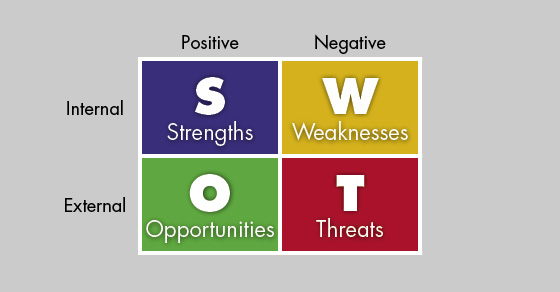
With the year underway, your business probably has a strategic plan in place for the months ahead. Or maybe you’ve created a general outline but haven’t quite put the finishing touches on it yet. In either case, there’s a time-tested approach to refining your strategic plan that you should consider: a SWOT analysis. Let’s take a closer look at what each of the letters in that abbreviation stands for:
Strengths. A SWOT analysis starts by identifying your company’s core competencies and competitive advantages. These are how you can boost revenues and build value. Examples may include an easily identifiable brand, a loyal customer base or exceptional customer service.
Unearth the source of each strength. A loyal customer base, for instance, may be tied to a star employee or executive — say a CEO with a high regional profile and multitude of community contacts. In such a case, it’s important to consider what you’d do if that person suddenly left the business.
Weaknesses. Next the analysis looks at the opposite of strengths: potential risks to profitability and long-term viability. These might include high employee turnover, weak internal controls, unreliable quality or a location that’s no longer advantageous.
You can evaluate weaknesses relative to your competitors as well. Let’s say metrics indicate customer recognition of your brand is increasing, but you’re still up against a name-brand competitor. Is that a battle you can win? Every business has its Achilles’ heel — some have several. Identify yours so you can correct them.
Opportunities. From here, a SWOT analysis looks externally at what’s happening in your industry, local economy or regulatory environment. Opportunities are favorable external conditions that could allow you to build your bottom line if your company acts on them before competitors do.
For example, imagine a transportation service that notices a growing demand for food deliveries in its operational area. The company could allocate vehicles and hire drivers to deliver food, thereby gaining an entirely new revenue stream.
Threats. The last step in the analysis is spotting unfavorable conditions that might prevent your business from achieving its goals. Threats might come from a decline in the economy, adverse technological changes, increased competition or tougher regulation.
Going back to our previous example, that transportation service would have to consider whether its technological infrastructure could support the rigorous demands of the app-based food-delivery industry. It would also need to assess the risk of regulatory challenges of engaging independent contractors to serve as drivers.
Typically presented as a matrix (see accompanying image), a SWOT analysis provides a logical framework for better understanding how your business runs and for improving (or formulating) a strategic plan for the year ahead. Our firm can help you gather and assess the financial data associated with the analysis.
Investment interest expense is still deductible, but that doesn’t necessarily mean you’ll benefit

As you likely know by now, the Tax Cuts and Jobs Act (TCJA) reduced or eliminated many deductions for individuals. One itemized deduction the TCJA kept intact is for investment interest expense. This is interest on debt used to buy assets held for investment, such as margin debt used to buy securities. But if you have investment interest expense, you can’t count on benefiting from the deduction.
3 hurdles
There are a few hurdles you must pass to benefit from the investment interest deduction even if you have investment interest expense:
- You must itemize deductions. In the past this might not have been a hurdle, because you may have typically had enough itemized deductions to easily exceed the standard deduction. But the TCJA nearly doubled the standard deduction, to $24,000 (married couples filing jointly), $18,000 (heads of households) and $12,000 (singles and married couples filing separately) for 2018. Plus, some of your other itemized deductions, such as your state and local tax deduction, might be smaller on your 2018 return because of TCJA changes. So you might not have enough itemized deductions to exceed your standard deduction and benefit from itemizing.
- You can’t have incurred the interest to produce tax-exempt income. For example, if you borrow money to invest in municipal bonds, which are exempt from federal income tax, you can’t deduct the interest.
- You must have sufficient “net investment income.” The investment interest deduction is limited to your net investment income. For the purposes of this deduction, net investment income generally includes taxable interest, nonqualified dividends and net short-term capital gains, reduced by other investment expenses. In other words, long-term capital gains and qualified dividends aren’t included. However, any disallowed interest is carried forward. You can then deduct the disallowed interest in a later year if you have excess net investment income.
You may elect to treat net long-term capital gains or qualified dividends as investment income in order to deduct more of your investment interest. But if you do, that portion of the long-term capital gain or dividend will be taxed at ordinary-income rates.
Will interest expense save you tax?
As you can see, the answer to the question depends on multiple factors. We can review your situation and help you determine whether you can benefit from the investment interest expense deduction on your 2018 tax return.
Is your business stuck in the mud with its marketing plan?

A good marketing plan should be like a network of well-paved, clearly marked roads shooting out into the world and leading back to your company. But, all too easily, a business can get stuck in the mud while trying to build these thoroughfares, leaving its marketing message ineffective and, well, muddled. Here are a few indications that you might be spinning your wheels.
Still the same
If you’ve been using the same marketing materials for years, it’s probably time for an update. Customers’ demographics, perspectives and expectations change over time. If your materials appear old and outdated, your products or services may seem that way too.
Check out the marketing and advertising of competitors, as well as perhaps a few companies that you admire. What about their efforts grabs you? Discuss it with your team and come up with a strategy for refreshing your look. You might need to do something as drastic as a total rebranding, or a few relatively minor tweaks might be sufficient.
Overreliance on one approach
While a marketing plan should take many avenues, sometimes when a business finds success via a certain route, it gets overly reliant on that one approach. Think of a company that has advertised in its local phonebook for years and doesn’t notice when a competitor starts pulling in customers via social media.
This is where data becomes key. Use metrics to track response rates to your various initiatives and regularly reassess the balance of your marketing approach. Unlike the business in our example, many companies today become too focused on social media and ignore other options. So, watch out for that.
Inconsistent message
Ask yourself whether your various marketing efforts complement — or conflict with — one another. For example, is it obvious that an online ad and a print brochure came from the same business? Are you communicating a consistent, easy-to-remember message to customers and prospects throughout your messaging?
In addition, be careful about tone and taking unnecessary risks — particularly when using social media. It’s a difficult challenge: You want to get noticed, and sometimes that means pushing the envelope, but you don’t want to end up being offensive. Generally, you shouldn’t run the risk of alienating customers with controversial material. If you do come up with an edgy idea that you believe will likely pay off, gather plenty of feedback from objective parties before launching.
Reconstruction work
A marketing plan going nowhere will likely leave your sales team lost and your bottom line suffering. Maybe it’s time to do some reconstruction work on yours. Contact us for more information and further suggestions.
A variety of tax-related limits affecting businesses are annually indexed for inflation, and many have gone up for 2019. Here’s a look at some that may affect you and your business.
Many tax-related limits affecting businesses increase for 2019

A variety of tax-related limits affecting businesses are annually indexed for inflation, and many have gone up for 2019. Here’s a look at some that may affect you and your business.
Deductions
- Section 179 expensing:
- Limit: $1.02 million (up from $1 million)
- Phaseout: $2.55 million (up from $2.5 million)
- Income-based phase-ins for certain limits on the Sec. 199A qualified business income deduction:
- Married filing jointly: $321,400-$421,400 (up from $315,000-$415,000)
- Married filing separately: $160,725-$210,725 (up from $157,500-$207,500)
- Other filers: $160,700-$210,700 (up from $157,500-$207,500)
Retirement plans
- Employee contributions to 401(k) plans: $19,000 (up from $18,500)
- Catch-up contributions to 401(k) plans: $6,000 (no change)
- Employee contributions to SIMPLEs: $13,000 (up from $12,500)
- Catch-up contributions to SIMPLEs: $3,000 (no change)
- Combined employer/employee contributions to defined contribution plans (not including catch-ups): $56,000 (up from $55,000)
- Maximum compensation used to determine contributions: $280,000 (up from $275,000)
- Annual benefit for defined benefit plans: $225,000 (up from $220,000)
- Compensation defining “highly compensated employee”: $125,000 (up from $120,000)
- Compensation defining “key employee”: $180,000 (up from $175,000)
Other employee benefits
- Qualified transportation fringe-benefits employee income exclusion: $265 per month (up from $260)
- Health Savings Account contributions:
- Individual coverage: $3,500 (up from $3,450)
- Family coverage: $7,000 (up from $6,900)
- Catch-up contribution: $1,000 (no change)
- Flexible Spending Account contributions:
- Health care: $2,700 (up from $2,650)
- Dependent care: $5,000 (no change)
Additional rules apply to these limits, and they are only some of the limits that may affect your business. Please contact us for more information.
Nowadays, data drives everything — including the very buildings in which companies operate. If your business is considering upgrading its current facility, or moving to or constructing a new one, it’s important to be aware of “smart” buildings.
Getting wise to the rise of “smart” buildings

Nowadays, data drives everything — including the very buildings in which companies operate. If your business is considering upgrading its current facility, or moving to or constructing a new one, it’s important to be aware of “smart” buildings.
A smart building is one equipped with a variety of sensors that gather and track information about the structure’s energy usage and performance. With this data, the owners can better regulate the building’s energy consumption and, ultimately, save money.
Has this been the case in real life? The results of a 2018 Forbes Insights/Intel survey seem to indicate so. Of the 211 business leaders from around the world who responded, 66% answered affirmatively when asked whether smart building management technologies have produced a return on investment.
What’s out there
The name of the game with smart buildings is integration. Traditional building management and control systems don’t easily converge with today’s technology-driven and Internet-connected infrastructure. (This infrastructure is often referred to as “the Internet of Things.”) Sensor-collected data, however, flows directly to the management and control system of a building to automate everything from HVAC to lighting to security features.
Smart technology isn’t limited to new construction. When real estate developers renovate commercial space, it’s increasingly retrofitted with smart technology. By the same token, many large companies have renovated their own buildings to install data-gathering sensors. Doing so is an expensive undertaking but may be worthwhile if your business owns facilities in a prime location and doesn’t want to move.
At the same time, don’t assume every building will be completely automated. In the health care sector, for example, some facilities are finding that manual control of lighting and ventilation systems remains more effective because high traffic volume hampers computerized efforts to regulate energy usage.
Criteria to consider
The primary advantage of smart technology is simple. Over time, you should save money on energy costs by more accurately tracking and regulating usage — dollars that you can redirect toward more profitable activities. Any property you buy, however, must still fit a sensible budget and fulfill other functional criteria, such as being “right-sized” to your on-site workforce and perhaps coming with tax incentives.
When leasing, you’ll need to get specifics from the owner regarding the smart building in question. Was it built new with sensors or retrofitted? Are the sensors and data-processing equipment themselves up to date? You’ll also need to research local energy costs to ensure that the property owner is passing along the savings to you under a reasonable lease agreement.
Here to stay
Just as auto manufacturers no longer make cars without built-in computers, developers and contractors generally aren’t constructing buildings without smart technology. Bear this in mind as you shop for space. Whether you’re looking to lease, buy or build, we can help you weigh the pertinent factors and make the right decision.
While the Tax Cuts and Jobs Act (TCJA) generally reduced individual tax rates for 2018 through 2025, some taxpayers could see their taxes go up due to reductions or eliminations of certain tax breaks — and, in some cases, due to their filing status. But some may see additional tax savings due to their filing status.
What will your marginal income tax rate be?

While the Tax Cuts and Jobs Act (TCJA) generally reduced individual tax rates for 2018 through 2025, some taxpayers could see their taxes go up due to reductions or eliminations of certain tax breaks — and, in some cases, due to their filing status. But some may see additional tax savings due to their filing status.
Unmarried vs. married taxpayers
In an effort to further eliminate the marriage “penalty,” the TCJA made changes to some of the middle tax brackets. As a result, some single and head of household filers could be pushed into higher tax brackets more quickly than pre-TCJA. For example, the beginning of the 32% bracket for singles for 2018 is $157,501, whereas it was $191,651 for 2017 (though the rate was 33%). For heads of households, the beginning of this bracket has decreased even more significantly, to $157,501 for 2018 from $212,501 for 2017.
Married taxpayers, on the other hand, won’t be pushed into some middle brackets until much higher income levels for 2018 through 2025. For example, the beginning of the 32% bracket for joint filers for 2018 is $315,001, whereas it was $233,351 for 2017 (again, the rate was 33% then).
2018 filing and 2019 brackets
Because there are so many variables, it will be hard to tell exactly how specific taxpayers will be affected by TCJA changes, including changes to the brackets, until they file their 2018 tax returns. In the meantime, it’s a good idea to begin to look at 2019. As before the TCJA, the tax brackets are adjusted annually for inflation.
Below is a look at the 2019 brackets under the TCJA. Contact us for help assessing what your tax rate likely will be for 2019 — and for help filing your 2018 tax return.
Single individuals
10%: $0 - $9,700
12%: $9,701 - $39,475
22%: $39,476 - $84,200
24%: $84,201 - $160,725
32%: $160,726 - $204,100
35%: $204,101 - $510,300
37%: Over $510,300
Heads of households
10%: $0 - $13,850
12%: $13,851 - $52,850
22%: $52,851 - $84,200
24%: $84,201 - $160,700
32%: $160,701 - $204,100
35%: $204,101 - $510,300
37%: Over $510,300
Married individuals filing joint returns and surviving spouses
10%: $0 - $19,400
12%: $19,401 - $78,950
22%: $78,951 - $168,400
24%: $168,401 - $321,450
32%: $321,451 - $408,200
35%: $408,201 - $612,350
37%: Over $612,350
Married individuals filing separate returns
10%: $0 - $9,700
12%: $9,701 - $39,475
22%: $39,476 - $84,200
24%: $84,201 - $160,725
32%: $160,726 - $204,100
35%: $204,101 - $306,175
37%: Over $306,175
This year, the optional standard mileage rate used to calculate the deductible costs of operating an automobile for business increased by 3.5 cents, to the highest level since 2008. As a result, you might be able to claim a larger deduction for vehicle-related expense for 2019 than you can for 2018.
Higher mileage rate may mean larger tax deductions for business miles in 2019

This year, the optional standard mileage rate used to calculate the deductible costs of operating an automobile for business increased by 3.5 cents, to the highest level since 2008. As a result, you might be able to claim a larger deduction for vehicle-related expense for 2019 than you can for 2018.
Actual costs vs. mileage rate
Businesses can generally deduct the actual expenses attributable to business use of vehicles. This includes gas, oil, tires, insurance, repairs, licenses and vehicle registration fees. In addition, you can claim a depreciation allowance for the vehicle. However, in many cases depreciation write-offs on vehicles are subject to certain limits that don’t apply to other types of business assets.
The mileage rate comes into play when taxpayers don’t want to keep track of actual vehicle-related expenses. With this approach, you don’t have to account for all your actual expenses, although you still must record certain information, such as the mileage for each business trip, the date and the destination.
The mileage rate approach also is popular with businesses that reimburse employees for business use of their personal automobiles. Such reimbursements can help attract and retain employees who’re expected to drive their personal vehicle extensively for business purposes. Why? Under the Tax Cuts and Jobs Act, employees can no longer deduct unreimbursed employee business expenses, such as business mileage, on their individual income tax returns.
But be aware that you must comply with various rules. If you don’t, you risk having the reimbursements considered taxable wages to the employees.
The 2019 rate
Beginning on January 1, 2019, the standard mileage rate for the business use of a car (van, pickup or panel truck) is 58 cents per mile. For 2018, the rate was 54.5 cents per mile.
The business cents-per-mile rate is adjusted annually. It is based on an annual study commissioned by the IRS about the fixed and variable costs of operating a vehicle, such as gas, maintenance, repair and depreciation. Occasionally, if there is a substantial change in average gas prices, the IRS will change the mileage rate midyear.
More considerations
There are certain situations where you can’t use the cents-per-mile rate. It depends in part on how you’ve claimed deductions for the same vehicle in the past or, if the vehicle is new to your business this year, whether you want to take advantage of certain first-year depreciation breaks on it.
As you can see, there are many variables to consider in determining whether to use the mileage rate to deduct vehicle expenses. Contact us if you have questions about tracking and claiming such expenses in 2019 — or claiming them on your 2018 income tax return.
One thing in plentiful supply in today’s business world is help. Orbiting every industry are providers, consultancies and independent contractors offering a wide array of support services. Simply put, it’s never been easier to outsource certain business functions so you can better focus on fulfilling your company’s mission and growing its bottom line. Here are four such functions to consider:
4 business functions you could outsource right now

One thing in plentiful supply in today’s business world is help. Orbiting every industry are providers, consultancies and independent contractors offering a wide array of support services. Simply put, it’s never been easier to outsource certain business functions so you can better focus on fulfilling your company’s mission and growing its bottom line. Here are four such functions to consider:
1. Information technology. This is the most obvious and time-tested choice. Bringing in an outside firm or consultant to handle your IT systems can provide the benefits we’ve mentioned — particularly in the sense of enabling you to stay on task and not get diverted by technology’s constant changes. A competent provider will stay on top of the latest, optimal hardware and software for your business, as well as help you better access, store and protect your data.
2. Payroll and other HR functions. These areas are subject to many complex regulations and laws that change frequently — as does the software needed to track and respond to the revisions. A worthy vendor will be able to not only adjust to these changes, but also give you and your staff online access to payroll and HR data that allows employees to get immediate answers to their questions.
3. Customer service. This may seem an unlikely candidate because you might believe that, for someone to represent your company, he or she must work for it. But this isn’t necessarily so — internal customer service departments often have a high turnover rate, which drives up the costs of maintaining them and drives down customer satisfaction. Outsourcing to a provider with a more stable, loyal staff can make everyone happier.
4. Accounting. You could bring in an outside expert to handle your accounting and financial reporting. A reputable provider can manage your books, collect payments, pay invoices and keep your accounting technology up to date. The right provider can also help generate financial statements that will meet the desired standards of management, investors and lenders.
Naturally, there are potential downsides to outsourcing these or other functions. You’ll incur a substantial and regular cost in engaging a provider. It will be critical to get an acceptable return on that investment. You’ll also have to place considerable trust in any vendor — there’s always a chance that trust could be misplaced. Last, even a good outsourcing arrangement will entail some time and energy on your part to maintain the relationship.
Is this the year your business dips its toe in the vast waters of outsourced services? Maybe. Our firm can help you answer this question, choose the right function to outsource (if the answer is yes) and identify a provider likely to offer the best value.
While most provisions of the Tax Cuts and Jobs Act (TCJA) went into effect in 2018 and either apply through 2025 or are permanent, there are two major changes under the act for 2019. Here’s a closer look.
2 major tax law changes for individuals in 2019

While most provisions of the Tax Cuts and Jobs Act (TCJA) went into effect in 2018 and either apply through 2025 or are permanent, there are two major changes under the act for 2019. Here’s a closer look.
1. Medical expense deduction threshold
With rising health care costs, claiming whatever tax breaks related to health care that you can is more important than ever. But there’s a threshold for deducting medical expenses that was already difficult for many taxpayers to meet, and it may be even harder to meet this year.
The TCJA temporarily reduced the threshold from 10% of adjusted gross income (AGI) to 7.5% of AGI. Unfortunately, the reduction applies only to 2017 and 2018. So for 2019, the threshold returns to 10% — unless legislation is signed into law extending the 7.5% threshold. Only qualified, unreimbursed expenses exceeding the threshold can be deducted.
Also, keep in mind that you have to itemize deductions to deduct medical expenses. Itemizing saves tax only if your total itemized deductions exceed your standard deduction. And with the TCJA’s near doubling of the standard deduction for 2018 through 2025, many taxpayers who’ve typically itemized may no longer benefit from itemizing.
2. Tax treatment of alimony
Alimony has generally been deductible by the ex-spouse paying it and included in the taxable income of the ex-spouse receiving it. Child support, on the other hand, hasn’t been deductible by the payer or taxable income to the recipient.
Under the TCJA, for divorce agreements executed (or, in some cases, modified) after December 31, 2018, alimony payments won’t be deductible — and will be excluded from the recipient’s taxable income. So, essentially, alimony will be treated the same way as child support.
Because the recipient ex-spouse would typically pay income taxes at a rate lower than that of the paying ex-spouse, the overall tax bite will likely be larger under this new tax treatment. This change is permanent.
TCJA impact on 2018 and 2019
Most TCJA changes went into effect in 2018, but not all. Contact us if you have questions about the medical expense deduction or the tax treatment of alimony — or any other changes that might affect you in 2019. We can also help you assess the impact of the TCJA when you file your 2018 tax return.
There aren’t too many things businesses can do after a year ends to reduce tax liability for that year. However, you might be able to pay employee bonuses for 2018 in 2019 and still deduct them on your 2018 tax return. In certain circumstances, businesses can deduct bonuses employees have earned during a tax year if the bonuses are paid within 2½ months after the end of that year (by March 15 for a calendar-year company).
A review of significant TCJA provisions impacting individual taxpayers

Now that 2019 has begun, there isn’t too much you can do to reduce your 2018 income tax liability. But it’s smart to begin preparing for filing your 2018 return. Because the Tax Cuts and Jobs Act (TCJA), which was signed into law at the end of 2017, likely will have a major impact on your 2018 taxes, it’s a good time to review the most significant provisions impacting individual taxpayers.
Rates and exemptions
Generally, taxpayers will be subject to lower tax rates for 2018. But a couple of rates stay the same, and changes to some of the brackets for certain types of filers (individuals and heads of households) could cause them to be subject to higher rates. Some exemptions are eliminated, while others increase. Here are some of the specific changes:
- Drops of individual income tax rates ranging from 0 to 4 percentage points (depending on the bracket) to 10%, 12%, 22%, 24%, 32%, 35% and 37%
- Elimination of personal and dependent exemptions
- AMT exemption increase, to $109,400 for joint filers, $70,300 for singles and heads of households, and $54,700 for separate filers for 2018
- Approximate doubling of the gift and estate tax exemption, to $11.18 million for 2018
Credits and deductions
Generally, tax breaks are reduced for 2018. However, a few are enhanced. Here’s a closer look:
- Doubling of the child tax credit to $2,000 and other modifications intended to help more taxpayers benefit from the credit
- Near doubling of the standard deduction, to $24,000 (married couples filing jointly), $18,000 (heads of households) and $12,000 (singles and married couples filing separately) for 2018
- Reduction of the adjusted gross income (AGI) threshold for the medical expense deduction to 7.5% for regular and AMT purposes
- New $10,000 limit on the deduction for state and local taxes (on a combined basis for property and income or sales taxes; $5,000 for separate filers)
- Reduction of the mortgage debt limit for the home mortgage interest deduction to $750,000 ($375,000 for separate filers), with certain exceptions
- Elimination of the deduction for interest on home equity debt
- Elimination of the personal casualty and theft loss deduction (with an exception for federally declared disasters)
- Elimination of miscellaneous itemized deductions subject to the 2% floor (such as certain investment expenses, professional fees and unreimbursed employee business expenses)
- Elimination of the AGI-based reduction of certain itemized deductions
- Elimination of the moving expense deduction (with an exception for members of the military in certain circumstances)
- Expansion of tax-free Section 529 plan distributions to include those used to pay qualifying elementary and secondary school expenses, up to $10,000 per student per tax year
How are you affected?
As you can see, the TCJA changes for individuals are dramatic. Many rules and limits apply, so contact us to find out exactly how you’re affected. We can also tell you if any other provisions affect you, and help you begin preparing for your 2018 tax return filing and 2019 tax planning.
The dawning of 2019 means the 2018 income tax filing season will soon be upon us. After year end, it’s generally too late to take action to reduce 2018 taxes. Business owners may, therefore, want to shift their focus to assessing whether they’ll likely owe taxes or get a refund when they file their returns this spring, so they can plan accordingly.
A refresher on major tax law changes for small-business owners
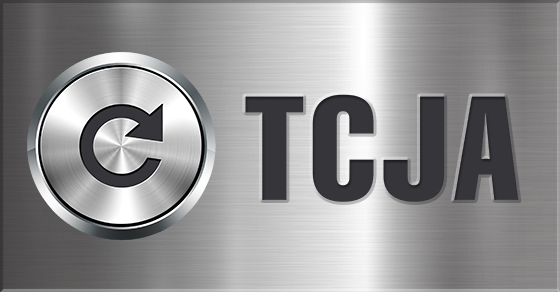
The dawning of 2019 means the 2018 income tax filing season will soon be upon us. After year end, it’s generally too late to take action to reduce 2018 taxes. Business owners may, therefore, want to shift their focus to assessing whether they’ll likely owe taxes or get a refund when they file their returns this spring, so they can plan accordingly.
With the biggest tax law changes in decades — under the Tax Cuts and Jobs Act (TCJA) — generally going into effect beginning in 2018, most businesses and their owners will be significantly impacted. So, refreshing yourself on the major changes is a good idea.
Taxation of pass-through entities
These changes generally affect owners of S corporations, partnerships and limited liability companies (LLCs) treated as partnerships, as well as sole proprietors:
- Drops of individual income tax rates ranging from 0 to 4 percentage points (depending on the bracket) to 10%, 12%, 22%, 24%, 32%, 35% and 37%
- A new 20% qualified business income deduction for eligible owners (the Section 199A deduction)
- Changes to many other tax breaks for individuals that will impact owners’ overall tax liability
Taxation of corporations
These changes generally affect C corporations, personal service corporations (PSCs) and LLCs treated as C corporations:
- Replacement of graduated corporate rates ranging from 15% to 35% with a flat corporate rate of 21%
- Replacement of the flat PSC rate of 35% with a flat rate of 21%
- Repeal of the 20% corporate alternative minimum tax (AMT)
Tax break positives
These changes generally apply to both pass-through entities and corporations:
- Doubling of bonus depreciation to 100% and expansion of qualified assets to include used assets
- Doubling of the Section 179 expensing limit to $1 million and an increase of the expensing phaseout threshold to $2.5 million
- A new tax credit for employer-paid family and medical leave
Tax break negatives
These changes generally also apply to both pass-through entities and corporations:
- A new disallowance of deductions for net interest expense in excess of 30% of the business’s adjusted taxable income (exceptions apply)
- New limits on net operating loss (NOL) deductions
- Elimination of the Section 199 deduction (not to be confused with the new Sec.199A deduction), which was for qualified domestic production activities and commonly referred to as the “manufacturers’ deduction”
- A new rule limiting like-kind exchanges to real property that is not held primarily for sale (generally no more like-kind exchanges for personal property)
- New limitations on deductions for certain employee fringe benefits, such as entertainment and, in certain circumstances, meals and transportation
Preparing for 2018 filing
Keep in mind that additional rules and limits apply to the rates and breaks covered here. Also, these are only some of the most significant and widely applicable TCJA changes; you and your business could be affected by other changes as well. Contact us to learn precisely how you might be affected and for help preparing for your 2018 tax return filing — and beginning to plan for 2019, too.
Retirement plan contribution limits are indexed for inflation, and many have gone up for 2019, giving you opportunities to increase your retirement savings:
You may be able to save more for retirement in 2019

Retirement plan contribution limits are indexed for inflation, and many have gone up for 2019, giving you opportunities to increase your retirement savings:
- Elective deferrals to 401(k), 403(b), 457(b)(2) and 457(c)(1) plans: $19,000 (up from $18,500)
- Contributions to defined contribution plans: $56,000 (up from $55,000)
- Contributions to SIMPLEs: $13,000 (up from $12,500)
- Contributions to IRAs: $6,000 (up from $5,500)
One exception is catch-up contributions for taxpayers age 50 or older, which remain at the same levels as for 2018:
- Catch-up contributions to 401(k), 403(b), 457(b)(2) and 457(c)(1) plans: $6,000
- Catch-up contributions to SIMPLEs: $3,000
- Catch-up contributions to IRAs: $1,000
Keep in mind that additional factors may affect how much you’re allowed to contribute (or how much your employer can contribute on your behalf). For example, income-based limits may reduce or eliminate your ability to make Roth IRA contributions or to make deductible traditional IRA contributions.
For more on how to make the most of your tax-advantaged retirement-saving opportunities in 2019, please contact us.
Make sure the price is right with market research

The promise of the new year lies ahead. One way to help ensure it’s a profitable one is to re-evaluate your company’s pricing strategy. You need to devise an approach that considers more than just what it cost you to produce a product or deliver a service; it also must factor in what customers want and value — and how much money they’re willing to spend. Then you need to evaluate how competitors price and position their offerings.
Doing your homework
Optimal pricing decisions don’t occur in a vacuum; they require market research. Examples of economical ways smaller businesses can research their customers and competitors include:
- Conducting informal focus groups with top customers,
- Sending online surveys to prospective, existing and defecting customers,
- Monitoring social media reviews, and
- Sending free trials in exchange for customer feedback.
It’s also smart to investigate your competitors’ pricing strategies using ethical means. For example, the owner of a restaurant might eat a meal at each of her local competitors to evaluate the menu, decor and service. Or a manufacturer might visit competitors’ websites and purchase comparable products to evaluate quality, timeliness and customer service.
Charging a premium
Remember, low-cost pricing isn’t the only way to compete — in fact, it can be disastrous for small players in an industry dominated by large conglomerates. Your business can charge higher prices than competitors do if customers think your products and services offer enhanced value.
Suppose you survey customers and discover that they associate your brand with high quality and superior features. If your target market is more image conscious than budget conscious, you can set a premium price to differentiate your offerings. You’ll probably sell fewer units than your low-cost competitors but earn a higher margin on each unit sold. Premium prices also work for novel or exclusive products that are currently available from few competitors — or, if customers are drawn to the reputation, unique skills or charisma that specific owners or employees possess.
Going in low
Sometimes setting a low price, at least temporarily, does make sense. It can drive competitors out of the market and build your market share — or help you survive adverse market conditions. Being a low-cost leader enables your business to capture market share and possibly lower costs through economies of scale. But you’ll earn a lower margin on each unit sold.
Another approach is to discount some loss leader products to draw in buyers and establish brand loyalty in the hope that customers will subsequently buy complementary products and services at higher margins. You also may decide to offer discounts when seasonal demand is low or when you want to get rid of less popular models to lower inventory carrying costs.
Evolving over time
Do your prices really reflect customer demand and market conditions? Pricing shouldn’t be static — it should evolve with your business and its industry. Whether you’re pricing a new product or service for the first time or reviewing your existing pricing strategy, we can help you analyze the pertinent factors and make an optimal decision.
Business owners: An exit strategy should be part of your tax planning

Tax planning is a juggling act for business owners. You have to keep your eye on your company’s income and expenses and applicable tax breaks (especially if you own a pass-through entity). But you also must look out for your own financial future.
For example, you need to develop an exit strategy so that taxes don’t trip you up when you retire or leave the business for some other reason. An exit strategy is a plan for passing on responsibility for running the company, transferring ownership and extracting your money from the business.
Buy-sell agreement
When a business has more than one owner, a buy-sell agreement can be a powerful tool. The agreement controls what happens to the business when a specified event occurs, such as an owner’s retirement, disability or death. Among other benefits, a well-drafted agreement:
- Provides a ready market for the departing owner’s shares,
- Prescribes a method for setting a price for the shares, and
- Allows business continuity by preventing disagreements caused by new owners.
A key issue with any buy-sell agreement is providing the buyer(s) with a means of funding the purchase. Life or disability insurance often helps fulfill this need and can give rise to several tax issues and opportunities. One of the biggest advantages of life insurance as a funding method is that proceeds generally are excluded from the beneficiary’s taxable income.
Succession within the family
You can pass your business on to family members by giving them interests, selling them interests or doing some of each. Be sure to consider your income needs, the tax consequences, and how family members will feel about your choice.
Under the annual gift tax exclusion, you can gift up to $15,000 of ownership interests without using up any of your lifetime gift and estate tax exemption. Valuation discounts may further reduce the taxable value of the gift.
With the gift and estate tax exemption approximately doubled through 2025 ($11.4 million for 2019), gift and estate taxes may be less of a concern for some business owners. But others may want to make substantial transfers now to take maximum advantage of the high exemption. What’s right for you will depend on the value of your business and your timeline for transferring ownership.
Plan ahead
If you don’t have co-owners or want to pass the business to family members, other options include a management buyout, an employee stock ownership plan (ESOP) or a sale to an outsider. Each involves a variety of tax and nontax considerations.
Please contact us to discuss your exit strategy. To be successful, your strategy will require planning well in advance of the transition.
Do your long-term customers know everything about you?

A technician at a mobility equipment supplier was servicing the motorized wheelchair of a long-time customer and noticed it was a brand-new model. “Where did you buy the chair?” he asked the customer. “At the health care supply store on the other side of town,” the customer replied. The technician paused and then asked, “Well, why didn’t you buy the chair from us?” The customer replied, “I didn’t know you sold wheelchairs.”
Look deeper
Most business owners would likely agree that selling to existing customers is much easier than finding new ones. Yet many companies continue to squander potential sales to long-term, satisfied customers simply because they don’t create awareness of all their products and services.
It seems puzzling that the long-time customer in our example wouldn’t know that his wheelchair service provider also sold wheelchairs. But when you look a little deeper, it’s easy to understand why.
The repair customer always visited the repair shop, which had a separate entrance. While the customer’s chair was being repaired, he sat in the waiting area, which provided a variety of magazines but no product brochures or other promotional materials. The customer had no idea that a new sales facility was on the other side of the building until the technician asked about the new wheelchair.
Be inquisitive
Are you losing business from long-term customers because of a similar disconnect? To find out, ask yourself two fundamental questions:
1. Are your customers buying everything they need from you? To find the answer, you must thoroughly understand your customers’ needs. Identify your top tier of customers — say, the 20% who provide 80% of your revenue. What do they buy from you? What else might they need? Don’t just take orders from them; learn everything you can about their missions, strategic plans and operations.
2. Are your customers aware of everything you offer? The quickest way to learn this is, simply, to ask. Instruct your salespeople to regularly inquire about whether customers would be interested in products or services they’ve never bought. Also, add flyers, brochures or catalogs to orders when you fulfill them. Consider building greater awareness by hosting free lunches or festive corporate events to educate your customers on the existence and value of your products and services.
Raise awareness
If you have long-term customers, you must be doing something right — and that’s to your company’s credit. But, remember, it’s not out of the question that you could lose any one of those customers if they’re unaware of your full spectrum of products and services. That’s an open opportunity for a competitor.
By taking steps to raise awareness of your products and services, you’ll put yourself in a better position to increase sales and profitability. Our firm can help you identify your strongest revenue sources and provide further ideas for enhancing them.
6 last-minute tax moves for your business

Tax planning is a year-round activity, but there are still some year-end strategies you can use to lower your 2018 tax bill. Here are six last-minute tax moves business owners should consider:
- Postpone invoices. If your business uses the cash method of accounting, and it would benefit from deferring income to next year, wait until early 2019 to send invoices. Accrual-basis businesses can defer recognition of certain advance payments for products to be delivered or services to be provided next year.
- Prepay expenses. A cash-basis business may be able to reduce its 2018 taxes by prepaying certain expenses — such as lease payments, insurance premiums, utility bills, office supplies and taxes — before the end of the year. Many expenses can be deducted up to 12 months in advance.
- Buy equipment. Take advantage of 100% bonus depreciation and Section 179 expensing to deduct the full cost of qualifying equipment or other fixed assets. Under the Tax Cuts and Jobs Act, bonus depreciation, like Sec. 179 expensing, is now available for both new and used assets. Keep in mind that, to deduct the expense on your 2018 return, the assets must be placed in service — not just purchased — by the end of the year.
- Use credit cards. What if you’d like to prepay expenses or buy equipment before the end of the year, but you don’t have the cash? Consider using your business credit card. Generally, expenses paid by credit card are deductible when charged, even if you don’t pay the credit card bill until next year.
- Contribute to retirement plans. If you’re self-employed or own a pass-through business — such as a partnership, limited liability company or S corporation — one of the best ways to reduce your 2018 tax bill is to increase deductible contributions to retirement plans. Usually, these contributions must be made by year-end. But certain plans — such as SEP IRAs — allow your business to make 2018 contributions up until its tax return due date (including extensions).
- Qualify for the pass-through deduction. If your business is a sole proprietorship or pass-through entity, you may qualify for the new pass-through deduction of up to 20% of qualified business income. But if your taxable income exceeds $157,500 ($315,000 for joint filers), certain limitations kick in that can reduce or even eliminate the deduction. One way to avoid these limitations is to reduce your income below the threshold — for example, by having your business increase its retirement plan contributions.
Most of these strategies are subject to various limitations and restrictions beyond what we’ve covered here, so please consult us before you implement them. We can also offer more ideas for reducing your taxes this year and next.
Getting ahead of the curve on emerging technologies

Turn on your computer or mobile device, scroll through Facebook or Twitter, or skim a business-oriented website, and you’ll likely come across the term “emerging technologies.” It has become so ubiquitous that you might be tempted to ignore it and move on to something else. That would be a mistake.
In today’s competitive business landscape, your ability to stay up to date — or, better yet, get ahead of the curve — on the emerging technologies in your industry could make or break your company.
Watch the competition
There’s a good chance that some of your competitors already are trying to adapt emerging technologies such as these:
Machine learning. A form of artificial intelligence, machine learning refers to the ability of machines to learn and improve at a specific task with little or no programming or human intervention. For instance, you could use machine learning to search through large amounts of consumer data and make predictions about future purchase patterns. Think of Amazon’s suggested products or Netflix’s recommended viewing.
Natural language processing (NLP). This technology employs algorithms to analyze unstructured human language in emails, texts, documents, conversation or otherwise. It could be used to find specific information in a document based on the other words around that information.
Internet of Things (IoT). The IoT is the networking of objects (for example, vehicles, building systems and household appliances) embedded with electronics, software, sensors and Internet connectivity. It allows the collection, sending and receiving of data about users and their interactions with their environments.
Robotic process automation (RPA). You can use RPA to automate repetitive manual tasks that eat up a lot of staff time but don’t require decision making. Relying on business rules and structured inputs, RPA can perform such tasks with greater speed and accuracy than any human possibly could.
Not so difficult
If you fall behind on these or other emerging technologies that your competitors may already be incorporating, you run the risk of never catching up. But how can you stay informed and know when to begin seriously pursuing an emerging technology? It’s not as difficult as you might think:
- Schedule time to study emerging technologies, just as you would schedule time for doing market research or attending an industry convention.
- Join relevant online communities. Follow and try to connect with the thought leaders in your industry, whether authors and writers, successful CEOs, bloggers or otherwise.
- Check industry-focused publications and websites regularly.
Taking the time for these steps will reduce the odds that you’ll be caught by surprise and unable to catch up or break ahead.
When you’re ready to undertake the process of integrating an emerging technology into your business operation, forecasting both the implementation and maintenance costs will be critical. We can help you create a reasonable budget and manage the financial impact.
Year-end tax and financial to-do list for individuals

With the dawn of 2019 on the near horizon, here’s a quick list of tax and financial to-dos you should address before 2018 ends:
Check your FSA balance. If you have a Flexible Spending Account (FSA) for health care expenses, you need to incur qualifying expenses by December 31 to use up these funds or you’ll potentially lose them. (Some plans allow you to carry over up to $500 to the following year or give you a 2½-month grace period to incur qualifying expenses.) Use expiring FSA funds to pay for eyeglasses, dental work or eligible drugs or health products.
Max out tax-advantaged savings. Reduce your 2018 income by contributing to traditional IRAs, employer-sponsored retirement plans or Health Savings Accounts to the extent you’re eligible. (Certain vehicles, including traditional and SEP IRAs, allow you to deduct contributions on your 2018 return if they’re made by April 15, 2019.)
Take RMDs. If you’ve reached age 70½, you generally must take required minimum distributions (RMDs) from IRAs or qualified employer-sponsored retirement plans before the end of the year to avoid a 50% penalty. If you turned 70½ this year, you have until April 1, 2019, to take your first RMD. But keep in mind that, if you defer your first distribution, you’ll have to take two next year.
Consider a QCD. If you’re 70½ or older and charitably inclined, a qualified charitable distribution (QCD) allows you to transfer up to $100,000 tax-free directly from your IRA to a qualified charity and to apply the amount toward your RMD. This is a big advantage if you wouldn’t otherwise qualify for a charitable deduction (because you don’t itemize, for example).
Use it or lose it. Make the most of annual limits that don’t carry over from year to year, even if doing so won’t provide an income tax deduction. For example, if gift and estate taxes are a concern, make annual exclusion gifts up to $15,000 per recipient. If you have a Coverdell Education Savings Account, contribute the maximum amount you’re allowed.
Contribute to a Sec. 529 plan. Sec. 529 prepaid tuition or college savings plans aren’t subject to federal annual contribution limits and don’t provide a federal income tax deduction. But contributions may entitle you to a state income tax deduction (depending on your state and plan).
Review withholding. The IRS cautions that people with more complex tax situations face the possibility of having their income taxes underwithheld due to changes under the Tax Cuts and Jobs Act. Use its withholding calculator (available at irs.gov) to review your situation. If it looks like you could face underpayment penalties, increase withholdings from your or your spouse’s wages for the remainder of the year. (Withholdings, unlike estimated tax payments, are treated as if they were paid evenly over the year.)
Can a PTO contribution arrangement help your employees and your business?

As the year winds to a close, most businesses see employees taking a lot of vacation time. After all, it’s the holiday season, and workers want to enjoy it. Some businesses, however, find themselves particularly short-staffed in December because they don’t allow unused paid time off (PTO) to be rolled over to the new year, or they allow only very limited rollovers.
There are good business reasons to limit PTO rollovers. Fortunately, there’s a way to reduce the year-end PTO vortex without having to allow unlimited rollovers: a PTO contribution arrangement.
Retirement saving with a twist
A PTO contribution arrangement allows employees with unused vacation hours to elect to convert them to retirement plan contributions. If the plan has a 401(k) feature, it can treat these amounts as a pretax benefit, similar to normal employee deferrals. Alternatively, the plan can treat the amounts as employer profit sharing, converting excess PTO amounts to employer contributions.
This can be appealing to any employees who end up with a lot of PTO left at the end of the year and don’t want to lose it. But it can be especially valued by employees who are concerned about their level of retirement saving or who simply value money more than time off of work.
Good for the business
Of course the biggest benefit to your business may simply be that it’s easier to ensure you have sufficient staffing at the end of the year. But you could reap that same benefit by allowing PTO rollovers (or, if you allow some rollover, increasing the rollover limit).
A PTO contribution arrangement can be a better option than increasing the number of days employees can roll over. Why? Larger rollover limits can result in employees building up large balances that create a significant liability on your books.
Also, a PTO contribution arrangement might help you improve recruiting and retention, because of its appeal to employees who want to save more for retirement or don’t care about having a lot of PTO.
Set-up is simple
To offer a PTO contribution arrangement, simply amend your retirement plan. However, you must still follow the plan document’s eligibility, vesting, rollover, distribution and loan terms. Additional rules apply.
Have questions about PTO contribution arrangements? Contact us. We can help you assess whether such an arrangement would make sense for your business.
Family businesses need succession plans, too

Those who run family-owned businesses often underestimate the need for a succession plan. After all, they say, we’re a family business — there will always be a family member here to keep the company going and no one will stand in the way.
Not necessarily. In one all-too-common scenario, two of the owner’s children inherit the business and, while one wants to keep the business in the family, the other is eager to sell. Such conflicts can erupt into open combat between heirs and even destroy the company. So, it’s important for you, as a family business owner, to create a formal succession plan — and to communicate it well before it’s needed.
Talk it out
A good succession plan addresses the death, incapacity or retirement of an owner. It answers questions now about future ownership and any potential sale so that successors don’t have to scramble during what can be an emotionally traumatic time.
The key to making any plan work is to clearly communicate it with all stakeholders. Allow your children to voice their intentions. If there’s an obvious difference between siblings, resolving that conflict needs to be central to your succession plan.
Balancing interests
Perhaps the simplest option, if you have sufficient assets outside your business, is to leave your business only to those heirs who want to be actively involved in running it. You can leave assets such as investment securities, real estate or insurance policies to your other heirs.
Another option is for the heirs who’d like to run the business to buy out the other heirs. But they’ll need capital to do that. You might buy an insurance policy with proceeds that will be paid to the successor on your death. Or, as you near retirement, it may be possible to arrange buyout financing with your company’s current lenders.
If those solutions aren’t viable, hammer out a temporary compromise between your heirs. In a scenario where they are split about selling, the heirs who want to sell might compromise by agreeing to hold off for a specified period. That would give the other heirs time to amass capital to buy their relatives out or find a new co-owner, such as a private equity investor.
Family comes first
For a family-owned business, family should indeed come first. To ensure that your children or other relatives won’t squabble over the company after your death, make a succession plan that will accommodate all your heirs’ wishes. We can provide assistance, including helping you divide your assets fairly and anticipating the applicable income tax and estate tax issues.
Check deductibility before making year-end charitable gifts

As the holidays approach and the year draws to a close, many taxpayers make charitable gifts — both in the spirit of the season and as a year-end tax planning strategy. But with the tax law changes that go into effect in 2018 and the many rules that apply to the charitable deduction, it’s a good idea to check deductibility before making any year-end donations.
Confirm you can still benefit from itemizing
Last year’s Tax Cuts and Jobs Act (TCJA) didn’t put new limits on or suspend the charitable deduction, like it did to many other itemized deductions. Nevertheless, it will reduce or eliminate the tax benefits of charitable giving for many taxpayers this year.
Itemizing saves tax only if itemized deductions exceed the standard deduction. For 2018 through 2025, the TCJA significantly increases the standard deduction, to $24,000 for married couples filing jointly, $18,000 for heads of households, and $12,000 for singles and married couples filing separately.
The nearly doubled standard deduction combined with the new limits or suspensions of some common itemized deductions means you may no longer have enough itemized deductions to exceed the standard deduction. And if that’s the case, your donations won’t save you tax.
So before you make any year-end charitable gifts, total up your potential itemized deductions for the year, including the donations you’re considering. If the total is less than your standard deduction, your year-end donations won’t provide a tax benefit.
You might, however, be able to preserve your charitable deduction by “bunching” donations into alternating years. This can allow you to exceed the standard deduction and claim a charitable deduction (and other itemized deductions) every other year.
Meet the delivery deadline
To be deductible on your 2018 return, a charitable gift must be made by Dec. 31, 2018. According to the IRS, a donation generally is “made” at the time of its “unconditional delivery.” The delivery date depends in part on what you donate and how you donate it. Here are a few examples for common donations:
Check. The date you mail it.
Credit card. The date you make the charge.
Stock certificate. The date you mail the properly endorsed stock certificate to the charity.
Make sure the organization is “qualified”
To be deductible, a donation also must be made to a “qualified charity” — one that’s eligible to receive tax-deductible contributions.
The IRS’s online search tool, Tax Exempt Organization Search, can help you easily find out whether an organization is eligible to receive tax-deductible charitable contributions. You can access this tool at http://apps.irs.gov/app/eos. Information about organizations eligible to receive deductible contributions is updated monthly. Remember that political donations aren’t deductible.
Consider other rules
We’ve discussed only some of the rules for the charitable deduction; many others apply. We can answer any questions you have about the deductibility of donations or changes to the standard deduction and itemized deductions.
2019 Q1 tax calendar: Key deadlines for businesses and other employers

Here are some of the key tax-related deadlines affecting businesses and other employers during the first quarter of 2019. Keep in mind that this list isn’t all-inclusive, so there may be additional deadlines that apply to you. Contact us to ensure you’re meeting all applicable deadlines and to learn more about the filing requirements.
January 31
- File 2018 Forms W-2, “Wage and Tax Statement,” with the Social Security Administration and provide copies to your employees.
- Provide copies of 2018 Forms 1099-MISC, “Miscellaneous Income,” to recipients of income from your business where required.
- File 2018 Forms 1099-MISC reporting nonemployee compensation payments in Box 7 with the IRS.
- File Form 940, “Employer’s Annual Federal Unemployment (FUTA) Tax Return,” for 2018. If your undeposited tax is $500 or less, you can either pay it with your return or deposit it. If it’s more than $500, you must deposit it. However, if you deposited the tax for the year in full and on time, you have until February 11 to file the return.
- File Form 941, “Employer’s Quarterly Federal Tax Return,” to report Medicare, Social Security and income taxes withheld in the fourth quarter of 2018. If your tax liability is less than $2,500, you can pay it in full with a timely filed return. If you deposited the tax for the quarter in full and on time, you have until February 11 to file the return. (Employers that have an estimated annual employment tax liability of $1,000 or less may be eligible to file Form 944,“Employer’s Annual Federal Tax Return.”)
- File Form 945, “Annual Return of Withheld Federal Income Tax,” for 2018 to report income tax withheld on all nonpayroll items, including backup withholding and withholding on accounts such as pensions, annuities and IRAs. If your tax liability is less than $2,500, you can pay it in full with a timely filed return. If you deposited the tax for the year in full and on time, you have until February 11 to file the return.
February 28
- File 2018 Forms 1099-MISC with the IRS if 1) they’re not required to be filed earlier and 2) you’re filing paper copies. (Otherwise, the filing deadline is April 1.)
March 15
- If a calendar-year partnership or S corporation, file or extend your 2018 tax return and pay any tax due. If the return isn’t extended, this is also the last day to make 2018 contributions to pension and profit-sharing plans.
Many factors go into the success of a company. You’ve got to offer high-quality products or services, provide outstanding customer service, and manage your inventory or supply chain. But there’s at least one other success factor that many business owners often overlook: internal leadership training and development.
Devote some time to internal leadership development

Many factors go into the success of a company. You’ve got to offer high-quality products or services, provide outstanding customer service, and manage your inventory or supply chain. But there’s at least one other success factor that many business owners often overlook: internal leadership training and development.
Even if all your executive and management positions are filled with seasoned leaders right now, there’s still a major benefit to continually training, coaching and mentoring employees for leadership responsibilities. After all, even someone who doesn’t work in management can champion a given initiative or project that brings in revenue or elevates the company’s public image.
Ideas to consider
Internal leadership development is practiced when owners and executives devote time to helping current managers as well as employees who might one day be promoted to positions of leadership.
To do this, shift your mindset from being only “the boss” to being someone who holds an important responsibility to share leadership knowledge with others. Here are a few tips to consider:
Contribute to performance development. Most employees’ performance reviews will reveal both strengths and weaknesses. Sit down with current and potential leaders and generously share your knowledge and experience to bolster strong points and shore up shortcomings.
Invite current and potential leaders to meetings. Give them the opportunity to participate in important meetings they might not otherwise attend, and solicit their input during these gatherings. This includes both internal meetings and interactions with external vendors, customers and prospects. Again, look to reinforce positive behaviors and offer guidance on areas of growth.
Introduce them to the wider community. Get current and potential leaders involved with an industry trade association or a local chamber of commerce. By meeting and networking with others in your industry, these individuals can get a broader perspective on the challenges that your company faces — as well as its opportunities.
Give them real decision-making authority. Probably not right away but, at some point, put a new leader to the test. Give them control of a project and then step back and observe the results. Don’t be afraid to let them fail if their decisions don’t pan out. This can help your most promising employees learn real-world lessons now that can prove invaluable in the future.
Benefits beyond
Dedicating some time and energy to internal leadership development can pay off in ways beyond having well-trained managers. You’ll likely boost retention by strengthening relationships with your best employees. Furthermore, you may discover potential problems and avail yourself of new ideas that, otherwise, may have never reached you. Our firm can provide further information and other ideas.
Prepaying property taxes related to the current year but due the following year has long been one of the most popular and effective year-end tax-planning strategies. But does it still make sense in 2018?
Does prepaying property taxes make sense anymore?

Prepaying property taxes related to the current year but due the following year has long been one of the most popular and effective year-end tax-planning strategies. But does it still make sense in 2018?
The answer, for some people, is yes — accelerating this expense will increase their itemized deductions, reducing their tax bills. But for many, particularly those in high-tax states, changes made by the Tax Cuts and Jobs Act (TCJA) eliminate the benefits.
What’s changed?
The TCJA made two changes that affect the viability of this strategy. First, it nearly doubled the standard deduction to $24,000 for married couples filing jointly, $18,000 for heads of household, and $12,000 for singles and married couples filing separately, so fewer taxpayers will itemize. Second, it placed a $10,000 cap on state and local tax (SALT) deductions, including property taxes plus income or sales taxes.
For property tax prepayment to make sense, two things must happen:
- You must itemize (that is, your itemized deductions must exceed the standard deduction), and
- Your other SALT expenses for the year must be less than $10,000.
If you don’t itemize, or you’ve already used up your $10,000 limit (on income or sales taxes or on previous property tax installments), accelerating your next property tax installment will provide no benefit.
Example
Joe and Mary, a married couple filing jointly, have incurred $5,000 in state income taxes, $5,000 in property taxes, $18,000 in qualified mortgage interest, and $4,000 in charitable donations, for itemized deductions totaling $32,000. Their next installment of 2018 property taxes, $5,000, is due in the spring of 2019. They’ve already reached the $10,000 SALT limit, so prepaying property taxes won’t reduce their tax bill.
Now suppose they live in a state with no income tax. In that case, prepayment would potentially make sense because it would be within the SALT limit and would increase their 2018 itemized deductions.
Look before you leap
Before you prepay property taxes, review your situation carefully to be sure it will provide a tax benefit. And keep in mind that, just because prepayment will increase your 2018 itemized deductions, it doesn’t necessarily mean that’s the best strategy. For example, if you expect to be in a higher tax bracket in 2019, paying property taxes when due will likely produce a greater benefit over the two-year period.
For help determining whether prepaying property taxes makes sense for you this year, contact us. We can also suggest other year-end tips for reducing your taxes.
When holiday gifts and parties are deductible or taxable

The holiday season is a great time for businesses to show their appreciation for employees and customers by giving them gifts or hosting holiday parties. Before you begin shopping or sending out invitations, though, it’s a good idea to find out whether the expense is tax deductible and whether it’s taxable to the recipient. Here’s a brief review of the rules.
Gifts to customers
When you make gifts to customers, the gifts are deductible up to $25 per recipient per year. For purposes of the $25 limit, you need not include “incidental” costs that don’t substantially add to the gift’s value, such as engraving, gift-wrapping, packaging or shipping. Also excluded from the $25 limit is branded marketing collateral — such as pens or stress balls imprinted with your company’s name and logo — provided they’re widely distributed and cost less than $4.
The $25 limit is for gifts to individuals. There’s no set limit on gifts to a company (a gift basket for all to share, for example) as long as they’re “reasonable.”
Gifts to employees
Generally anything of value that you transfer to an employee is included in the employee’s taxable income (and, therefore, subject to income and payroll taxes) and deductible by you. But there’s an exception for noncash gifts that constitute “de minimis fringe benefits.”
These are items so small in value and given so infrequently that it would be administratively impracticable to account for them. Common examples include holiday turkeys or hams, gift baskets, occasional sports or theater tickets (but not season tickets), and other low-cost merchandise.
De minimis fringe benefits are not included in an employee’s taxable income yet are still deductible by you. Unlike gifts to customers, there’s no specific dollar threshold for de minimis gifts. However, many businesses use an informal cutoff of $75.
Keep in mind that cash gifts — as well as cash equivalents, such as gift cards — are included in an employee’s income and subject to payroll tax withholding regardless of how small and infrequent.
Holiday parties
The Tax Cuts and Jobs Act reduced certain deductions for business-related meals and eliminated the deduction for business entertainment altogether. There’s an exception, however, for certain recreational activities, including holiday parties.
Holiday parties are fully deductible (and excludible from recipients’ income) provided they’re primarily for the benefit of non-highly-compensated employees and their families. If customers also attend, holiday parties may be partially deductible.
Gifts that give back
If you’re thinking about giving holiday gifts to employees or customers or throwing a holiday party, contact us. With a little tax planning, you may receive a gift of your own from Uncle Sam.
Catch-up retirement plan contributions can be particularly advantageous post-TCJA

Will you be age 50 or older on December 31? Are you still working? Are you already contributing to your 401(k) plan or Savings Incentive Match Plan for Employees (SIMPLE) up to the regular annual limit? Then you may want to make “catch-up” contributions by the end of the year. Increasing your retirement plan contributions can be particularly advantageous if your itemized deductions for 2018 will be smaller than in the past because of changes under the Tax Cuts and Jobs Act (TCJA).
Catching up
Catch-up contributions are additional contributions beyond the regular annual limits that can be made to certain retirement accounts. They were designed to help taxpayers who didn’t save much for retirement earlier in their careers to “catch up.” But there’s no rule that limits catch-up contributions to such taxpayers.
So catch-up contributions can be a great option for anyone who is old enough to be eligible, has been maxing out their regular contribution limit and has sufficient earned income to contribute more. The contributions are generally pretax (except in the case of Roth accounts), so they can reduce your taxable income for the year.
More benefits now?
This additional reduction to taxable income might be especially beneficial in 2018 if in the past you had significant itemized deductions that now will be reduced or eliminated by the TCJA. For example, the TCJA eliminates miscellaneous itemized deductions subject to the 2% of adjusted gross income floor — such as unreimbursed employee expenses (including home-off expenses) and certain professional and investment fees.
If, say, in 2018 you have $5,000 of expenses that in the past would have qualified as miscellaneous itemized deductions, an additional $5,000 catch-up contribution can make up for the loss of those deductions. Plus, you benefit from adding to your retirement nest egg and potential tax-deferred growth.
Other deductions that are reduced or eliminated include state and local taxes, mortgage and home equity interest expenses, casualty and theft losses, and moving expenses. If these changes affect you, catch-up contributions can help make up for your reduced deductions.
2018 contribution limits
Under 2018 401(k) limits, if you’re age 50 or older and you have reached the $18,500 maximum limit for all employees, you can contribute an extra $6,000, for a total of $24,500. If your employer offers a SIMPLE instead, your regular contribution maxes out at $12,500 in 2018. If you’re 50 or older, you’re allowed to contribute an additional $3,000 — or $15,500 in total for the year.
But, check with your employer because, while most 401(k) plans and SIMPLEs offer catch-up contributions, not all do. Also keep in mind that additional rules and limits apply.
Additional options
Catch-up contributions are also available for IRAs, but the deadline for 2018 contributions is later: April 15, 2019. And whether your traditional IRA contributions will be deductible depends on your income and whether you or your spouse participates in an employer-sponsored retirement plan. Please contact us for more information about catch-up contributions and other year-end tax planning strategies.
Tax reform expands availability of cash accounting

Under the Tax Cuts and Jobs Act (TCJA), many more businesses are now eligible to use the cash method of accounting for federal tax purposes. The cash method offers greater tax-planning flexibility, allowing some businesses to defer taxable income. Newly eligible businesses should determine whether the cash method would be advantageous and, if so, consider switching methods.
What’s changed?
Previously, the cash method was unavailable to certain businesses, including:
- C corporations — as well as partnerships (or limited liability companies taxed as partnerships) with C corporation partners — whose average annual gross receipts for the previous three tax years exceeded $5 million, and
- Businesses required to account for inventories, whose average annual gross receipts for the previous three tax years exceeded $1 million ($10 million for certain industries).
In addition, construction companies whose average annual gross receipts for the previous three tax years exceeded $10 million were required to use the percentage-of-completion method (PCM) to account for taxable income from long-term contracts (except for certain home construction contracts). Generally, the PCM method is less favorable, from a tax perspective, than the completed-contract method.
The TCJA raised all of these thresholds to $25 million, beginning with the 2018 tax year. In other words, if your business’s average gross receipts for the previous three tax years is $25 million or less, you generally now will be eligible for the cash method, regardless of how your business is structured, your industry or whether you have inventories. And construction firms under the threshold need not use PCM for jobs expected to be completed within two years.
You’re also eligible for streamlined inventory accounting rules. And you’re exempt from the complex uniform capitalization rules, which require certain expenses to be capitalized as inventory costs.
Should you switch?
If you’re eligible to switch to the cash method, you need to determine whether it’s the right method for you. Usually, if a business’s receivables exceed its payables, the cash method will allow more income to be deferred than will the accrual method. (Note, however, that the TCJA has a provision that limits the cash method’s advantages for businesses that prepare audited financial statements or file their financial statements with certain government entities.) It’s also important to consider the costs of switching, which may include maintaining two sets of books.
The IRS has established procedures for obtaining automatic consent to such a change, beginning with the 2018 tax year, by filing Form 3115 with your tax return. Contact us to learn more.
3 ways to get more from your marketing dollars

A strong economy leads some company owners to cut back on marketing. Why spend the money if business is so good? Others see it differently — a robust economy means more sales opportunities, so pouring dollars into marketing is the way to go.
The right approach for your company depends on many factors, but one thing is for sure: Few businesses can afford to cut back drastically on marketing or stop altogether, no matter how well the economy is doing. Yet spending recklessly may be dangerous as well. Here are three ways to creatively get more from your marketing dollars so you can cut back or ramp up as prudent:
1. Do more digitally. There are good reasons to remind yourself of digital marketing’s potential value: the affordable cost, the ability to communicate with customers directly, faster results and better tracking capabilities. Consider or re-evaluate strategies such as:
- Regularly updating your search engine optimization approaches so your website ranks higher in online searches and more prospective customers can find you,
- Refining your use of email, text message and social media to communicate with customers (for instance, using more dynamic messages to introduce new products or announce special offers), and
- Offering “flash sales” and Internet-only deals to test and tweak offers before making them via more expansive (and expensive) media.
2. Search for media deals. During boom times, you may feel at the mercy of high advertising rates. The good news is that there are many more marketing/advertising channels than there used to be and, therefore, much more competition among them. Finding a better deal is often a matter of knowing where to look.
Track your marketing efforts carefully and dedicate time to exploring new options. For example, podcasts remain enormously popular. Could a marketing initiative that exploits their reach pay dividends? Another possibility is shifting to smaller, less expensive ads posted in a wider variety of outlets over one massive campaign.
3. Don’t forget public relations (PR). These days, business owners tend to fear the news. When a company makes headlines, it’s all too often because of an accident, scandal or oversight. But you can turn this scenario on its head by using PR to your advantage.
Specifically, ask your marketing department to craft clear, concise but exciting press releases regarding your newest products or services. Then distribute these press releases via both traditional and online channels to complement your marketing efforts. In this manner, you can make the news, get information out to more people and even improve your search engine rankings — all typically at only the cost of your marketing team’s time.
These are just a few ideas to help ensure your marketing dollars play a winning role in your company’s investment in itself. We can provide further assistance in evaluating your spending in this area, as well as in developing a feasible budget for next year.
As we approach the end of 2018, it’s a good idea to review the mutual fund holdings in your taxable accounts and take steps to avoid potential tax traps. Here are some tips.
Mutual funds: Handle with care at year end

As we approach the end of 2018, it’s a good idea to review the mutual fund holdings in your taxable accounts and take steps to avoid potential tax traps. Here are some tips.
Avoid surprise capital gains
Unlike with stocks, you can’t avoid capital gains on mutual funds simply by holding on to the shares. Near the end of the year, funds typically distribute all or most of their net realized capital gains to investors. If you hold mutual funds in taxable accounts, these gains will be taxable to you regardless of whether you receive them in cash or reinvest them in the fund.
For each fund, find out how large these distributions will be and get a breakdown of long-term vs. short-term gains. If the tax impact will be significant, consider strategies to offset the gain. For example, you could sell other investments at a loss.
Buyer beware
Avoid buying into a mutual fund shortly before it distributes capital gains and dividends for the year. There’s a common misconception that investing in a mutual fund just before the ex-dividend date (the date by which you must own shares to qualify for a distribution) is like getting free money.
In reality, the value of your shares is immediately reduced by the amount of the distribution. So you’ll owe taxes on the gain without actually making a profit.
Seller beware
If you plan to sell mutual fund shares that have appreciated in value, consider waiting until just after year end so you can defer the gain until 2019 — unless you expect to be subject to a higher rate next year. In that scenario, you’d likely be better off recognizing the gain and paying the tax this year.
When you do sell shares, keep in mind that, if you bought them over time, each block will have a different holding period and cost basis. To reduce your tax liability, it’s possible to select shares for sale that have higher cost bases and longer holding periods, thereby minimizing your gain (or maximizing your loss) and avoiding higher-taxed short-term gains.
Think beyond just taxes
Investment decisions shouldn’t be driven by tax considerations alone. For example, you need to keep in mind your overall financial goals and your risk tolerance.
But taxes are still an important factor to consider. Contact us to discuss these and other year-end strategies for minimizing the tax impact of your mutual fund holdings.
If most of your money is tied up in your business, retirement can be a challenge. So if you haven’t already set up a tax-advantaged retirement plan, consider doing so this year. There’s still time to set one up and make contributions that will be deductible on your 2018 tax return!
Taking the hybrid approach to cloud computing

For several years now, cloud computing has been touted as the perfect way for companies large and small to meet their software and data storage needs. But, when it comes to choosing and deploying a solution, one size doesn’t fit all.
Many businesses have found it difficult to fully commit to the cloud for a variety of reasons — including complexity of choices and security concerns. If your company has struggled to make a decision in this area, a hybrid cloud might provide the answer.
Public vs. private
The “cloud” in cloud computing is generally categorized as public or private. A public cloud — such as Amazon Web Services, Google Cloud or Microsoft Azure — is shared by many users. Private clouds, meanwhile, are created for and restricted to one business or individual.
Not surprisingly, public clouds generally are considered less secure than private ones. Public clouds also require Internet access to use whatever is stored on them. A private cloud may be accessible via a company’s local network.
Potential advantages
Hybrid computing, as the name suggests, combines public and private clouds. The clouds remain separate and distinct, but data and applications can be shared between them. This approach offers several potential advantages, including:
Scalability. For less sensitive data, public clouds give businesses access to enormous storage capabilities. As your needs expand or shrink — whether temporarily or for the long term — you can easily adjust the size of a public cloud without incurring significant costs for additional on-site or remote private servers.
Security. When it comes to more sensitive data, you can use a private cloud to avoid the vulnerabilities associated with publicly available options. For even greater security, procure multiple private clouds — this way, if one is breached, your company won’t lose access or suffer damage to all of its data.
Accessibility. Public clouds generally are easier for remote workers to access than private clouds. So, your business could use these for productivity-related apps while confidential data is stored on a private cloud.
Risks and costs
Using a blended computer infrastructure like this isn’t without risks and costs. For example, it requires more sophisticated technological expertise to manage and support compared to a straight public cloud approach. You’ll likely have to invest more dollars in procuring multiple public and private cloud solutions, as well as in the IT talent to maintain and support the infrastructure.
Overall, though, many businesses that have been reluctant to solely rely on either a public or private cloud may find that hybrid cloud computing brings the best of both worlds. Our firm can help you assess the financial considerations involved.
If you’re an executive or other key employee, your employer may offer you a nonqualified deferred compensation (NQDC) plan. As the name suggests, NQDC plans pay employees in the future for services currently performed. The plans allow deferral of the income tax associated with the compensation.
Time for NQDC plan deferral elections

If you’re an executive or other key employee, your employer may offer you a nonqualified deferred compensation (NQDC) plan. As the name suggests, NQDC plans pay employees in the future for services currently performed. The plans allow deferral of the income tax associated with the compensation.
But to receive this attractive tax treatment, NQDC plans must meet many requirements. One is that employees must make the deferral election before the year they perform the services for which the compensation is earned. So, if you wish to defer part of your 2019 compensation, you generally must make the election by the end of 2018.
NQDC plans vs. qualified plans
NQDC plans differ from qualified plans, such as 401(k)s, in that:
- NQDC plans can favor highly compensated employees,
- Although your income tax liability can be deferred, your employer can’t deduct the NQDC until you recognize it as income, and
- Any NQDC plan funding isn’t protected from your employer’s creditors.
While some rules are looser for NQDC plans, there are also many rules that apply to them that don’t apply to qualified plans.
2 more NQDC rules
In addition to the requirement that deferral elections be made before the start of the year, there are two other important NQDC rules to be aware of:
1. Distributions. Benefits must be paid on a specified date, according to a fixed payment schedule or after the occurrence of a specified event — such as death, disability, separation from service, change in ownership or control of the employer, or an unforeseeable emergency.
2. Elections to make certain changes. The timing of benefits can be delayed but not accelerated. Elections to change the timing or form of a payment must be made at least 12 months in advance. Also, new payment dates must be at least five years after the date the payment would otherwise have been made.
Be aware that the penalties for noncompliance with NQDC rules can be severe: You can be taxed on plan benefits at the time of vesting, and a 20% penalty and interest charges also may apply. So if you’re receiving NQDC, check with your employer to make sure it’s addressing any compliance issues.
No deferral of employment tax
Another important NQDC tax issue is that employment taxes are generally due when services are performed or when there’s no longer a substantial risk of forfeiture, whichever is later. This is true even though the compensation isn’t actually paid or recognized for income tax purposes until later years.
So your employer may withhold your portion of the tax from your salary or ask you to write a check for the liability. Or your employer might pay your portion, in which case you’ll have additional taxable income.
Next steps
Questions about NQDC — or other executive comp, such as incentive stock options or restricted stock? Contact us. We can answer them and help you determine what, if any, steps you need to take before year end to defer taxes and avoid interest and penalties.
Donate appreciated stock for twice the tax benefits

A tried-and-true year end tax strategy is to make charitable donations. As long as you itemize and your gift qualifies, you can claim a charitable deduction. But did you know that you can enjoy an additional tax benefit if you donate long-term appreciated stock instead of cash?
2 benefits from 1 gift
Appreciated publicly traded stock you’ve held more than one year is long-term capital gains property. If you donate it to a qualified charity, you may be able to enjoy two tax benefits:
- If you itemize deductions, you can claim a charitable deduction equal to the stock’s fair market value, and
- You can avoid the capital gains tax you’d pay if you sold the stock.
Donating appreciated stock can be especially beneficial to taxpayers facing the 3.8% net investment income tax (NIIT) or the top 20% long-term capital gains rate this year.
Stock vs. cash
Let’s say you donate $10,000 of stock that you paid $3,000 for, your ordinary-income tax rate is 37% and your long-term capital gains rate is 20%. Let’s also say you itemize deductions.
If you sold the stock, you’d pay $1,400 in tax on the $7,000 gain. If you were also subject to the 3.8% NIIT, you’d pay another $266 in NIIT.
By instead donating the stock to charity, you save $5,366 in federal tax ($1,666 in capital gains tax and NIIT plus $3,700 from the $10,000 income tax deduction). If you donated $10,000 in cash, your federal tax savings would be only $3,700.
Watch your step
First, remember that the Tax Cuts and Jobs Act nearly doubled the standard deduction, to $12,000 for singles and married couples filing separately, $18,000 for heads of households, and $24,000 for married couples filing jointly. The charitable deduction will provide a tax benefit only if your total itemized deductions exceed your standard deduction. Because the standard deduction is so much higher, even if you’ve itemized deductions in the past, you might not benefit from doing so for 2018.
Second, beware that donations of long-term capital gains property are subject to tighter deduction limits — 30% of your adjusted gross income for gifts to public charities, 20% for gifts to nonoperating private foundations (compared to 60% and 30%, respectively, for cash donations).
Finally, don’t donate stock that’s worth less than your basis. Instead, sell the stock so you can deduct the loss and then donate the cash proceeds to charity.
Minimizing tax and maximizing deductions
For charitably inclined taxpayers who own appreciated stock and who’ll have enough itemized deductions to benefit from itemizing on their 2018 tax returns, donating the stock to charity can be an excellent year-end tax planning strategy. This is especially true if the stock is highly appreciated and you’d like to sell it but are worried about the tax liability. Please contact us with any questions you have about minimizing capital gains tax or maximizing charitable deductions.
Change management doesn’t have to be scary

Business owners are constantly bombarded with terminology and buzzwords. Although you probably feel a need to keep up with the latest trends, you also may find that many of these ideas induce more anxiety than relief. One example is change management.
This term is used to describe the philosophies and processes an organization uses to manage change. Putting change management into practice in your company may seem scary. What is our philosophy toward change? How should we implement change for best results? Can’t we just avoid all this and let the chips fall where they may?
About that last question — yes, you could. But businesses that proactively manage change tend to suffer far fewer negative consequences from business transformations large and small. Here are some ways to implement change management slowly and, in doing so, make it a little less scary.
Set the tone
When a company creates a positive culture, change is easier. Engaged, well-supported employees feel connected to your mission and are more likely to buy in to transformative ideas. So, the best place to start laying the foundation for successful change management is in the HR department.
When hiring, look for candidates who are open to new ideas and flexible in their approaches to a position. As you “on board” new employees, talk about the latest developments at your company and the possibility of future transformation. From there, encourage openness to change in performance reviews.
Strive for solutions
The most obvious time to seek change is when something goes wrong. Unfortunately, this is also when a company can turn on itself. Fingers start pointing and the possibility of positive change begins to drift further and further away as conflicts play out.
Among the core principles of change management is to view every problem as an opportunity to grow. When you’ve formally discussed this concept among your managers and introduced it to your employees, you’ll be in a better position to avoid a destructive reaction to setbacks and, instead, use them to improve your organization.
Change from the top down
It’s not uncommon for business owners to implement change via a “bottom-up” approach. Doing so involves ordering lower-level employees to modify how they do something and then growing frustrated when resistance arises.
For this reason, another important principle of change management is transforming a business from the top down. Every change, no matter how big or small, needs to originate with leadership and then gradually move downward through the organizational chart through effective communication.
Get started
As the cliché goes, change is scary — and change management can be even more so. But many of the principles of the concept are likely familiar to you. In fact, your company may already be doing a variety of things to make change management far less daunting. Contact us to discuss this and other business-improvement ideas.
The Tax Cuts and Jobs Act (TCJA) didn’t change the federal tax credit for “increasing research activities,” but several TCJA provisions have an indirect impact on the credit. As a result, the research credit may be available to some businesses for the first time.
Research credit available to some businesses for the first time

The Tax Cuts and Jobs Act (TCJA) didn’t change the federal tax credit for “increasing research activities,” but several TCJA provisions have an indirect impact on the credit. As a result, the research credit may be available to some businesses for the first time.
AMT reform
Previously, corporations subject to alternative minimum tax (AMT) couldn’t offset the research credit against their AMT liability, which erased the benefits of the credit (although they could carry unused research credits forward for up to 20 years and use them in non-AMT years). By eliminating corporate AMT for tax years beginning after 2017, the TCJA removed this obstacle.
Now that the corporate AMT is gone, unused research credits from prior tax years can be offset against a corporation’s regular tax liability and may even generate a refund (subject to certain restrictions). So it’s a good idea for corporations to review their research activities in recent years and amend prior returns if necessary to ensure they claim all the research credits to which they’re entitled.
The TCJA didn’t eliminate individual AMT, but it did increase individuals’ exemption amounts and exemption phaseout thresholds. As a result, fewer owners of sole proprietorships and pass-through businesses are subject to AMT, allowing more of them to enjoy the benefits of the research credit, too.
More to consider
By reducing corporate and individual tax rates, the TCJA also will increase research credits for many businesses. Why? Because the tax code, to prevent double tax benefits, requires businesses to reduce their deductible research expenses by the amount of the credit.
To avoid this result (which increases taxable income), businesses can elect to reduce the credit by an amount calculated at the highest corporate rate that eliminates the double benefit. Because the highest corporate rate has been reduced from 35% to 21%, this amount is lower and, therefore, the research credit is higher.
Keep in mind that the TCJA didn’t affect certain research credit benefits for smaller businesses. Pass-through businesses can still claim research credits against AMT if their average gross receipts are $50 million or less. And qualifying start-ups without taxable income can still claim research credits against up to $250,000 in payroll taxes.
Do your research
If your company engages in qualified research activities, now’s a good time to revisit the credit to be sure you’re taking full advantage of its benefits.
Protecting your company through the purchase of various forms of insurance is a risk-management necessity. But just because you must buy coverage doesn’t mean you can’t manage the cost of doing so.
Reduce insurance costs by encouraging employee wellness

Protecting your company through the purchase of various forms of insurance is a risk-management necessity. But just because you must buy coverage doesn’t mean you can’t manage the cost of doing so.
Obviously, the safer your workplace, the less likely you’ll incur costly claims and high workers’ compensation premiums. There are, however, bigger-picture issues that you can confront to also lessen the likelihood of expensive payouts. These issues tend to fall under the broad category of employee wellness.
Physical well-being
When you read the word “wellness,” your first thought may be of a formal wellness program at your workplace. Indeed, one of these — properly designed and implemented — can help lower or at least control health care coverage costs.
Wellness programs typically focus on one or more of three types of services/activities:
- Health screenings to identify medical risks (with employee consent),
- Disease management to support people with existing chronic conditions, and
- Lifestyle management to encourage healthier behavior (for example, diet or smoking cessation).
The Affordable Care Act offers incentives to employers that establish qualifying company wellness programs. As mentioned, though, it’s critical to choose the right “size and shape” program to get a worthwhile return on investment.
Mental health
Beyond promoting physical well-being, your business can also encourage mental health wellness to help you avoid or prevent claims involving:
- Discrimination,
- Wrongful termination,
- Sexual harassment, or
- Other toxic workplace issues.
If you’ve already invested in employment practices liability insurance, you know that it doesn’t come cheap and premiums can skyrocket after just one or two incidents. But, in today’s highly litigious society, many businesses consider such coverage a must-have.
Controlling these costs starts with training. When employees are taught (and reminded) to behave appropriately and understand company policies, they have much less ground to stand on when considering lawsuits. And, on a more positive note, a well-trained workforce should get along better and, thereby, operate in a more upbeat, friendly environment.
To take mental health wellness one step further, you could implement an employee assistance program (EAP). This is a voluntary and confidential way to connect employees to outside providers who can help them manage substance abuse and mental health issues. Although it will call for an upfront investment, an EAP can lower insurance costs over the long term by discouraging lifestyle choices that tend to lead to accidents and lawsuits.
Hand in hand
Happy and healthy — there’s a reason these two words go hand in hand. Create a workforce that’s both and you’ll stand a much better chance of maintaining affordable insurance premiums. We can provide further information on how to reduce potential liability and lower the costs of various forms of business insurance.
Selling your business? Defer — and possibly reduce — tax with an installment sale

You’ve spent years building your company and now are ready to move on to something else, whether launching a new business, taking advantage of another career opportunity or retiring. Whatever your plans, you want to get the return from your business that you’ve earned from all of the time and money you’ve put into it.
That means not only getting a good price, but also minimizing the tax hit on the proceeds. One option that can help you defer tax and perhaps even reduce it is an installment sale.
Tax benefits
With an installment sale, you don’t receive a lump sum payment when the deal closes. Instead, you receive installment payments over a period of time, spreading the gain over a number of years.
This generally defers tax, because you pay most of the tax liability as you receive the payments. Usually tax deferral is beneficial, but it could be especially beneficial if it would allow you to stay under the thresholds for triggering the 3.8% net investment income tax (NIIT) or the 20% long-term capital gains rate.
For 2018, taxpayers with modified adjusted gross income (MAGI) over $200,000 per year ($250,000 for married filing jointly and $125,000 for married filing separately) will owe NIIT on some or all of their investment income. And the 20% long-term capital gains rate kicks in when 2018 taxable income exceeds $425,800 for singles, $452,400 for heads of households and $479,000 for joint filers (half that for separate filers).
Other benefits
An installment sale also might help you close a deal or get a better price for your business. For instance, an installment sale might appeal to a buyer that lacks sufficient cash to pay the price you’re looking for in a lump sum.
Or a buyer might be concerned about the ongoing success of your business without you at the helm or because of changing market or other economic factors. An installment sale that includes a contingent amount based on the business’s performance might be the solution.
Tax risks
An installment sale isn’t without tax risk for sellers. For example, depreciation recapture must be reported as gain in the year of sale, no matter how much cash you receive. So you could owe tax that year without receiving enough cash proceeds from the sale to pay the tax. If depreciation recapture is an issue, be sure you have cash from another source to pay the tax.
It’s also important to keep in mind that, if tax rates increase, the overall tax could end up being more. With tax rates currently quite low historically, there might be a greater chance that they could rise in the future. Weigh this risk carefully against the potential benefits of an installment sale.
Pluses and minuses
As you can see, installment sales have both pluses and minuses. To determine whether one is right for you and your business — and find out about other tax-smart options — please contact us.
Following the ABCs of customer assessment

When a business is launched, its owners typically welcome every customer through the door with a sigh of relief. But after the company has established itself, those same owners might start looking at their buying constituency a little more critically.
If your business has reached this point, regularly assessing your customer base is indeed an important strategic planning activity. One way to approach it is to simply follow the ABCs.
Assign profitability levels
First, pick a time period — perhaps one, three or five years — and calculate the profitability level of each customer or group of customers based on sales numbers and both direct and indirect costs. (We can help you choose the ideal calculations and run the numbers.)
Once you’ve determined the profitability of each customer or group of customers, divide them into three groups:
- The A group consists of highly profitable customers whose business you’d like to expand.
- The B group comprises customers who aren’t extremely profitable, but still positively contribute to your bottom line.
- The C group includes those customers who are dragging down your profitability. These are the customers you can’t afford to keep.
Act accordingly
With the A customers, your objective should be to grow your business relationship with them. Identify what motivates them to buy, so you can continue to meet their needs. Is it something specific about your products or services? Is it your customer service? Developing a good understanding of this group will help you not only build your relationship with these critical customers, but also target marketing efforts to attract other, similar ones.
Category B customers have value but, just by virtue of sitting in the middle, they can slide either way. There’s a good chance that, with the right mix of product and marketing resources, some of them can be turned into A customers. Determine which ones have the most in common with your best customers; then focus your marketing efforts on them and track the results.
When it comes to the C group, spend a nominal amount of time to see whether any of them might move up the ladder. It’s likely, though, that most of your C customers simply aren’t a good fit for your company. Fortunately, firing your least desirable customers won’t require much effort. Simply curtail your marketing and sales efforts, or stop them entirely, and most will wander off on their own.
Cut costs, bring in more
The thought of purposefully losing customers may seem like a sure recipe for disaster. But doing so can help you cut fruitless costs and bring in more revenue from engaged buyers. Our firm can help you review the pertinent financial data and develop a customer strategy that builds your bottom line.
Consider all the tax consequences before making gifts to loved ones

Many people choose to pass assets to the next generation during life, whether to reduce the size of their taxable estate, to help out family members or simply to see their loved ones enjoy the gifts. If you’re considering lifetime gifts, be aware that which assets you give can produce substantially different tax consequences.
Multiple types of taxes
Federal gift and estate taxes generally apply at a rate of 40% to transfers in excess of your available gift and estate tax exemption. Under the Tax Cuts and Jobs Act, the exemption has approximately doubled through 2025. For 2018, it’s $11.18 million (twice that for married couples with proper estate planning strategies in place).
Even if your estate isn’t large enough for gift and estate taxes to currently be a concern, there are income tax consequences to consider. Plus, the gift and estate tax exemption is scheduled to drop back to an inflation-adjusted $5 million in 2026.
Minimizing estate tax
If your estate is large enough that estate tax is a concern, consider gifting property with the greatest future appreciation potential. You’ll remove that future appreciation from your taxable estate.
If estate tax isn’t a concern, your family may be better off tax-wise if you hold on to the property and let it appreciate in your hands. At your death, the property’s value for income tax purposes will be “stepped up” to fair market value. This means that, if your heirs sell the property, they won’t have to pay any income tax on the appreciation that occurred during your life.
Even if estate tax is a concern, you should compare the potential estate tax savings from gifting the property now to the potential income tax savings for your heirs if you hold on to the property.
Minimizing your beneficiary’s income tax
You can save income tax for your heirs by gifting property that hasn’t appreciated significantly while you’ve owned it. The beneficiary can sell the property at a minimal income tax cost.
On the other hand, hold on to property that has already appreciated significantly so that your heirs can enjoy the step-up in basis at your death. If they sell the property shortly after your death, before it’s had time to appreciate much more, they’ll owe no or minimal income tax on the sale.
Minimizing your own income tax
Don’t gift property that’s declined in value. A better option is generally to sell the property so you can take the tax loss. You can then gift the sale proceeds.
Capital losses can offset capital gains, and up to $3,000 of losses can offset other types of income, such as from salary, bonuses or retirement plan distributions. Excess losses can be carried forward until death.
Choose gifts wisely
No matter your current net worth, it’s important to choose gifts wisely. Please contact us to discuss the gift, estate and income tax consequences of any gifts you’d like to make.
As we approach the end of the year, it’s a good idea to review your business’s expenses for deductibility. At the same time, consider whether your business would benefit from accelerating certain expenses into this year.
Now’s the time to review your business expenses

As we approach the end of the year, it’s a good idea to review your business’s expenses for deductibility. At the same time, consider whether your business would benefit from accelerating certain expenses into this year.
Be sure to evaluate the impact of the Tax Cuts and Jobs Act (TCJA), which reduces or eliminates many deductions. In some cases, it may be necessary or desirable to change your expense and reimbursement policies.
What’s deductible, anyway?
There’s no master list of deductible business expenses in the Internal Revenue Code (IRC). Although some deductions are expressly authorized or excluded, most are governed by the general rule of IRC Sec. 162, which permits businesses to deduct their “ordinary and necessary” expenses.
An ordinary expense is one that is common and accepted in your industry. A necessary expense is one that is helpful and appropriate for your business. (It need not be indispensable.) Even if an expense is ordinary and necessary, it may not be deductible if the IRS considers it lavish or extravagant.
What did the TCJA change?
The TCJA contains many provisions that affect the deductibility of business expenses. Significant changes include these deductions:
Meals and entertainment. The act eliminates most deductions for entertainment expenses, but retains the 50% deduction for business meals. What about business meals provided in connection with nondeductible entertainment? In a recent notice, the IRS clarified that such meals continue to be 50% deductible, provided they’re purchased separately from the entertainment or their cost is separately stated on invoices or receipts.
Transportation. The act eliminates most deductions for qualified transportation fringe benefits, such as parking, vanpooling and transit passes. This change may lead some employers to discontinue these benefits, although others will continue to provide them because 1) they’re a valuable employee benefit (they’re still tax-free to employees) or 2) they’re required by local law.
Employee expenses. The act suspends employee deductions for unreimbursed job expenses — previously treated as miscellaneous itemized deductions — through 2025. Some businesses may want to implement a reimbursement plan for these expenses. So long as the plan meets IRS requirements, reimbursements are deductible by the business and tax-free to employees.
Need help?
The deductibility of certain expenses, such as employee wages or office supplies, is obvious. In other cases, it may be necessary to consult IRS rulings or court cases for guidance. For assistance, please contact us.
529 plans offer two tax-advantaged education funding options

Section 529 plans are a popular education-funding tool because of tax and other benefits. Two types are available: 1) prepaid tuition plans, and 2) savings plans. And one of these plans got even better under the Tax Cuts and Jobs Act (TCJA).
Enjoy valuable benefits529 plans provide a tax-advantaged way to help pay for qualifying education expenses. First and foremost, although contributions aren’t deductible for federal purposes, plan assets can grow tax-deferred. In addition, some states offer tax incentives for contributing in the form of deductions or credits.
But that’s not all. 529 plans also usually offer high contribution limits. And there are no income limits for contributing.
Lock in current tuition ratesWith a 529 prepaid tuition plan, if your contract is for four years of tuition, tuition is guaranteed regardless of its cost at the time the beneficiary actually attends the school. This can provide substantial savings if you invest when the child is still very young.
One downside is that there’s uncertainty in how benefits will be applied if the beneficiary attends a different school. Another is that the plan doesn’t cover costs other than tuition, such as room and board.
Fund more than just college tuitionA 529 savings plan can be used to pay a student’s expenses at most postsecondary educational institutions. Distributions used to pay qualified expenses (such as tuition, mandatory fees, books, supplies, computer equipment, software, Internet service and, generally, room and board) are income-tax-free for federal purposes and typically for state purposes as well, thus making the tax deferral a permanent savings.
In addition, the Tax Cuts and Jobs Act expands the definition of qualified expenses to generally include elementary and secondary school tuition. However, tax-free distributions used for such tuition are limited to $10,000 per year.
The biggest downside may be that you don’t have direct control over investment decisions; you’re limited to the options the plan offers. Additionally, for funds already in the plan, you can make changes to your investment options only twice during the year or when you change beneficiaries.
But each time you make a contribution to a 529 savings plan, you can select a different option for that contribution, regardless of how many times you contribute throughout the year. And every 12 months you can make a tax-free rollover to a different 529 plan for the same child.
Picking your planBoth prepaid tuition plans and savings plans offer attractive benefits. We can help you determine which one is a better fit for you or explore other tax-advantaged education-funding options.
Tax-free fringe benefits help small businesses and their employees

In today’s tightening job market, to attract and retain the best employees, small businesses need to offer not only competitive pay, but also appealing fringe benefits. Benefits that are tax-free are especially attractive to employees. Let’s take a quick look at some popular options.
Insurance
Businesses can provide their employees with various types of insurance on a tax-free basis. Here are some of the most common:
Health insurance. If you maintain a health care plan for employees, coverage under the plan isn’t taxable to them. Employee contributions are excluded from income if pretax coverage is elected under a cafeteria plan. Otherwise, such amounts are included in their wages, but may be deductible on a limited basis as an itemized deduction.
Disability insurance. Your premium payments aren’t included in employees’ income, nor are your contributions to a trust providing disability benefits. Employees’ premium payments (or other contributions to the plan) generally aren’t deductible by them or excludable from their income. However, they can make pretax contributions to a cafeteria plan for disability benefits, which are excludable from their income.
Long-term care insurance. Your premium payments aren’t taxable to employees. However, long-term care insurance can’t be provided through a cafeteria plan.
Life insurance. Your employees generally can exclude from gross income premiums you pay on up to $50,000 of qualified group term life insurance coverage. Premiums you pay for qualified coverage exceeding $50,000 are taxable to the extent they exceed the employee’s coverage contributions.
Other types of tax-advantaged benefits
Insurance isn’t the only type of tax-free benefit you can provide — but the tax treatment of certain benefits has changed under the Tax Cuts and Jobs Act:
Dependent care assistance. You can provide employees with tax-free dependent care assistance up to $5,000 for 2018 though a dependent care Flexible Spending Account (FSA), also known as a Dependent Care Assistance Program (DCAP).
Adoption assistance. For employees who’re adopting children, you can offer an employee adoption assistance program. Employees can exclude from their taxable income up to $13,810 of adoption benefits in 2018.
Educational assistance. You can help employees on a tax-free basis through educational assistance plans (up to $5,250 per year), job-related educational assistance and qualified scholarships.
Moving expense reimbursement. Before the TCJA, if you reimbursed employees for qualifying job-related moving expenses, the reimbursement could be excluded from the employee’s income. The TCJA suspends this break for 2018 through 2025. However, such reimbursements may still be deductible by your business.
Transportation benefits. Qualified employee transportation fringe benefits, such as parking allowances, mass transit passes and van pooling, are tax-free to recipient employees. However, the TCJA suspends through 2025 the business deduction for providing such benefits. It also suspends the tax-free benefit of up to $20 a month for bicycle commuting.
Varying tax treatment
As you can see, the tax treatment of fringe benefits varies. Contact us for more information.
It’s easy to understand why more and more businesses are taking a “bring your own device” (BYOD) approach to the smartphones, tablets and laptops many employees rely on to do their jobs. BYOD can boost employee efficiency and satisfaction, often while reducing a company’s IT costs. But the approach isn’t without risk for both you and your staff. So, it’s highly advisable to create a strong formal policy that combines convenience with security.
A strong BYOD policy combines convenience with security

It’s easy to understand why more and more businesses are taking a “bring your own device” (BYOD) approach to the smartphones, tablets and laptops many employees rely on to do their jobs. BYOD can boost employee efficiency and satisfaction, often while reducing a company’s IT costs. But the approach isn’t without risk for both you and your staff. So, it’s highly advisable to create a strong formal policy that combines convenience with security.
Primary concerns
As an employer, your primary concern with BYOD is no doubt the inevitable security risks that arise when your networks are accessible to personal devices that could be stolen, lost or hacked. But you also must think about various legal compliance issues, such as electronic document retention for litigation purposes or liability for overtime pay when nonexempt employees use their devices to work outside of normal hours.
For employees, the main worry comes down to privacy. Will you, their employer, have access to personal information, photos and other non-work-related data on the device? Could an employee lose all of that if you’re forced to “wipe” the device because it’s been lost or stolen, or when the employee leaves your company?
Important obligations
A BYOD policy must address these and other issues. Each company’s individual circumstances will determine the final details, but most employers should, at minimum, require employees to sign an acknowledgment of their obligations to:
- Use strong passwords and automatic lock-outs after periods of inactivity,
- Immediately report lost or stolen devices,
- Install mandated antivirus software and other protective measures,
- Regularly back up their devices,
- Keep apps and operating systems up to date, and
- Encrypt their devices.
The policy also should prohibit the use of public wi-fi networks or require employees to log in through a secure virtual private network when connecting via public wi-fi. You may want to forbid certain apps, too.
In addition, you need to spell out your rights to access, monitor and delete data on employees’ devices — including the types of data you can access and under which conditions. In particular, explain your wiping procedures and the steps employees can take to protect their personal information from permanent erasure.
Protection now
Nearly everyone who works for your company likely has a smartphone at this point. As such devices integrate themselves ever more deeply into our daily lives, it’s only natural that they’ll affect our jobs. Establishing a BYOD policy now can help prevent costly mistakes and potential litigation down the road. We can provide further information.
If you’re age 70½ or older, you can make direct contributions — up to $100,000 annually — from your IRA to qualified charitable organizations without owing any income tax on the distributions. This break may be especially beneficial now because of Tax Cuts and Jobs Act (TCJA) changes that affect who can benefit from the itemized deduction for charitable donations.
Could a cost segregation study help you accelerate depreciation deductions?

Businesses that acquire, construct or substantially improve a building — or did so in previous years — should consider a cost segregation study. It may allow you to accelerate depreciation deductions, thus reducing taxes and boosting cash flow. And the potential benefits are now even greater due to enhancements to certain depreciation-related breaks under the Tax Cuts and Jobs Act (TCJA).
Real property vs. tangible personal property
IRS rules generally allow you to depreciate commercial buildings over 39 years (27½ years for residential properties). Most times, you’ll depreciate a building’s structural components — such as walls, windows, HVAC systems, elevators, plumbing and wiring — along with the building. Personal property — such as equipment, machinery, furniture and fixtures — is eligible for accelerated depreciation, usually over five or seven years. And land improvements — fences, outdoor lighting and parking lots, for example — are depreciable over 15 years.
Too often, businesses allocate all or most of a building’s acquisition or construction costs to real property, overlooking opportunities to allocate costs to shorter-lived personal property or land improvements. In some cases — computers or furniture, for instance — the distinction between real and personal property is obvious. But often the line between the two is less clear. Items that appear to be part of a building may in fact be personal property, like removable wall and floor coverings, removable partitions, awnings and canopies, window treatments, signs and decorative lighting.
In addition, certain items that otherwise would be treated as real property may qualify as personal property if they serve more of a business function than a structural purpose. This includes reinforced flooring to support heavy manufacturing equipment, electrical or plumbing installations required to operate specialized equipment, or dedicated cooling systems for data processing rooms.
A cost segregation study combines accounting and engineering techniques to identify building costs that are properly allocable to tangible personal property rather than real property. Although the relative costs and benefits of a cost segregation study depend on your particular facts and circumstances, it can be a valuable investment.
Depreciation break enhancements
Last year’s TCJA enhances certain depreciation-related tax breaks, which may also enhance the benefits of a cost segregation study. Among other things, the act permanently increased limits on Section 179 expensing. Sec. 179 allows you to immediately deduct the entire cost of qualifying equipment or other fixed assets up to specified thresholds.
The TCJA also expanded 15-year-property treatment to apply to qualified improvement property. Previously this break was limited to qualified leasehold-improvement, retail-improvement and restaurant property. And it temporarily increased first-year bonus depreciation to 100% (from 50%).
Assess the potential savings
Cost segregation studies may yield substantial benefits, but they’re not right for every business. To find out whether a study would be worthwhile for yours, contact us for help assessing the potential tax savings.
Like many business owners, you probably created a business plan when you launched your company. But, as is also often the case, you may not have looked at it much since then. Now that fall has arrived and year end is coming soon, why not dig it out? Reviewing and revising a business plan can be a great way to plan for the year ahead.
Dig out your business plan to prepare for the year ahead

Like many business owners, you probably created a business plan when you launched your company. But, as is also often the case, you may not have looked at it much since then. Now that fall has arrived and year end is coming soon, why not dig it out? Reviewing and revising a business plan can be a great way to plan for the year ahead.
6 sections to scrutinize
Comprehensive business plans traditionally are composed of six sections. When revisiting yours, look for insights in each one:
1. Executive summary. This should read like an “elevator pitch” regarding your company’s purpose, its financial position and requirements, its state of competitiveness, and its strategic goals. If your business plan is out of date, the executive summary won’t quite jibe with what you do today. Don’t worry: You can rewrite it after you revise the other five sections.
2. Business description. A company’s key features are described here. These include its name, entity type, number of employees, key assets, core competencies, and product or service menu. Look at whether anything has changed and, if so, what. Maybe your workforce has grown or you’ve added products or services.
3. Industry and marketing analysis. This section analyzes the state of a company’s industry and explicates how the business will market itself. Your industry may have changed since your business plan’s original writing. What are the current challenges? Where do opportunities lie? How will you market your company’s strengths to take advantage of these opportunities?
4. Management team description. The business plan needs to recognize the company’s current leadership. Verify the accuracy of who’s identified as an owner and, if necessary, revise the list of management-level employees, providing brief bios of each. As you look over your management team, ask yourself: Are there gaps or weak links? Is one person handling too much?
5. Operational plan. This section explains how a business functions on a day-to-day basis. Scrutinize your operating cycle — that is, the process by which a product or service is delivered to customers and, in turn, how revenue is brought in and expenses are paid. Is it still accurate? The process of revising this description may reveal inefficiencies or redundancies of which you weren’t even aware.
6. Financials. The last section serves as a reasonable estimate of how your company intends to manage its finances in the near future. So, you should review and revise it annually. Key projections to generate are forecasts of your profits and losses, as well as your cash flow, in the coming year. Many business plans also include a balance sheet summarizing current assets, liabilities and equity.
Keep it fresh
The precise structure of business plans can vary but, when regularly revisited, they all have one thing in common: a wealth of up-to-date information about the company described. Don’t leave this valuable document somewhere to gather dust — keep it fresh. Our firm can help you review your business plan and generate accurate financials that allow you to take on the coming year with confidence.
For investors, fall is a good time to review year-to-date gains and losses. Not only can it help you assess your financial health, but it also can help you determine whether to buy or sell investments before year end to save taxes. This year, you also need to keep in mind the impact of the Tax Cuts and Jobs Act (TCJA). While the TCJA didn’t change long-term capital gains rates, it did change the tax brackets for long-term capital gains and qualified dividends.
Tax planning for investments gets more complicated

For investors, fall is a good time to review year-to-date gains and losses. Not only can it help you assess your financial health, but it also can help you determine whether to buy or sell investments before year end to save taxes. This year, you also need to keep in mind the impact of the Tax Cuts and Jobs Act (TCJA). While the TCJA didn’t change long-term capital gains rates, it did change the tax brackets for long-term capital gains and qualified dividends.
For 2018 through 2025, these brackets are no longer linked to the ordinary-income tax brackets for individuals. So, for example, you could be subject to the top long-term capital gains rate even if you aren’t subject to the top ordinary-income tax rate.
Old rules
For the last several years, individual taxpayers faced three federal income tax rates on long-term capital gains and qualified dividends: 0%, 15% and 20%. The rate brackets were tied to the ordinary-income rate brackets.
Specifically, if the long-term capital gains and/or dividends fell within the 10% or 15% ordinary-income brackets, no federal income tax was owed. If they fell within the 25%, 28%, 33% or 35% ordinary-income brackets, they were taxed at 15%. And, if they fell within the maximum 39.6% ordinary-income bracket, they were taxed at the maximum 20% rate.
In addition, higher-income individuals with long-term capital gains and dividends were also hit with the 3.8% net investment income tax (NIIT). It kicked in when modified adjusted gross income exceeded $200,000 for singles and heads of households and $250,000 for married couples filing jointly. So, many people actually paid 18.8% (15% + 3.8%) or 23.8% (20% + 3.8%) on their long-term capital gains and qualified dividends.
New rules
The TCJA retains the 0%, 15% and 20% rates on long-term capital gains and qualified dividends for individual taxpayers. However, for 2018 through 2025, these rates have their own brackets. Here are the 2018 brackets:
- Singles:
- 0%: $0 – $38,600
- 15%: $38,601 – $425,800
- 20%: $425,801 and up
- Heads of households:
- 0%: $0 – $51,700
- 15%: $51,701 – $452,400
- 20%: $452,401 and up
- Married couples filing jointly:
- 0%: $0 – $77,200
- 15%: $77,201 – $479,000
- 20%: $479,001 and up
For 2018, the top ordinary-income rate of 37%, which also applies to short-term capital gains and nonqualified dividends, doesn’t go into effect until income exceeds $500,000 for singles and heads of households or $600,000 for joint filers. (Both the long-term capital gains brackets and the ordinary-income brackets will be indexed for inflation for 2019 through 2025.) The new tax law also retains the 3.8% NIIT and its $200,000 and $250,000 thresholds.
More thresholds, more complexity
With more tax rate thresholds to keep in mind, year-end tax planning for investments is especially complicated in 2018. If you have questions, please contact us.
Businesses aren’t immune to tax identity theft

Tax identity theft may seem like a problem only for individual taxpayers. But, according to the IRS, increasingly businesses are also becoming victims. And identity thieves have become more sophisticated, knowing filing practices, the tax code and the best ways to get valuable data.
How it works
In tax identity theft, a taxpayer’s identifying information (such as Social Security number) is used to fraudulently obtain a refund or commit other crimes. Business tax identity theft occurs when a criminal uses the identifying information of a business to obtain tax benefits or to enable individual tax identity theft schemes.
For example, a thief could use an Employer Identification Number (EIN) to file a fraudulent business tax return and claim a refund. Or a fraudster may report income and withholding for fake employees on false W-2 forms. Then, he or she can file fraudulent individual tax returns for these “employees” to claim refunds.
The consequences can include significant dollar amounts, lost time sorting out the mess and damage to your reputation.
Red flags
There are some red flags that indicate possible tax identity theft. For example, your business’s identity may have been compromised if:
- Your business doesn’t receive expected or routine mailings from the IRS,
- You receive an IRS notice that doesn’t relate to anything your business submitted, that’s about fictitious employees or that’s related to a defunct, closed or dormant business after all account balances have been paid,
- The IRS rejects an e-filed return or an extension-to-file request, saying it already has a return with that identification number — or the IRS accepts it as an amended return,
- You receive an IRS letter stating that more than one tax return has been filed in your business’s name, or
- You receive a notice from the IRS that you have a balance due when you haven’t yet filed a return.
Keep in mind, though, that some of these could be the result of a simple error, such as an inadvertent transposition of numbers. Nevertheless, you should contact the IRS immediately if you receive any notices or letters from the agency that you believe might indicate that someone has fraudulently used your Employer Identification Number.
Prevention tips
Businesses should take steps such as the following to protect their own information as well as that of their employees:
- Provide training to accounting, human resources and other employees to educate them on the latest tax fraud schemes and how to spot phishing emails.
- Use secure methods to send W-2 forms to employees.
- Implement risk management strategies designed to flag suspicious communications.
Of course identity theft can go beyond tax identity theft, so be sure to have a comprehensive plan in place to protect the data of your business, your employees and your customers. If you’re concerned your business has become a victim, or you have questions about prevention, please contact us.
Keeping a king in the castle with a well-maintained cash reserve

You’ve no doubt heard the old business cliché “cash is king.” And it’s true: A company in a strong cash position stands a much better chance of obtaining the financing it needs, attracting outside investors or simply executing its own strategic plans.
One way to ensure that there’s always a king in the castle, so to speak, is to maintain a cash reserve. Granted, setting aside a substantial amount of dollars isn’t the easiest thing to do — particularly for start-ups and smaller companies. But once your reserve is in place, life can get a lot easier.
Common metrics
Now you may wonder: What’s the optimal amount of cash to keep in reserve? The right answer is different for every business and may change over time, given fluctuations in the economy or degree of competitiveness in your industry.
If you’ve already obtained financing, your bank’s liquidity covenants can give you a good idea of how much of a cash reserve is reasonable and expected of your company. To take it a step further, you can calculate various liquidity metrics and compare them to industry benchmarks. These might include:
- Working capital = current assets − current liabilities,
- Current ratio = current assets / current liabilities, and
- Accounts payable turnover = cost of goods sold / accounts payable.
There may be other, more complex metrics that better apply to the nature and size of your business.
Financial forecasts
Believe it or not, many companies don’t suffer from a lack of cash reserves but rather a surplus. This often occurs because a business owner decides to start hoarding cash following a dip in the local or national economy.
What’s the problem? Substantial increases in liquidity — or metrics well above industry norms — can signal an inefficient deployment of capital.
To keep your cash reserve from getting too high, create financial forecasts for the next 12 to 18 months. For example, a monthly projected balance sheet might estimate seasonal ebbs and flows in the cash cycle. Or a projection of the worst-case scenario might be used to establish your optimal cash balance. Projections should consider future cash flows, capital expenditures, debt maturities and working capital requirements.
Formal financial forecasts provide a coherent method to building up cash reserves, which is infinitely better than relying on rough estimates or gut instinct. Be sure to compare actual performance to your projections regularly and adjust as necessary.
More isn’t always better
Just as individuals should set aside some money for a rainy day, so should businesses. But, when it comes to your company’s cash reserves, the notion that “more is better” isn’t necessarily correct. You’ve got to find the right balance. Contact us to discuss your reserve and identify your ideal liquidity metrics.
If you’re charitably inclined and you collect art, appreciated artwork can make one of the best charitable gifts from a tax perspective. In general, donating appreciated property is doubly beneficial because you can both enjoy a valuable tax deduction and avoid the capital gains taxes you’d owe if you sold the property. The extra benefit from donating artwork comes from the fact that the top long-term capital gains rate for art and other “collectibles” is 28%, as opposed to 20% for most other appreciated property.
The tax deduction ins and outs of donating artwork to charity

If you’re charitably inclined and you collect art, appreciated artwork can make one of the best charitable gifts from a tax perspective. In general, donating appreciated property is doubly beneficial because you can both enjoy a valuable tax deduction and avoid the capital gains taxes you’d owe if you sold the property. The extra benefit from donating artwork comes from the fact that the top long-term capital gains rate for art and other “collectibles” is 28%, as opposed to 20% for most other appreciated property.
Requirements
The first thing to keep in mind if you’re considering a donation of artwork is that you must itemize deductions to deduct charitable contributions. Now that the Tax Cuts and Jobs Act has nearly doubled the standard deduction and put tighter limits on many itemized deductions (but not the charitable deduction), many taxpayers who have itemized in the past will no longer benefit from itemizing.
For 2018, the standard deduction is $12,000 for singles, $18,000 for heads of households and $24,000 for married couples filing jointly. Your total itemized deductions must exceed the applicable standard deduction for you to enjoy a tax benefit from donating artwork.
Something else to be aware of is that most artwork donations require a “qualified appraisal” by a “qualified appraiser.” IRS rules contain detailed requirements about the qualifications an appraiser must possess and the contents of an appraisal.
IRS auditors are required to refer all gifts of art valued at $20,000 or more to the IRS Art Advisory Panel. The panel’s findings are the IRS’s official position on the art’s value, so it’s critical to provide a solid appraisal to support your valuation.
Finally, note that, if you own both the work of art and the copyright to the work, you must assign the copyright to the charity to qualify for a charitable deduction.
Maximizing your deduction
The charity you choose and how the charity will use the artwork can have a significant impact on your tax deduction. Donations of artwork to a public charity, such as a museum or university with public charity status, can entitle you to deduct the artwork’s full fair market value. If you donate art to a private foundation, however, your deduction will be limited to your cost.
For your donation to a public charity to qualify for a full fair-market-value deduction, the charity’s use of the donated artwork must be related to its tax-exempt purpose. If, for example, you donate a painting to a museum for display or to a university’s art history department for use in its research, you’ll satisfy the related-use rule. But if you donate it to, say, a children’s hospital to auction off at its annual fundraising gala, you won’t satisfy the rule.
Plan carefully
Donating artwork is a great way to share enjoyment of the work with others. But to reap the maximum tax benefit, too, you must plan your gift carefully and follow all of the applicable rules. Contact us to learn more.
Be sure your employee travel expense reimbursements will pass muster with the IRS

Does your business reimburse employees’ work-related travel expenses? If you do, you know that it can help you attract and retain employees. If you don’t, you might want to start, because changes under the Tax Cuts and Jobs Act (TCJA) make such reimbursements even more attractive to employees. Travel reimbursements also come with tax benefits, but only if you follow a method that passes muster with the IRS.
The TCJA’s impact
Before the TCJA, unreimbursed work-related travel expenses generally were deductible on an employee’s individual tax return (subject to a 50% limit for meals and entertainment) as a miscellaneous itemized deduction. However, many employees weren’t able to benefit from the deduction because either they didn’t itemize deductions or they didn’t have enough miscellaneous itemized expenses to exceed the 2% of adjusted gross income (AGI) floor that applied.
For 2018 through 2025, the TCJA suspends miscellaneous itemized deductions subject to the 2% of AGI floor. That means even employees who itemize deductions and have enough expenses that they would exceed the floor won’t be able to enjoy a tax deduction for business travel. Therefore, business travel expense reimbursements are now more important to employees.
The potential tax benefits
Your business can deduct qualifying reimbursements, and they’re excluded from the employee’s taxable income. The deduction is subject to a 50% limit for meals. But, under the TCJA, entertainment expenses are no longer deductible.
To be deductible and excludable, travel expenses must be legitimate business expenses and the reimbursements must comply with IRS rules. You can use either an accountable plan or the per diem method to ensure compliance.
Reimbursing actual expenses
An accountable plan is a formal arrangement to advance, reimburse or provide allowances for business expenses. To qualify as “accountable,” your plan must meet the following criteria:
- Payments must be for “ordinary and necessary” business expenses.
- Employees must substantiate these expenses — including amounts, times and places — ideally at least monthly.
- Employees must return any advances or allowances they can’t substantiate within a reasonable time, typically 120 days.
The IRS will treat plans that fail to meet these conditions as nonaccountable, transforming all reimbursements into wages taxable to the employee, subject to income taxes (employee) and employment taxes (employer and employee).
Keeping it simple
With the per diem method, instead of tracking actual expenses, you use IRS tables to determine reimbursements for lodging, meals and incidental expenses, or just for meals and incidental expenses, based on location. (If you don’t go with the per diem method for lodging, you’ll need receipts to substantiate those expenses.)
Be sure you don’t pay employees more than the appropriate per diem amount. The IRS imposes heavy penalties on businesses that routinely overpay per diems.
What’s right for your business?
To learn more about business travel expense deductions and reimbursements post-TCJA, contact us. We can help you determine whether you should reimburse such expenses and which reimbursement option is better for you.
Most business owners want to grow their companies. And one surefire sign of growth is when ownership believes the company can expand its operations to a second location.
Are you ready to expand to a second location?

Most business owners want to grow their companies. And one surefire sign of growth is when ownership believes the company can expand its operations to a second location.
If your business has reached this point, or is nearing it, both congratulations and caution are in order. You’ve clearly done a great job with growth, but that doesn’t necessarily mean you’re ready to expand. Here are a few points to keep in mind.
Potential conflicts
Among the most fundamental questions to ask is: Can we duplicate the success of our current location? If your first location is doing well, it’s likely because you’ve put in place the people and processes that keep the business running smoothly. It’s also because you’ve developed a culture that resonates with your customers. You need to feel confident you can do the same at subsequent locations.
Another important question is: How might expansion affect business at both locations? Opening a second location prompts a consideration that didn’t exist with your first: how the two locations will interact. Placing the two operations near each other can make it easier to manage both, but it also can lead to one operation cannibalizing the other. Ideally, the two locations will have strong, independent markets.
Finances and taxes
Of course, you’ll also need to consider the financial aspects. Look at how you’re going to fund the expansion. Ideally, the first location will generate enough revenue so that it can both sustain itself and help fund the second. But it’s not uncommon for construction costs and timelines to exceed initial projections. You’ll want to include some extra dollars in your budget for delays or surprises. If you have to starve your first location of capital to fund the second, you’ll risk the success of both.
It’s important to account for the tax ramifications as well. Property taxes on two locations will affect your cash flow and bottom line. You may be able to cut your tax bill with various tax breaks or by locating the second location in an Enterprise Zone. But, naturally, the location will need to make sense from a business perspective. There may be other tax issues as well — particularly if you’re crossing state lines.
A significant step
Opening another location is a significant step, to say the least. We can help you address all the pertinent issues involved to minimize risk and boost the likelihood of success.
You might save tax if your vacation home qualifies as a rental property

Do you own a vacation home? If you both rent it out and use it personally, you might save tax by taking steps to ensure it qualifies as a rental property this year. Vacation home expenses that qualify as rental property expenses aren’t subject to the Tax Cuts and Jobs Act’s (TCJA’s) new limit on the itemized deduction for state and local taxes (SALT) or the lower debt limit for the itemized mortgage interest deduction.
Rental or personal property?
If you rent out your vacation home for 15 days or more, what expenses you can deduct depends on how the home is classified for tax purposes, based on the amount of personal vs. rental use:
Rental property. If you (or your immediate family) use the home for 14 days or less, or under 10% of the days you rent out the property, whichever is greater, the IRS will classify the home as a rental property. You can deduct rental expenses, including losses, subject to the real estate activity rules.
Your deduction for property tax attributable to the rental use of the home isn’t subject to the TCJA’s new SALT deduction limit. And your deduction for mortgage interest on the home isn’t subject to the debt limit that applies to the itemized deduction for mortgage interest. You can’t deduct any interest that’s attributable to your personal use of the home, but you can take the personal portion of property tax as an itemized deduction (subject to the new SALT limit).
Nonrental property. If you (or your immediate family) use the home for more than 14 days or 10% of the days you rent out the property, whichever is greater, the IRS will classify the home as a personal residence. You can deduct rental expenses only to the extent of your rental income. Any excess can be carried forward to offset rental income in future years.
If you itemize deductions, you also can deduct the personal portion of both property tax and mortgage interest, subject to the TCJA’s new limits on those deductions. The SALT deduction limit is $10,000 for the combined total of state and local property taxes and either income taxes or sales taxes ($5,000 for married taxpayers filing separately). For mortgage interest debt incurred after December 15, 2017, the debt limit (with some limited exceptions) has been reduced to $750,000.
Be aware that many taxpayers who have itemized in the past will no longer benefit from itemizing because of the TCJA’s near doubling of the standard deduction. Itemizing saves tax only if total itemized deductions exceed the standard deduction for the taxpayer’s filing status.
Year-to-date review
Keep in mind that, if you rent out your vacation home for less than 15 days, you don’t have to report the income. But expenses associated with the rental (such as advertising and cleaning) won’t be deductible.
Now is a good time to review your vacation home use year-to-date to project how it will be classified for tax purposes. By increasing the number of days you rent it out and/or reducing the number of days you use it personally between now and year end, you might be able to ensure it’s classified as a rental property and save some tax. But there also could be circumstances where personal property treatment would be beneficial. Please contact us to discuss your particular situation.
Prepare for valuation issues in your buy-sell agreement

Every business with more than one owner needs a buy-sell agreement to handle both expected and unexpected ownership changes. When creating or updating yours, be sure you’re prepared for the valuation issues that will come into play.
Issues, what issues?
Emotions tend to run high when owners face a “triggering event” that activates the buy-sell. Such events include the death of an owner, the divorce of married owners or an owner dispute.
The departing owner (or his or her estate) suddenly is in the position of a seller who wants to maximize buyout proceeds. The buyer’s role is played by either the other owners or the business itself — and it’s in the buyer’s financial interest to pay as little as possible. A comprehensive buy-sell agreement takes away the guesswork and helps ensure that all parties are treated equitably.
Some owners decide to have the business valued annually to minimize surprises when a buyout occurs. This is often preferable to using a static valuation formula in the buy-sell agreement, because the value of the interest is likely to change as the business grows and market conditions evolve.
What are our protocols?
At minimum, the buy-sell agreement needs to prescribe various valuation protocols to follow when the agreement is triggered, including:
- How “value” will be defined,
- Who will value the business,
- Whether valuation discounts will apply,
- Who will pay appraisal fees, and
- What the timeline will be for the valuation process.
It’s also important to discuss the appropriate “as of” date for valuing the business interest. The loss of a key person could affect the value of a business interest, so timing may be critical.
Are we ready?
Business owners tend to put planning issues on the back burner — especially when they’re young and healthy and owner relations are strong. But the more details that you put in place today, including a well-crafted buy-sell agreement with the right valuation components, the easier it will be to resolve buyout issues when they arise. Our firm would be happy to help.
Do you need to make an estimated tax payment by September 17?

To avoid interest and penalties, you must make sufficient federal income tax payments long before your April filing deadline through withholding, estimated tax payments, or a combination of the two. The third 2018 estimated tax payment deadline for individuals is September 17.
If you don’t have an employer withholding tax from your pay, you likely need to make estimated tax payments. But even if you do have withholding, you might need to pay estimated tax. It can be necessary if you have more than a nominal amount of income from sources such as self-employment, interest, dividends, alimony, rent, prizes, awards or the sales of assets.
A two-prong test
Generally, you must pay estimated tax for 2018 if both of these statements apply:
- You expect to owe at least $1,000 in tax after subtracting tax withholding and credits, and
- You expect withholding and credits to be less than the smaller of 90% of your tax for 2018 or 100% of the tax on your 2017 return — 110% if your 2017 adjusted gross income was more than $150,000 ($75,000 for married couples filing separately).
If you’re a sole proprietor, partner or S corporation shareholder, you generally have to make estimated tax payments if you expect to owe $1,000 or more in tax when you file your return.
Quarterly payments
Estimated tax payments are spaced through the year into four periods or due dates. Generally, the due dates are April 15, June 15 and September 15 of the tax year and January 15 of the next year, unless the date falls on a weekend or holiday (hence the September 17 deadline this year).
Estimated tax is calculated by factoring in expected gross income, taxable income, deductions and credits for the year. The easiest way to pay estimated tax is electronically through the Electronic Federal Tax Payment System. You can also pay estimated tax by check or money order using the Estimated Tax Payment Voucher or by credit or debit card.
Confirming withholding
If you determine you don’t need to make estimated tax payments for 2018, it’s a good idea to confirm that the appropriate amount is being withheld from your paycheck. To reflect changes under the Tax Cuts and Jobs Act (TCJA), the IRS updated the tables that indicate how much employers should withhold from their employees’ pay, generally reducing the amount withheld.
The new tables might cause some taxpayers to not have enough withheld to pay their ultimate tax liabilities under the TCJA. The IRS has updated its withholding calculator (available at irs.gov) to assist taxpayers in reviewing their situations.
Avoiding penalties
Keep in mind that, if you underpaid estimated taxes in earlier quarters, you generally can’t avoid penalties by making larger estimated payments in later quarters. But if you also have withholding, you may be able to avoid penalties by having the estimated tax shortfall withheld.
To learn more about estimated tax and withholding — and for help determining how much tax you should be paying during the year — contact us.
If you’ve done any research into employee benefits for your business recently, you may have come across a bit of alphabet soup in the form of “HSA + HDHP.” Although perhaps initially confusing, this formula represents an increasingly popular model for health care benefits — that is, offering a Health Savings Account (HSA) coupled with, as required by law, a high-deductible health plan (HDHP).
HSA + HDHP can be a winning health benefits formula

If you’ve done any research into employee benefits for your business recently, you may have come across a bit of alphabet soup in the form of “HSA + HDHP.” Although perhaps initially confusing, this formula represents an increasingly popular model for health care benefits — that is, offering a Health Savings Account (HSA) coupled with, as required by law, a high-deductible health plan (HDHP).
Requirements
An HSA operates somewhat like a Flexible Spending Account (FSA), which employers can also offer to eligible employees. An FSA permits eligible employees to defer a pretax portion of their pay to later use to reimburse out-of-pocket medical expenses. But, unlike an FSA, an HSA is permitted to carry over unused account balances to the next year and beyond.
The most significant requirement for offering your employees an HSA is that, as mentioned, you must also cover them under an HDHP. For 2019, this means that each participant’s health insurance coverage must come with at least a $1,350 deductible for single coverage or $2,700 for family coverage. It’s okay if the HDHP doesn’t impose any deductible for preventive care (such as annual checkups), but participants can’t be eligible for Medicare benefits or claimed as a dependent on another person’s tax return.
The benefit of the high deductible requirement is that premiums for HDHPs are typically less expensive than for health plans with lower deductibles. You and your employees can use some or all of the money saved on premiums to fund their HSAs.
Pretax contributions
You and the employee combined can make pretax HSA contributions in 2019 of up to $3,500 for single coverage or $7,000 for family coverage. An account beneficiary who is age 55 or older by the end of the tax year for which the HSA contribution is made may contribute an additional $1,000.
The good news for you, the business owner: First, employer contributions are optional. Second, pretax contributions to an employee’s HSA, whether by you or the employee, are exempt from Social Security, Medicare and unemployment taxes.
Growing popularity
Just how popular is the HSA + HDHP model? A 2018 report by the trade association America’s Health Insurance Plans found that enrollment in these plans increased by nearly 400% over the last 10 years — from about 4.5 million in 2007 to about 21.8 million in 2017. Of course, this doesn’t mean your business should blindly jump on the bandwagon. Contact us to discuss the concept further or for other ideas regarding affordable employee benefits.
When teachers are setting up their classrooms for the new school year, it’s common for them to pay for a portion of their classroom supplies out of pocket. A special tax break allows these educators to deduct some of their expenses. This educator expense deduction is especially important now due to some changes under the Tax Cuts and Jobs Act (TCJA).
Back-to-school time means a tax break for teachers

When teachers are setting up their classrooms for the new school year, it’s common for them to pay for a portion of their classroom supplies out of pocket. A special tax break allows these educators to deduct some of their expenses. This educator expense deduction is especially important now due to some changes under the Tax Cuts and Jobs Act (TCJA).
The old miscellaneous itemized deduction
Before 2018, employee expenses were potentially deductible if they were unreimbursed by the employer and ordinary and necessary to the “business” of being an employee. A teacher’s out-of-pocket classroom expenses could qualify.
But these expenses had to be claimed as a miscellaneous itemized deduction and were subject to a 2% of adjusted gross income (AGI) floor. This meant employees, including teachers, could enjoy a tax benefit only if they itemized deductions (rather than taking the standard deduction) and all their deductions subject to the floor, combined, exceeded 2% of their AGI.
Now, for 2018 through 2025, the TCJA has suspended miscellaneous itemized deductions subject to the 2% of AGI floor. Fortunately, qualifying educators can still deduct some of their unreimbursed out-of-pocket classroom costs under the educator expense deduction.
The above-the-line educator expense deduction
Back in 2002, Congress created the above-the-line educator expense deduction because, for many teachers, the 2% of AGI threshold for the miscellaneous itemized deduction was difficult to meet. An above-the-line deduction is one that’s subtracted from your gross income to determine your AGI.
You don’t have to itemize to claim an above-the-line deduction. This is especially significant with the TCJA’s near doubling of the standard deduction, which means fewer taxpayers will benefit from itemizing.
Qualifying elementary and secondary school teachers and other eligible educators (such as counselors and principals) can deduct up to $250 of qualified expenses. If you’re married filing jointly and both you and your spouse are educators, you can deduct up to $500 of unreimbursed expenses — but not more than $250 each.
Qualified expenses include amounts paid or incurred during the tax year for books, supplies, computer equipment (including related software and services), other equipment and supplementary materials that you use in the classroom. For courses in health and physical education, the costs of supplies are qualified expenses only if related to athletics.
Many rules, many changes
Some additional rules apply to the educator expense deduction. Contact us for more details or to discuss other tax deductions that may be available to you this year. The TCJA has made significant changes to many deductions for individuals.
If your small business doesn’t offer its employees a retirement plan, you may want to consider a SIMPLE IRA. Offering a retirement plan can provide your business with valuable tax deductions and help you attract and retain employees. For a variety of reasons, a SIMPLE IRA can be a particularly appealing option for small businesses. The deadline for setting one up for this year is October 1, 2018.
Keep it SIMPLE: A tax-advantaged retirement plan solution for small businesses

If your small business doesn’t offer its employees a retirement plan, you may want to consider a SIMPLE IRA. Offering a retirement plan can provide your business with valuable tax deductions and help you attract and retain employees. For a variety of reasons, a SIMPLE IRA can be a particularly appealing option for small businesses. The deadline for setting one up for this year is October 1, 2018.
The basics
SIMPLE stands for “savings incentive match plan for employees.” As the name implies, these plans are simple to set up and administer. Unlike 401(k) plans, SIMPLE IRAs don’t require annual filings or discrimination testing.
SIMPLE IRAs are available to businesses with 100 or fewer employees. Employers must contribute and employees have the option to contribute. The contributions are pretax, and accounts can grow tax-deferred like a traditional IRA or 401(k) plan, with distributions taxed when taken in retirement.
As the employer, you can choose from two contribution options:
- Make a “nonelective” contribution equal to 2% of compensation for all eligible employees. You must make the contribution regardless of whether the employee contributes. This applies to compensation up to the annual limit of $275,000 for 2018 (annually adjusted for inflation).
- Match employee contributions up to 3% of compensation. Here, you contribute only if the employee contributes. This isn’t subject to the annual compensation limit.
Employees are immediately 100% vested in all SIMPLE IRA contributions.
Employee contribution limits
Any employee who has compensation of at least $5,000 in any prior two years, and is reasonably expected to earn $5,000 in the current year, can elect to have a percentage of compensation put into a SIMPLE IRA.
SIMPLE IRAs offer greater income deferral opportunities than ordinary IRAs, but lower limits than 401(k)s. An employee may contribute up to $12,500 to a SIMPLE IRA in 2018. Employees age 50 or older can also make a catch-up contribution of up to $3,000. This compares to $5,500 and $1,000, respectively, for ordinary IRAs, and to $18,500 and $6,000 for 401(k)s. (Some or all of these limits may increase for 2019 under annual cost-of-living adjustments.)
You’ve got options
A SIMPLE IRA might be a good choice for your small business, but it isn’t the only option. The more-complex 401(k) plan we’ve already mentioned is one alternative. Some others are a Simplified Employee Pension (SEP) and a defined-benefit pension plan. These two plans don’t allow employee contributions and have other pluses and minuses. Contact us to learn more about a SIMPLE IRA or to hear about other retirement plan alternatives for your business.
Late summer and early fall, when so many families have members returning to educational facilities of all shapes and sizes, is also a good time for businesses to creatively step up their business development efforts, whether it’s launching new marketing initiatives, developing future employees or simply generating goodwill in the community. Here are a few examples that might inspire you.
Business tips for back-to-school time

Late summer and early fall, when so many families have members returning to educational facilities of all shapes and sizes, is also a good time for businesses to creatively step up their business development efforts, whether it’s launching new marketing initiatives, developing future employees or simply generating goodwill in the community. Here are a few examples that might inspire you.
Becoming a sponsor
A real estate agency sponsors a local middle school’s parent-teacher organization (PTO). The sponsorship includes ads in the school’s weekly e-newsletter and in welcome packets for new PTO members. Individual agents in the group also conduct monthly gift card drawings for parents and teachers who follow them on Facebook.
The agency hopes parents and teachers will remember its agents’ names and faces when they’re ready to buy or sell their homes.
Planting the seeds of STEM
An engineering firm donates old computers and printers to an elementary school that serves economically disadvantaged students. The equipment will be used in the school district’s K-12 program to get kids interested in careers in science, technology, engineering and math (STEM) disciplines.
At back-to-school time, a firm rep gives presentations at the schools and hands out literature. Then, in the spring, the company will mentor a select group of high school seniors who are planning to pursue engineering degrees in college.
Participating in STEM programs fosters corporate charity and goodwill. It can also pay back over the long run: When the firm’s HR department is looking for skilled talent, kids who benefited from the firm’s STEM efforts may return as loyal, full-time employees.
Launching an apprenticeship program
The back-to-school season motivates a high-tech manufacturer to partner with a vocational program at the local community college to offer registered apprenticeships through a state apprenticeship agency. In exchange for working for the manufacturer, students will receive college credits, on-the-job training and weekly paychecks. Their hourly wages will increase as they demonstrate proficiency.
The company hopes to hire at least some of these apprentices to fill full-time positions in the coming year or two.
Finding the right fit
Whether schools near you are already in session or will open soon, it’s not too late to think about how your business can benefit. Sit down with your management team and brainstorm ways to leverage relationships with local schools to boost revenues, give back to your community and add long-term value. We can provide other ideas and help you assess return on investment.
If you gamble, be sure you understand the tax consequences. Both wins and losses can affect your income tax bill. And changes under the Tax Cuts and Jobs Act (TCJA) could also have an impact.
Play your tax cards right with gambling wins and losses

If you gamble, be sure you understand the tax consequences. Both wins and losses can affect your income tax bill. And changes under the Tax Cuts and Jobs Act (TCJA) could also have an impact.
Wins and taxable income
You must report 100% of your gambling winnings as taxable income. The value of complimentary goodies (“comps”) provided by gambling establishments must also be included in taxable income as winnings.
Winnings are subject to your regular federal income tax rate. You might pay a lower rate on gambling winnings this year because of rate reductions under the TCJA.
Amounts you win may be reported to you on IRS Form W-2G (“Certain Gambling Winnings”). In some cases, federal income tax may be withheld, too. Anytime a Form W-2G is issued, the IRS gets a copy. So if you’ve received such a form, remember that the IRS will expect to see the winnings on your tax return.
Losses and tax deductions
You can write off gambling losses as a miscellaneous itemized deduction. While miscellaneous deductions subject to the 2% of adjusted gross income floor are not allowed for 2018 through 2025 under the TCJA, the deduction for gambling losses isn’t subject to that floor. So gambling losses are still deductible.
But the TCJA’s near doubling of the standard deduction for 2018 (to $24,000 for married couples filing jointly, $18,000 for heads of households and $12,000 for singles and separate filers) means that, even if you typically itemized deductions in the past, you may no longer benefit from itemizing. Itemizing saves tax only when total itemized deductions exceed the applicable standard deduction.
Also be aware that the deduction for gambling losses is limited to your winnings for the year, and any excess losses cannot be carried forward to future years. Also, out-of-pocket expenses for transportation, meals, lodging and so forth can’t be deducted unless you qualify as a gambling professional.
And, for 2018 through 2025, the TCJA modifies the limit on gambling losses for professional gamblers so that all deductions for expenses incurred in carrying out gambling activities, not just losses, are limited to the extent of gambling winnings.
Tracking your activities
To claim a deduction for gambling losses, you must adequately document them, including:
- The date and type of gambling activity.
- The name and address or location of the gambling establishment.
- The names of other persons (if any) present with you at the gambling establishment. (Obviously, this is not possible when the gambling occurs at a public venue such as a casino, race track, or bingo parlor.)
- The amount won or lost.
You can document income and losses from gambling on table games by recording the number of the table you played and keeping statements showing casino credit issued to you. For lotteries, you can use winning statements and unredeemed tickets as documentation.
Please contact us if you have questions or want more information about the tax treatment of gambling wins and losses.
Assessing the S corp

The S corporation business structure offers many advantages, including limited liability for owners and no double taxation (at least at the federal level). But not all businesses are eligible • and, with the new 21% flat income tax rate that now applies to C corporations, S corps may not be quite as attractive as they once were.
Tax comparison
The primary reason for electing S status is the combination of the limited liability of a corporation and the ability to pass corporate income, losses, deductions and credits through to shareholders. In other words, S corps generally avoid double taxation of corporate income — once at the corporate level and again when distributed to the shareholder. Instead, S corp tax items pass through to the shareholders’ personal returns and the shareholders pay tax at their individual income tax rates.
But now that the C corp rate is only 21% and the top rate on qualified dividends remains at 20%, while the top individual rate is 37%, double taxation might be less of a concern. On the other hand, S corp owners may be able to take advantage of the new qualified business income (QBI) deduction, which can be equal to as much as 20% of QBI.
You have to run the numbers with your tax advisor, factoring in state taxes, too, to determine which structure will be the most tax efficient for you and your business.
S eligibility requirements
If S corp status makes tax sense for your business, you need to make sure you qualify • and stay qualified. To be eligible to elect to be an S corp or to convert to S status, your business must:
- Be a domestic corporation and have only one class of stock,
- Have no more than 100 shareholders, and
- Have only “allowable” shareholders, including individuals, certain trusts and estates. Shareholders can’t include partnerships, corporations and nonresident alien shareholders.
In addition, certain businesses are ineligible, such as insurance companies.
Reasonable compensation
Another important consideration when electing S status is shareholder compensation. The IRS is on the lookout for S corps that pay shareholder-employees an unreasonably low salary to avoid paying Social Security and Medicare taxes and then make distributions that aren’t subject to payroll taxes.
Compensation paid to a shareholder should be reasonable considering what a nonowner would be paid for a comparable position. If a shareholder’s compensation doesn’t reflect the fair market value of the services he or she provides, the IRS may reclassify a portion of distributions as unpaid wages. The company will then owe payroll taxes, interest and penalties on the reclassified wages.
Pros and cons
S corp status isn’t the best option for every business. To ensure that you’ve considered all the pros and cons, contact us. Assessing the tax differences can be tricky — especially with the tax law changes going into effect this year.
6 ways to get more value from an IT consultant

IT consultants are many things — experts in their field, champions of the workaround and, generally, the “people persons” of the tech field. But they’re not magicians who, with the wave of a smartphone, can solve any dilemma you throw at them. Here are six ways to get more value from your company’s next IT consulting relationship:
1. Spell out your needs. Define your desired outcome in as much detail as possible up front, so that both you and the consultant know what’s expected of each party. To do so, create a project scope document that clearly delineates the job’s purpose, timeframe, resources, personnel, reporting requirements, critical success factors and conflict resolution methods.
2. Appoint an internal contact. Assign someone within your organization as the internal project manager as early in the process as possible. He or she will be the go-to person for the consultant and, therefore, needs to have a thorough knowledge of the job’s requirements and be able to fairly assess the consultant’s performance.
3. Put in some prep time. Before the consultant arrives, prepare his or her workstation, ensuring that any equipment you’re providing works and allows appropriate access to the required systems — including email. Don’t forget to set up the phone, too, and add the consultant to your company phone list. Also, alert your staff that you have engaged a consultant and, to alleviate potential concerns, explain why.
4. Roll out the welcome wagon. Try to arrange an orientation on the Friday before the start date (assuming it’s a Monday). That way, you can give the consultant the project scope document as well as a written company overview (perhaps your employee procedures manual) that includes policies, safety protocols, office hours and tips on company culture to review over the weekend.
5. Keep in touch. Conduct regular project status meetings with the consultant to assess progress and provide feedback. Notify the consultant or the internal project manager immediately if you suspect the job is off track.
6. Conclude courteously. If you need to end the consulting engagement earlier than expected (for reasons other than poor performance) or extend it beyond the agreed-on timeframe, give as much notice as possible.
Act toward a good consultant as you would any valued vendor with whom you’d like to work again. After all, establishing a positive relationship with someone who knows your business could provide even greater return on investment in the future. Our firm would be happy to explain further or explore other ideas.
Choosing the right accounting method for tax purposes

The Tax Cuts and Jobs Act (TCJA) liberalized the eligibility rules for using the cash method of accounting, making this method — which is simpler than the accrual method — available to more businesses. Now the IRS has provided procedures a small business taxpayer can use to obtain automatic consent to change its method of accounting under the TCJA. If you have the option to use either accounting method, it pays to consider whether switching methods would be beneficial.
Cash vs. accrual
Generally, cash-basis businesses recognize income when it’s received and deduct expenses when they’re paid. Accrual-basis businesses, on the other hand, recognize income when it’s earned and deduct expenses when they’re incurred, without regard to the timing of cash receipts or payments.
In most cases, a business is permitted to use the cash method of accounting for tax purposes unless it’s:
- Expressly prohibited from using the cash method, or
- Expressly required to use the accrual method.
Cash method advantages
The cash method offers several advantages, including:
Simplicity. It’s easier and cheaper to implement and maintain.
Tax-planning flexibility. It offers greater flexibility to control the timing of income and deductible expenses. For example, it allows you to defer income to next year by delaying invoices or to shift deductions into this year by accelerating the payment of expenses. An accrual-basis business doesn’t enjoy this flexibility. For example, to defer income, delaying invoices wouldn’t be enough; the business would have to put off shipping products or performing services.
Cash flow benefits. Because income is taxed in the year it’s received, the cash method does a better job of ensuring that a business has the funds it needs to pay its tax bill.
Accrual method advantages
In some cases, the accrual method may offer tax advantages. For example, accrual-basis businesses may be able to use certain tax-planning strategies that aren’t available to cash-basis businesses, such as deducting year-end bonuses that are paid within the first 2½ months of the following year and deferring income on certain advance payments.
The accrual method also does a better job of matching income and expenses, so it provides a more accurate picture of a business’s financial performance. That’s why it’s required under Generally Accepted Accounting Principles (GAAP).
If your business prepares GAAP-compliant financial statements, you can still use the cash method for tax purposes. But weigh the cost of maintaining two sets of books against the potential tax benefits.
Making a change
Keep in mind that cash and accrual are the two primary tax accounting methods, but they’re not the only ones. Some businesses may qualify for a different method, such as a hybrid of the cash and accrual methods.
If your business is eligible for more than one method, we can help you determine whether switching methods would make sense and can execute the change for you if appropriate.
As a business grows, one of many challenges it faces is identifying a competitive yet manageable compensation structure. After all, offer too little and you likely won’t have much success in hiring. Offer too much and you may compromise cash flow and profitability.
Contemplating compensation increases and pay for performance

As a business grows, one of many challenges it faces is identifying a competitive yet manageable compensation structure. After all, offer too little and you likely won’t have much success in hiring. Offer too much and you may compromise cash flow and profitability.
But the challenge doesn’t end there. Once you have a feasible compensation structure in place, your organization must then set its course for determining the best way for employees to progress through it. And this is when you must contemplate the nature and efficacy of linking pay to performance.
Issues in play
Some observers believe that companies shouldn’t use compensation to motivate employees because workers might stop focusing on quality of work and start focusing on money. Additionally, employees may feel that the merit — or “pay-for-performance” — model pits staff members against each other for the highest raises.
Thus, some businesses give uniform pay adjustments to everyone. In doing so, these companies hope to eliminate competition and ensure that all employees are working toward the same goal. But, if everyone gets the same raise, is there any motivation for employees to continually improve?
2 critical factors
Many businesses don’t think so and do use additional money to motivate employees, whether by bonuses, commissions or bigger raises. In its most basic form, a merit increase is the amount of additional compensation added to current base pay following an employee’s performance review. Two critical factors typically determine the increase:
- The amount of money a company sets aside in its “merit” budget for performance-based increases — usually based on competitive market practice, and
- Employee performance as determined through a performance review process conducted by management.
Although pay-for-performance can achieve its original intent — recognizing employee performance and outstanding contributions to the company’s success — beware that your employees may perceive merit increases as an entitlement or even nothing more than an inflation adjustment. If they do, pay-for-performance may not be effective as a motivational tool.
Communication is the key
The ideal solution to both compensation structure and pay raises will vary based on factors such as the size of the business and typical compensation levels of its industry. Nonetheless, to avoid unintended ill effects of the pay-for-performance model, be sure to communicate clearly with employees. Be as specific as possible about what contributes to merit increases and ensure that your performance review process is transparent, interactive and understandable. Contact us to discuss this or other compensation-related issues further.
Converting a traditional IRA to a Roth IRA can provide tax-free growth and tax-free withdrawals in retirement. But what if you convert your traditional IRA — subject to income taxes on all earnings and deductible contributions — and then discover you would have been better off if you hadn’t converted it?
An FLP can save tax in a family business succession

One of the biggest concerns for family business owners is succession planning — transferring ownership and control of the company to the next generation. Often, the best time tax-wise to start transferring ownership is long before the owner is ready to give up control of the business.
A family limited partnership (FLP) can help owners enjoy the tax benefits of gradually transferring ownership yet allow them to retain control of the business.
How it works
To establish an FLP, you transfer your ownership interests to a partnership in exchange for both general and limited partnership interests. You then transfer limited partnership interests to your children.
You retain the general partnership interest, which may be as little as 1% of the assets. But as general partner, you can still run day-to-day operations and make business decisions.
Tax benefits
As you transfer the FLP interests, their value is removed from your taxable estate. What’s more, the future business income and asset appreciation associated with those interests move to the next generation.
Because your children hold limited partnership interests, they have no control over the FLP, and thus no control over the business. They also can’t sell their interests without your consent or force the FLP’s liquidation.
The lack of control and lack of an outside market for the FLP interests generally mean the interests can be valued at a discount — so greater portions of the business can be transferred before triggering gift tax. For example, if the discount is 25%, in 2018 you could gift an FLP interest equal to as much as $20,000 tax-free because the discounted value wouldn’t exceed the $15,000 annual gift tax exclusion.
To transfer interests in excess of the annual exclusion, you can apply your lifetime gift tax exemption. And 2018 may be a particularly good year to do so, because the Tax Cuts and Jobs Act raised it to a record-high $11.18 million. The exemption is scheduled to be indexed for inflation through 2025 and then drop back down to an inflation-adjusted $5 million in 2026. While Congress could extend the higher exemption, using as much of it as possible now may be tax-smart.
There also may be income tax benefits. The FLP’s income will flow through to the partners for income tax purposes. Your children may be in a lower tax bracket, potentially reducing the amount of income tax paid overall by the family.
FLP risks
Perhaps the biggest downside is that the IRS scrutinizes FLPs. If it determines that discounts were excessive or that your FLP had no valid business purpose beyond minimizing taxes, it could assess additional taxes, interest and penalties.
The IRS pays close attention to how FLPs are administered. Lack of attention to partnership formalities, for example, can indicate that an FLP was set up solely as a tax-reduction strategy.
Right for you?
An FLP can be an effective succession and estate planning tool, but it isn’t risk free. Please contact us for help determining whether an FLP is right for you.
In an increasingly global economy, keeping a close eye on your supply chain is imperative. Even if your company operates only locally or nationally, your suppliers could be affected by wider economic conditions and developments. So, make sure you’re regularly assessing where weak links in your supply chain may lie.
Is there a weak link in your supply chain?

In an increasingly global economy, keeping a close eye on your supply chain is imperative. Even if your company operates only locally or nationally, your suppliers could be affected by wider economic conditions and developments. So, make sure you’re regularly assessing where weak links in your supply chain may lie.
3 common risks
Every business faces a variety of risks. Three of the most common are:
1. Legal risks. Are any of your suppliers involved in legal conflicts that could adversely affect their ability to earn revenue or continue serving you?
2. Political risks. Are any suppliers located in a politically unstable region — even nationally? Could the outcome of a municipal, state or federal election adversely affect your industry’s supply chain?
3. Transportation risks. How reliant are your suppliers on a particular type of transportation? For example, what’s their backup plan if winter weather shuts down air routes for a few days? Or could wildfires or mudslides block trucking routes?
Potential fallout
The potential fallout from an unstable supply chain can be devastating. Obviously, first and foremost, you may be unable to timely procure the supplies you need to operate profitably.
Beyond that, high-risk supply chains can also affect your ability to obtain financing. Lenders may view risks as too high to justify your current debt or a new loan request. You could face higher interest rates or more stringent penalties to compensate for it.
Strategies to consider
Just as businesses face many supply chain risks, they can also avail themselves of a variety of coping strategies. For example, you might divide purchases equally among three suppliers — instead of just one — to diversify your supplier base. You might spread out suppliers geographically to mitigate the threat of a regional disaster.
Also consider strengthening protections against unforeseen events by adding to inventory buffers to hedge against short-term shortages. Take a hard look at your supplier contracts as well. You may be able to negotiate long-term deals to include upfront payment terms, exclusivity clauses and access to computerized just-in-time inventory systems to more accurately forecast demand and more closely integrate your operations with supply-chain partners.
Lasting success
You can have a very successful business, but if you can’t keep delivering your products and services to customers consistently, you’ll likely find success fleeting. A solid supply chain fortified against risk is a must. We can provide further information and other ideas.
Do you still need to worry about the AMT?

There was talk of repealing the individual alternative minimum tax (AMT) as part of last year’s tax reform legislation. A repeal wasn’t included in the final version of the Tax Cuts and Jobs Act (TCJA), but the TCJA will reduce the number of taxpayers subject to the AMT.
Now is a good time to familiarize yourself with the changes, assess your AMT risk and see if there are any steps you can take during the last several months of the year to avoid the AMT, or at least minimize any negative impact.
AMT vs. regular tax
The top AMT rate is 28%, compared to the top regular ordinary-income tax rate of 37%. But the AMT rate typically applies to a higher taxable income base and will result in a larger tax bill if you’re subject to it.
The TCJA reduced the number of taxpayers who’ll likely be subject to the AMT in part by increasing the AMT exemption and the income phaseout ranges for the exemption:
- For 2018, the exemption is $70,300 for singles and heads of households (up from $54,300 for 2017), and $109,400 for married couples filing jointly (up from $84,500 for 2017).
- The 2018 phaseout ranges are $500,000–$781,200 for singles and heads of households (up from $120,700–$337,900 for 2017) and $1,000,000–$1,437,600 for joint filers (up from $160,900–$498,900 for 2017).
You’ll be subject to the AMT if your AMT liability is greater than your regular tax liability.
AMT triggers
In the past, common triggers of the AMT were differences between deductions allowed for regular tax purposes and AMT purposes. Some popular deductions aren’t allowed under the AMT.
New limits on some of these deductions for regular tax purposes, such as on state and local income and property tax deductions, mean they’re less likely to trigger the AMT. And certain deductions not allowed for AMT purposes are now not allowed for regular tax purposes either, such as miscellaneous itemized deductions subject to the 2% of adjusted gross income floor.
But deductions aren’t the only things that can trigger the AMT. Some income items might do so, too, such as:
- Long-term capital gains and dividend income, even though they’re taxed at the same rate for both regular tax and AMT purposes,
- Accelerated depreciation adjustments and related gain or loss differences when assets are sold,
- Tax-exempt interest on certain private-activity municipal bonds, and
- The exercise of incentive stock options.
AMT planning tips
If it looks like you could be subject to the AMT in 2018, consider accelerating income into this year. Doing so may allow you to benefit from the lower maximum AMT rate. And deferring expenses you can’t deduct for AMT purposes may allow you to preserve those deductions. If you also defer expenses you can deduct for AMT purposes, the deductions may become more valuable because of the higher maximum regular tax rate.
Please contact us if you have questions about whether you could be subject to the AMT this year or about minimizing negative consequences from the AMT.
Do you qualify for the home office deduction?

Under the Tax Cuts and Jobs Act, employees can no longer claim the home office deduction. If, however, you run a business from your home or are otherwise self-employed and use part of your home for business purposes, the home office deduction may still be available to you.
Home-related expenses
Homeowners know that they can claim itemized deductions for property tax and mortgage interest on their principal residences, subject to certain limits. Most other home-related expenses, such as utilities, insurance and repairs, aren’t deductible.
But if you use part of your home for business purposes, you may be entitled to deduct a portion of these expenses, as well as depreciation. Or you might be able to claim the simplified home office deduction of $5 per square foot, up to 300 square feet ($1,500).
Regular and exclusive use
You might qualify for the home office deduction if part of your home is used as your principal place of business “regularly and exclusively,” defined as follows:
1. Regular use. You use a specific area of your home for business on a regular basis. Incidental or occasional business use is not regular use.
2. Exclusive use. You use the specific area of your home only for business. It’s not necessary for the space to be physically partitioned off. But, you don’t meet the requirements if the area is used both for business and personal purposes, such as a home office that also serves as a guest bedroom.
Regular and exclusive business use of the space aren’t, however, the only criteria.
Principal place of business
Your home office will qualify as your principal place of business if you 1) use the space exclusively and regularly for administrative or management activities of your business, and 2) don’t have another fixed location where you conduct substantial administrative or management activities.
Examples of activities that are administrative or managerial in nature include:
- Billing customers, clients or patients,
- Keeping books and records,
- Ordering supplies,
- Setting up appointments, and
- Forwarding orders or writing reports.
Meetings or storage
If your home isn’t your principal place of business, you may still be able to deduct home office expenses if you physically meet with patients, clients or customers on your premises. The use of your home must be substantial and integral to the business conducted.
Alternatively, you may be able to claim the home office deduction if you have a storage area in your home — or in a separate free-standing structure (such as a studio, workshop, garage or barn) — that’s used exclusively and regularly for your business.
Valuable tax-savings
The home office deduction can provide a valuable tax-saving opportunity for business owners and other self-employed taxpayers who work from home. If you’re not sure whether you qualify or if you have other questions, please contact us.
Get SMART when it comes to setting strategic goals

Strategic planning is key to ensuring every company’s long-term viability, and goal setting is an indispensable step toward fulfilling those plans. Unfortunately, businesses often don’t accomplish their overall strategic plans because they’re unable to fully reach the various goals necessary to get there.
If this scenario sounds all too familiar, trace your goals back to their origin. Those that are poorly conceived typically set up a company for failure. One solution is to follow the SMART approach.
Definitions to work by
The SMART system was first introduced to the business world in the early 1980s. Although the acronym’s letters have been associated with different meanings over the years, they’re commonly defined as:
Specific. Goals must be precise. So, if your strategic plan includes growing the business, your goals must then explicitly state how you’ll do so. For each goal, define the “5 Ws” — who, what, where, when and why.
Measurable. Setting goals is of little value if you can’t easily assess your progress toward them. Pair each goal with one or more metrics to measure progress and success. This may mean increasing revenue by a certain percentage, expanding your customer base by winning a certain number of new accounts, or something else.
Achievable. Unrealistically aggressive goals can crush motivation. No one wants to put time and effort into something that’s likely to fail. Ensure your goals can be accomplished, but don’t make them too easy. The best ones are usually somewhat of a stretch but still doable. Rely on your own business experience and the feedback of your trusted managers to find the right balance.
Relevant. Let’s say you identify a goal that you know you can achieve. Before locking it in, ask whether and how it will move your business forward. Again, goals should directly and clearly support your long-term strategic plan. Sometimes companies can be tempted by “low-hanging fruit” — goals that are easy to accomplish but lead nowhere.
Timely. Assign each goal a deadline. Doing so will motivate those involved by creating a sense of urgency. Also, once you’ve established a deadline, work backwards and set periodic milestones to help everyone pace themselves toward the goal.
Eye on the future
Strategic planning, and the goal setting that goes along with it, might seem like a waste of time. But even if your business is thriving now, it’s important to keep an eye on the future. And that means long-term strategic planning that includes SMART goals. Our firm would be happy to explain further and offer other ideas.
Why the “kiddie tax” is more dangerous than ever

Once upon a time, some parents and grandparents would attempt to save tax by putting investments in the names of their young children or grandchildren in lower income tax brackets. To discourage such strategies, Congress created the “kiddie” tax back in 1986. Since then, this tax has gradually become more far-reaching. Now, under the Tax Cuts and Jobs Act (TCJA), the kiddie tax has become more dangerous than ever.
A short history
Years ago, the kiddie tax applied only to children under age 14 — which still provided families with ample opportunity to enjoy significant tax savings from income shifting. In 2006, the tax was expanded to children under age 18. And since 2008, the kiddie tax has generally applied to children under age 19 and to full-time students under age 24 (unless the students provide more than half of their own support from earned income).
What about the kiddie tax rate? Before the TCJA, for children subject to the kiddie tax, any unearned income beyond a certain amount ($2,100 for 2017) was taxed at their parents’ marginal rate (assuming it was higher), rather than their own likely low rate.
A fiercer kiddie tax
The TCJA doesn’t further expand who’s subject to the kiddie tax. But it will effectively increase the kiddie tax rate in many cases.
For 2018–2025, a child’s unearned income beyond the threshold ($2,100 again for 2018) will be taxed according to the tax brackets used for trusts and estates. For ordinary income (such as interest and short-term capital gains), trusts and estates are taxed at the highest marginal rate of 37% once 2018 taxable income exceeds $12,500. In contrast, for a married couple filing jointly, the highest rate doesn’t kick in until their 2018 taxable income tops $600,000.
Similarly, the 15% long-term capital gains rate takes effect at $77,201 for joint filers but at only $2,601 for trusts and estates. And the 20% rate kicks in at $479,001 and $12,701, respectively.
In other words, in many cases, children’s unearned income will be taxed at higher rates than their parents’ income. As a result, income shifting to children subject to the kiddie tax will not only not save tax, but it could actually increase a family’s overall tax liability.
The moral of the story
To avoid inadvertently increasing your family’s taxes, be sure to consider the big, bad kiddie tax before transferring income-producing or highly appreciated assets to a child or grandchild who’s a minor or college student. If you’d like to shift income and you have adult children or grandchildren who’re no longer subject to the kiddie tax but in a lower tax bracket, consider transferring such assets to them.
Please contact us for more information about the kiddie tax — or other TCJA changes that may affect your family.
Meal, vehicle and travel expenses are common deductions for businesses. But if you don’t properly document these expenses, you could find your deductions denied by the IRS.
Business deductions for meal, vehicle and travel expenses: Document, document, document

Meal, vehicle and travel expenses are common deductions for businesses. But if you don’t properly document these expenses, you could find your deductions denied by the IRS.
A critical requirement
Subject to various rules and limits, business meal (generally 50%), vehicle and travel expenses may be deductible, whether you pay for the expenses directly or reimburse employees for them. Deductibility depends on a variety of factors, but generally the expenses must be “ordinary and necessary” and directly related to the business.
Proper documentation, however, is one of the most critical requirements. And all too often, when the IRS scrutinizes these deductions, taxpayers don’t have the necessary documentation.
What you need to do
Following some simple steps can help ensure you have documentation that will pass muster with the IRS:
Keep receipts or similar documentation. You generally must have receipts, canceled checks or bills that show amounts and dates of business expenses. If you’re deducting vehicle expenses using the standard mileage rate (54.5 cents for 2018), log business miles driven.
Track business purposes. Be sure to record the business purpose of each expense. This is especially important if on the surface an expense could appear to be a personal one. If the business purpose of an expense is clear from the surrounding circumstances, the IRS might not require a written explanation — but it’s probably better to err on the side of caution and document the business purpose anyway.
Require employees to comply. If you reimburse employees for expenses, make sure they provide you with proper documentation. Also be aware that the reimbursements will be treated as taxable compensation to the employee (and subject to income tax and FICA withholding) unless you make them via an “accountable plan.”
Don’t re-create expense logs at year end or when you receive an IRS deficiency notice. Take a moment to record the details in a log or diary at the time of the event or soon after. The IRS considers timely kept records more reliable, plus it’s easier to track expenses as you go than try to re-create a log later. For expense reimbursements, require employees to submit monthly expense reports (which is also generally a requirement for an accountable plan).
Addressing uncertainty
You’ve probably heard that, under the Tax Cuts and Jobs Act, entertainment expenses are no longer deductible. There’s some debate as to whether this includes business meals with actual or prospective clients. Until there’s more certainty on that issue, it’s a good idea to document these expenses. That way you’ll have what you need to deduct them if Congress or the IRS provides clarification that these expenses are indeed still deductible.
For more information about what meal, vehicle and travel expenses are and aren’t deductible — and how to properly document deductible expenses — please contact us.
When business use of websites began, getting noticed was the name of the game. Remember pop-up ads? Text scrolling up the screen? How about those mesmerizing rotating banners? Yes, there were — and remain — a variety of comical and some would say annoying ways to get visitors’ attention.
Trust is an essential building block of today’s websites

When business use of websites began, getting noticed was the name of the game. Remember pop-up ads? Text scrolling up the screen? How about those mesmerizing rotating banners? Yes, there were — and remain — a variety of comical and some would say annoying ways to get visitors’ attention.
Nowadays, most Internet users are savvy enough not to be impressed by flashy graphics. They tend to want simplicity and the ability to navigate intuitively. Most of all, they want to feel protected from scams and hackers. That’s why, when maintaining or updating your company’s website, trust is an essential building block.
Make it personal
Among the simplest ways to establish trust with customers and prospects is conveying to them that you’re a bona fide business staffed by actual human beings.
Include an “About Us” page with the names, photos and short bios of the owner, executives and key staff members. This will help make the site friendlier and more relatable. You don’t want to look anonymous — it makes customers suspicious and less likely to buy.
Beyond that, be sure to clearly provide general contact info. This includes a phone number and email address, hours of operation (including time zone), and your mailing address. If you’re a small business, use a street address if possible. Some companies won’t deliver to a P.O. box — and some customers won’t buy if you use one.
Keep contact links easy to find. No one wants to search all over a site looking for a way to get in touch with someone at the business. Include at least one contact link on every page.
Mind the details
Everyone makes mistakes, but typos and inaccuracies on a website can send many users to the “close tab” button. Remember, one of the hallmarks of many Internet trolls and scamsters is ineffective or even nonsensical use of the English language.
Check and doublecheck the spelling and grammar used on your site. Bear in mind that spellcheck programs look only for misspelled words. If you have correctly spelled a word but it’s misused — for example, “to” instead of “two” — spellcheck won’t catch it.
Also, regularly check all links. Nothing sends a customer off to a competitor more quickly than the frustration of encountering nonfunctioning links. Such problems may also lead visitors to think they’ve been hacked. Link-checker software can automatically find broken links within your site and links to other sites.
Construct good content
Obviously, there are many more technical ways to secure your website. It goes without saying that cybersecurity measures such as encryption software and firewalls must be maintained to the fullest. But, from a content perspective, your site should be constructed first and foremost on a foundation of trust. Our firm can provide other ideas and further information.
3 traditional midyear tax planning strategies for individuals that hold up post-TCJA

With its many changes to individual tax rates, brackets and breaks, the Tax Cuts and Jobs Act (TCJA) means taxpayers need to revisit their tax planning strategies. Certain strategies that were once tried-and-true will no longer save or defer tax. But there are some that will hold up for many taxpayers. And they’ll be more effective if you begin implementing them this summer, rather than waiting until year end. Take a look at these three ideas, and contact us to discuss what midyear strategies make sense for you.
1. Look at your bracket
Under the TCJA, the top income tax rate is now 37% (down from 39.6%) for taxpayers with taxable income over $500,000 (single and head-of-household filers) or $600,000 (married couples filing jointly). These thresholds are higher than for the top rate in 2017 ($418,400, $444,550 and $470,700, respectively). So the top rate might be less of a concern.
However, singles and heads of households in the middle and upper brackets could be pushed into a higher tax bracket much more quickly this year. For example, for 2017 the threshold for the 33% tax bracket was $191,650 for singles and $212,500 for heads of households. For 2018, the rate for this bracket has been reduced slightly to 32% — but the threshold for the bracket is now only $157,500 for both singles and heads of households.
So a lot more of these filers could find themselves in this bracket. (Fortunately for joint filers, their threshold for this bracket has increased from $233,350 to $315,000.)
If you expect this year’s income to be near the threshold for a higher bracket, consider strategies for reducing your taxable income and staying out of the next bracket. For example, you could take steps to accelerate deductible expenses.
But carefully consider the changes the TCJA has made to deductions. For example, you might no longer benefit from itemizing because of the nearly doubled standard deduction and the reduction or elimination of certain itemized deductions. For 2018, the standard deduction is $12,000 for singles, $18,000 for heads of households and $24,000 for joint filers.
2. Incur medical expenses
One itemized deduction the TCJA has retained and — temporarily — enhanced is the medical expense deduction. If you expect to benefit from itemizing on your 2018 return, take a look at whether you can accelerate deductible medical expenses into this year.
You can deduct only expenses that exceed a floor based on your adjusted gross income (AGI). Under the TCJA, the floor has dropped from 10% of AGI to 7.5%. But it’s scheduled to return to 10% for 2019 and beyond.
Deductible expenses may include:
- Health insurance premiums,
- Long-term care insurance premiums,
- Medical and dental services and prescription drugs, and
- Mileage driven for health care purposes.
You may be able to control the timing of some of these expenses so you can bunch them into 2018 and exceed the floor while it’s only 7.5%.
3. Review your investments
The TCJA didn’t make changes to the long-term capital gains rate, so the top rate remains at 20%. However, that rate now kicks in before the top ordinary-income tax rate. For 2018, the 20% rate applies to taxpayers with taxable income exceeding $425,800 (singles), $452,400 (heads of households), or $479,000 (joint filers).
If you’ve realized, or expect to realize, significant capital gains, consider selling some depreciated investments to generate losses you can use to offset those gains. It may be possible to repurchase those investments, so long as you wait at least 31 days to avoid the “wash sale” rule.
You also may need to plan for the 3.8% net investment income tax (NIIT). It can affect taxpayers with modified AGI (MAGI) over $200,000 for singles and heads of households, $250,000 for joint filers. You may be able to lower your tax liability by reducing your MAGI, reducing net investment income or both.
Close-up on the new QBI deduction’s wage limit

The Tax Cuts and Jobs Act (TCJA) provides a valuable new tax break to noncorporate owners of pass-through entities: a deduction for a portion of qualified business income (QBI). The deduction generally applies to income from sole proprietorships, partnerships, S corporations and, typically, limited liability companies (LLCs). It can equal as much as 20% of QBI. But once taxable income exceeds $315,000 for married couples filing jointly or $157,500 for other filers, a wage limit begins to phase in.
Full vs. partial phase-in
When the wage limit is fully phased in, at $415,000 for joint filers and $207,500 for other filers, the QBI deduction generally can’t exceed the greater of the owner’s share of:
- 50% of the amount of W-2 wages paid to employees during the tax year, or
- The sum of 25% of W-2 wages plus 2.5% of the cost of qualified business property (QBP).
When the wage limit applies but isn’t yet fully phased in, the amount of the limit is reduced and the final deduction is calculated as follows:
- The difference between taxable income and the applicable threshold is divided by $100,000 for joint filers or $50,000 for other filers.
- The resulting percentage is multiplied by the difference between the gross deduction and the fully wage-limited deduction.
- The result is subtracted from the gross deduction to determine the final deduction.
Some examples
Let’s say Chris and Leslie have taxable income of $600,000. This includes $300,000 of QBI from Chris’s pass-through business, which pays $100,000 in wages and has $200,000 of QBP. The gross deduction would be $60,000 (20% of $300,000), but the wage limit applies in full because the married couple’s taxable income exceeds the $415,000 top of the phase-in range for joint filers. Computing the deduction is fairly straightforward in this situation.
The first option for the wage limit calculation is $50,000 (50% of $100,000). The second option is $30,000 (25% of $100,000 + 2.5% of $200,000). So the wage limit — and the deduction — is $50,000.
What if Chris and Leslie’s taxable income falls within the phase-in range? The calculation is a bit more complicated. Let’s say their taxable income is $400,000. The full wage limit is still $50,000, but only 85% of the full limit applies:
($400,000 taxable income - $315,000 threshold)/$100,000 = 85%
To calculate the amount of their deduction, the couple must first calculate 85% of the difference between the gross deduction of $60,000 and the fully wage-limited deduction of $50,000:
($60,000 - $50,000) × 85% = $8,500
That amount is subtracted from the $60,000 gross deduction for a final deduction of $51,500.
That’s not all
Be aware that another restriction may apply: For income from “specified service businesses,” the QBI deduction is reduced if an owner’s taxable income falls within the applicable income range and eliminated if income exceeds it. Please contact us to learn whether your business is a specified service business or if you have other questions about the QBI deduction.
3 keys to a successful accounting system upgrade

Technology is tricky. Much of today’s software is engineered so well that it will perform adequately for years. But new and better features are being created all the time. And if you’re not getting as much out of your financial data as your competitors are, you could be at a disadvantage.
For these reasons, it can be hard to decide when to upgrade your company’s accounting software. Here are three keys to consider:
1. Your users are ready. When making a major change to your accounting software, the sophistication of the system needs to align with the technological savvy of its primary users. Sometimes companies buy expensive software only to have many of its features gather virtual dust because the employees who use it are resistant to change.
But if your users are well trained and adaptable, they may be able to extract added value from a more sophisticated accounting system. For instance, they could track key performance indicators to generate more meaningful financial reports.
2. The price is right. You’ll of course need to consider the costs involved. As holds true for any technology purchase, project leaders must set a budget and focus the search on products and vendors offering only the functions your company needs.
But don’t stop there. Explore add-on services such as free trials, initial training and ongoing support. You want to get the most value from the software, which goes beyond the new and improved features themselves.
3. You need to integrate. This is the concept of networking your accounting system with your other mission-critical systems such as sales, inventory and production.
For most companies today, integration is essential to maximizing the return on investment in accounting software. So, if you haven’t yet implemented this functionality, an upgrade may be highly advisable. Just be aware that a successful companywide integration will call for buy-in from every nook and cranny of your business.
Typically, if a company doesn’t need any major accounting process changes, it probably doesn’t need a major accounting software change either. But if upgrading both will help grow your business, it’s absolutely a step worth considering. We can provide further guidance and info.
What you can deduct when volunteering

Because donations to charity of cash or property generally are tax deductible (if you itemize), it only seems logical that the donation of something even more valuable to you — your time — would also be deductible. Unfortunately, that’s not the case.
Donations of time or services aren’t deductible. It doesn’t matter if it’s simple administrative work, such as checking in attendees at a fundraising event, or if it’s work requiring significant experience and expertise that would be much more costly to the charity if it had to pay for it, such as skilled carpentry or legal counsel.
However, you potentially can deduct out-of-pocket costs associated with your volunteer work.
The basic rules
As with any charitable donation, for you to be able to deduct your volunteer expenses, the first requirement is that the organization be a qualified charity. You can use the IRS’s “Tax Exempt Organization Search” tool (formerly “Select Check”) at https://www.irs.gov/charities-non-profits/tax-exempt-organization-search to find out.
Assuming the charity is qualified, you may be able to deduct out-of-pocket costs that are:
- Unreimbursed,
- Directly connected with the services you’re providing,
- Incurred only because of your charitable work, and
- Not “personal, living or family” expenses.
Supplies, uniforms and transportation
A wide variety of expenses can qualify for the deduction. For example, supplies you use in the activity may be deductible. And the cost of a uniform you must wear during the activity may also be deductible (if it’s required and not something you’d wear when not volunteering).
Transportation costs to and from the volunteer activity generally are deductible, either the actual cost or 14 cents per charitable mile driven. But you have to be the volunteer. If, say, you drive your elderly mother to the nature center where she’s volunteering, you can’t deduct the cost.
You also can’t deduct transportation costs you’d be incurring even if you weren’t volunteering. For example, if you take a commuter train downtown to work, then walk to a nearby volunteer event after work and take the train back home afterwards, you won’t be able to deduct your train fares. But if you take a cab from work to the volunteer event, then you potentially can deduct the cab fare for that leg of your transportation.
Volunteer travel
Transportation costs may also be deductible for out-of-town travel associated with volunteering. This can include air, rail and bus transportation; driving expenses; and taxi or other transportation costs between an airport or train station and wherever you’re staying. Lodging and meal costs also might be deductible.
The key to deductibility is that there is no significant element of personal pleasure, recreation or vacation in the travel. That said, according to the IRS, the deduction for travel expenses won’t be denied simply because you enjoy providing services to the charitable organization. But you must be volunteering in a genuine and substantial sense throughout the trip. If only a small portion of your trip involves volunteer work, your travel expenses generally won’t be deductible.
Keep careful records
The IRS may challenge charitable deductions for out-of-pocket costs, so it’s important to keep careful records. If you have questions about what volunteer expenses are and aren’t deductible, please contact us.
How to avoid getting hit with payroll tax penalties

For small businesses, managing payroll can be one of the most arduous tasks. Adding to the burden earlier this year was adjusting income tax withholding based on the new tables issued by the IRS. (Those tables account for changes under the Tax Cuts and Jobs Act.) But it’s crucial not only to withhold the appropriate taxes — including both income tax and employment taxes — but also to remit them on time to the federal government.
If you don’t, you, personally, could face harsh penalties. This is true even if your business is an entity that normally shields owners from personal liability, such as a corporation or limited liability company.
The 100% penalty
Employers must withhold federal income and employment taxes (such as Social Security) as well as applicable state and local taxes on wages paid to their employees. The federal taxes must then be remitted to the federal government according to a deposit schedule.
If a business makes payments late, there are escalating penalties. And if it fails to make them, the Trust Fund Recovery Penalty could apply. Under this penalty, also known as the 100% penalty, the IRS can assess the entire unpaid amount against a “responsible person.”
The corporate veil won’t shield corporate owners in this instance. The liability protections that owners of corporations — and limited liability companies — typically have don’t apply to payroll tax debts.
When the IRS assesses the 100% penalty, it can file a lien or take levy or seizure action against personal assets of a responsible person.
“Responsible person,” defined
The penalty can be assessed against a shareholder, owner, director, officer or employee. In some cases, it can be assessed against a third party. The IRS can also go after more than one person. To be liable, an individual or party must:
- Be responsible for collecting, accounting for and remitting withheld federal taxes, and
- Willfully fail to remit those taxes. That means intentionally, deliberately, voluntarily and knowingly disregarding the requirements of the law.
Prevention is the best medicine
When it comes to the 100% penalty, prevention is the best medicine. So make sure that federal taxes are being properly withheld from employees’ paychecks and are being timely remitted to the federal government. (It’s a good idea to also check state and local requirements and potential penalties.)
If you aren’t already using a payroll service, consider hiring one. A good payroll service provider relieves you of the burden of withholding the proper amounts, taking care of the tax payments and handling recordkeeping. Contact us for more information.
Is your inventory getting the better of you?

On one level, every company’s inventory is a carefully curated collection of inanimate objects ready for sale. But, on another, it can be a confounding, slippery and unpredictable creature that can shrink too small or grow too big — despite your best efforts to keep it contained. If your inventory has been getting the better of you lately, don’t give up on showing it who’s boss.
Check your math
Getting the upper hand on inventory is essentially one part mathematics and another part strategic planning. You need to have accurate inventory counts as well as the controls in place to regulate quality and keep things moving.
As is true for so much in business, timing is everything. Companies need raw materials and key components in place before starting a production run, but they don’t want to bring them in too soon and suffer excess costs. The same holds true for finished products — you need enough on hand to fulfill sales without over- or understocking.
If you’re struggling in this area, re-evaluate your counting process. One alternative to consider is cycle counting. This process involves taking a weekly or monthly physical count of part of your warehoused inventory. These physical counts are then compared against the levels shown on your inventory management system.
The goal is to pinpoint as many inventory discrepancies as possible. By identifying the source of accuracy problems, you can figure out the best solutions. Of course, you can’t conduct cycle counting once and expect a cure-all. You’ll need to use it regularly.
Use technology
With all this data flying around, you need the right tools to gather, process and store it. So, investing in a good inventory software system (or upgrading the one you have) is key. As the saying goes, “garbage in, garbage out” — imprecise information coming from your current system could be leading to all those write-offs, inflated costs, missed sales and lost profits.
As is true for so much in business, timing is everything. Companies need raw materials and key components in place before starting a production run, but they don’t want to bring them in too soon and suffer excess costs. The same holds true for finished products — you need enough on hand to fulfill sales without over- or understocking.
As always, you get what you pay for: Investing in a new software system and then paying ongoing maintenance fees (which are usually recommended to keep it running smoothly) could seem like a bitter pill to swallow. But, in the long run, strong inventory management can pay for itself.
Show some tough love
In an ideal world, every company’s inventory would be its best friend. But don’t be surprised if you have to regularly show yours some tough love to keep it from making a mess of your bottom line. Let us help you identify the best metrics and methods for managing your inventory.
Home green home: Save tax by saving energy

Going green” at home — whether it’s your principal residence or a second home — can reduce your tax bill in addition to your energy bill, all while helping the environment, too. The catch is that, to reap all three benefits, you need to buy and install certain types of renewable energy equipment in the home.
Invest in green and save green
For 2018 and 2019, you may be eligible for a tax credit of 30% of expenditures (including costs for site preparation, assembly, installation, piping, and wiring) for installing the following types of renewable energy equipment:
- Qualified solar electricity generating equipment and solar water heating equipment,
- Qualified wind energy equipment,
- Qualified geothermal heat pump equipment, and
- Qualified fuel cell electricity generating equipment (limited to $500 for each half kilowatt of fuel cell capacity).
Because these items can be expensive, the credits can be substantial. To qualify, the equipment must be installed at your U.S. residence, including a vacation home — except for fuel cell equipment, which must be installed at your principal residence. You can’t claim credits for equipment installed at a property that’s used exclusively as a rental.
To qualify for the credit for solar water heating equipment, at least 50% of the energy used to heat water for the property must be generated by the solar equipment. And no credit is allowed for solar water heating equipment unless it’s certified for performance by the nonprofit Solar Rating & Certification Corporation or a comparable entity endorsed by the state in which your residence is located. (Keep this certification with your tax records.)
The credit rate for these expenditures is scheduled to drop to 26% in 2020 and then to 22% in 2021. After that, the credits are scheduled to expire.
Does your business have to begin collecting sales tax on all out-of-state online sales?

You’ve probably heard about the recent U.S. Supreme Court decision allowing state and local governments to impose sales taxes on more out-of-state online sales. The ruling in South Dakota v. Wayfair, Inc. is welcome news for brick-and-mortar retailers, who felt previous rulings gave an unfair advantage to their online competitors. And state and local governments are pleased to potentially be able to collect more sales tax.
But for businesses with out-of-state online sales that haven’t had to collect sales tax from out-of-state customers in the past, the decision brings many questions and concerns.
What the requirements used to be
Even before Wayfair, a state could require an out-of-state business to collect sales tax from its residents on online sales if the business had a “substantial nexus” — or connection — with the state. The nexus requirement is part of the Commerce Clause of the U.S. Constitution.
Previous Supreme Court rulings had found that a physical presence in a state (such as retail outlets, employees or property) was necessary to establish substantial nexus. As a result, some online retailers have already been collecting tax from out-of-state customers, while others have not had to.
What has changed
In Wayfair, South Dakota had enacted a law requiring out-of-state retailers that made at least 200 sales or sales totaling at least $100,000 in the state to collect and remit sales tax. The Supreme Court found that the physical presence rule is “unsound and incorrect,” and that the South Dakota tax satisfies the substantial nexus requirement.
The Court said that the physical presence rule puts businesses with a physical presence at a competitive disadvantage compared with remote sellers that needn’t charge customers for taxes.
In addition, the Court found that the physical presence rule treats sellers differently for arbitrary reasons. A business with a few items of inventory in a small warehouse in a state is subject to sales tax on all of its sales in the state, while a business with a pervasive online presence but no physical presence isn’t subject to the same tax for the sales of the same items.
What the decision means
Wayfair doesn’t necessarily mean that you must immediately begin collecting sales tax on online sales to all of your out-of-state customers. You’ll be required to collect such taxes only if the particular state requires it. Some states already have laws on the books similar to South Dakota’s, but many states will need to revise or enact legislation.
Also keep in mind that the substantial nexus requirement isn’t the only principle in the Commerce Clause doctrine that can invalidate a state tax. The others weren’t argued in Wayfair, but the Court observed that South Dakota’s tax system included several features that seem designed to prevent discrimination against or undue burdens on interstate commerce, such as a prohibition against retroactive application and a safe harbor for taxpayers who do only limited business in the state.
Please contact us with any questions you have about sales tax collection requirements.
Finding a 401(k) that’s right for your business

By and large, today’s employees expect employers to offer a tax-advantaged retirement plan. A 401(k) is an obvious choice to consider, but you may not be aware that there are a variety of types to choose from. Let’s check out some of the most popular options:
Traditional. Employees contribute on a pretax basis, with the employer matching all or a percentage of their contributions if it so chooses. Traditional 401(k)s are subject to rigorous testing requirements to ensure the plan is offered equitably to all employees and doesn’t favor highly compensated employees (HCEs).
In 2018, employees can defer a total amount of $18,500 through salary reductions. Those age 50 or older by year end can defer an additional $6,000.
Roth. Employees contribute after-tax dollars but take tax-free withdrawals (subject to certain limitations). Other rules apply, including that employer contributions can go into only traditional 401(k) accounts, not Roth 401(k)s. Usually a Roth 401(k) is offered as an option to employees in addition to a traditional 401(k), not instead of the traditional plan.
The Roth 401(k) contribution limits are the same as those for traditional 401(k)s. But this applies on a combined basis for total contributions to both types of plans.
Safe harbor. For businesses that may encounter difficulties meeting 401(k) testing requirements, this could be a solution. Employers must make certain contributions, which must vest immediately. But owners and HCEs can maximize contributions without worrying about part of their contributions being returned to them because rank-and-file employees haven’t been contributing enough.
To qualify for the safe harbor election, the employer needs to either contribute 3% of compensation for all eligible employees, even those who don’t make their own contributions, or match 100% of employee deferrals up to the first 3% of compensation and 50% of deferrals up to the next 2% of compensation. The contribution limits for these plans are the same as those for traditional 401(k)s.
Savings Incentive Match Plan for Employees (SIMPLE). If your business has 100 or fewer employees, consider one of these. As with a Safe Harbor 401(k), the employer must make certain, immediately vested contributions, and there’s no rigorous testing.
So, how is the SIMPLE 401(k) different from a safe harbor 401(k)? Both the required employer contributions and the limits on participant deferrals are lower: The employer generally needs to either contribute 2% of compensation for all eligible employees or match employee contributions up to 3% of compensation. The employee deferral limits are $12,500 in 2018, with a $3,000 catch-up contribution for those age 50 or older.
This has been but a brief look at these types of 401(k)s. Our firm can provide you with more information on each, as well as guidance on finding the right one for your business.
There continues to be much uncertainty about the Affordable Care Act and how such uncertainty will impact health care costs. So it’s critical to leverage all tax-advantaged ways to fund these expenses, including HSAs, FSAs and HRAs. Here’s how to make sense of this alphabet soup of health care accounts.
Do you know the ABCs of HSAs, FSAs and HRAs?

There continues to be much uncertainty about the Affordable Care Act and how such uncertainty will impact health care costs. So it’s critical to leverage all tax-advantaged ways to fund these expenses, including HSAs, FSAs and HRAs. Here’s how to make sense of this alphabet soup of health care accounts.
HSAs
If you’re covered by a qualified high-deductible health plan (HDHP), you can contribute pretax income to an employer-sponsored Health Savings Account — or make deductible contributions to an HSA you set up yourself — up to $3,450 for self-only coverage and $6,900 for family coverage for 2018. Plus, if you’re age 55 or older, you may contribute an additional $1,000.
You own the account, which can bear interest or be invested, growing tax-deferred similar to an IRA. Withdrawals for qualified medical expenses are tax-free, and you can carry over a balance from year to year.
FSAs
Regardless of whether you have an HDHP, you can redirect pretax income to an employer-sponsored Flexible Spending Account up to an employer-determined limit — not to exceed $2,650 in 2018. The plan pays or reimburses you for qualified medical expenses.
What you don’t use by the plan year’s end, you generally lose — though your plan might allow you to roll over up to $500 to the next year. Or it might give you a grace period of two and a half months to incur expenses to use up the previous year’s contribution. If you have an HSA, your FSA is limited to funding certain “permitted” expenses.
HRAs
A Health Reimbursement Account is an employer-sponsored account that reimburses you for medical expenses. Unlike an HSA, no HDHP is required. Unlike an FSA, any unused portion typically can be carried forward to the next year.
There’s no government-set limit on HRA contributions. But only your employer can contribute to an HRA; employees aren’t allowed to contribute.
Maximize the benefit
If you have one of these health care accounts, it’s important to understand the applicable rules so you can get the maximum benefit from it. But tax-advantaged accounts aren’t the only way to save taxes in relation to health care. If you have questions about tax planning and health care expenses, please contact us.
Choosing the best business entity structure post-TCJA

For tax years beginning in 2018 and beyond, the Tax Cuts and Jobs Act (TCJA) created a flat 21% federal income tax rate for C corporations. Under prior law, C corporations were taxed at rates as high as 35%. The TCJA also reduced individual income tax rates, which apply to sole proprietorships and pass-through entities, including partnerships, S corporations, and, typically, limited liability companies (LLCs). The top rate, however, dropped only slightly, from 39.6% to 37%.
On the surface, that may make choosing C corporation structure seem like a no-brainer. But there are many other considerations involved.
Conventional wisdom
Under prior tax law, conventional wisdom was that most small businesses should be set up as sole proprietorships or pass-through entities to avoid the double taxation of C corporations: A C corporation pays entity-level income tax and then shareholders pay tax on dividends — and on capital gains when they sell the stock. For pass-through entities, there’s no federal income tax at the entity level.
Although C corporations are still potentially subject to double taxation under the TCJA, their new 21% tax rate helps make up for it. This issue is further complicated, however, by another provision of the TCJA that allows noncorporate owners of pass-through entities to take a deduction equal to as much as 20% of qualified business income (QBI), subject to various limits. But, unless Congress extends it, the break is available only for tax years beginning in 2018 through 2025.
There’s no one-size-fits-all answer when deciding how to structure a business. The best choice depends on your business’s unique situation and your situation as an owner.
3 common scenarios
Here are three common scenarios and the entity-choice implications:
1. Business generates tax losses. For a business that consistently generates losses, there’s no tax advantage to operating as a C corporation. Losses from C corporations can’t be deducted by their owners. A pass-through entity will generally make more sense because losses pass through to the owners’ personal tax returns.
2. Business distributes all profits to owners. For a profitable business that pays out all income to the owners, operating as a pass-through entity generally will be better if significant QBI deductions are available. If not, it’s probably a toss-up in terms of tax liability.
3. Business retains all profits to finance growth. For a business that’s profitable but holds on to its profits to fund future growth strategies, operating as a C corporation generally will be advantageous if the corporation is a qualified small business (QSB). Why? A 100% gain exclusion may be available for QSB stock sale gains. If QSB status is unavailable, operating as a C corporation is still probably preferred — unless significant QBI deductions would be available at the owner level.
Many considerations
These are only some of the issues to consider when making the C corporation vs. pass-through entity choice. We can help you evaluate your options.
Funny thing about customers: They can keep you in business — but they can also put you out of it. The latter circumstance often arises when a company overly relies on a few customers that abuse their credit to the point where the company’s cash flow is dramatically impacted.
Run the numbers before you extend customer credit

Funny thing about customers: They can keep you in business — but they can also put you out of it. The latter circumstance often arises when a company overly relies on a few customers that abuse their credit to the point where the company’s cash flow is dramatically impacted.
To guard against this, you need to diligently assess every customer’s creditworthiness before getting too deeply involved. And this includes running the numbers on entities you do business with, just as lenders and investors do with you.
Information, please
A first step is to ask new customers to complete a credit application. The application should request the company’s:
- Name, address, phone number and website address,
- Tax identification number,
- General history (number of years in existence),
- Legal entity type and parent company (if one exists), and
- A bank reference and several trade references.
Depending on which industry or industries you serve, there may be other important data points to gather, as well. If you haven’t updated your credit application form in a while, consider doing so — especially if you’ve gotten burned on the same type of credit failure multiple times.
Financial data
When dealing with private companies, consider asking for an income statement and balance sheet. You’ll want to analyze financial data such as profit margin, or net income divided by net sales. Ideally, this will have remained steady or increased during the past few years. The profit margin also should be like those of other companies in the customer’s industry.
From the balance sheet, you can calculate the current ratio, or the customer’s current assets divided by its current liabilities. The higher this is, the more likely the customer will be able to cover its bills. Generally, a current ratio of 2:1 is considered acceptable. Again, there may be other metrics that are particularly important for the types of businesses you work with.
An evolving challenge
Reviewing financials is only one key step in determining whether a customer is creditworthy. It’s also important to contact the references the customer provided, and you may want to purchase a credit report. Finally, be sure to look at coverage of the customer both by traditional media and on social media. Doing so could reveal information that will impact your decision on whether to extend credit.
When competing to win and keep customers, it’s easy to get carried away with credit. Approach this task carefully and bear in mind that, for most businesses, extending customer credit is a learning process and an evolving challenge. For further help and info on assessing customers’ creditworthiness, please contact our firm.
While the Tax Cuts and Jobs Act (TCJA) reduced most ordinary-income tax rates for individuals, it didn’t change long-term capital gains rates. They remain at 0%, 15% and 20%.
Consider the tax advantages of investing in qualified small business stock

While the Tax Cuts and Jobs Act (TCJA) reduced most ordinary-income tax rates for individuals, it didn’t change long-term capital gains rates. They remain at 0%, 15% and 20%.
The 0% rate generally applies to taxpayers in the bottom two ordinary-income tax brackets (now 10% and 12%), but you no longer have to be in the top ordinary-income tax bracket (now 37%) to be subject to the top long-term capital gains rate of 20%. Many taxpayers in the 35% tax bracket also will be subject to the 20% rate.
So finding ways to defer or minimize taxes on investments is still important. One way to do that — and diversify your portfolio, too — is to invest in qualified small business (QSB) stock.
QSB defined
To be a QSB, a business must be a C corporation engaged in an active trade or business and must not have assets that exceed $50 million when you purchase the shares.
The corporation must be a QSB on the date the stock is issued and during substantially all the time you own the shares. If, however, the corporation’s assets exceed the $50 million threshold while you’re holding the shares, it won’t cause QSB status to be lost in relation to your shares.
2 tax advantages
QSBs offer investors two valuable tax advantages:
1. Up to a 100% exclusion of gain. Generally, taxpayers selling QSB stock are allowed to exclude a portion of their gain if they’ve held the stock for more than five years. The amount of the exclusion depends on the acquisition date. The exclusion is 100% for stock acquired on or after Sept. 28, 2010. So if you purchase QSB stock in 2018, you can enjoy a 100% exclusion if you hold it until sometime in 2023. (The specific date, of course, depends on the date you purchase the stock.)
2. Tax-free gain rollovers. If you don’t want to hold the QSB stock for five years, you still have the opportunity to enjoy a tax benefit: Within 60 days of selling the stock, you can buy other QSB stock with the proceeds and defer the tax on your gain until you dispose of the new stock. The rolled-over gain reduces your basis in the new stock. For determining long-term capital gains treatment, the new stock’s holding period includes the holding period of the stock you sold.
More to think about
Additional requirements and limits apply to these breaks. For example, there are many types of business that don’t qualify as QSBs, ranging from various professional fields to financial services to hospitality and more.
Before investing, it’s important to also consider nontax factors, such as your risk tolerance, time horizon and overall investment goals. Contact us to learn more about QSB stock.
A midyear review should go beyond financials

Every year is a journey for a business. You begin with a set of objectives for the months ahead, probably encounter a few bumps along the way and, hopefully, reach your destination with some success and a few lessons learned.
The middle of the year is the perfect time to stop for a breather. A midyear review can help you and your management team determine which objectives are still “meetable” and which ones may need tweaking or perhaps even elimination.
Naturally, this will involve looking at your financials. There are various metrics that can tell you whether your cash flow is strong and debt load manageable, and if your profitability goals are within reach. But don’t stop there.
3 key areas
Here are three other key areas of your business to review at midyear:
1. HR. Your people are your most valuable asset. So, how is your employee turnover rate trending compared with last year or previous years? High employee turnover could be a sign of underlying problems, such as poor training, lax management or low employee morale.
2. Sales and marketing. Are you meeting your monthly goals for new sales, in terms of both sales volume and number of new customers? Are you generating an adequate return on investment (ROI) for your marketing dollars? If you can’t answer this last question, enhance your tracking of existing marketing efforts so you can gauge marketing ROI going forward.
3. Production. If you manufacture products, what’s your unit reject rate so far this year? Or if yours is a service business, how satisfied are your customers with the level of service being provided? Again, you may need to tighten up your methods of tracking product quality or measuring customer satisfaction to meet this year’s strategic goals.
Necessary adjustments
Don’t wait until the end of the year to assess the progress of your 2018 strategic plan. Conduct a midyear review and get the information you need to make any adjustments necessary to help ensure success. Let us know how we can help.
The tax impact of the TCJA on estate planning

The massive changes the Tax Cuts and Jobs Act (TCJA) made to income taxes have garnered the most attention. But the new law also made major changes to gift and estate taxes. While the TCJA didn’t repeal these taxes, it did significantly reduce the number of taxpayers who’ll be subject to them, at least for the next several years. Nevertheless, factoring taxes into your estate planning is still important.
Exemption increases
The TCJA more than doubles the combined gift and estate tax exemption and the generation-skipping transfer (GST) tax exemption, from $5.49 million for 2017 to $11.18 million for 2018.
This amount will continue to be annually adjusted for inflation through 2025. Absent further congressional action, however, the exemptions will revert to their 2017 levels (adjusted for inflation) for 2026 and beyond.
The rate for all three taxes remains at 40% — only three percentage points higher than the top income tax rate.
The impact
Even before the TCJA, the vast majority of taxpayers didn’t have to worry about federal gift and estate taxes. While the TCJA protects even more taxpayers from these taxes, those with estates in the roughly $6 million to $11 million range (twice that for married couples) still need to keep potential post-2025 estate tax liability in mind in their estate planning. Although their estates would escape estate taxes if they were to die while the doubled exemption is in effect, they could face such taxes if they live beyond 2025.
Any taxpayer who could be subject to gift and estate taxes after 2025 may want to consider making gifts now to take advantage of the higher exemptions while they’re available.
Factoring taxes into your estate planning is also still important if you live in a state with an estate tax. Even before the TCJA, many states imposed estate tax at a lower threshold than the federal government did. Now the differences in some states will be even greater.
Finally, income tax planning, which became more important in estate planning back when exemptions rose to $5 million more than 15 years ago, is now an even more important part of estate planning.
For example, holding assets until death may be advantageous if estate taxes aren’t a concern. When you give away an appreciated asset, the recipient takes over your tax basis in the asset, triggering capital gains tax should he or she turn around and sell it. When an appreciated asset is inherited, on the other hand, the recipient’s basis is “stepped up” to the asset’s fair market value on the date of death, erasing the built-in capital gain. So retaining appreciating assets until death can save significant income tax.
Review your estate plan
Whether or not you need to be concerned about federal gift and estate taxes, having an estate plan in place and reviewing it regularly is important. Contact us to discuss the potential tax impact of the TCJA on your estate plan.
2 tax law changes that may affect your business’s 401(k) plan

When you think about recent tax law changes and your business, you’re probably thinking about the new 20% pass-through deduction for qualified business income or the enhancements to depreciation-related breaks. Or you may be contemplating the reduction or elimination of certain business expense deductions. But there are also a couple of recent tax law changes that you need to be aware of if your business sponsors a 401(k) plan.
1. Plan loan repayment extension
The Tax Cuts and Jobs Act (TCJA) gives a break to 401(k) plan participants with outstanding loan balances when they leave their employers. While plan sponsors aren’t required to allow loans, many do.
Before 2018, if an employee with an outstanding plan loan left the company sponsoring the plan, he or she would have to repay the loan (or contribute the outstanding balance to an IRA or his or her new employer’s plan) within 60 days to avoid having the loan balance deemed a taxable distribution (and be subject to a 10% early distribution penalty if the employee was under age 59½).
Under the TCJA, beginning in 2018, former employees in this situation have until their tax return filing due date — including extensions — to repay the loan (or contribute the outstanding balance to an IRA or qualified retirement plan) and avoid taxes and penalties.
2. Hardship withdrawal limit increase
Beginning in 2019, the Bipartisan Budget Act (BBA) eases restrictions on employee 401(k) hardship withdrawals. Most 401(k) plans permit hardship withdrawals, though plan sponsors aren’t required to allow them. Hardship withdrawals are subject to income tax and the 10% early distribution tax penalty.
Currently, hardship withdrawals are limited to the funds employees contributed to the accounts. (Such withdrawals are allowed only if the employee has first taken a loan from the same account.)
Under the BBA, the withdrawal limit will also include accumulated employer matching contributions plus earnings on contributions. If an employee has been participating in your 401(k) for several years, this modification could add substantially to the amount of funds available for withdrawal.
Nest egg harm
These changes might sound beneficial to employees, but in the long run they could actually hurt those who take advantage of them. Most Americans aren’t saving enough for retirement, and taking longer to pay back a plan loan (and thus missing out on potential tax-deferred growth during that time) or taking larger hardship withdrawals can result in a smaller, perhaps much smaller, nest egg at retirement.
So consider educating your employees on the importance of letting their 401(k) accounts grow undisturbed and the potential negative tax consequences of loans and early withdrawals. Please contact us if you have questions.
Could a long-term deal ease your succession planning woes?

Some business owners — particularly those who founded their companies — may find it hard to give up control to a successor. Maybe you just can’t identify the right person internally to fill your shoes. While retirement isn’t in your immediate future, you know you must eventually step down.
One potential solution is to find an outside buyer for your company and undertake a long-term deal to gradually cede control to them. Going this route can enable a transition to proceed at a more manageable pace.
Time and capital
For privately held businesses, long-term deals typically begin with the business owner selling a minority stake to a potential buyer. This initiates a tryout period to assess the two companies’ compatibility. The parties may sign an agreement in which the minority stakeholder has the option to offer a takeover bid after a specified period.
Beyond clearing a path for your succession plan, the deal also may provide needed capital. You can use the cash infusion from selling a minority stake to fund improvements such as:
- Hiring additional staff,
- Paying down debt,
- Conducting research and development, or
- Expanding your facilities.
Any or all of these things can help grow your company’s market share and improve profitability. In turn, you’ll feel more comfortable in retirement knowing your business is doing well and in good hands.
Benefits for the buyer
You may be wondering what’s in it for the buyer. A minority-stake purchase requires less cash than a full acquisition, helping buyers avoid finding outside deal financing. It’s also less risky than a full purchase. Buyers can, for example, push for the company to achieve certain performance objectives before committing to buying it.
Integration may also be easier because buyers have time to coordinate with sellers to implement changes — an advantage when their IT, accounting or other major systems are dissimilar. In addition, in a typical M&A transaction, decisions must be made quickly. But under a long-term deal, the parties can debate and negotiate options, which may improve the arrangement for everyone.
What’s right for you
There are, of course, a wide variety of other strategies for creating and executing a succession plan. But if you’re leaning toward finding a buyer and are in no rush to complete a sale, a long-term deal might be for you. Our firm can provide further information.
Factor in state and local taxes when deciding where to live in retirement

Many Americans relocate to another state when they retire. If you’re thinking about such a move, state and local taxes should factor into your decision.
Income, property and sales tax
Choosing a state that has no personal income tax may appear to be the best option. But that might not be the case once you consider property taxes and sales taxes.
For example, suppose you’ve narrowed your decision down to two states: State 1 has no individual income tax, and State 2 has a flat 5% individual income tax rate. At first glance, State 1 might appear to be much less expensive from a tax perspective. What happens when you factor in other state and local taxes?
Let’s say the property tax rate in your preferred locality in State 1 is 5%, while it’s only 1% in your preferred locality in State 2. That difference could potentially cancel out any savings in state income taxes in State 1, depending on your annual income and the assessed value of the home.
Also keep in mind that home values can vary dramatically from location to location. So if home values are higher in State 1, there’s an even greater chance that State 1’s overall tax cost could be higher than State 2’s, despite State 1’s lack of income tax.
The potential impact of sales tax can be harder to estimate, but it’s a good idea at minimum to look at the applicable rates in the various retirement locations you’re considering.
More to think about
If states you’re considering have an income tax, also look at what types of income they tax. Some states, for example, don’t tax wages but do tax interest and dividends. Others offer tax breaks for retirement plan and Social Security income.
In the past, the federal income tax deduction for state and local property and income or sales tax could help make up some of the difference between higher- and lower-tax states. But with the Tax Cuts and Jobs Act (TCJA) limiting that deduction to $10,000 ($5,000 for married couples filing separately), this will be less help — at least through 2025, after which the limit is scheduled to expire.
There’s also estate tax to consider. Not all states have estate tax, but it can be expensive in states that do. While under the TJCA the federal estate tax exemption has more than doubled from the 2017 level to $11.18 million for 2018, states aren’t necessarily keeping pace with the federal exemption. So state estate tax could be levied after a much lower exemption.
Choose wisely
As you can see, it’s important to factor in state and local taxes as you decide where to live in retirement. You might ultimately decide on a state with higher taxes if other factors are more important to you. But at least you will have made an informed decision and avoid unpleasant tax surprises. Contact us to learn more.
Over the last several years, virtual currency has become increasingly popular. Bitcoin is the most widely recognized form of virtual currency, also commonly referred to as digital, electronic or crypto currency.
What businesses need to know about the tax treatment of bitcoin and other virtual currencies

Over the last several years, virtual currency has become increasingly popular. Bitcoin is the most widely recognized form of virtual currency, also commonly referred to as digital, electronic or crypto currency.
While most smaller businesses aren’t yet accepting bitcoin or other virtual currency payments from their customers, more and more larger businesses are. And the trend may trickle down to smaller businesses. Businesses also can pay employees or independent contractors with virtual currency. But what are the tax consequences of these transactions?
Bitcoin 101
Bitcoin has an equivalent value in real currency and can be digitally traded between users. It also can be purchased with real currencies or exchanged for real currencies. Bitcoin is most commonly obtained through virtual currency ATMs or online exchanges.
Goods or services can be paid for using “bitcoin wallet” software. When a purchase is made, the software digitally posts the transaction to a global public ledger. This prevents the same unit of virtual currency from being used multiple times.
Tax impact
Questions about the tax impact of virtual currency abound. And the IRS has yet to offer much guidance.
The IRS did establish in a 2014 ruling that bitcoin and other convertible virtual currency should be treated as property, not currency, for federal income tax purposes. This means that businesses accepting bitcoin payments for goods and services must report gross income based on the fair market value of the virtual currency when it was received, measured in equivalent U.S. dollars.
When a business uses virtual currency to pay wages, the wages are taxable to the employees to the extent any other wage payment would be. You must, for example, report such wages on your employees’ W-2 forms. And they’re subject to federal income tax withholding and payroll taxes, based on the fair market value of the virtual currency on the date received by the employee.
When a business uses virtual currency to pay independent contractors or other service providers, those payments are also taxable to the recipient. The self-employment tax rules generally apply, based on the fair market value of the virtual currency on the date received. Payers generally must issue 1099-MISC forms to recipients.
Finally, payments made with virtual currency are subject to information reporting to the same extent as any other payment made in property.
Deciding whether to go virtual
Accepting bitcoin can be beneficial because it may avoid transaction fees charged by credit card companies and online payment providers (such as PayPal) and attract customers who want to use virtual currency. But the IRS is targeting virtual currency transactions in an effort to raise tax revenue, and it hasn’t issued much guidance on the tax treatment or reporting requirements. So bitcoin can also be a bit risky from a tax perspective.
To learn more about tax considerations when deciding whether your business should accept bitcoin or other virtual currencies — or use them to pay employees, independent contractors or other service providers — contact us.
Bookings vs. shippings: A sales flash report primer

Do bad sales months often take you by surprise? If so, don’t forget the power of flash reports — that is, snapshots of critical data for quick, timely viewing every day or week.
One specific way to use them is to track bookings vs. shippings. Doing so can help you determine what percentage of volume for certain months should be booked by specific dates. These reports are particularly useful if more than 30 days elapse between these activities.
Get super specific
Here’s how your flash report might work: Every workday, record the new orders taken (bookings) and the orders filled (shippings).
Sort the flash report by order date and subtotal the sales amounts at various points in time before the last day of the month.
Look at how many of the month’s shipped orders are booked 60, 45, 30 and 15 days before the end of the month. If you don’t have this historical data, start recording it for at least three months to establish meaningful trends.
Once you know the timeframes of your bookings and shippings, expand this activity to your sales staff by displaying the totals of bookings and shippings by salesperson on the flash report. Use the percentage of business that ideally should be booked at certain time intervals to establish individual sales goals and compare your progress with these goals.
See the future
Don’t wait until month’s end to discover that your sales weren’t up to your desired results. With flash reports, you can tell in advance that sales performance is lagging and have enough time to take corrective action. What’s more, today’s business dashboard software can enable you to generate this data more quickly than ever. For further information about flash reports, and help developing your own that are specific to your company’s needs, please contact us.
Today many employees receive stock-based compensation from their employer as part of their compensation and benefits package. The tax consequences of such compensation can be complex — subject to ordinary-income, capital gains, employment and other taxes. But if you receive restricted stock awards, you might have a tax-saving opportunity in the form of the Section 83(b) election.
Saving tax on restricted stock awards with the Sec. 83(b) election

Today many employees receive stock-based compensation from their employer as part of their compensation and benefits package. The tax consequences of such compensation can be complex — subject to ordinary-income, capital gains, employment and other taxes. But if you receive restricted stock awards, you might have a tax-saving opportunity in the form of the Section 83(b) election.
Convert ordinary income to long-term capital gains
Restricted stock is stock your employer grants you subject to a substantial risk of forfeiture. Income recognition is normally deferred until the stock is no longer subject to that risk (that is, it’s vested) or you sell it.
At that time, you pay taxes on the stock’s fair market value (FMV) at your ordinary-income rate. The FMV will be considered FICA income, so it also could trigger or increase your exposure to the additional 0.9% Medicare tax.
But you can instead make a Sec. 83(b) election to recognize ordinary income when you receive the stock. This election, which you must make within 30 days after receiving the stock, allows you to convert future appreciation from ordinary income to long-term capital gains income and defer it until the stock is sold.
The Sec. 83(b) election can be beneficial if the income at the grant date is negligible or the stock is likely to appreciate significantly. With ordinary-income rates now especially low under the Tax Cuts and Jobs Act (TCJA), it might be a good time to recognize such income.
Weigh the potential disadvantages
There are some potential disadvantages, however:
- You must prepay tax in the current year — which also could push you into a higher income tax bracket or trigger or increase the additional 0.9% Medicare tax. But if your company is in the earlier stages of development, the income recognized may be relatively small.
- Any taxes you pay because of the election can’t be refunded if you eventually forfeit the stock or sell it at a decreased value. However, you’d have a capital loss in those situations.
- When you sell the shares, any gain will be included in net investment income and could trigger or increase your liability for the 3.8% net investment income tax.
It’s complicated
As you can see, tax planning for restricted stock is complicated. Let us know if you’ve recently been awarded restricted stock or expect to be awarded such stock this year. We can help you determine whether the Sec. 83(b) election makes sense in your specific situation.
Putting your child on your business’s payroll for the summer may make more tax sense than ever

If you own a business and have a child in high school or college, hiring him or her for the summer can provide a multitude of benefits, including tax savings. And hiring your child may make more sense than ever due to changes under the Tax Cuts and Jobs Act (TCJA).
How it works
By shifting some of your business earnings to a child as wages for services performed, you can turn some of your high-taxed income into tax-free or low-taxed income. For your business to deduct the wages as a business expense, the work done must be legitimate and the child’s wages must be reasonable.
Here’s an example: A sole proprietor is in the 37% tax bracket. He hires his 20-year-old daughter, who’s majoring in marketing, to work as a marketing coordinator full-time during the summer. She earns $12,000 and doesn’t have any other earnings.
The father saves $4,440 (37% of $12,000) in income taxes at no tax cost to his daughter, who can use her $12,000 standard deduction (for 2018) to completely shelter her earnings. This is nearly twice as much as would have been sheltered last year, pre-TCJA, when the standard deduction was only $6,350.
The father can save an additional $2,035 in taxes if he keeps his daughter on the payroll as a part-time employee into the fall and pays her an additional $5,500. She can shelter the additional income from tax by making a tax-deductible contribution to her own traditional IRA.
Family taxes will be cut even if an employee-child’s earnings exceed his or her standard deduction and IRA deduction. Why? The unsheltered earnings will be taxed to the child beginning at a rate of 10% instead of being taxed at the parent’s higher rate.
Avoiding the “kiddie tax”
TCJA changes to the “kiddie tax” also make income-shifting through hiring your child (rather than, say, giving him or her income-producing investments) more appealing. The kiddie tax generally applies to children under age 19 and to full-time students under age 24. Before 2018, the unearned income of a child subject to the kiddie tax was generally taxed at the parents’ tax rate.
The TCJA makes the kiddie tax harsher. For 2018-2025, a child’s unearned income will be taxed according to the tax brackets used for trusts and estates, which for 2018 are taxed at the highest rate of 37% once taxable income reaches $12,500. In contrast, for a married couple filing jointly, the 37% rate doesn’t kick in until their taxable income tops $600,000. In other words, children’s unearned income often will be taxed at higher rates than their parents’ income.
But the kiddie tax doesn’t apply to earned income.
Other tax considerations
If your business isn’t incorporated or a partnership that includes nonparent partners, you might also save some employment tax dollars. Contact us to learn more about the tax rules surrounding hiring your child, how the kiddie tax works or other family-related tax-saving strategies.
Most businesses approach technology as an evolving challenge. You don’t want to overspend on bells and whistles you’ll never fully use, but you also don’t want to get left behind as competitors use the latest tech tools to operate more nimbly.
Ask the right questions about your IT strategy

Most businesses approach technology as an evolving challenge. You don’t want to overspend on bells and whistles you’ll never fully use, but you also don’t want to get left behind as competitors use the latest tech tools to operate more nimbly.
To refine your IT strategy over time, you’ve got to regularly reassess your operations and ask the right questions. Here are a few to consider:
Are we bogged down by outdated tech? More advanced analytical software can eliminate many time-consuming, repeatable tasks. Systems based on paper files and handwritten notes are obviously ripe for an upgrade, but even traditional digital spreadsheets aren’t as powerful as they used to be.
Do we have information silos? Most companies today use multiple applications. But if these solutions can’t “talk” to each other, you may suffer from information silos. This is when different people and teams keep important data to themselves, slowing communication. Determine whether this is occurring and, if so, how to integrate your key systems.
Do we have a digital asset-sharing policy? Businesses tend to generate tremendous amounts of paperwork, but hard copies can get misfiled or lost. Sharing documents electronically can speed distribution and enable real-time collaboration. A digital asset-sharing policy could help define how to grant system access, share documents and track communications.
Do we have a training program? Mandatory training and ongoing refresher sessions ensure that all users are taking full advantage of available technology and following proper protocols. If you don’t feel like you can provide this in-house, you could shop for vendors that provide training and resources matching your needs.
Do we have a security policy? A security policy is the first line of defense against hackers, viruses and other threats. It also helps protect customers’ sensitive data. Every business needs to establish a policy for regularly changing passwords, removing inactive users and providing ongoing security training.
Do we evaluate user feedback? A successful IT strategy is built on user feedback. Talk to your employees who use your technology and find out what works, what doesn’t and why.
Answering questions such as these is a good first step toward crafting a total IT strategy. Doing so can also help you better control expenses by eliminating redundancies and lowering the risk of costly mistakes and data losses. Let us know how we can help.
When school lets out, kids participate in a wide variety of summer activities. If one of the activities your child is involved with is day camp, you might be eligible for a tax credit!
Sending your kids to day camp may provide a tax break

When school lets out, kids participate in a wide variety of summer activities. If one of the activities your child is involved with is day camp, you might be eligible for a tax credit!
Dollar-for-dollar savings
Day camp (but not overnight camp) is a qualified expense under the child and dependent care credit, which is worth 20% of qualifying expenses (more if your adjusted gross income is less than $43,000), subject to a cap. For 2018, the maximum expenses allowed for the credit are $3,000 for one qualifying child and $6,000 for two or more.
Remember that tax credits are particularly valuable because they reduce your tax liability dollar-for-dollar — $1 of tax credit saves you $1 of taxes. This differs from deductions, which simply reduce the amount of income subject to tax. For example, if you’re in the 24% tax bracket, $1 of deduction saves you only $0.24 of taxes. So it’s important to take maximum advantage of the tax credits available to you.
Qualifying for the credit
A qualifying child is generally a dependent under age 13. (There’s no age limit if the dependent child is unable physically or mentally to care for him- or herself.) Special rules apply if the child’s parents are divorced or separated or if the parents live apart.
Eligible costs for care must be work-related. This means that the child care is needed so that you can work or, if you’re currently unemployed, look for work.
If you participate in an employer-sponsored child and dependent care Flexible Spending Account (FSA), also sometimes referred to as a Dependent Care Assistance Program, you can’t use expenses paid from or reimbursed by the FSA to claim the credit.
Determining eligibility
Additional rules apply to the child and dependent care credit. If you’re not sure whether you’re eligible, contact us. We can help you determine your eligibility for this credit and other tax breaks for parents.
The TCJA changes some rules for deducting pass-through business losses

It’s not uncommon for businesses to sometimes generate tax losses. But the losses that can be deducted are limited by tax law in some situations. The Tax Cuts and Jobs Act (TCJA) further restricts the amount of losses that sole proprietors, partners, S corporation shareholders and, typically, limited liability company (LLC) members can currently deduct — beginning in 2018. This could negatively impact owners of start-ups and businesses facing adverse conditions.
Before the TCJA
Under pre-TCJA law, an individual taxpayer’s business losses could usually be fully deducted in the tax year when they arose unless:
- The passive activity loss (PAL) rules or some other provision of tax law limited that favorable outcome, or
- The business loss was so large that it exceeded taxable income from other sources, creating a net operating loss (NOL).
After the TCJA
The TCJA temporarily changes the rules for deducting an individual taxpayer’s business losses. If your pass-through business generates a tax loss for a tax year beginning in 2018 through 2025, you can’t deduct an “excess business loss” in the current year. An excess business loss is the excess of your aggregate business deductions for the tax year over the sum of:
- Your aggregate business income and gains for the tax year, and
- $250,000 ($500,000 if you’re a married taxpayer filing jointly).
The excess business loss is carried over to the following tax year and can be deducted under the rules for NOLs.
For business losses passed through to individuals from S corporations, partnerships and LLCs treated as partnerships for tax purposes, the new excess business loss limitation rules apply at the owner level. In other words, each owner’s allocable share of business income, gain, deduction or loss is passed through to the owner and reported on the owner’s personal federal income tax return for the owner’s tax year that includes the end of the entity’s tax year.
Keep in mind that the new loss limitation rules apply after applying the PAL rules. So, if the PAL rules disallow your business or rental activity loss, you don’t get to the new loss limitation rules.
Expecting a business loss?
The rationale underlying the new loss limitation rules is to restrict the ability of individual taxpayers to use current-year business losses to offset income from other sources, such as salary, self-employment income, interest, dividends and capital gains.
The practical impact is that your allowable current-year business losses can’t offset more than $250,000 of income from such other sources (or more than $500,000 for joint filers). The requirement that excess business losses be carried forward as an NOL forces you to wait at least one year to get any tax benefit from those excess losses.
If you’re expecting your business to generate a tax loss in 2018, contact us to determine whether you’ll be affected by the new loss limitation rules. We can also provide more information about the PAL and NOL rules.
When business people speak of innovation, the focus is usually on a pioneering product or state-of-the-art service that will “revolutionize the industry.” But innovation can apply to any aspect of your company — including customer service.
4 ways to encourage innovation in customer service

When business people speak of innovation, the focus is usually on a pioneering product or state-of-the-art service that will “revolutionize the industry.” But innovation can apply to any aspect of your company — including customer service.
Many business owners perceive customer service as a fairly cut-and-dried affair. Customers call, you answer their questions or solve their problems — and life goes on. Yet there are ways to transform this function and, when companies do, word gets around. People want to do business with organizations that are easy to interact with.
Here are four ways to encourage innovation in your customer service department:
1. Welcome failure. Providing world-class customer service involves risk, and inevitably you’ll sometimes fail. For example, many businesses have jumped at the chance to use “big data” to develop automated systems to direct customers to answers and solutions. But the impersonality of these systems can frustrate the buying public until you establish the right balance of machine and human interaction. Remember, every failure opens the door to better strategies for serving your customers.
2. Link compensation to employees’ contributions. Companies that fail to reward innovation aren’t likely to retain their best customers or establish a good reputation. Because customer service employees tend to be paid hourly or relatively nominal salaries, consider a cash bonus program for the “most innovative idea of the year.” Or you could hold semiannual or even quarterly innovation challenges with prizes such as gift cards or additional time off.
3. Praise the groundbreakers. Employees who challenge customer-service tradition may find themselves at odds with management. But don’t be too quick to reprimand those with new ideas or methods. Fresh language and modes of communication enter the public consciousness regularly. Give companywide recognition to those who find ways to adapt — even if their initial efforts bend the rules a bit.
4. Be the customer. Among the most simple and practical ways to innovate your customer service is to simply pretend you’re a customer to get a firsthand view on how your employees treat those who contact your business. Business owners can make these calls themselves or, if your voice is too recognizable, find someone who’s less familiar but capable of taking detailed notes of the interaction.
Finding new ways to improve your company’s customer service isn’t easy. But innovations are always just one bright idea away. If you’d like more information and ideas about building your bottom line, contact our firm.
In many parts of the country, summer is peak season for selling a home. If you’re planning to put your home on the market soon, you’re probably thinking about things like how quickly it will sell and how much you’ll get for it. But don’t neglect to consider the tax consequences.
Be aware of the tax consequences before selling your home

In many parts of the country, summer is peak season for selling a home. If you’re planning to put your home on the market soon, you’re probably thinking about things like how quickly it will sell and how much you’ll get for it. But don’t neglect to consider the tax consequences.
Home sale gain exclusion
The U.S. House of Representatives’ original version of the Tax Cuts and Jobs Act included a provision tightening the rules for the home sale gain exclusion. Fortunately, that provision didn’t make it into the final version that was signed into law.
As a result, if you’re selling your principal residence, there’s still a good chance you’ll be able to exclude up to $250,000 ($500,000 for joint filers) of gain. Gain that qualifies for exclusion also is excluded from the 3.8% net investment income tax.
To qualify for the exclusion, you must meet certain tests. For example, you generally must own and use the home as your principal residence for at least two years during the five-year period preceding the sale. (Gain allocable to a period of “nonqualified” use generally isn’t excludable.) In addition, you can’t use the exclusion more than once every two years.
More tax considerations
Any gain that doesn’t qualify for the exclusion generally will be taxed at your long-term capital gains rate, as long as you owned the home for at least a year. If you didn’t, the gain will be considered short-term and subject to your ordinary-income rate, which could be more than double your long-term rate.
Here are some additional tax considerations when selling a home:
Tax basis. To support an accurate tax basis, be sure to maintain thorough records, including information on your original cost and subsequent improvements, reduced by any casualty losses and depreciation claimed based on business use.
Losses. A loss on the sale of your principal residence generally isn’t deductible. But if part of your home is rented out or used exclusively for your business, the loss attributable to that portion may be deductible.
Second homes. If you’re selling a second home, be aware that it won’t be eligible for the gain exclusion. But if it qualifies as a rental property, it can be considered a business asset, and you may be able to defer tax on any gains through an installment sale or a Section 1031 exchange. Or you may be able to deduct a loss.
A big investment
Your home is likely one of your biggest investments, so it’s important to consider the tax consequences before selling it. If you’re planning to put your home on the market, we can help you assess the potential tax impact. Contact us to learn more.
Can you deduct business travel when it's combined with a vacation?

At this time of year, a summer vacation is on many people’s minds. If you travel for business, combining a business trip with a vacation to offset some of the cost with a tax deduction can sound appealing. But tread carefully, or you might not be eligible for the deduction you’re expecting.
General rules
Business travel expenses are potentially deductible if the travel is within the United States and the expenses are “ordinary and necessary” and directly related to the business. (Foreign travel expenses may also be deductible, but stricter rules apply than are discussed here.) Currently, business owners and the self-employed are potentially eligible to deduct business travel expenses. Under the Tax Cuts and Jobs Act, employees can no longer deduct such expenses. The potential deductions discussed below assume that you’re a business owner or self-employed.
Business vs. pleasure
Transportation costs to and from the location of your business activity may be 100% deductible if the primary reason for the trip is business rather than pleasure. But if vacation is the primary reason for your travel, generally none of those costs are deductible. The number of days spent on business vs. pleasure is the key factor in determining whether the primary reason for domestic travel is business:
- Your travel days count as business days, as do weekends and holidays — if they fall between days devoted to business and it would be impractical to return home.
- Standby days (days when your physical presence is required) also count as business days, even if you aren’t called upon to work those days.
- Any other day principally devoted to business activities during normal business hours also counts as a business day.
You should be able to claim business was the primary reason for a domestic trip if business days exceed personal days.
Deductible expenses
What transportation costs can you deduct? Travel to and from your departure airport, airfare, baggage fees, tips, cabs, etc. Costs for rail travel or driving your personal car are also eligible. Once at the destination, your out-of-pocket expenses for business days are fully deductible. Examples of these expenses include lodging, meals (subject to the 50% disallowance rule), seminar and convention fees, and cab fare. Expenses for personal days aren’t deductible. Keep in mind that only expenses for yourself are deductible. You can’t deduct expenses for family members traveling with you — unless they’re employees of your business and traveling for a bona fide business purpose.
Substantiation is critical
Be sure to accumulate proof of the business nature of your trip and keep it with your tax records. For example, if your trip is made to attend client meetings, log everything on your daily planner and copy the pages for your tax file. If you attend a convention or seminar, keep the program and take notes to show you attended the sessions. You also must properly substantiate all of the expenses you’re deducting. Additional rules and limits apply to the travel expense deduction. Please contact us if you have questions.
Do you need to adjust your withholding?

If you received a large refund after filing your 2017 income tax return, you’re probably enjoying the influx of cash. But a large refund isn’t all positive. It also means you were essentially giving the government an interest-free loan.
That’s why a large refund for the previous tax year would usually indicate that you should consider reducing the amounts you’re having withheld (and/or what estimated tax payments you’re making) for the current year. But 2018 is a little different.
The TCJA and withholding
To reflect changes under the Tax Cuts and Jobs Act (TCJA) — such as the increase in the standard deduction, suspension of personal exemptions and changes in tax rates and brackets — the IRS updated the withholding tables that indicate how much employers should hold back from their employees’ paychecks, generally reducing the amount withheld.
The new tables may provide the correct amount of tax withholding for individuals with simple tax situations, but they might cause other taxpayers to not have enough withheld to pay their ultimate tax liabilities under the TCJA. So even if you received a large refund this year, you could end up owing a significant amount of tax when you file your 2018 return next year.
Perils of the new tables
The IRS itself cautions that people with more complex tax situations face the possibility of having their income taxes underwithheld. If, for example, you itemize deductions, have dependents age 17 or older, are in a two-income household or have more than one job, you should review your tax situation and adjust your withholding if appropriate.
The IRS has updated its withholding calculator (available at irs.gov) to assist taxpayers in reviewing their situations. The calculator reflects changes in available itemized deductions, the increased child tax credit, the new dependent credit and repeal of dependent exemptions.
More considerations
Tax law changes aren’t the only reason to check your withholding. Additional reviews during the year are a good idea if:
- You get married or divorced,
- You add or lose a dependent,
- You purchase a home,
- You start or lose a job, or
- Your investment income changes significantly.
You can modify your withholding at any time during the year, or even multiple times within a year. To do so, you simply submit a new Form W-4 to your employer. Changes typically will go into effect several weeks after the new Form W-4 is submitted. (For estimated tax payments, you can make adjustments each time quarterly payments are due.)
The TCJA and your tax situation
If you rely solely on the new withholding tables, you could run the risk of significantly underwithholding your federal income taxes. As a result, you might face an unexpectedly high tax bill when you file your 2018 tax return next year. Contact us for help determining whether you should adjust your withholding. We can also answer any questions you have about how the TCJA may affect your particular situation
IRS Audit Techniques Guides provide clues to what may come up if your business is audited

IRS examiners use Audit Techniques Guides (ATGs) to prepare for audits — and so can small business owners. Many ATGs target specific industries, such as construction. Others address issues that frequently arise in audits, such as executive compensation and fringe benefits. These publications can provide valuable insights into issues that might surface if your business is audited.
What do ATGs cover?
The IRS compiles information obtained from past examinations of taxpayers and publishes its findings in ATGs. Typically, these publications explain:
* The nature of the industry or issue,
* Accounting methods commonly used in an industry,
* Relevant audit examination techniques,
* Common and industry-specific compliance issues,
* Business practices,
* Industry terminology, and
* Sample interview questions.
By using a specific ATG, an examiner may, for example, be able to reconcile discrepancies when reported income or expenses aren’t consistent with what’s normal for the industry or to identify anomalies within the geographic area in which the taxpayer resides.
What do ATGs advise?
ATGs cover the types of documentation IRS examiners should request from taxpayers and what relevant information might be uncovered during a tour of the business premises. These guides are intended in part to help examiners identify potential sources of income that could otherwise slip through the cracks.
Other issues that ATGs might instruct examiners to inquire about include:
* Internal controls (or lack of controls),
* The sources of funds used to start the business,
* A list of suppliers and vendors,
* The availability of business records,
* Names of individual(s) responsible for maintaining business records,
* Nature of business operations (for example, hours and days open),
* Names and responsibilities of employees,
* Names of individual(s) with control over inventory, and
* Personal expenses paid with business funds.
For example, one ATG focuses specifically on cash-intensive businesses, such as auto repair shops, check-cashing operations, gas stations, liquor stores, restaurants and bars, and salons. It highlights the importance of reviewing cash receipts and cash register tapes for these types of businesses.
Cash-intensive businesses may be tempted to underreport their cash receipts, but franchised operations may have internal controls in place to deter such “skimming.” For instance, a franchisee may be required to purchase products or goods from the franchisor, which provides a paper trail that can be used to verify sales records.
Likewise, for gas stations, examiners must check the methods of determining income, rebates and other incentives. Restaurants and bars should be asked about net profits compared to the industry average, spillage, pouring averages and tipping.
Avoiding red flags
Although ATGs were created to enhance IRS examiner proficiency, they also can help small businesses ensure they aren’t engaging in practices that could raise red flags with the IRS. To access the complete list of ATGs, visit the IRS website https://www.irs.gov/businesses/small-businesses-self-employed/audit-techniques-guides-atgs. And for more information on the IRS red flags that may be relevant to your business, contact us.
Say, just how competitive is your business anyway?

Every business owner launches his or her company wanting to be successful. But once you get out there, it usually becomes apparent that you’re not alone. To reach any level of success, you’ve got to be competitive with other similar businesses in your market.
Every business owner launches his or her company wanting to be successful. But once you get out there, it usually becomes apparent that you’re not alone. To reach any level of success, you’ve got to be competitive with other similar businesses in your market.
Industry environment. Determine whether there are any threats facing your industry that could affect your business’s ability to operate. This could be anything from extreme weather to a product or service that customers might use less should the economy sour or buying trends significantly change.
Tangible and intangible resources. Competitiveness can hinge on the resources to which a business has access and how it deploys them to earn a profit. What types of tangible — and intangible — resources does your business have at its disposal? Are you in danger of being cut off or limited from any of them?
For example, do you own state-of-the-art technology that allows you to produce superior products or offer premium services more quickly and cheaply than competitors? Assess how suddenly this technology could become outdated — or whether it already has.
Strength of leadership team. As the owner of the business, you may naturally and rightly assume that its management is in good shape. But be open to an objective examination of its strengths and weaknesses.
For instance, maybe you’ve had some contentious interactions with employees as of late. Ask your managers whether underlying tensions exist and, if so, how you might improve morale going forward. There’s probably no greater danger to competitiveness than a disgruntled workforce.
Relationships with suppliers, customers and regulators. For most businesses to function competitively, they must rely on suppliers and nurture strong relationships with customers. In addition, if your company is subject to regulatory oversight, it has to cooperate with local, state and federal officials.
Discuss with your management team the steps the business is currently taking to measure and manage the state of its relationships with each of these groups. Have you been paying suppliers on time? Are you getting positive customer feedback (directly or online)? Are you in compliance with applicable laws and regulations — and are there any new ones to worry about?
Loss of competitiveness can often sneak up on companies. One minute you’re operating in the same stable market you’ve been in for years, and the next minute a disruptor comes along and upends everything. Contact us for more information and other profit-building ideas.
A review of significant TCJA provisions affecting small businesses

Now that small businesses and their owners have filed their 2017 income tax returns (or filed for an extension), it’s a good time to review some of the provisions of the Tax Cuts and Jobs Act (TCJA) that may significantly impact their taxes for 2018 and beyond. Generally, the changes apply to tax years beginning after December 31, 2017, and are permanent, unless otherwise noted.
Corporate taxation
* Replacement of graduated corporate rates ranging from 15% to 35% with a flat corporate rate of 21%
* Replacement of the flat personal service corporation (PSC) rate of 35% with a flat rate of 21%
* Repeal of the 20% corporate alternative minimum tax (AMT)
Pass-through taxation
* Drops of individual income tax rates ranging from 0 to 4 percentage points (depending on the bracket) to 10%, 12%, 22%, 24%, 32%, 35% and 37% — through 2025
* New 20% qualified business income deduction for owners — through 2025
* Changes to many other tax breaks for individuals — generally through 2025
New or expanded tax breaks
* Doubling of bonus depreciation to 100% and expansion of qualified assets to include used assets — effective for assets acquired and placed in service after September 27, 2017, and before January 1, 2023
* Doubling of the Section 179 expensing limit to $1 million and an increase of the expensing phaseout threshold to $2.5 million (these amounts will be indexed for inflation after 2018)
* New tax credit for employer-paid family and medical leave — through 2019
Reduced or eliminated tax breaks
* New disallowance of deductions for net interest expense in excess of 30% of the business’s adjusted taxable income (exceptions apply)
* New limits on net operating loss (NOL) deductions
* Elimination of the Section 199 deduction, also commonly referred to as the domestic production activities deduction or manufacturers’ deduction — effective for tax years beginning after December 31, 2017, for noncorporate taxpayers and for tax years beginning after December 31, 2018, for C corporation taxpayers
* New rule limiting like-kind exchanges to real property that is not held primarily for sale (generally no more like-kind exchanges for personal property)
* New limitations on excessive employee compensation
* New limitations on deductions for certain employee fringe
benefits, such as entertainment and, in certain circumstances, meals and transportation
Don’t wait to start 2018 tax planning
This is only a sampling of some of the most significant TCJA changes that will affect small businesses and their owners beginning this year, and additional rules and limits apply. The combined impact of these changes should inform which tax strategies you and your business implement in 2018, such as how to time income and expenses to your tax advantage. The sooner you begin the tax planning process, the more tax-saving opportunities will be open to you. So don’t wait to start; contact us today.
Manage health benefits costs with a multipronged approach

Many companies offer health care benefits to help ensure employee wellness and compete for better job candidates. And the Affordable Care Act has been using both carrots and sticks (depending on employer size) to encourage businesses to offer health coverage.
If you sponsor a health care plan, you know this is no small investment. It may seem next to impossible to control rising plan costs, which are subject to a variety of factors beyond your control. But the truth is, all business owners can control at least a portion of their health care expenses. The trick is taking a multipronged approach — here are some ideas:
Interact with employees to find the best fit. The ideal size and shape of your plan depends on the needs of your workforce. Rather than relying exclusively on vendor-provided materials, actively manage communications with employees regarding health care costs and other topics. Determine which benefits are truly valued and which ones aren’t.
Use metrics. Business owners can apply analytics to just about everything these days, including health care coverage. Measure the financial impacts of gaps between benefits offered and those employees actually use. Then appropriately adjust plan design to close these costly gaps.
Engage an outside consultant. Secure independent (that is, non-vendor-generated) return-on-investment analyses of your existing benefits package, as well as prospective initiatives. This will entail some expense, but an expert external perspective could help you save money in the long run.
Audit medical claims payments and pharmacy benefits management services. Mistakes happen — and fraud is always a possibility. By regularly re-evaluating claims and pharmacy services, you can identify whether you’re losing money to inaccuracies or even wrongdoing.
Renegotiate pharmacy benefits contracts. As the old saying goes, “Everything is negotiable.” The next time your pharmacy benefits contract comes up for renewal, see whether the vendor will do better. In addition, look around the marketplace for other providers and see if one of them can make a more economical offer.
There’s no silver bullet for lowering the expense of health care benefits. To manage these costs, you must understand the specifics of your plan as well as the economic factors that drive expenses up and down. Please contact our firm for assistance and additional information.
Tax document retention guidelines for small businesses

You may have breathed a sigh of relief after filing your 2017 income tax return (or requesting an extension). But if your office is strewn with reams of paper consisting of years’ worth of tax returns, receipts, canceled checks and other financial records (or your computer desktop is filled with a multitude of digital tax-related files), you probably want to get rid of what you can. Follow these retention guidelines as you clean up.
General rules
Retain records that support items shown on your tax return at least until the statute of limitations runs out — generally three years from the due date of the return or the date you filed, whichever is later. That means you can now potentially throw out records for the 2014 tax year if you filed the return for that year by the regular filing deadline. But some records should be kept longer.
For example, there’s no statute of limitations if you fail to file a tax return or file a fraudulent one. So you’ll generally want to keep copies of your returns themselves permanently, so you can show that you did file a legitimate return.
Also bear in mind that, if you understate your adjusted gross income by more than 25%, the statute of limitations period is six years.
Some specifics for businesses
Records substantiating costs and deductions associated with business property are necessary to determine the basis and any gain or loss when the property is sold. According to IRS guidelines, you should keep these for as long as you own the property, plus seven years.
The IRS recommends keeping employee records for three years after an employee has been terminated. In addition, you should maintain records that support employee earnings for at least four years. (This timeframe generally will cover varying state and federal requirements.) Also keep employment tax records for four years from the date the tax was due or the date it was paid, whichever is longer.
For travel and transportation expenses supported by mileage logs and other receipts, keep supporting documents for the three-year statute of limitations period.
Regulations for sales tax returns vary by state. Check the rules for the states where you file sales tax returns. Retention periods typically range from three to six years.
When in doubt, don’t throw it out
It’s easy to accumulate a mountain of paperwork (physical or digital) from years of filing tax returns. If you’re unsure whether you should retain a document, a good rule of thumb is to hold on to it for at least six years or, for property-related records, at least seven years after you dispose of the property. But, again, you should keep tax returns themselves permanently, and other rules or guidelines might apply in certain situations. Please contact us with any questions.
Taking it to the streets: 7 marketing strategies to consider

With such intense focus on digital marketing these days, business owners can overlook the fact that there are actual, physical places to interact with the buying public. Now that spring is here and summer is on the way, it’s a good time to rediscover the possibilities of “street marketing.” Here are seven strategies to consider:
1. Set up a booth at an outdoor festival or public event. Give out product samples or brochures to inform potential customers about your company. You might also hand out small souvenirs, such as key chains, pens or magnets with your contact info.
2. Dispatch employees into a crowd or neighborhood. Have staff members walk around outdoor events or busy areas with samples or brochures. Just be sure to train them to be friendly and nonconfrontational. If appropriate, employees might wear distinctive clothing or even costumes or sandwich boards to draw attention.
3. Leave brochures at local businesses. While employees are walking the streets, they may encounter other businesses, such as hair salons and fitness centers, that allow visitors to leave marketing brochures. Some let you leave such information for free, but others may charge a nominal fee. Instruct employees to ask first.
4. Post fliers. Institutions such as libraries, universities and apartment buildings often have bulletin boards where businesses can post information about services or events. Take advantage of such venues.
5. Host a reception or social event. Street marketing doesn’t have to happen on the street. You can become the event by sponsoring a gathering at a restaurant or similar venue. Socializing tends to put current customers and prospects in an approachable mood and gives you a chance to talk up your latest products or services.
6. Hold information sessions on topics of expertise. In a less social but more informative sense, you can position yourself as an expert on a given topic to market your business. For example, a home alarm system company could host a crime-prevention seminar. You might display product or service information at the session but not make a sales pitch.
7. Attend small business seminars or chamber of commerce meetings. If yours is a B2B company, these gatherings can be a great way to subtly publicize your services to other local businesses. Even if you sell directly to the public, you may be able to pick up some sales leads or at least get a better feel for your local economy.
There’s no denying the sea change in marketing over the past decade or two. Digital approaches are now dominant. But augmenting your online activities with some good old-fashioned legwork can help boost your success. For further information and ideas about growing your business, please contact our firm.
TCJA changes to employee benefits tax breaks: 4 negatives and a positive

The Tax Cuts and Jobs Act (TCJA) includes many changes that affect tax breaks for employee benefits. Among the changes are four negatives and one positive that will impact not only employees but also the businesses providing the benefits.
4 breaks curtailed
Beginning with the 2018 tax year, the TCJA reduces or eliminates tax breaks in the following areas:
1. Transportation benefits. The TCJA eliminates business deductions for the cost of providing qualified employee transportation fringe benefits, such as parking allowances, mass transit passes and van pooling. (These benefits are still tax-free to recipient employees.) It also disallows business deductions for the cost of providing commuting transportation to an employee (such as hiring a car service), unless the transportation is necessary for the employee’s safety. And it suspends through 2025 the tax-free benefit of up to $20 a month for bicycle commuting.
2. On-premises meals. The TCJA reduces to 50% a business’s deduction for providing certain meals to employees on the business premises, such as when employees work late or if served in a company cafeteria. (The deduction is scheduled for elimination in 2025.) For employees, the value of these benefits continues to be tax-free.
3. Moving expense reimbursements. The TCJA suspends through 2025 the exclusion from employees’ taxable income of a business’s reimbursements of employees’ qualified moving expenses. However, businesses generally will still be able to deduct such reimbursements.
4. Achievement awards. The TCJA eliminates the business tax deduction and corresponding employee tax exclusion for employee achievement awards that are provided in the form of cash, gift coupons or certificates, vacations, meals, lodging, tickets to sporting or theater events, securities and “other similar items.” However, the tax breaks are still available for gift certificates that allow the recipient to select tangible property from a limited range of items preselected by the employer. The deduction/exclusion limits remain at up to $400 of the value of achievement awards for length of service or safety and $1,600 for awards under a written nondiscriminatory achievement plan.
1 new break
For 2018 and 2019, the TCJA creates a tax credit for wages paid to qualifying employees on family and medical leave. To qualify, a business must offer at least two weeks of annual paid family and medical leave, as described by the Family and Medical Leave Act (FMLA), to qualified employees. The paid leave must provide at least 50% of the employee’s wages. Leave required by state or local law or that was already part of the business’s employee benefits program generally doesn’t qualify.
The credit equals a minimum of 12.5% of the amount of wages paid during a leave period. The credit is increased gradually for payments above 50% of wages paid and tops out at 25%. No double-dipping: Employers can’t also deduct wages claimed for the credit.
More rules, limits and changes
Keep in mind that additional rules and limits apply to these breaks, and that the TCJA makes additional changes affecting employee benefits. Contact us for more details.
3 ways to supercharge your supervisors

The attitudes and behaviors of your people managers play a critical role in your company’s success. When your managers are putting forth their best effort, the more likely it is that you’ll, in turn, get the best performances out of the rest of your employees. Here are three ways to supercharge your supervisors:
1. Transform them into teachers. Today’s people managers must be more than team leaders — they must also be teachers. Attentive managers look for situations that will help subordinates learn how to work smarter and more efficiently.
Typically, learning occurs most readily when rewards are applied as close to the intended behavior’s occurrence as possible. Thus, train managers to look for moments when employees are being successful and to immediately recognize those efforts. Managers should praise them in the presence of others and regularly. Low-cost rewards such as the occasional free lunch or gift card can also be highly motivational.
2. Turbo-boost their reaction times. Be sure people managers address problems right away. The operative word there is “address,” and its meaning may vary depending on the nature of the trouble.
For minor difficulties, just leaving a friendly voice mail or carefully worded email may do the trick. But for more serious conflicts or dilemmas, a thorough investigation is important, followed by face-to-face meetings documented in writing. In either case, it’s imperative not to let problems fester.
3. Turn off their micromanagement switch. While people managers need to keep an eye out for good and bad behavior, they shouldn’t micromanage. Those who perch atop employees’ shoulders, checking every detail of their work, are as bad for a business as rude customer service or defective products.
Why? Because the more people managers micromanage, the more they communicate the wrong message — that they don’t believe employees can get the job done. Micromanaging not only lowers morale, but also hinders efficiency, as the manager is basically spending valuable time doing the employee’s job rather than his or her own.
In the day-to-day grind of keeping a business running, people managers can understandably get worn down. If yours need a lift, consider reinforcing the points above in training sessions or during performance evaluations. For further information and other ideas, contact us.
Should you file Form SS-8 to ask the IRS to determine a worker’s status?

Classifying workers as independent contractors — rather than employees — can save businesses money and provide other benefits. But the IRS is on the lookout for businesses that do this improperly to avoid taxes and employee benefit obligations.
To find out how the IRS will classify a particular worker, businesses can file optional IRS Form SS-8, “Determination of Worker Status for Purposes of Federal Employment Taxes and Income Tax Withholding.” However, the IRS has a history of reflexively classifying workers as employees, and filing this form may alert the IRS that your business has classification issues — and even inadvertently trigger an employment tax audit.
Contractor vs. employee status
A business enjoys several advantages when it classifies a worker as an independent contractor rather than as an employee. For example, it isn’t required to pay payroll taxes, withhold taxes, pay benefits or comply with most wage and hour laws.
On the downside, if the IRS determines that you’ve improperly classified employees as independent contractors, you can be subject to significant back taxes, interest and penalties. That’s why filing IRS Form SS-8 for an up-front determination may sound appealing.
But because of the risks involved, instead of filing the form, it can be better to simply properly treat independent contractors so they meet the tax code rules. Among other things, this generally includes not controlling how the worker performs his or her duties, ensuring you’re not the worker’s only client, providing Form 1099 and, overall, not treating the worker like an employee.
Be prepared for workers filing the form
Workers seeking determination of their status can also file Form SS-8. Disgruntled independent contractors may do so because they feel entitled to health, retirement and other employee benefits and want to eliminate self-employment tax liabilities.
After a worker files Form SS-8, the IRS sends a letter to the business. It identifies the worker and includes a blank Form SS-8. The business is asked to complete and return it to the IRS, which will render a classification decision. But the Form SS-8 determination process doesn’t constitute an official IRS audit.
Passing IRS muster
If your business properly classifies workers as independent contractors, don’t panic if a worker files a Form SS-8. Contact us before replying to the IRS. With a proper response, you may be able to continue to classify the worker as a contractor. We also can assist you in setting up independent contractor relationships that can pass muster with the IRS.
Could your next business loan get “ratio’d”?

We live and work in an era of big data. Banks are active participants, keeping a keen eye on metrics that help them accurately estimate risk of default.
As you look for a loan, try to find out how each bank will evaluate your default probability. Many do so using spreadsheets that track multiple financial ratios. When one of these key ratios goes askew, a red flag goes up on their end — and the loan may be denied.
Common metrics
To avoid getting “ratio’d” in this manner, business owners should familiarize themselves with some of the more common metrics that banks use to gauge creditworthiness.
For example, banks will compare cash and receivables to current liabilities. If this ratio starts slipping, you’ll likely need to push accounts receivable so money comes in more quickly or better manage inventory to keep cash flow moving. Other examples of financial benchmarks include:
- Gross margin [(revenue – cost of sales) / revenue],
- Current ratio (current assets / current liabilities),
- Total asset turnover ratio (annual revenue / total assets), and
- Interest coverage ratio (earnings before interest and taxes / interest expense).
Some banks may also calculate company- or industry-specific performance metrics. For instance, a warehouse might report daily shipments or inventory turnover, not just total asset turnover. Meanwhile, a retailer might provide sales graphs that highlight product mixes, sales rep performance, daily units sold and variances over the same week’s sales from the previous year.
Other methods
Bear in mind that not every bank uses ratios to evaluate performance, or they may combine ratio analysis with other benchmarking tools. Some use community-based scoring, by which a selected group of finance professionals rate and review companies based on their payment histories. Others use proprietary commercial-scoring models that use creditor reports to develop credit scores for businesses.
Preventing disappointment
When a strategic initiative fails to launch because your business can’t obtain financing, it can be crushing. To prevent such disappointment, have your financials in order and target as many common ratios as possible. Please contact our firm for help evaluating your performance and determining where you may need to improve to obtain a loan.
Can you claim your elderly parent as a dependent on your tax return?

Perhaps. It depends on several factors, such as your parent’s income and how much financial support you provided. If you qualify for the adult-dependent exemption on your 2017 income tax return, you can deduct up to $4,050 per qualifying adult dependent. However, for 2018, under the Tax Cuts and Jobs Act, the dependency exemption is eliminated.
Income and support
For you to qualify for the adult-dependent exemption, in most cases your parent must have less gross income for the tax year than the exemption amount. (Exceptions may apply if your parent is permanently and totally disabled.) Generally Social Security is excluded, but payments from dividends, interest and retirement plans are included.
In addition, you must have contributed more than 50% of your parent’s financial support. If you shared caregiving duties with a sibling and your combined support exceeded 50%, the exemption can be claimed even though no one individually provided more than 50%. However, only one of you can claim the exemption.
Keep in mind that, even though Social Security payments can usually be excluded from the adult dependent’s income, they can still affect your ability to qualify. Why? If your parent is using Social Security money to pay for medicine or other expenses, you may find that you aren’t meeting the 50% test.
Housing
Don’t forget about your home. If your parent lived with you, the amount of support you claim under the 50% test can include the fair market rental value of part of your residence.
If the parent lived elsewhere — in his or her own residence or in an assisted-living facility or nursing home — any amount of financial support you contributed to that housing expense counts toward the 50% test.
Other savings opportunities
Sometimes caregivers fall just short of qualifying for the exemption. Should this happen, you may still be able to claim an itemized deduction for the medical expenses that you pay for the parent. To receive a tax benefit on your 2017 (or 2018) return, you must itemize deductions and the combined medical expenses paid for you, your dependents and your parent for the year must exceed 7.5% of your adjusted gross income.
The adult-dependent exemption is just one tax break that you may be able to employ to ease the financial burden of caring for an elderly parent. For 2018 through 2025, while the exemption is suspended, you might be eligible for a $500 “family” tax credit for your adult dependent. We’d be happy to provide additional information. Contact us to learn more.
Home vs. away: The company retreat conundrum

When a business decides to hold a retreat for its employees, the first question to be answered usually isn’t “What’s our agenda?” or “Whom should we invite as a guest speaker?” Rather, the first item on the table is, “Where should we have it?”
Many employees, and some business owners, might assume a company retreat, by definition, must take place off-site. But this isn’t necessarily so. Holding an on-site retreat is an option — and a markedly cost-effective one at that. Then again, it may also recall the old adage: You get what you pay for.
Staying put
There are several ways that staying put can better keep out-of-pocket expenses in check. The most obvious is that you won’t need to rent one or more meeting rooms. Perhaps even more important, no one at your company will need to spend valuable time and energy calling around to various hotels, gathering information and negotiating costs.
You’ll also likely spend less on food and beverages. A local restaurant can probably cater in the food for a nominal sum, and you could buy beverages in bulk. Furthermore, you’ll have no concerns or expenses associated with transporting employees to the retreat location (as long as your employees all work on site).
Problem is, employees tend to view on-site retreats as just another day at the office, making it hard to turn on creative juices and accomplish goals. They’re constantly tempted to run back to their desks to check their emails and voice mails. Worse yet, they may consider their employer a little too cost-conscious, if you catch our drift.
Heading out
Generally, people are better able to focus on a retreat agenda at off-site locations. They’re in a new, “special” environment that has no visual cues triggering their workday routines. So, even though you’ll incur additional costs, you may get a better return on investment.
During the planning process, remember that everything is negotiable. Hotels and facilities that host company retreats need and want your business. Get several quotes and compare prices and services. You’ll have more leverage if you avoid scheduling your retreat during a time of year when local venues tend to be busy.
Because hotels earn bigger margins on food, beverages and meeting setup fees, many will provide complimentary or discounted rooms for guest speakers and out-of-town employees. Also, try to negotiate a set food and beverage price for the entire retreat, rather than a per-person or per-event rate.
In addition, don’t be shy about asking for discounts. For example, if the facility requires an advance deposit and the balance at the end of the retreat rather than giving you 30 days to pay, request a prompt-pay discount.
Thinking it through
Not every company can afford to fly their staff to Aruba and hold beachside brainstorming sessions replete with tropical beverages. But crowding everyone into the break room and expecting mind-blowing strategic ideas to flow forth probably isn’t realistic, either. Find a suitable and productive point somewhere in between. Let us know if we can help with further information or more ideas.









